The bygone era when ‘sex was safe and racing was dangerous’ is perhaps epitomised by the flamboyant figure that was 1976 Formula One World Champion James Hunt. Renowned for his playboy lifestyle, ‘Hunt the Shunt’ won over legions of British fans – not to mention women – with his tenacious, balls to the wall driving style and fun-loving public schoolboy persona that saw him take on the mighty Maranello Ferraris and come out on top.
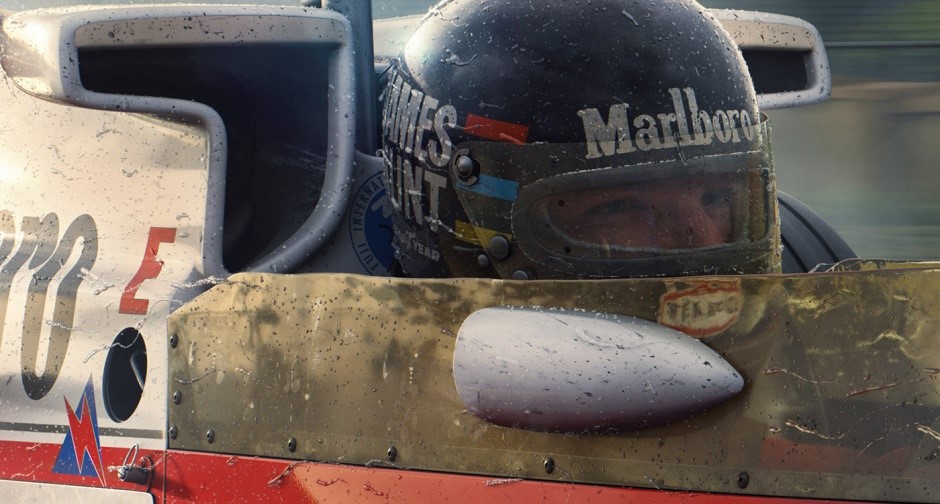
Hunt’s excesses, a 40-a-day cigarette habit and outlandish reputation for partying, sex and booze would be wholly incompatible with modern F1’s ultra-professional, corporate-dominated image.
James Hunt was all the beauty of life and a photo album would not be enough to describe him.
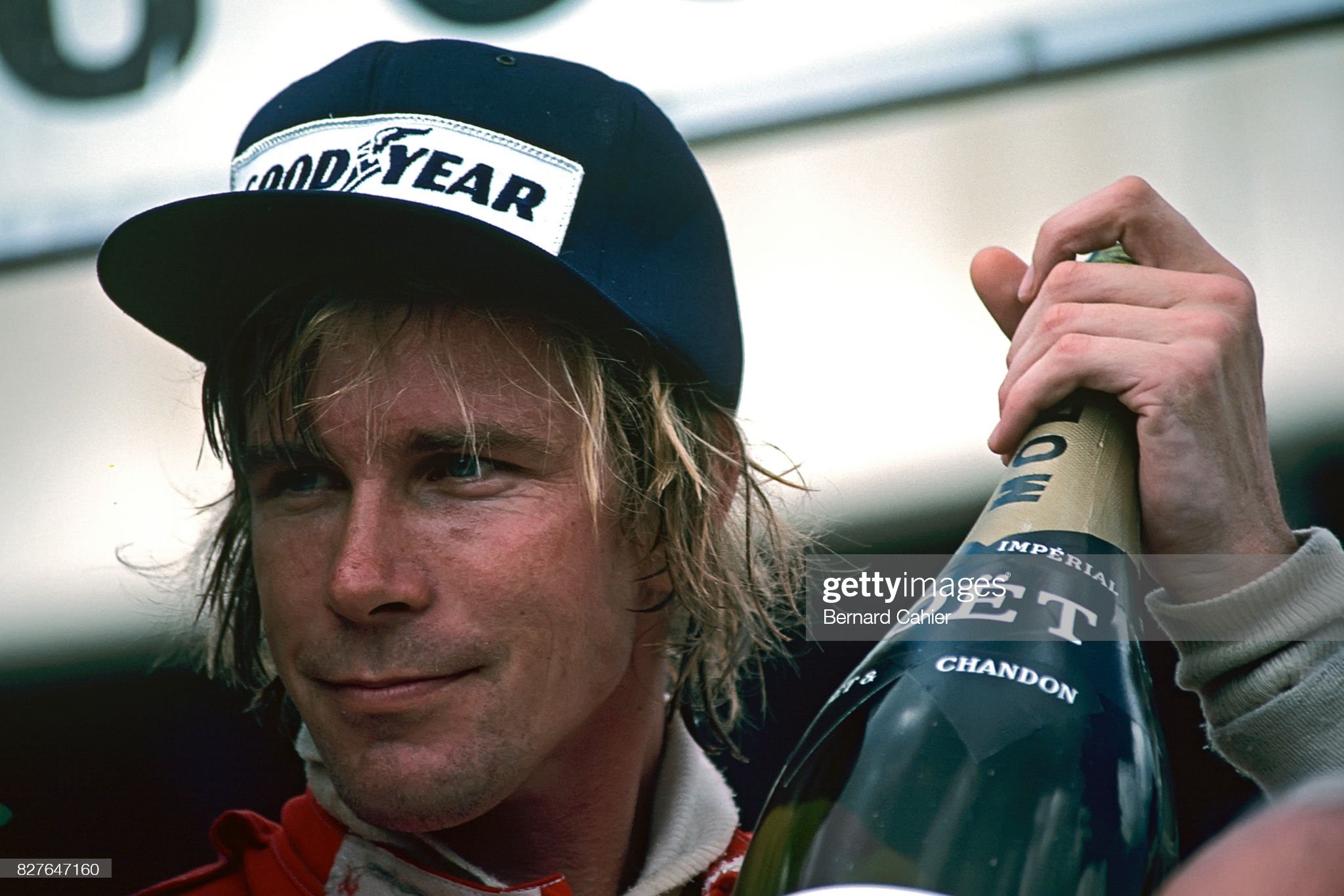
James Hunt, Grand Prix of France, Paul Ricard, 04 July 1976. Photo by Bernard Cahier/Getty Images.
Formula One's last true playboy, he celebrated each victory with a swig of champagne.
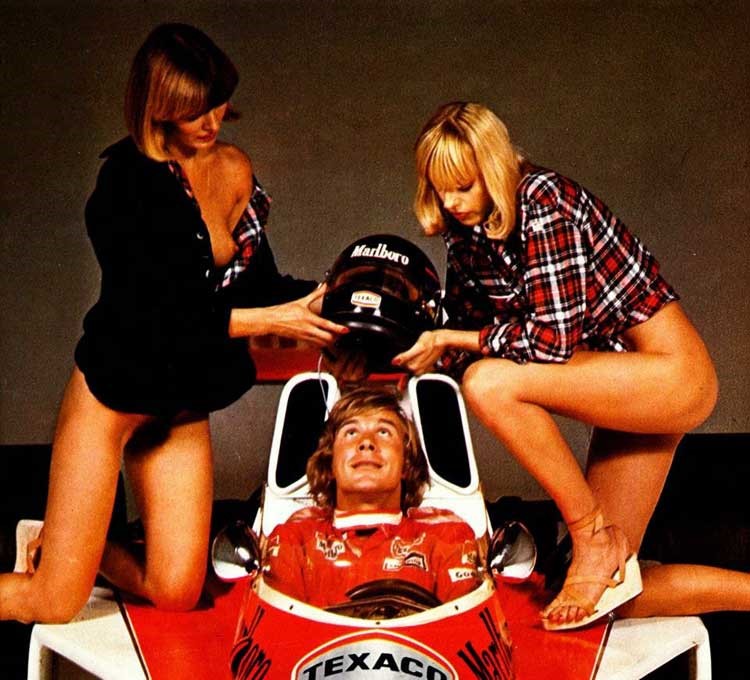
James Hunt and his McLaren M23 with naked girls in 1976.
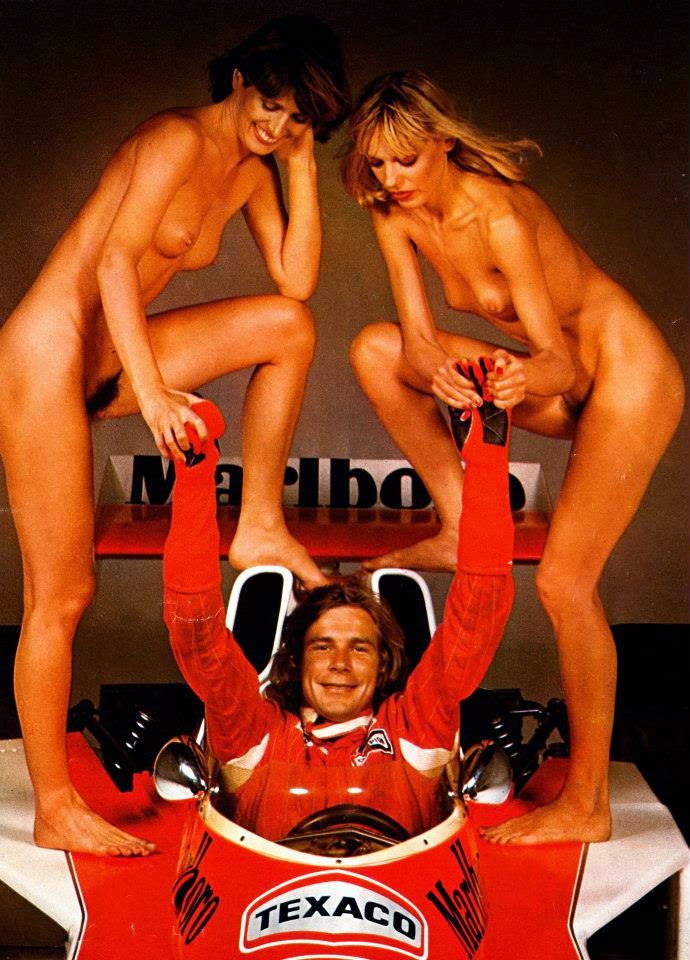
James Hunt and his McLaren M23 with naked girls in 1976.
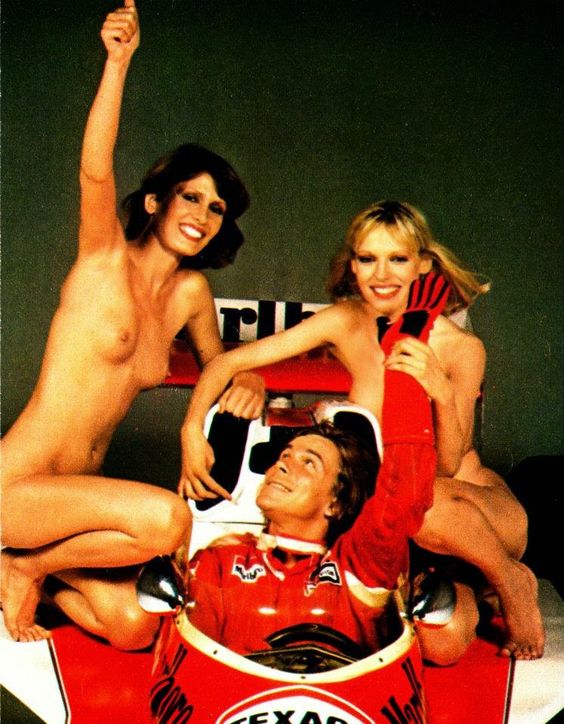
James Hunt and his McLaren M23 with naked girls in 1976.
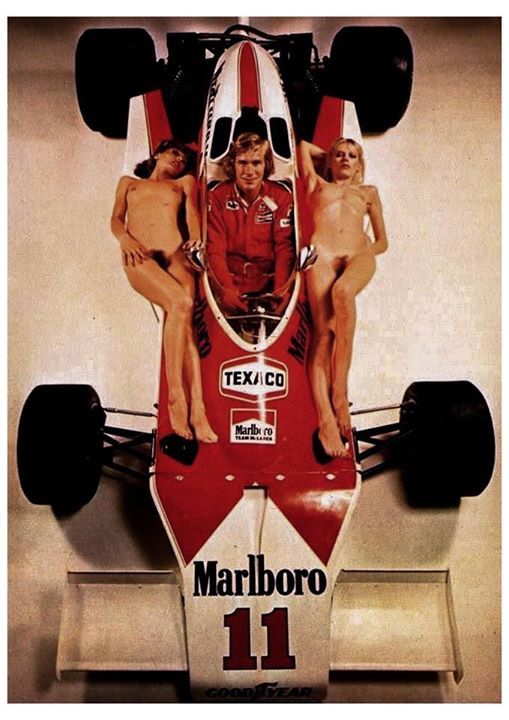
James Hunt and his McLaren M23 with naked girls in 1976.
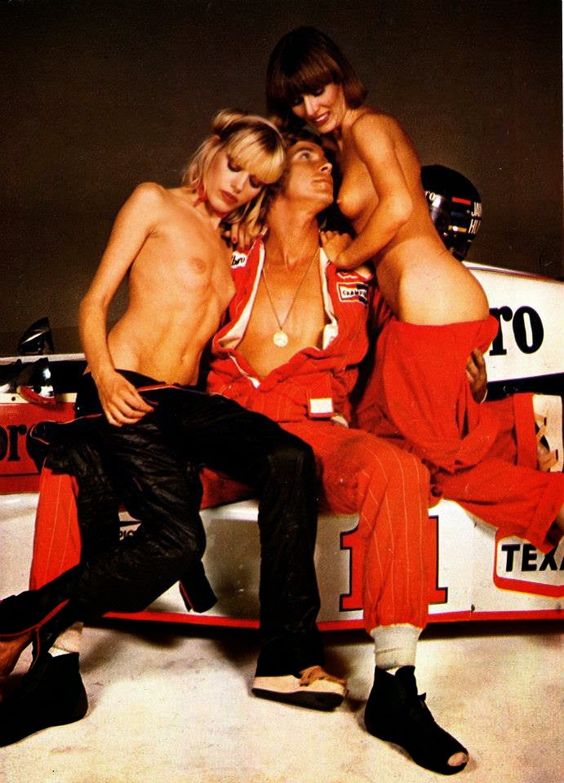
James Hunt and his McLaren M23 with naked girls in 1976.
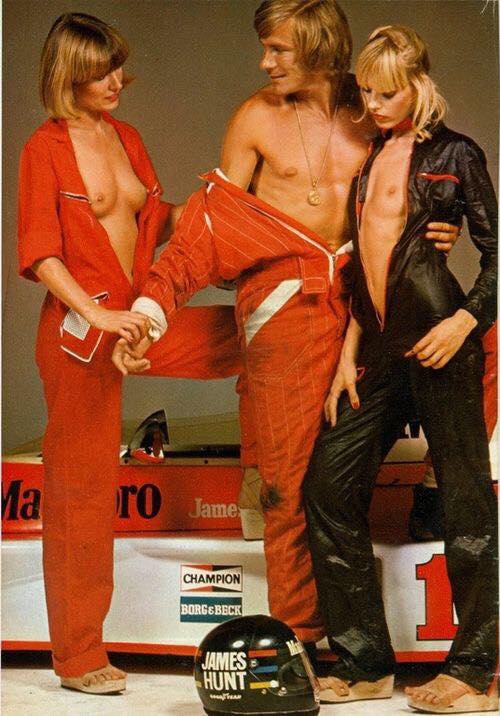
James Hunt and his McLaren M23 with naked girls in 1976.
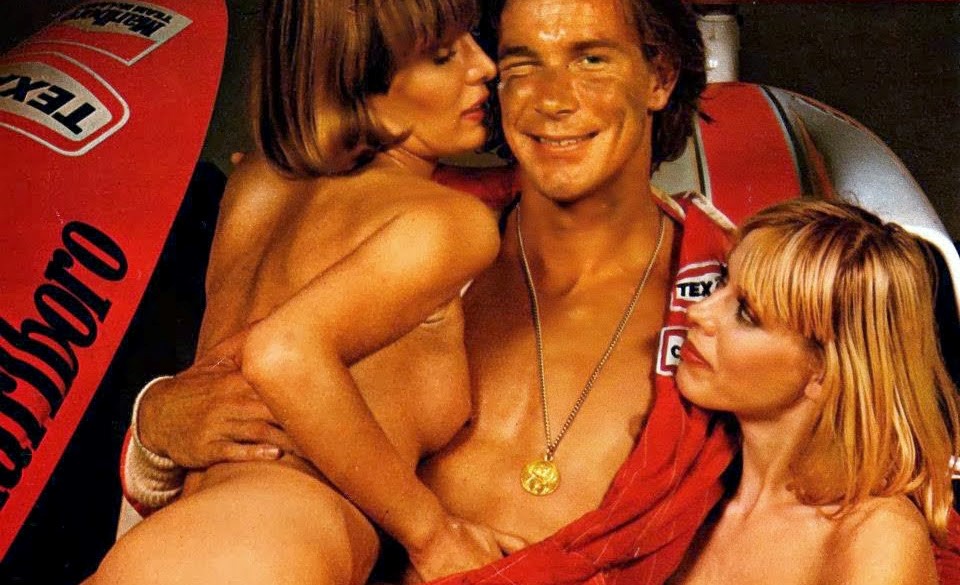
James Hunt, barefoot, t-shirt and jeans, a style icon of Formula 1.
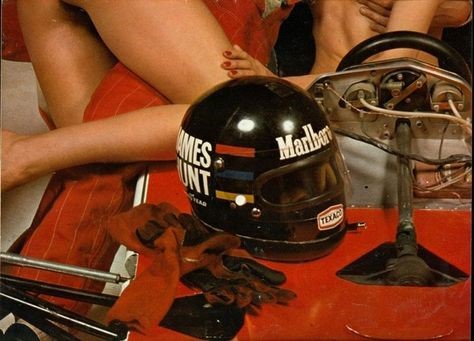
James Hunt and his McLaren M23 with naked girls in 1976.
With his good looks and charme and the fact that it was all fun with him, James was always the center of attraction.
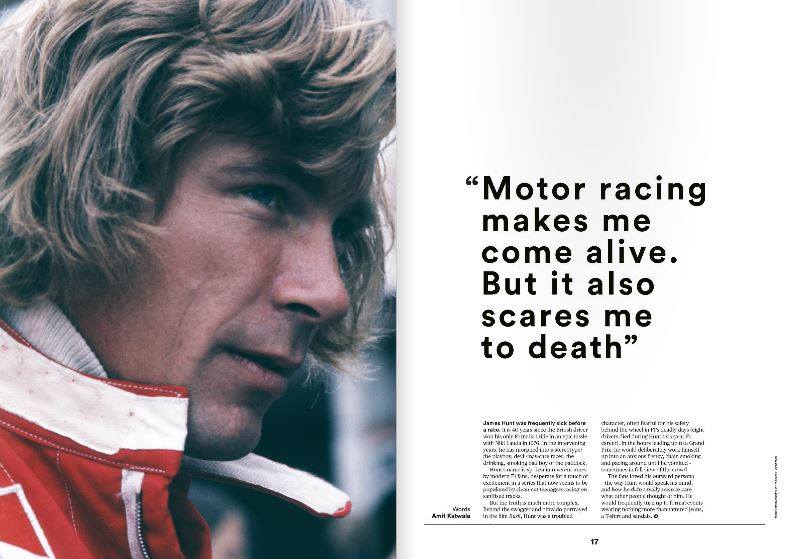
“There's a lie that all drivers tell themselves. Death is something that happens to other people and that's how you find the courage to get in the car in the first place. The closer you are to death the more alive you feel. But, more powerful than fear itself is the will to win.” James Hunt
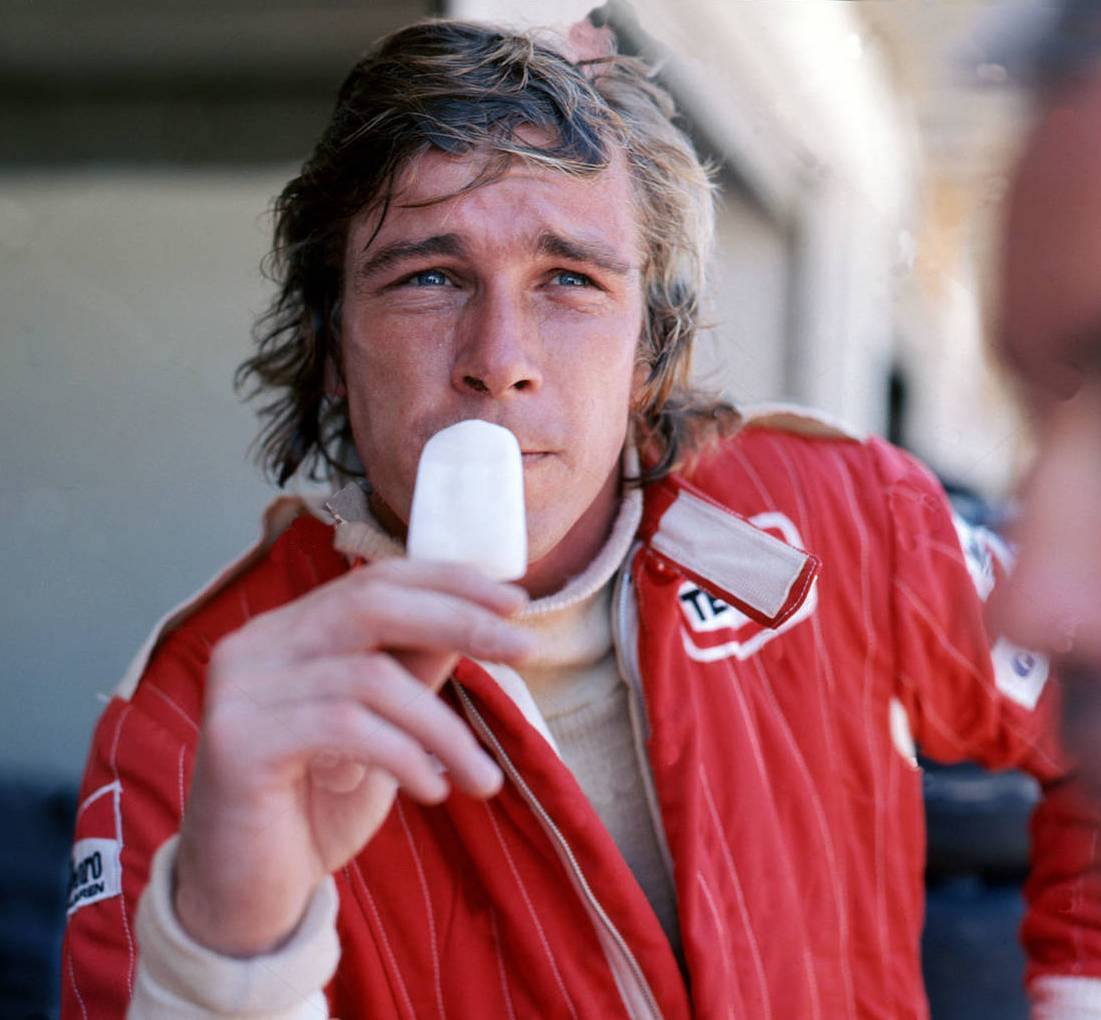
“Don't go to men who are willing to kill themselves driving in circles looking for normality.” James Hunt
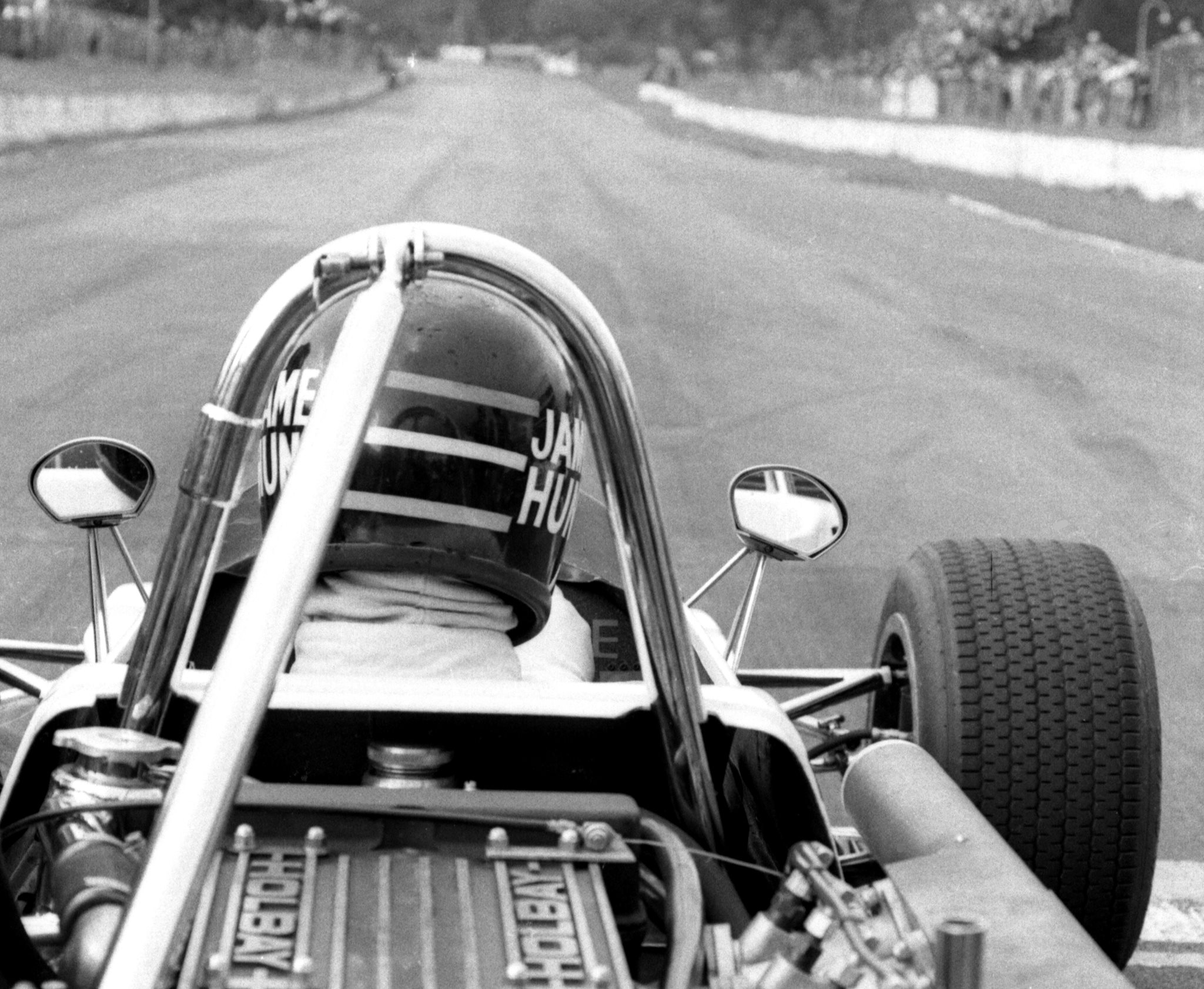
“If I get into a car on a circuit, I drive as fast as I can; that's it!” James Hunt
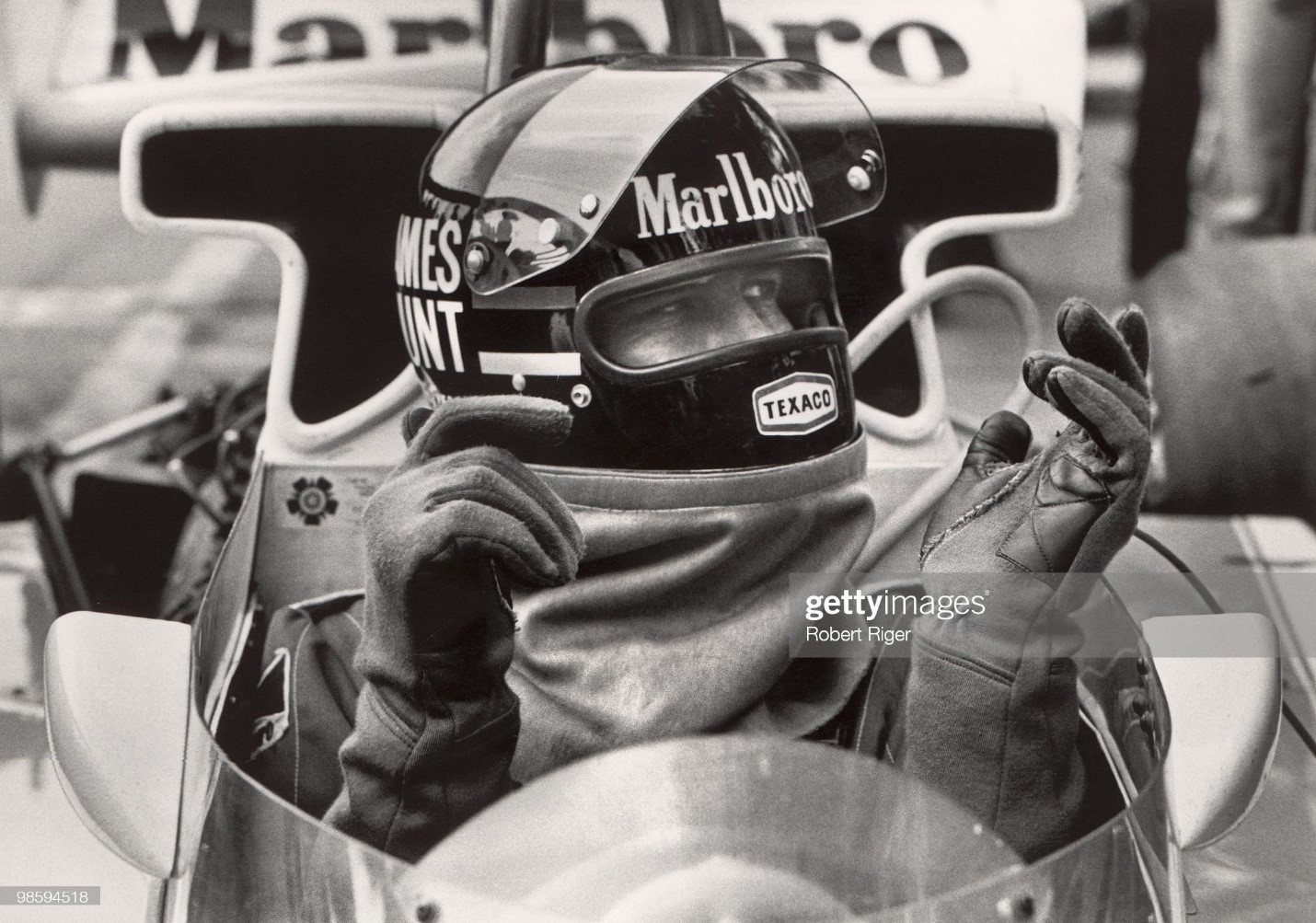
James Hunt looks on in an undated photo, circa 1970s. Photo by Robert Riger/Getty Images.
“Your luck goes up and down like swings and roundabouts.” James Hunt
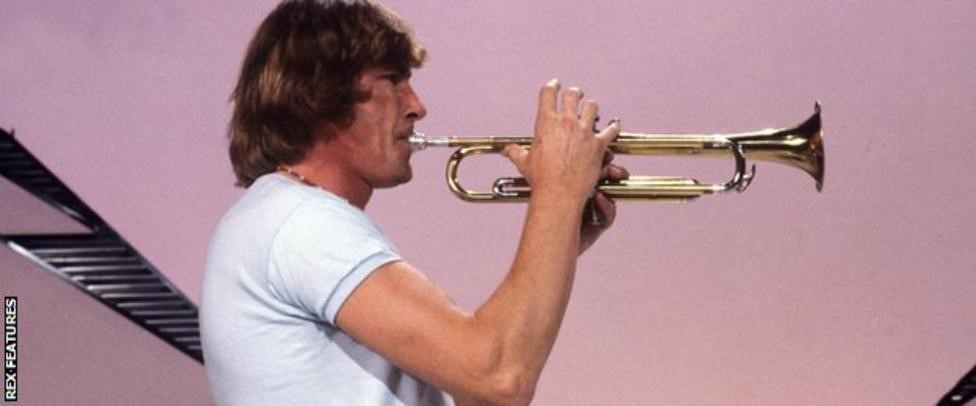
A life Hunt relished, until his death in 1993. Officially, James Hunt died 30 years ago. But the sheer size of his spirit, recalled in a thousand fond stories, means he could never entirely leave us.
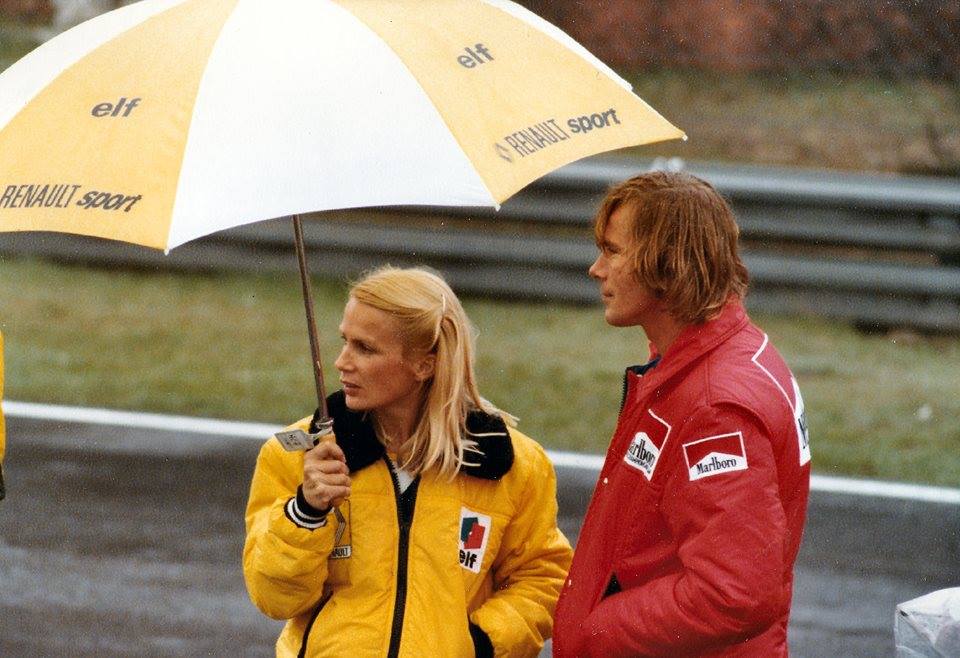
He's arguably best remembered for his playboy lifestyle but he was also an incredibly talented driver and was one of the sport’s best in the 1970s.
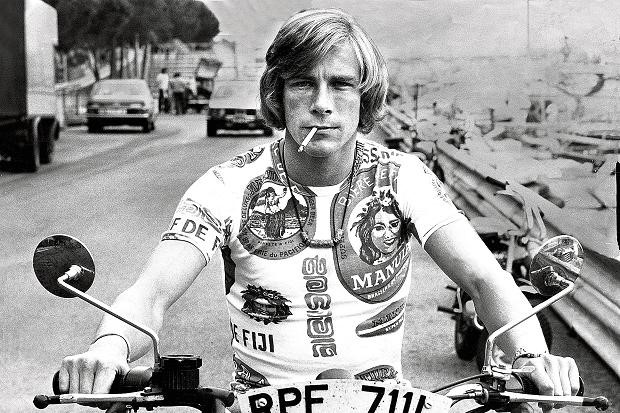
James Hunt looking mean and moody astride a motorcycle and smoking a cigarette. Photo by Chris Barham/Daily Mail/Shutterstock.
The 2013 film Rush made him a household name again, highlighting his rivalry with legendary Austrian racer Niki Lauda. Hunt was born in Surrey, England, on August 29, 1947.
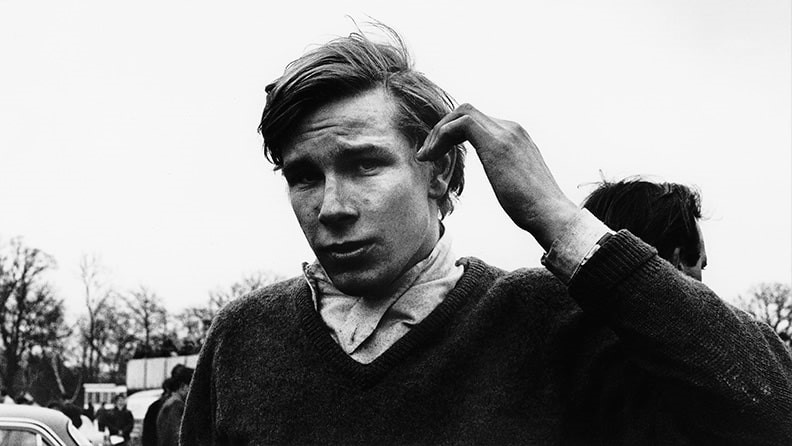
James Simon Wallis Hunt (his parents, who had five other children, were very attached to British naming traditions) would have been 73 years old on 29 August.
He was part of a large family with two sisters and three brothers. His brother, Peter Hunt, also became a racing car driver but spent the second half of his career trying to get the Lotus name back into F1.
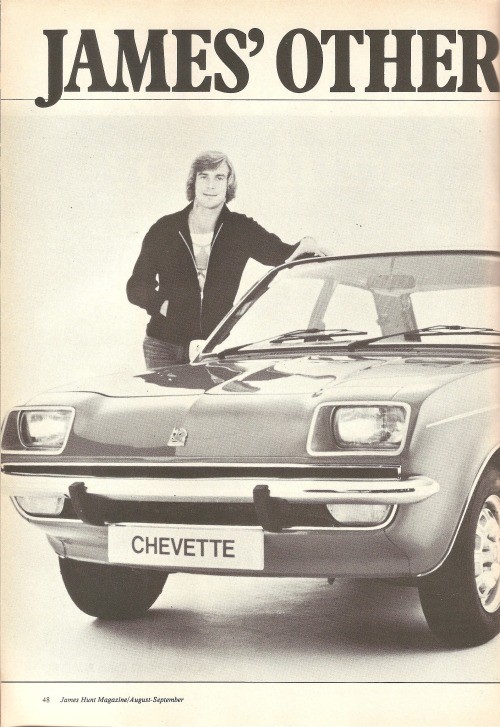
James Hunt and a Chevrolet Chevette.
Hunt attended the prestigious Wellington College for school before embarking on his racing career.
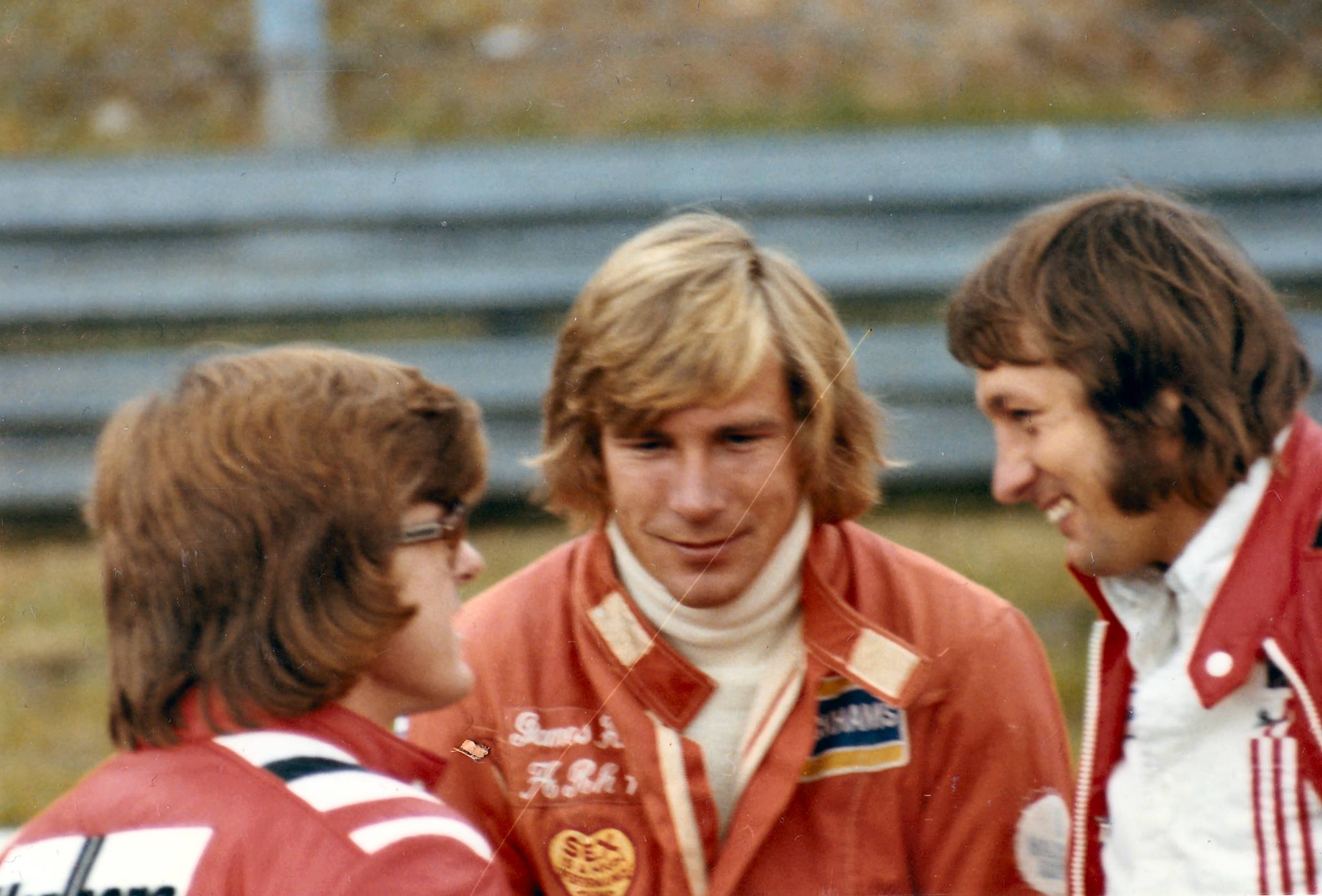
Hunt was reportedly in financial trouble at the time of his death, largely due to some bad investments. He was caught up in Lloyds of London’s financial losses in the late 1980s and reportedly lost £180,000.
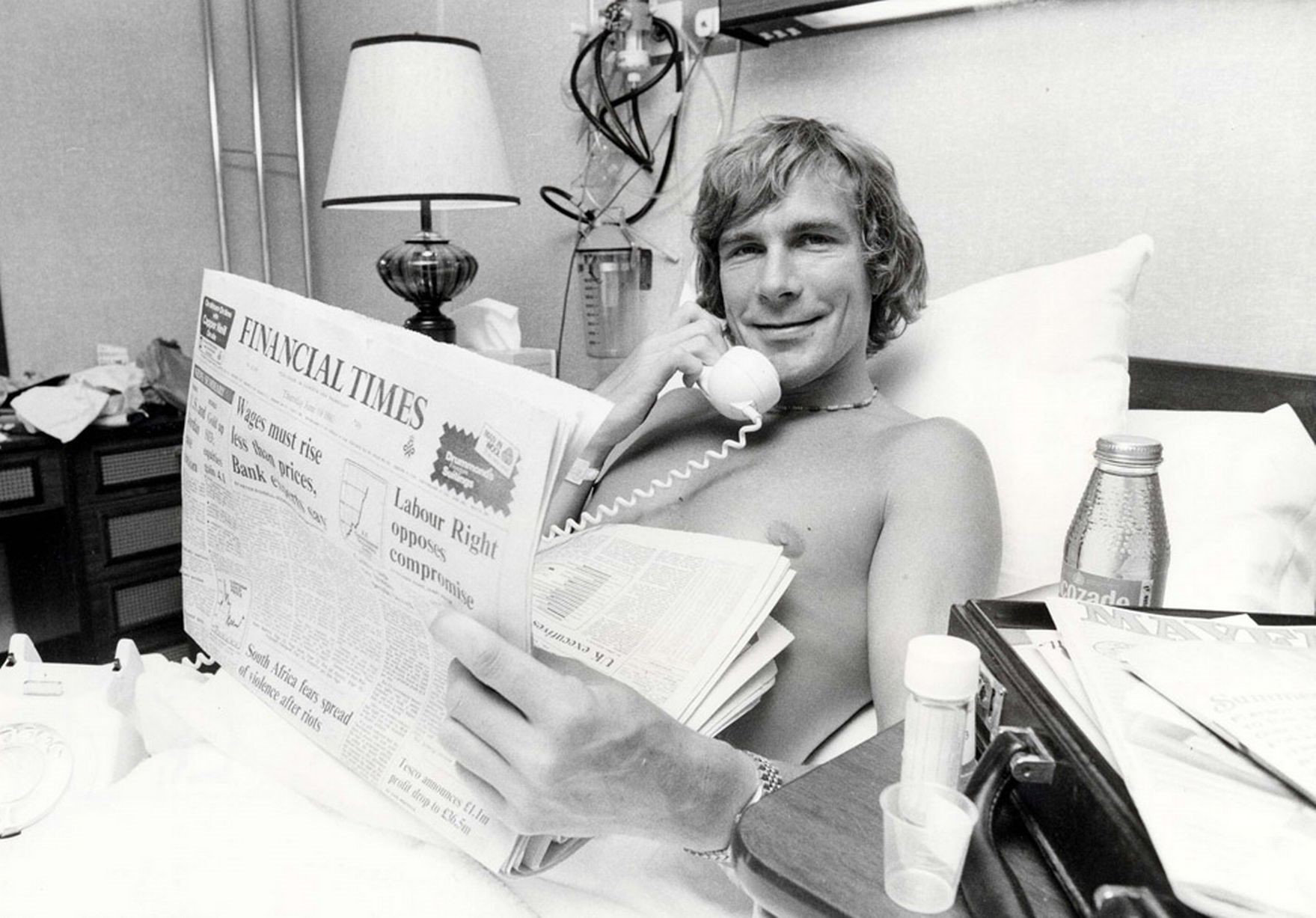
James Hunt lying in hospital in 1980 but still keeping up with all the latest goings on. Photo by Rex.
And, despite his high-profile role on the BBC, it’s believed he was only paid £200 per race.
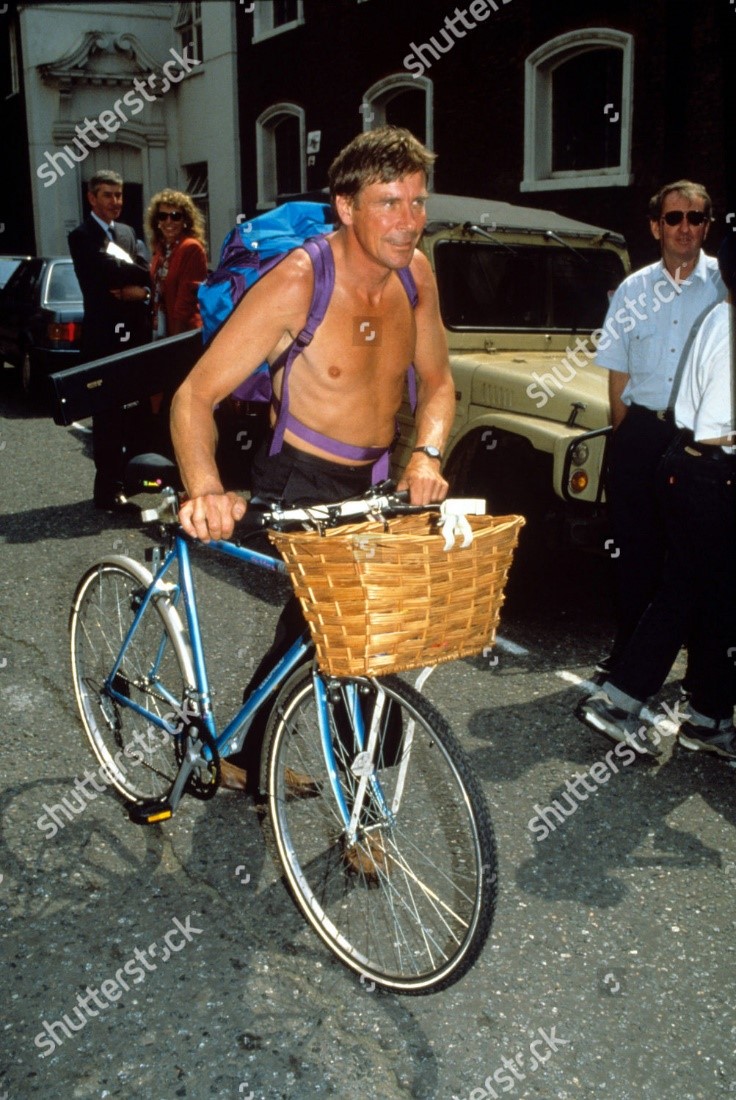
Launch of Tommys Petit Prix Campaign, Britain, 1992. A bare chested James Hunt with bicycle. Photo by Peter Brooker/Shutterstock.
By the end of his life he was most often seen driving an old van or riding his bike around London. Amid his financial troubles Hunt tested a Williams F1 car in 1989 and was considering a comeback to racing, according to those close to him.
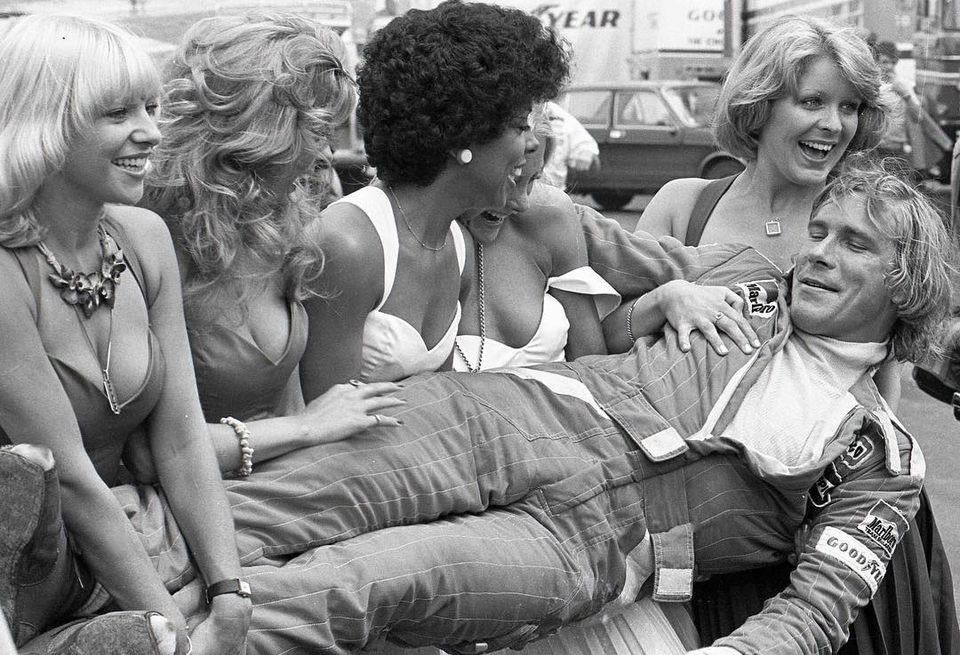
James Hunt and the Grid Girls.
Hunt was well-known for having plenty of female company and had two marriages and a third engagement.
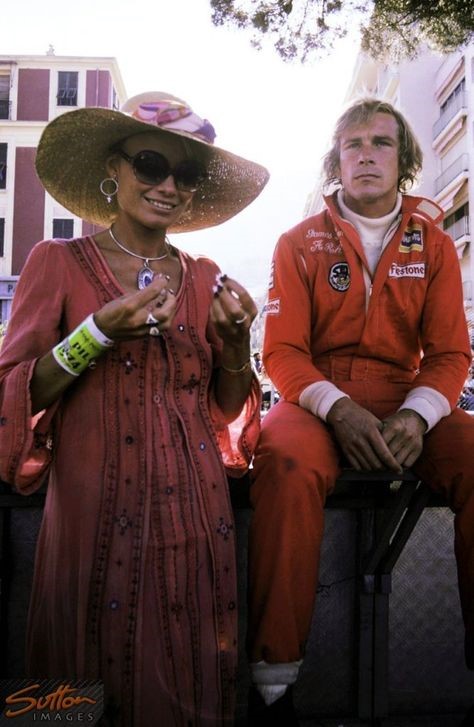
It comes as little surprise that fast cars and good looking women go hand in hand. Formula One womaniser James Hunt slept with 33 BA stewardesses before race that made him world champ. In the photo James Hunt and Suzy Miller.
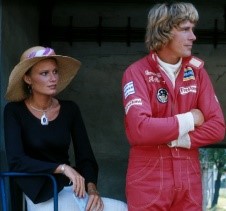
James Hunt and Suzy Miller.
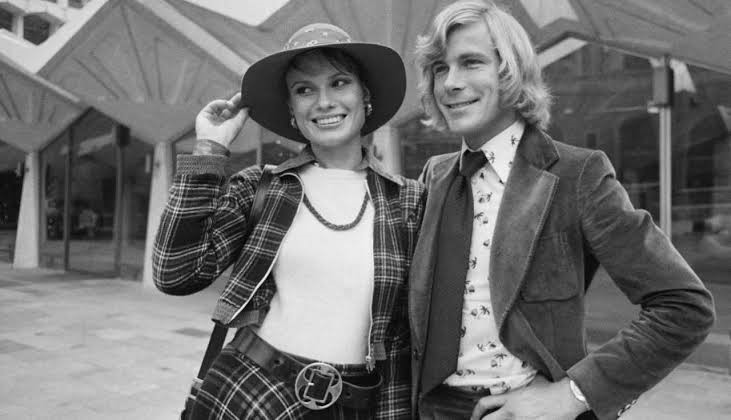
Suzy Miller and James Hunt.
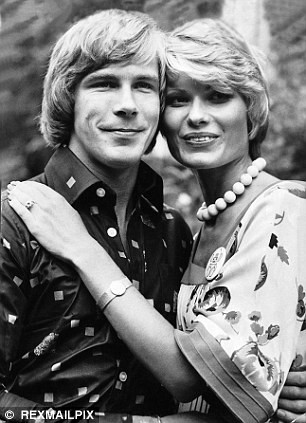
Hunt was married to Suzy Miller from 1974 to 1976.
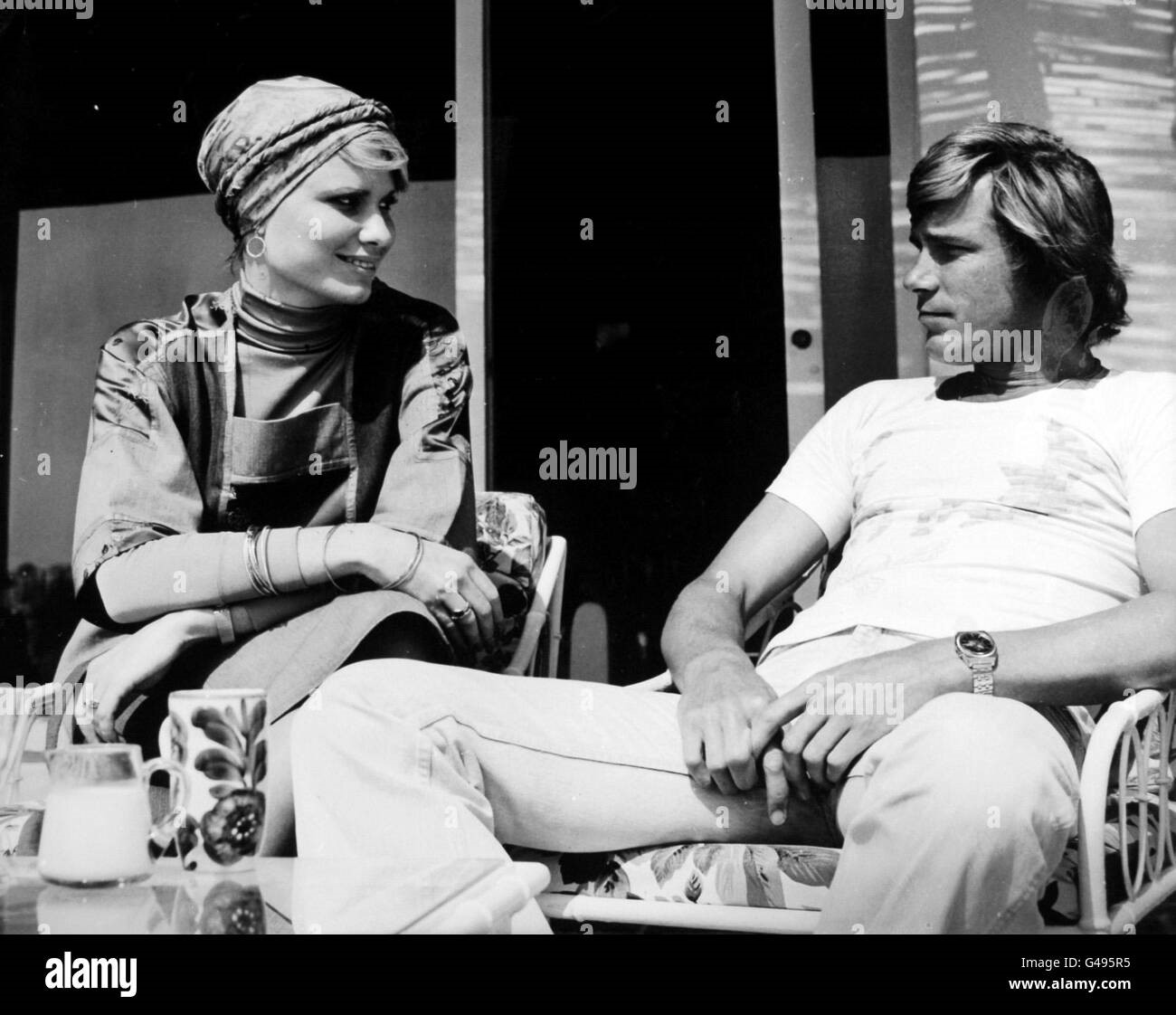
James Hunt and Suzy at Marbella, Spain.
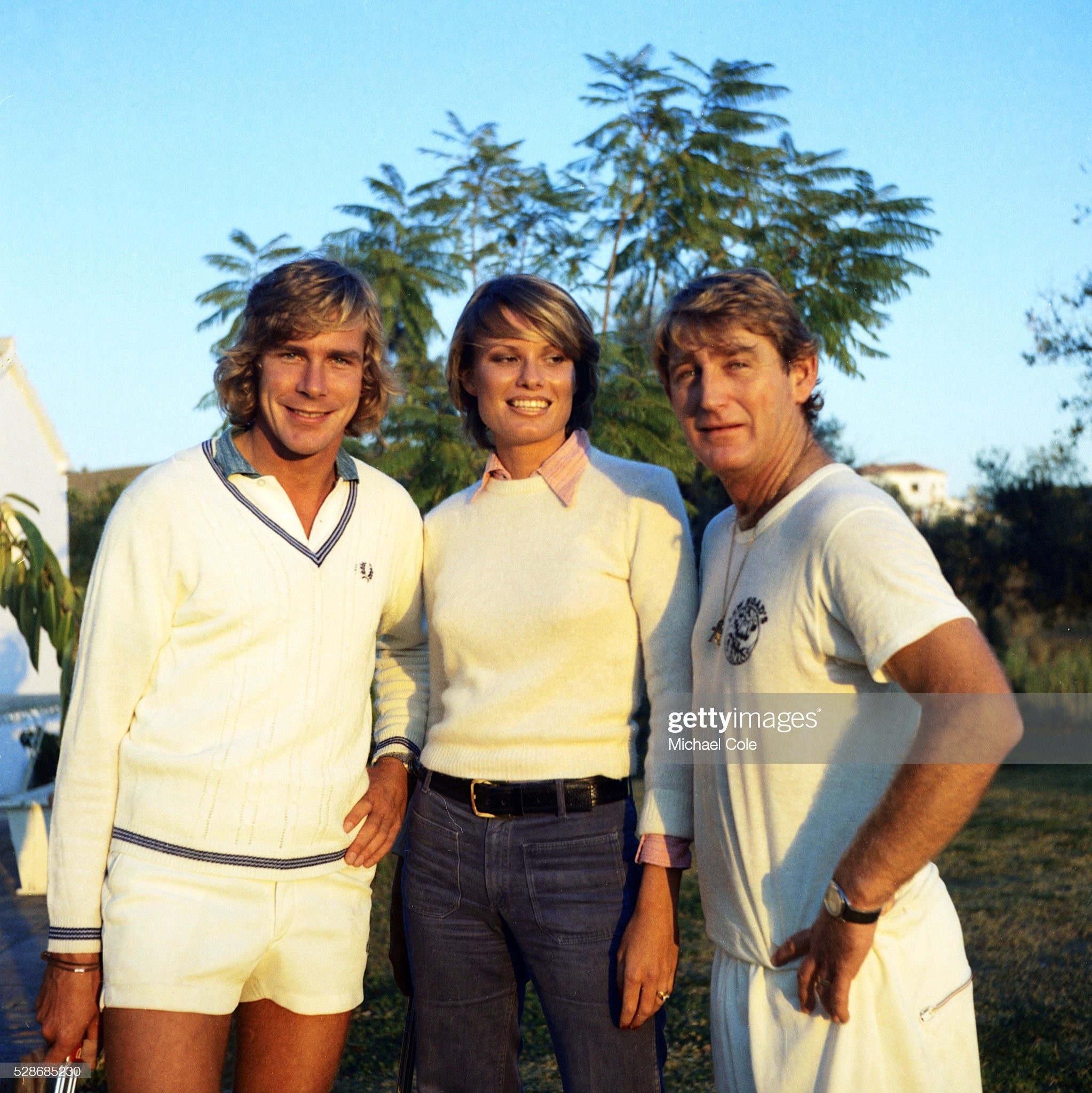
James Hunt and wife Suzy with Lew Hoad at Lew Hoad's 'Campo De Tenis' in Mijas, Spain, December 1974. Photo by Michael Cole/Corbis via Getty Images.
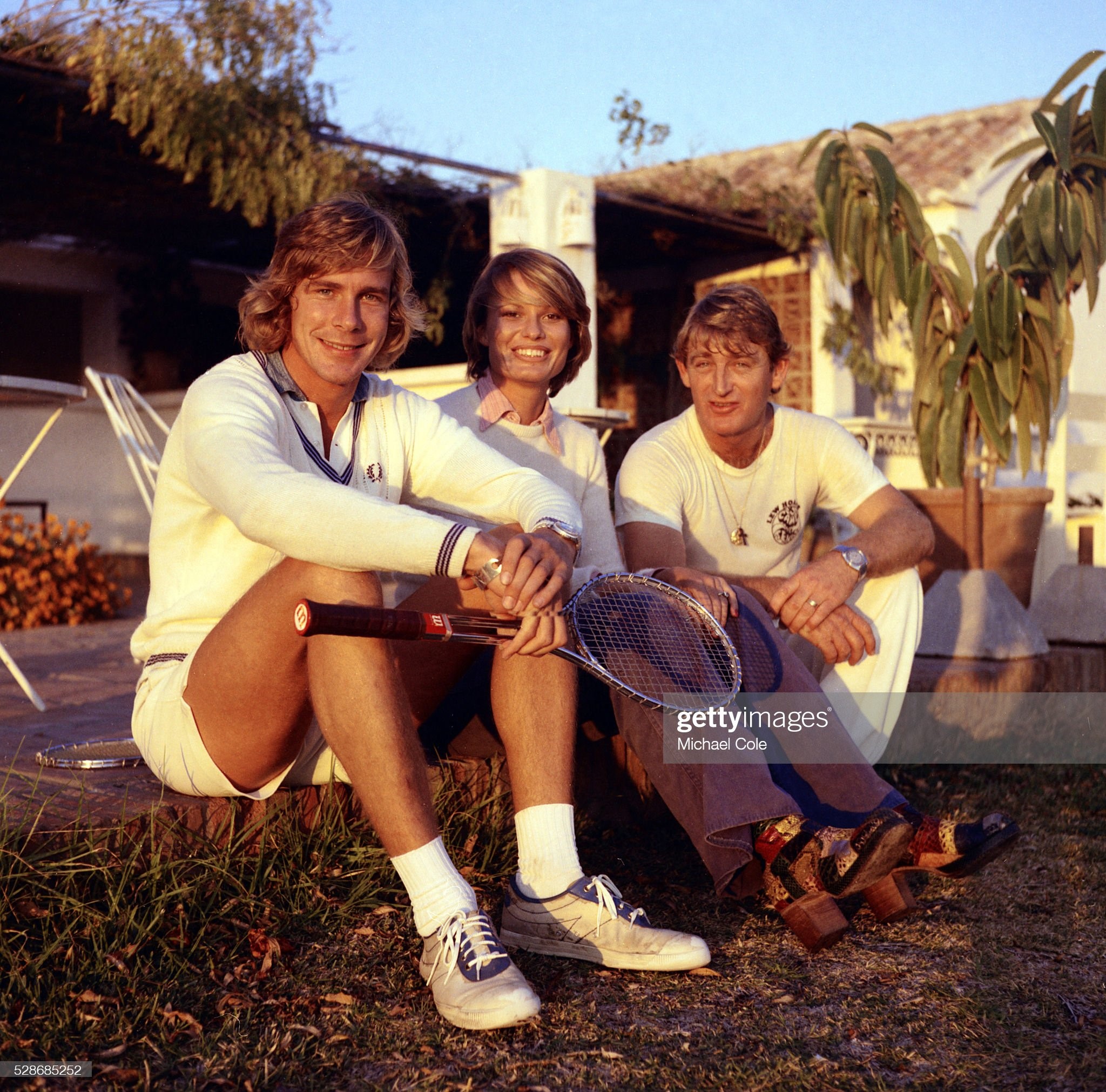
James Hunt and wife Suzy with Lew Hoad at Lew Hoad's 'Campo De Tenis' in Mijas, Spain, December 1974. Photo by Michael Cole/Corbis via Getty Images.
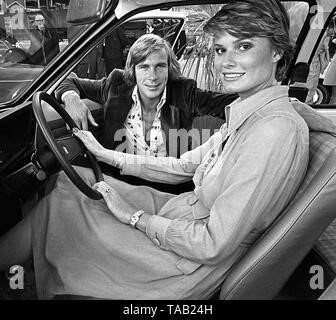
Portsmouth, England, 1975. James Hunt and his wife Suzy visiting the United Services garage to review the UK’s first electric car. Photo by Peter Eastland/Ajax.
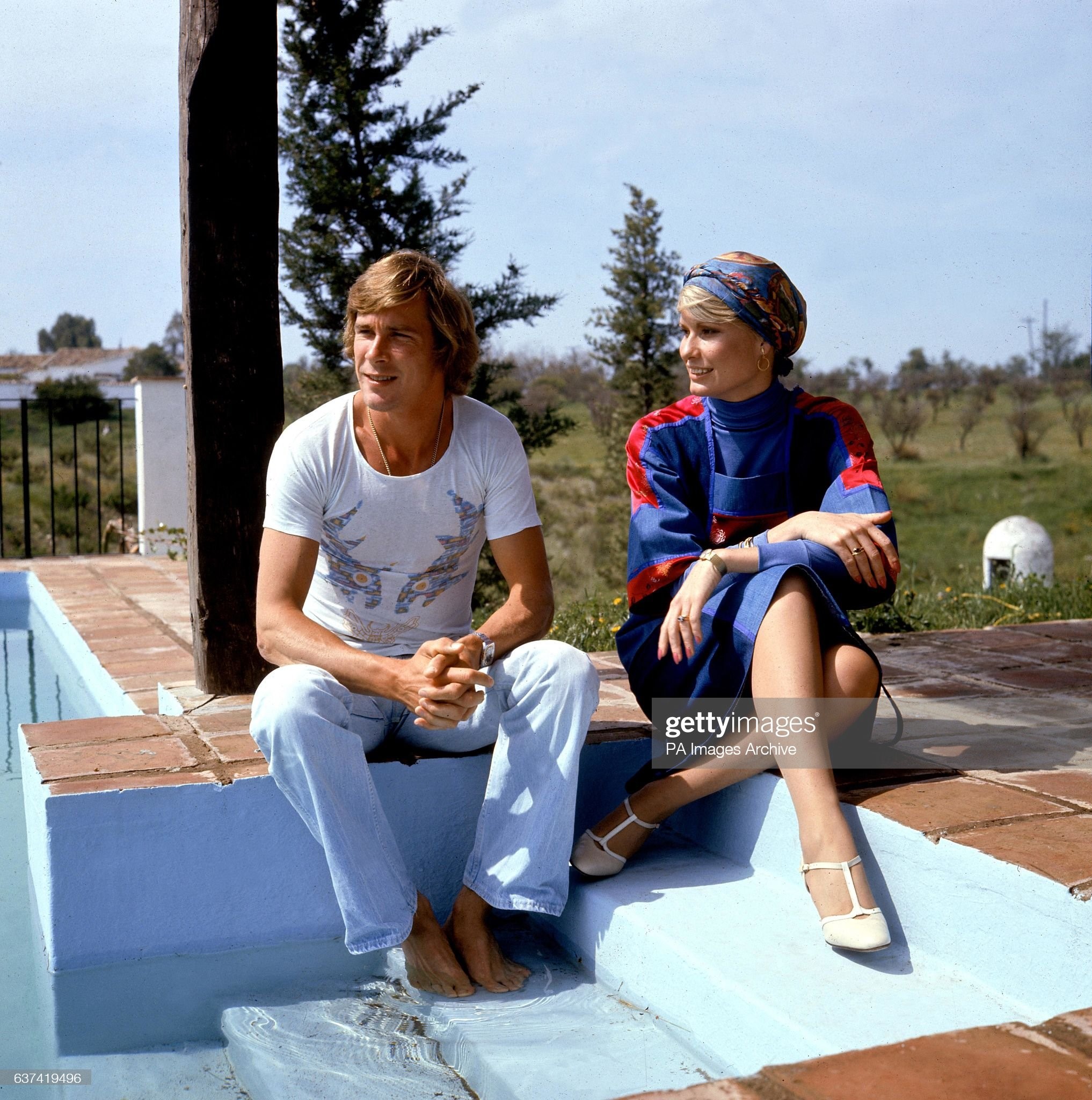
James Hunt with his wife Suzy at their new home near Malaga in Spain on 01 April 1976. Photo by S&G/PA Images via Getty Images.
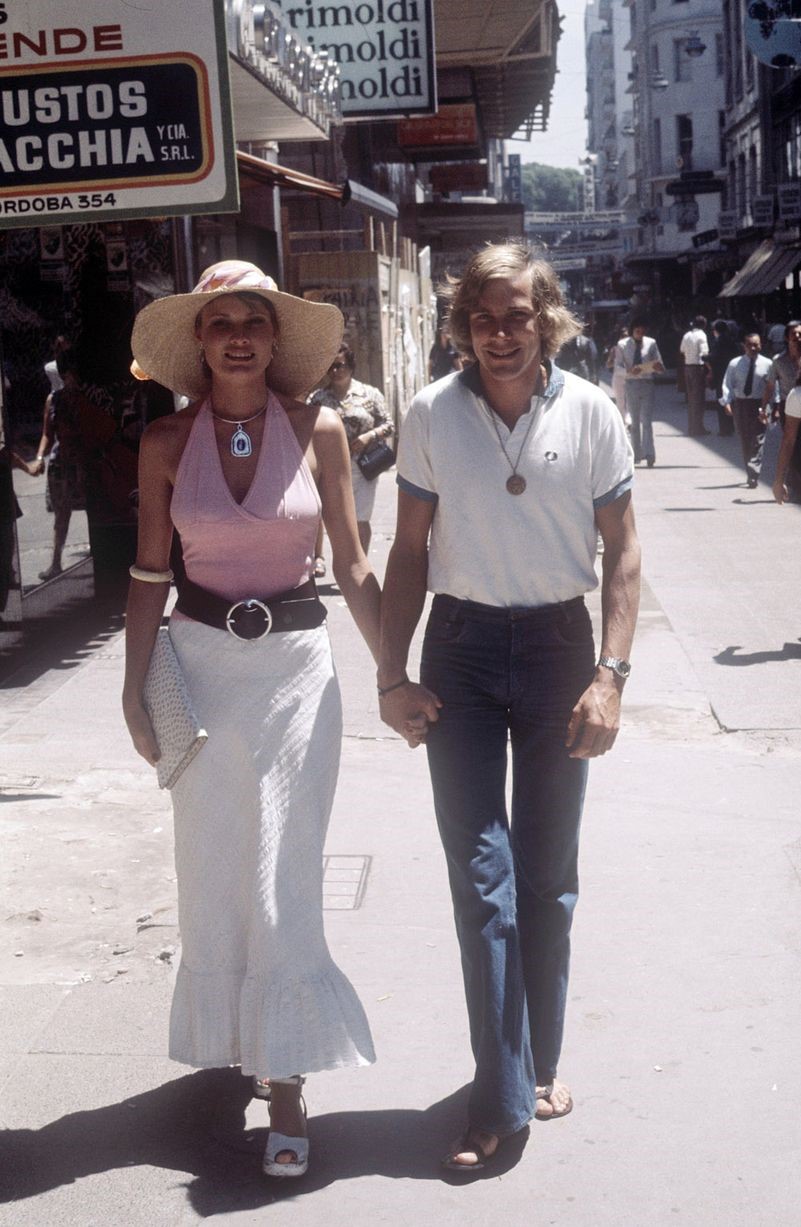
James going for a walk with wife Suzi.
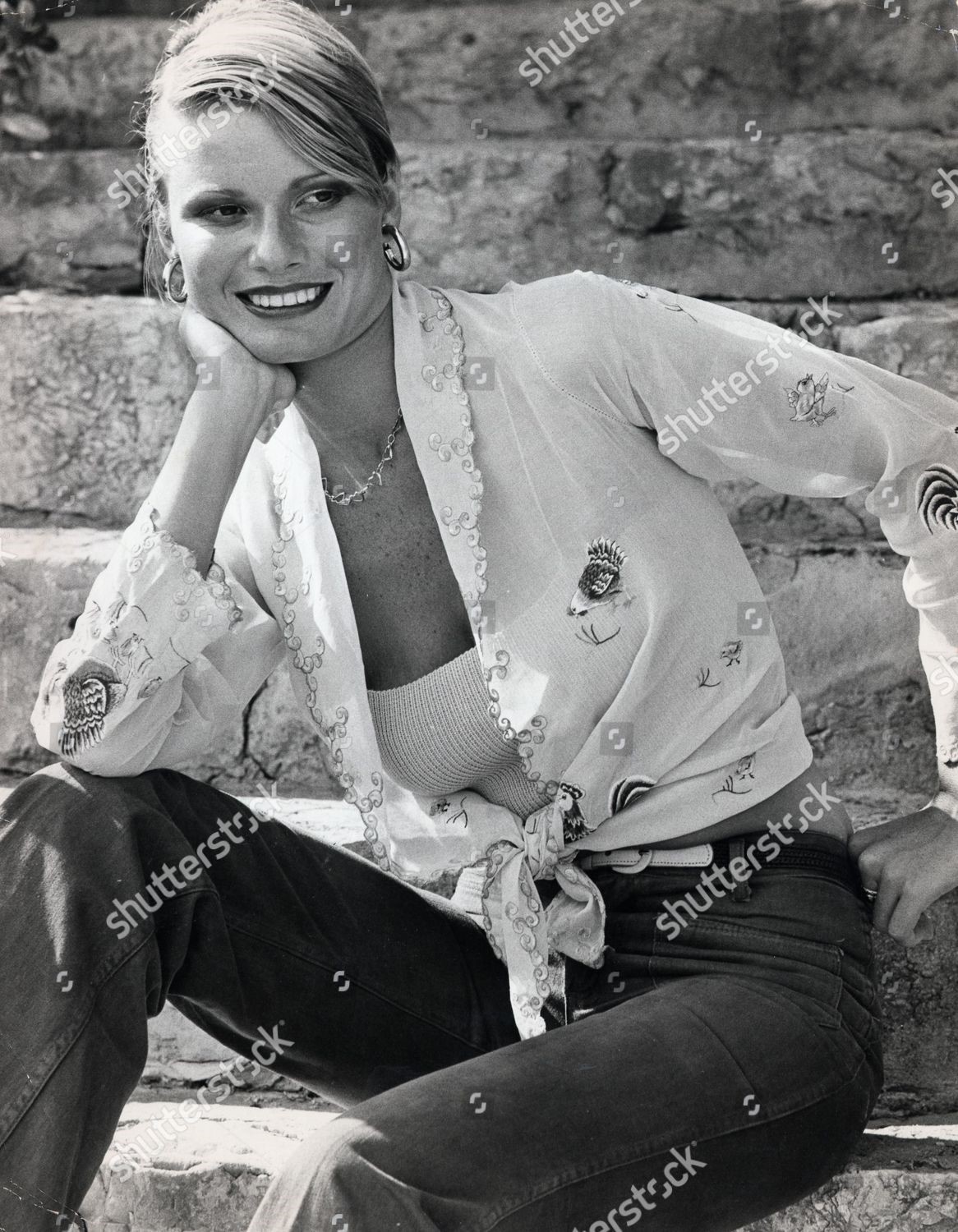
Suzie Miller (Sue Louise Miller), model, married to James Hunt and Richard Burton.
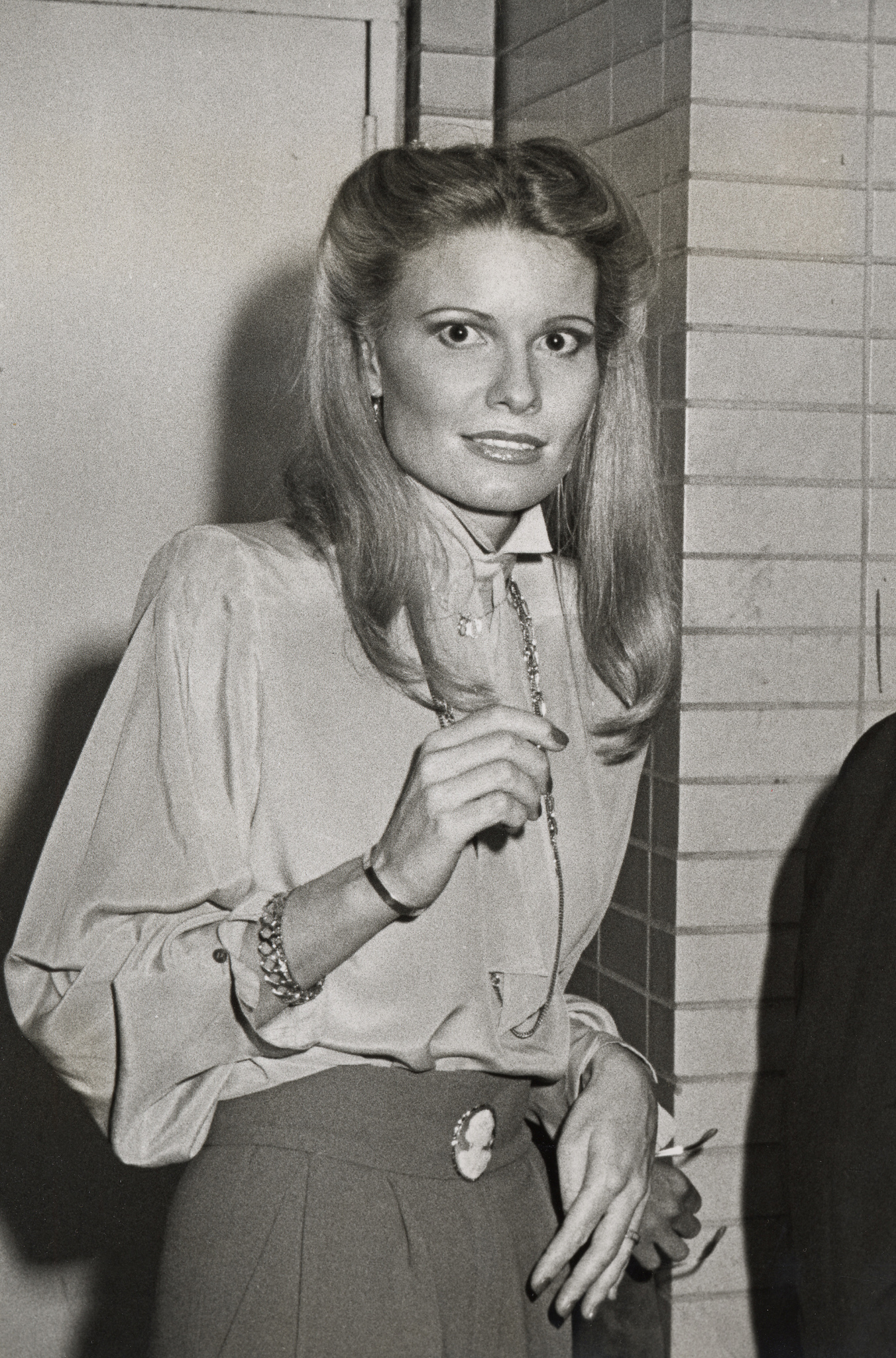
Susan Hunt during Susan Hunt Sighting at Camelots NYS Theatre in New York City, United States, on 23 August 1980. Photo by Ron Galella via Getty Images.
His first wife was Suzy Miller, a British model and actress, who Hunt met in 1974 and proposed to only weeks later.
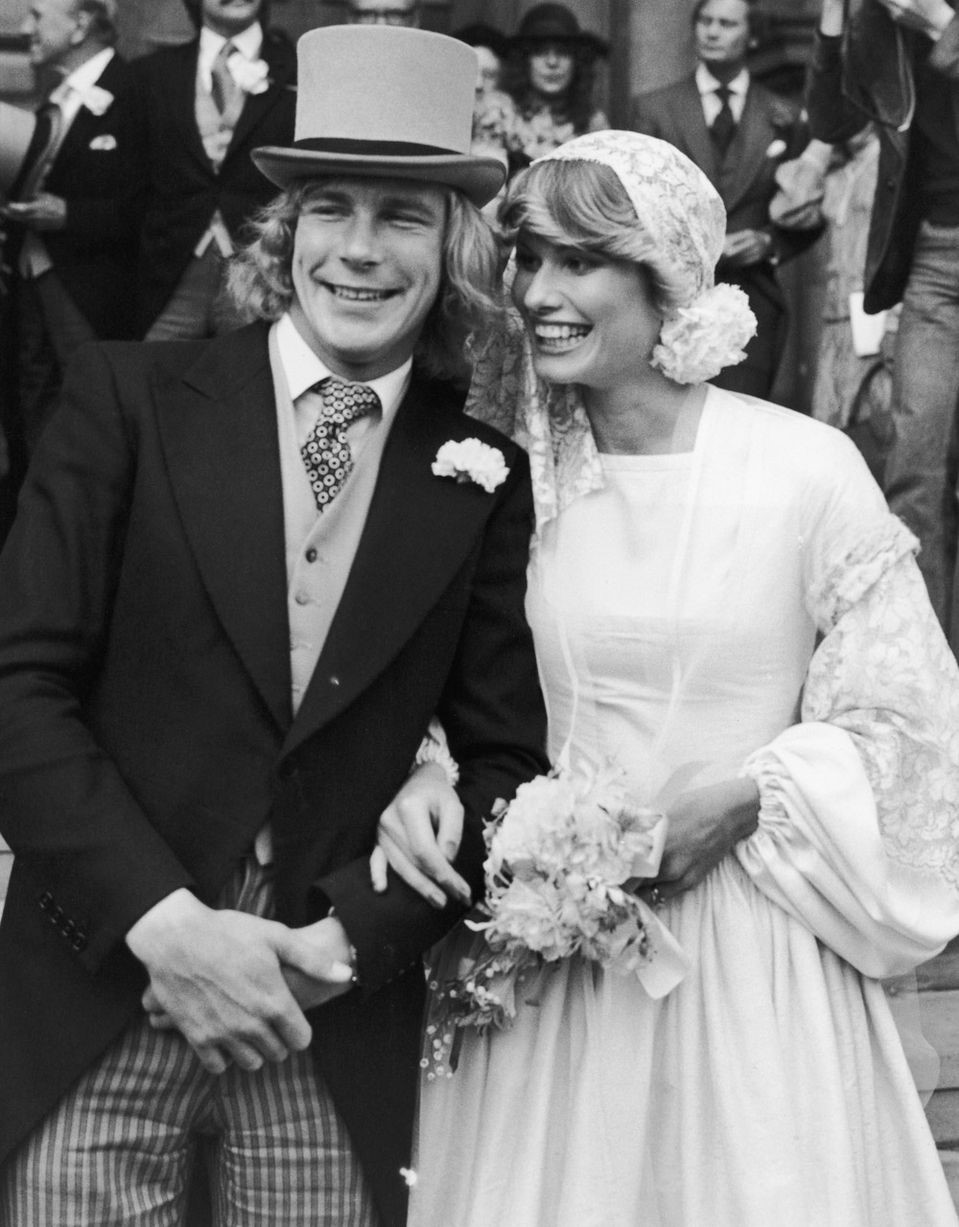
James and Susan on their wedding day at Brompton Oratory, London, in 1974. Photo by Getty Images.
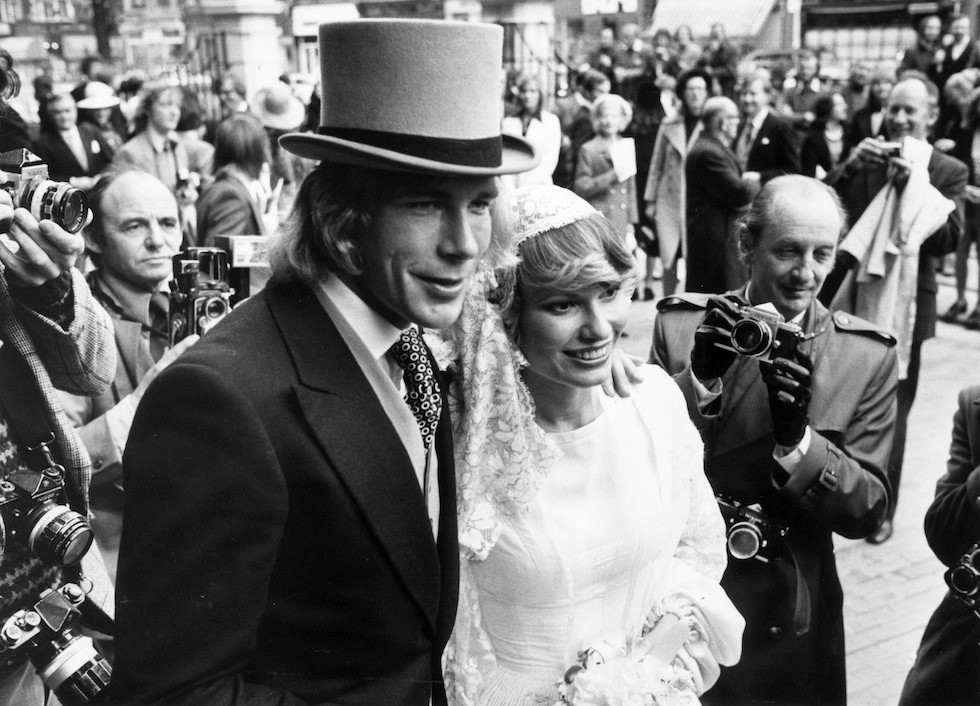
19th October 1974: James Hunt and his bride Suzy Miller on their wedding day outside Brompton Oratory, London. Photo by Derek Hudson/Evening Standard/Getty Images.
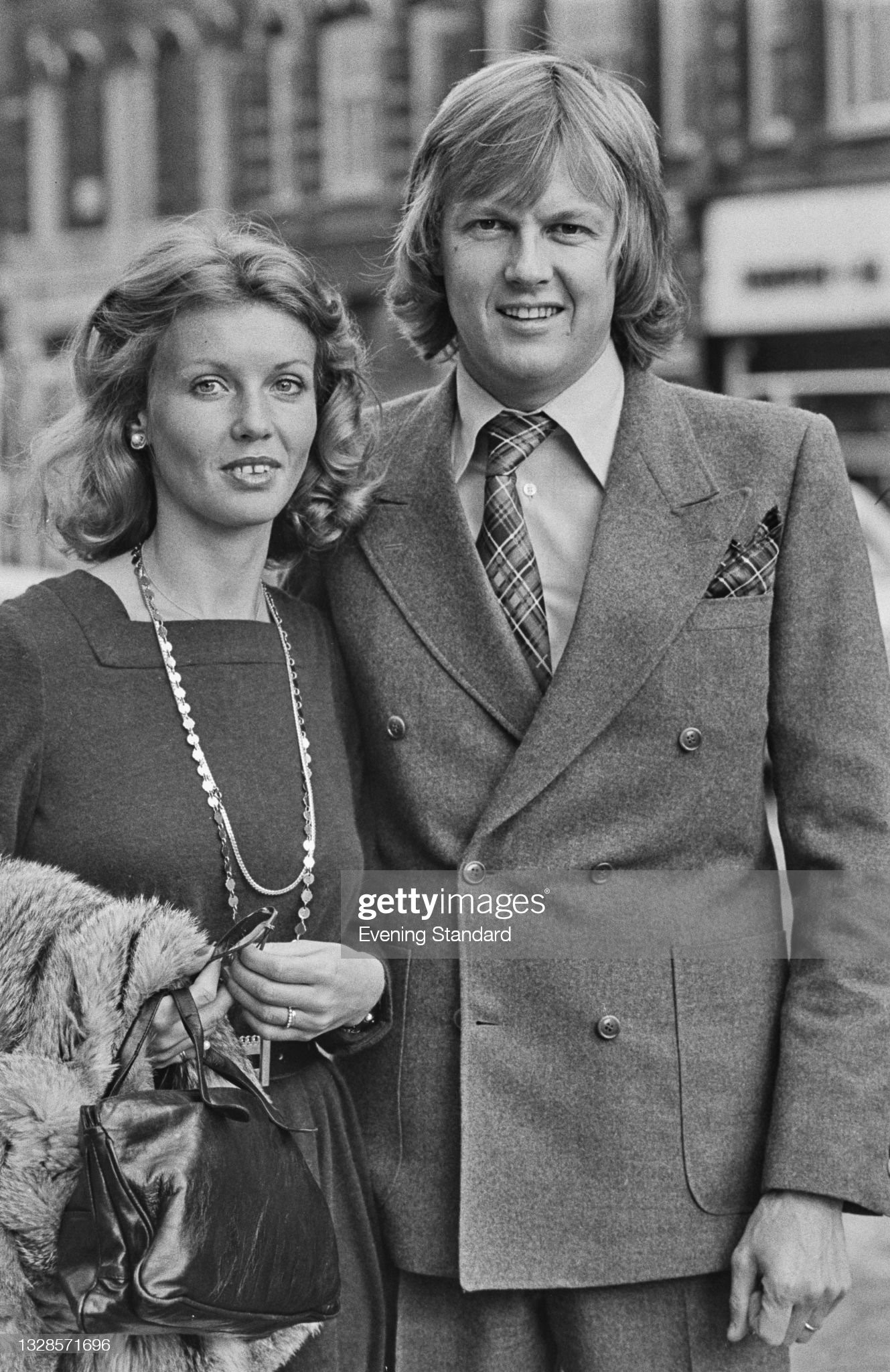
Swedish racing driver Ronnie Peterson and his girlfriend Barbro attend the wedding of British racing driver James Hunt and model Suzy Miller at Brompton Oratory in London, UK, 18th October 1974. Photo by Evening Standard/Hulton Archive/Getty Images.
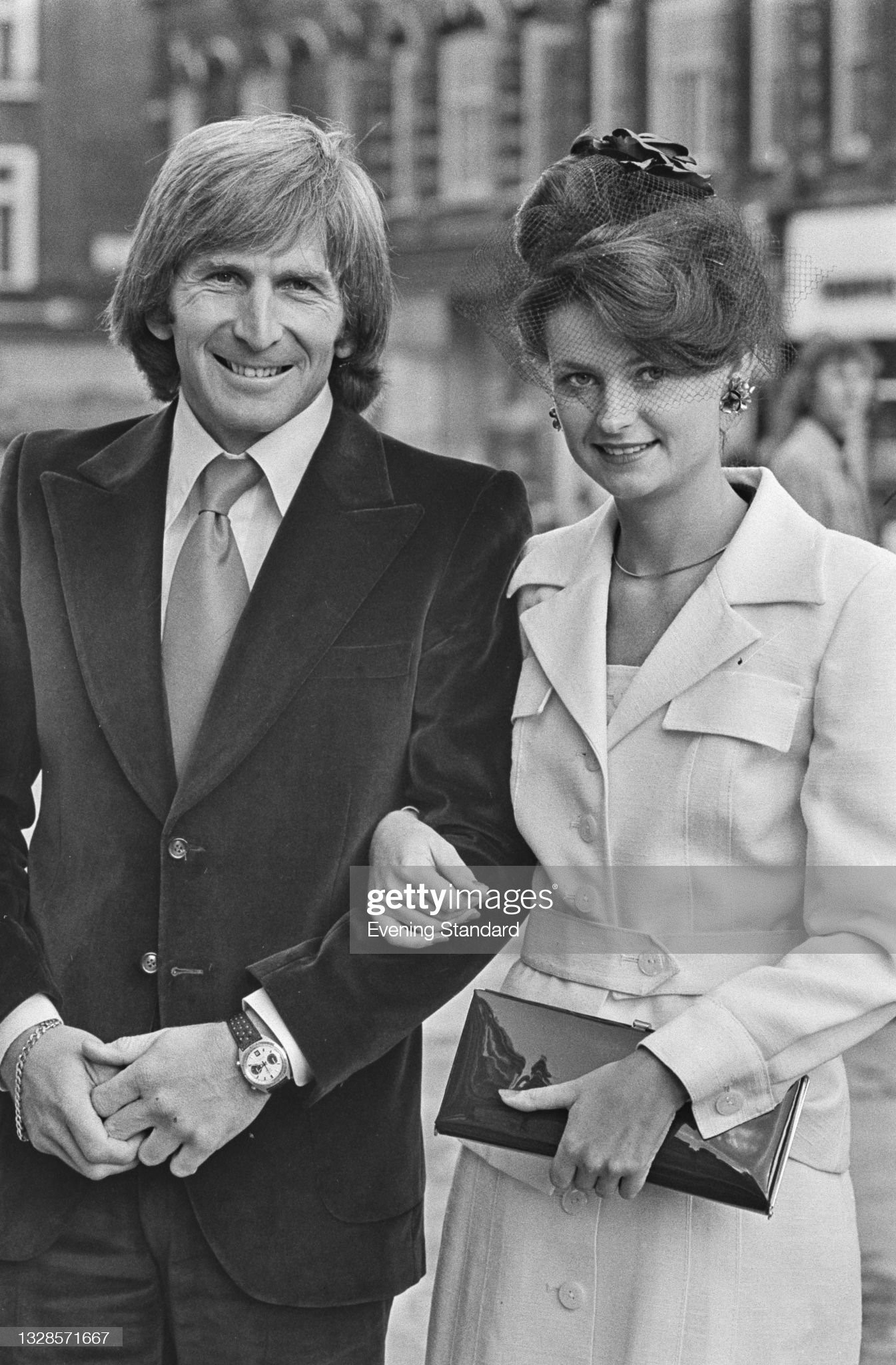
British racing driver Derek Bell and his wife Pam attend the wedding of British racing driver James Hunt and model Suzy Miller at Brompton Oratory in London, UK, 18th October 1974. Photo by Evening Standard/Hulton Archive/Getty Images.
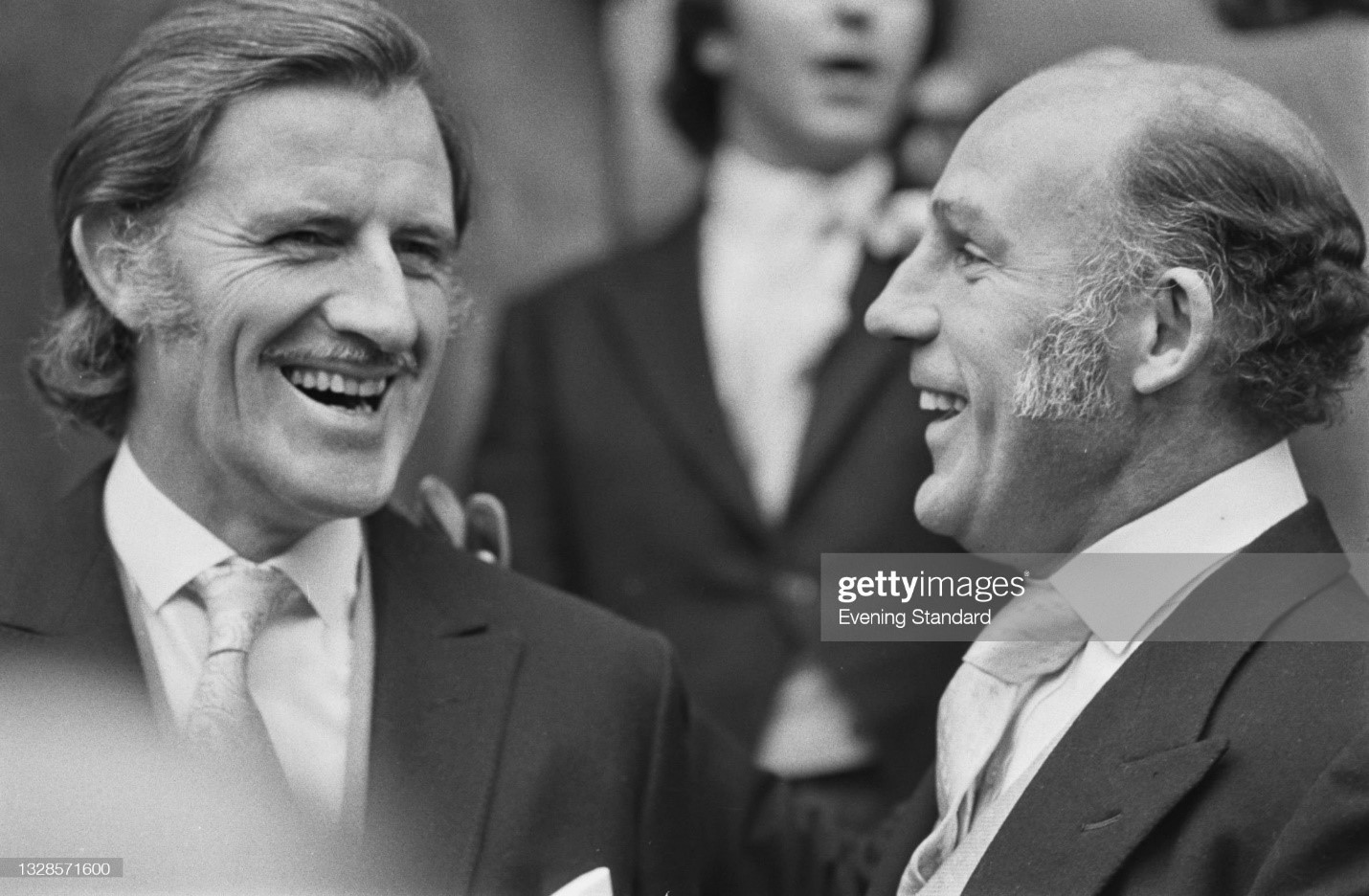
British F1 legends Graham Hill (left) and Stirling Moss attend the wedding of another British driver James Hunt. Hunt wed to model Suzy Miller at Brompton Oratory, London. Photo by PA Images via Getty Images.
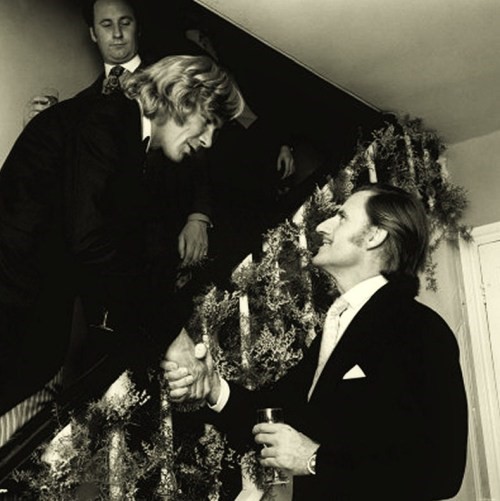
This is from James’s wedding reception from when he married Suzy.
They were married by the end of 1974 but Miller filed for divorce in 1976 to marry American actor Richard Burton.
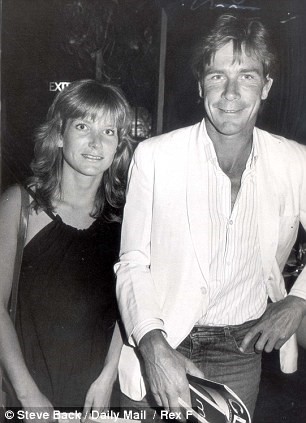
Hunt was married to Sarah Lomax from 1983 to 1989.
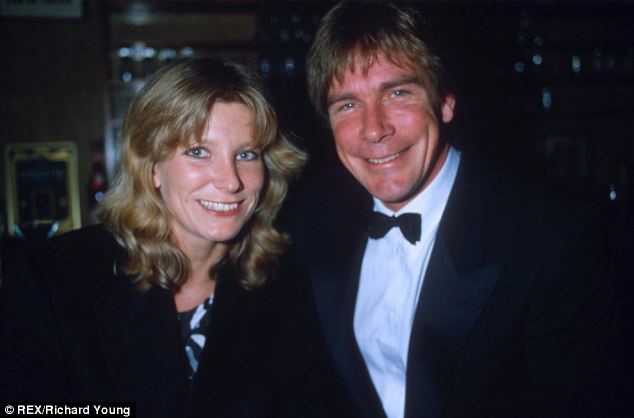
The couple pictured together in happier times in 1985 at a party for Carmen Film Opera at the Pelican Cafe nightclub, London, four years before they were involved in a bitter divorce.
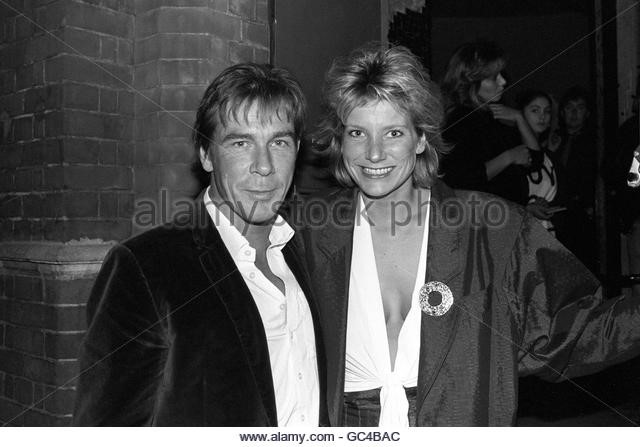
James Hunt and his wife Sarah at London’s Limelight Club for the official launch of the Anti-smack project on 09 September 1986.
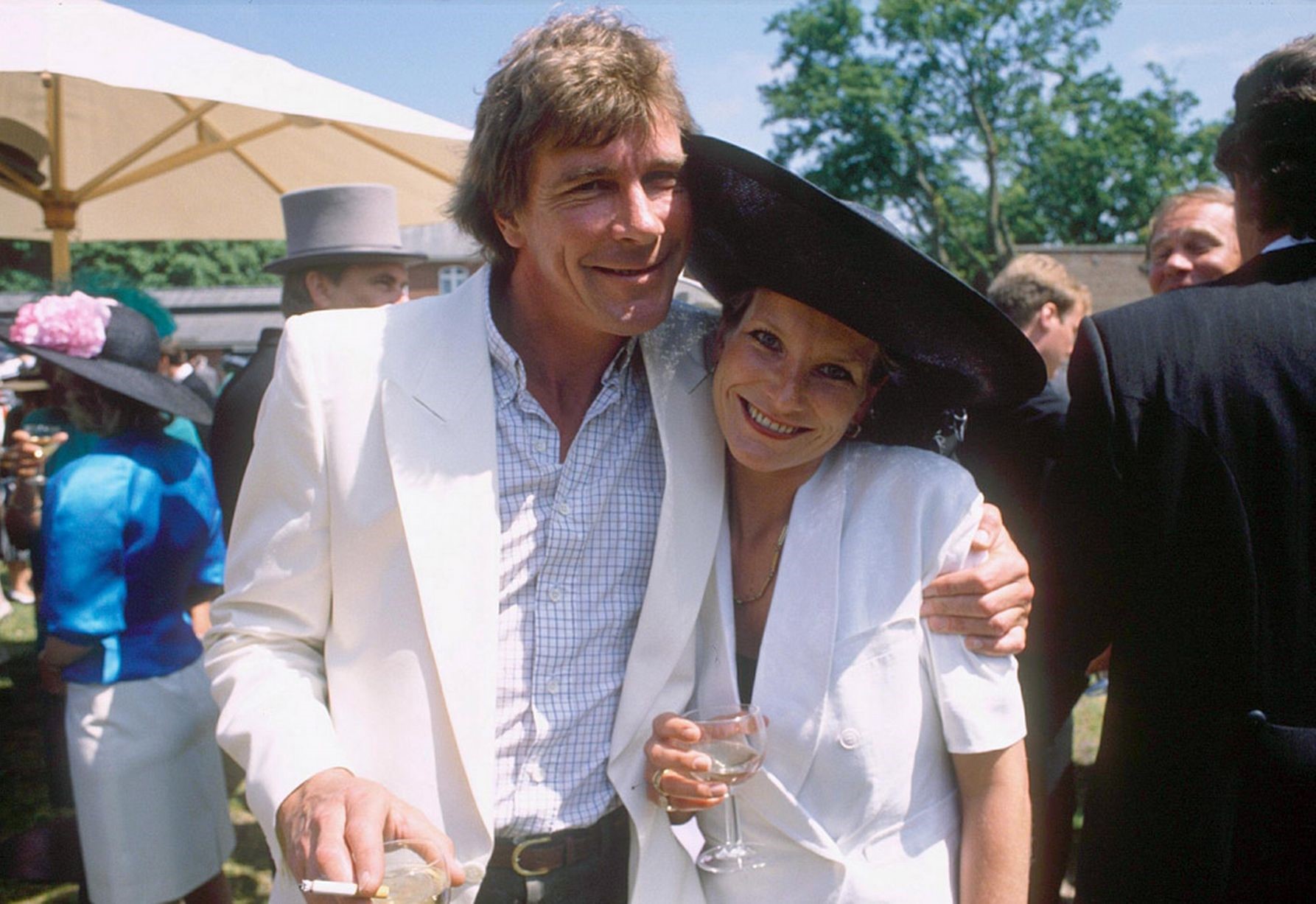
James with his second wife Sarah at Ascot in 1988. Photo by Rex.
Hunt met his second wife, Sarah Lomax, in 1982 and they were married by the end of 1983.
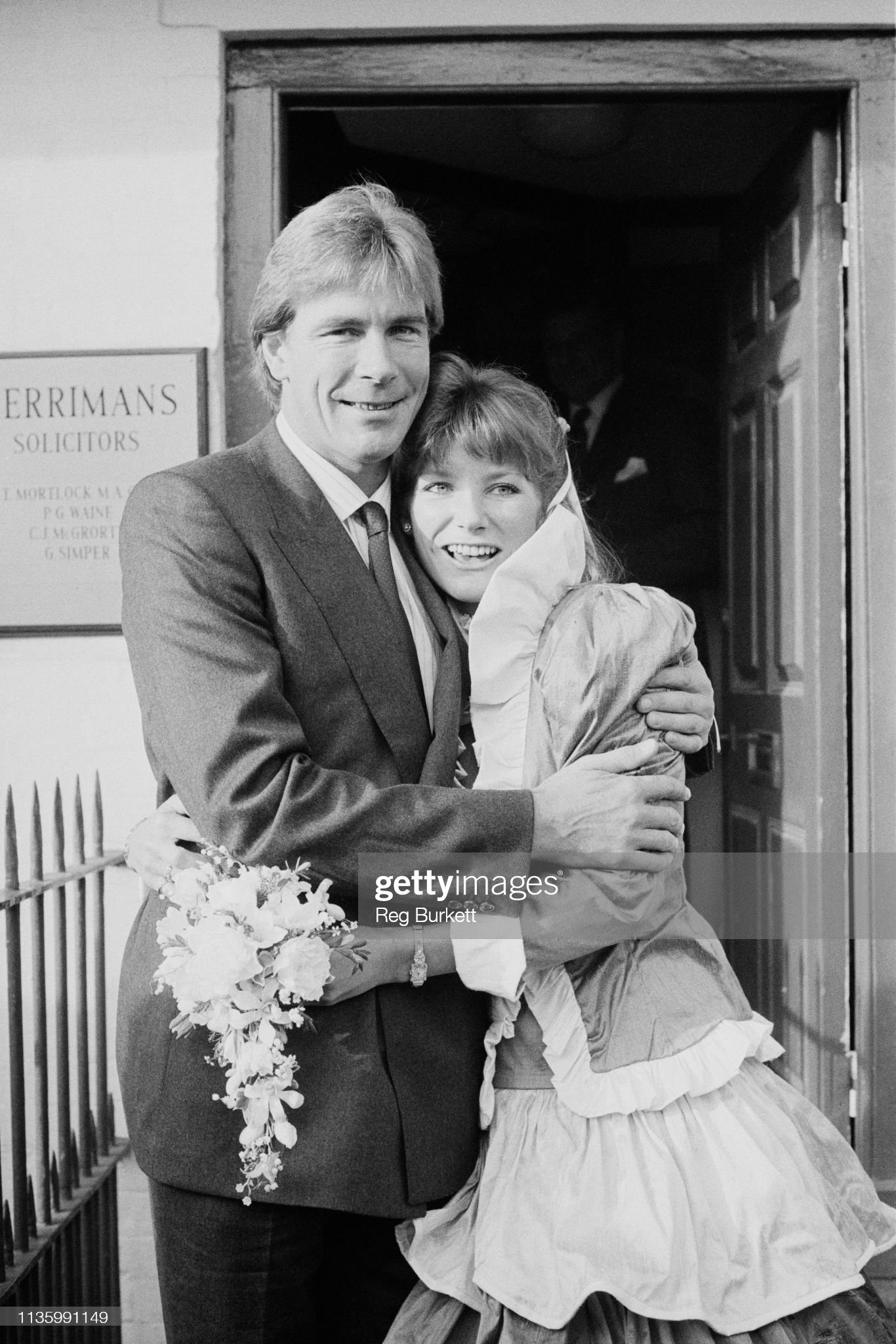
James Hunt and Sarah Lomax on their wedding day in Marlborough, UK, 17th December 1983. Photo by Daily Express/Hulton Archive/Getty Images.
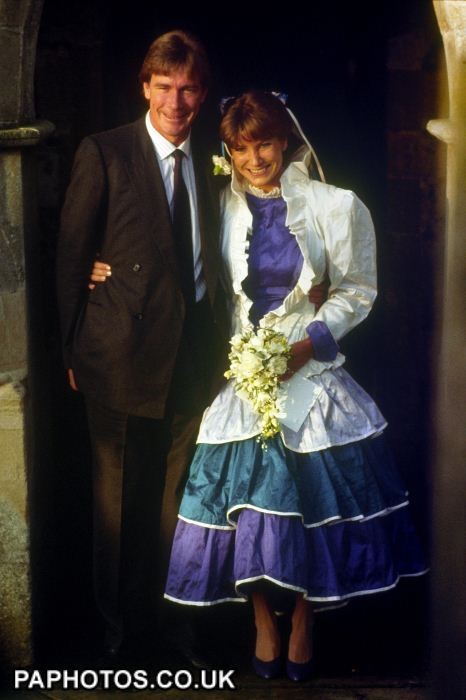
The couple got married in Marlborough, Gloucestershire, a year after they met and they had two children, Freddie and Tom.
The couple had two children but divorced in 1989, amid accusations of adultery from Hunt.
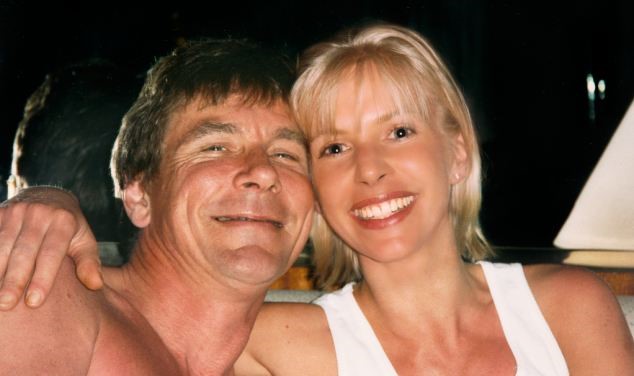
James Hunt had left his hedonistic lifestyle behind him when he met Helen Dyson in 1988. She told The Mail: ‘James would be horrified by that period of his life being the subject of a film. He used to refer to that time as “my seedy past”. It wasn’t a happy time for him and he was so ashamed of it all.’
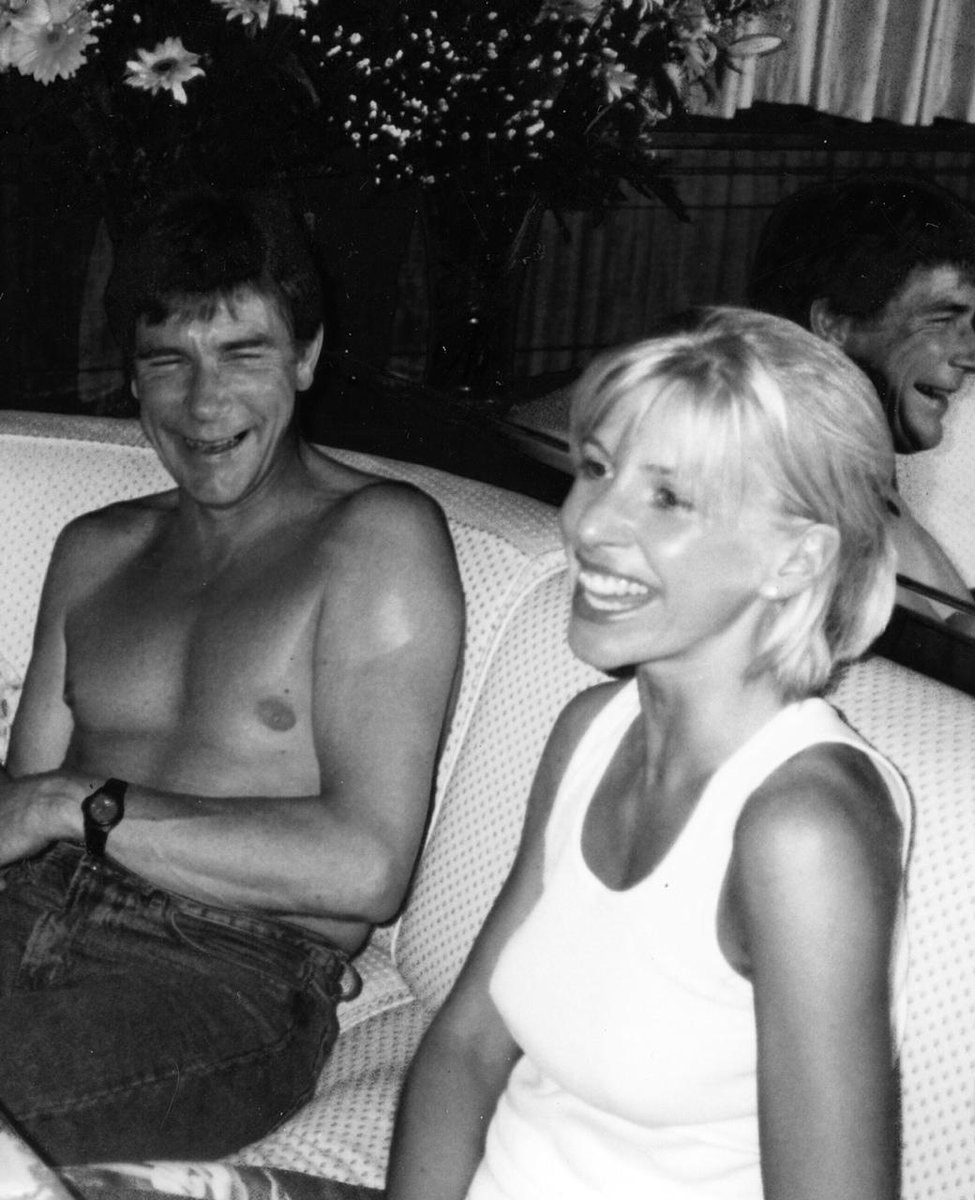
Photo posted by Helene Dyson in 2015: “our last Monaco Grand Prix together in May 1993.”
By the end of his life Hunt was in a relationship with Helen Dyson, a waitress 18 years his junior. The pair dated for several years and Dyson has said he proposed to her over the phone on the day he died.
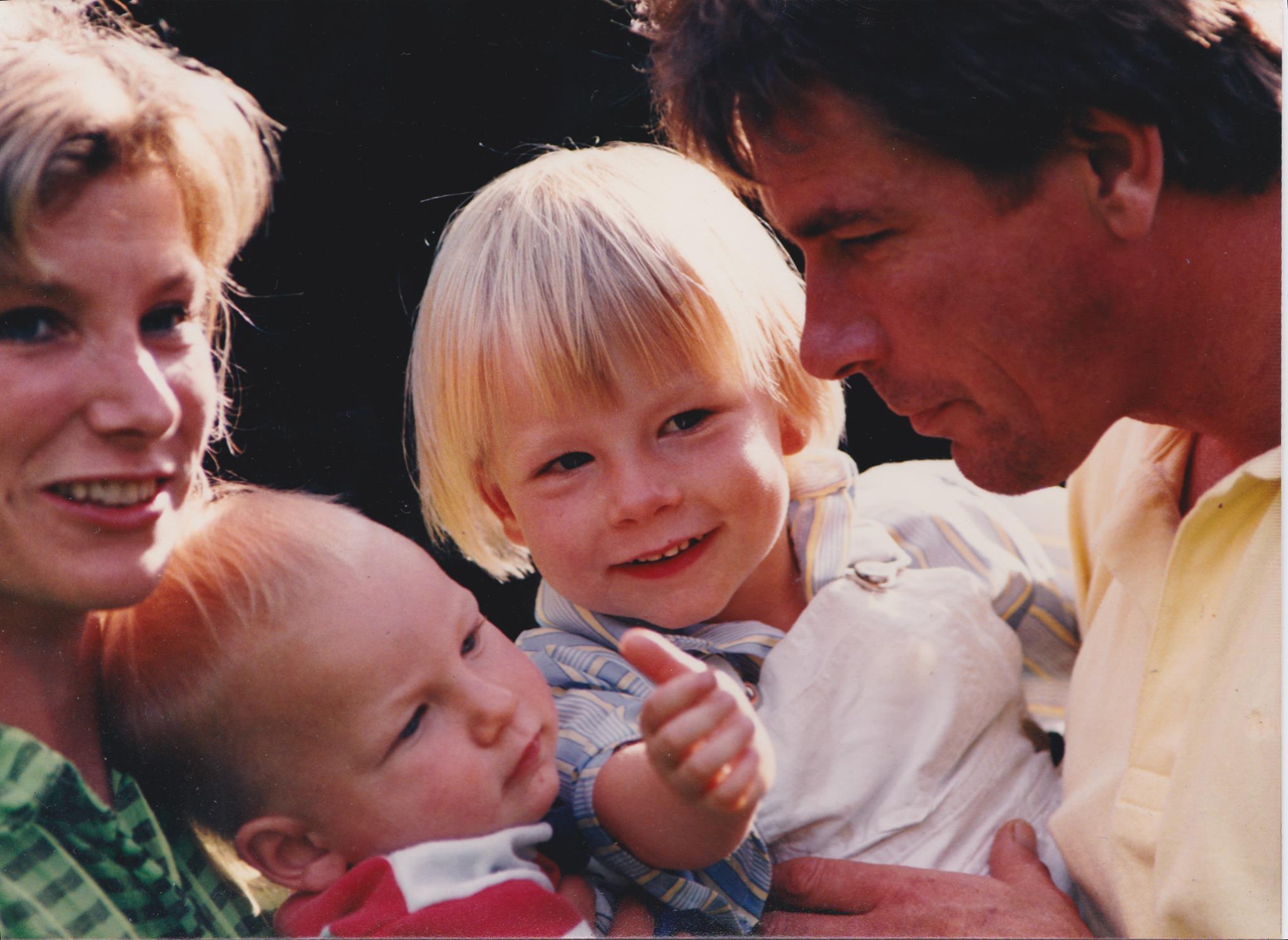
Hunt and his second wife Sarah Lomax had two sons, Tom Hunt and Freddie Hunt. Freddie followed his father’s path and became a racing driver. He has competed in a number of categories including both open-wheelers and sports cars.
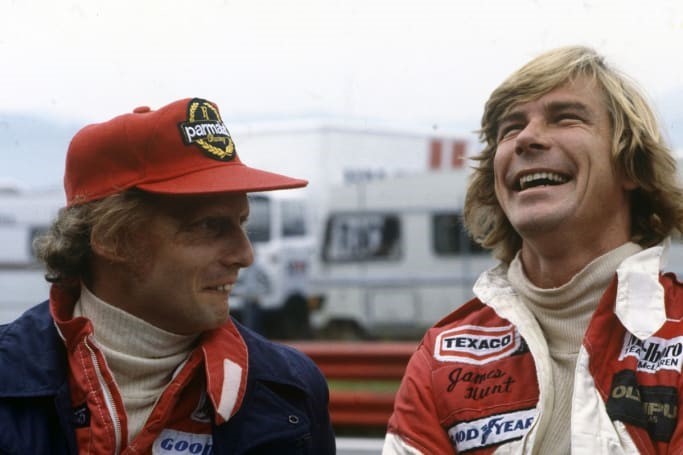
James Hunt and Niki Lauda were good friends. Here they are in Austria in 1978.
There are several books about Hunt’s life and career, in particular his rivalry with Niki Lauda. Long-time F1 journalist Gerald Donaldson wrote “James Hunt: the Biography”, while fellow F1 scribe Tim Rubython wrote “Shunt: the story of James Hunt”.
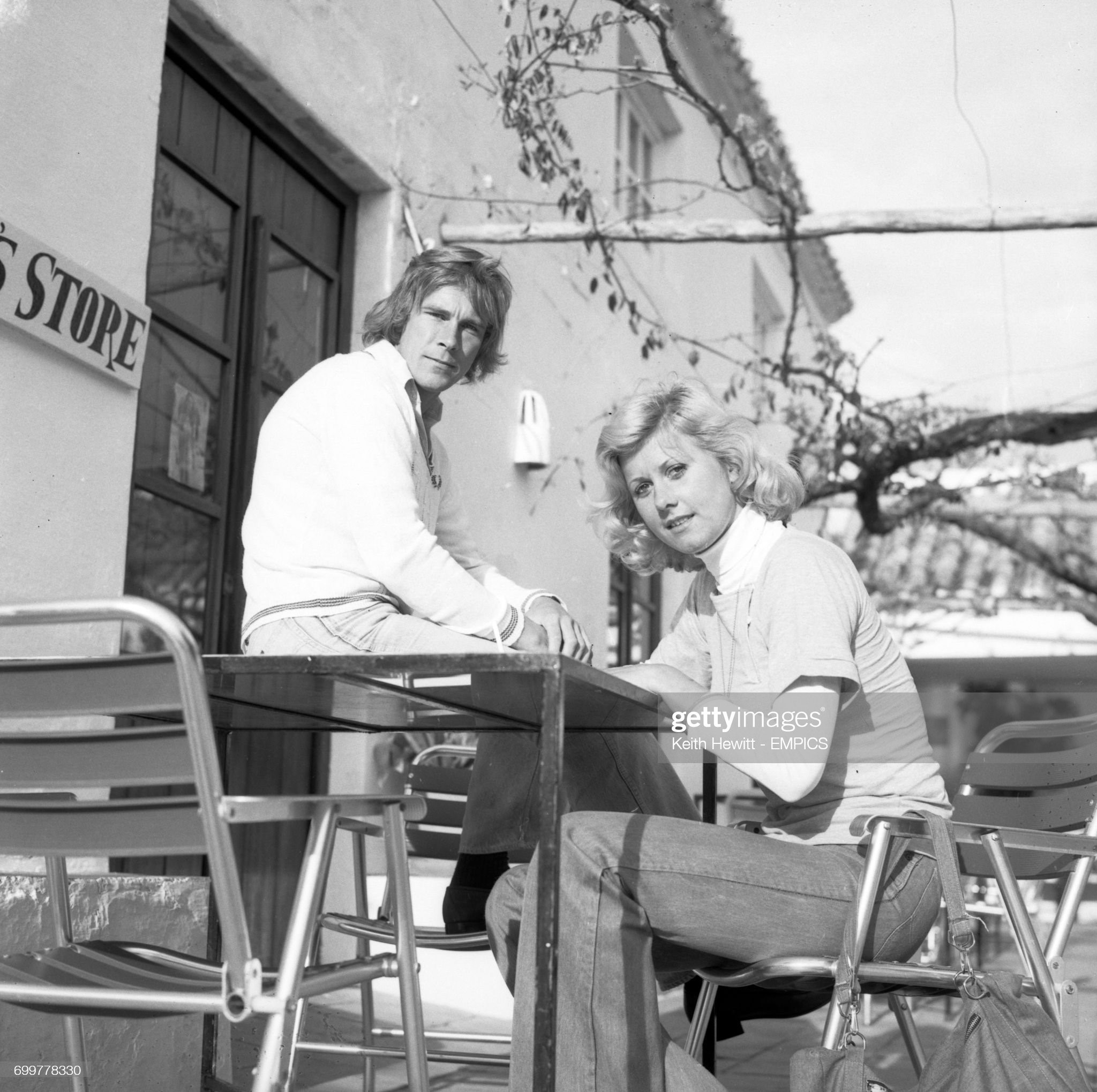
Anita Todd with James Hunt at his home in Malaga, Spain, on 01 June 1976. Photo by PA Images.
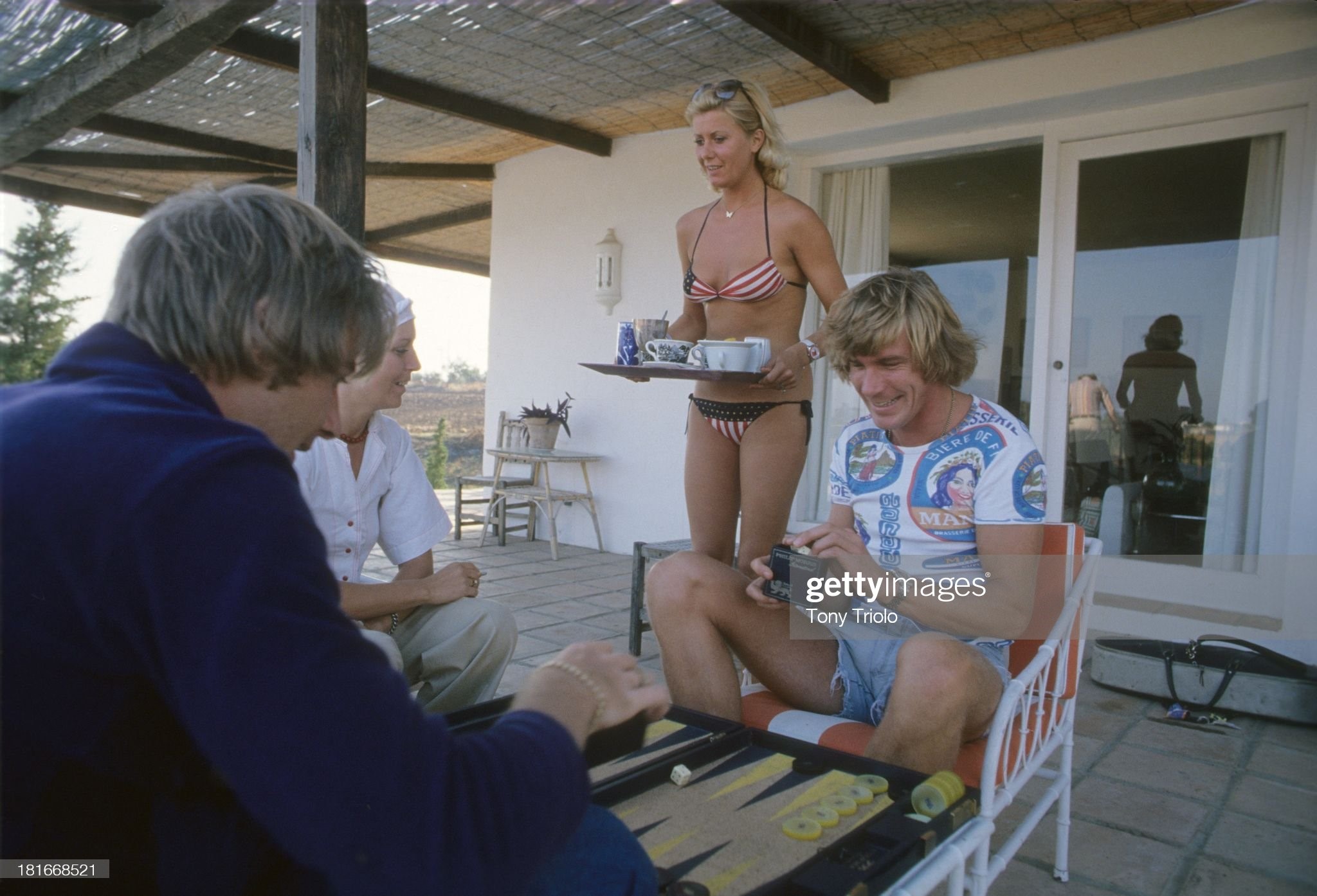
James Hunt playing backgammon with friends during photo shoot at his home in Costa de Sol, Spain, on 01 September, 1976. Photo by Tony Triolo /Sports Illustrated via Getty Images/Getty Images.
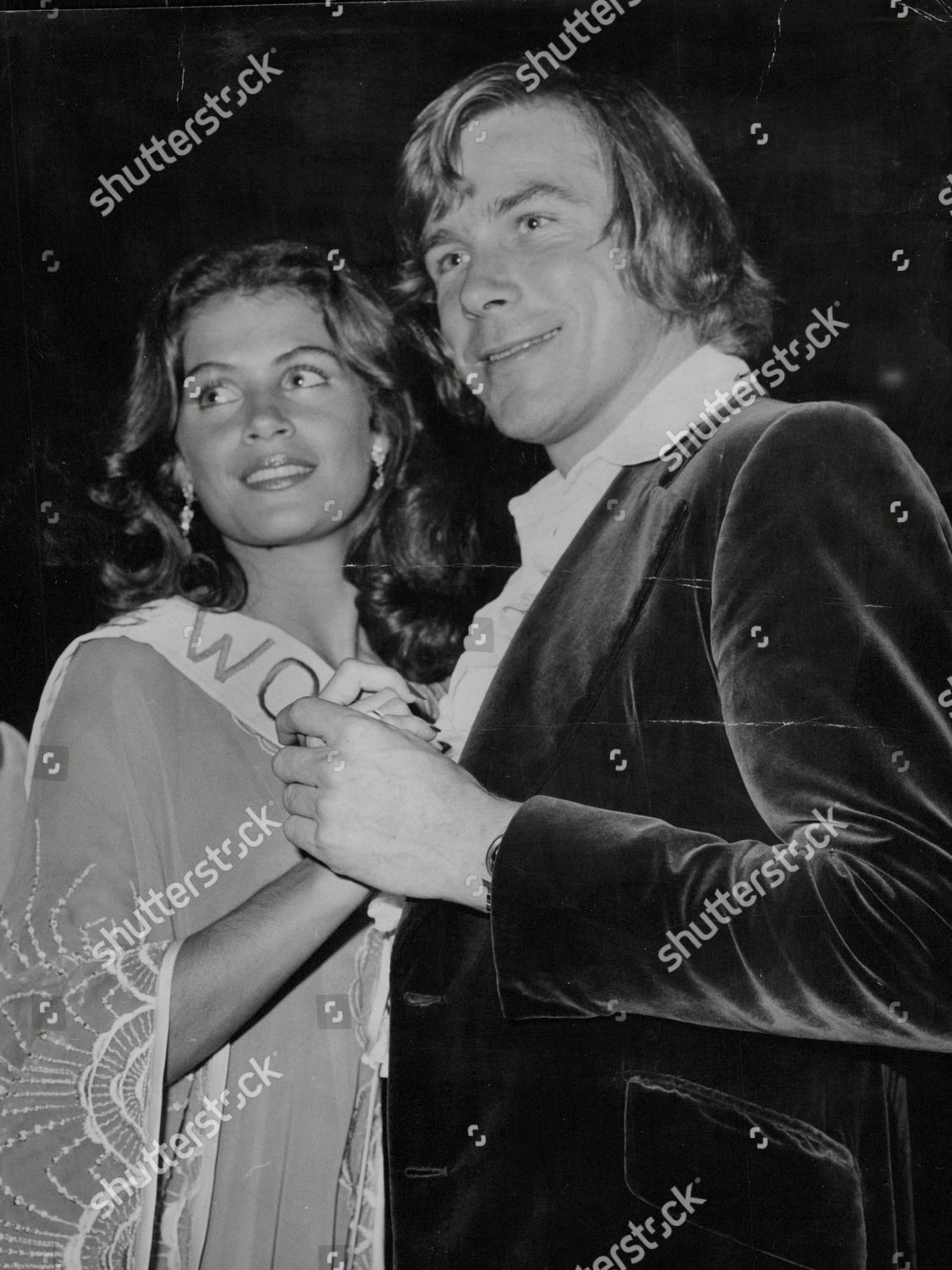
James Hunt with Miss World Cindy Breakspeare in 1976.
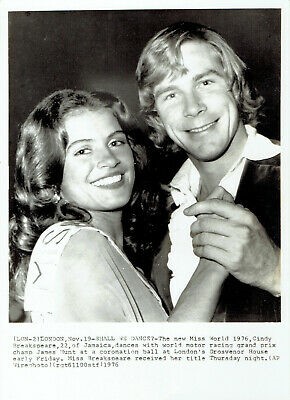
James Hunt with Miss World Cindy Breakspeare in 1976.
Hunt was well-known for his straight-talking, both as a driver and commentator. Some of his most famous lines include: “my first priority is to finish above rather than beneath the ground.”
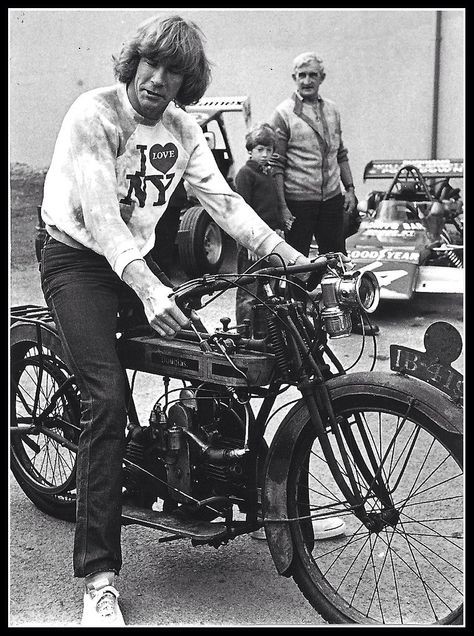
He was often blunt with his commentary and regularly slammed poor performances. Perhaps his most memorable put-down was directed at French driver Jean-Pierre Jarier, who he said had “a mental age of 10” and should be given a short suspension for poor driving before adding: “for being himself, he should receive a permanent suspension.”
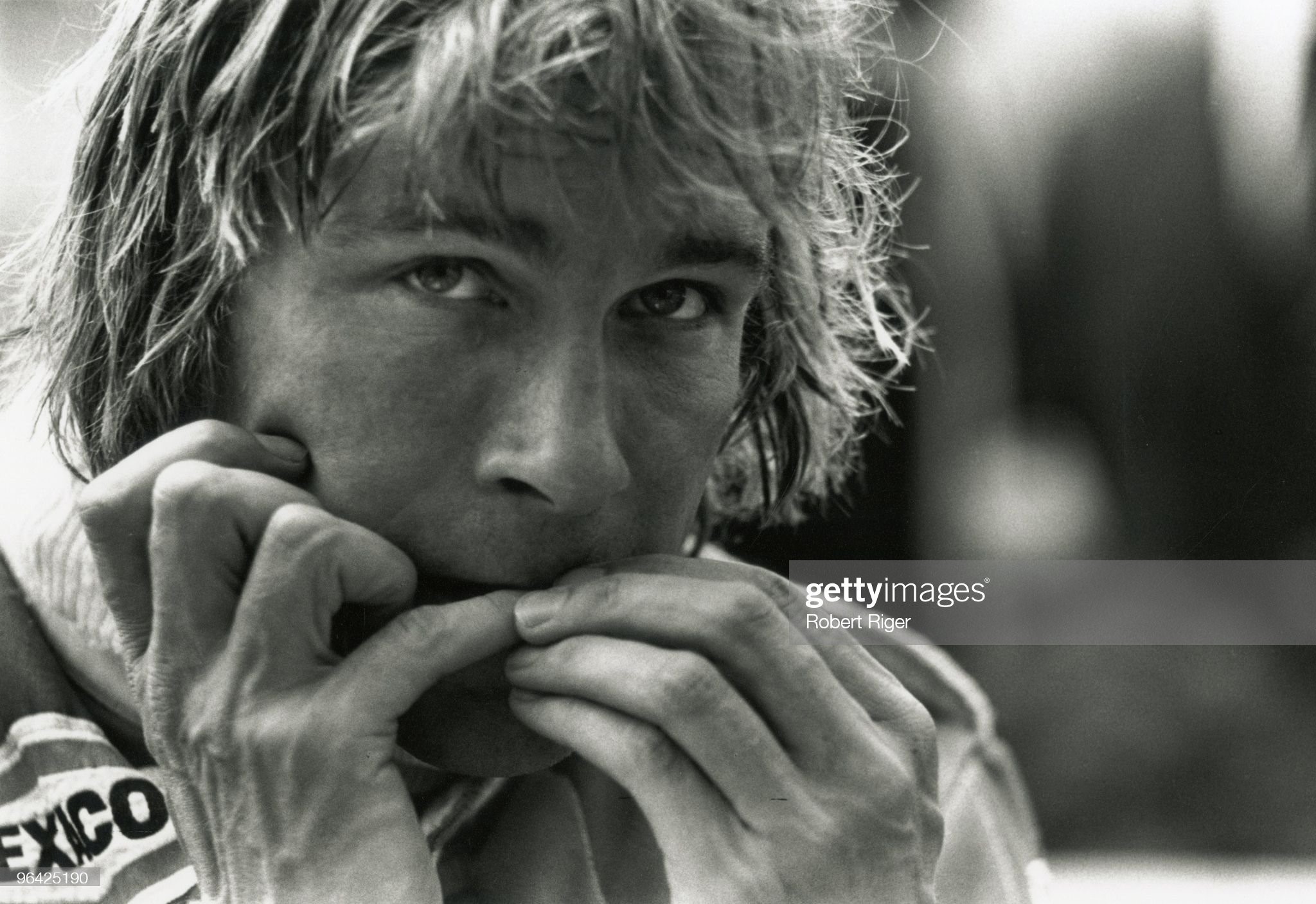
James Hunt looks on in an undated photo, circa 1970s. Photo by Robert Riger/Getty Images.
His long, blonde hair did make him a trend setter of the 1970s.
As did his patch he would sometimes wear on his overalls that read: ‘sex, breakfast of champions’. However, his casual attitude to dress wasn’t appreciated by all.
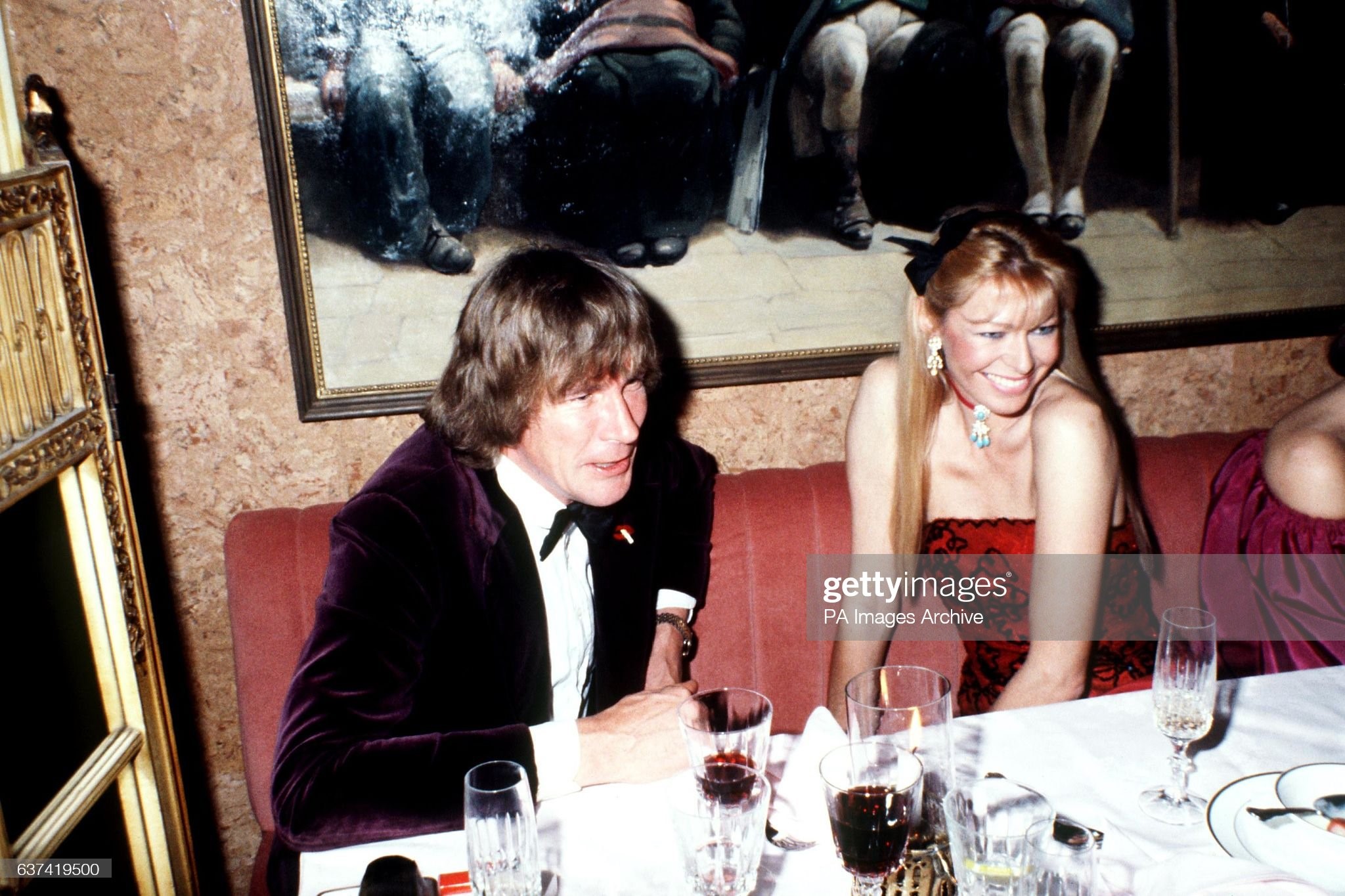
James Hunt with his girlfriend at Smokey Joe's nightclub on 02 February, 1981. Photo by S&G/PA Images via Getty Images.
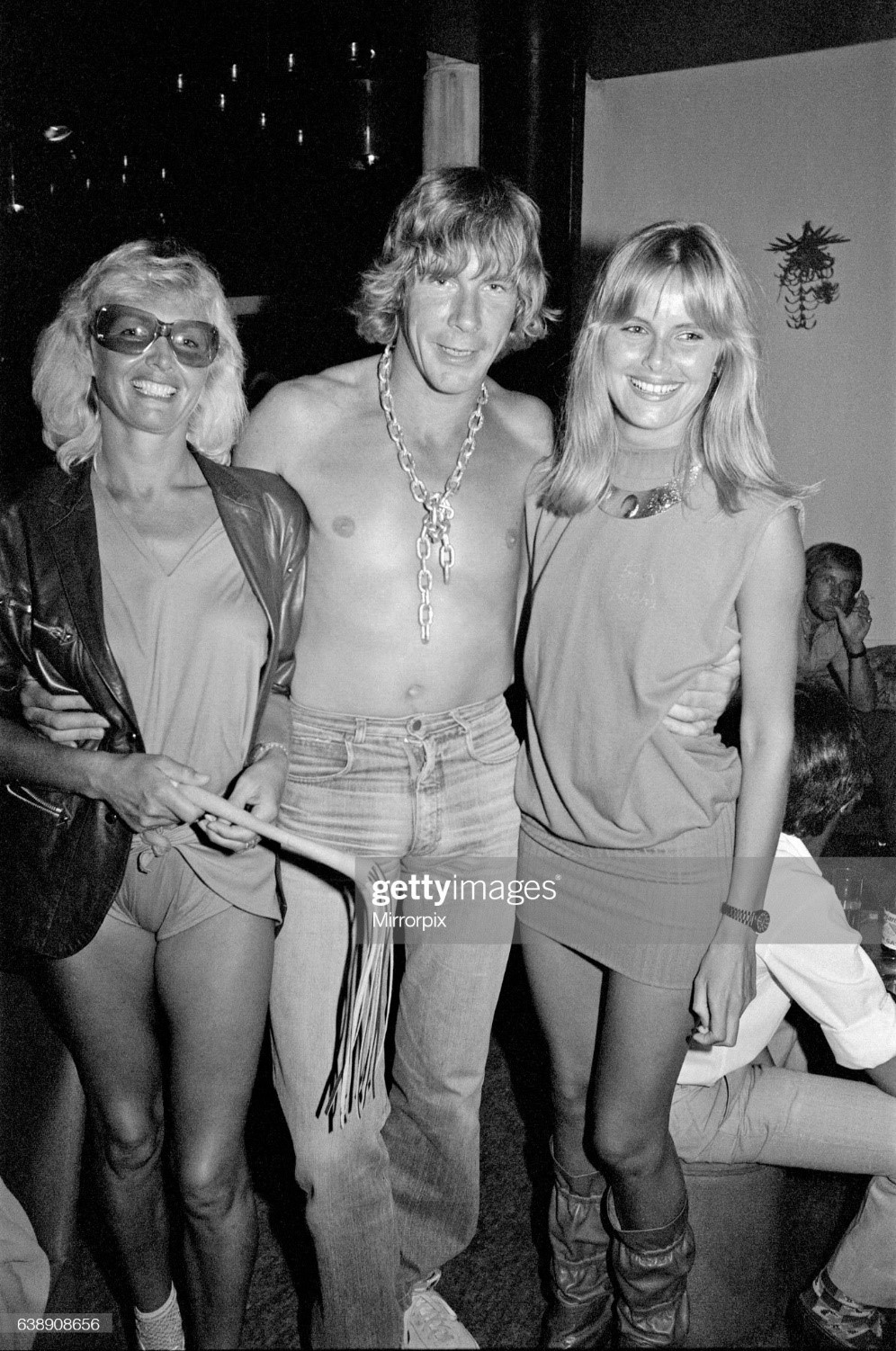
James Hunt seen here in the night club in Marbella, Spain, that he owns. The club is called Oscar, named after his German Shepherd dog also called Oscar. Pictured with James are NOTE * spelling and left to rights not 100% known. Caption says Manna or Nanna Smart and Italy Model Annette Ellefsen. Picture taken 8th August 1981. Photo by Allan OlCharlie Ley/Mirrorpix/Getty Images.
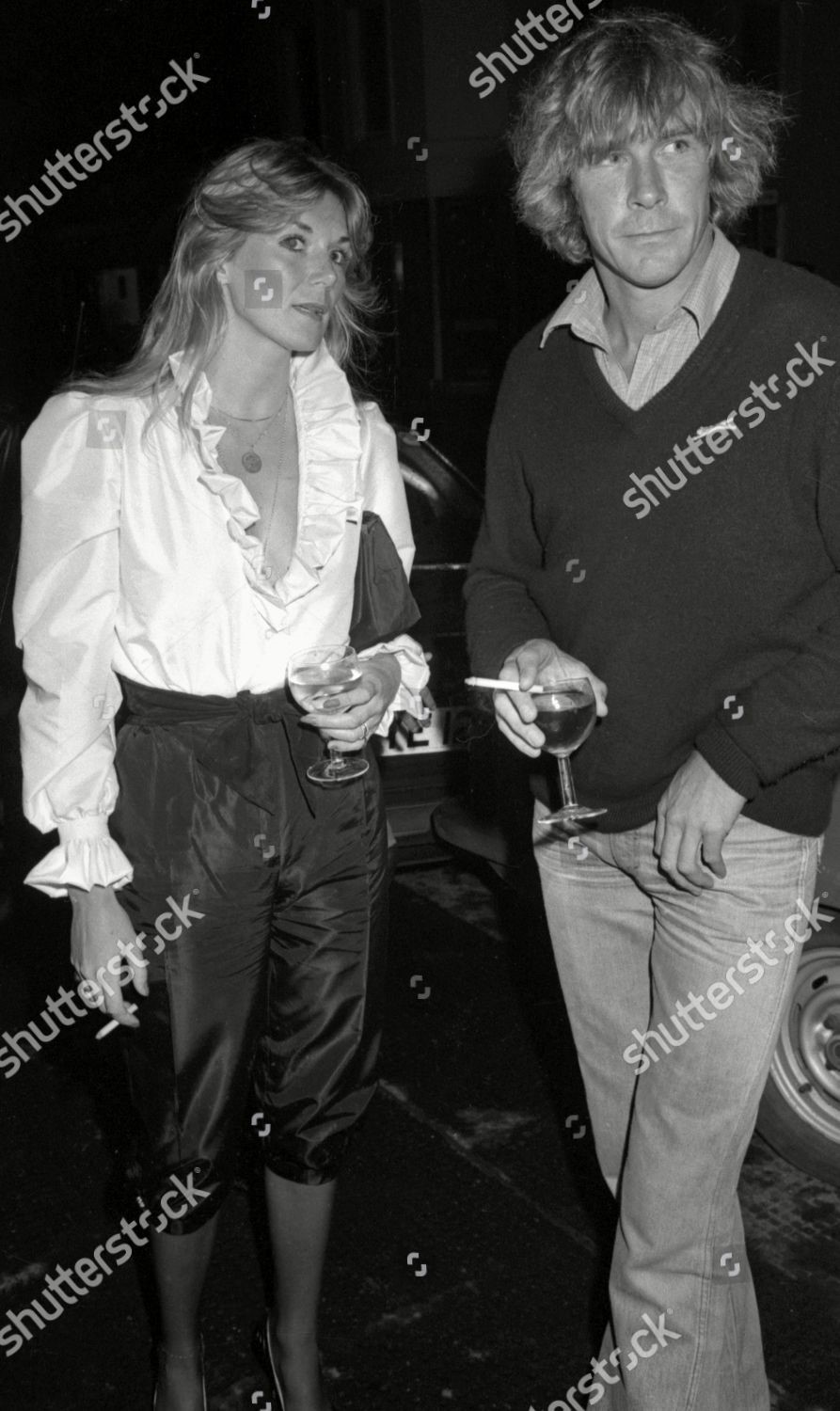
James Hunt at Oyster Party at Drones, Pont Street, 02 October 1981.
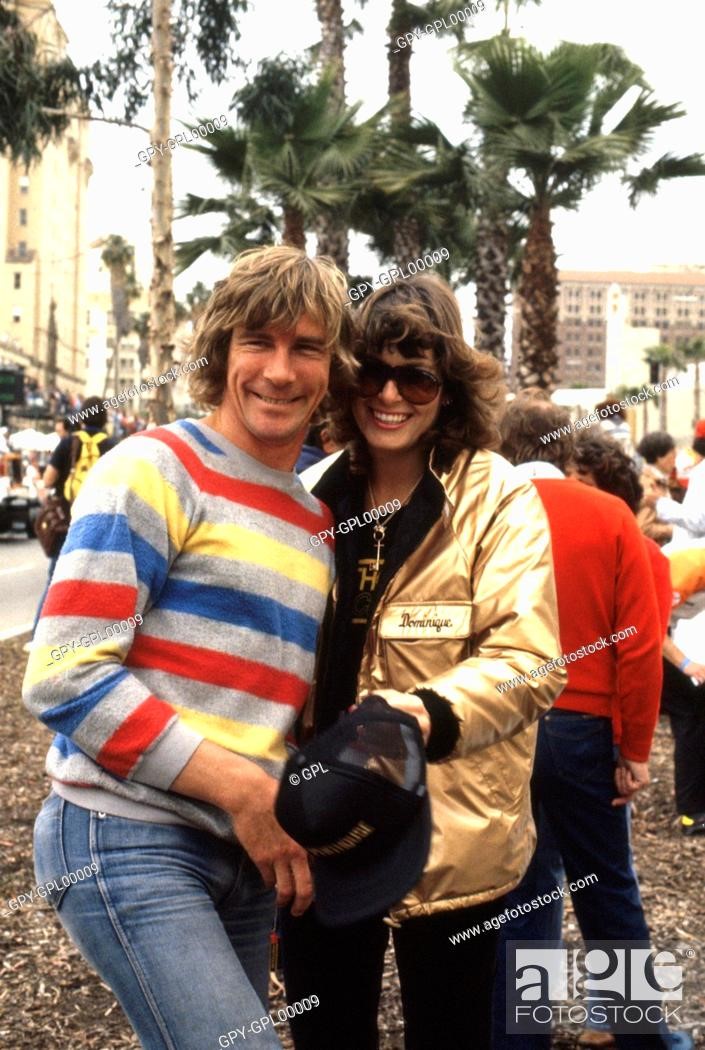
James Hunt photographed in 1981. Photo by GP Library Limited / Alamy Stock Photo.
He once accepted a prize at a glamorous awards show dressed in a t-shirt and jeans. He also would often show up to commentate with no shoes.
James Hunt. By Gerald Donaldson.
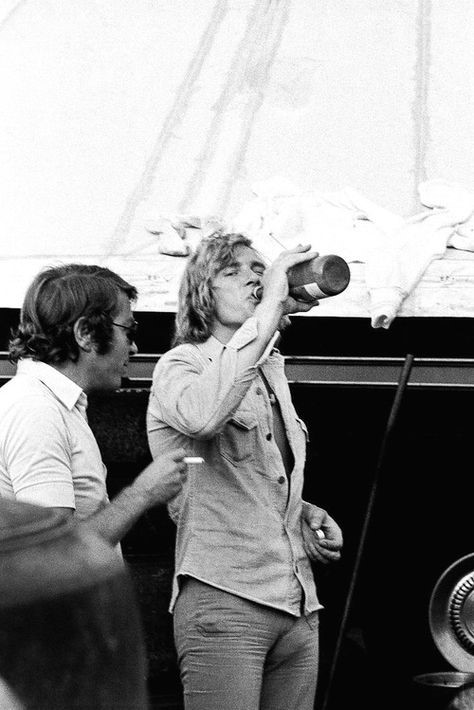
"The fruit of the grape and the result of hard work by human hands", not to be squirted over screaming fans so James Hunt looks as though he is appreciating the prize winner's bottle of Champagne.
James Hunt's was a turbulent life lived to the limit, in and out of racing cars. As a driver he overcame constant fear and enormous odds to become the best in the world, triumphing in one of the most dramatic championship battles in Formula One history.
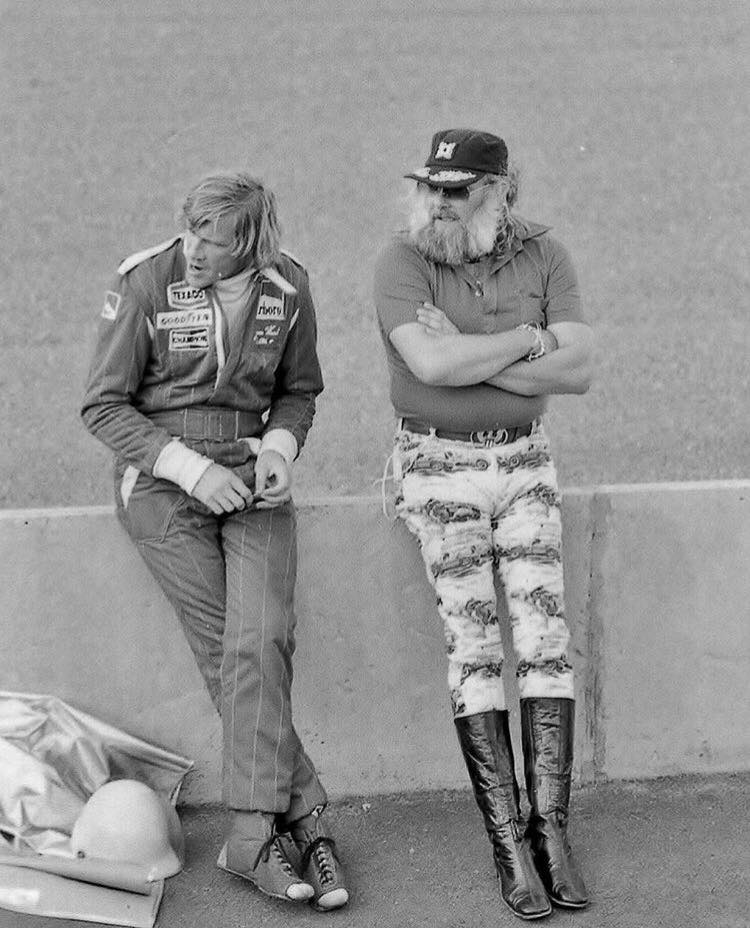
As a colourful personality and unconventional character he had no peers, alternately entertaining admirers and offending critics with his often outrageous behaviour. After he retired he continued to make a strong impact, as a TV commentator, but died suddenly in the prime of his life.
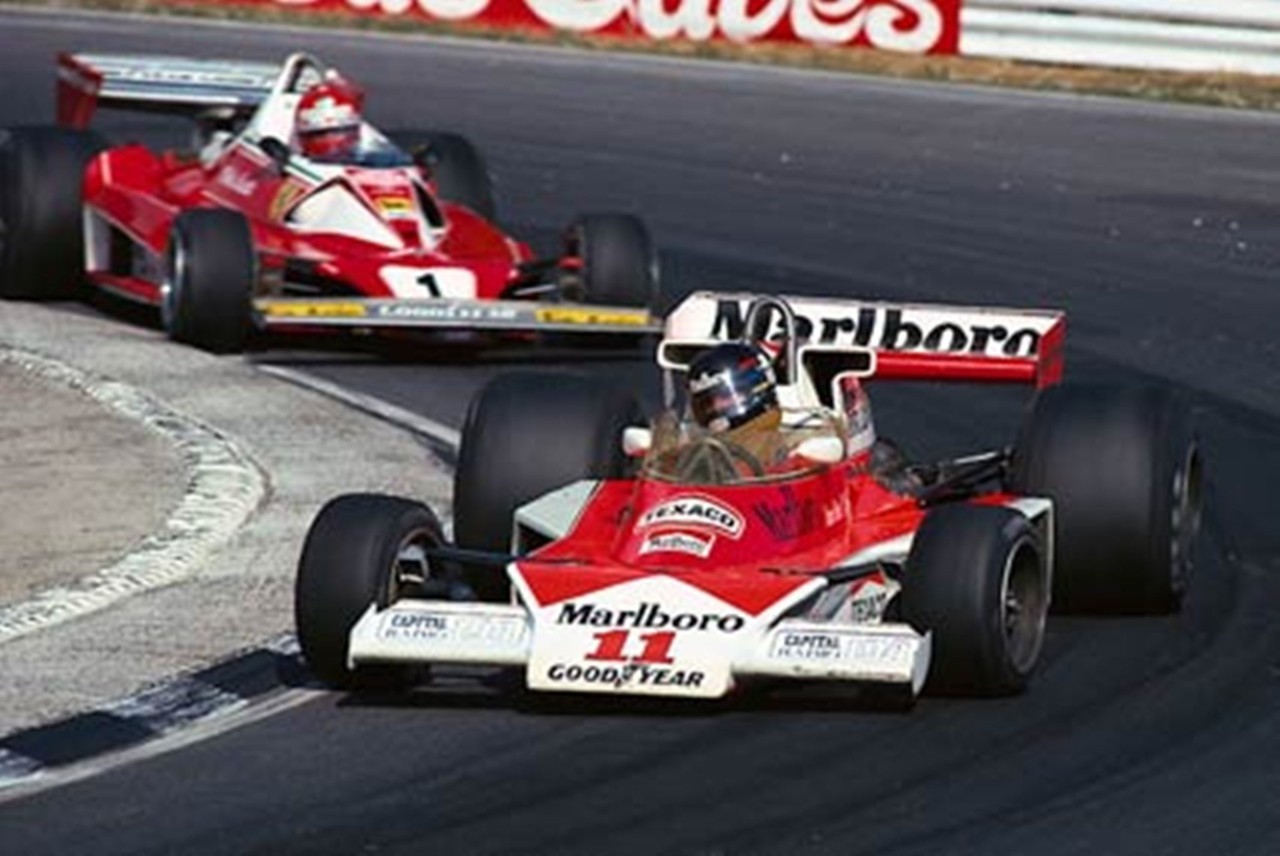
James Hunt, McLaren, followed by Niki Lauda, Ferrari, in 1976.
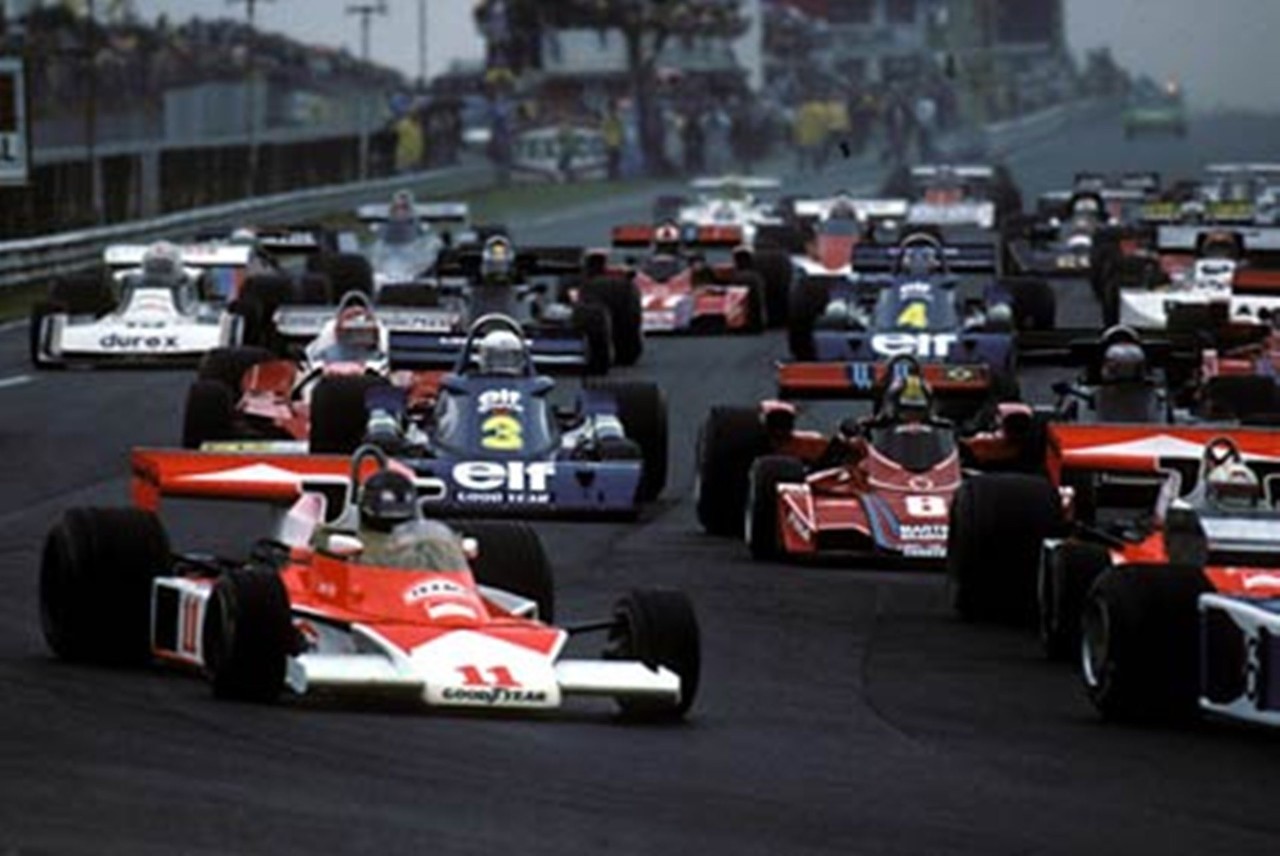
James Hunt at the start of a Grand Prix in 1976.
James Simon Wallis Hunt, born into the family of a London stockbroker, was an unruly child: hyperactive, contrary and persistently rebellious. As a self-confident, competitive and determined youth he taught himself to play tennis and squash to a high standard.
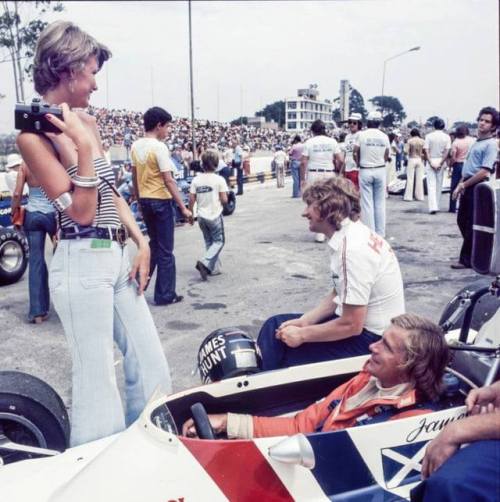
The tall (185 centimeters) and handsome public schoolboy also enjoyed considerable success with women. On his 18th birthday he saw his first race, a club meeting at Silverstone and immediately decided to he was going to become World Champion. His parents refused to support their feckless son's foolish Formula One fantasy. James worked at odd jobs, bought a wrecked Mini and spent two years race-preparing it, only to have his first entry fail scrutineering because the driver's seat was an old lawn chair.
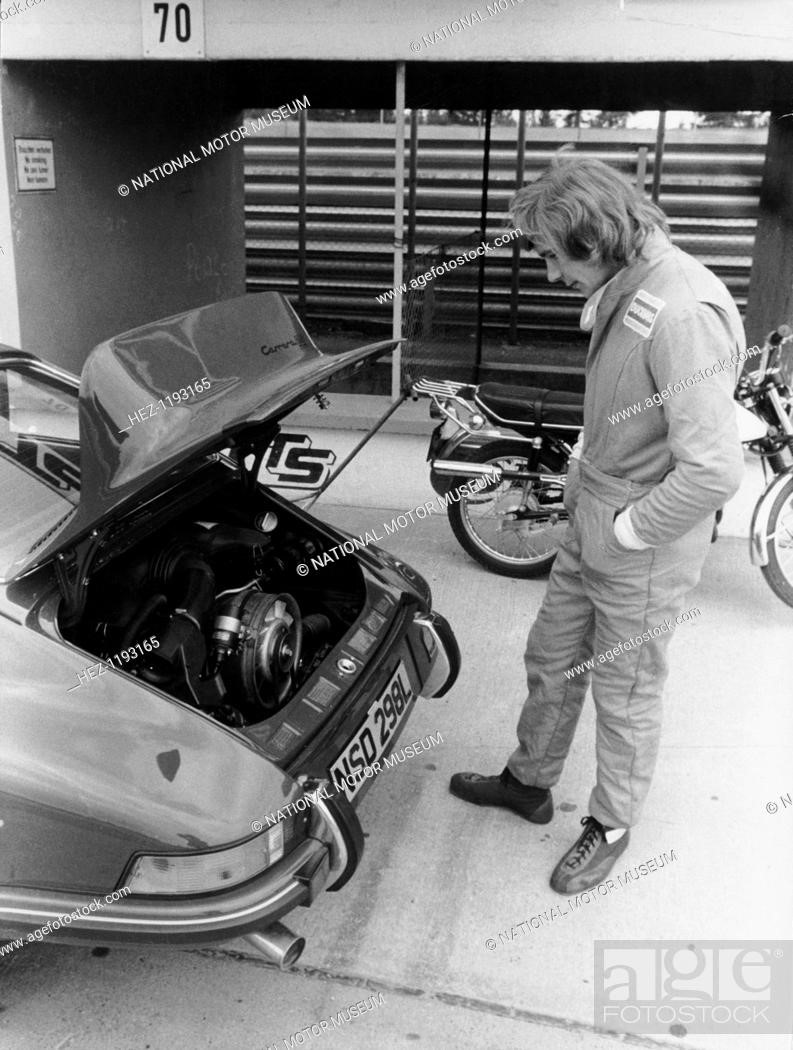
James Hunt with a Porsche c1972-c1973. Photo by Stock Photo.
Many of his early races ended in huge accidents. In one of them his Formula Ford crashed and sank in the middle of a lake. He might have drowned had he been wearing the requisite seatbelts he couldn't afford to buy.
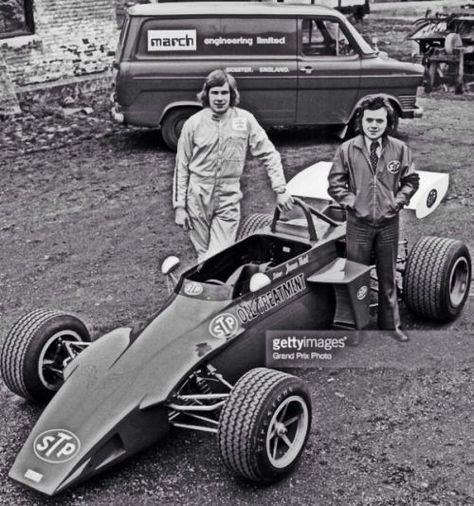
James Hunt and Brendan McInerney looking confident before the start of the 1973 British F3 season with a brand new March 723.
In faster Formula Three cars 'Hunt the Shunt' had even bigger accidents. Eventually he learned to stay on the track long enough to win races, but never conquered his fears. In the garage his terror often caused him to vomit and on the grid he shook so much the car vibrated.
“Before I got in the car, I was puking all over the place and on the grid. I was just a shaking wreck.” James Hunt
As a racer his volatile mixture of adrenaline and testosterone made him among the hardest of chargers. However, his reputation as a wild man with middling race results meant it unlikely he would have gone much further without the help of Lord Alexander Hesketh. 'The Good Lord' (as James called him) was an eccentric young British aristocrat who inherited a fortune and spent it lavishly on personal entertainment.
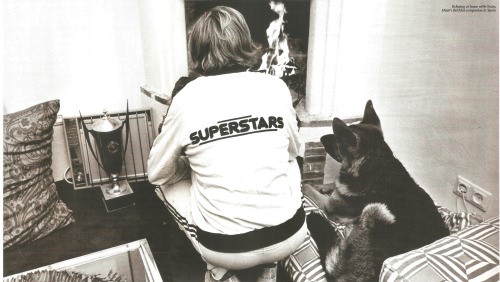
James Hunt shows off his physical prowess in some wonderful ‘70s sportswear. He was called by Lord Hesketh “Superstar”.
Though he knew nothing about motorsport he decided to amuse himself by forming his own racing team and hired 'Superstar' (his nickname for Hunt) as his driver. The Hesketh Racing team had limited success in Formula Three and Formula Two but gained notoriety for seeming to consume as much champagne as fuel and for having more beautiful women than mechanics. Since the Good Lord was having so much fun in racing's lower ranks he thought it naturally followed that even more sport could be had at the highest level.
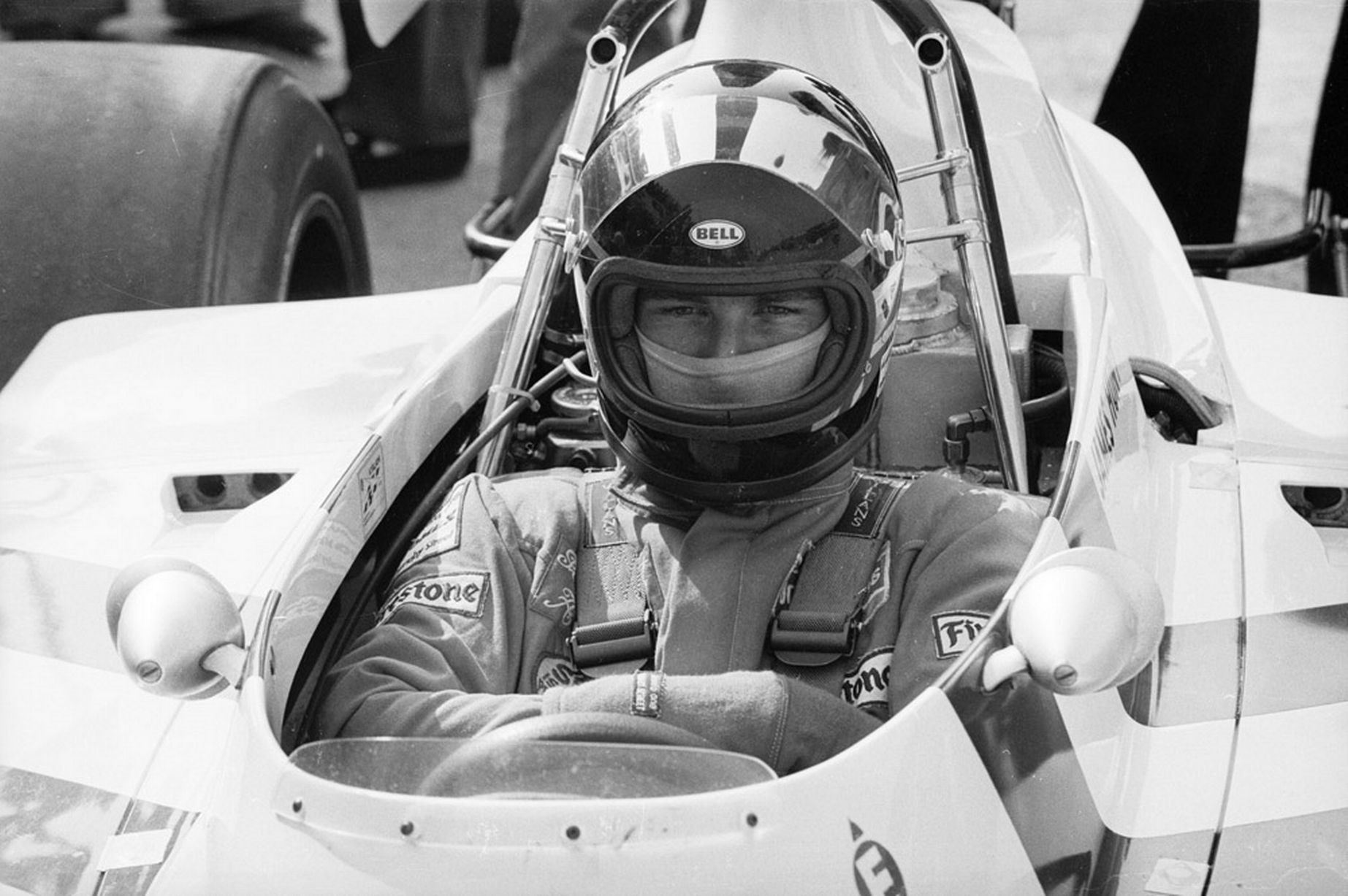
James Hunt at the wheel of his Hesketh at Silverstone in 1974. Photo by Getty.
When Hesketh Racing arrived on the scene in 1974 the Formula One fraternity thought the team was a joke.
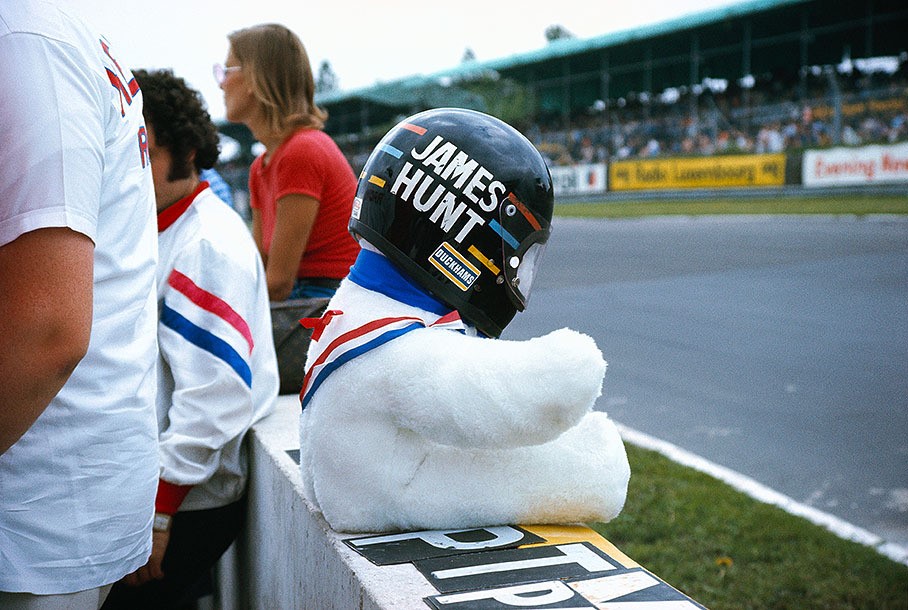
James Hunt's helmet at Brands Hatch in 1974. Photo by Rainer Schlegelmilch.
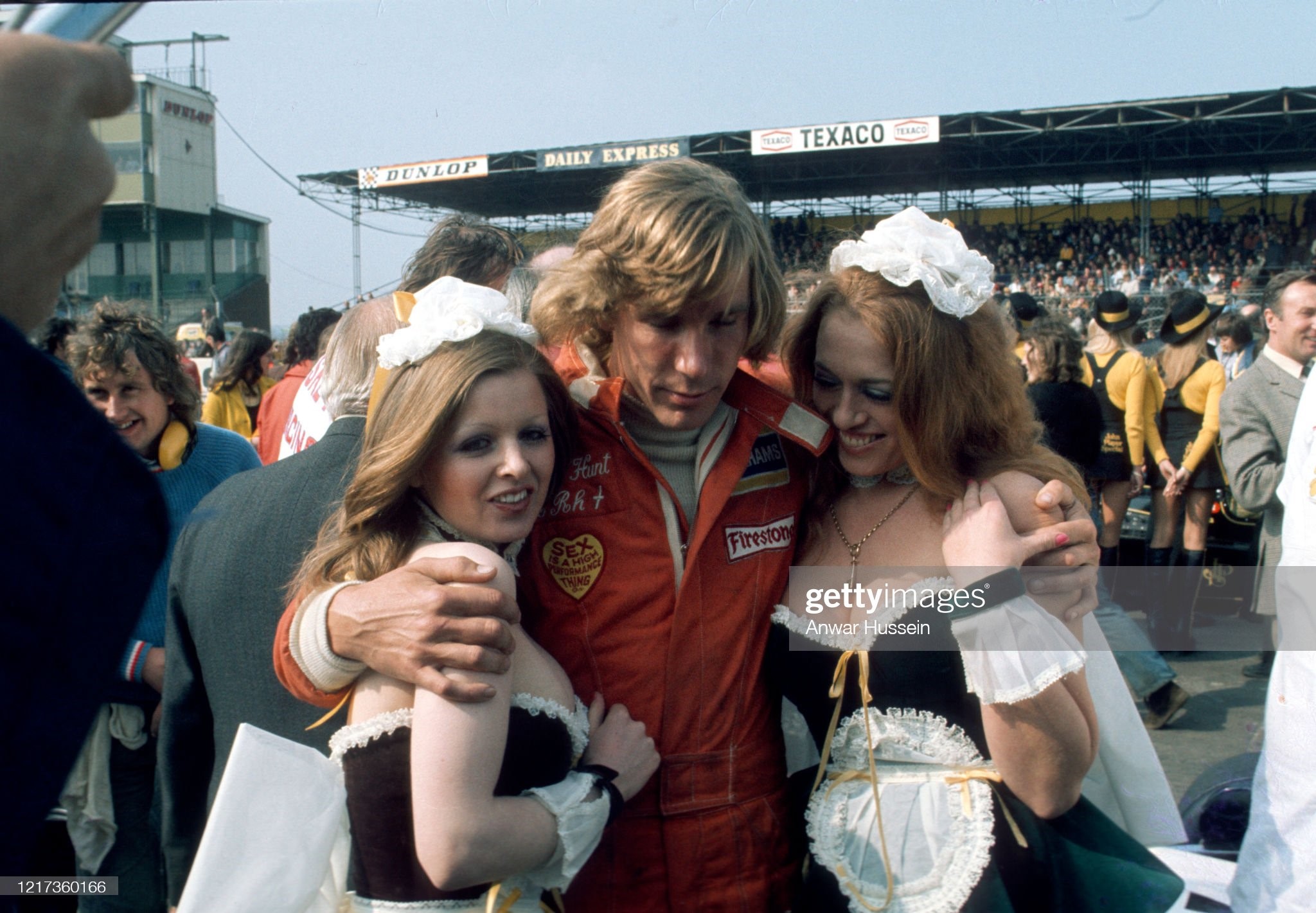
James Hunt meets fans on 18 July 1974 in Brands Hatch, England. Photo by Anwar Hussein/Getty Images.
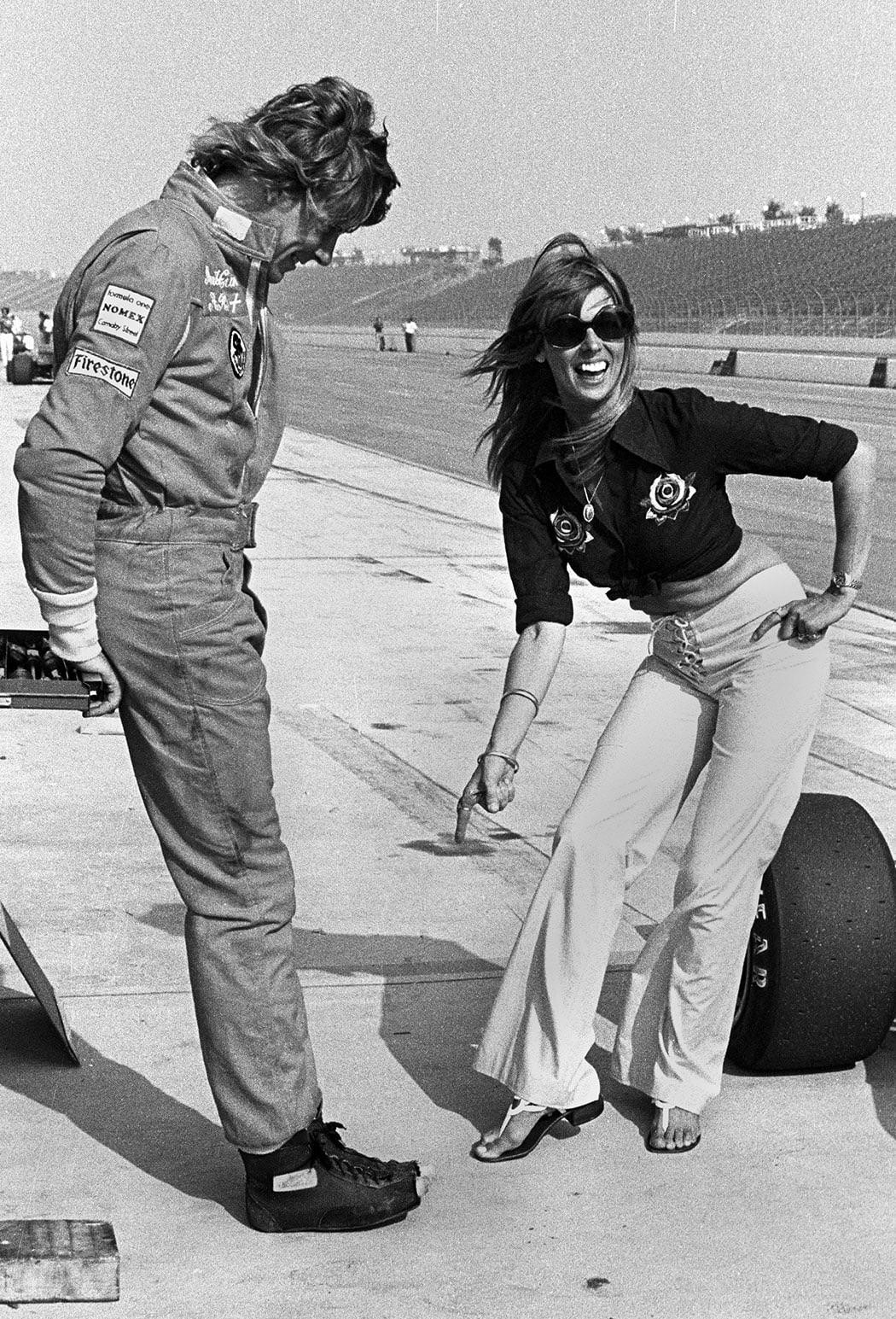
James Hunt with his cut off toed racing boots. Most likely at Watkins Glen in 1974.
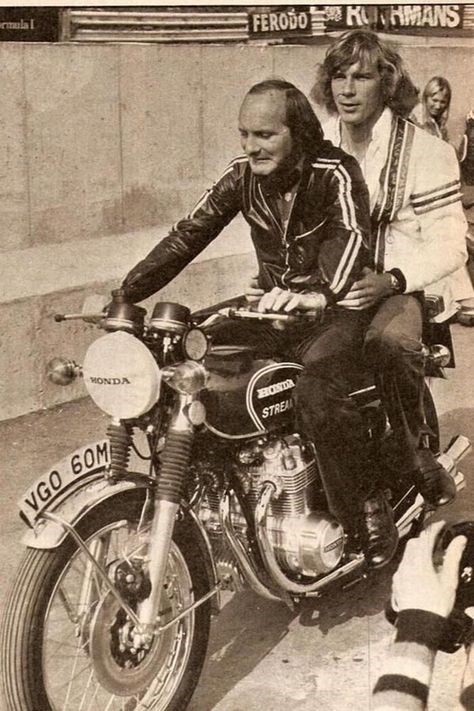
Nice shot of Mike Hailwood giving James Hunt a lift on a Honda CB 550 Four at Brands Hatch in 1974. Mike was a McLaren driver in 1974 and many times motorbike world champion.
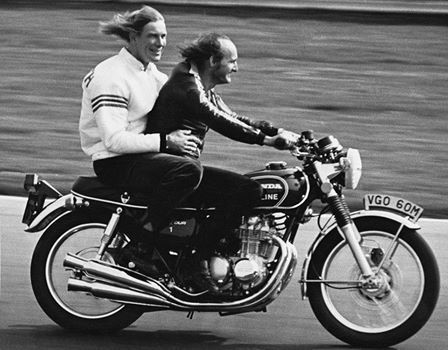
1974, James Hunt and Mike Hailwood in Brands Hatch riding an Honda CB 550 Four.
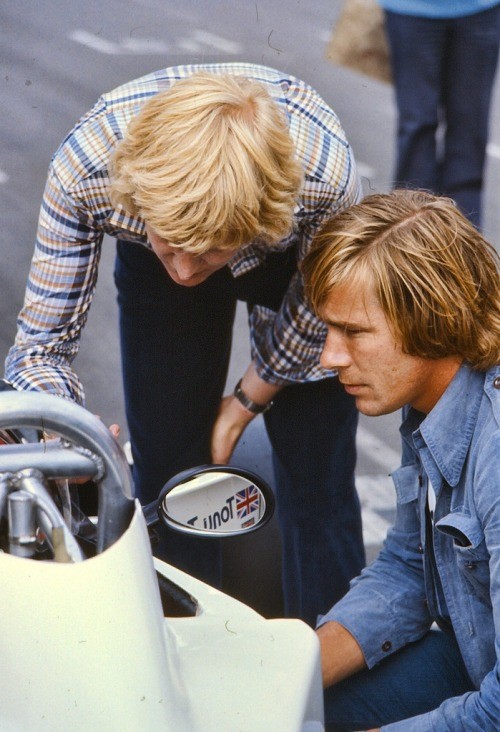
James Hunt in the pits at Brands Hatch.
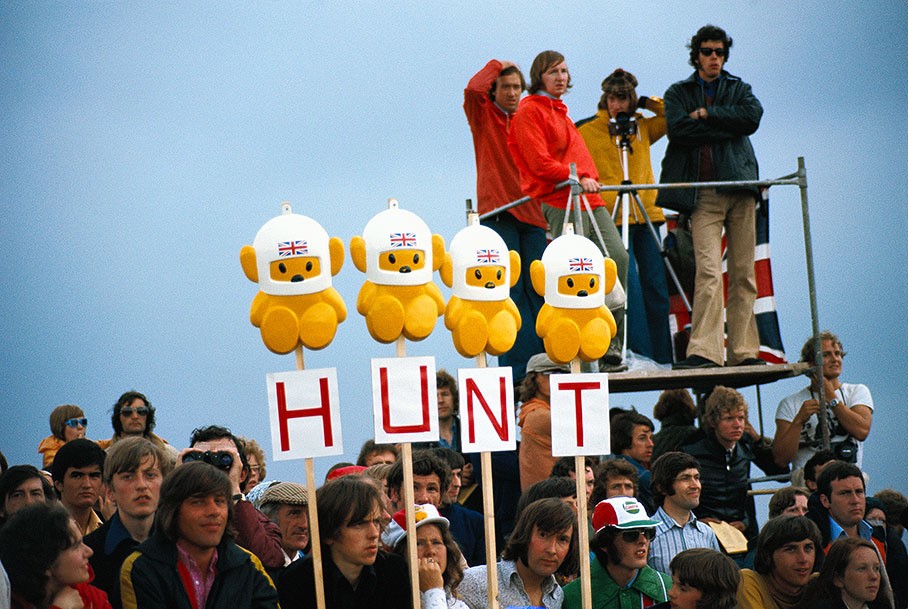
British fans supporting James Hunt at Silverstone in 1975. Photo by Rainer Schlegelmilch.
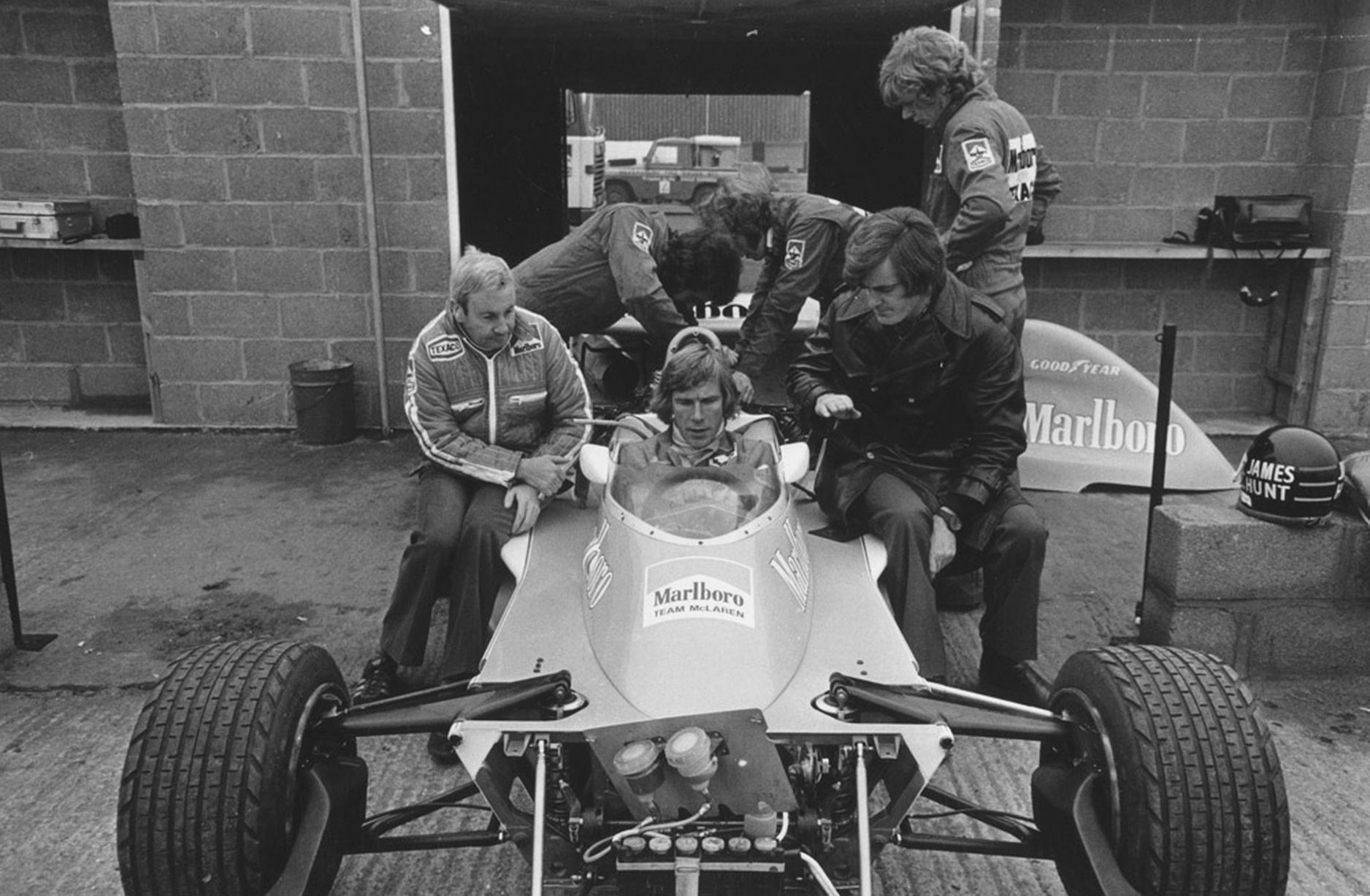
James Hunt ready to race at the wheel of the M26 Marlboro McLaren at Silverstone in 1975. Photo by Getty Images.
The ridicule became grudging respect when James Hunt's Hesketh beat Niki Lauda's Ferrari to win the 1975 Dutch Grand Prix.
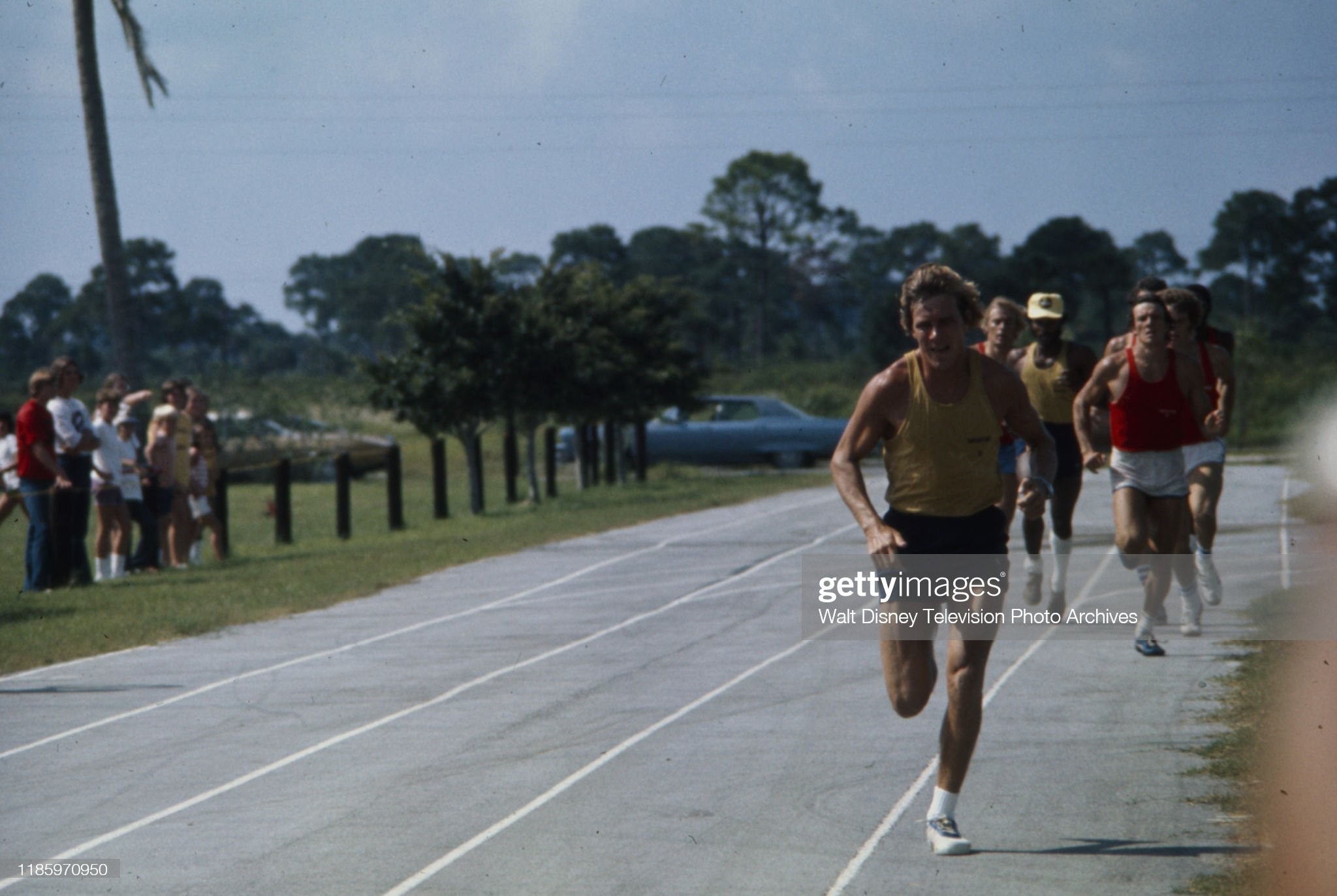
Unspecified - 1975: James Hunt competing in running / track competition on the ABC tv series 'Superstars'. Photo by Disney General Entertainment Content via Getty Images.
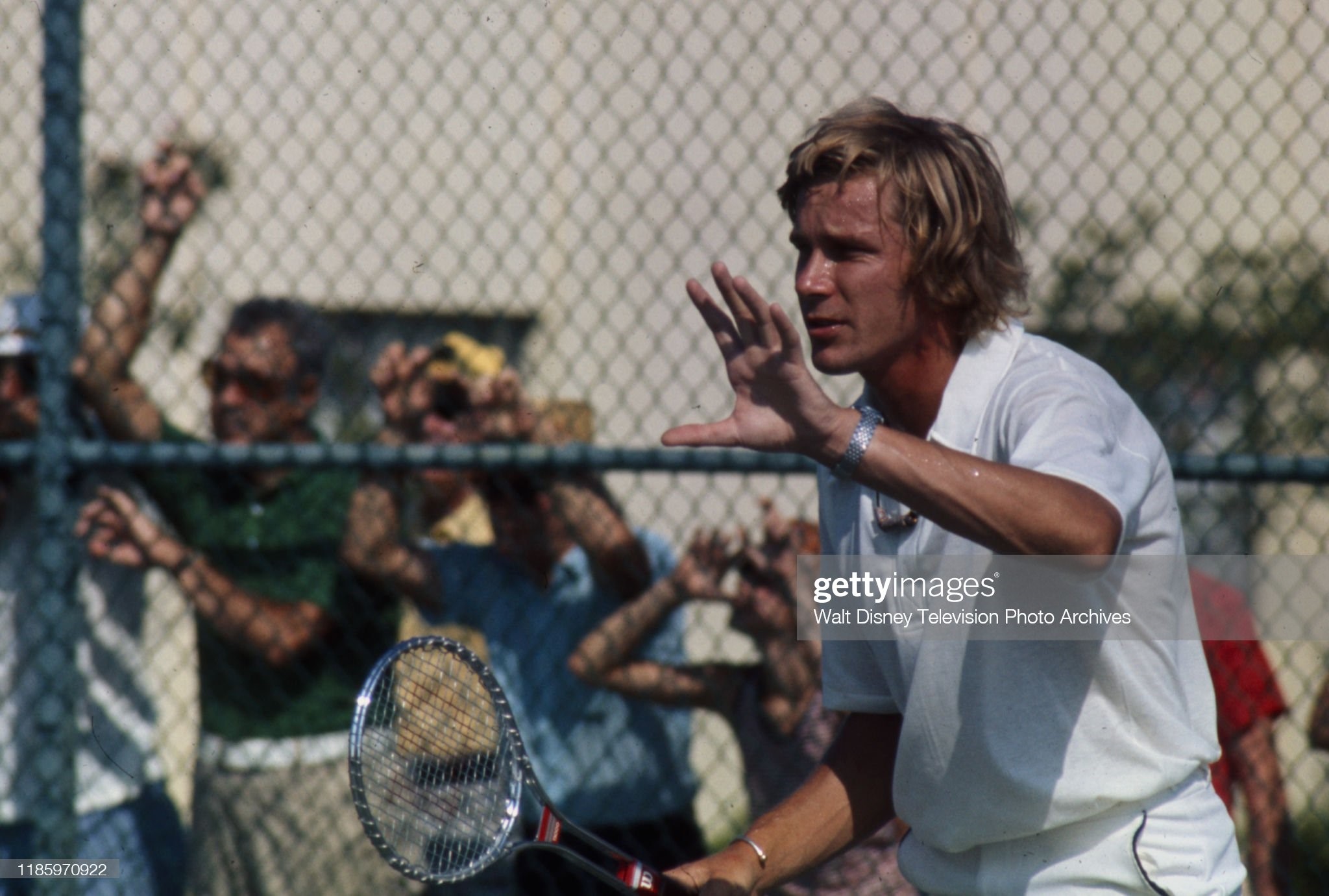
Unspecified - 1975: James Hunt competing in tennis competition on the ABC tv series 'Superstars'. Photo by Disney General Entertainment Content via Getty Images.
At the end of that season, however, Lord Hesketh announced he could no longer afford trying to produce the next British World Champion and James was out of a job.
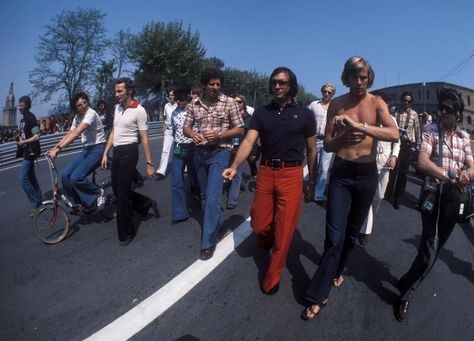
Niki Lauda, Jody Scheckter, Emerson Fittipaldi and James Hunt.
Fortunately, just prior to the start of the 1976 season, he was the only experienced driver available to fill an unexpected vacancy when Emerson Fittipaldi left McLaren.
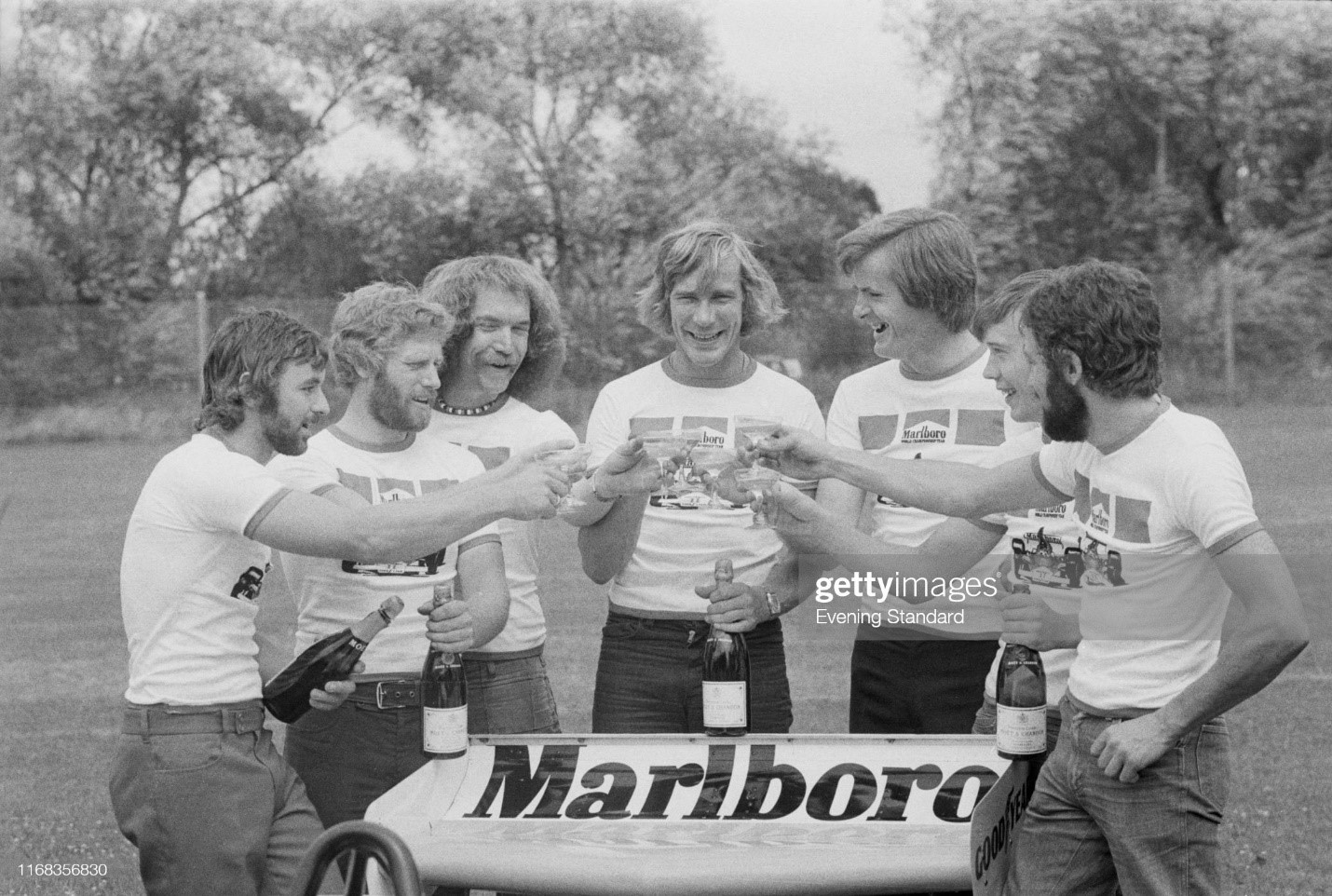
James Hunt with Marlboro Team McLaren (they are: Roy Reader, Mark Scott, Kay Grant, Lance Gibbs, Alastair Caldwell and Howard Moore), UK, 20th July 1976. Photo by Evening Standard/Hulton Archive/Getty Images.
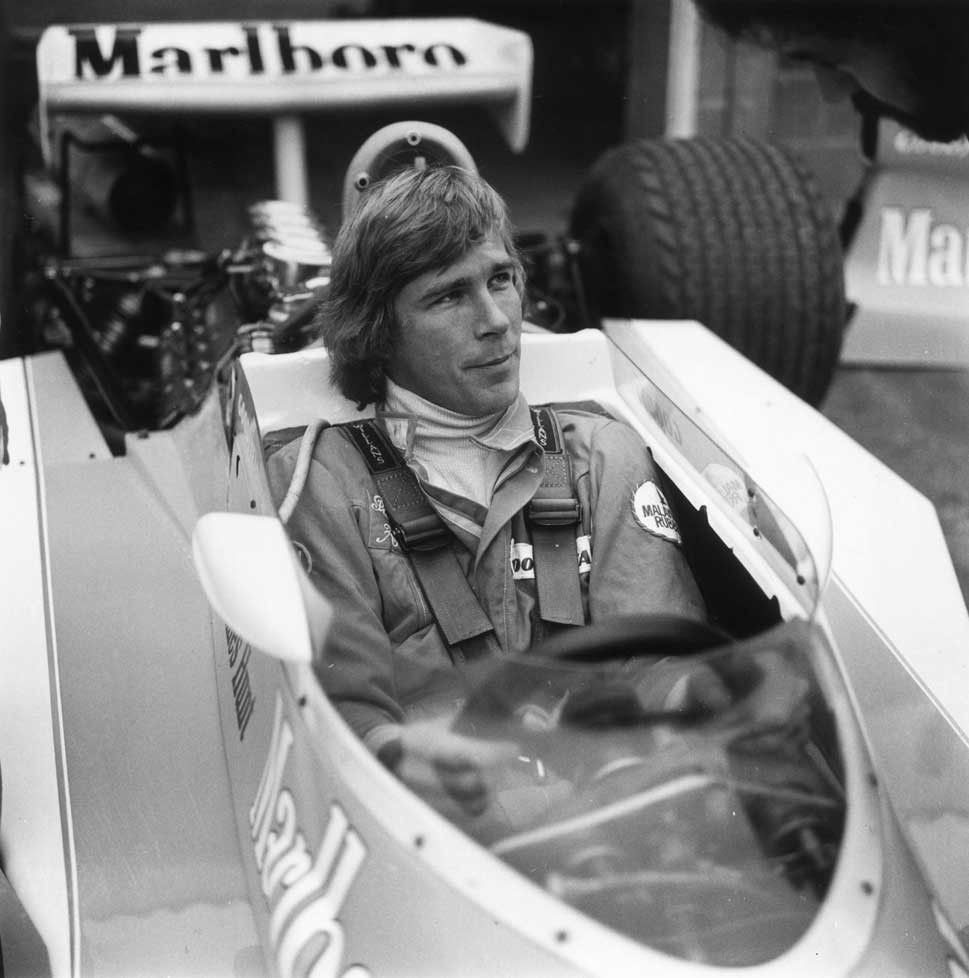
James Hunt in a McLaren.
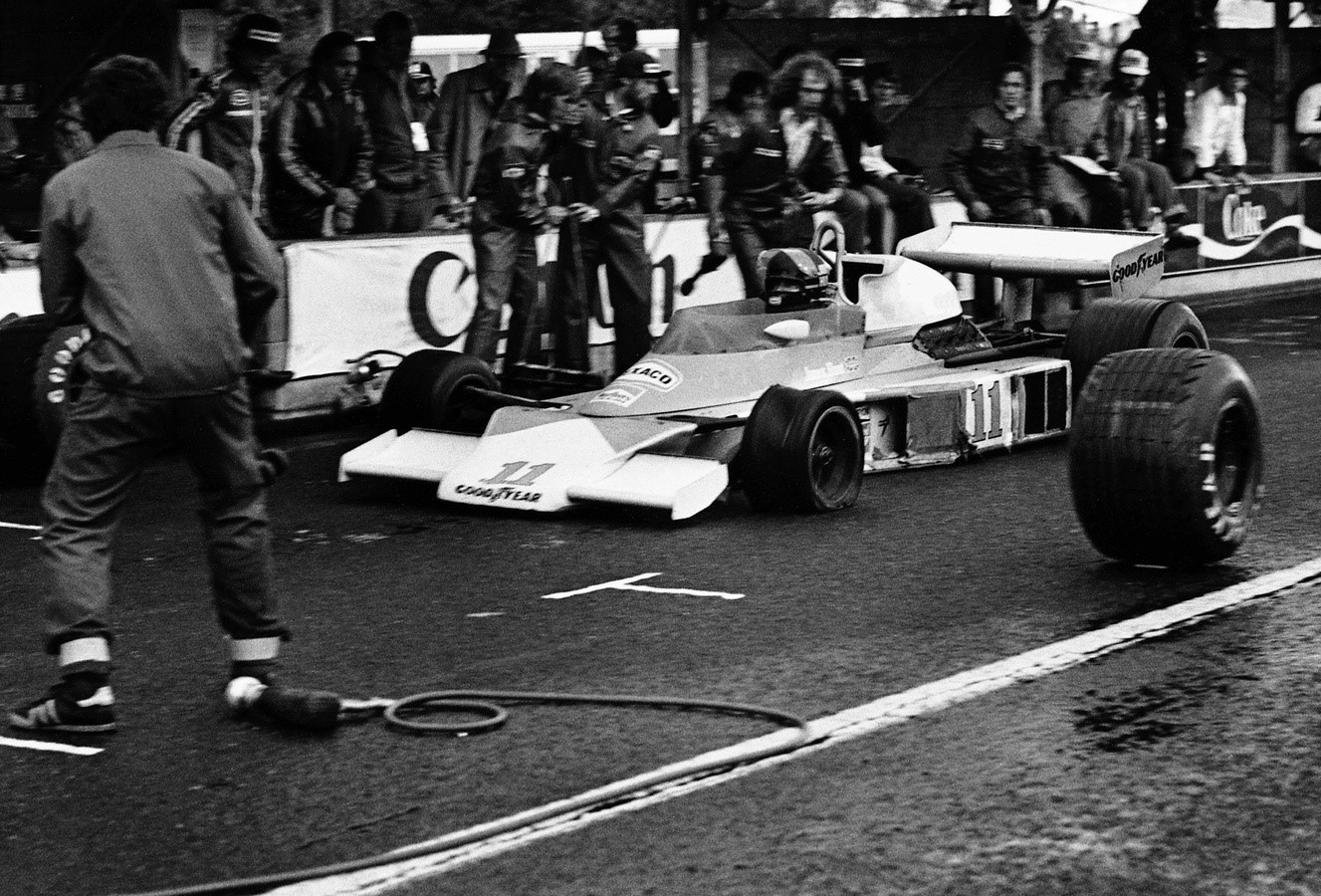
James Hunt, McLaren.
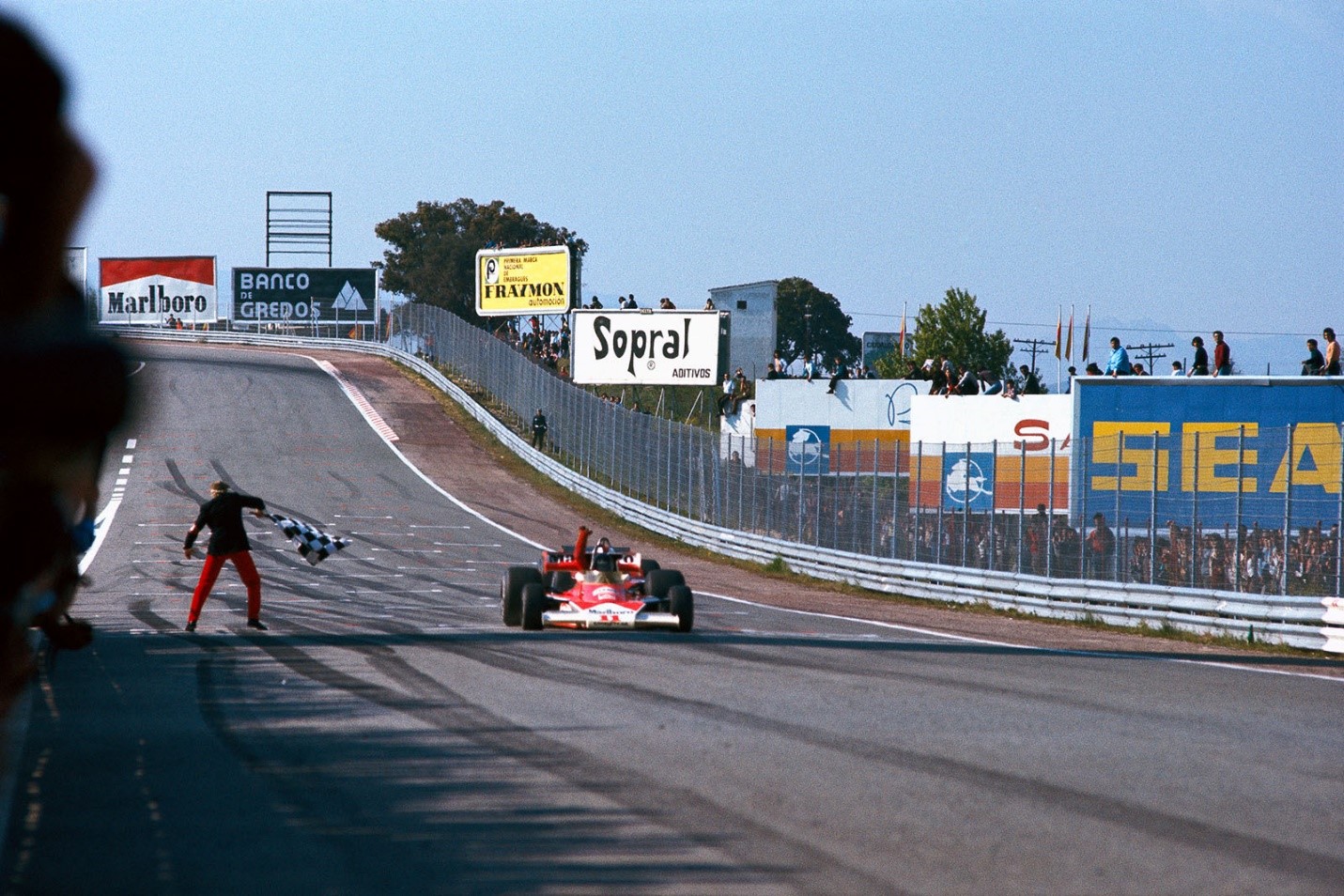
McLaren driver James Hunt, closely followed by the overlapped Ferrari of Regazzoni, crosses the line and takes the chequered flag to win the Jarama Grand Prix near Madrid, Spain, on 02 May 1976. Photo by Rainer Schlegelmilch.
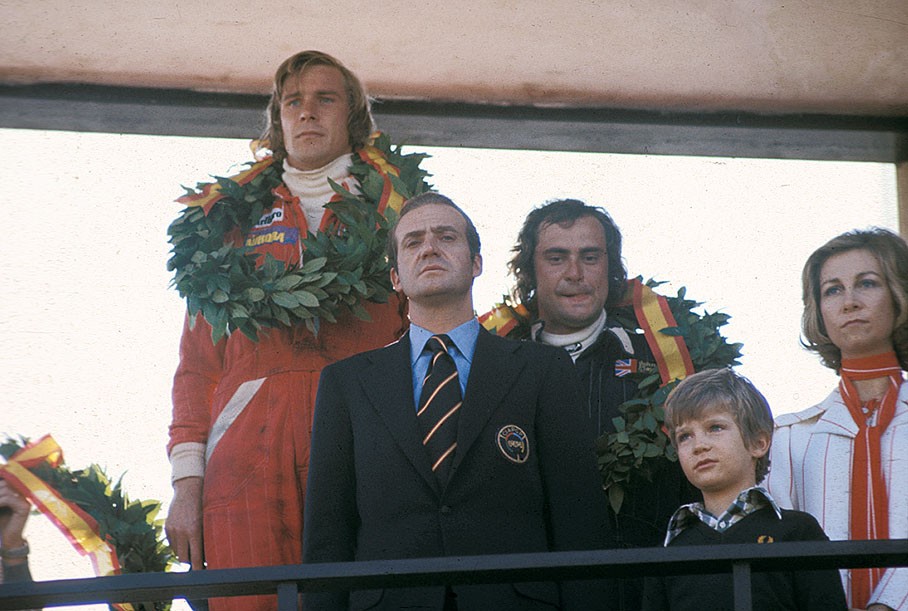
Podium ceremony for James Hunt, winner of the 1976 Spanish Grand Prix, with third placed Gunnar Nilsson. In front of him Juan Carlos, King of Spain, his wife Sophia and Prince Felipe. Photo by Rainer Schlegelmilch.
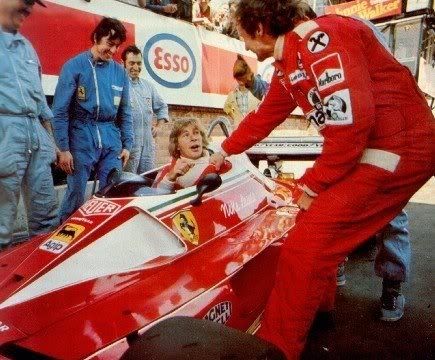
Belgian Grand Prix on 16 May 1976. James Hunt tries out Niki Lauda’s Ferrari 312T2 for size, action.
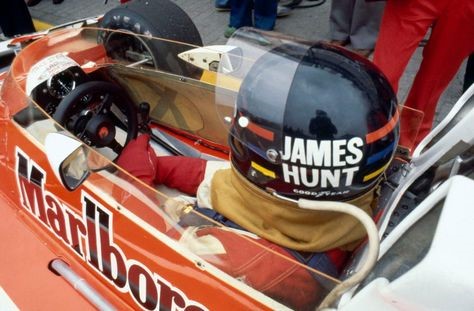
James Hunt, McLaren M23 Ford - Cosworth DFV 3.0 V8 (RET), at the Monaco Grand Prix on 30 May 1976. Notice the message on the dash. Tale it easy lad ......
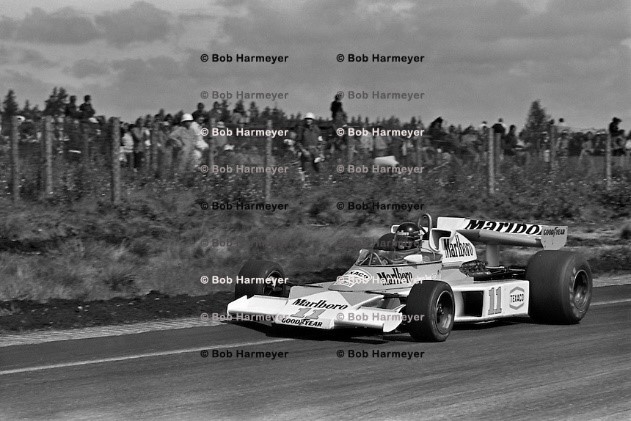
James Hunt, McLaren M 23 8-2 Ford Cosworth, during the Grand Prix of Sweden at Scandinavian Raceway near Anterstorp, Sweden, on June 13, 1976. Photo by Bob Harmeyer.
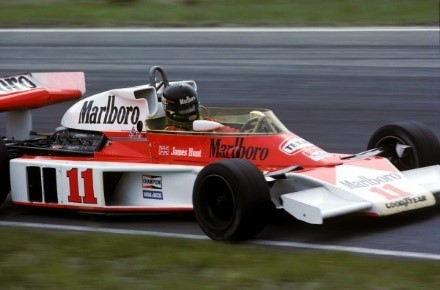
James Hunt at the 1976 Swedish Grand Prix at Anderstorp.
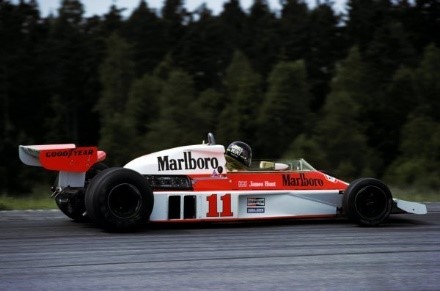
James Hunt at the 1976 Swedish Grand Prix at Anderstorp.
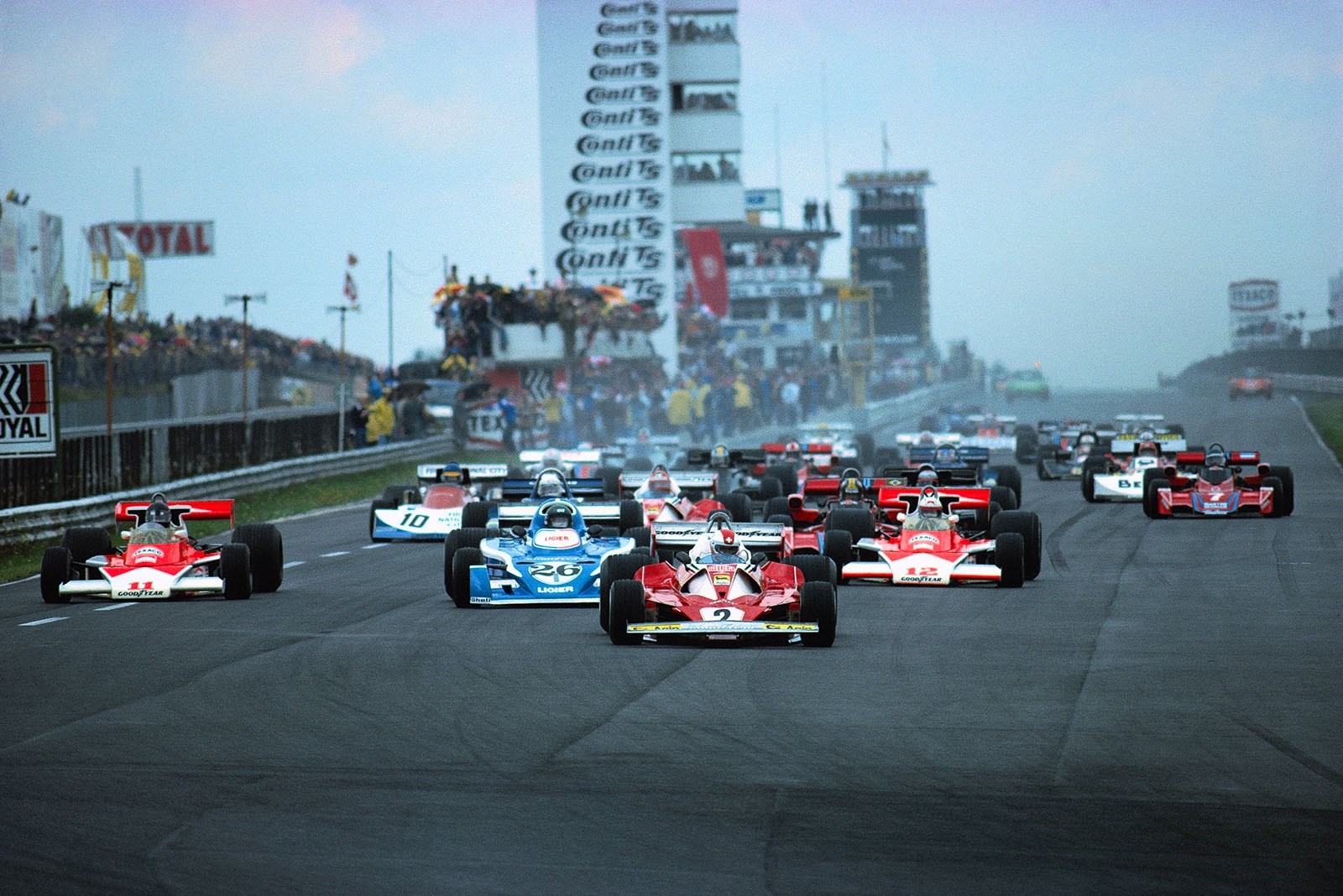
Swiss Ferrari driver Clay Regazzoni has taken the lead at the 1st start for the German Grand Prix at Nuerburgring on 01 August 1976. Photo by Rainer Schlegelmilch.
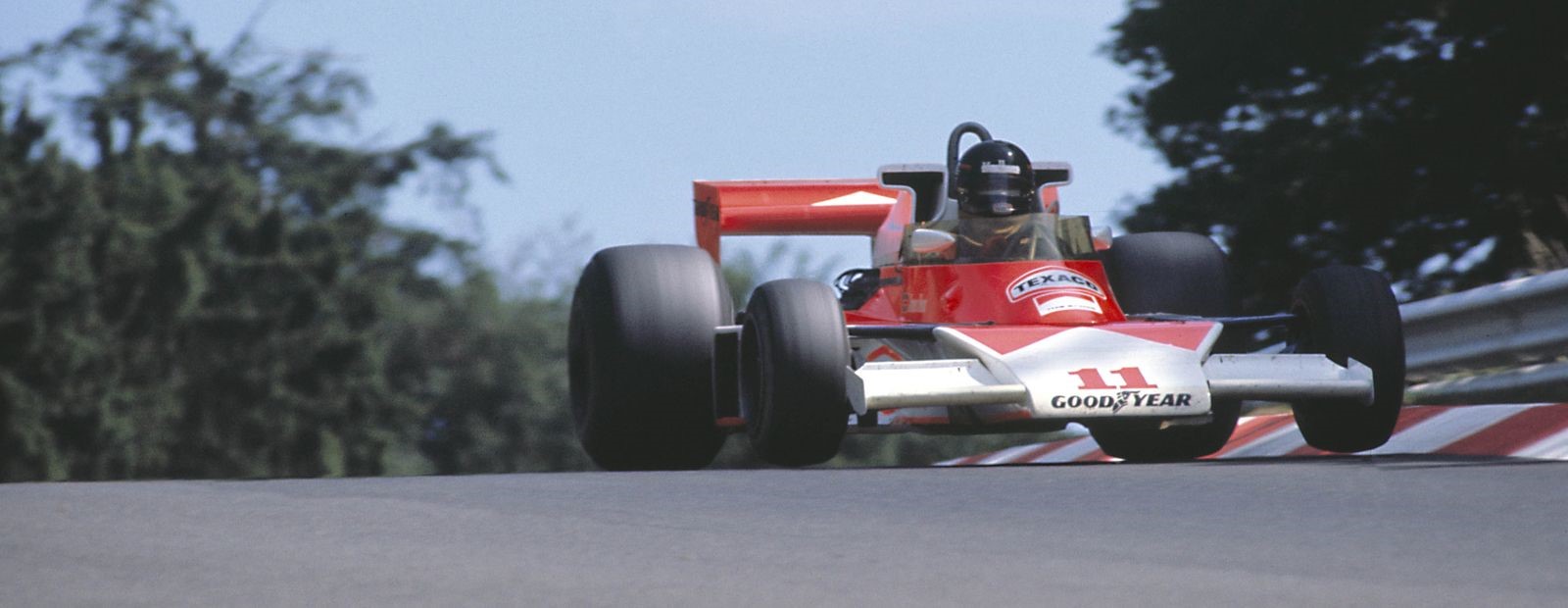
James Hunt at the 1976 German Grand Prix.
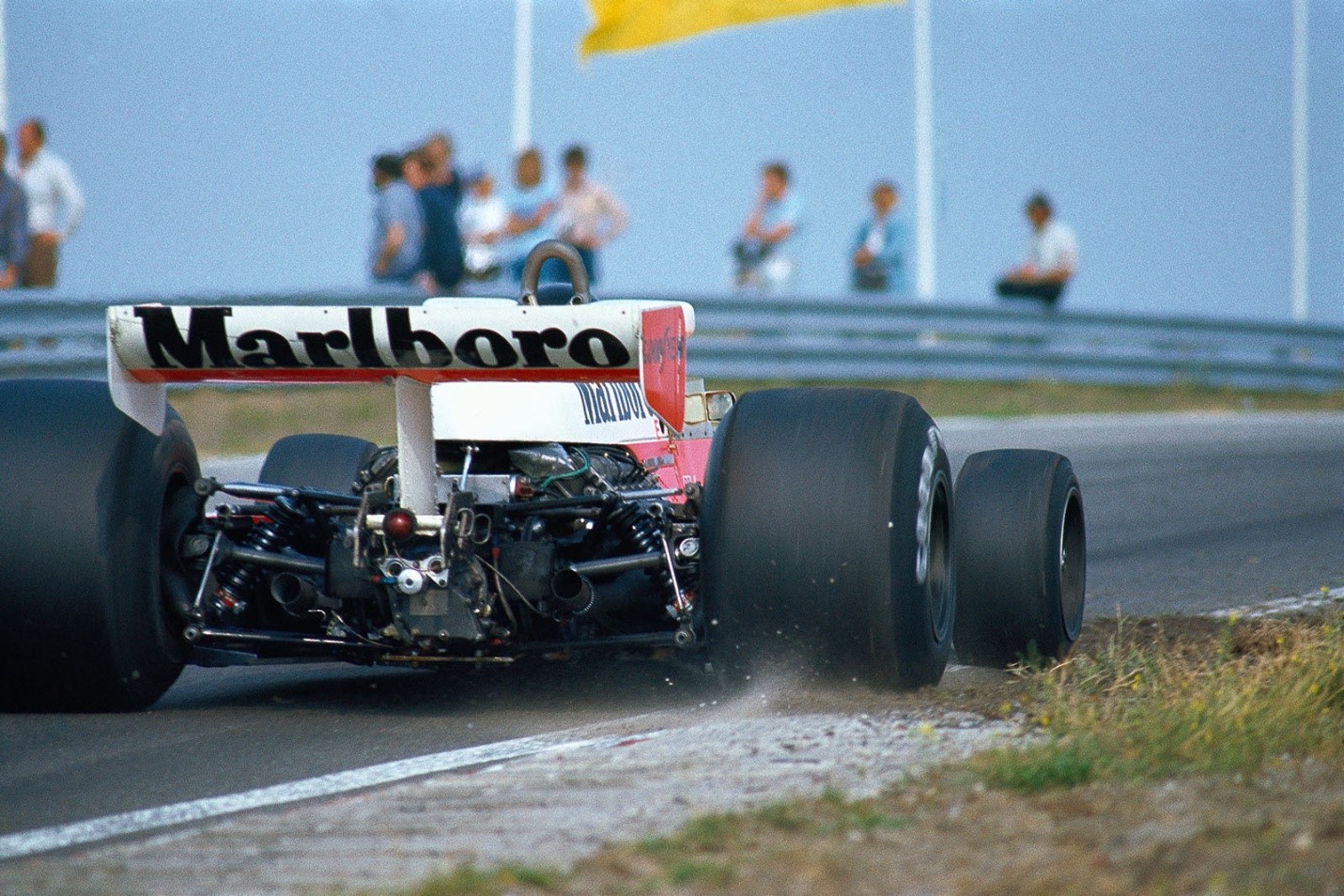
Race winner James Hunt, McLaren-Cosworth M23, besides the track at the Dutch Grand Prix in Zandvoort on 29 August 1976. Photo by Rainer Schlegelmilch.
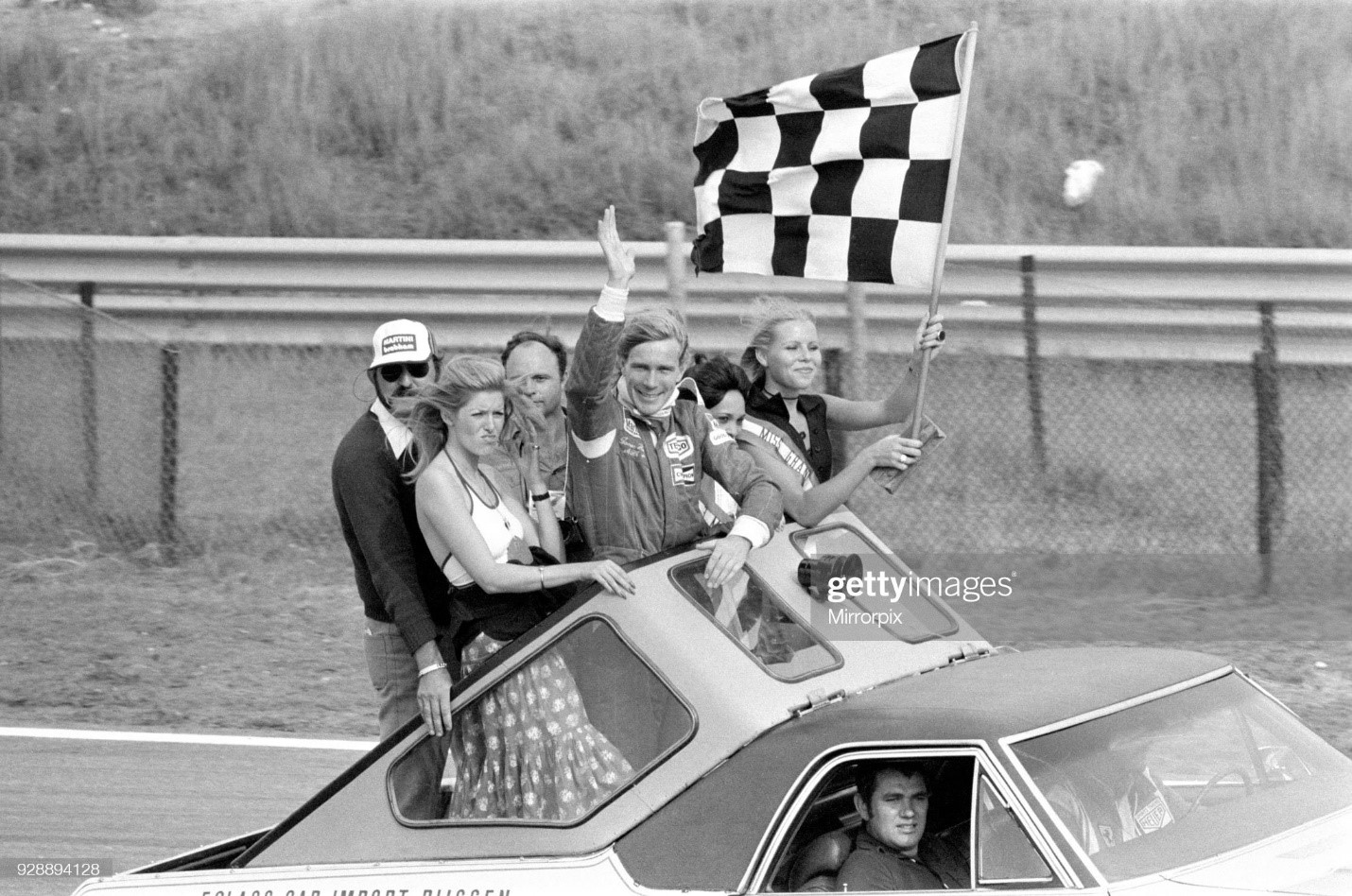
James Hunt: the victory run at the 1976 Dutch Grand Prix. Picture dated 29th August 1976.
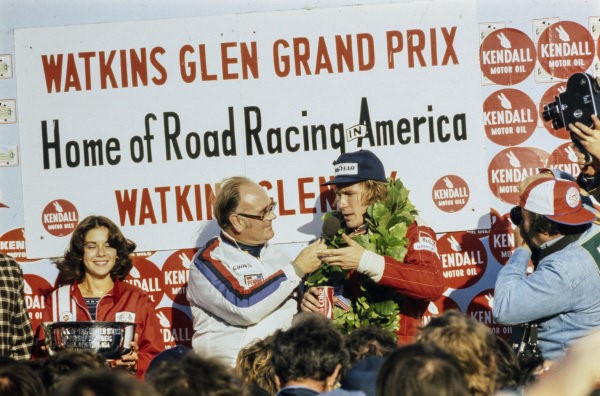
Winner of the US GP James Hunt is interviewed on the podium on 10 October 1976. Photo by David Phipps.
James was immediately fast but only became a regular winner when he learned to control his explosive emotions, though he remained prone to temper tantrums. He attacked a driver and a marshal with his fists and, on more than one occasion, stood in the middle of the track screaming profane abuse at bemused opponents. James joked that his reputation for road rage made rivals move out of his way: "because they thought I was barking mad!"
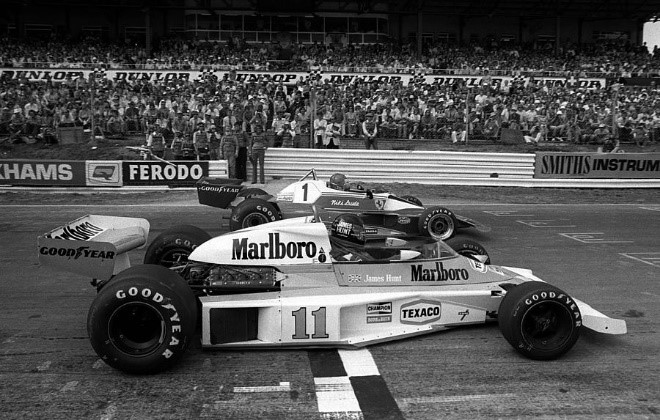
James Hunt and Niki Lauda. Photo by Christopher Campbell.
His closest friend among the drivers was Niki Lauda, with whom he became embroiled in a thrilling battle for the 1976 driving title.
Lauda had been well in front until he was nearly killed in a fiery accident at the Nurburgring. James won that race and five others to force a championship showdown with the miraculously recovered Lauda in the last race of the season.
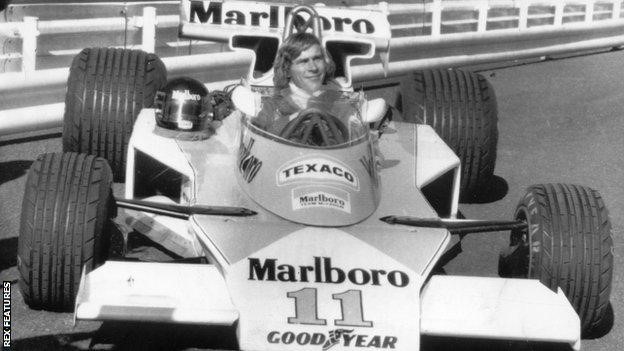
James Hunt, McLaren, was in relaxed mood on arrival in Fuji, enjoying the pre-race publicity.
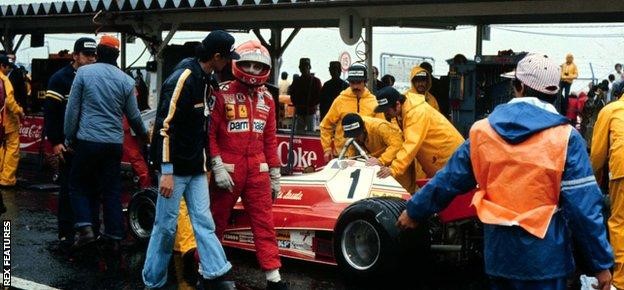
After just two laps, Lauda, who later admitted to being "panic stricken", stopped in the pits and stepped out of his car to retire on 24 October 1976.
It was so wet in Japan that Lauda decided it was too dangerous to race and parked his Ferrari after a couple of laps. Hunt stayed out in his McLaren and drove furiously to finish third and become World Champion.
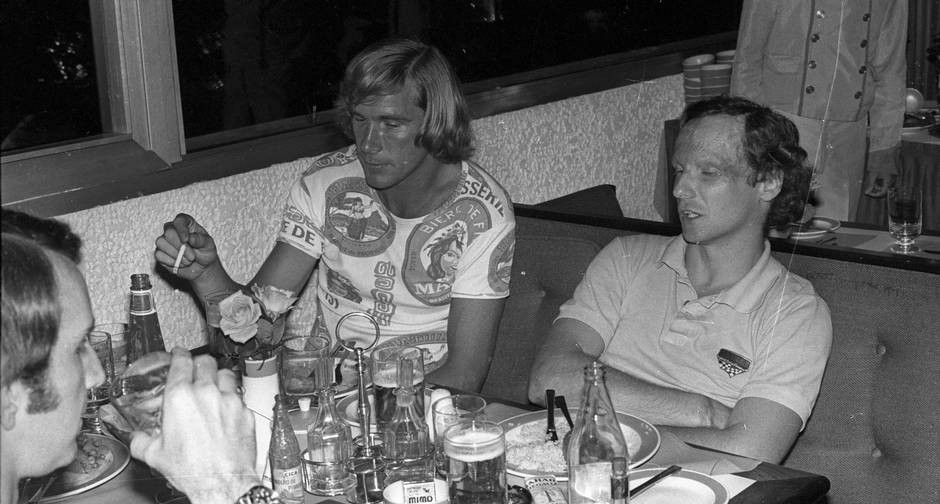
James Hunt with Niki Lauda.
“I remember very well in 1976, I had my accident and I couldn’t race for three races but James was pressing on all through the year and I must say today that the McLaren he was driving was not as competitive as my Ferrari. And in the end he did beat me by one point at the Japanese Grand Prix for the Championship. So, from my point of view, James was an incredible personality because you could see with the people on the street talking, low key maybe, you could even put him at the table with Queen of England, he would always know how to behave. As for me he was the most charismatic personality ever been in Formula 1.” Niki Lauda
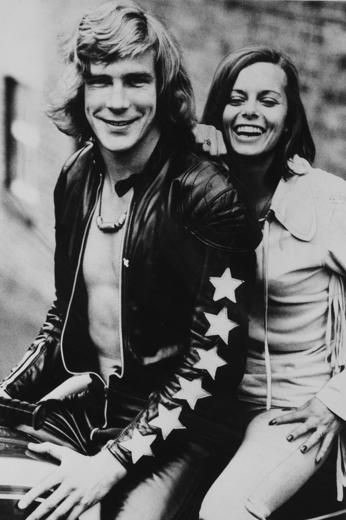
His good looks, extrovert personality and unconventional behaviour made the 'Golden Boy' hugely popular with a wide public.
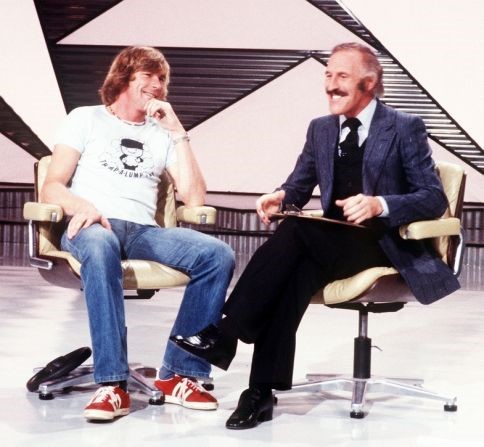
He hated dressing up, always wore tattered blue jeans and often walked around in his bare feet, even on formal occasions.
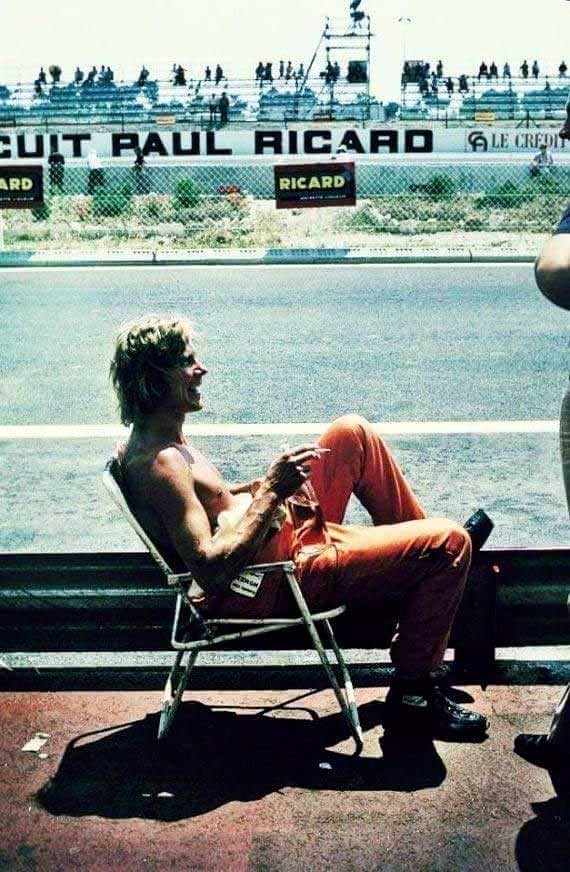
He drank heavily, smoked 40 cigarettes a day, occasionally took drugs, had a madcap social life and a succession of beautiful girlfriends.
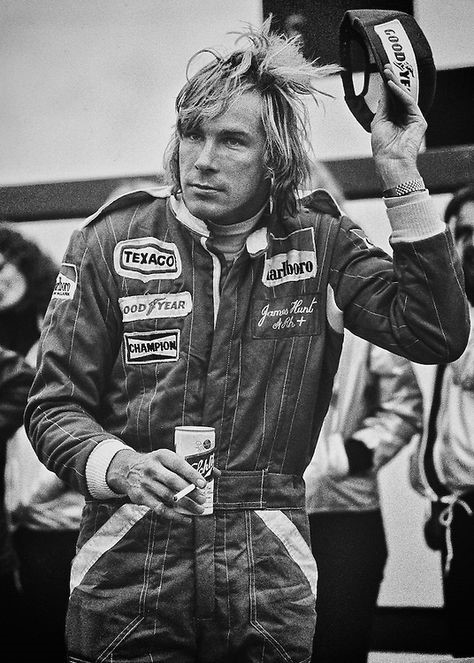
While he became a media darling for the tabloid press his behaviour was less appreciated by Formula One journalists, who found him a frustrating mixture of boisterous charm and overbearing conceit. Twice he was voted the least liked driver and despairing members of the Formula One establishment accused him of bringing the sport into disrepute.
Having achieved his championship goal his enthusiasm for racing began to wane.
He admitted he never really enjoyed driving and finally, after two more seasons with McLaren, then a few races with Wolf, he retired mid-way through 1979: "for reasons of self-preservation."
He found it difficult to adjust to civilian life and suffered deep depressions that even wilder carousing failed to dispel.
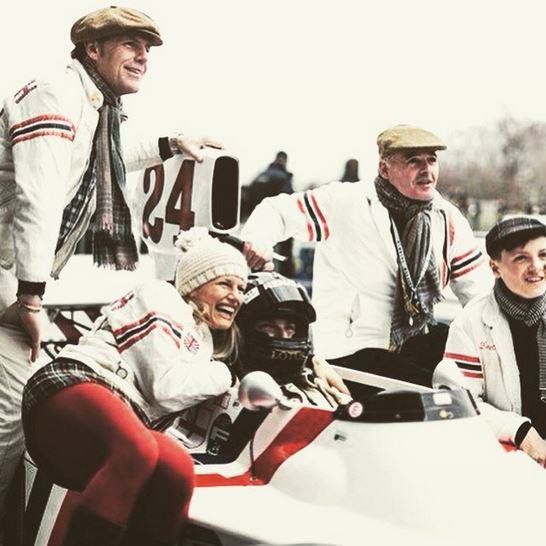
James Simon Wallis Hunt was born in Belmont, Surrey, the second child of Wallis Glynn Gunthorpe Hunt (1922–2001) and Susan (Sue) Noel Wentworth (née Davis) Hunt.
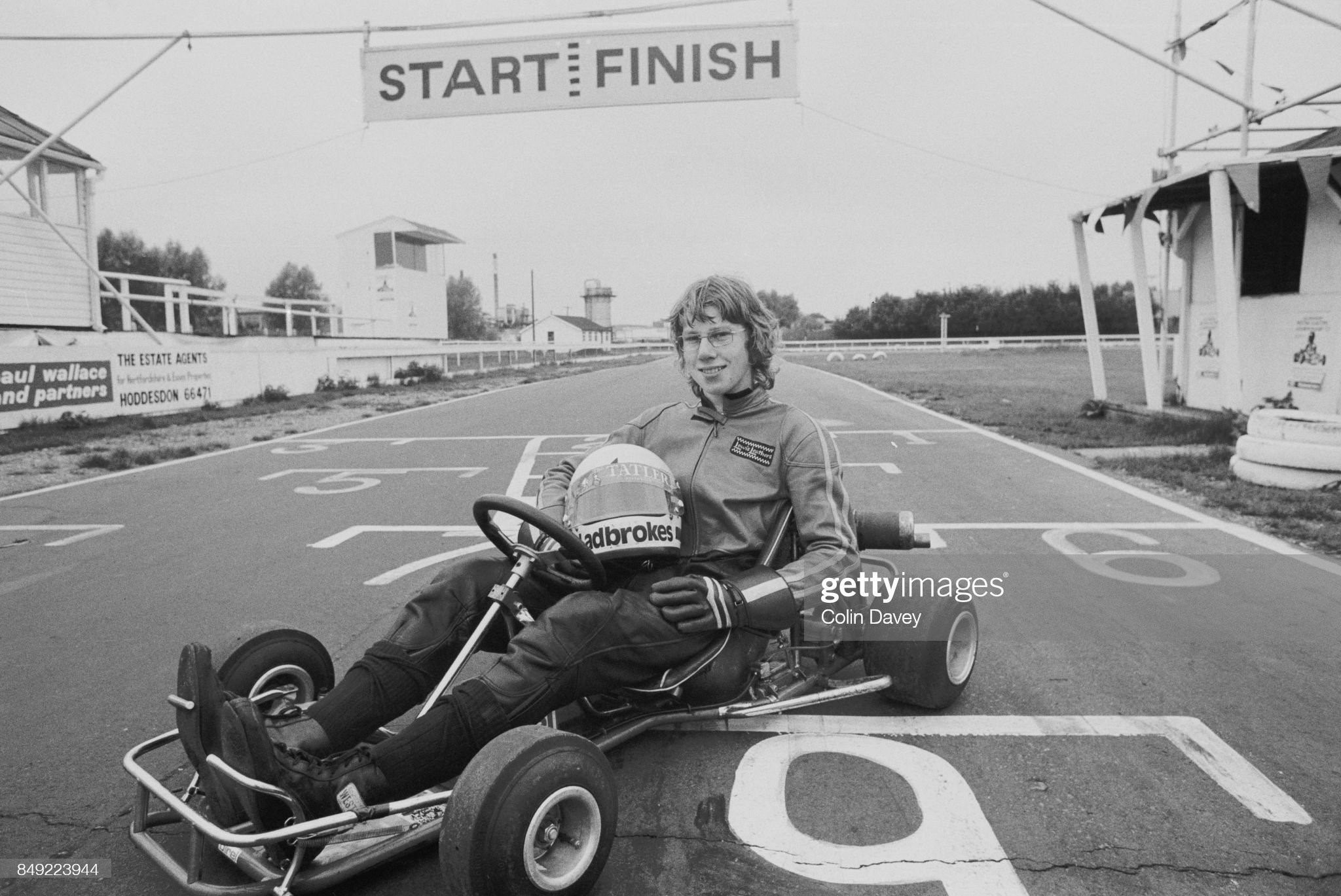
English racing driver David Hunt (1960 - 2015), younger brother of James Hunt, on a go-kart, 19th August 1977. Photo by Colin Davey/Evening Standard/Hulton Archive/Getty Images.
He had an elder sister, Sally, three younger brothers, Peter, Timothy and David and one younger sister, Georgina. Wallis Hunt was descended on his mother's side from the industrialist and politician Sir William Jackson, 1st Baronet. Hunt's family lived in a flat in Cheam, Surrey, moved to Sutton when he was 11 and then to a larger home in Belmont. He attended Westerleigh Preparatory School, St Leonards-on-Sea Sussex and later Wellington College.
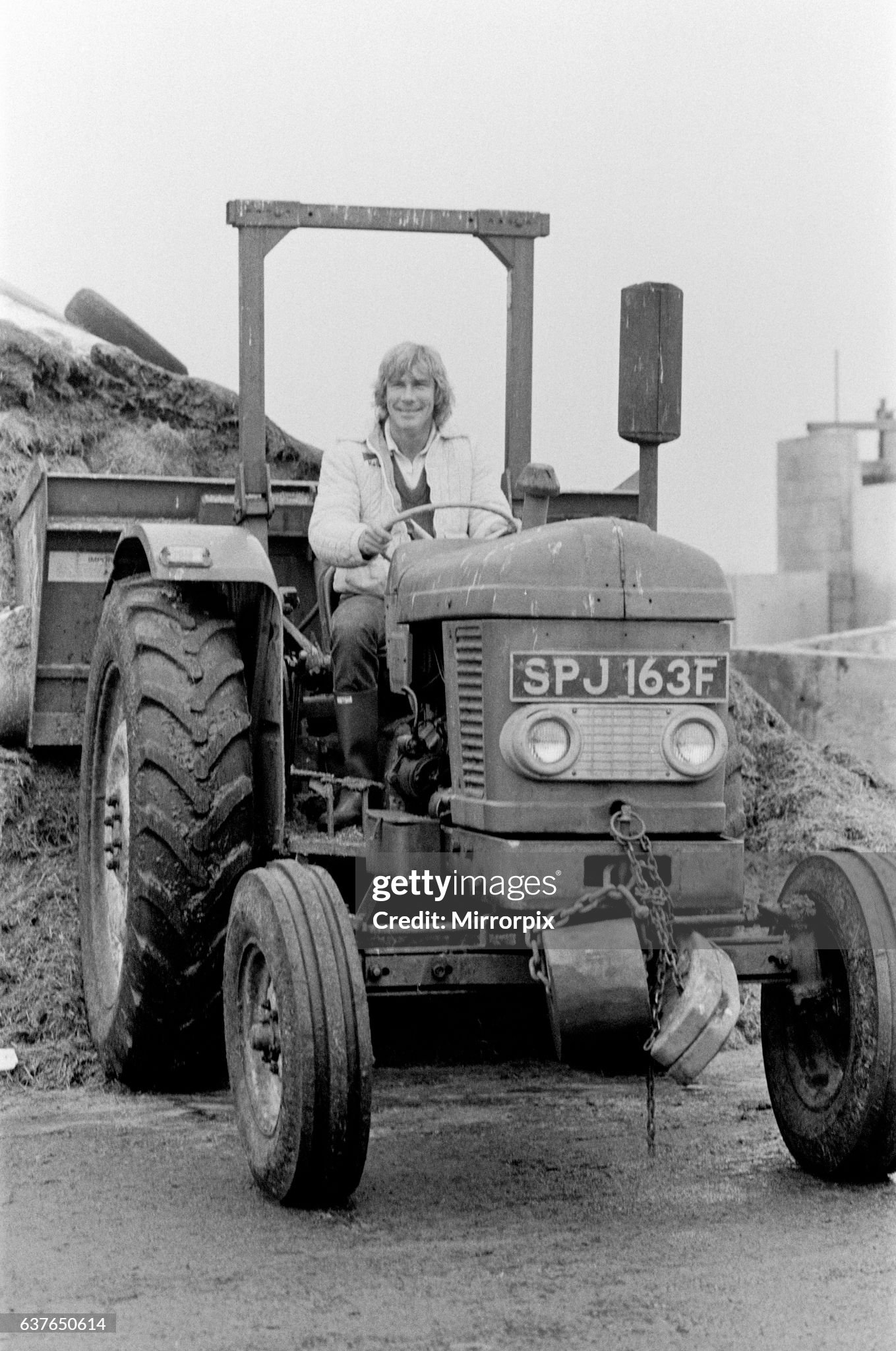
James Hunt on the 450 acre farm in Buckinghamshire, that he owns since retiring from World Motor Racing in 1979. James is pictured here on his tractor. Picture taken on 19th January 1982. Photo by Kent Gavin / Mirrorpix / Getty Images.
Hunt first learned to drive on a tractor on a farm in Pembrokeshire, Wales, while on a family holiday, with instruction from the farm's owner, but he found changing gears frustrating because he lacked the required strength. Hunt passed his driving test one week after his seventeenth birthday, at which point he said his life "really began". He also took up skiing in 1965 in Scotland and made plans for further ski trips.
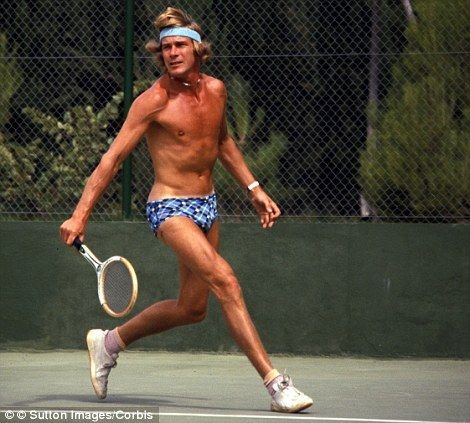
Blond and debonair, the ladies liked Hunt as much as he liked them ... so much so that a queue of air hostesses are reputed to have waited outside his bedroom door in Japan.
Before his eighteenth birthday, he went to the home of Chris Ridge, his tennis doubles partner. Ridge's brother Simon, who raced Minis, was preparing his car for a race at Silverstone that weekend. The Ridges took Hunt to see the race, which began his obsession with motor racing.
Hunt's racing career started off in a racing Mini. He first entered a race at the Snetterton Circuit in Norfolk, but race scrutineers prevented him from competing, deeming the Mini to have many irregularities, which left Hunt and his team mate, Justin Fry, upset. Hunt later brought the necessary funding from working as a trainee manager of a telephone company to enter three events. At this point Fry made the decision to part company with the team, owing to the irregularities and modifications that were happening to the cars they were using.
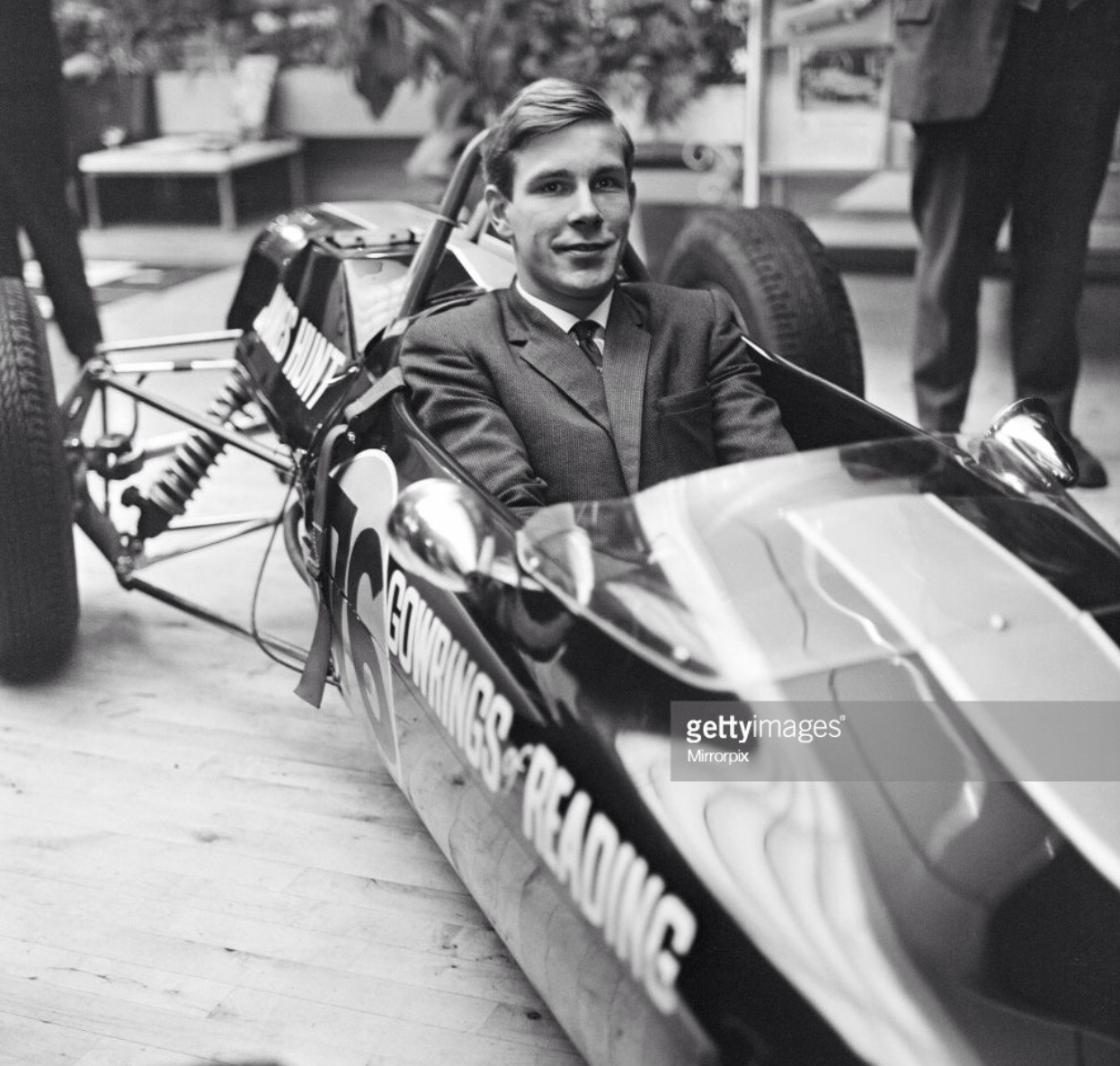
Who is pretty-boy then! 21 years old James Hunt aboard his brand-new Merlyn Mk11A Formula Ford on 02 December 1968… Photo by Getty Images.
Hunt graduated to Formula Ford in 1968.
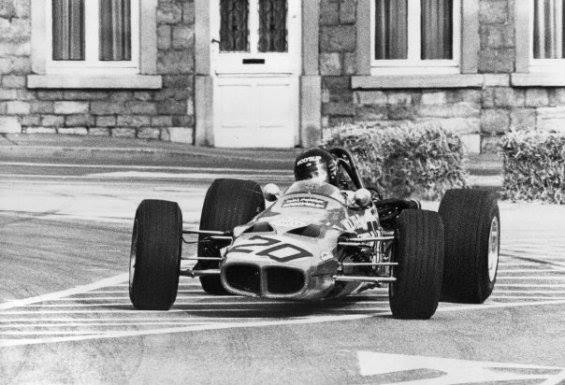
He drove a Russell-Alexis Mark 14 car bought through a hire-purchase scheme. In his first race at Snetterton, Hunt had lost 15 hp from an incorrect engine ignition setting, but managed to finish fifth. He took his first win at Lydden Hill and also set the lap record on the Brands Hatch short circuit.
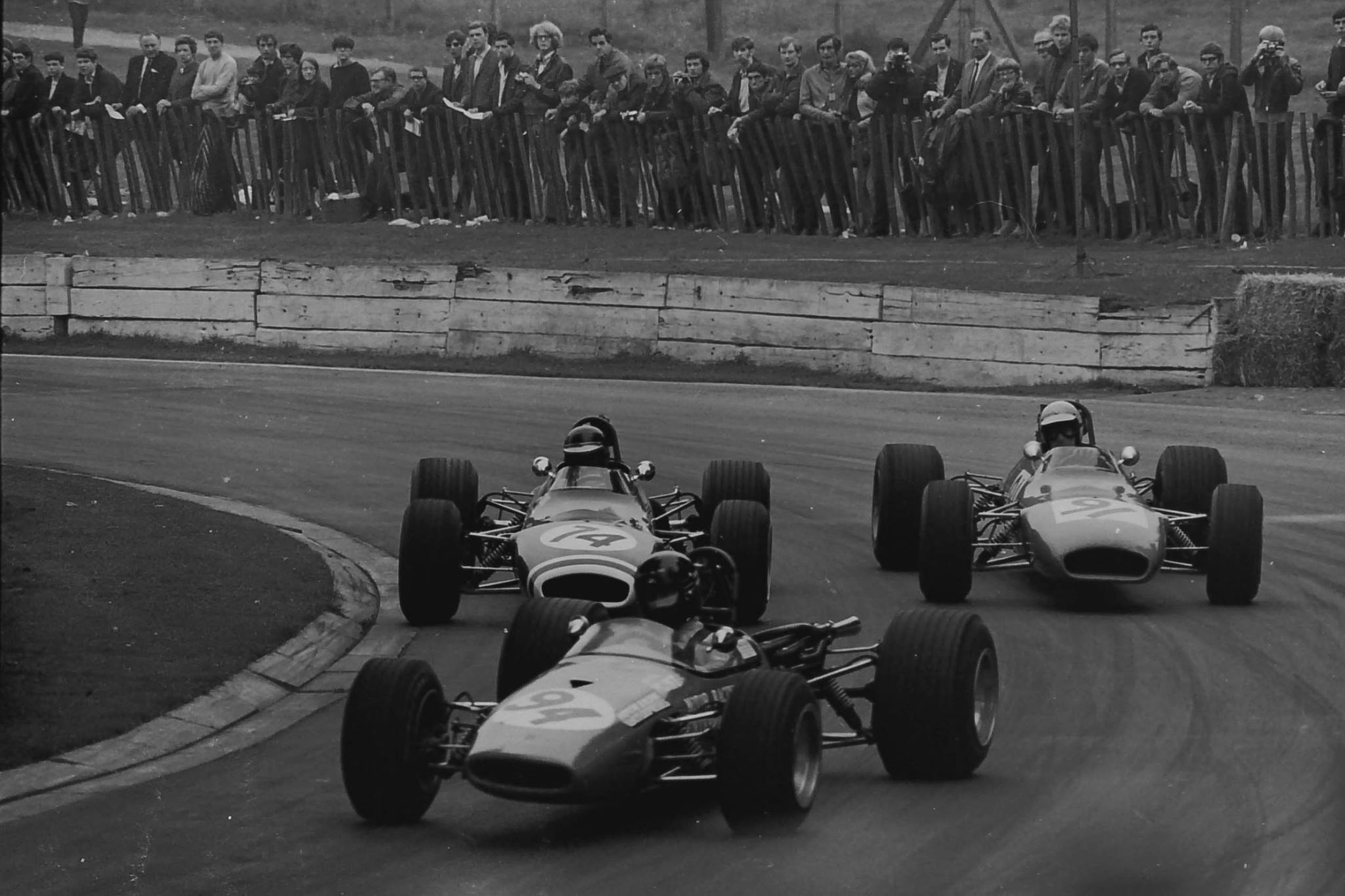
James Hunt driving a Lotus 59 in Formula 3 in 1969 at Crystal Palace.
In 1969, Hunt raced in Formula Three with a budget, provided by Gowrings of Reading, which bought a Merlyn Mark 11A. Gowrings intended to run the car in the final two races of 1968. Hunt won several races and achieved regular high-placed finishes, which led to the British Guild of Motoring Writers awarding him a Grovewood Award as one of the three drivers judged to have promising careers.
Hunt was involved in a controversial incident with Dave Morgan during a battle for second position in the Formula Three Daily Express Trophy race at Crystal Palace on 3 October 1970. Having banged wheels earlier in a very closely fought race, Morgan attempted to pass Hunt on the outside of South Tower Corner on the final lap but, instead, the cars collided and crashed out of the race. Hunt's car came to rest in the middle of the track, minus two wheels. Hunt got out, ran over to Morgan and furiously pushed him to the ground, which earned him severe official disapproval. Both men were summoned by the RAC and, after hearing evidence from other drivers, Hunt was cleared by a tribunal and Morgan was given a 12-month suspension of his racing licence, but was subsequently allowed to progress to Formula Atlantic in 1971. Hunt later met with John Hogan and racing driver Gerry Birrell to obtain sponsorship from Coca-Cola.
Hunt's career continued in the works March team for 1972. His first race at Mallory Park saw him finish third, but he was told by race officials he had been excluded from the results, as his engine was deemed to be outside the regulations. The car, however, passed tests at the next two races at Brands Hatch. In these races, Hunt finished fourth and fifth respectively. He collided with two cars at Oulton Park but finished third at Mallory Park after a long duel with Roger Williamson. The cars did not appear at Zandvoort, but Hunt still attended the race as a spectator.
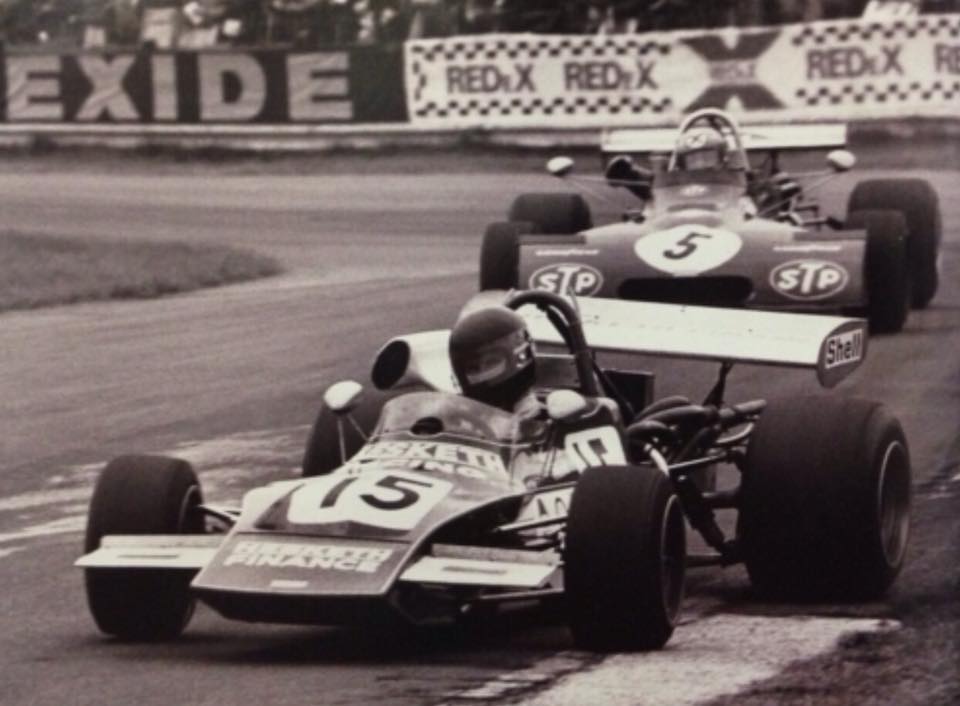
James Hunt, March 712M, followed by Niki Lauda, March 722, at Outon Park on 16 September 1972.
In May 1972, it was announced by the team that he had been dropped from the STP-March Formula 3 team and replaced by Jochen Mass. When Hunt attempted to contact March, he was unable to get any response from his employers. Hunt decided to consult Chris Marshall, his former team manager, who explained that a spare car was available. This followed a period characterised by a series of mechanical failures. Hunt decided, against the express instructions of March director Max Mosley, to race at Monaco in a March from a different team. This had been vacated by driver Jean-Claude Alzerat, after Hunt's own March had first broken down and then been hit by another competitor in a practice lap.
Hesketh purchased a March 731 chassis and it was developed by Harvey Postlethwaite. The team was initially not taken seriously by rivals, who saw the Hesketh team as party goers enjoying the glamour of Formula One.
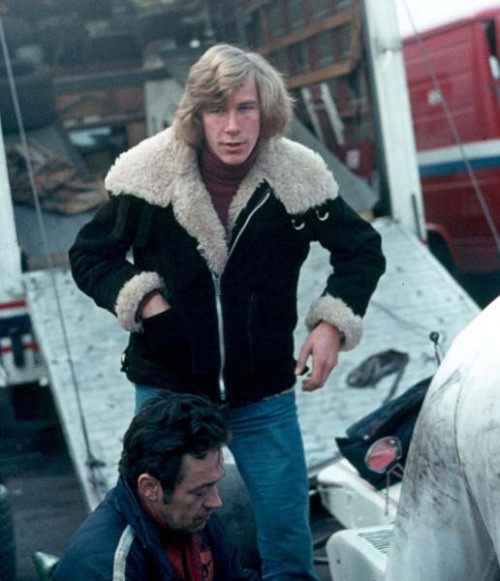
James Hunt at the Race of Champions in 1973.
However, the Hesketh March proved much more competitive than the works March cars and their best result was second place at the 1973 United States Grand Prix. Hunt also made a brief venture into sports car racing at the 1973 Kyalami Nine Hours, driving a Mirage M6 along with Derek Bell, finishing second.
After the season's end, Hunt was awarded with the Campbell Trophy from the RAC marking his performance in Formula One as the best by a British driver.
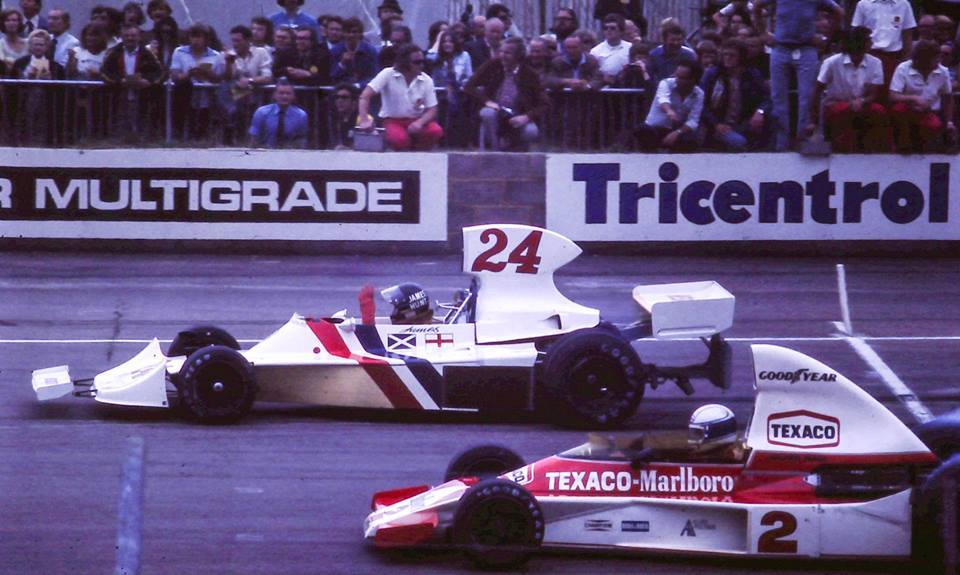
For the 1974 season, Hesketh Racing built a car, inspired by the March, called the Hesketh 308, but an accompanying V12 engine never materialised. Hunt's first test of the car came at Silverstone and found it more stable than its predecessor, the March 731. Hunt was retained on a £15,000 salary. The Hesketh team captured the public imagination as a car without sponsors' markings, a teddy-bear badge and a devil-may-care team ethos, which belied the fact that their engineers were highly competent professionals.
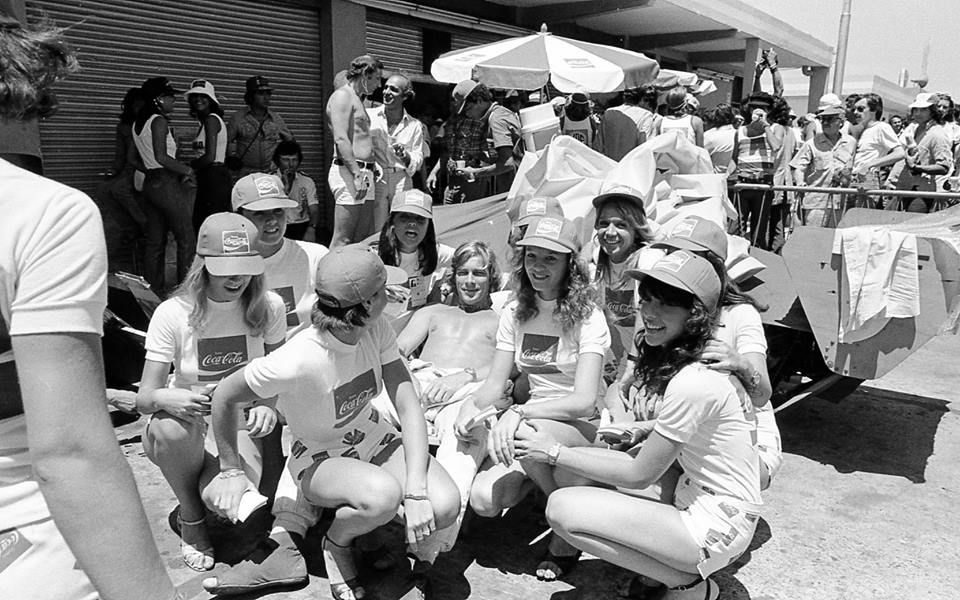
James Hunt and girls at the Argentinean Grand Prix on 13 January 1974.
In Argentina, Hunt qualified fifth and led briefly before being overtaken by Ronnie Peterson before Hunt spun off the track and eventually retired due to engine failure.
In South Africa, Hunt retired from fifth place with a broken driveshaft. Hunt's season highlight was a victory at the BRDC International Trophy non-championship race at Silverstone, against the majority of the regular F1 field.
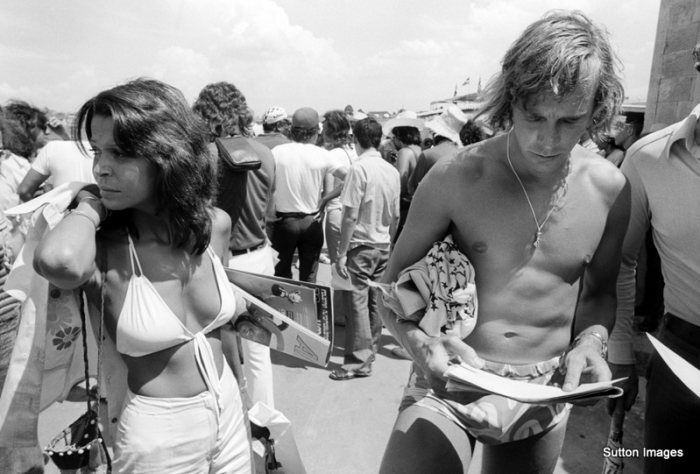
James Hunt at the Brazilian Grand Prix on 27 January 1974.
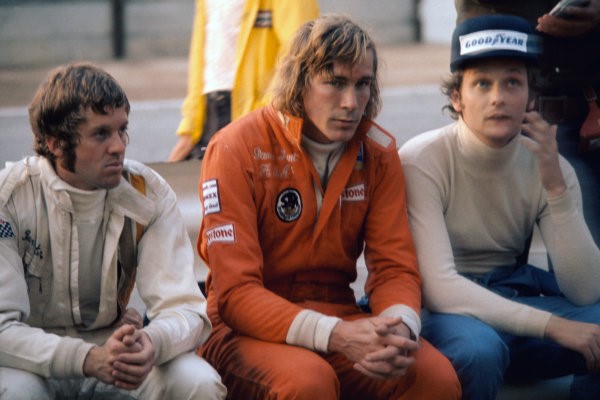
Kyalami, South Africa, on 30 March 1974. Ian Scheckter (Lotus 72D-Ford), James Hunt (Hesketh 308-Ford) and Niki Lauda (Ferrari 312B3) sit in the pit lane during a drivers briefing. Photo by LAT Photographic.
Hunt finished sixth in Brazil and retired with an engine failure in South Africa. In Spain, Hunt led the first six laps before colliding with a barrier with the same cause of retirement in Monaco. He had a further two retirements in Belgium and Sweden, both of which were due to mechanical failures.
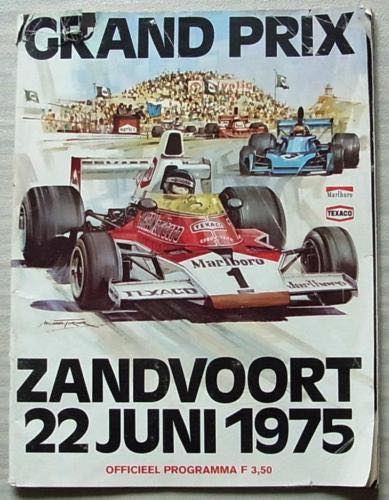
Hunt's first win came in the 1975 Dutch Grand Prix at Zandvoort. He finished fourth in the Championship that year, but Lord Hesketh had run out of funds and could not find a sponsor for his team. With little time left before the 1976 season, Hunt was desperately looking for a drive until Emerson Fittipaldi left McLaren and joined his brother's Copersucar-Fittipaldi outfit. With no other top drivers available, the team management signed Hunt to McLaren – in a deal brokered by Marlboro's John Hogan – for the next season on a $200,000 contract.
The season proved to be one of the most dramatic and controversial on record. While Hunt's performances in the Hesketh had drawn considerable praise, there was some speculation as to whether he could really sustain a championship challenge.
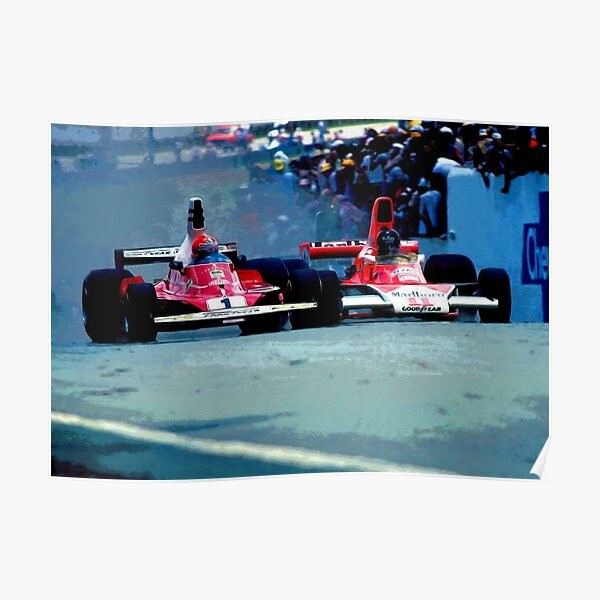
Niki Lauda, Ferrari 312T, vs James Hunt, McLaren M23, at the Brazilian Grand Prix on 25 January 1976.
Now a works McLaren driver, he dispelled many doubters at the first race in Brazil, where, in a hastily rebuilt McLaren M23, he landed pole position in the last minutes of qualifying.
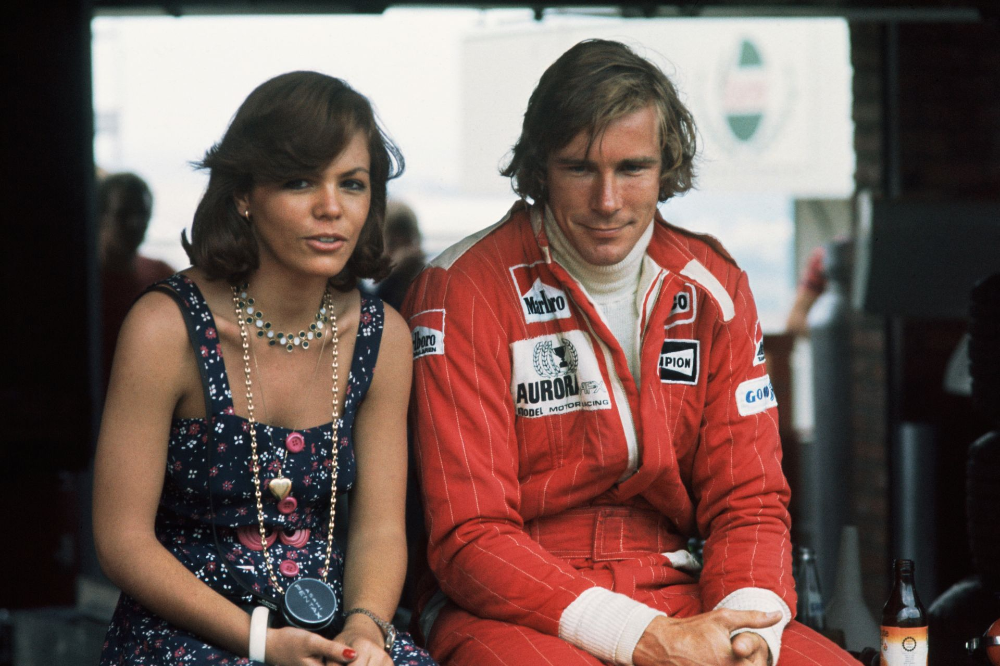
South African Grand Prix at Kyalami, South Africa, on 4th - 6th March 1976. James Hunt with a female fan in the pit lane. Photo by LAT Photographic.
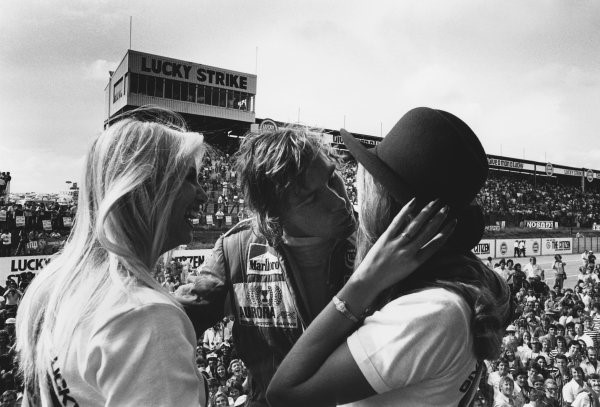
1976 South African Grand Prix. James Hunt, 2nd position. Photo by Motorsport Images.
Over the course of the year he would drive the McLaren M23 to six Grands Prix wins, but with superior reliability, reigning world champion and main rival Niki Lauda had pulled out a substantial points lead in the first few races of the season.
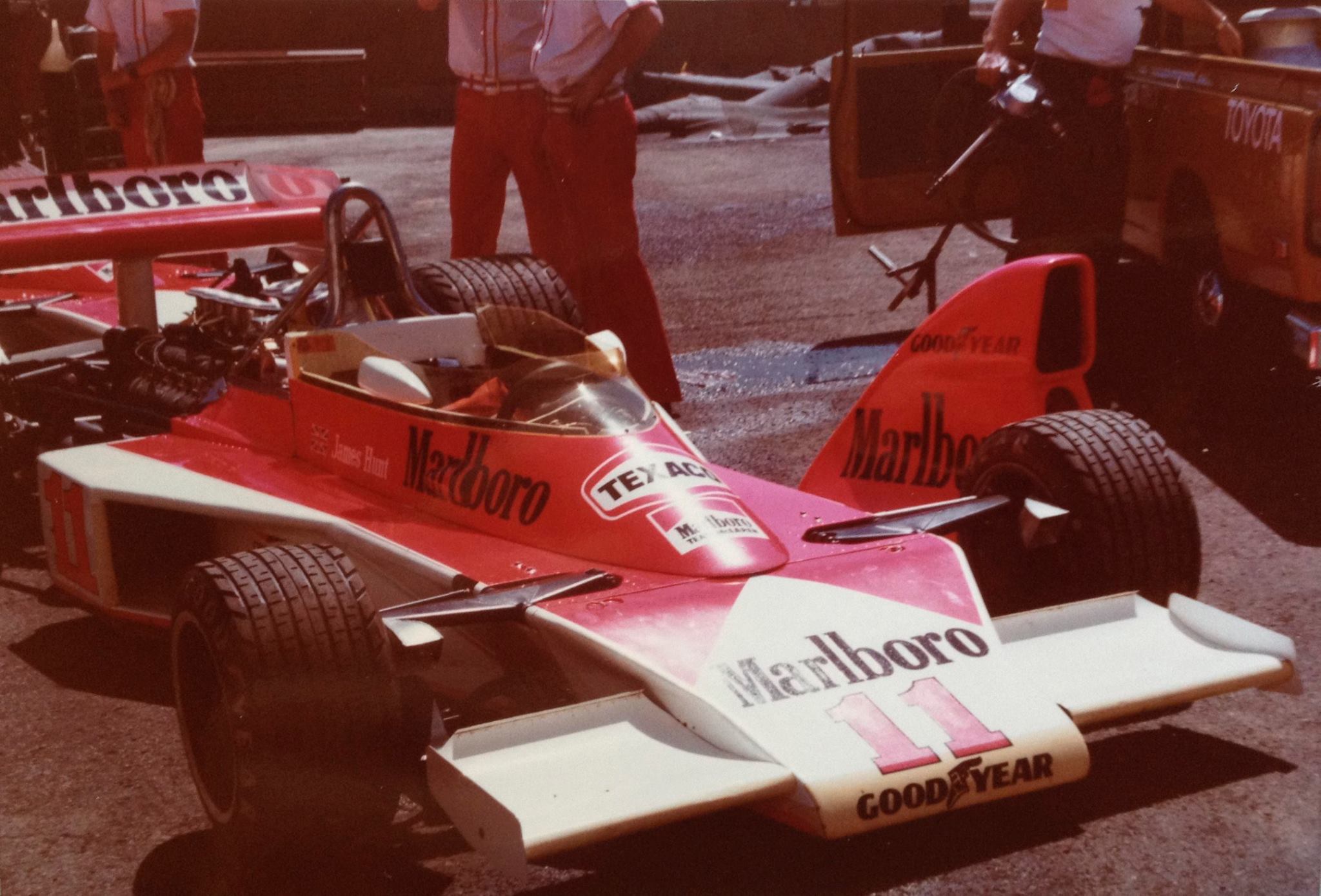
James Hunt’s McLaren in 1976.
Hunt's first race win of 1976, at the fourth race of the season, the Spanish Grand Prix, resulted in disqualification for driving a car adjudged to be 1.8 cm too wide. The win was later reinstated upon appeal, but it set the tone for an extraordinarily volatile season.
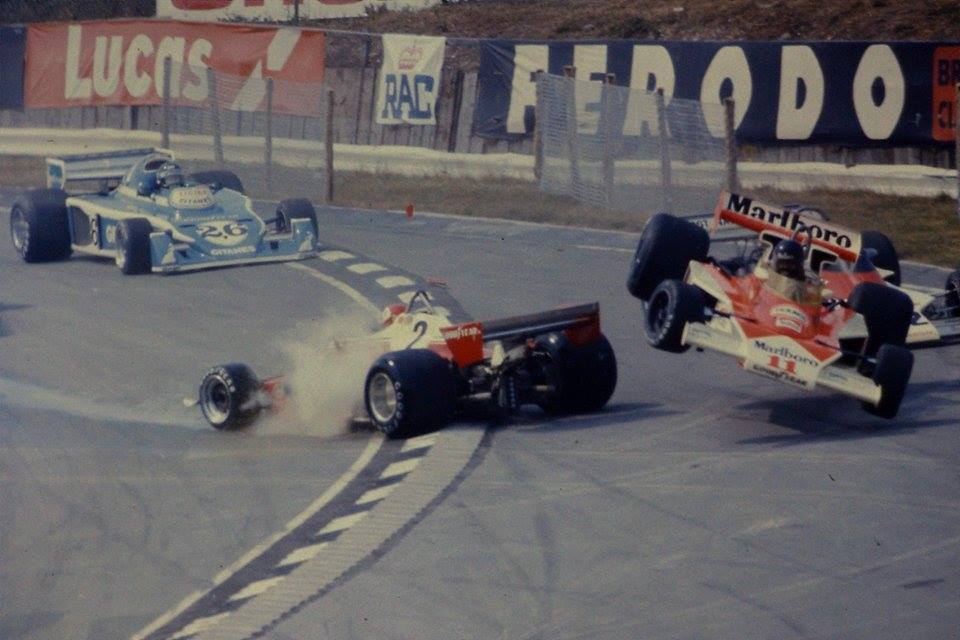
James Hunt, McLaren, crashes into Niki Lauda, Ferrari 312T2, at the British Grand Prix in Brands Hatch on 18 July 1976.
At the British Grand Prix, Hunt was involved in a first corner incident on the first lap with Lauda which led to the race being stopped and restarted. Hunt initially attempted to take a spare car, however this was disallowed and, during this time the original race car was repaired, eventually winning the restarted race. Hunt's victory was disallowed on 24 September by a ruling from the FIA after Ferrari complained that Hunt was not legally allowed to restart the race.
Lauda sustained near-fatal injuries in an accident at the following round, the German Grand Prix at the Nürburgring. Hunt dominated the restarted Nürburgring race, building an immediate lead and remaining unchallenged to the chequered flag.
Lauda's injuries kept him out of the following two races, allowing Hunt to close the gap in the championship chase.
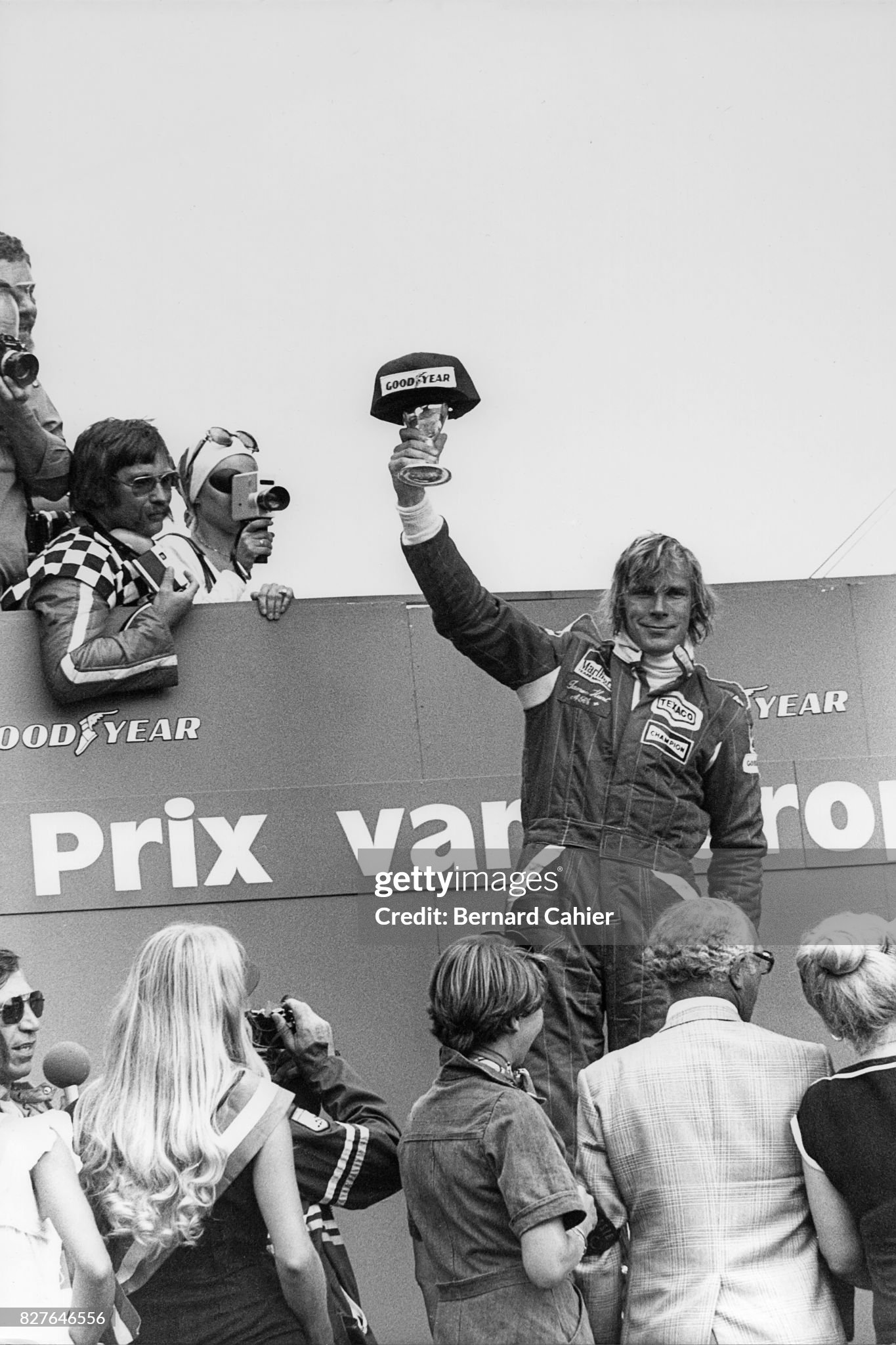
James Hunt on the podium at the Dutch Grand Prix in Zandvoort on 29 August 1976. Photo by Bernard Cahier / Getty Images.
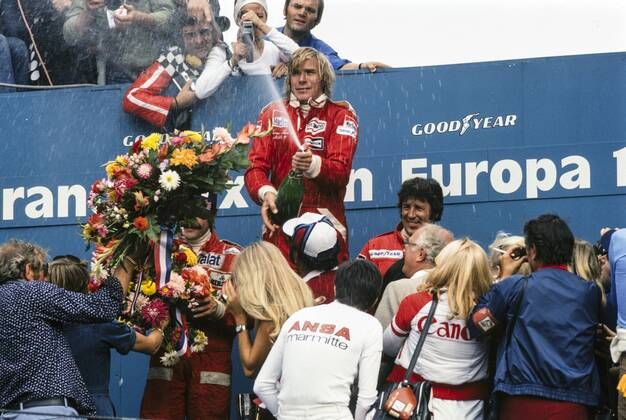
James Hunt celebrates victory on the podium with Clay Regazzoni, 2nd position and Mario Andretti, 3rd position, at the Dutch Grand Prix in Zandvoort on 29 August 1976.
At Zandvoort, Hunt overtook Ronnie Peterson on the 12th lap and resisted pressure from John Watson to win. At the Italian Grand Prix, the big story was Lauda's miraculous return from his Nürburgring accident. At a circuit that should have suited Hunt's car, the Texaco fuel McLaren were using was tested and although apparently legal, their cars and those of the Penske team, were judged to contain a higher octane level than allowed. Subsequently, both teams were forced to start from the rear of the grid. While trying to make his way up the field, Hunt spun off, while a returning Lauda finished fourth. At the next round in Canada, Hunt found out that he had been disqualified from the British Grand Prix and Lauda had been awarded the victory and thus received three additional points. A furious Hunt drove a very hard race at the challenging Mosport Park circuit and won. And at the penultimate round in the United States at the daunting Watkins Glen track, Hunt started from pole and took victory after a close battle with Jody Scheckter. This set the stage for the final round in Japan.
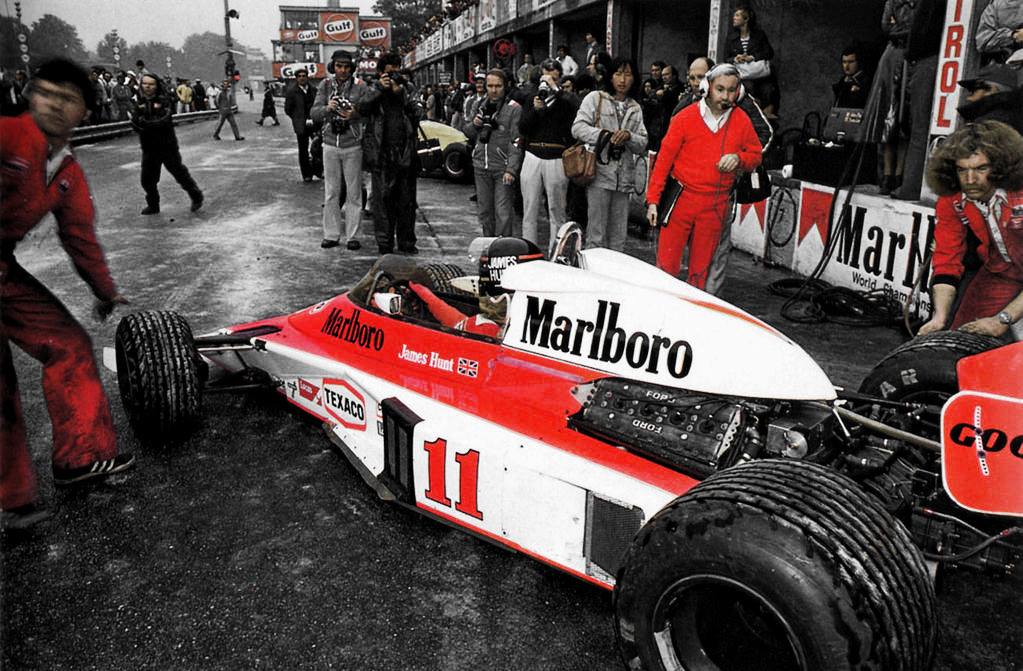
James Hunt, McLaren, in 1976.
Hunt's late season charge pulled him to just three points behind Lauda. The sliding scale of points for the top six finishers meant that Hunt needed to finish third (4-points) or better to overtake Lauda in the championship. Lauda needed to earn two points fewer than Hunt, or better, to stay ahead. McLaren team manager Alastair Caldwell had taken advantage of the gap between the final two races to hire the Fuji circuit, a track hosting its first Grand Prix and therefore unknown to all the teams, for an exclusive McLaren test. After a few laps the gearbox seized, bringing the test to a premature close, but the team had had the advantage of acclimatising themselves to the new circuit.
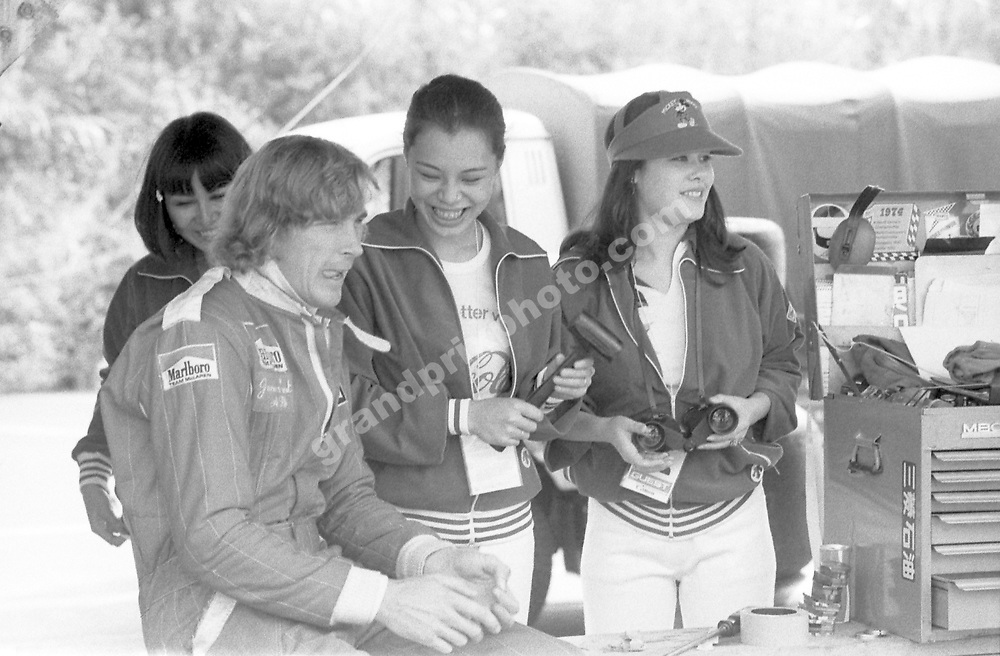
James Hunt and pit babes before practice for the Japanese Grand Prix at Fuji Speedway on 28 October 1976. Photo by Grand Prix Photo.
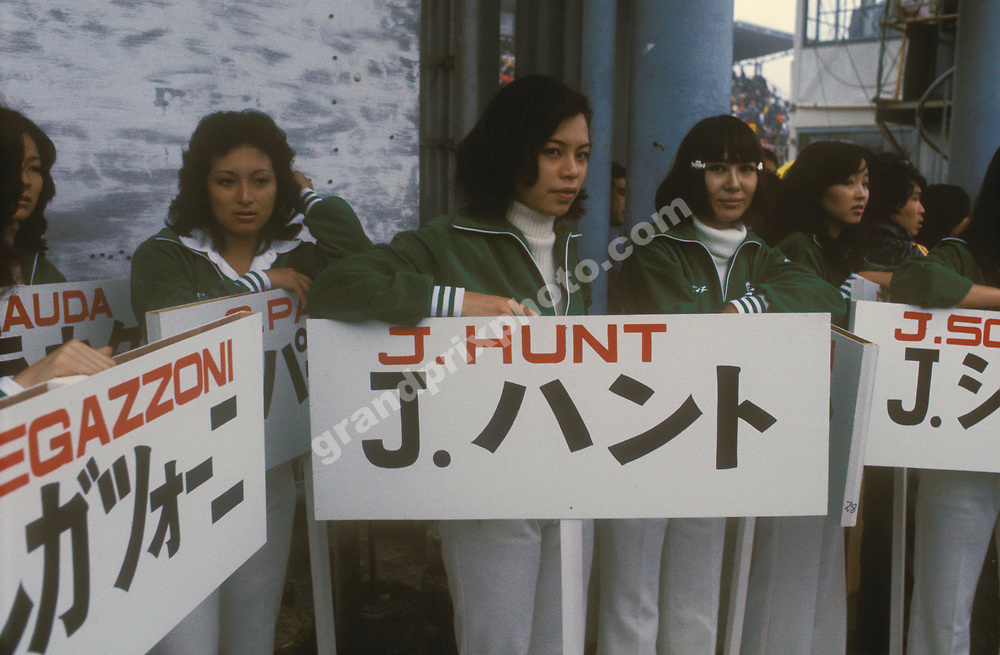
The grid girl for James Hunt, McLaren, before the 1976 Japanese Grand Prix. Photo by Grand Prix Photo.
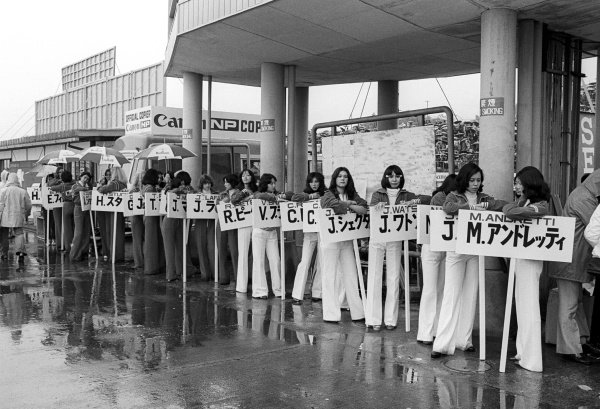
The grid girls assemble in the paddock at the Japanese Grand Prix on 24 October 1976.
Conditions for the race itself were torrentially wet.
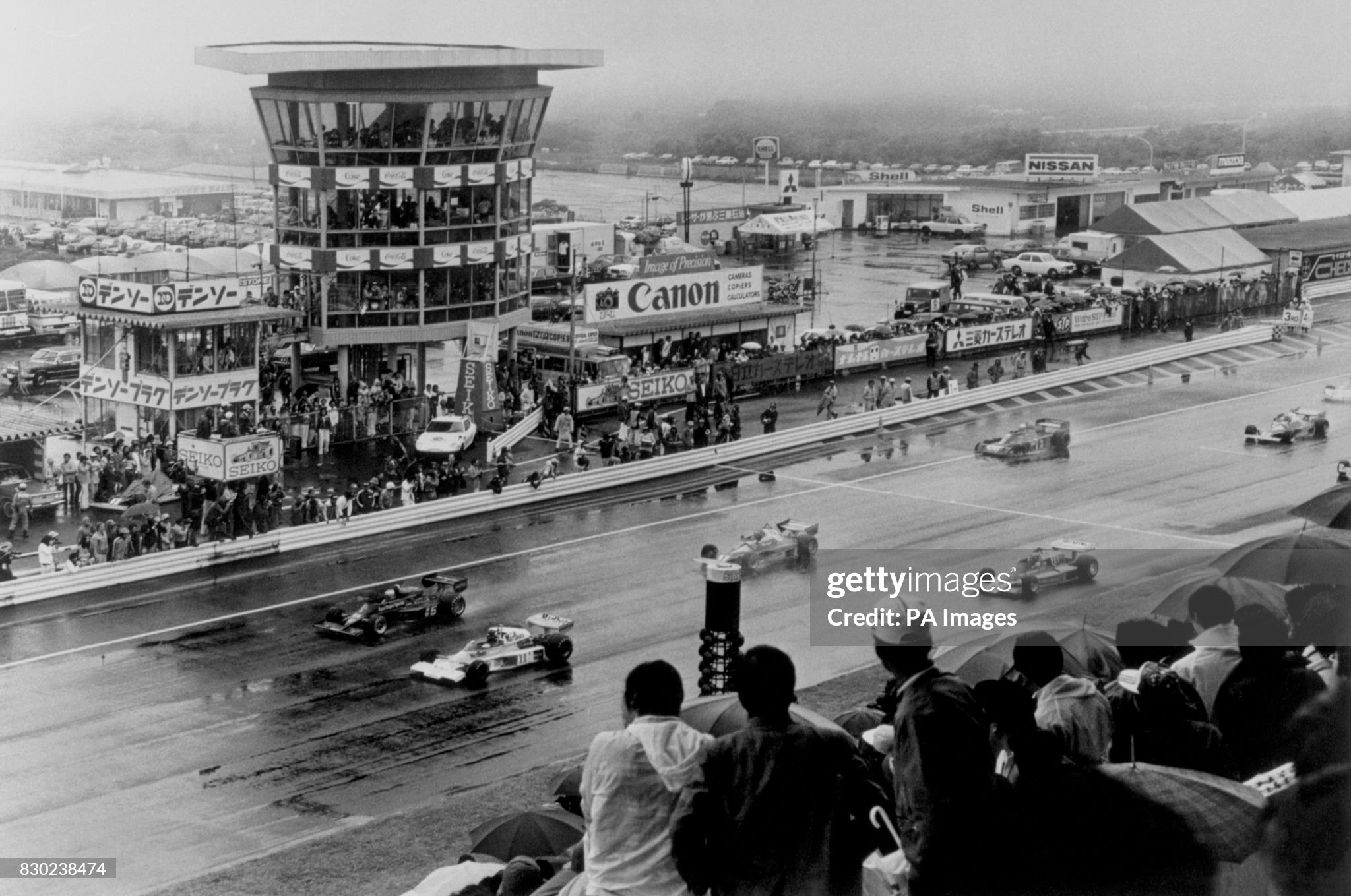
James Hunt in a McLaren and Mario Andretti in a Lotus lead the way during the Japanese Grand Prix at Fuji on 28 October 1976. Photo by PA Images via Getty Images.
Lauda retired early on in the race, unable to blink because of facial burns from his accident in Germany.
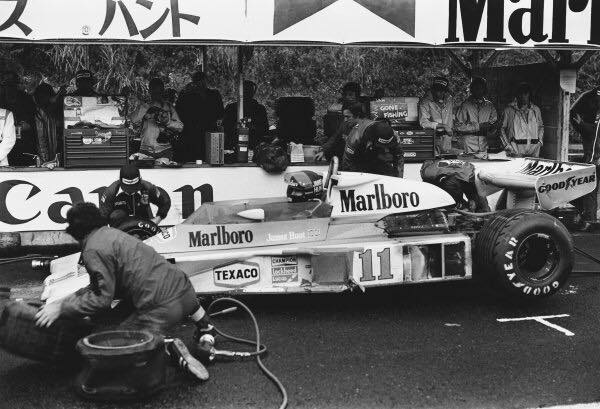
James Hunt at Fuji in 1976.
After leading most of the race Hunt suffered a puncture, then had a delayed pitstop and finally received mixed pit signals from his team. But he managed to finish in third place, scoring four points, enough for him to win the World Championship by one point. Hunt was the last British Formula One champion until Nigel Mansell won the 1992 championship for Williams.
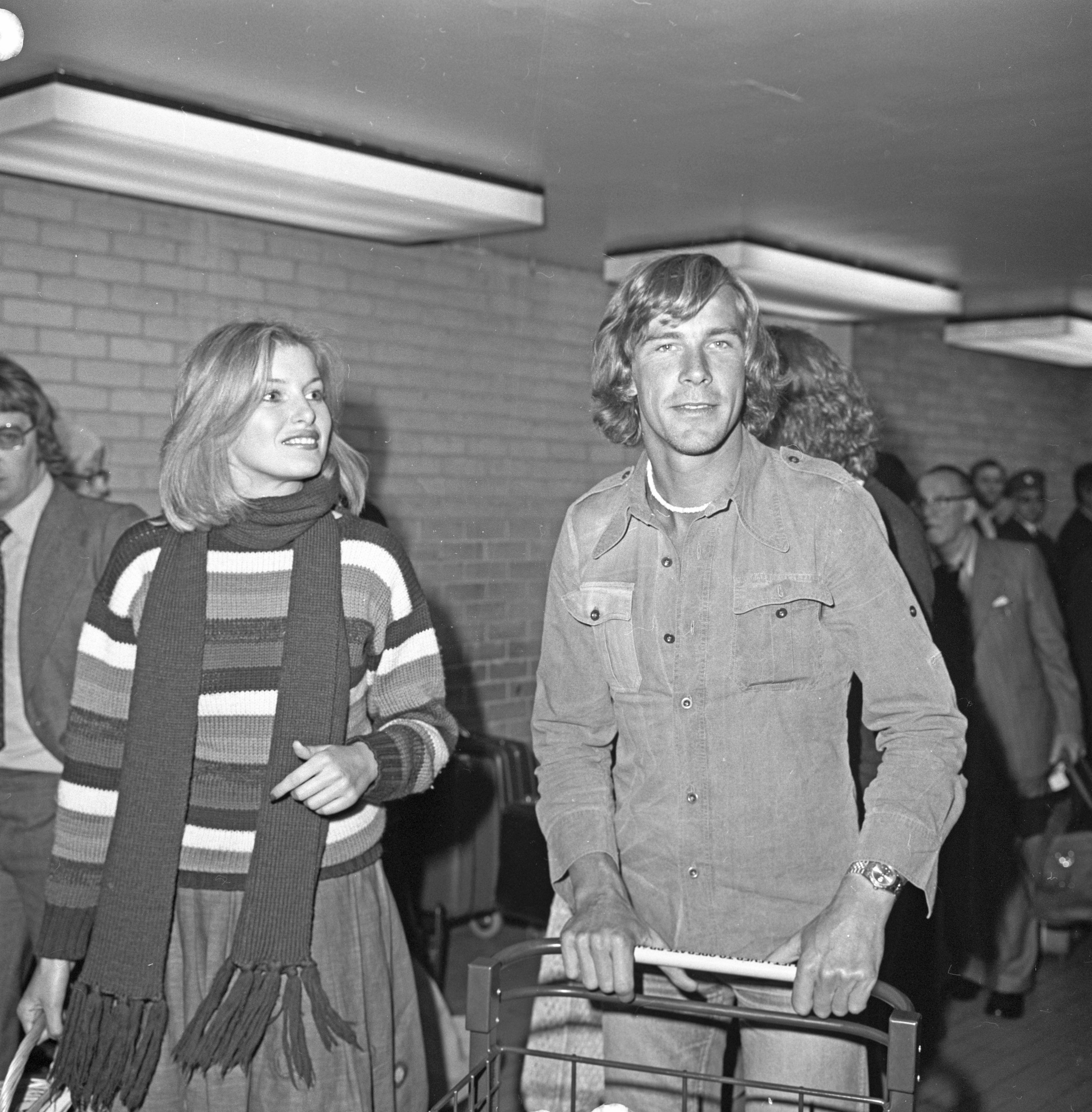
Another of Hunt's high profile partners was Jane Birbeck. Photo by News Group Newspapers Ltd.
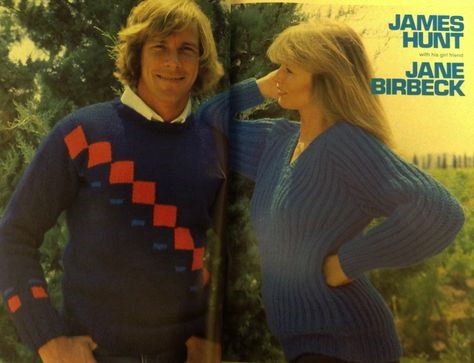
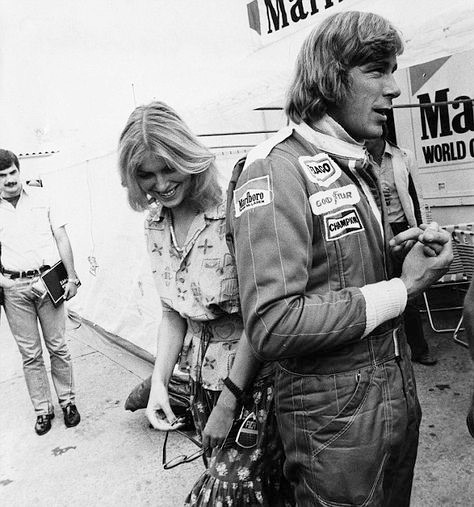
James Hunt and Jane Birbeck.
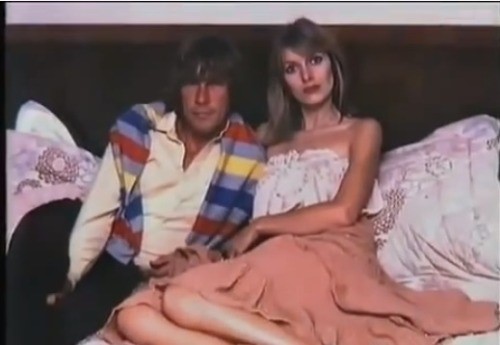
More classic knitwear action from James Hunt. Note also Jane Birbeck’s very “then”, Laura Ashley look.
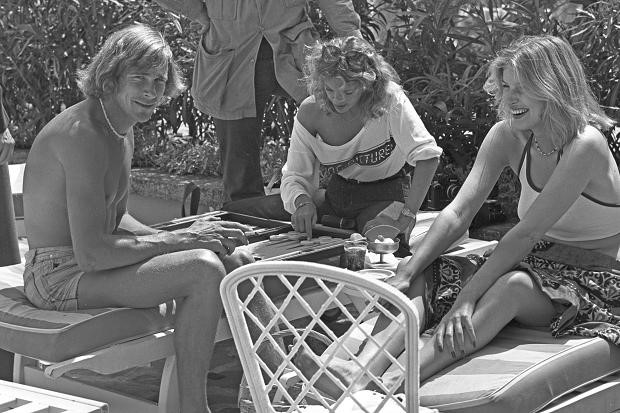
James Hunt with Jane Birbeck and another female friend.

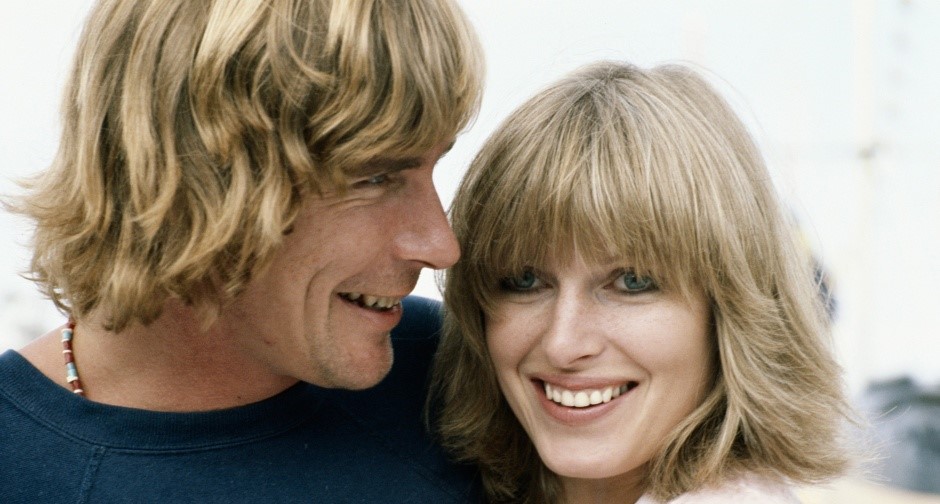
James Hunt has had thousands of lovers, but also maintained longer relationships. Here in the photos he is with his partner Jane Birbeck.
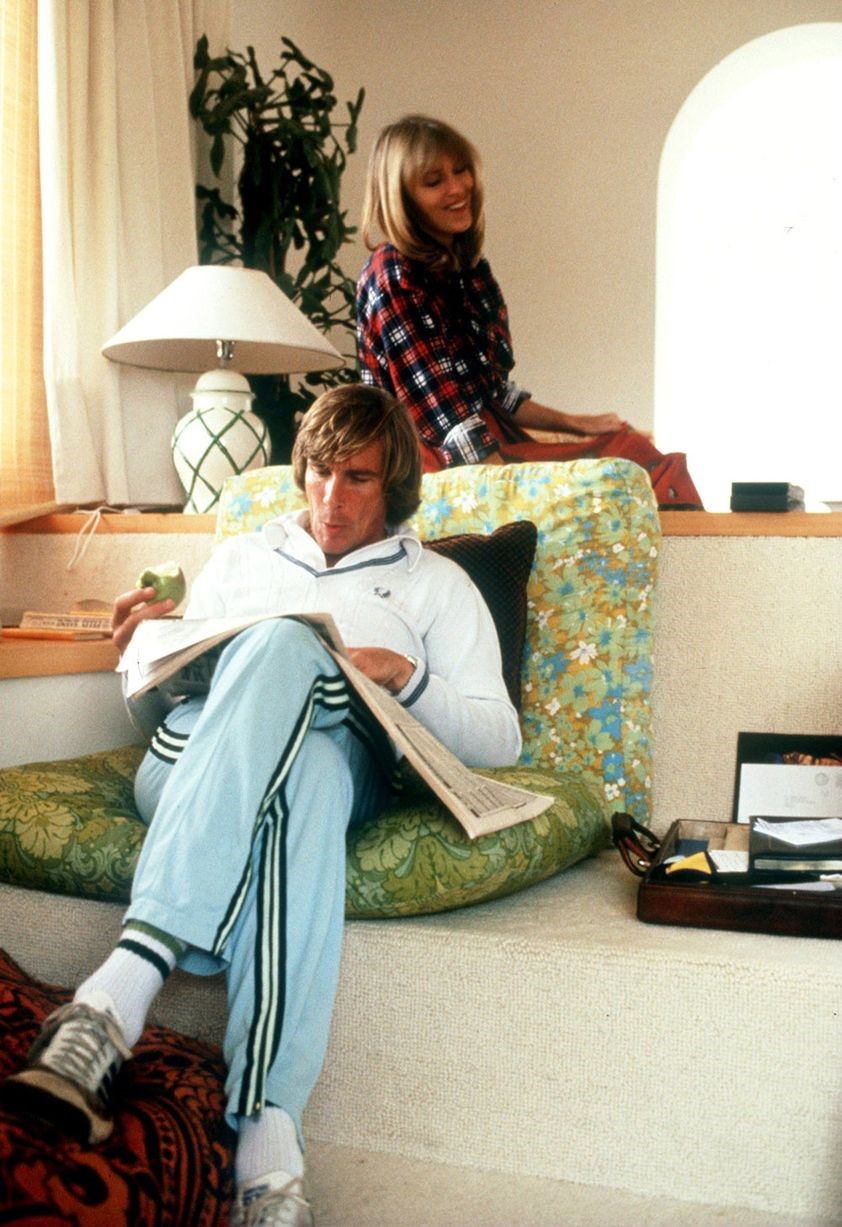
James Hunt and Jane Birbeck in 1976. Photo by Rex.
When James Hunt came back from Japan his disappointed current girlfriend super model Jane Birbeck was waiting for him.
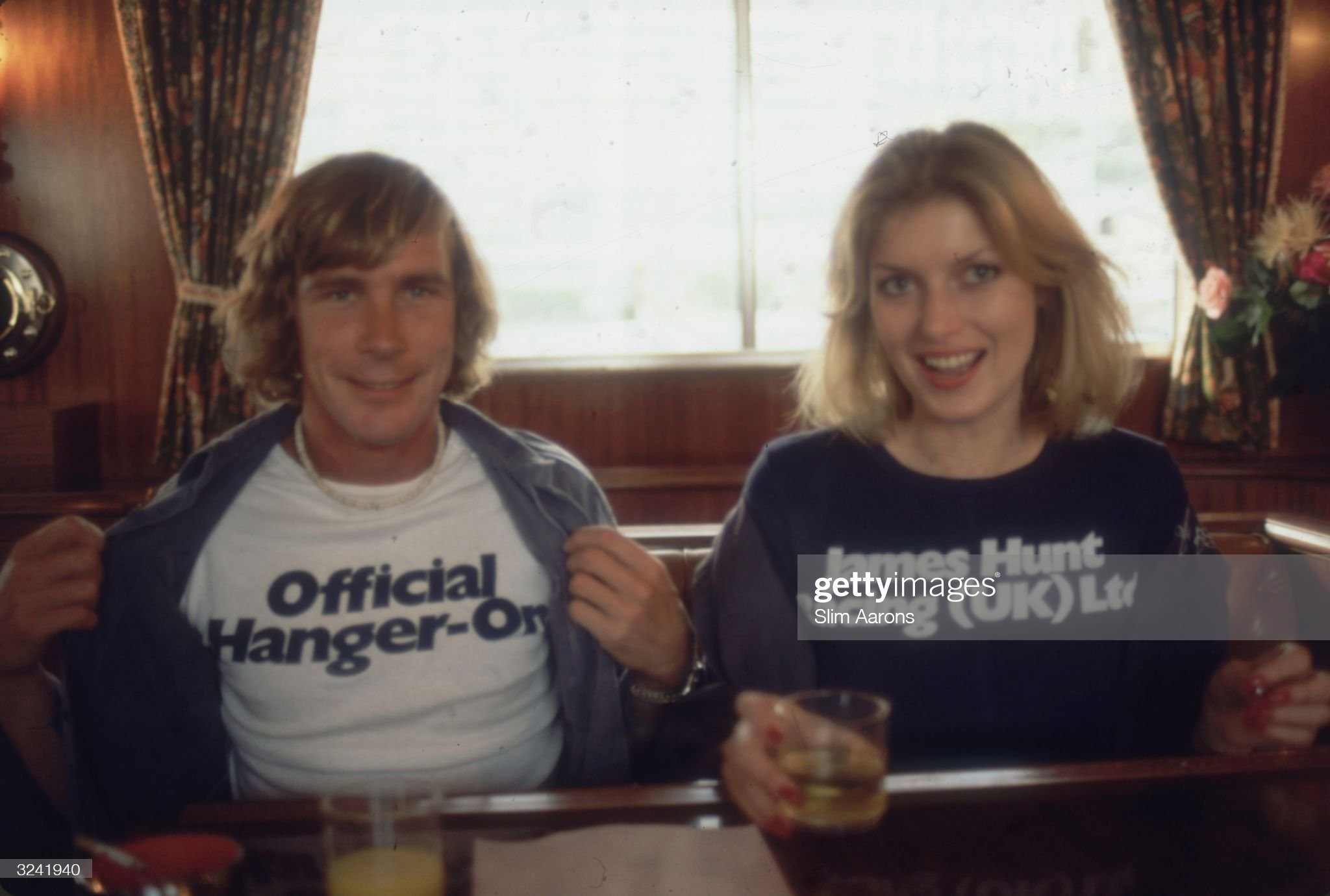
James Hunt, winner of ten Grand Prix races and World Champion in 1976, with his girlfriend Jane Birbeck in Monaco in 1977. Photo by Slim Aarons/Getty Images.
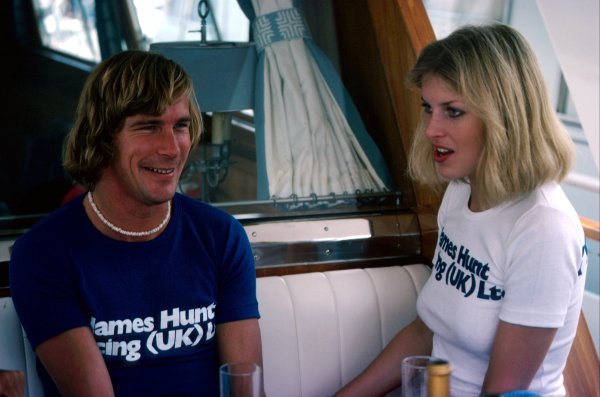
James Hunt with his girlfriend Jane Birbeck at the Monaco Grand Prix on 22 May 1977.
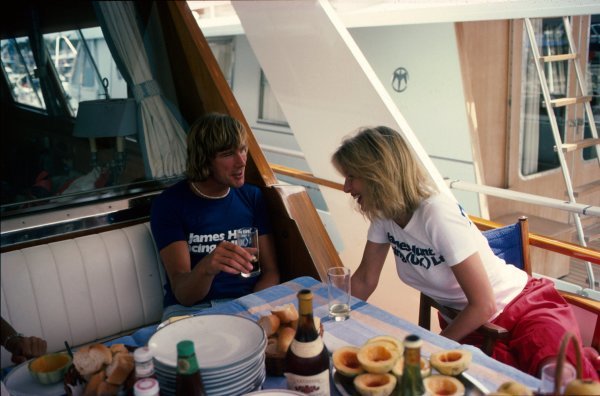
James Hunt with his girlfriend Jane Birbeck at the Monaco Grand Prix on 22 May 1977.
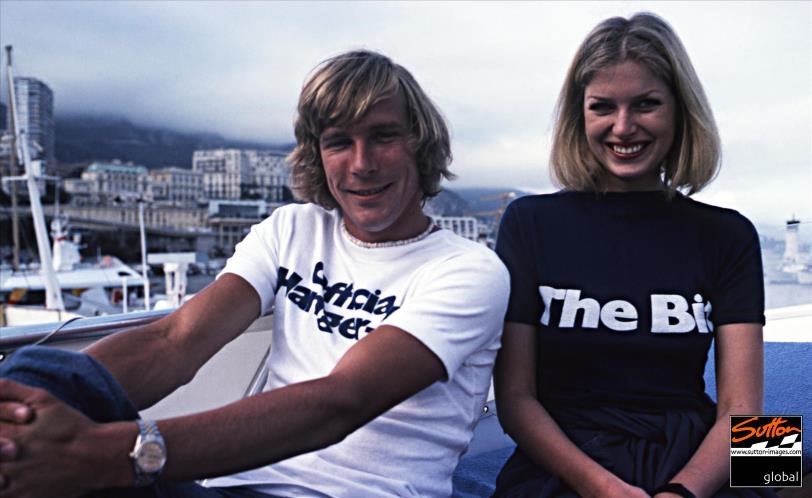
James Hunt with his girlfriend Jane “Hottie” Birbeck at the 1977 Monaco Grand Prix, Monte-Carlo, 22 May 1977.
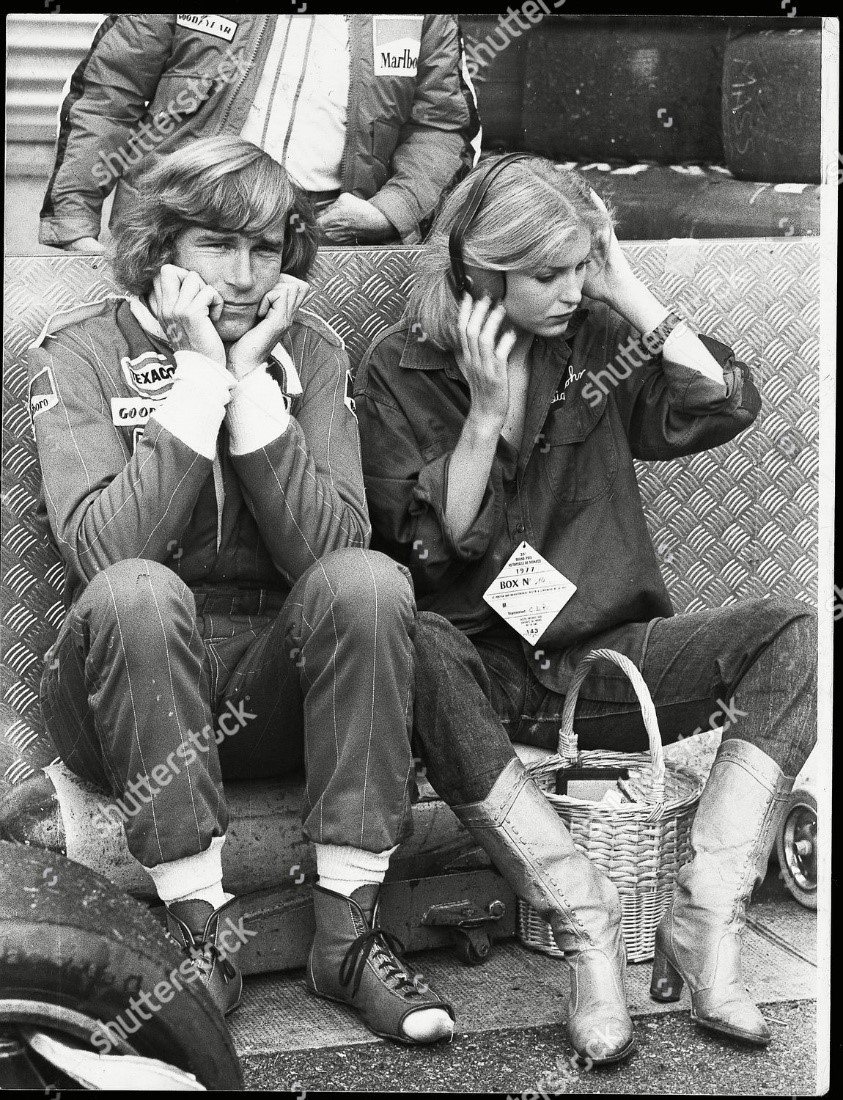
Monaco, 22 May 1977. What does the future hold? Not marriage, according to James Hunt. He says that he and his girlfriend Jane Birbeck are blissfully happy as they are. Under British law Hunt is still married to Susie, despite the fact that she has now gone through a wedding ceremony with actor Richard Burton. Photo by Shutterstock.
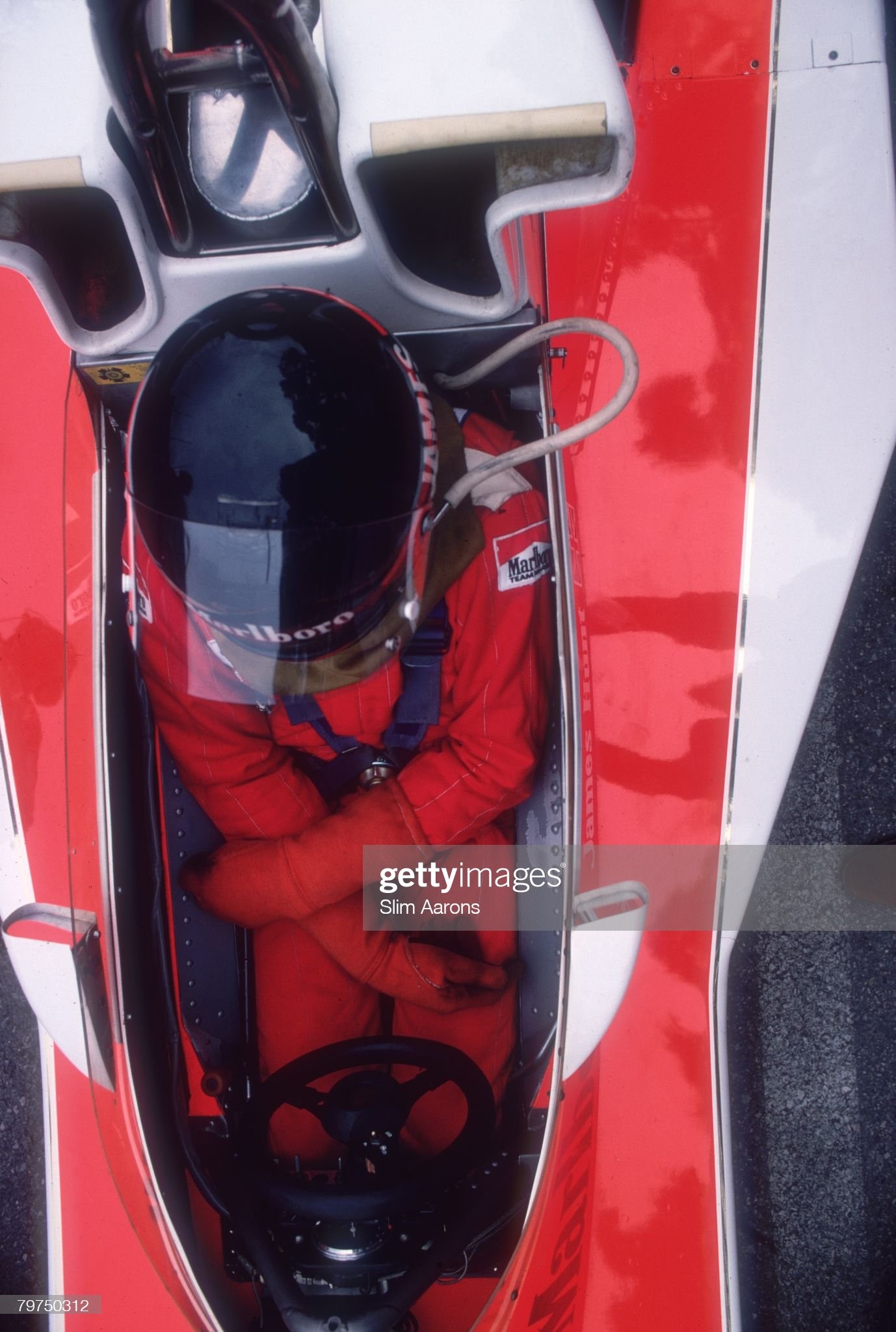
James Hunt at the Monaco Grand Prix, 22nd May 1977. Photo by Slim Aarons/Getty Images.
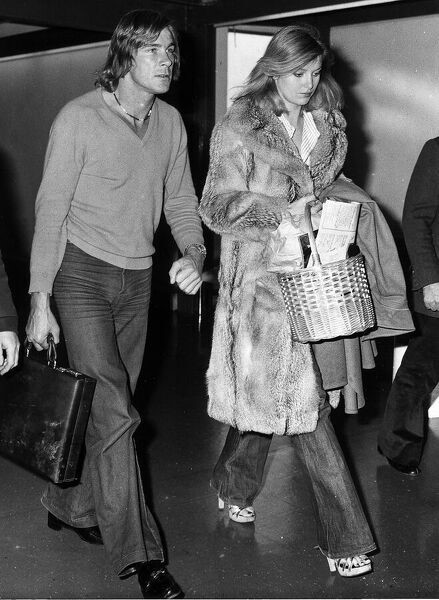
James Hunt with girlfriend Jane Birbeck at Heathrow Airport after returning from Canada where Hunt punched a Grand Prix official after crashing his car in 1977.
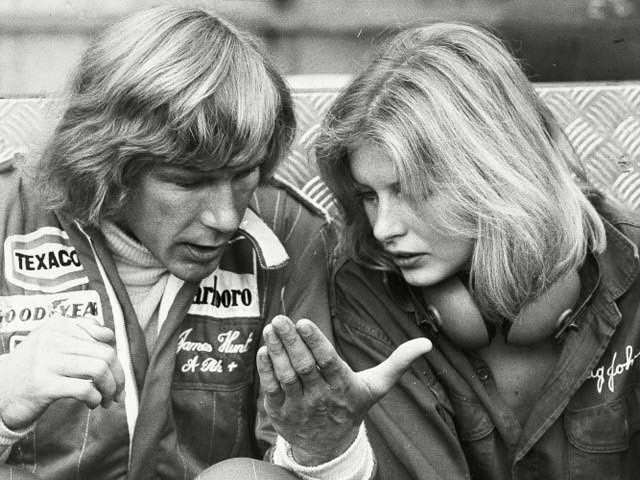
James Hunt and Jane Birbeck in 1977.
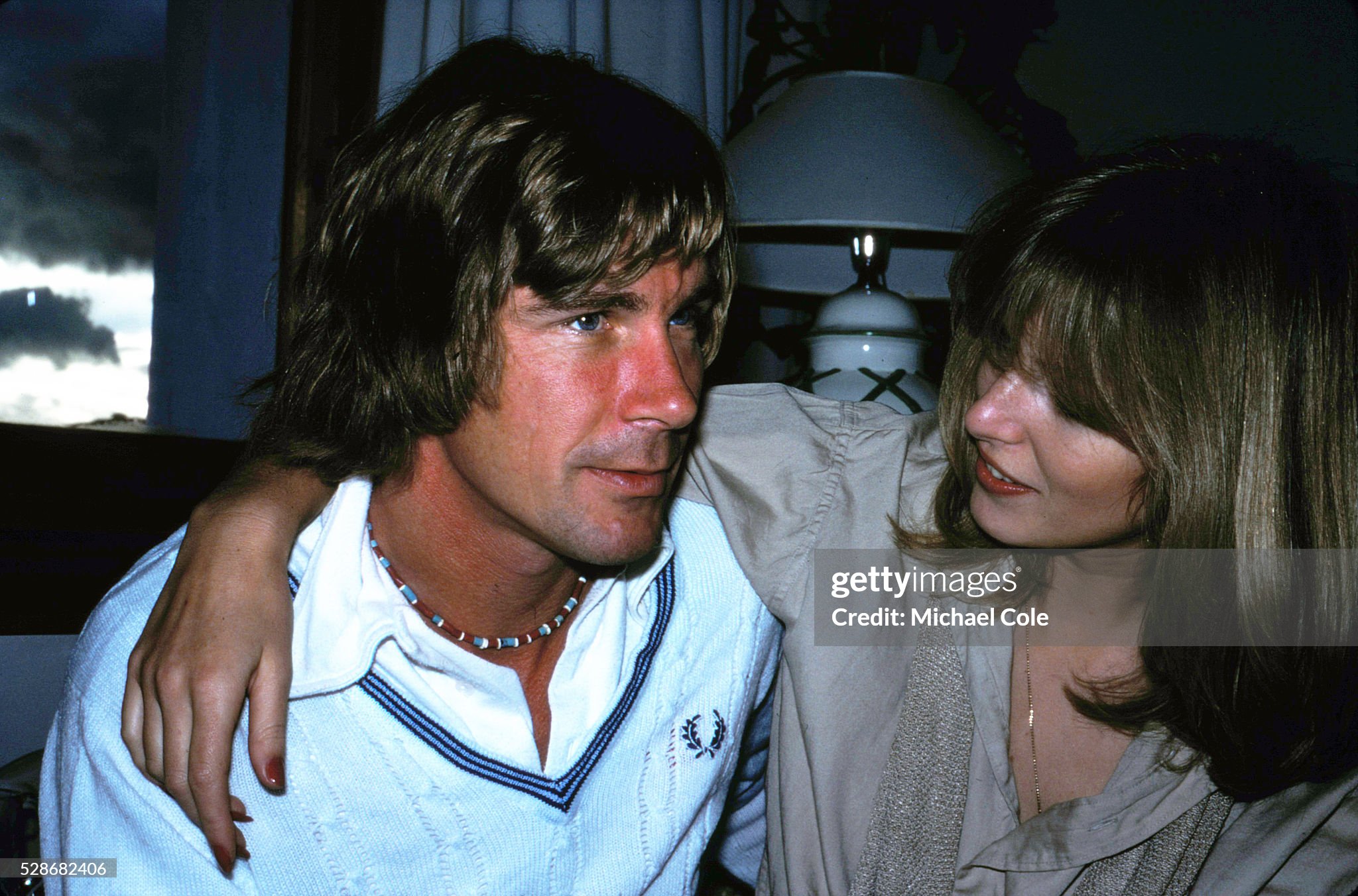
James Hunt and Jane Birbeck at home in Spain in February 1979. Photo by Michael Cole / Corbis via Getty Images.
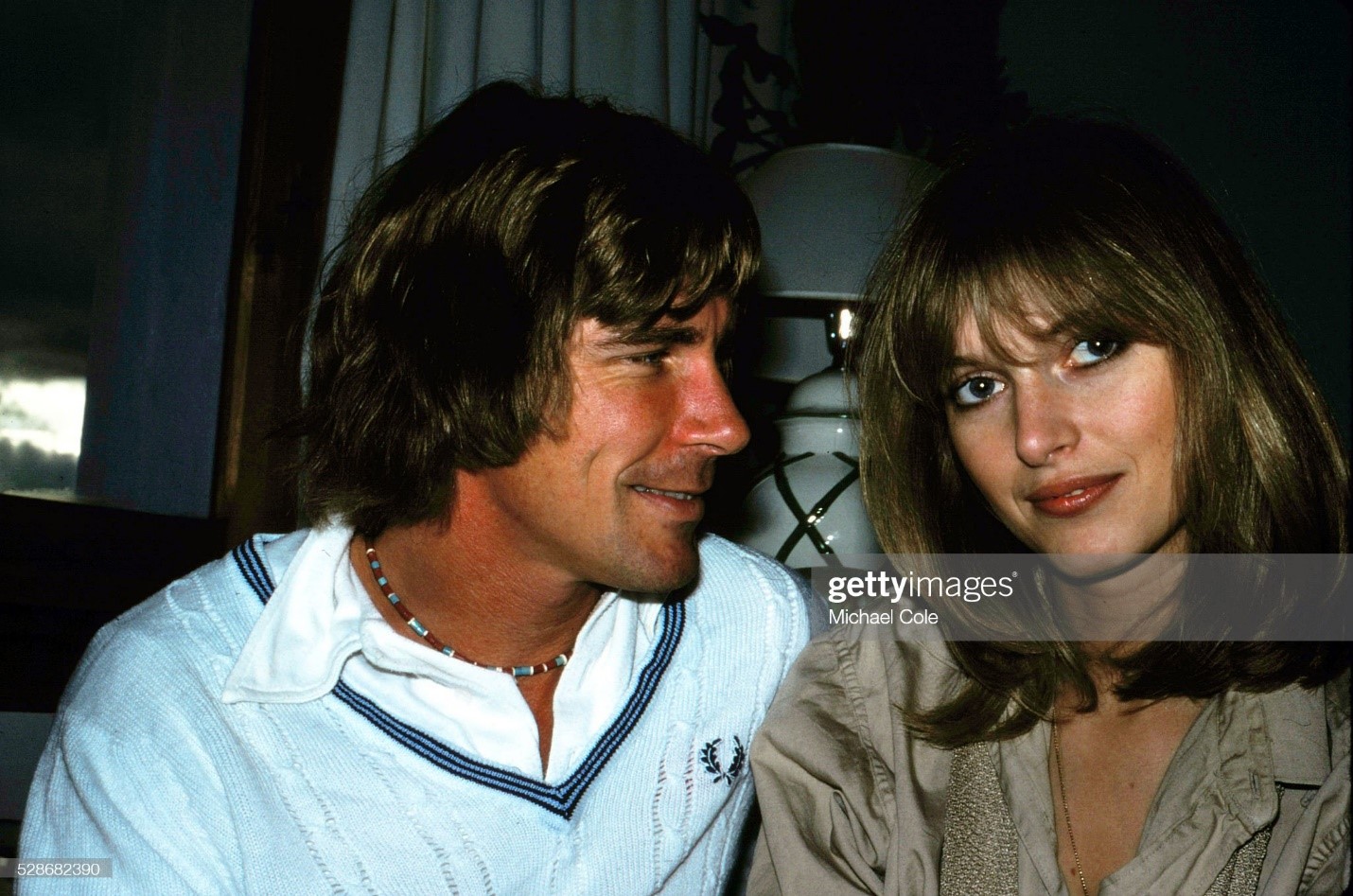
James Hunt and Jane Birbeck at home in Spain in February 1979. Photo by Michael Cole/Corbis via Getty Images.
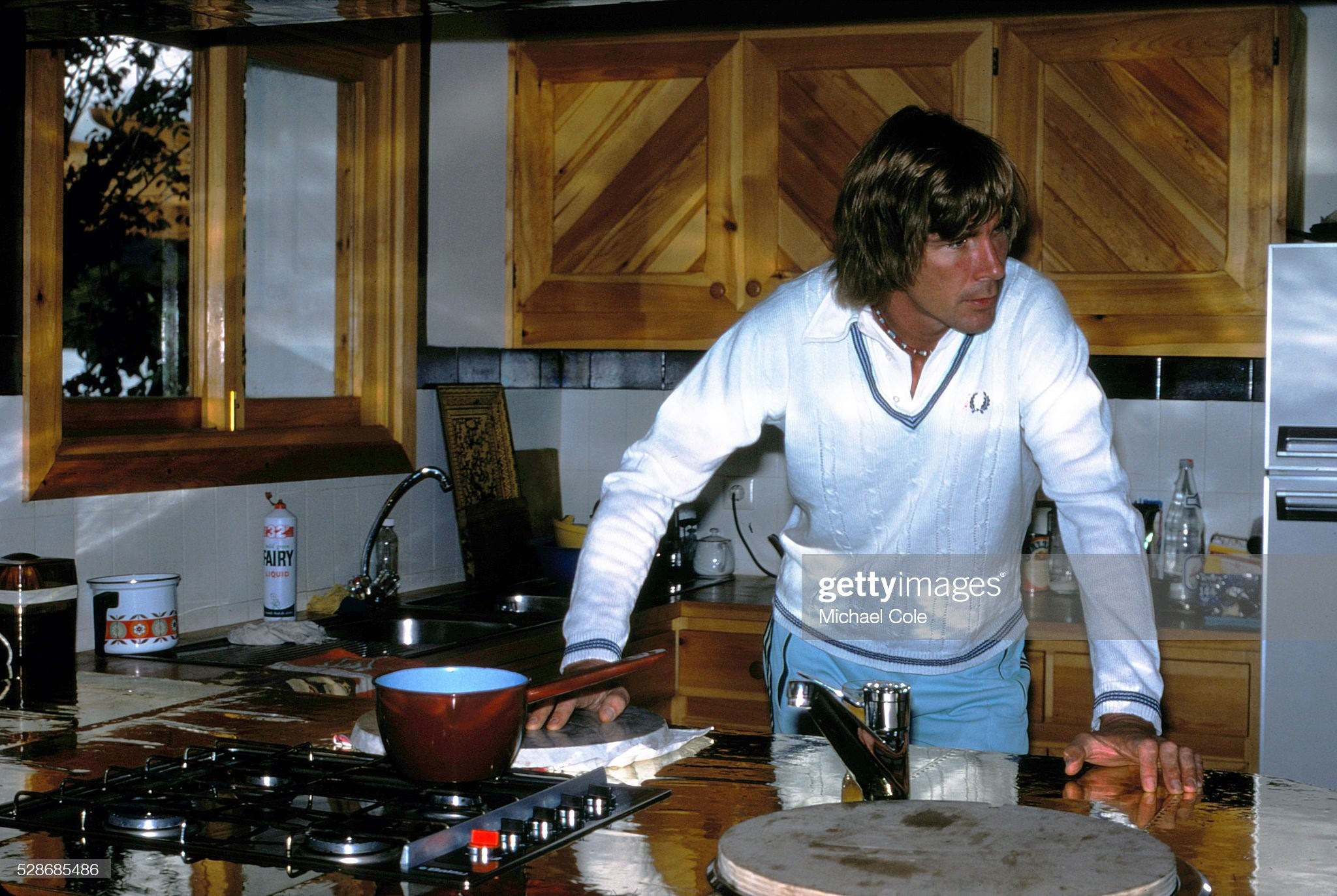
James Hunt relaxing at home in Spain, February 1979. Photo by Michael Cole / Corbis via Getty Images.
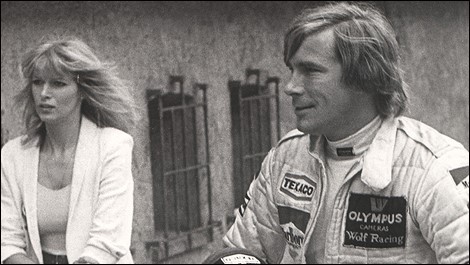
James Hunt in Monaco with his girlfriend in 1979.
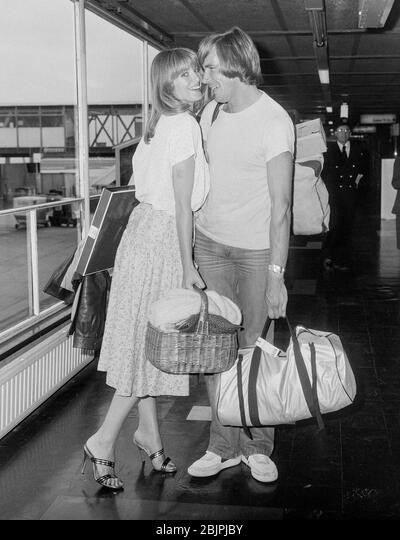
James Hunt and girlfriend Jane Birbeck leaving London's Heathrow Airport in June 1979.
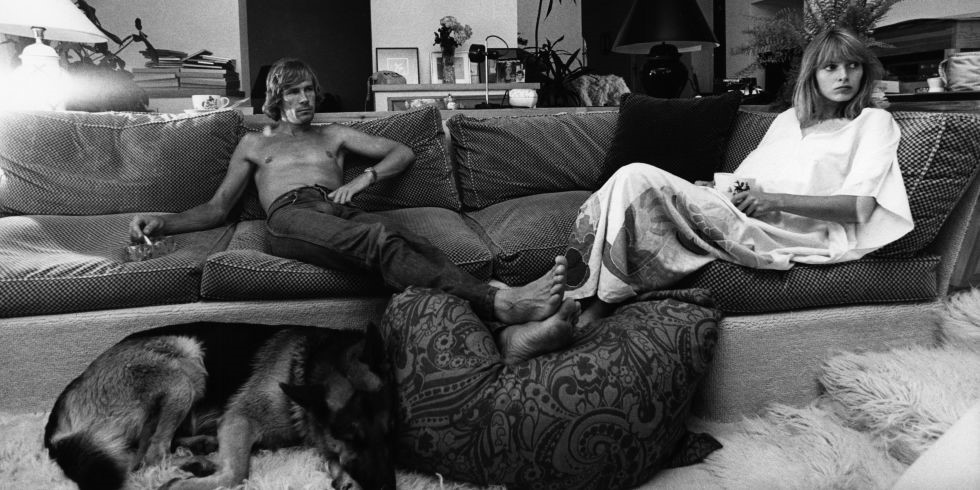
James Hunt in his Spanish home. He was the sort of man that should be an F1 driver. He makes Kimi Raikkonen, probably the wildest driver on the grid today, look like Donny Osmond. He was known for his off-track behavior, which was different than the professional, squeaky-clean image that F1 drivers have today. He was always seen with a different woman and would take his dog out to dinner in fancy restaurants.
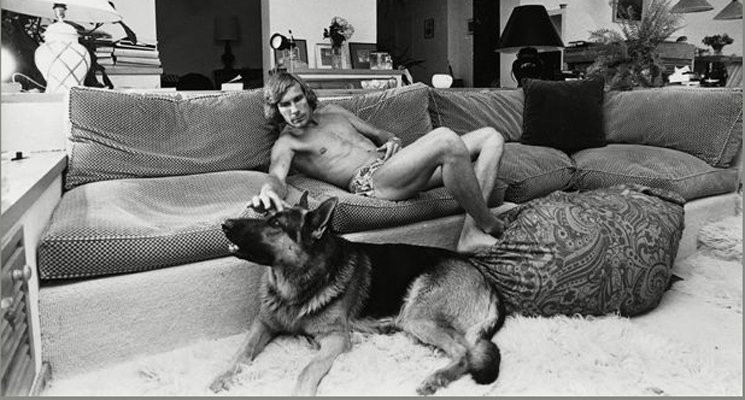
James Hunt lounging around in his Spanish home in 1979. Photo by Rex.
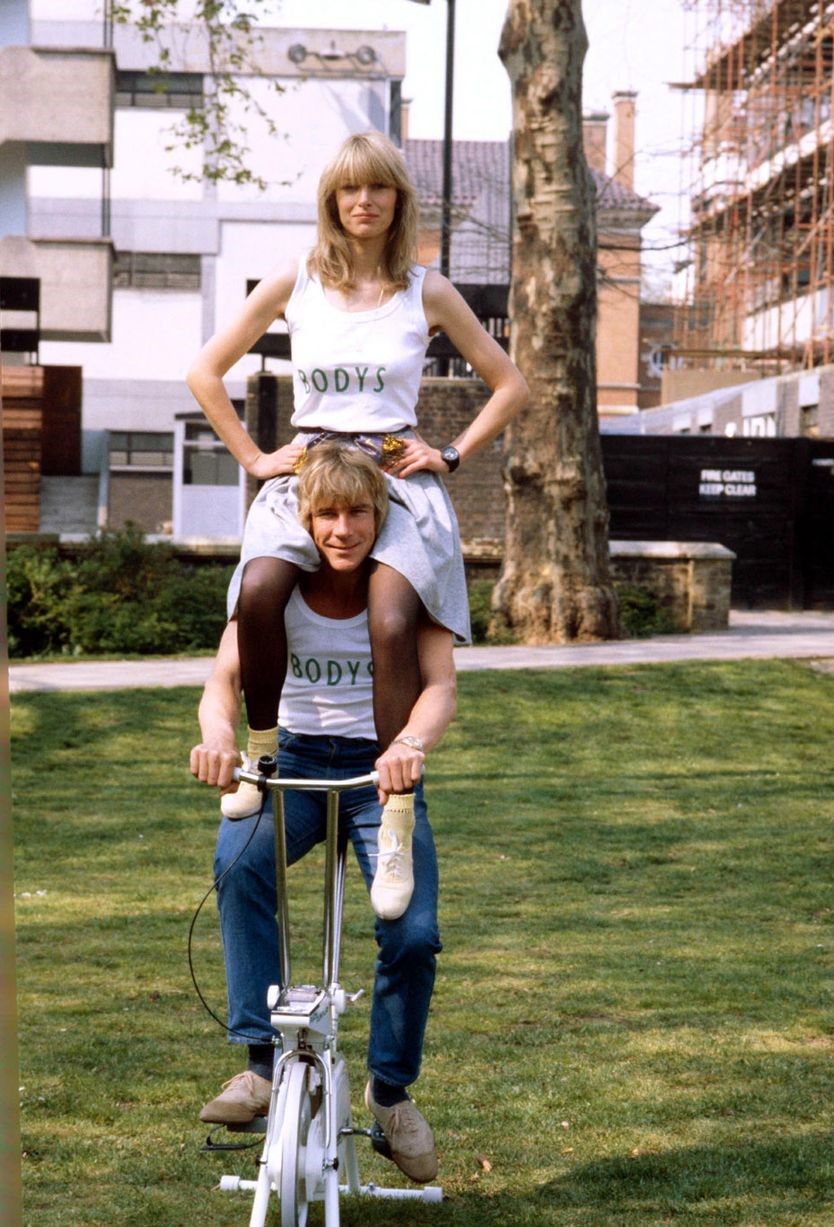
James Hunt poses on an exercise bicycle with ex-girlfriend Jane Birbeck on his shoulders to publicize the opening of their health club 'Bodys' on 10th May 1982. Photo by Getty Images.
Before the start of 1977, Hunt attended a gala function at the Europa Hotel in London where he was awarded the Tarmac Trophy, along with two cheques, for £2000 and £500 respectively, a magnum of champagne and other awards. The presentation was made by the Duke of Kent. Hunt made an acceptance speech after the event which was considered "suitably gracious and glamorous". The media were critical of Hunt as he attended the event dressed in jeans, T-shirt and a decrepit windbreaker.
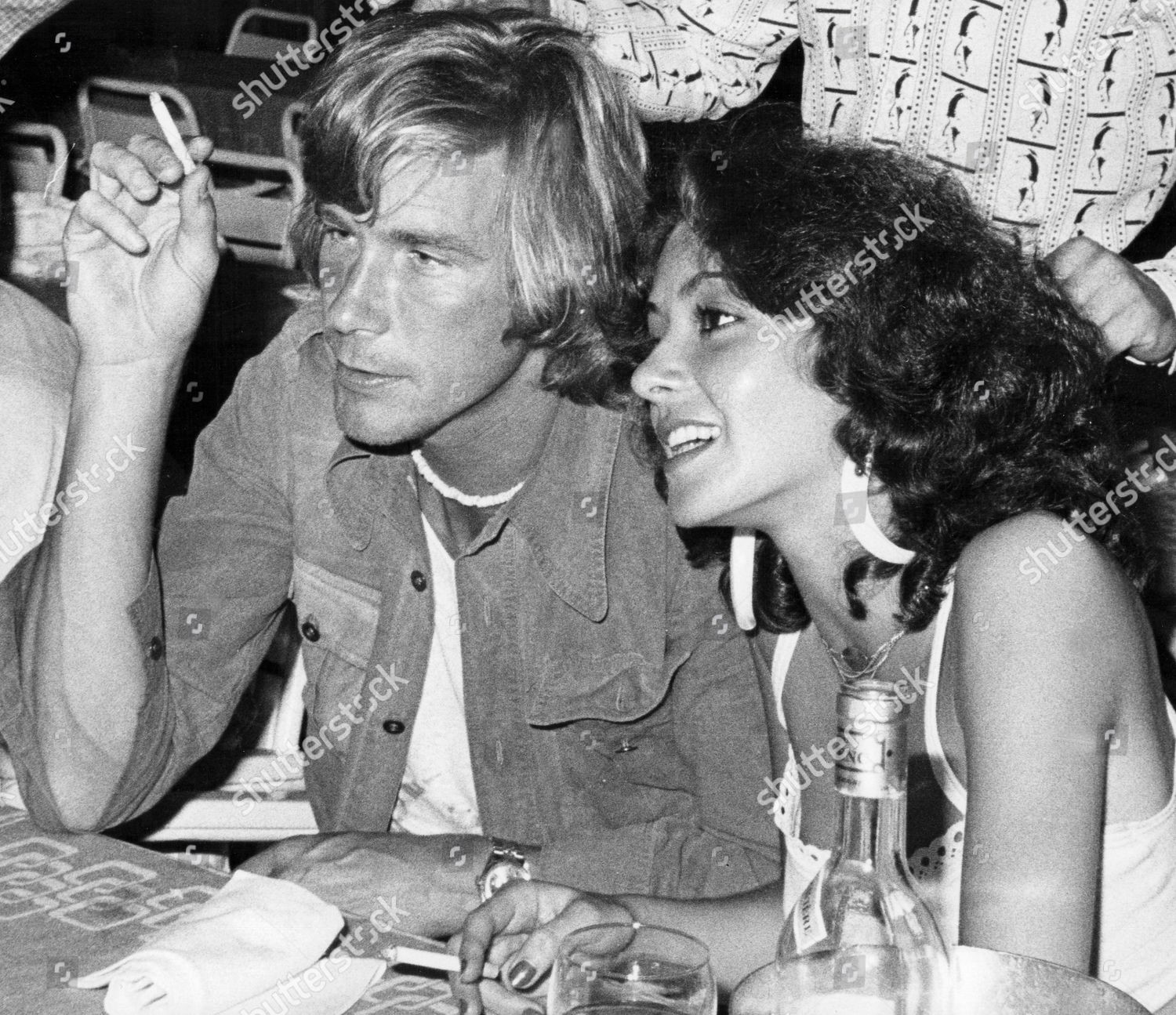
James Hunt in Saint Tropez, France, in 1977. Photo by Shutterstock photos.
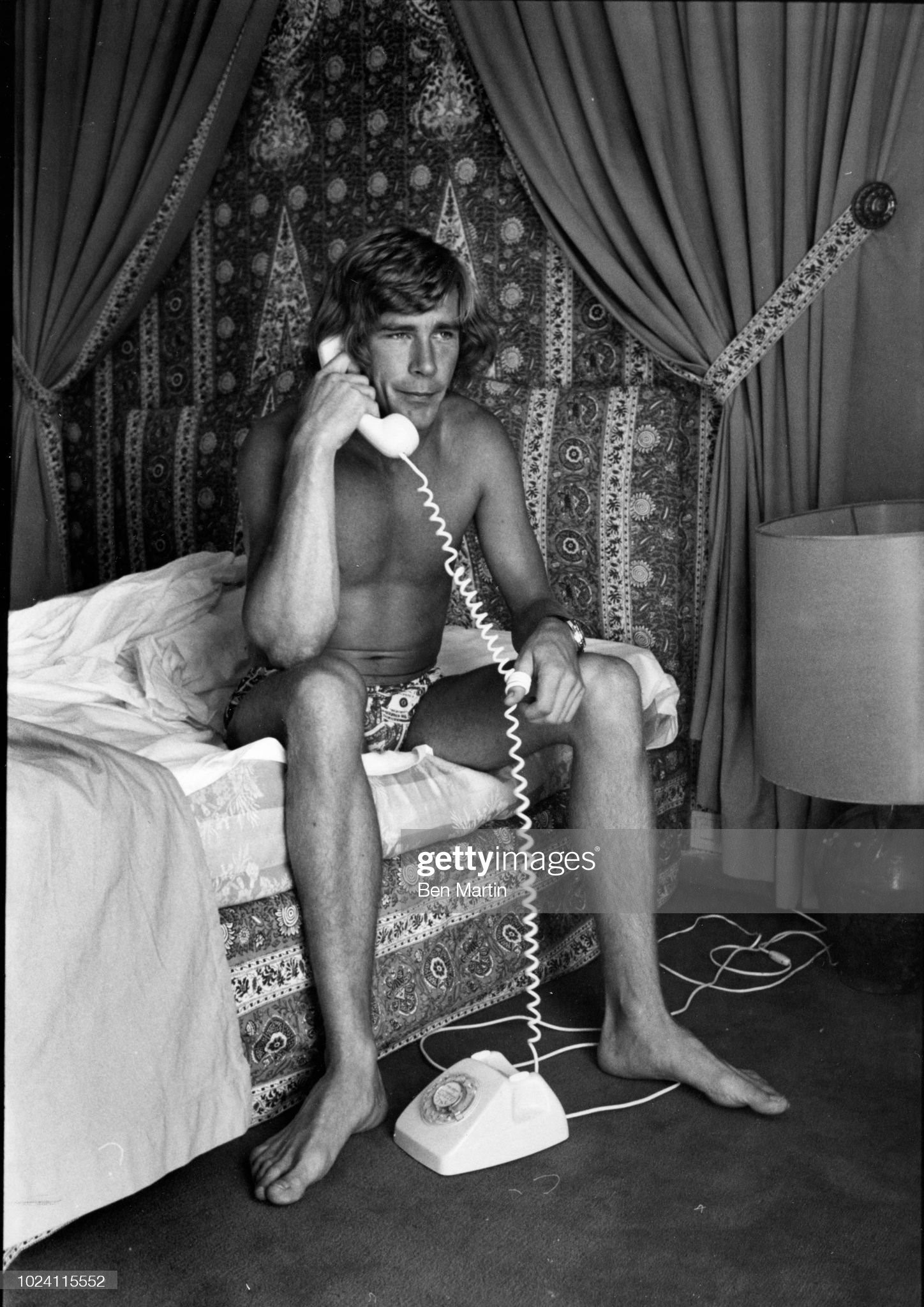
James Hunt at home on the telephone, UK, 06th September 1977. Photo by Ben Martin/Getty Images.
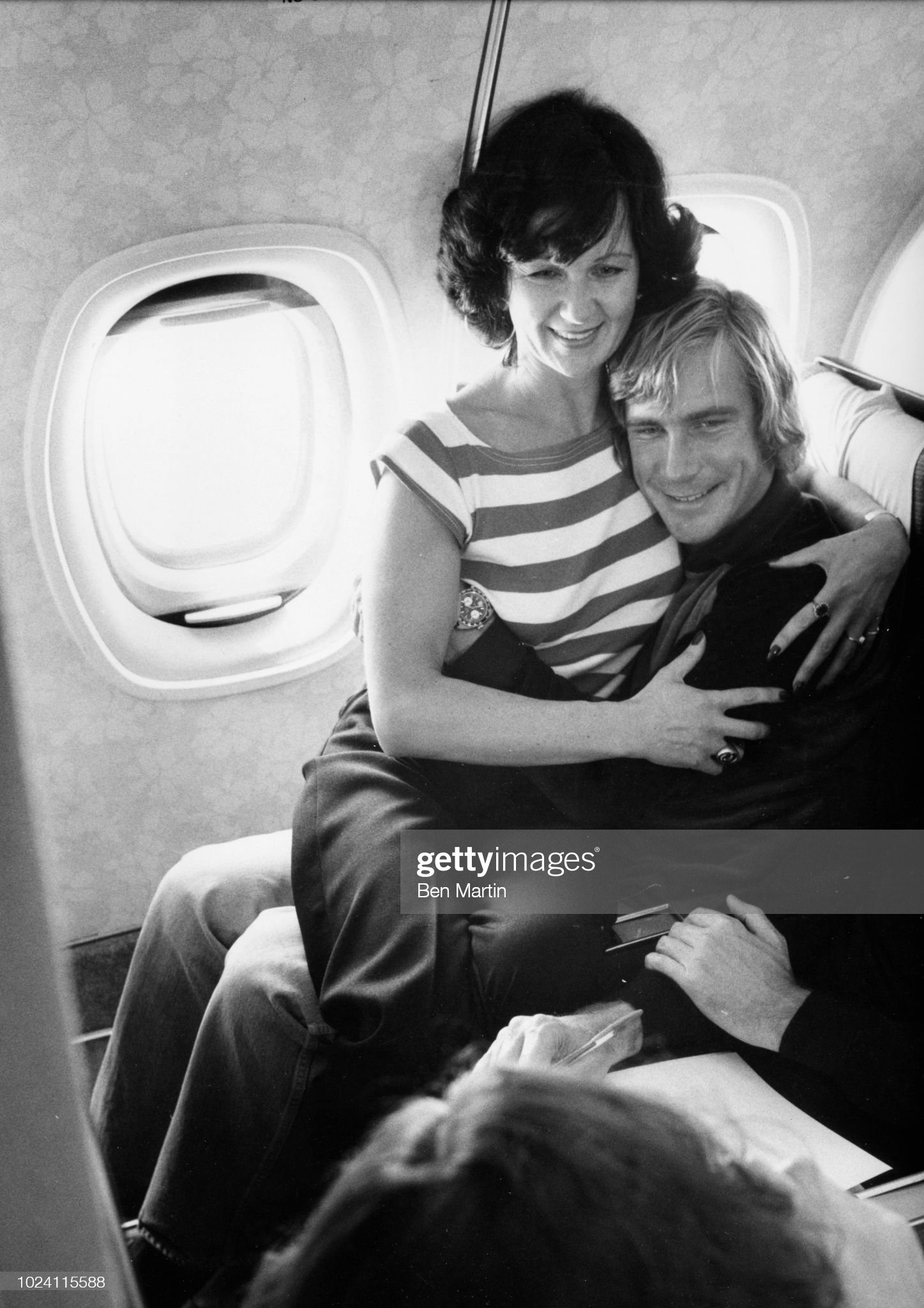
James Hunt aboard a flight with a girlfriend, September 16th 1977. Photo by Ben Martin/Getty Images.
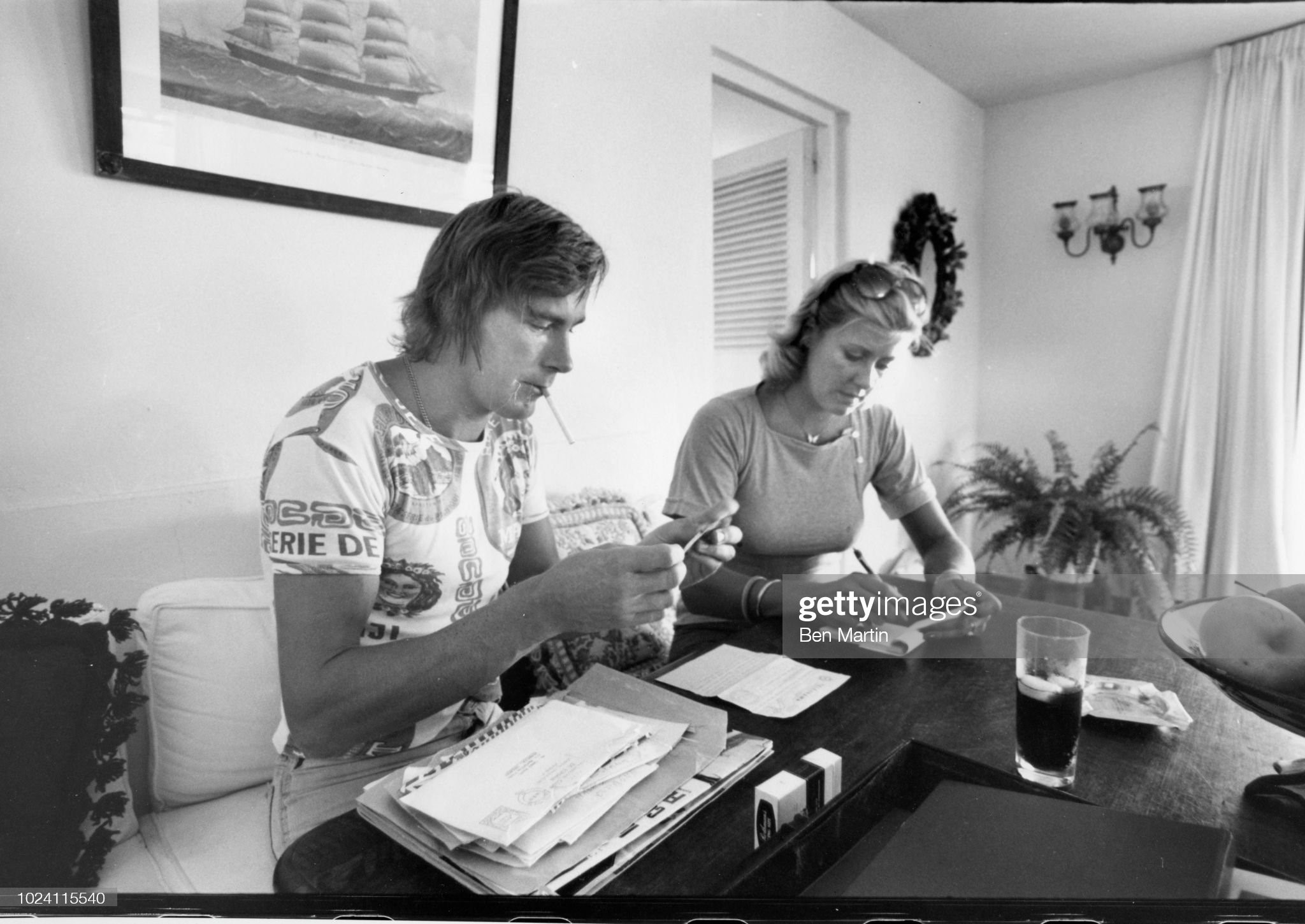
James Hunt signing autographs at home with his assistant, UK, 16th September 1977. Photo by Ben Martin/Getty Images.
Before the South African Grand Prix, Hunt was confronted by customs officials who searched his luggage, finding no illegal substances except a publication that contravened the strict obscenity laws of South Africa. Hunt was later released and tested at Kyalami where his McLaren M26 suffered a loose brake caliper which cut a hole in one of the tyres. He recovered and put the car on pole position. The race saw Hunt suffer a collision with Jody Schekter's Wolf and another with Patrick Depailler's Tyrrell, but he still managed to finish fourth.
The season did not start well for Hunt. The McLaren M26 was problematic in the early part of the season, during which Niki Lauda, Mario Andretti and Jody Scheckter took a considerable lead in the Drivers' Championship. Towards the end of the year Hunt and the McLaren M26 were quicker than any rival combination other than Mario Andretti and the Lotus 78. Hunt won in Silverstone after trailing the Brabham of John Watson for 25 laps.
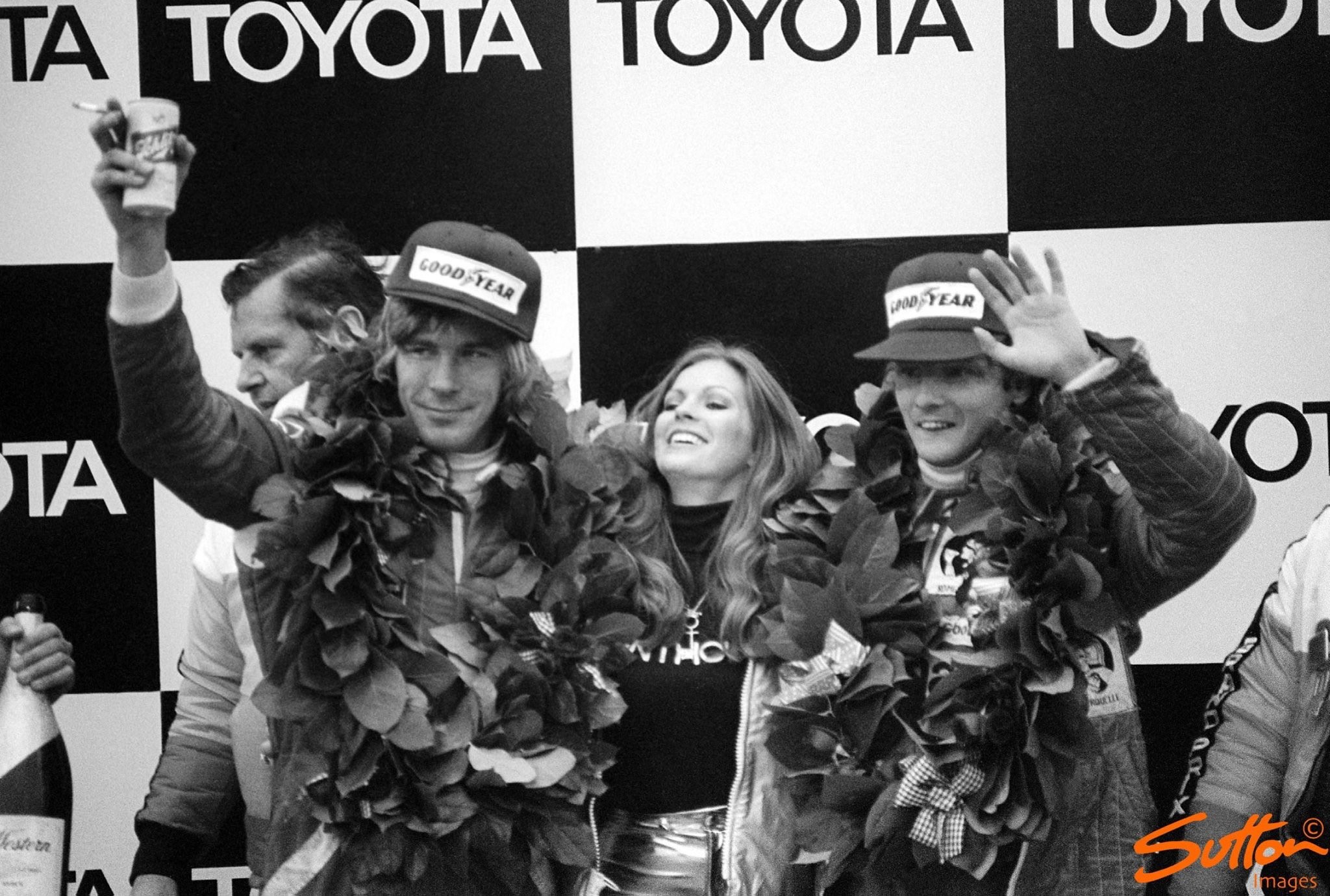
James Hunt was the winner of the 1977 United States Grand Prix for McLaren at Watkins Glen.
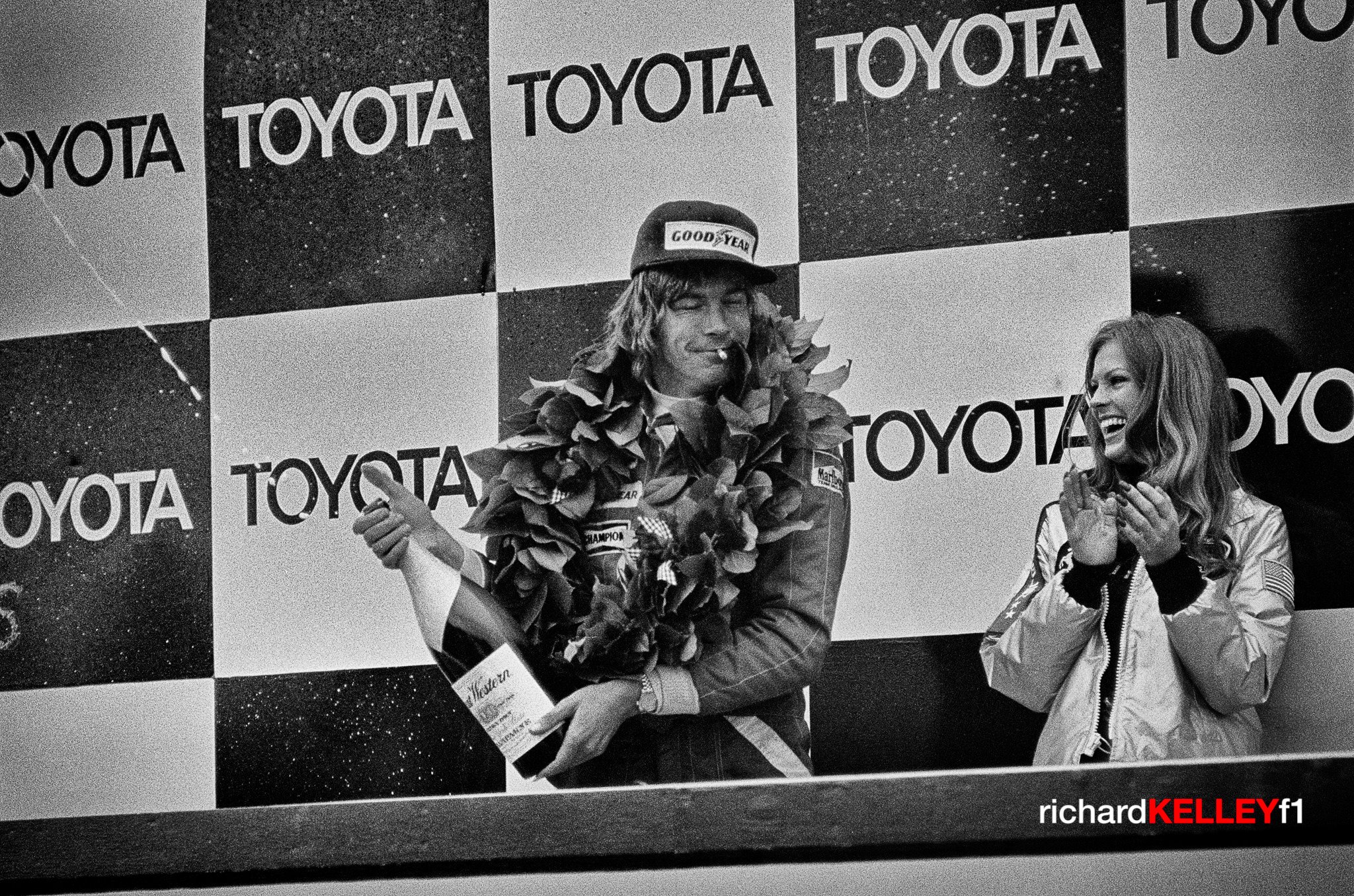
James Hunt savors victory at the US Grand Prix in Watkins Glen on 02 October 1977.
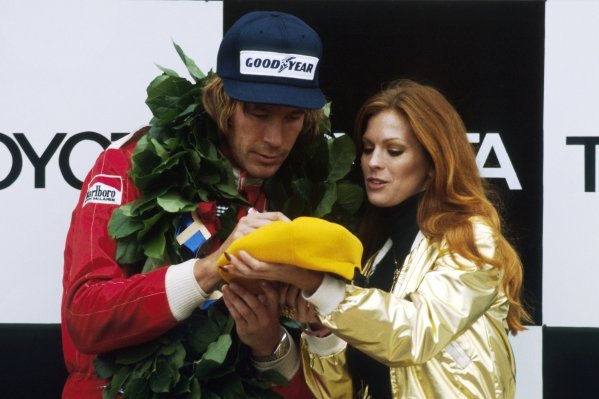
Race winner James Hunt, McLaren, signs a hat on the podium for a lucky Penthouse Pet at the US Grand Prix in Watkins Glen on 02 October 1977. Photo by David Phipps.
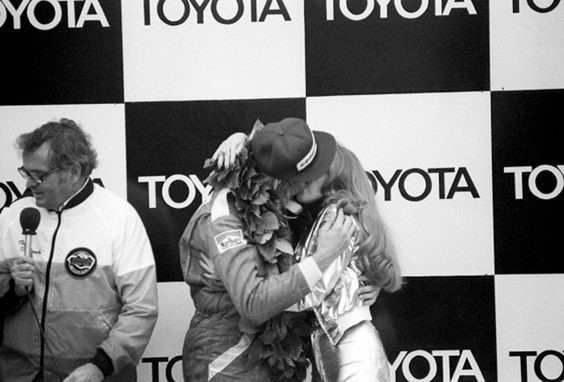
The US Grand Prix has been a bit of a nomadic beast. We preferred the US Grand Prix when Hunt was shunting into other cars and kissing Penthouse Pets.
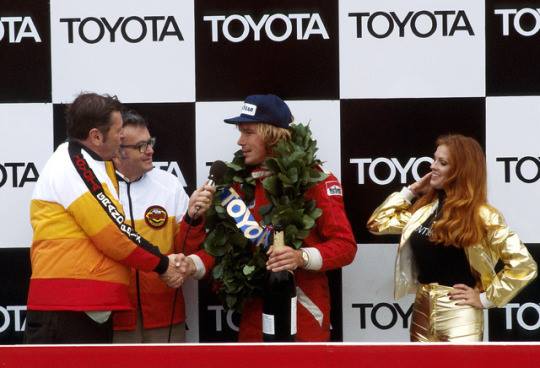
James Hunt savors victory at the US Grand Prix in Watkins Glen on 02 October 1977.
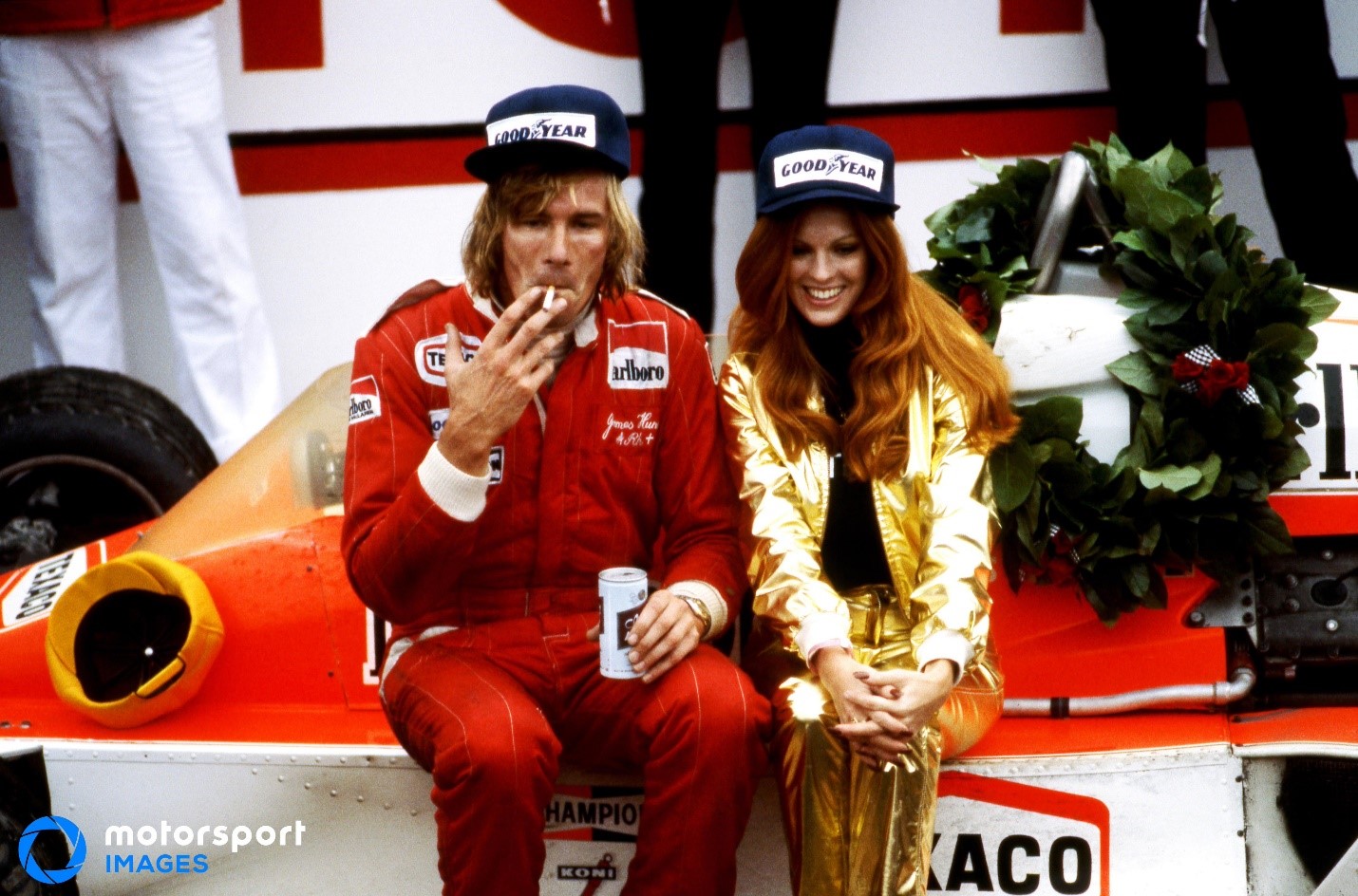
James Hunt savors victory at the US Grand Prix in Watkins Glen on 02 October 1977. Photo by Motorsport Images.
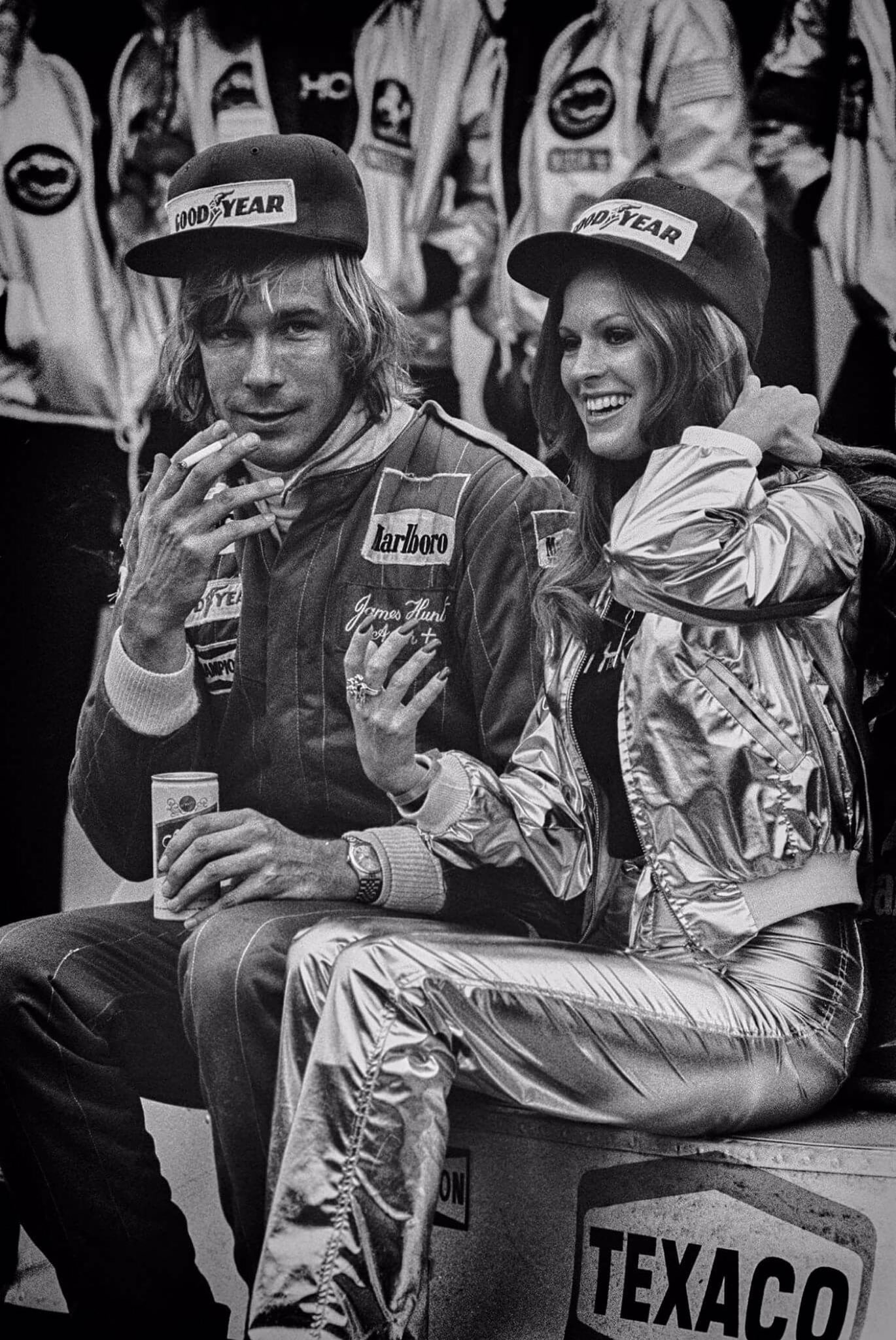
James Hunt savors victory at the US Grand Prix in Watkins Glen on 02 October 1977.
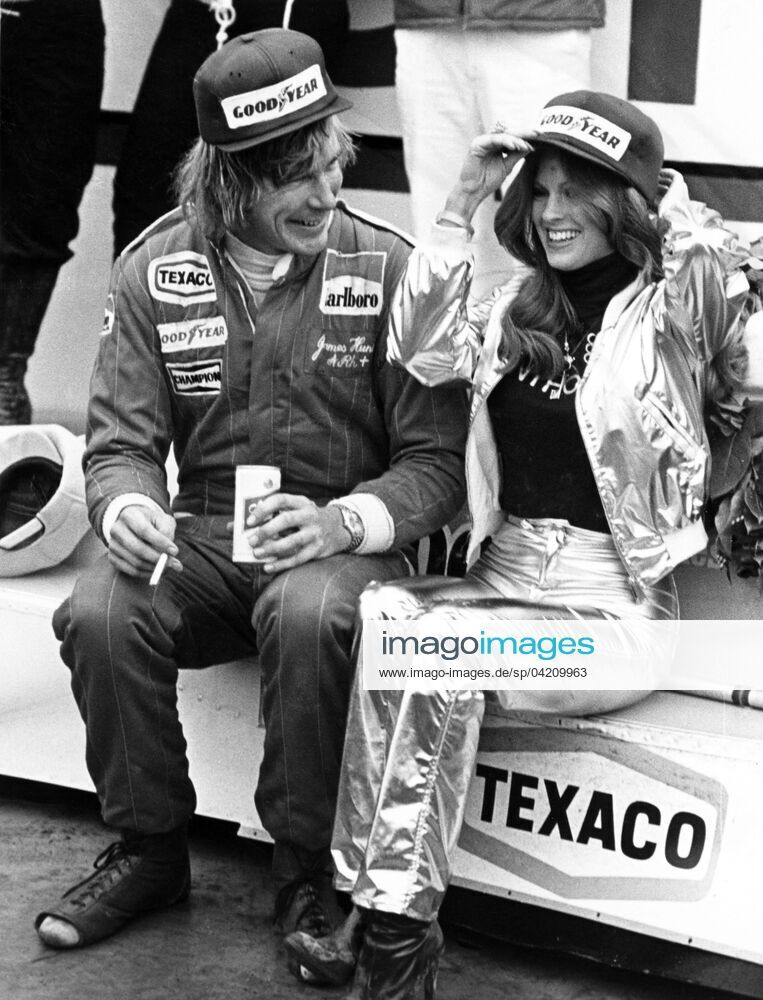
James Hunt savors victory at the US Grand Prix in Watkins Glen on 02 October 1977.
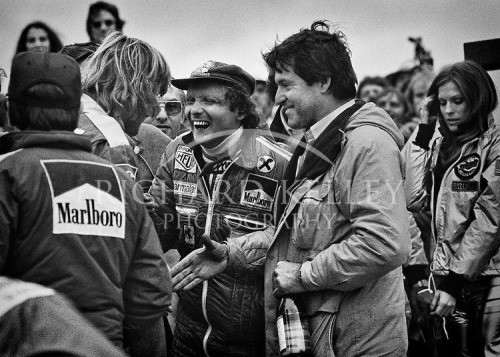
James Hunt and Niki Lauda at Watkins Glen in 1977. Photo by Richard Kelley.
He then took a further victory at Watkins Glen. At the Canadian Grand Prix, Hunt retired after a collision with team-mate Jochen Mass and was fined $2000 for assaulting a marshal and $750 for walking back to the pit lane in an "unsafe manner". In Fuji, Hunt won the race but did not attend the podium ceremony resulting in a fine of $20,000. He finished fifth in the World Drivers' Championship.
Before the 1978 season Hunt had high hopes to win a second world championship; however, in this season he scored only eight world championship points.
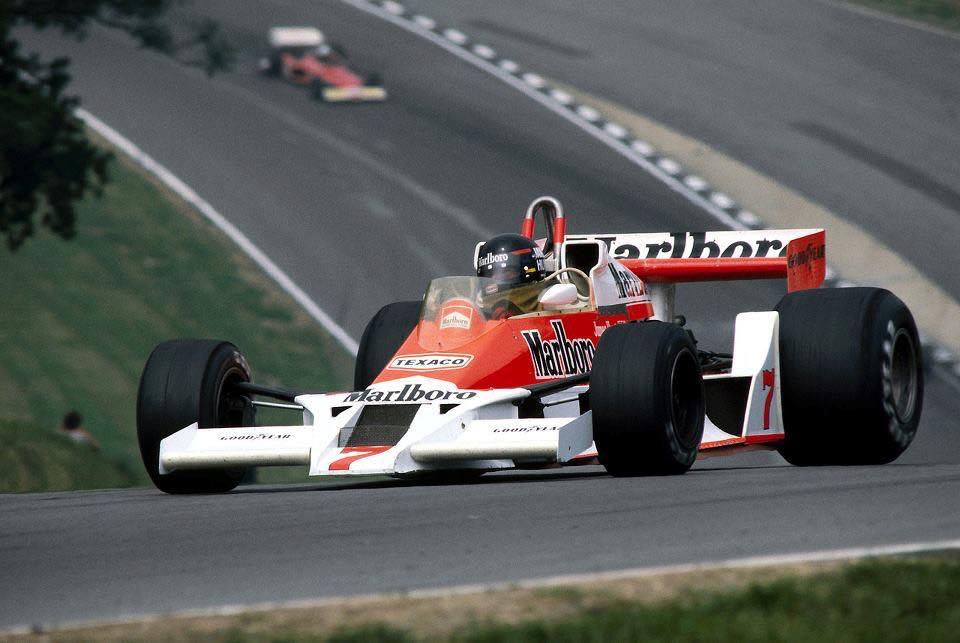
James Hunt, McLaren, in 1978.
Lotus had developed effective ground effect aerodynamics with their Lotus 79 car and McLaren were slow to respond.
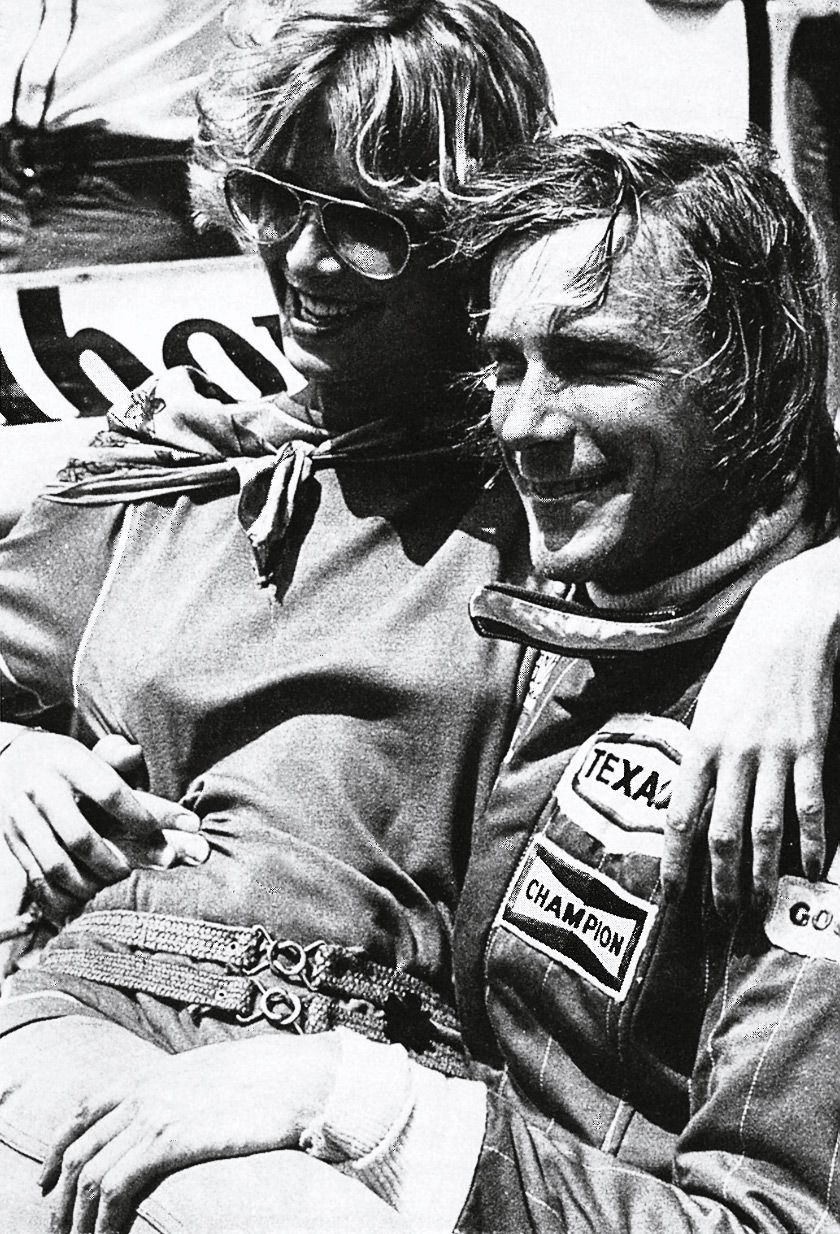
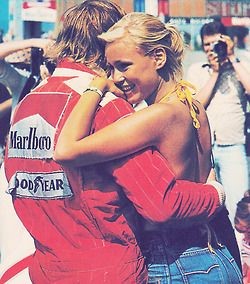
The M26 was revised as a ground effect car midway through the season but it did not work and, without a test driver to solve the car's problems, Hunt's motivation was low.
His inexperienced new team-mate Patrick Tambay even outqualified Hunt at one race. In Germany, Hunt was disqualified for taking a shortcut to allow for a tyre change.
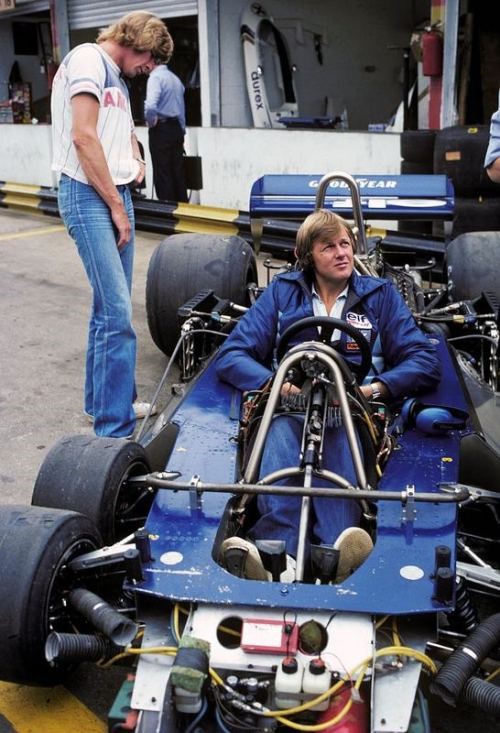
Ronnie Peterson pretends he can’t see James Hunt spying on the inner workings of his Tyrrell six-wheeler. Photo by iraceonline.com.
Hunt was also greatly affected by Ronnie Peterson's fatal crash in the 1978 Italian Grand Prix. At the start of the race there was a huge accident going into the first corner.
Peterson's Lotus was pushed into the barriers and burst into flames. Hunt, together with Patrick Depailler and Clay Regazzoni, rescued Peterson from the car, but Peterson died one day later in hospital. Hunt took his friend's death particularly hard and for years afterwards blamed Riccardo Patrese for the accident. Video evidence of the crash has since shown that Patrese did not touch Hunt or Peterson's cars, nor did he cause any other car to do so. Hunt believed that it was Patrese's muscling past that caused the McLaren and Lotus to touch, but Patrese argues that he was already well ahead of the pair before the accident took place.
For 1979, Hunt had resolved to leave the McLaren team. Despite his poor season in 1978 he was still very much in demand.
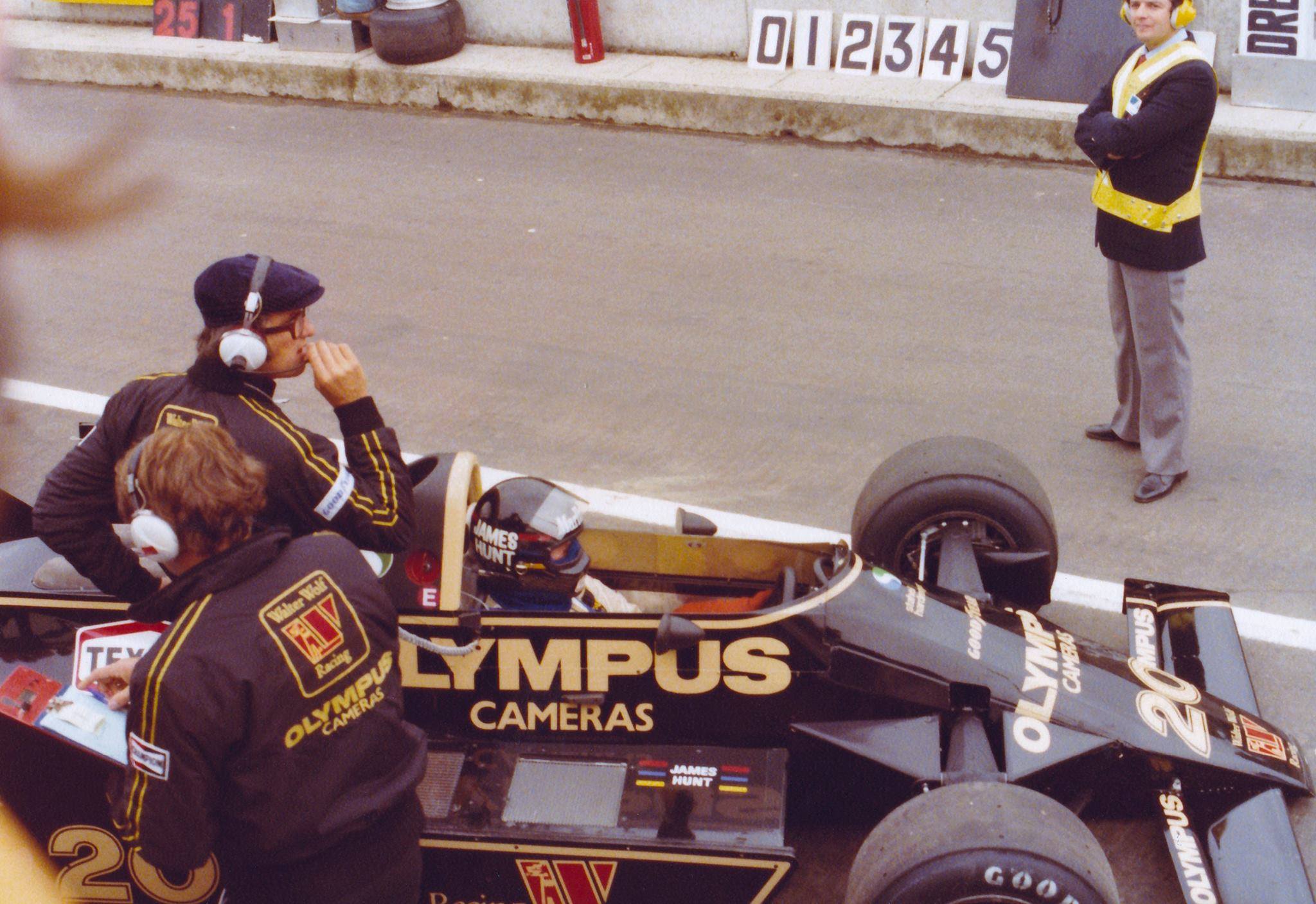
James Hunt, Wolf WR8, in 1979.
Harvey Postlethwaite persuaded Hunt to join Walter Wolf Racing, a one-car team where he would have found an atmosphere similar to the one he had experienced at Hesketh at the beginning of his career. Again he had high hopes to win races and compete for the world championship in what would be his last and ultimately brief Formula One season. The team's ground effect car was uncompetitive and Hunt soon lost any enthusiasm for racing. James could only watch as Jody Scheckter won the World Drivers' Championship that year driving the Ferrari 312T4.
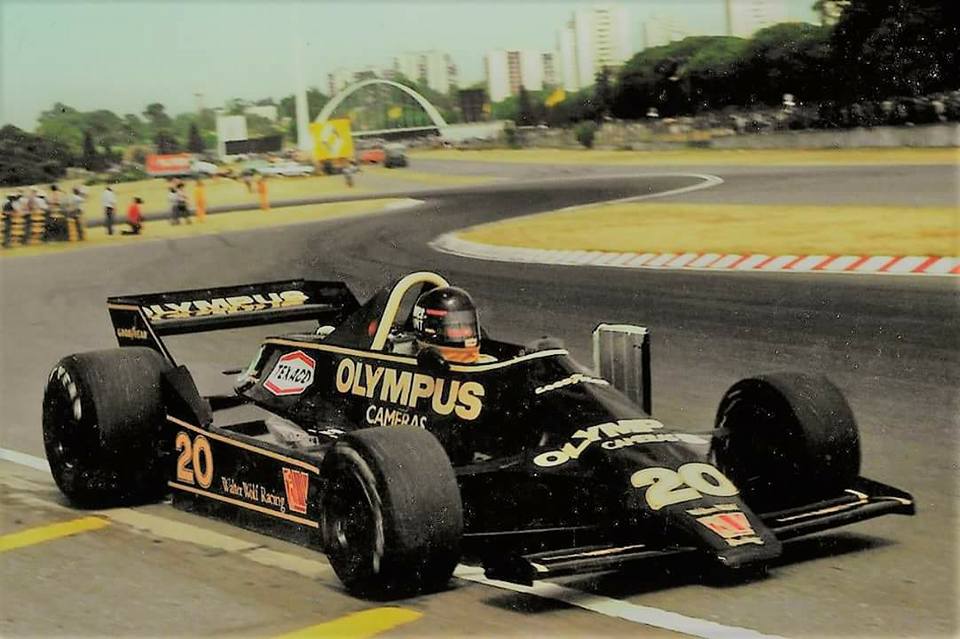
James Hunt on Wolf WR - Ford Consworth at the Argentinenan Grand Prix on 21 January 1979.
At the first race in Argentina, he felt the car was difficult to handle and, on a fast lap, the front wing became detached striking his helmet. In the race, Hunt retired due to an electrical fault.
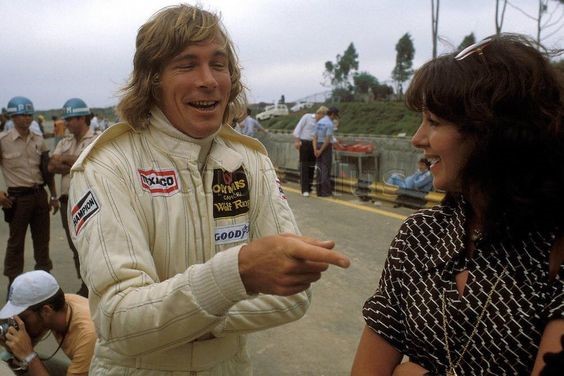
James Hunt, Wolf racing, at the Brazilian Grand Prix on 04 February 1979. Photo by Imago.
In Brazil, he retired on lap 6 due to instability under braking caused by a loose steering rack. During qualifying in South Africa, the brakes on his car failed. He managed not to collide with the wall, but only finished 8th in the race. He retired at the Spanish Grand Prix after 26 laps. At Zolder, a new Wolf WR8 was raced but Hunt crashed into a barrier hard enough to bounce back onto the track.
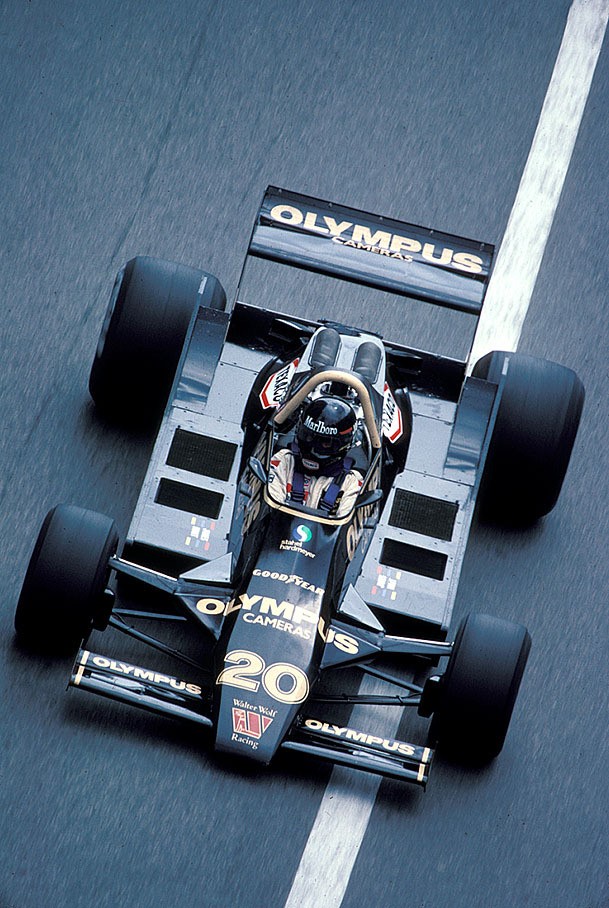
James Hunt, Wolf-Cosworth, at the Monaco Grand Prix on 27 May 1979. Photo by Rainer Schlegelmilch.
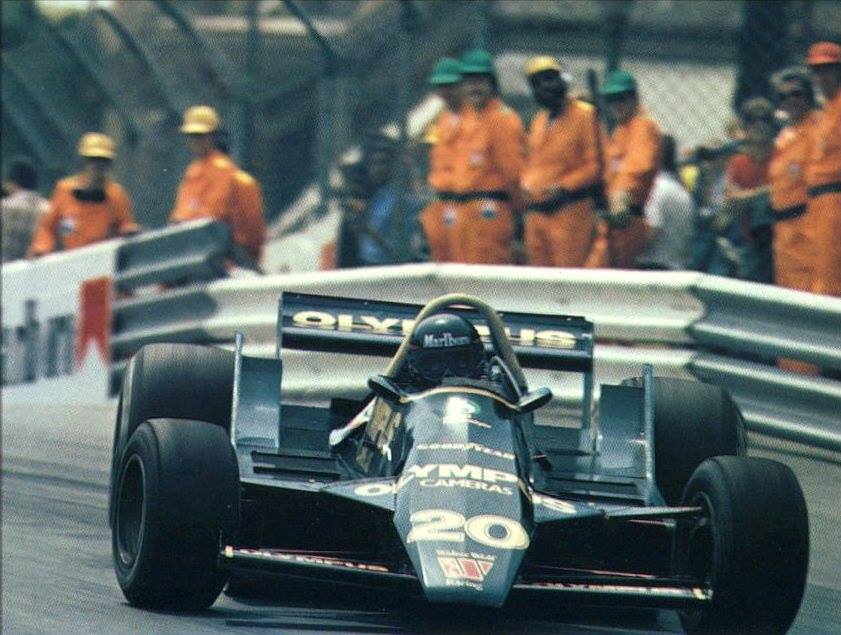
Monaco 1979. James Hunt on Wolf WR 07. His last Grand Prix.
After failing to finish the 1979 Monaco Grand Prix, the race where six years previously he had made his debut, Hunt made a statement on 08 June 1979 to the press announcing his immediate retirement from F1 competition, citing his situation in the championship and was replaced by future world champion Keke Rosberg. Despite going into retirement, he continued to work to promote his personal sponsors Marlboro and Olympus. According to Peter Warr, Hunt had been badly affected by the Ronnie Peterson accident in Monza the year before and his heart was no longer in it. Warr recalled Hunt telling him that he discovered that if he nudged the car up against the barrier and give it a squirt of throttle in second gear, it would break a driveshaft. "At Monaco, four laps into the race, James stopped up the hill by Rosie’s bar, with a broken driveshaft. Then he told us he was retiring."
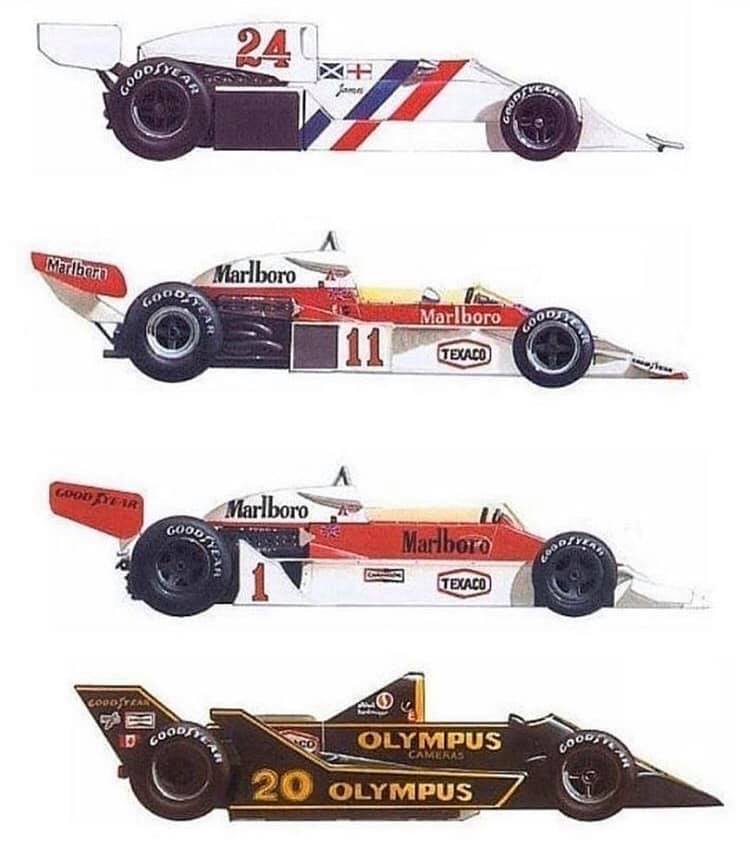
The cars James Hunt raced in Formula 1.
Soon after retirement, in 1979, Hunt was approached by Jonathan Martin, the head of BBC television sport, to become a television commentator alongside Murray Walker on the BBC 2 Formula One racing programme Grand Prix. After a guest commentary at the 1979 British Grand Prix, Hunt accepted the position and continued for thirteen years until his death. During his first live broadcast at the 1980 Monaco Grand Prix, Hunt placed his plaster-cast leg into Walker's lap and drank two bottles of wine during the broadcast. Hunt regularly went into the booth minutes before a race started, which concerned Martin, who believed that Hunt was "a guy that lived on adrenaline."
In the commentary booth, the producers supplied only one microphone to Walker and Hunt, to avoid them talking over each other. On one occasion, Hunt wanted the microphone and went up to Walker who had continued for longer than expected and grabbed him by the collar, with Walker having his fist near to Hunt. On another occasion, Hunt grabbed the microphone cord and cracked it like a whip, which yanked the microphone out of Walker's hand. His insights and dry sense of humour brought him a new fanbase. He often heavily criticised drivers he did not think were trying hard enough.
He also had a reputation for speaking out against back-markers who held up race leaders.
Other than Arnoux, Hunt's other frequent targets included Andrea de Cesaris, Philippe Alliot, Jean-Pierre Jarier and Riccardo Patrese. Hunt criticised Jean-Pierre Jarier for blocking leaders, calling him "pig ignorant" and a "French wally" during live broadcasts.
Hunt did not want his commentaries broadcast in South Africa during the apartheid years but, when he could not stop this from happening, he gave his fees to black-led groups working to overthrow apartheid.
Hunt also commented on Grand Prix racing in newspaper columns which were published in The Independent and elsewhere and in magazines.
In 1980, Hunt nearly made a comeback with McLaren at the United States Grand Prix West, asking for $1 million for the race. This opportunity came about when regular driver Alain Prost broke his wrist during practice for the previous round in South Africa and the French rookie was not fully fit to drive at Long Beach. The team's main sponsor, Marlboro, offered half the figure but negotiations ended after Hunt broke his leg while skiing. In 1982 Bernie Ecclestone, owner of the Brabham team, offered Hunt a salary of £2.6 million for the season but was rejected by Hunt. In 1990, Hunt was in financial trouble with the loss of £180,000 investing in Lloyd's of London and considered a comeback with the Williams team. He had tested on the Paul Ricard Circuit a few months prior to test modern cars and was several seconds off the pace and believed he would be physically prepared. Hunt attempted to persuade John Hogan, VP Marketing of Philip Morris Europe, to support the possible comeback and presented him with bank statement for proof of being indebted.
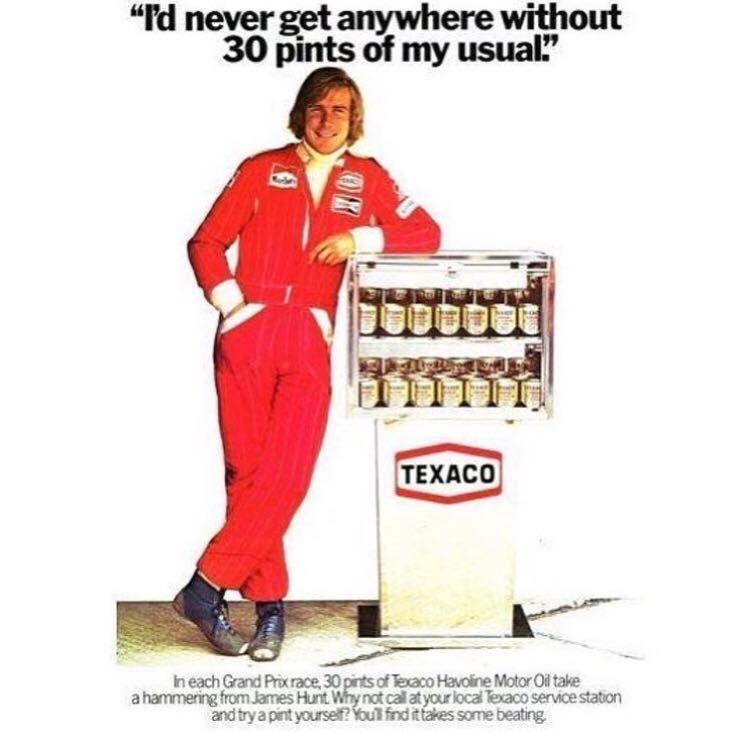
James Hunt in a Texaco ad.
Hunt made a brief appearance in the 1979 British silent slapstick comedy The Plank, as well as co-starring with Fred Emney in a Texaco Havoline TV advertisement. He also made a posthumous appearance on ITV's Police Camera Action! Special Crash Test Racers in 2000; this was one of many interviews to be aired posthumously. Hunt also competed in an exhibition race to mark the opening of the new Nürburgring in May 1984. Despite having no licence to ride a motorcycle, he accepted, instead of his usual fee, the then-new 1980 electric start Triumph Bonneville he had contracted to advertise on behalf of the struggling Triumph motorcycle workers' co-operative. With journalistic mirth, he turned up at the press launch with his foot in plaster.
Hunt was hired by John Hogan as an adviser and tutor to drivers who were sponsored by Marlboro, instructing them in the tactics of driving and the approach to racing. Mika Häkkinen and Hunt had discussions about not only racing but about life in general.
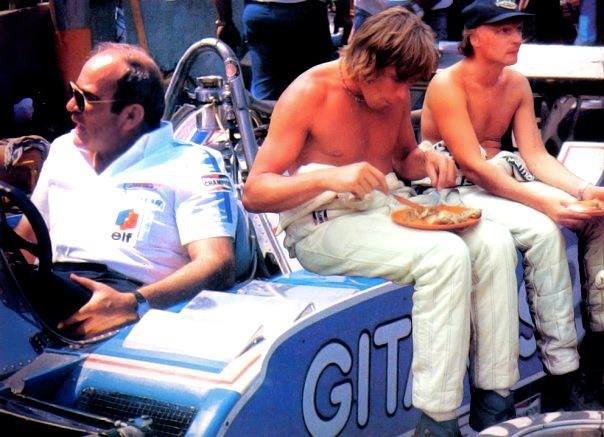
James Hunt and Niki Lauda in the Ligier pits. Little known fact is that Ligier produced the best cottage pie in all of the paddock.
Early in their careers, Hunt and Niki Lauda were friends off the track. Lauda occasionally stayed at Hunt's flat when he had nowhere to sleep for the night. In his autobiography ‘To hell and back’, Lauda described Hunt as an "open, honest to God pal." Lauda admired Hunt's burst of speed, while Hunt admired Lauda's capacity for analysis and rigour. In the spring of 1974, Hunt moved to Spain on the advice of the International Management Group.
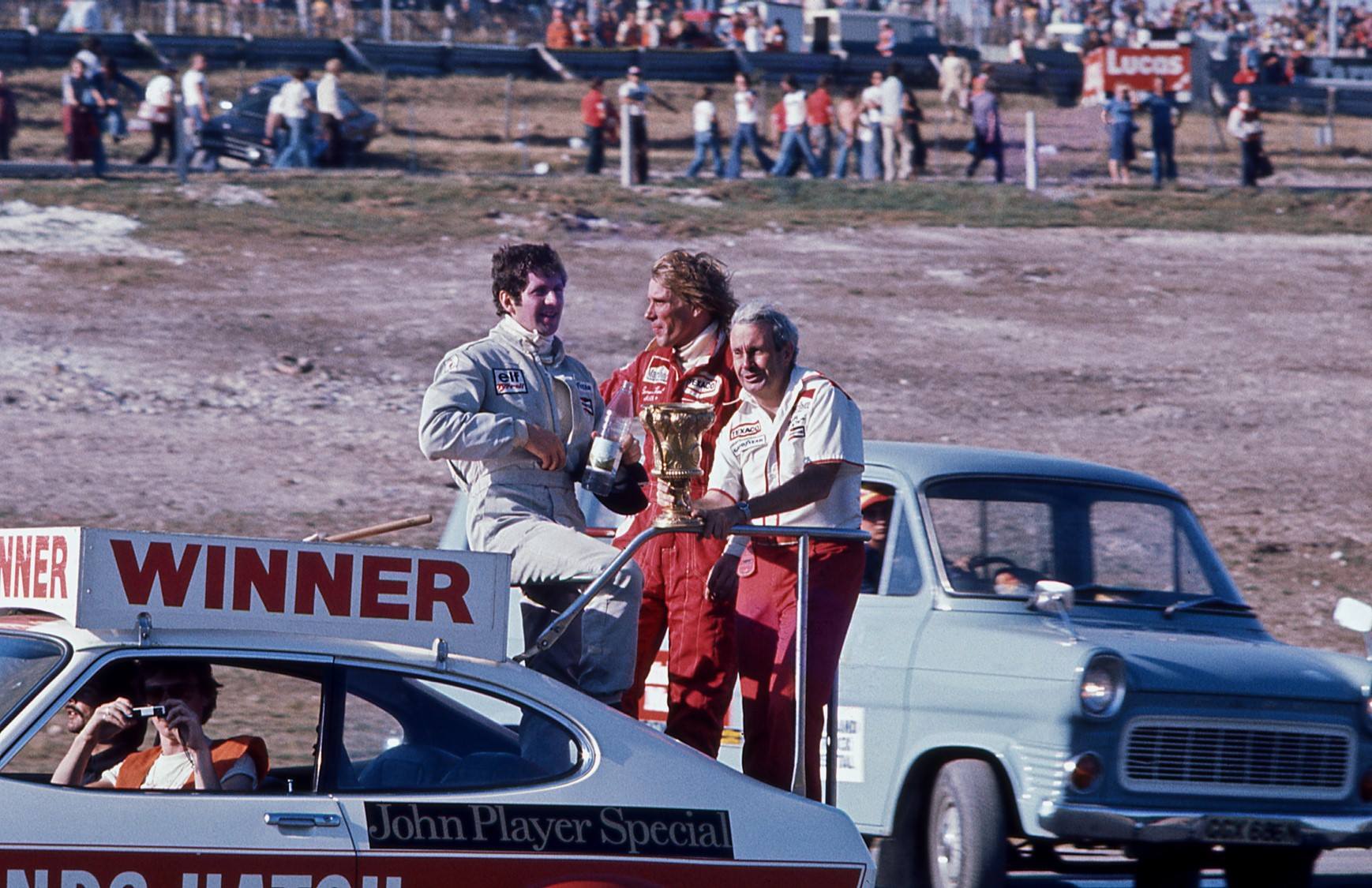
Jody Scheckter, James Hunt and Teddy Mayer.
Whilst living there as a tax exile, Hunt was the neighbour of Jody Scheckter and they also came to be very good friends, with Hunt giving Scheckter the nickname Fletcher after the crash-prone bird in the book Jonathan Livingston Seagull.
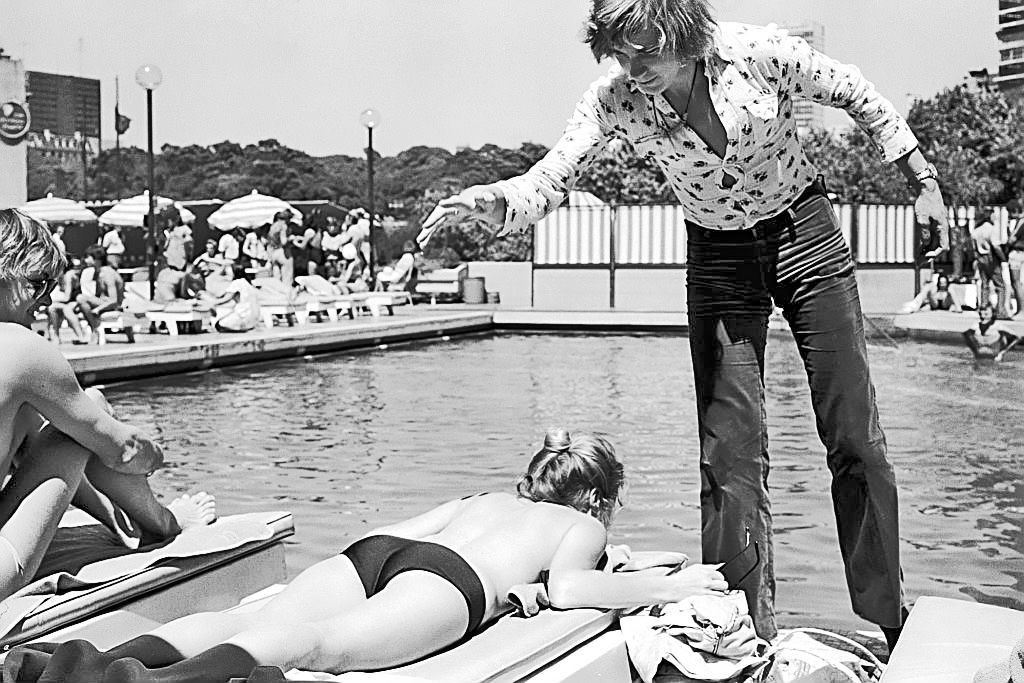
Ronnie and Barbro Peterson with James Hunt.
Another close friend was Ronnie Peterson. Peterson was a quiet and shy man, whilst Hunt was the opposite, but their contrasting personalities made them very close off the track.
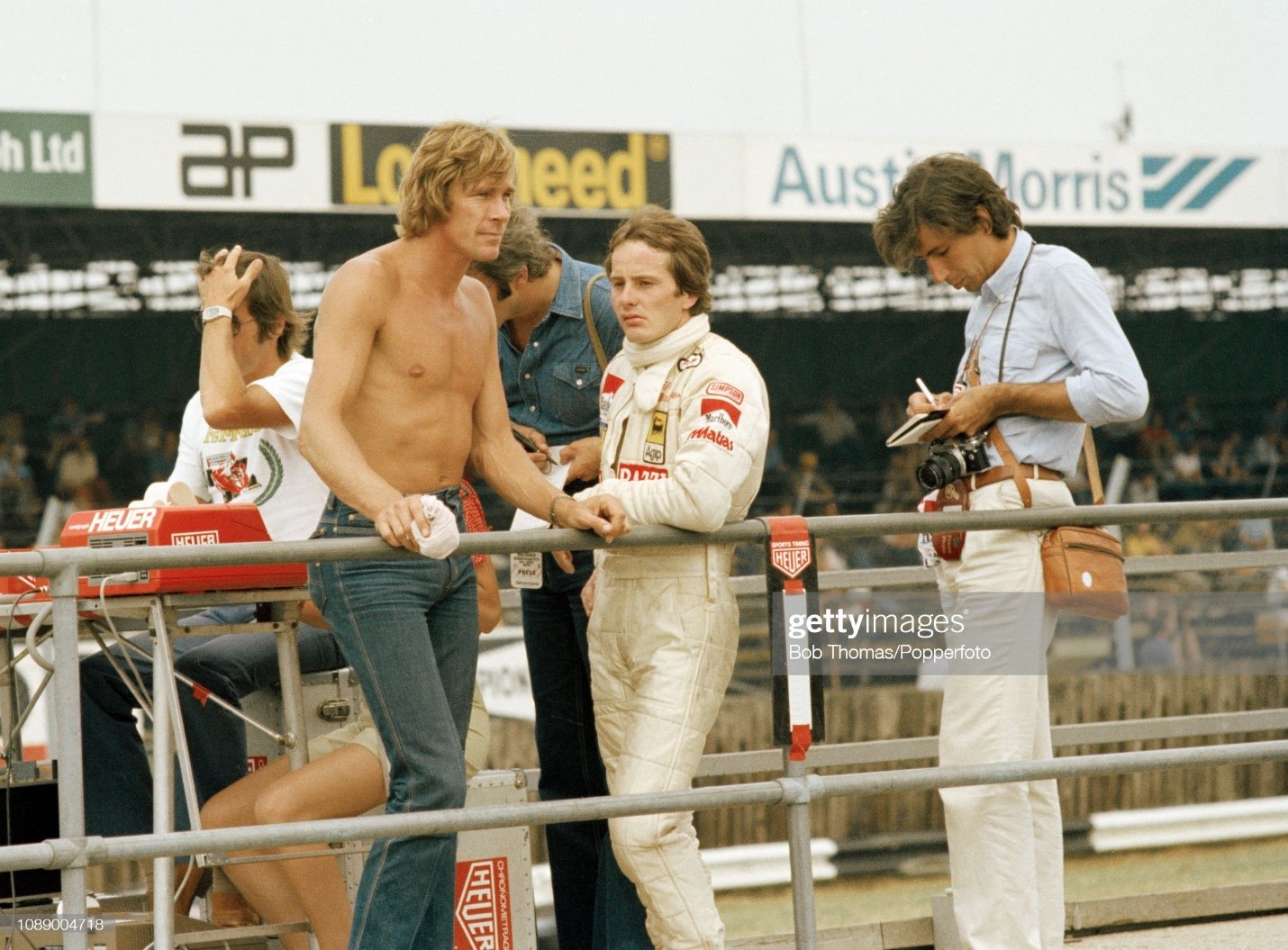
James Hunt and Gilles Villeneuve on the pitwall during the British Grand Prix at the Silverstone Circuit in Northampton, England, on July 14, 1979. Photo by Bob Thomas / Popperfoto via Getty Images.
It was Hunt who discovered Gilles Villeneuve, whom he met after being soundly beaten by him in a Formula Atlantic race in 1976.
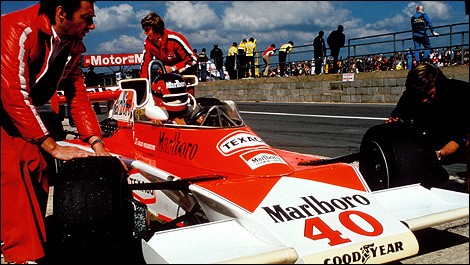
The first F1 race for Villeneuve at the British Grand Prix in July 1977 at Silverstone.
Hunt then arranged for the young Canadian to make his Grand Prix debut with McLaren in 1977.
Hunt was involved in a relationship with Taormina Rieck (known as Ping by her friends) from the age of 15. Rieck separated from Hunt in May 1971, which left Hunt not seeing his family or friends for long periods of time. Hunt met his first wife, Suzy Miller, in 1974 in Spain. A few weeks after their initial meeting, he proposed. The couple married on 18 October 1974 at the Brompton Oratory in Knightsbridge.
In 1982, Hunt moved to Wimbledon. In September that year, he met his second wife, Sarah Lomax, while she was on a holiday in Spain with friends. Hunt started dating Lomax when she arrived back in Britain and they dated throughout the winter. Hunt and Lomax were married on 17 December 1983 in Marlborough, Wiltshire. Hunt arrived late for the service, with proceedings delayed further when his brother Peter went to a shop to purchase a tie for him.
On a visit to Doncaster, Hunt was arrested for an assault - which was witnessed by two police officers - and was released on bail after two hours with the charges against him later being dropped. Hunt and Lomax separated in October 1988 but continued to live together for the best interests of their children. They were divorced in November 1989 on the grounds of adultery committed by Hunt.
Hunt met Helen Dyson in the winter of 1989 in a restaurant in Wimbledon, where she worked as a waitress. Dyson was 18 years Hunt's junior and worried about her parents' reactions to him. Hunt kept the relationship secret from friends.
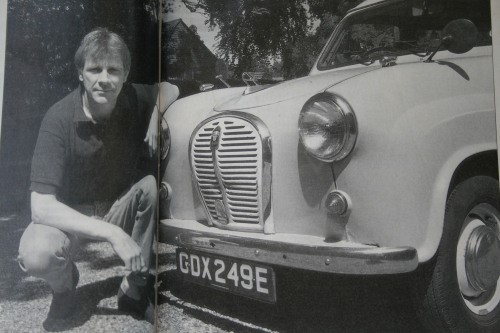
James Hunt posing next to his Austin A35 van in the late 80s. Photo by influx.co.uk.
The relationship brought new happiness to Hunt's life, among other factors which included his clean health, his bicycle, his casual approach to dress, his two sons and his Austin A35 van.
Hunt died in his sleep on the morning of 15 June 1993 of a heart attack at his home in Wimbledon.
At his funeral service, the pallbearers included his father Wallis, his brothers Tim, Peter and David and his friend Anthony 'Bubbles' Horsley. They carried the coffin out of the church and into the hearse, which drove two miles to Putney Vale Crematorium, where he was cremated. After the service, most of the mourners went to Peter Hunt's home to open a 1922 claret, the year of Wallis Hunt's birth. The claret had been given to him by James on his 60th birthday in 1982.
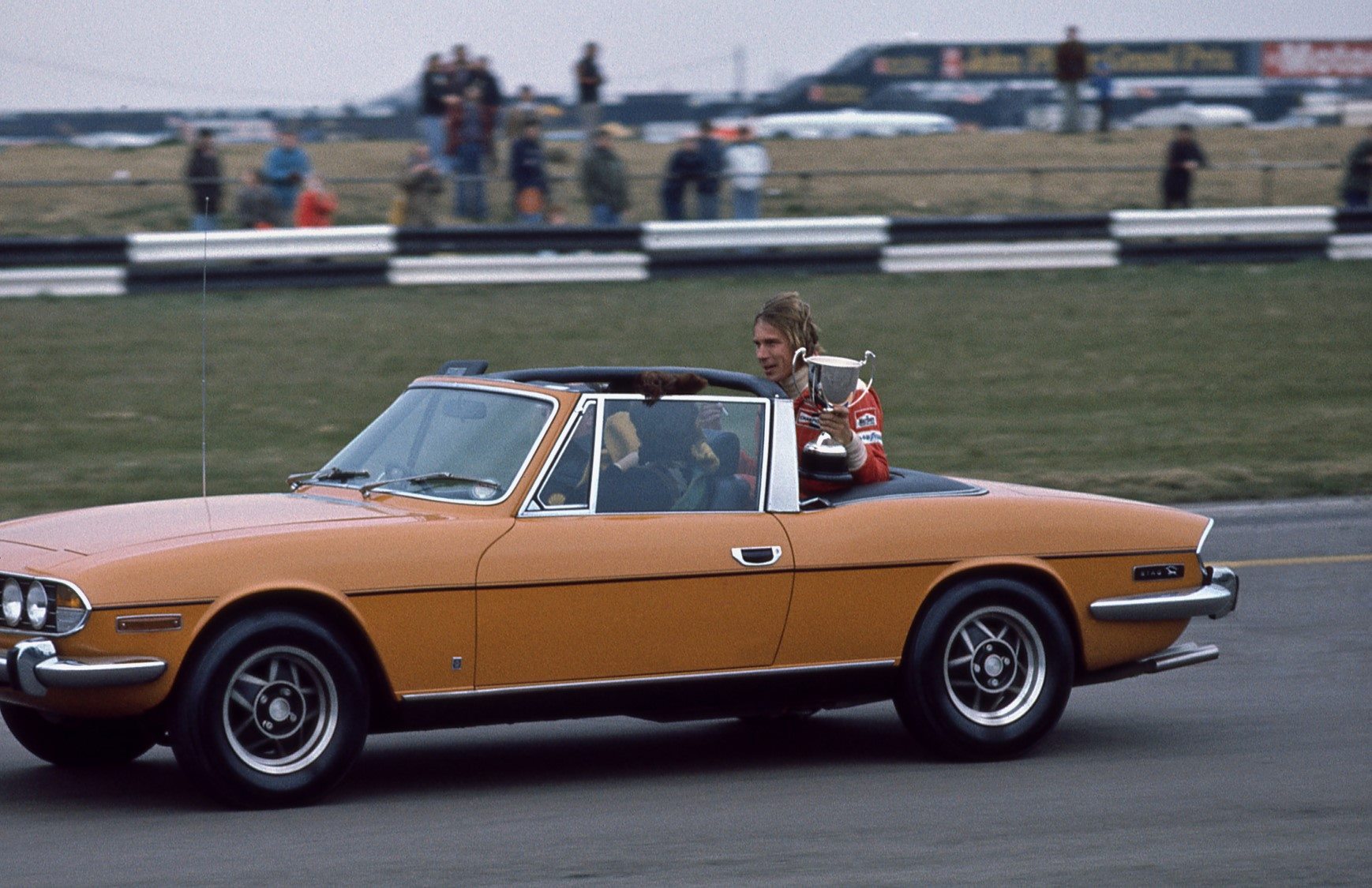
Hunt was known as a fast driver with an aggressive, tail-happy driving style but one prone to spectacular accidents, hence his nickname of Hunt the Shunt. In reality, while Hunt was not necessarily any more accident-prone than his rivals in the lower formulae, the rhyme stuck and stayed with him. In the book James Hunt: The Biography, John Hogan said of Hunt: "James was the only driver I've ever seen who had the vaguest idea about what it actually takes to be a racing driver." Niki Lauda stated that "we were big rivals, especially at the end of the [1976] season, but I respected him because you could drive next to him — 2 centimetres, wheel-by-wheel, for 300 kilometres or more — and nothing would happen. He was a real top driver at the time."
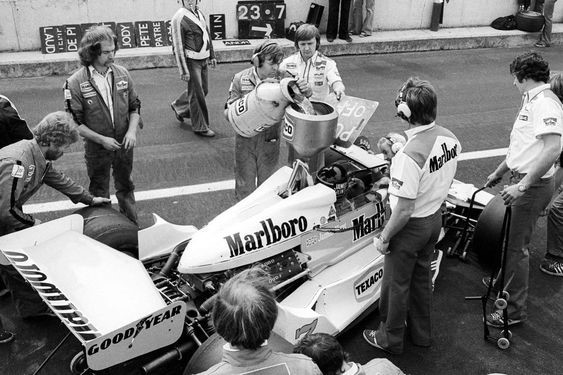
James Hunt in 1976.
After winning the world championship in 1976, Hunt inspired many teenagers to take up motor racing. In early 2007, Formula One driver and 2007 World Champion Kimi Räikkönen entered and won a snowmobile race in his native Finland under the name James Hunt. Räikkönen has openly admired the lifestyles of 1970s race car drivers such as Hunt. Hunt's name was lent to the James Hunt Racing Centre in Milton Keynes when it opened in 1990.
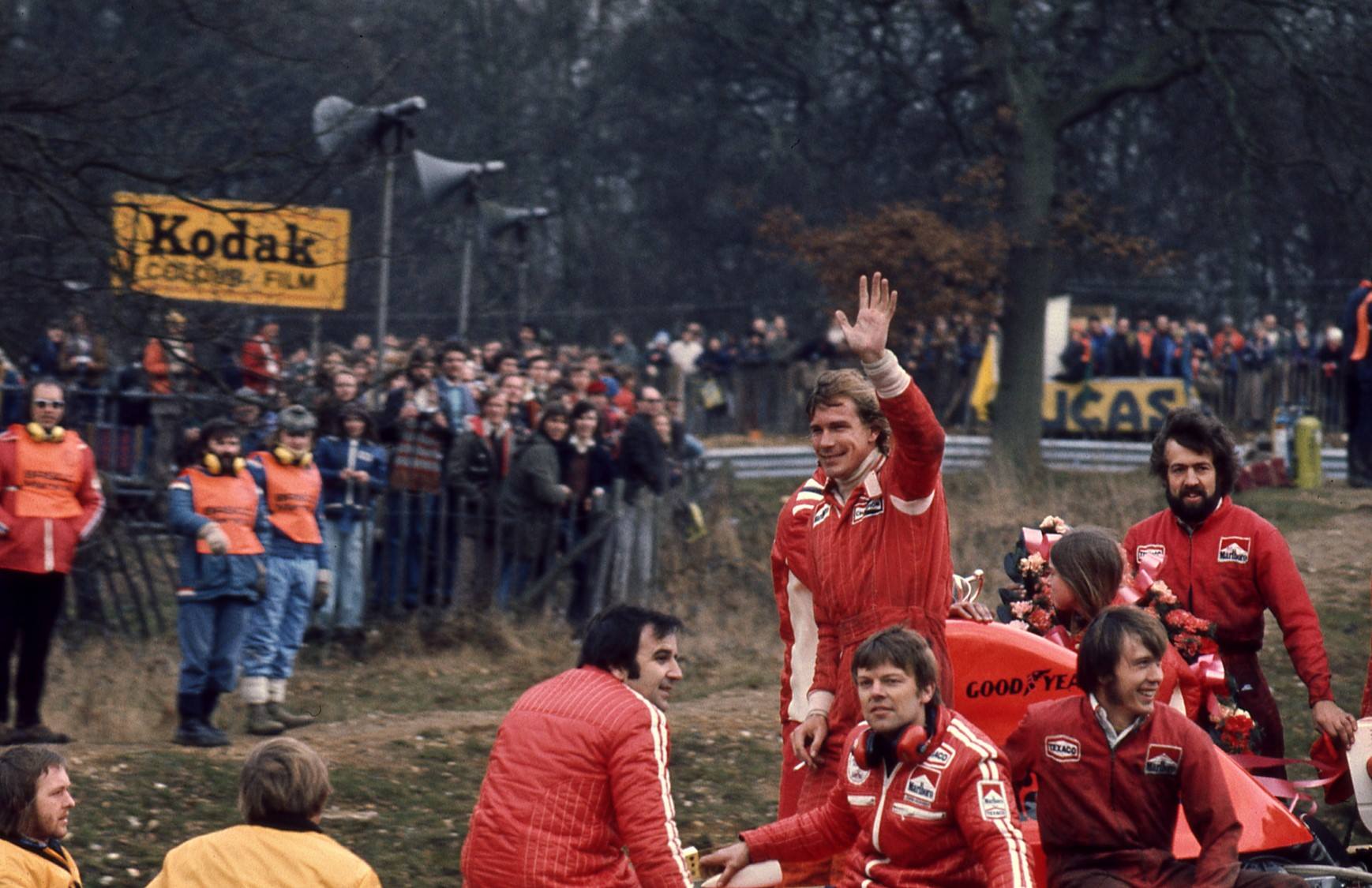
A Celebration of the Life of James Hunt was held on 29 September 1993 at St James's Church, Piccadilly. The service was attended by 600 people and conducted by Reverend Andrew Studdert-Kennedy. The service included readings from Wallis and Sue Hunt from chapter 3 of the Book of Ecclesiastes and Hunt's sister Sally Jones read Hilaire Belloc's poem 'Jim'. Innes Ireland read Rudyard Kipling's poem 'If' and Helen Dyson read Psalm 84. Nigel Davison, Director of Music and Master in charge of running Wellington College, prefaced the second reading.
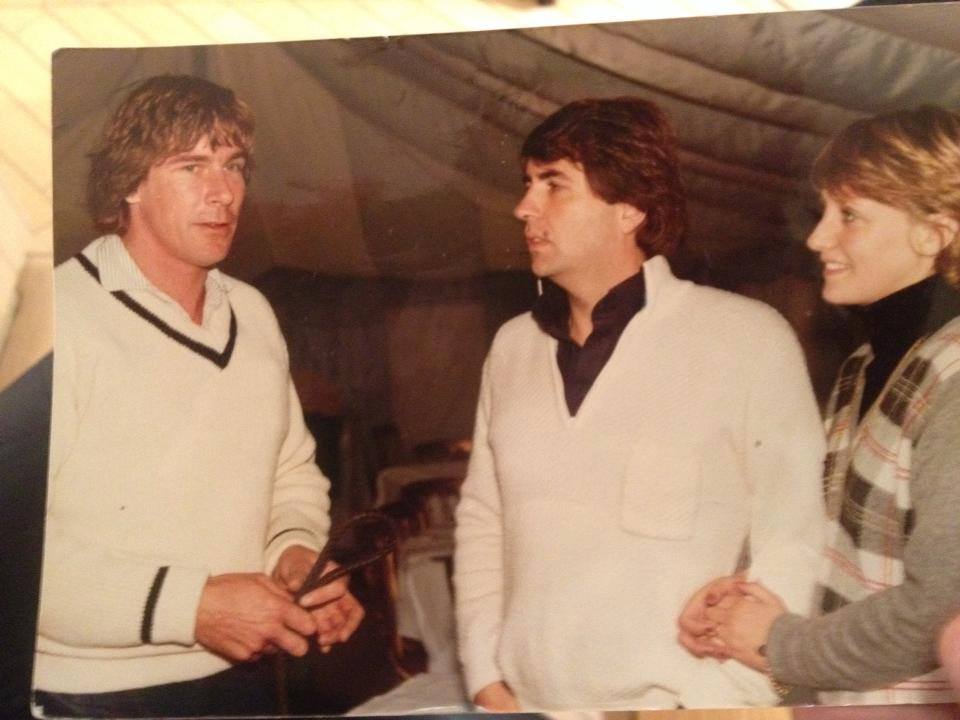
On 29 January 2014, James Hunt was inducted into the Motor Sport Hall of Fame.
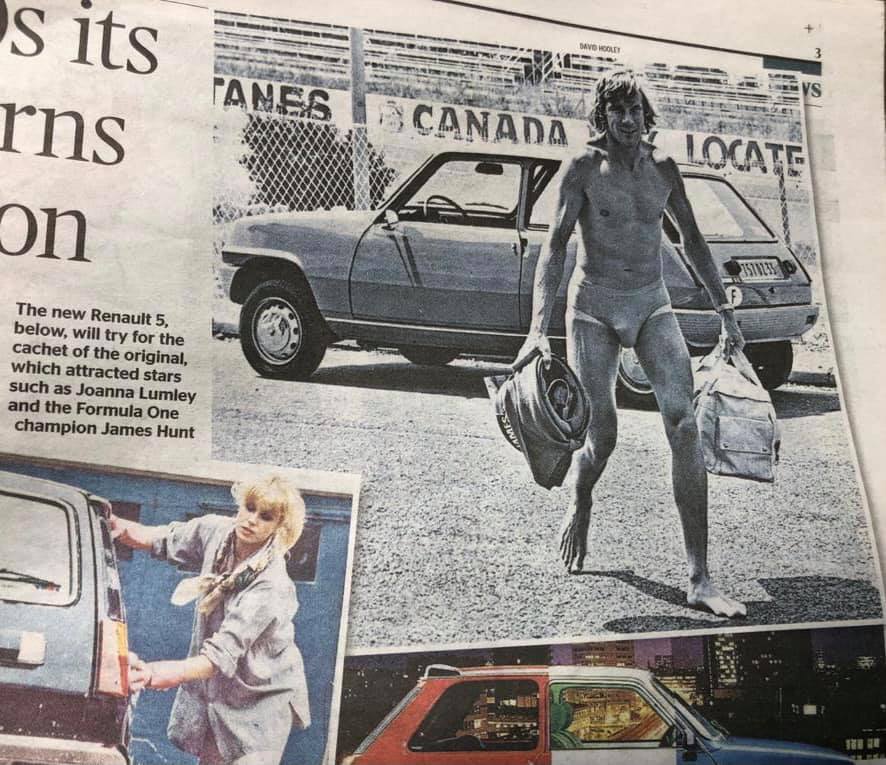
James Hunt possibly in 1972.
Hunt's helmet featured his name in bold letters along with blue, yellow and red stripes on both sides and room for the sponsor Goodyear, all set on a black background. Additionally, the blue, yellow and red bands resemble his Wellington College school colours.
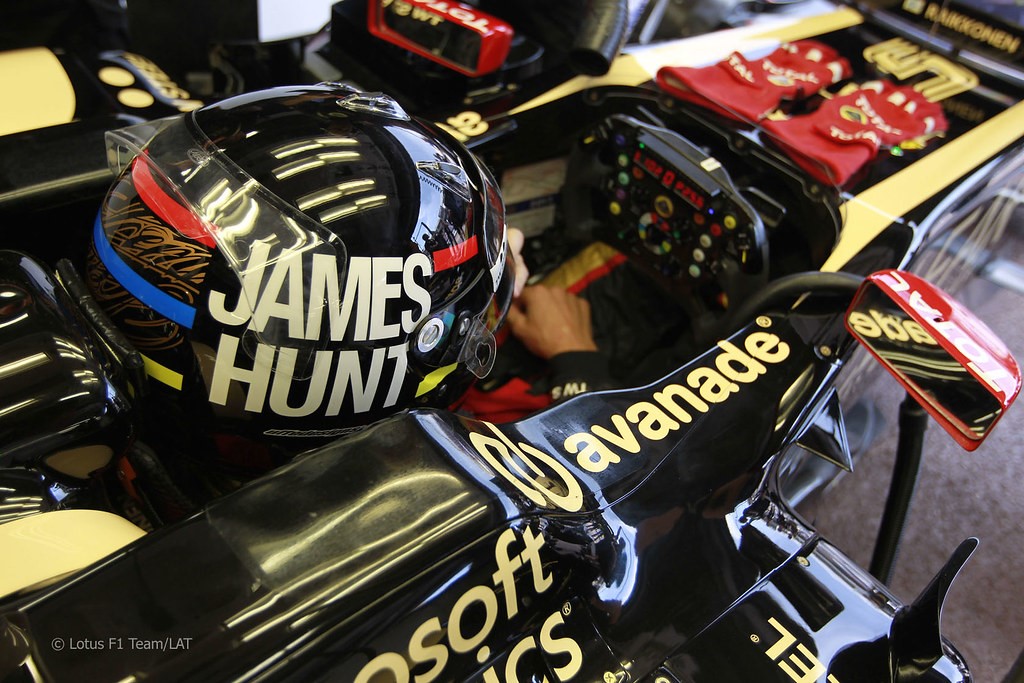
Kimi Raikkonen, Lotus E20, Monaco GP 2012, James Hunt helmet.
During his comeback year to Formula One in 2012, 2007 World Champion Kimi Räikkönen sported a James Hunt painted helmet during the Monaco Grand Prix.
Räikkönen repeated the tribute at the 2013 Monaco Grand Prix.
James Hunt’s epic title battle with Niki Lauda, during what many see as the definitive F1 season, was topped off by a thrilling race in the land of the rising sun. It became an instant classic, one of F1’s Great Drives.
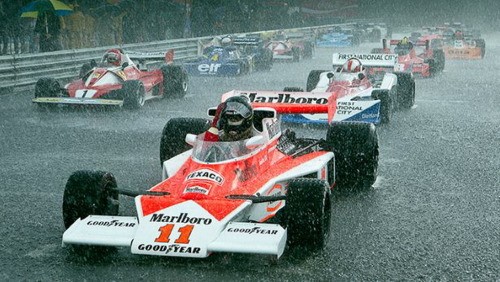
James Hunt and Niki Lauda at Fuji in 1976.
With everything to lose, in treacherous conditions and with late drama, James Hunt’s drive in the 1976 Japanese Grand Prix was one of the greatest of all time.
James Hunt delivered his greatest drive in spite of himself. It wasn’t just the peak moment of his career, but also a defining drive for F1.
The British gentleman racer conquering the world’s best in far away lands, Hunt embodied it.
Despite this, the Brit’s landmark drive came in the midst of late night escapades, mechanical disasters, psychological warfare and F1 politics.
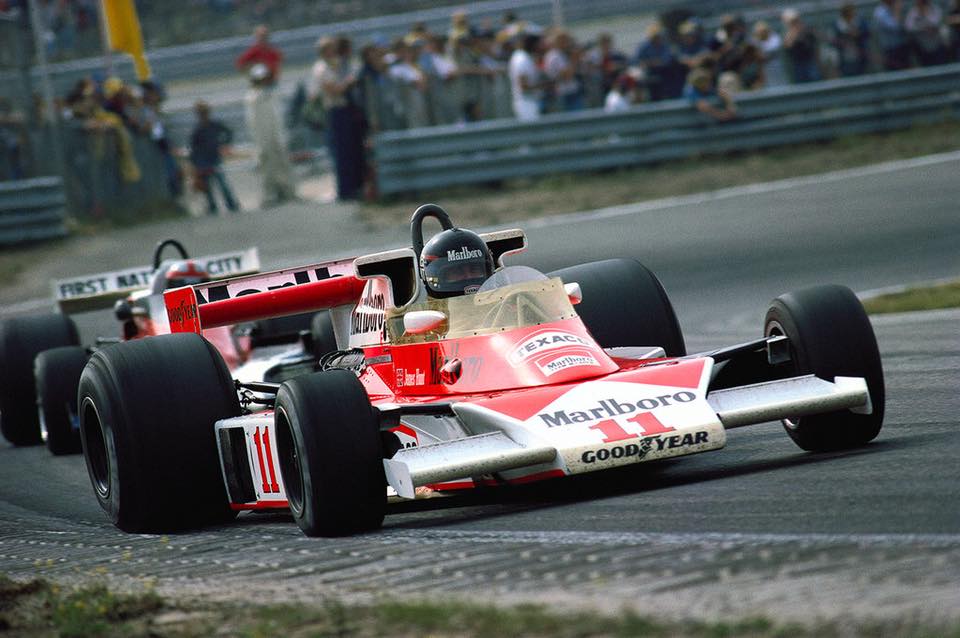
James Hunt, McLaren, in 1976.
As the ‘76 season approached its climax in North America and Asia, it seemed all might be lost for the McLaren team and its lead driver. Hunt had been duelling with Ferrari’s Niki Lauda throughout the year, but losing his British Grand Prix win to disqualification (announced by the FIA at Round 14 in Canada) seemed to have derailed his season for good.
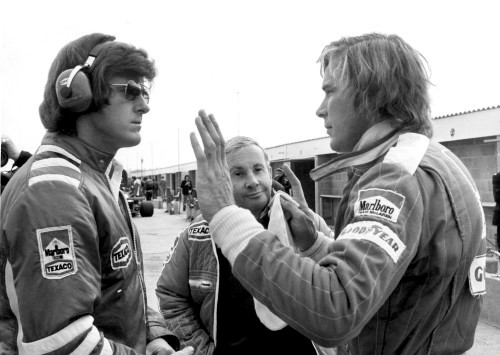
Alastair Caldwell, Teddy Mayer and James Hunt.
McLaren team manager at the time Alastair Caldwell describes the state of affairs as they approached the North American leg of the season: “we abandoned the idea of winning the world championship. I let him misbehave in Canada and in Watkins Glen. On both occasions we were pissed on race eve, both of us in a bar after midnight getting rotten, me on alcohol and him on women, because he was always very successful with women. James met a girl – the leader of the band at the motel in Montreal – and so he came to the race dishevelled, in the same clothes as he’d been wearing the previous night – and he won the race! Even then we still thought we were out of it. Then we won Watkins Glen too! So suddenly we became serious again.”
Lauda had scored 4 points to Hunt’s 18 in this period. With the championship fight back on, the rejuvenated team and driver looked at the season finale in a new light. The championship fight was back on and, as a result, McLaren prepared for the Japanese GP with renewed vigour.
James Hunt had been in Japan a fortnight, ostensibly to test at a circuit new to him. Delays at customs, car problems and bad weather had severely restricted his running, but at least now he was totally orientated and, in his inimitable fashion, ‘relaxed’. That meant when he wasn’t strutting his stuff on the hotel’s squash court, he was billing and cooing with its latest migratory flock of pretty air stewardesses to bed. It beat jogging.
Lauda arrived later, low-key and at a low ebb. The spirit that held the demons at bay during his remarkable Monza comeback had evaporated in Canada and America. Now running on empty, he was full of doubts. While Ferrari team manager Daniele Audetto attempted to whip up retro oppo to McLaren’s ‘illegal’ testing, his star driver looked the other way and wished it over: Lauda was sick of Enzo and his minions, of a season in its 10th month and of press intrusion.
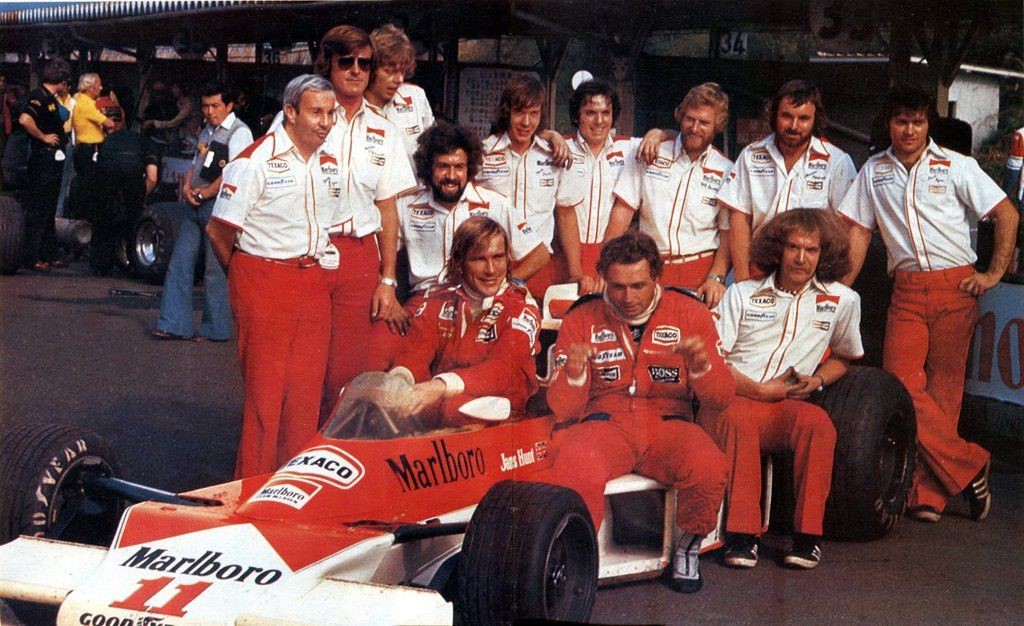
James Hunt and Jochen Mass pictured with the rest of the McLaren team at the last race of the season, the 1976 Japanese Grand Prix at Fuji Speedway. Photo by McLaren Racing Marlboro Team.
McLaren’s earlier preparations were in sharp contrast to the rest of the field who arrived just for the race weekend itself. According to Caldwell, “the others all turned up on the Thursday, including Niki, you can see them all get off the plane knackered and then trying to find where this new racetrack was.”
It wasn’t just through testing and acclimatisation that Hunt and McLaren stole a march. Caldwell thought he might use interactions with the press to his advantage: “just for a laugh we spread a rumour. A journalist said to me ‘what’s the track like?’ I said: ‘it’s is good but it’s got a lot of loose gravel on it.’”
Enjoying the effect the track surface story had on the rest of the field’s preparations, Caldwell thought he’d develop the rumour into a full-blown design feature.
“Because we were bored and had nothing else to do, the mechanics made mesh covers for all the air intakes on the car, to “protect” the brake ducts and air intake. “Then Niki (Lauda) came down to our garage, which he always did, he spent more time in our garage then Ferrari’s. He would joke with us and do mechanic’s repartee. Niki had come to see what we’d done with the cars as he was also a spy. So I told the mechanics, ‘just by mistake’, to take the covers off the cars so you could see the mesh covers on all the intakes. They did this and then they put it back on in a hurry while I ‘looked displeased’. And so then Niki broke off the conversation, trotted back to Ferrari and said ‘fucking hell, McLaren have put vents near these grilles over everything in the car, we got to do the same.’ The whole Ferrari organisation went out to find these grilles, find where they came from and make them for their three cars. Then we put our three cars in the pit road and took all the grilles off the T-Car. Niki came down and said: ‘you fucking bastards!’ They came down the pitroad and Ferrari had this shit all over their car, these grilles all over the radiators. He had to tear back and tell them to take them all off. Psychologically we had them on the back foot right from the start, there’s all this psychological warfare.”
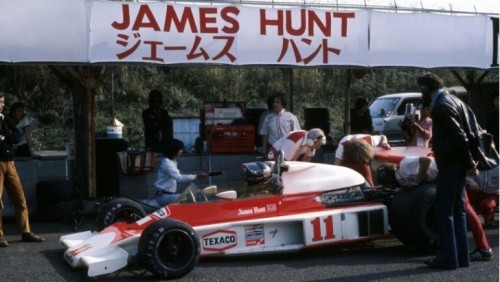
Niki was plastered across front pages because of his near-death experience on the track; James was on them because of the life he led off it. Their battle and clashing personalities, though they were good friends, had made the world championship a global news shit-fight. Hunt, outgoing but often lonely in a crowd, pretended to be okay with it. Lauda didn’t.
Friday’s practice sessions provided blessed relief, therefore, even though both men suffered understeer on the stickier Goodyears made available to its faster teams because of the rare presence of Bridgestone and Dunlop on one-off Japanese entries. The title rivals finished the day one-hundredth apart on a provisional third row.
Each improved on Saturday – Hunt to second, Lauda to third – and James, a notoriously slow starter who, by his own estimation, needed to win the race in order to become world champion, was in a much-improved mood. Niki’s never budged.
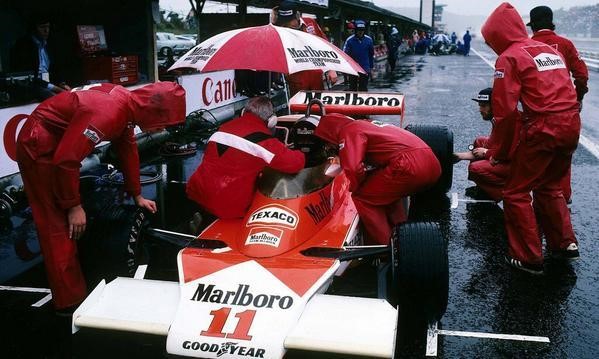
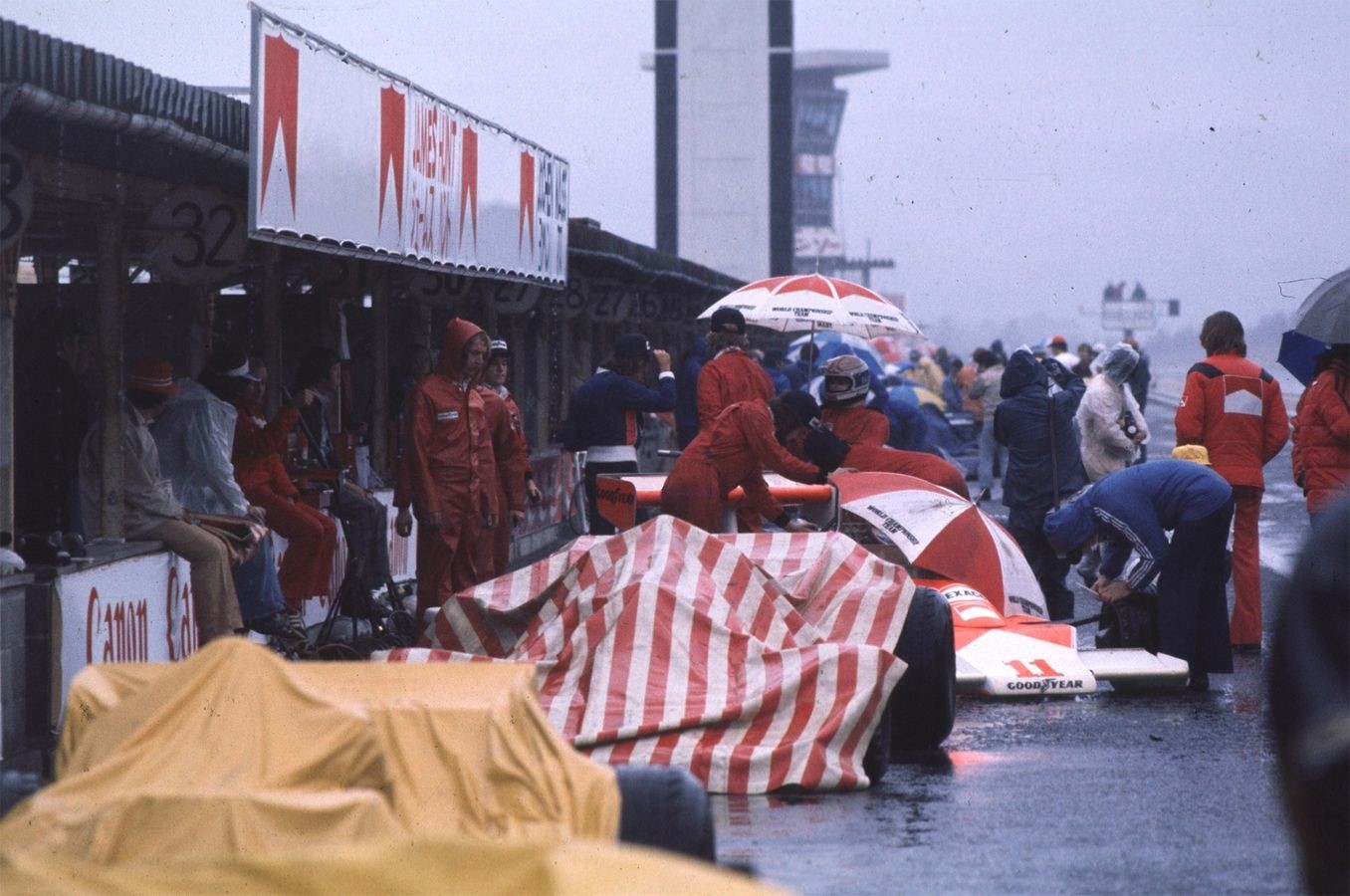
Then it rained. And rained. And rained some more.
The storm that swept in from China a day later than forecast was the last thing Lauda needed: another element beyond his control. Mist shrouded the snow cone of Mount Fuji, which supposedly bestowed good fortune – when visible – and Niki felt hemmed in by circumstance.
The mind-games might well have been in vain, for the monsoon weather which rolled in on Sunday looked like putting the race in jeopardy. If the Grand Prix was cancelled, Lauda would be handed the World Championship.
Not that Hunt was enamoured with the situation. He spoke privately with Lauda and agreed an attempt to have the race postponed, albeit not before he stressed that he would take the start if necessary and race as hard as Niki forced him to.
The Grand Prix Drivers Association had been formed to have some influence on such matters, to stop the interests of teams, the governing body and sponsors taking precedence over drivers’ well being. Hunt and Lauda were both members and convened prior to the race start in an effort to have it stopped.
“They were adamant the race wasn’t going to be held. Bernie (Ecclestone, Brabham team boss) and I were in the race control tower trying to convince them to hold the race.” says Caldwell. “And James kept on saying: ‘no, no, we’re not going to race’. I tried to explain to him that no race meant no World Championship. He replied: “no, no, no, it’s totally unsuitable, we can’t race”.
Alistair Caldwell, McLaren Team boss, resorted to more imaginative tactics to swing the mood towards starting the race. “I was going down (to the pits) getting my car mechanics to start the engines every half an hour, which would make all the other teams start doing it, they didn’t know why. The engines were making this noise ‘woop, woop, woop’”.
The engineer then turned his attention to activating the spectators. “I was trying to get some enthusiasm from the passive Japanese crowd, they’d been there for hours doing nothing. They weren’t even talking, just sitting in the rain, miserable. I said to our tyre man Lance Gibbs: ‘do you think you could get the crowd going?’ So he got up on the pitwall with his ACME Thunderer whistle, which had been given to the boys to use as a horn, for when they pushed the race cars around the paddock. He went ‘beep beep’ and hundreds of spectators did the same, got them doing a concert. We then did the business of slow clapping, when it gets to the end, people can’t keep up, they lose co-ordination and you get a huge noise. I went back to the tower and the geriatric Japanese officials and said: ‘look, you’ve got a riot on your hands’, Bernie was there and he said: ‘yeah, you’ve gotta hold the race. Otherwise you’ll have trouble’. So they said: ‘ok we’ll have the race.’”
With the decision made, the cars finally lined up to start at 4pm. The deliberations had been going on so long that the light was now beginning to fade, reducing the limited visibility even further.
Hunt, nervously retching and hacking more than ever, was so distracted that he took a leak in full view of the spectators. Cue polite applause. Ominously, he then walked a plank laid across a puddle and stepped aboard his McLaren M23. He tipped his helmet back against its roll-hoop and closed his eyes in contemplation. Lauda, crushed by all that had gone before, hunched forward in his 312 T2’s cockpit. Both knew that fate was about to be sorely tempted.
Hunt made a blinding start and held a huge lead by the end of the opening lap. As the rest pecked hesitantly in his rooster-tails, he was out of sight, both physically and metaphorically.
Meanwhile, Lauda, unable to blink because of his burn injuries, was drowning in the pack and questioning his sanity. He formulated an answer by lap two. The Ferrari, “a paper boat in a storm”, rolled into the pitlane and drew up at its garage. Measured. The team descended while designer Mauro Forghieri craned into its cockpit to ascertain the problem.
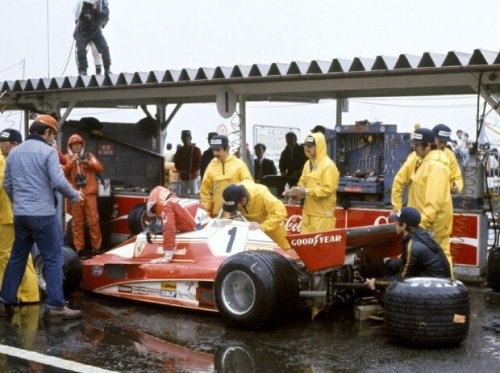
After just 1 lap, Lauda had seen enough. Deeming the conditions too dangerous and having already nearly lost his life at Nürburgring that year, the Austrian decided it simply wasn’t worth carrying on. He pulled his Ferrari into the pits and walked away from the 1976 World Championship. Lauda, the reigning world champion, had the skill but not the will to continue. It was “murder” out there – and life was for living.
Hunt, as drivers without a world title feel compelled to, pressed on and kept his date with destiny. Hunt being Hunt, of course, he almost missed it. Not until his post-race red mist lifted could he be persuaded that he hadn’t.
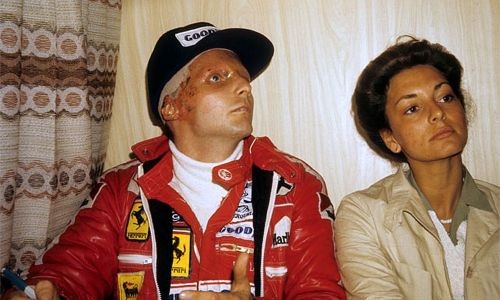
Niki and Marlene Lauda.
With Lauda out the race, Hunt’s task was now a little more straightforward. He simply had to finish third and the title was his.
The McLaren driver pressed on and, by lap 10, his lead had doubled to over 8sec. Meanwhile, interesting movements were afoot further back in the pack.
Local hero Kazuyoshi Hoshino, driving a privately-entered Tyrrell 007, had made his up to third, from 21st on the grid!
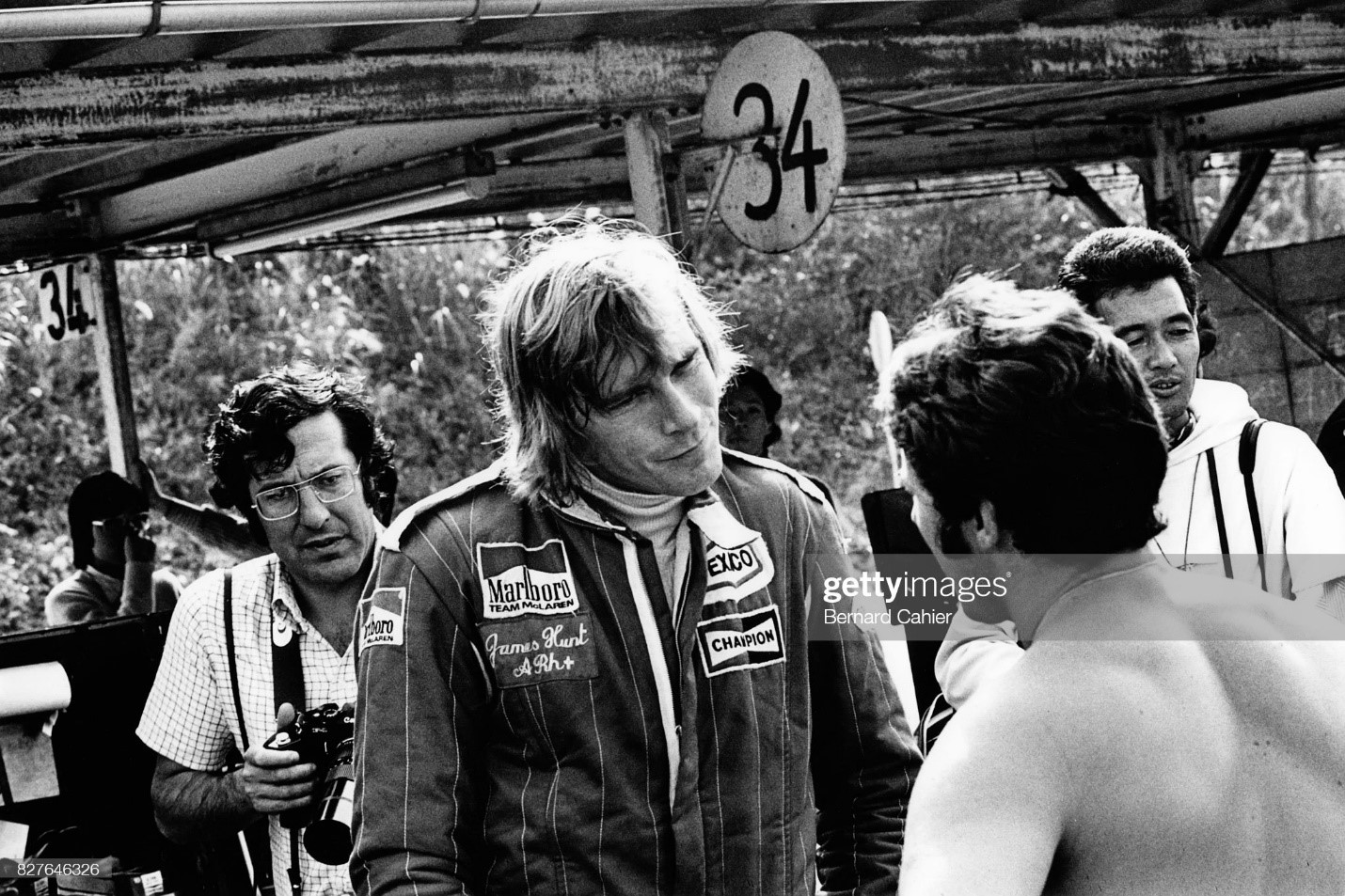
James Hunt discussing with Mario Andretti before the Japanese Grand Prix at Fuji Speedway on 24 October 1976. Photo by Bernard Cahier / Getty Images.
More worrying for Hunt was that March’s Vittorio Brambilla had overtaken Andretti and was beginning to hunt him down. By lap 20, Brambilla had closed right up behind the Hunt.
On the next lap, the March driver decided to go for it. Brambilla, known for an erratic driving style, conformed to type on this occasion by inadvertently out-braking himself as he dived down the inside of the McLaren.
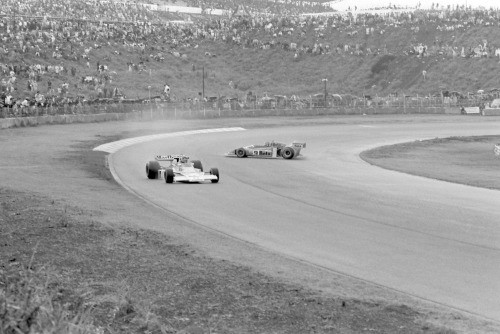
Hunt had been wary of Brambilla and was monitoring the situation constantly. In a moment of brilliant anticipation, he allowed the March to spin in front of him, performing the cutback and before carrying on as if almost nothing had happened.
Brambilla dropped to fourth, the danger to Hunt being over for now. Andretti at this point was gradually dropping back through the pack. It was Hunt’s team-mate Jochen Mass who was behind him now, with a McLaren 1-2 now looking very much on the cards.
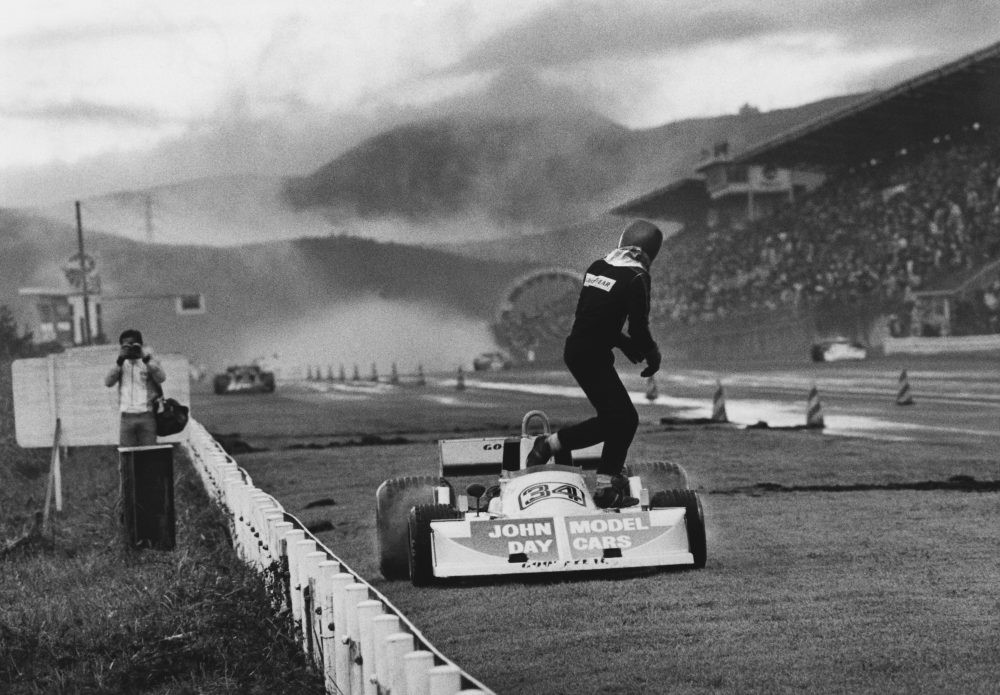
Seeking to control the race from here on in, the team’s new concern was the drying line which was now appearing on the track. Caldwell put out a pit board sign telling his drivers to cool their wet weather tyres, this was done by searching for wet sections of the track, the water preventing the rubber from overheating.
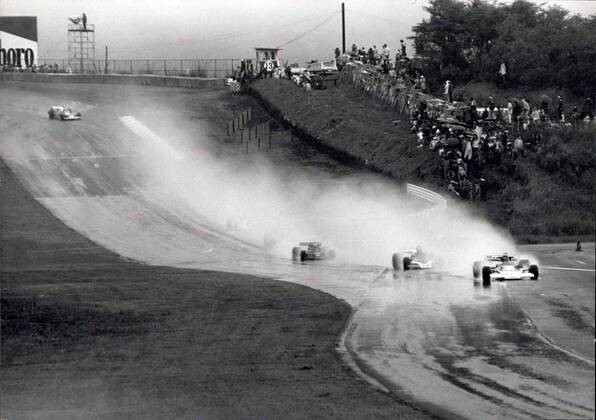
To his team manager’s frustration, Hunt didn’t appear to be heeding the warnings: “as soon as Mass saw the sign, he pulled over in the water right in front of us. Then on the next lap he came down the right hand side of the track, splashing through the puddles, which cools the tires down, (while) James didn’t react. The next lap we gave it to Hunt again, the next lap again, he still didn’t do it. So we took away the pitboard, just gave him the ‘cool tyres’ sign and he still didn’t react. So then everyone in the team started pointing at it (the sign).
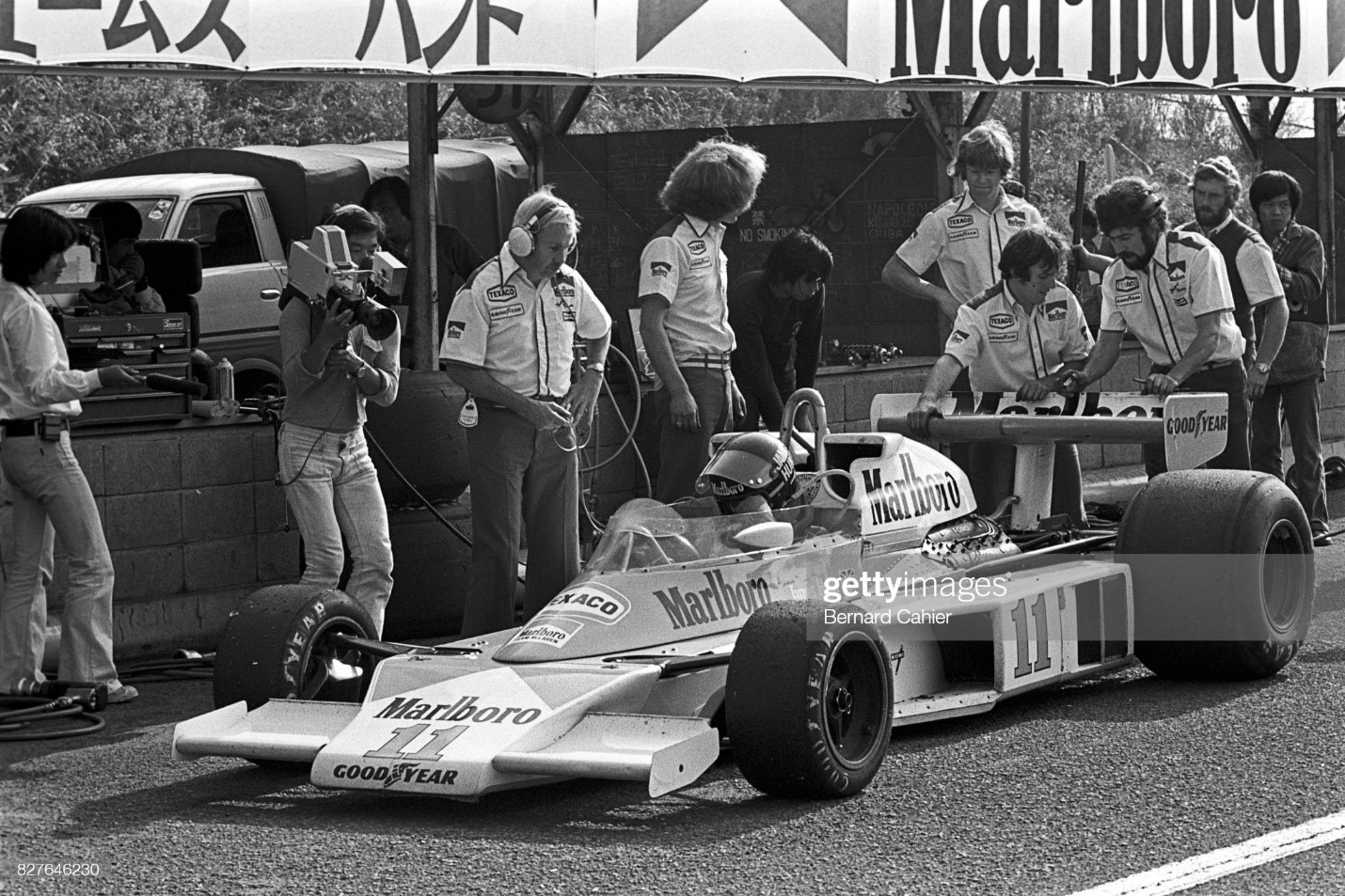
James Hunt, Teddy Mayer, Grand Prix of Japan, Fuji Speedway, 24 October 1976. McLaren team manager Teddy Mayer overlooking operations on James Hunt's car. Photo by Bernard Cahier / Getty Images.
Everybody in the team pointed, Teddy (Mayer, McLaren Managing Director) and everyone else and he still did nothing.”
Hunt carried on down the dry line, running his tyres way above their recommended temperature, seemingly oblivious to the warnings.
If Hunt wasn’t going to heed the warnings, then Andretti was: “because we were emphasising this so much, Andretti saw it and started to cool his tyres. So he started running through the puddles. He didn’t have to stop (as a result).
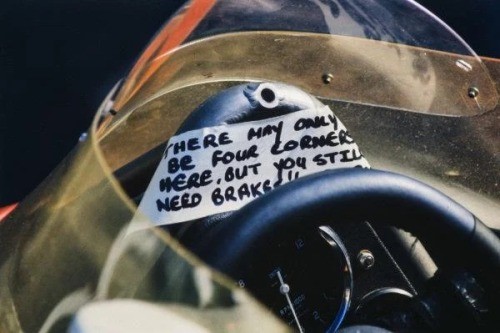
“But James just resolutely drove down the middle of the dry track and we could never bring him in, because he was never that far ahead. It was never possible to tactically stop him because there’s a big long pitroad at Fuji.”
Jochen Mass, benefitting from his team’s tyre advice, now began to reel in his team-mate. If he got past, he would have no trouble driving off into the distance to take the win.
However, the German’s diligence came to naught, as he spun off and out of contention on lap 36. This would have a huge bearing on the race later.
For now, Hunt was again in the clear. Another challenger, Shadow’s Tom Pryce, moved into second, but he too retired as his Cosworth engine expired on lap 46.
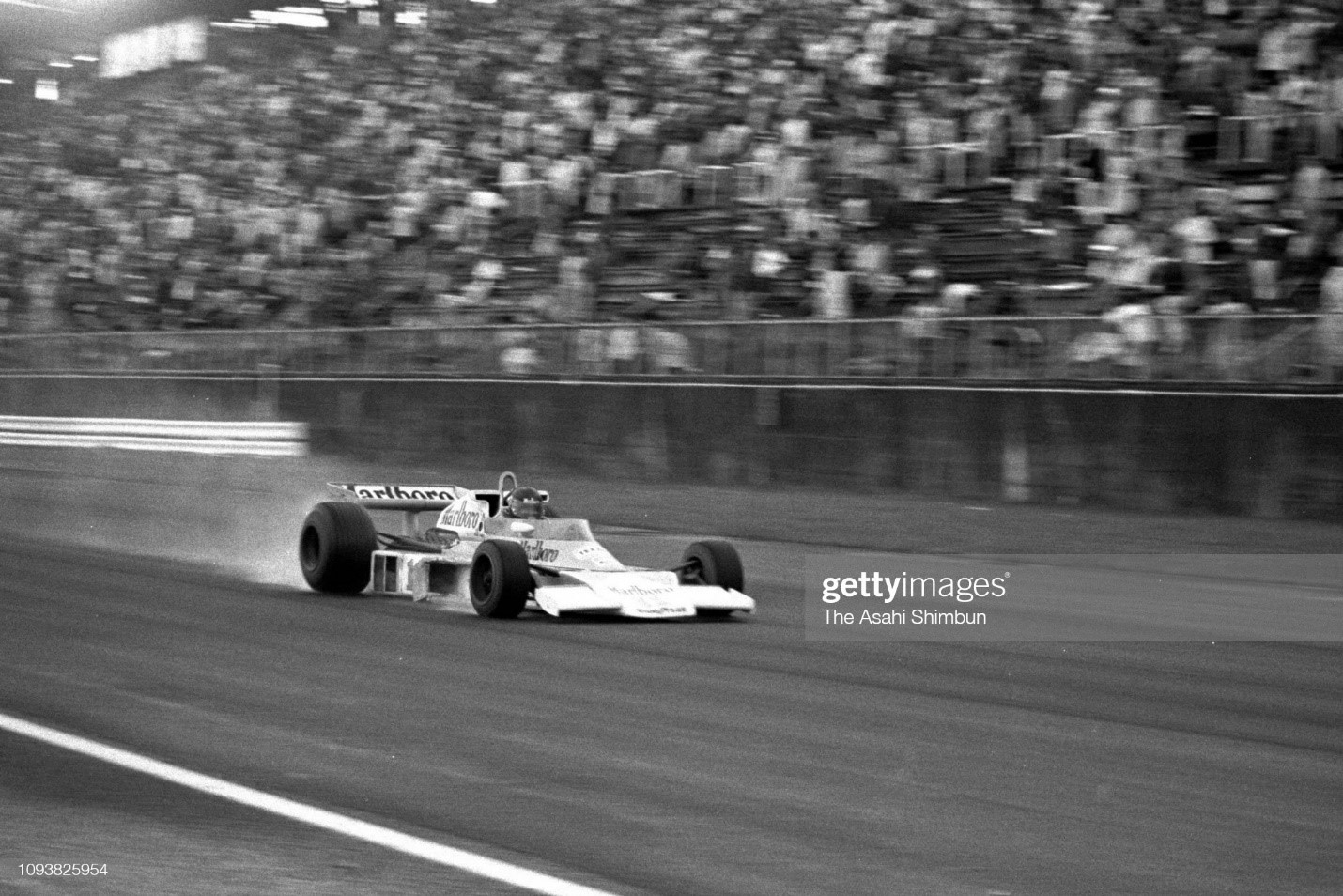
James Hunt and McLaren-Ford compete in the Formula One Japanese Grand Prix at Fuji Speedway on October 24, 1976 in Oyama, Shizuoka, Japan. Photo by The Asahi Shimbun via Getty Images.
As the grand prix wore on, Hunt remained in a seemingly trance-like state as he stuck to his line, the situation became critical.
Whilst yet another to danger to Hunt had abated, the McLaren driver was now deciding whether to play the percentages. He could either pit to replace his worn tyres – and lose track position – or try and stick it out at the risk of losing so much grip he would be overtaken anyway.
Hunt took the second option. He could afford to drop to third and this is indeed what happened. On lap 61, he was overtaken not only by Tyrrell’s Patrick Depailler, but also the resurgent Lotus of Andretti.
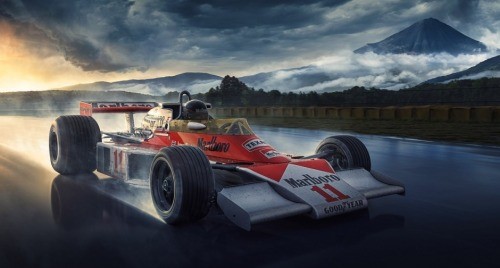
If Hunt managed to hold position, he would be world champion. For the next 7 laps, the plan appeared to be working. Then, on lap 68, disaster struck.
The McLaren driver suffered not one, but two deflated tyres, both on the left-hand side of the car. They were, as Caldwell puts it, “worn down to the air”. Hunt managed to drag his car round for half a lap before scraping into the pits.
F1 jacks at the time were not designed to lift a car with puncture at the front and rear of the car. While the jack was used to lift the rear of the car, TV shots show Caldwell and other team members lifting the other end of the car themselves to replace the front-left tyre.
It was a long pitstop and once out, Hunt found himself back in fifth place. There were four laps left and Hunt was two places down on where he needed to be.
Two more laps passed and the Englishman was no further up the order. It looked as if he may have lost his championship chance.
Then, with two laps left of the race to go, Hunt started the fight back. At the exit of T1 he managed to get past the Surtees of Alan Jones. One more place and the championship was his.
Next up was the Ferrari of Clay Regazzoni. It turned out there were some Scuderia politics at play which would work to Hunt’s advantage.
Caldwell filled in the back story: “Ferrari’s reaction to Niki’s crash was to sack Regazzoni (for 1977). He had already been sacked (by Fuji). So he was pissed off at Ferrari. When James came charging along, he just stepped out of the way and let him by.”
After benefitting from Regazzoni’s apparent generosity, Hunt was suddenly back in the golden position, the third place he needed to clinch the championship.
The McLaren man just had to keep it on the road for two more laps and he’d take the title. The tension mounted, both in the team pit and back in the UK, where his family were watching the live television feed at 3am.
Despite two nerve-wracking final laps, the Englishman duly brought his McLaren home in third place. He was the new F1 World Champion.
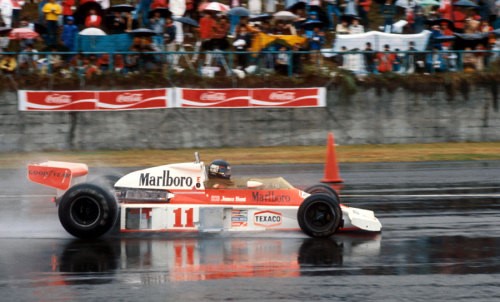
Photographs show Hunt angrily remonstrating with his team as he climbed from the car. He hadn’t realised he’d got the job done.
Caldwell himself had mixed emotions about the whole affair, “he didn’t look at the board and when he came into the pits he started shouting at us, because he didn’t know what happened. He was incredibly annoying on the day. He did drive magnificently, he kept it on the road, that’s one point of view. From my point of view it was the most frustrating day, I could’ve hit him with a baseball bat! He could have won the race, just strolled the world championship. All he had to do was read this pitboard and drive in the water, which is what Andretti did, so he didn’t wear the tyres out and could paddle across the line with the same ones.”
In spite of Hunt seemingly making a championship-losing decision, he had still managed to pull it off.
However, such was Caldwell’s consternation, the two didn’t discuss afterwards.
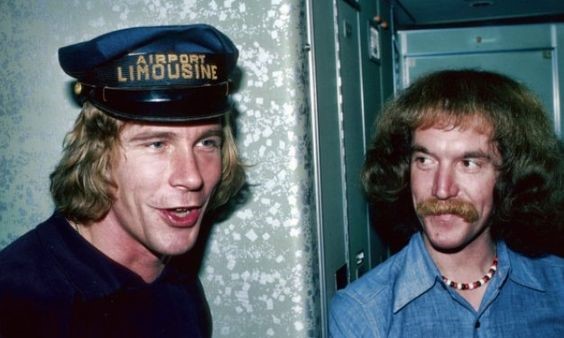
1976 F1 World Champion James Hunt, McLaren, complete with Airport Limousine cap.
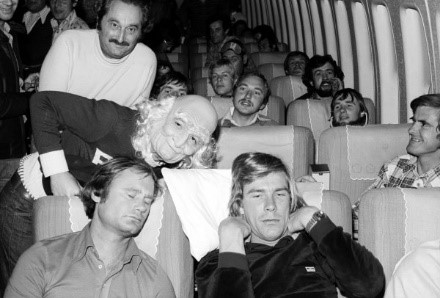
Third placed James Hunt, McLaren, flies home from Japan the new World Champion. Sitting beside him is John Hogan (GBR), Vice President of Marlboro, with Alastair Caldwell (NZL), McLaren Team Manager, (behind and right) and a man in the mask getting into the photograph. Japanese Grand Prix, Fuji, Japan, 24 October 1976.
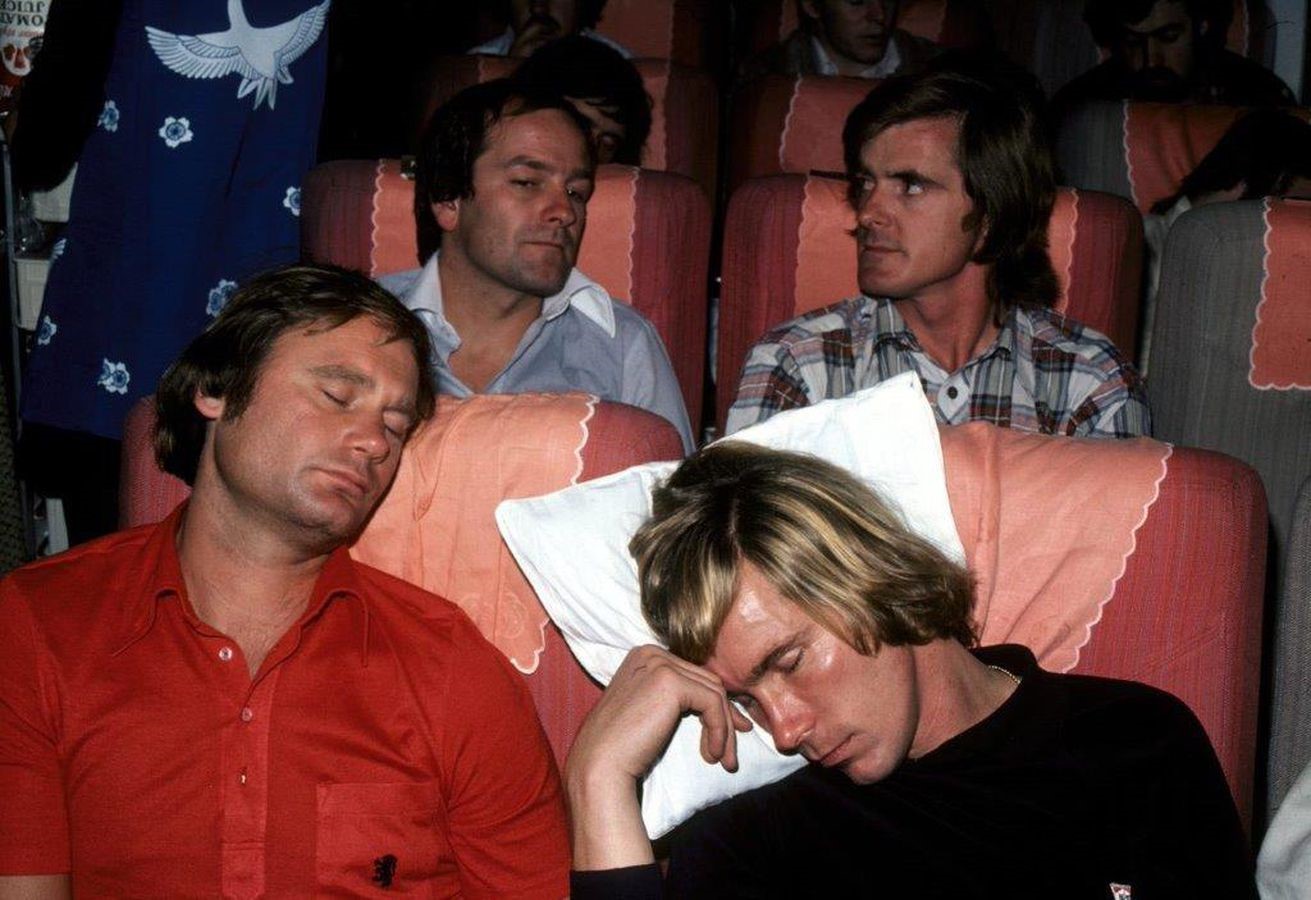
“I was so angry about it. We flew back to England and I wasn’t talking to him on the plane. He was pissed as a newt anyway, we were all pissed as a newt and totally exhausted. He just went to sleep.”
The two never discussed the reasons behind the events, but it didn’t change the result. Three years after making his F1 debut, Hunt was the world champion.
Ten weeks later Hunt arrived in Argentina to begin his title defence feeling underwhelmed and under-prepared.
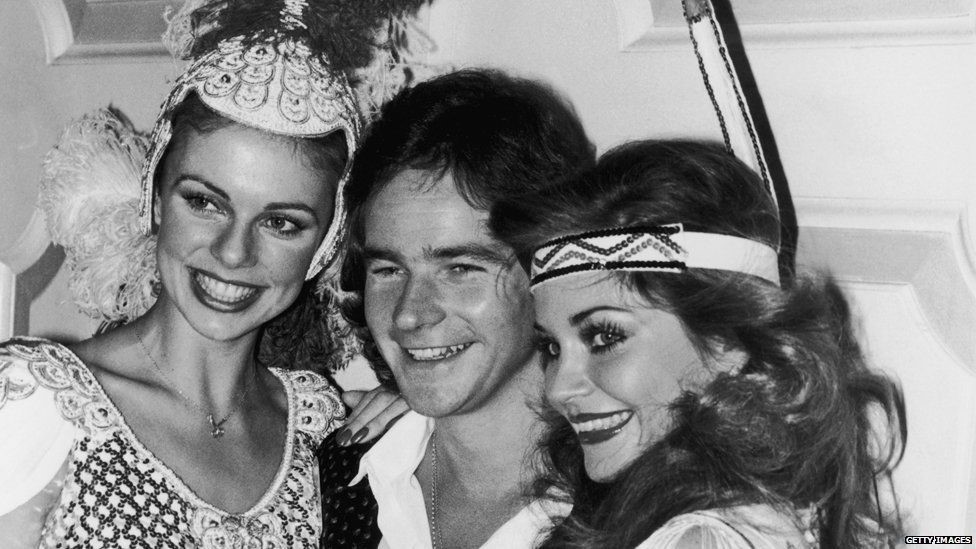
Barry Sheene was the 1976 and 1977 500 cc world champion who survived two major crashes, one in 1975 and the other seven years later. Photo by Getty Images.
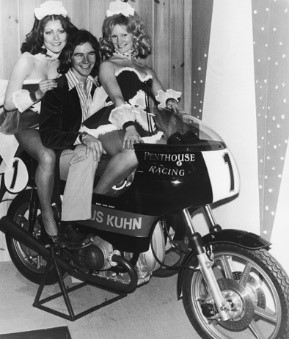
“He has been the coolest driver of all time, always surrounded by women,” says Valentino Rossi with a laugh.
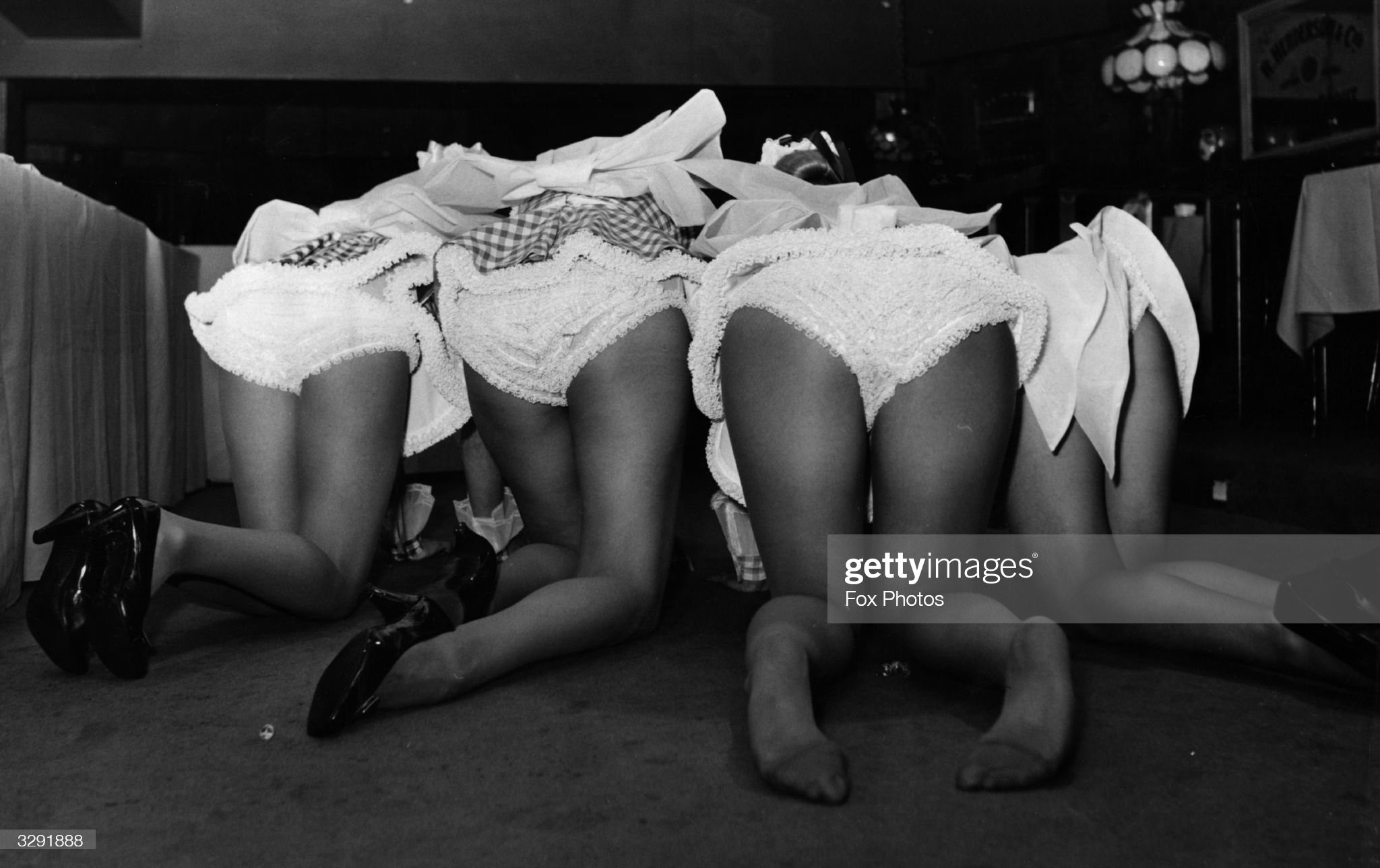
Four Penthouse pets rehearsing their marbles technique at the Penthouse Club, for the first woman's challenge against the World Marbles Champion, Mr. Leonard Smith, on 27th May 1971. Photo by Fox Photos / Getty Images.
A few celebratory cigs and tins with his friend Britain’s newly crowned 500cc motorcycle world champion, Barry Sheene, at Fuji and a riotous return flight had been followed by a disorientating whirl of meetings, interviews and engagements. The race-by-race title chase had been thrilling: a sequence of one-day stands. Making it official had cooled the relationship. The love affair was over.
Though both men would retire summarily during the 1979 season, Hunt did so because he felt frightened and disillusioned, whereas Lauda did so because he felt nothing, which frightened him.
Niki, though, had a system – plus a plan to run his own airline – and ultimately would return to the F1 cockpit and be successful. James, whose theories were sometimes somewhat scrambled, would not.
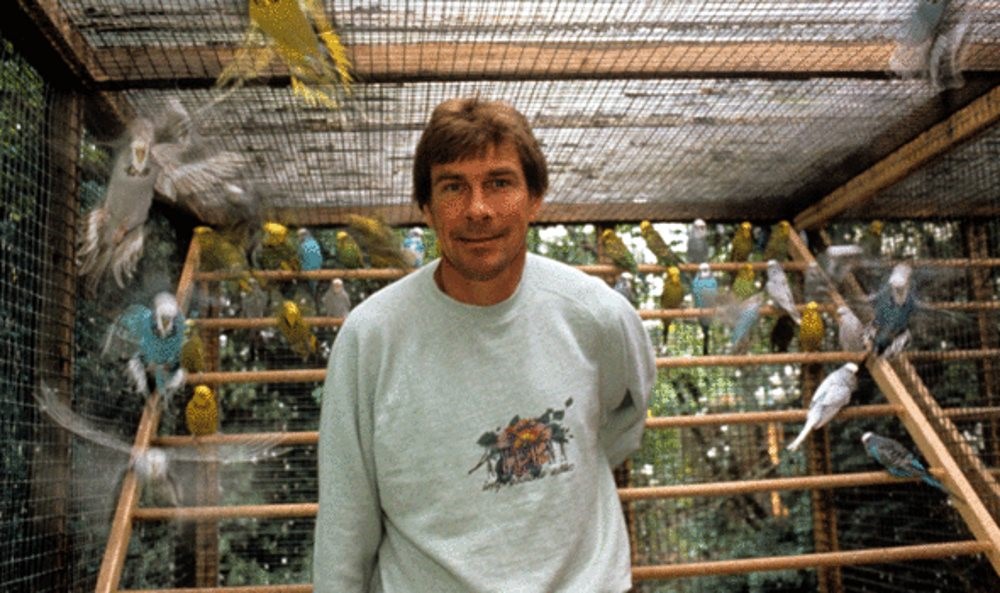
British racing driver and budgie fancier, James Hunt. According to his son, “he had about 250 or 300 budgies at one point. He’d spend hours on end with them each day and take them to shows around the country. He even won awards for them. We have the trophies at home, alongside his race-winning trophies!”
He bred budgies instead. You do what you have to do.
Lauda’s decision to stop at Fuji ensured that he would be able to continue. Hunt’s decision to continue ensured that he would have to stop sooner rather than later. One racing mind wiped clean, the other cluttered – and racing.
In spite of his career’s decline, Hunt’s endeavours had captured the imagination of the wider world in a way no racing driver had done before. Hunt knew that life was for living, too. Tragically, however, he had just discovered how best to when fate too soon snatched it from him.
Niki Lauda: ‘James Hunt would not push you off the road. We trusted each other'. Wednesday 05 October 2016. By Paul Weaver.
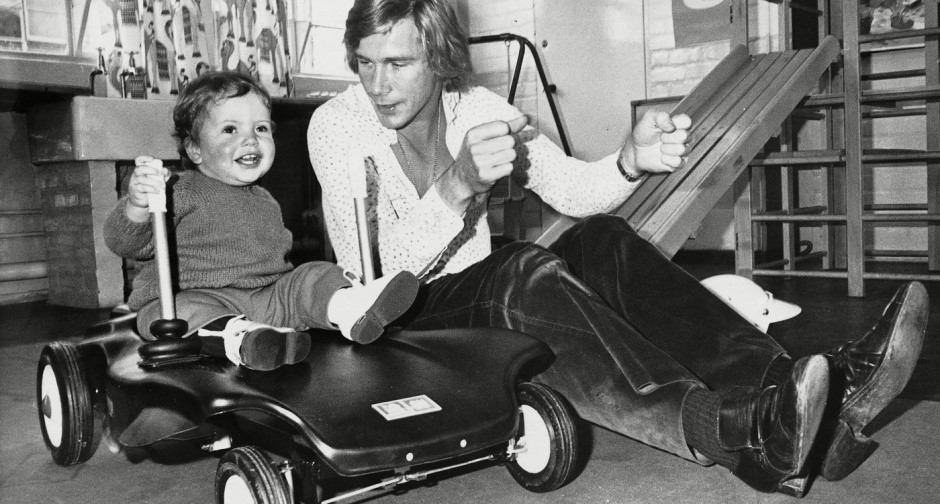
As an insightful book on James Hunt recalls his F1 tussles with Niki Lauda, the Austrian reflects on the accident that led to his famous title defeat in 1976 and a ‘respectful’ relationship with his great rival.
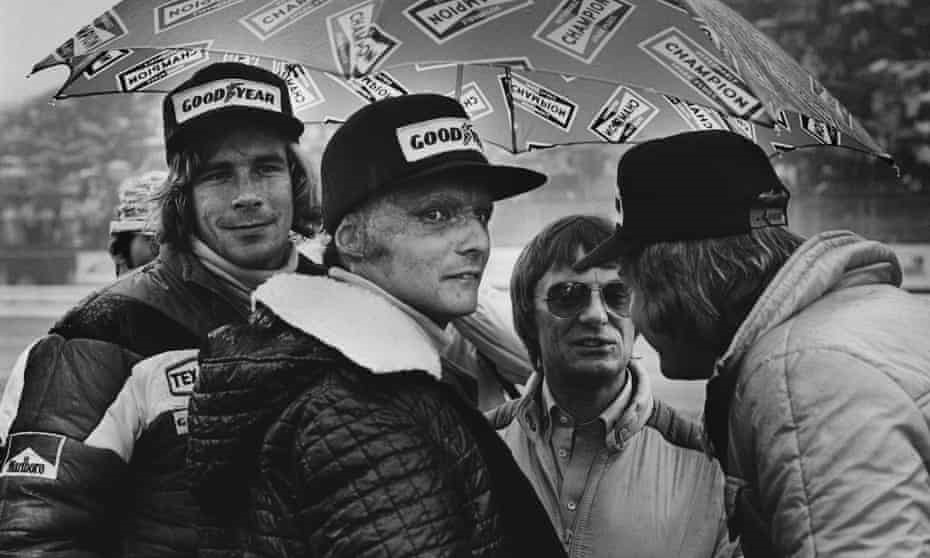
James Hunt and Niki Lauda before the 1976 Japanese Grand Prix. Photo by LAT Photographic / Rex / Shutterstock.
Niki Lauda’s red baseball cap has become part of the man. It is one of the best known sights in the Formula One paddock, a beacon for straight-talking and it is difficult to imagine him without it.
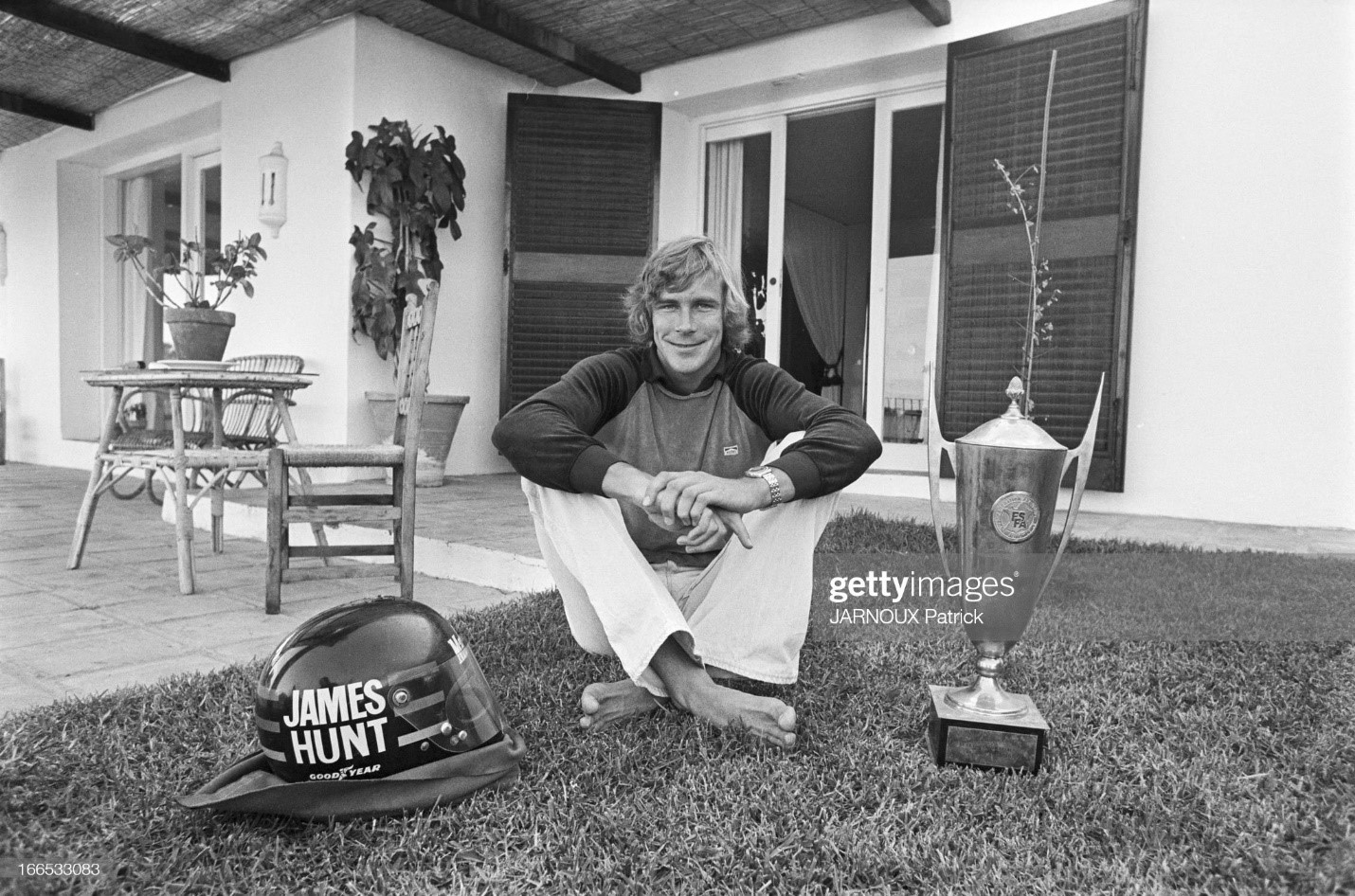
Rendez vous with James Hunt on 10 September 1976. Photo by Jarnoux Patrick / Paris Match via Getty Images.
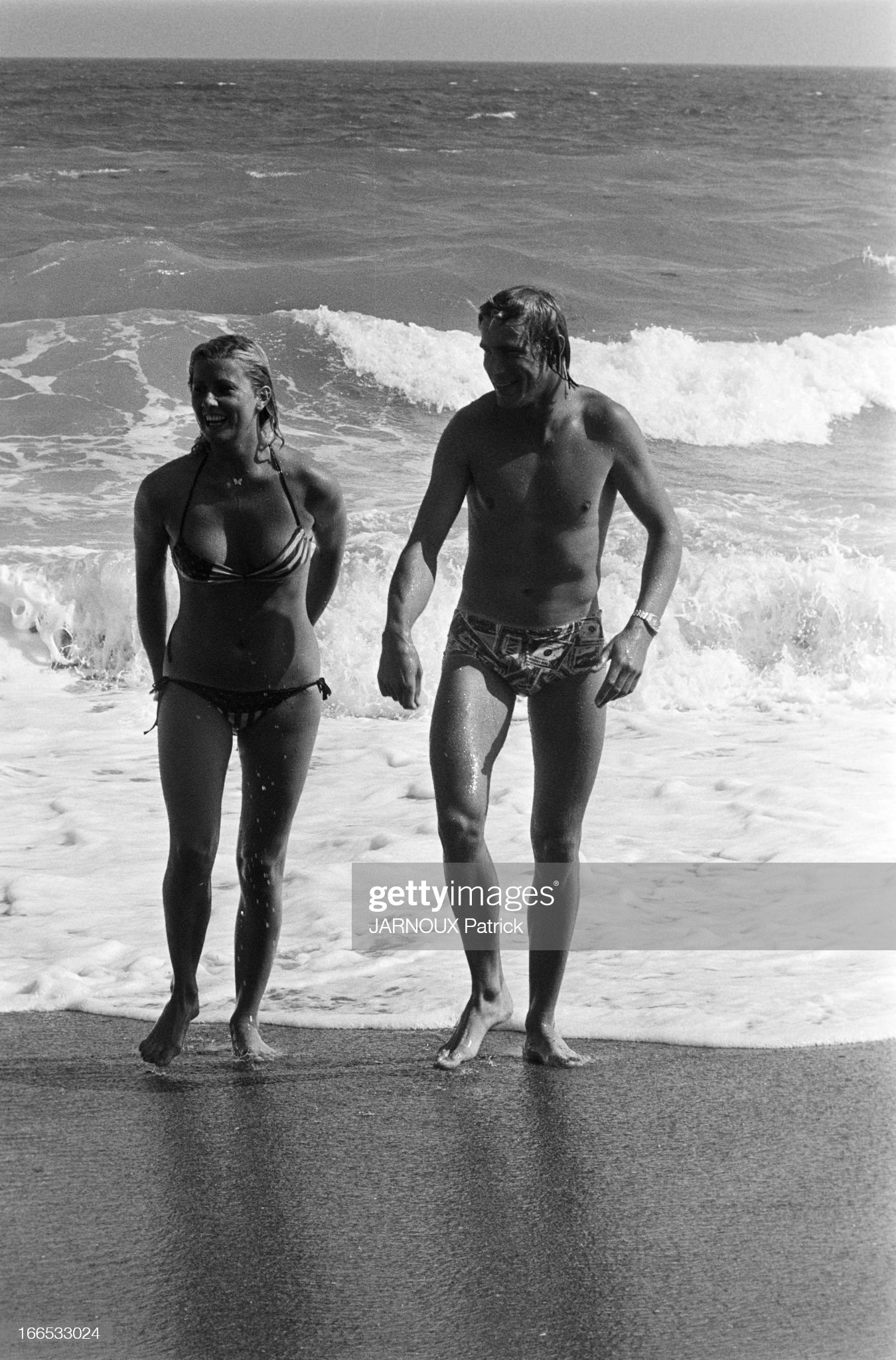
Rendez vous with James Hunt on 10 September 1976. Photo by Jarnoux Patrick / Paris Match via Getty Images.
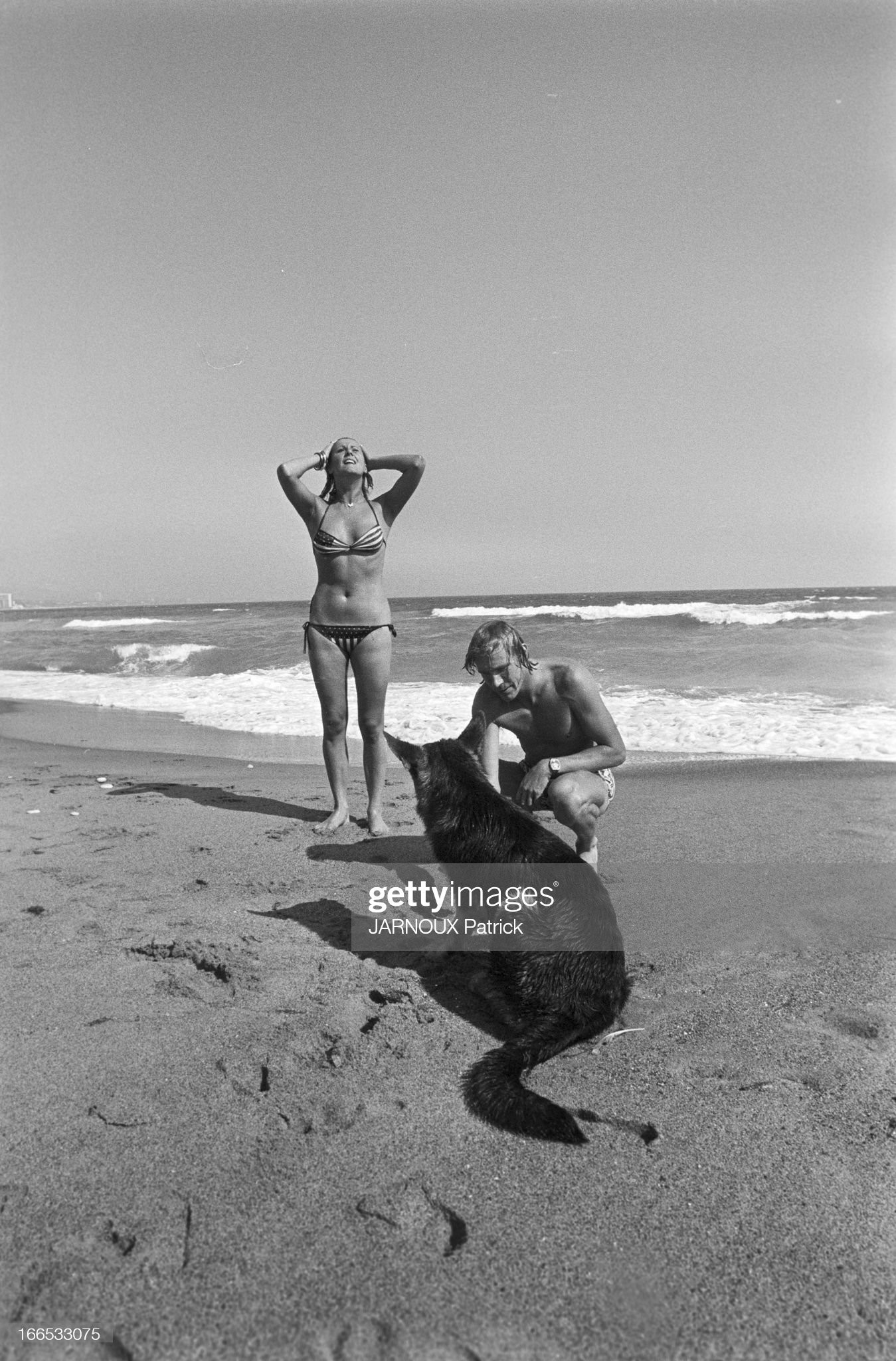
Rendez vous with James Hunt on 10 September 1976. Photo by Jarnoux Patrick / Paris Match via Getty Images.
But now he lifts it – just a few inches – and blows out his cheeks as he recalls the unforgettable climax to the 1976 season when James Hunt won his solitary F1 title in Japan, 40 years ago this month.
It is Lauda’s misfortune to be defined not by the three Formula One world championships he won but by the extraordinary events of that season, when he received the last rites from a priest after being engulfed by flames at Nürburgring (that cap hides many of the scars) and then saw Hunt take the crown the Austrian had thought would be his in the shadow of Mount Fuji.
Not that Fuji created many shadows on 24 October 1976. Mario Andretti, who won that day, said: “they were the worst conditions I’d ever seen at the start of a motor race.”
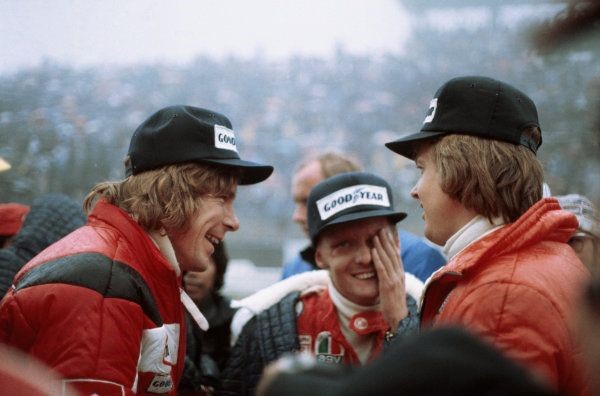
Fuji, Japan, 22nd - 24th October 1976. James Hunt, McLaren M23-Ford, 3rd position, with Niki Lauda, Ferrari 312T2. Photo by Motorsport photography.
Hunt went on to take third place and win the world championship by a point. Lauda did not hang around to watch the race.
The story of the battle between Hunt and Lauda that year - the yin and yang of Formula One, the handsome, womanising, extrovert Hunt and the diligent paddock swot Lauda, who was nicknamed “The Rat” because of his prominent front teeth - was memorable.
The great rivalry is featured again in an insightful book on James Hunt by Maurice Hamilton. In it, Hunt describes the warmup to the race in Fuji. “It was ridiculous. Approaching the first corner, there was a huge puddle and you had to brake for the braking area. But the main concern was the spray. This, combined with the mist, meant you couldn’t see a thing. It was madness.”
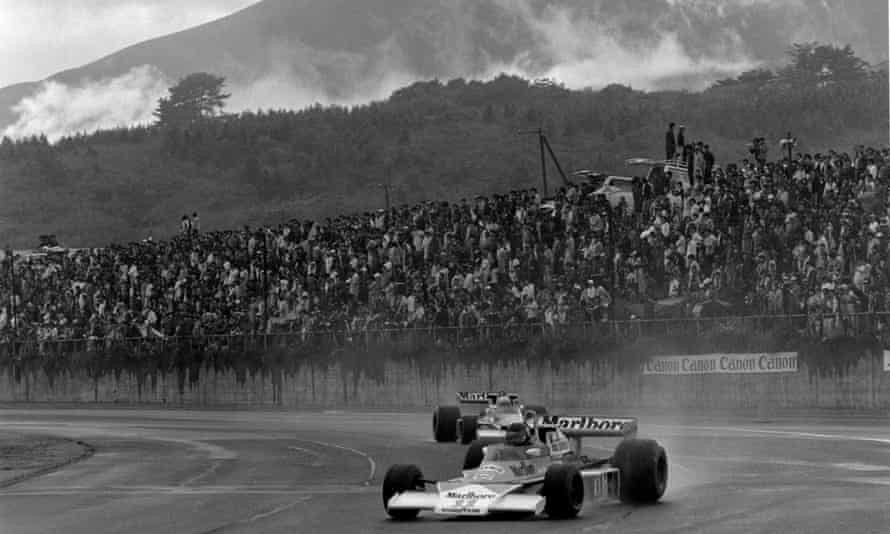
James Hunt drives through the rain in front of Mount Fuji. Photo by Grand Prix Photo / Getty Images.
“Two things happened in 1976, before we got to Japan. First my accident and then McLaren did a big step forward with the development of the car after the summer. The Ferrari slowed down. James’s car was suddenly quicker and he performed outstandingly. He was really quick. No question. At the time, the best”, Niki Lauda said.
Hamilton’s book describes Hunt as a complex character who, at the start of his life, used to cry at night and have tantrums by day.
Hunt, when he wasn’t being charming, was often capable of causing considerable offence, such as the time he had a call of nature on a flight and urinated on a curtain separating the aircraft’s cabins.
Lauda, now 67, was champion in 1975, 1977 and 1984. He works as a TV commentator and is also non-executive chairman of the Mercedes formula one team. So if he drove again, what era would he choose? “Today,” he says. “Because they get 10 times the money and there’s no risk. Honestly, safer. At the same time it gets boring at some stage. So we want some of the lost excitement to come back.” Hunt certainly provided that.
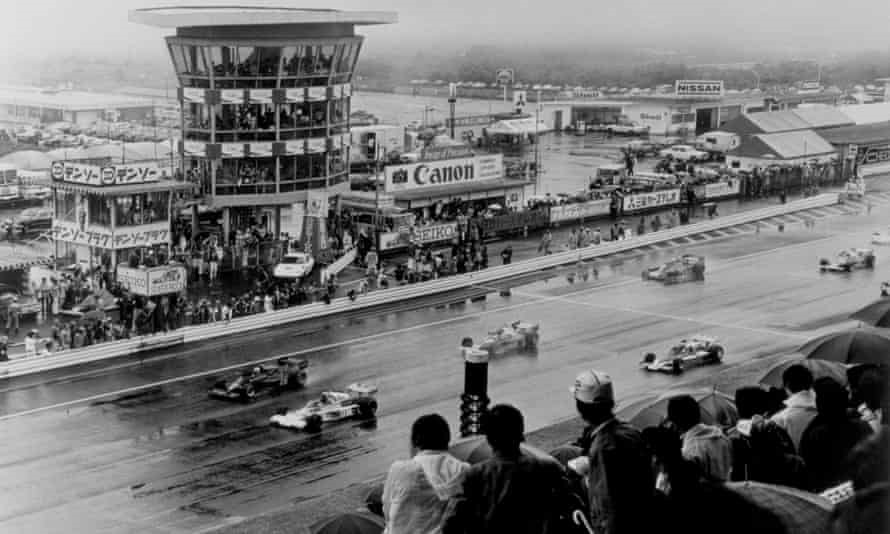
James Hunt in his McLaren (11) and Mario Andretti in his Lotus (5) on the starting grid at the Japanese Grand Prix in 1976. Photo by PA.
"James was crazy… When we partied I’d go home early while he stayed out to enjoy ‘opportunities.’" Track rival and pal, Niki Lauda, on playboy racer's wild ways. By Lee Price on 29 August 2013.
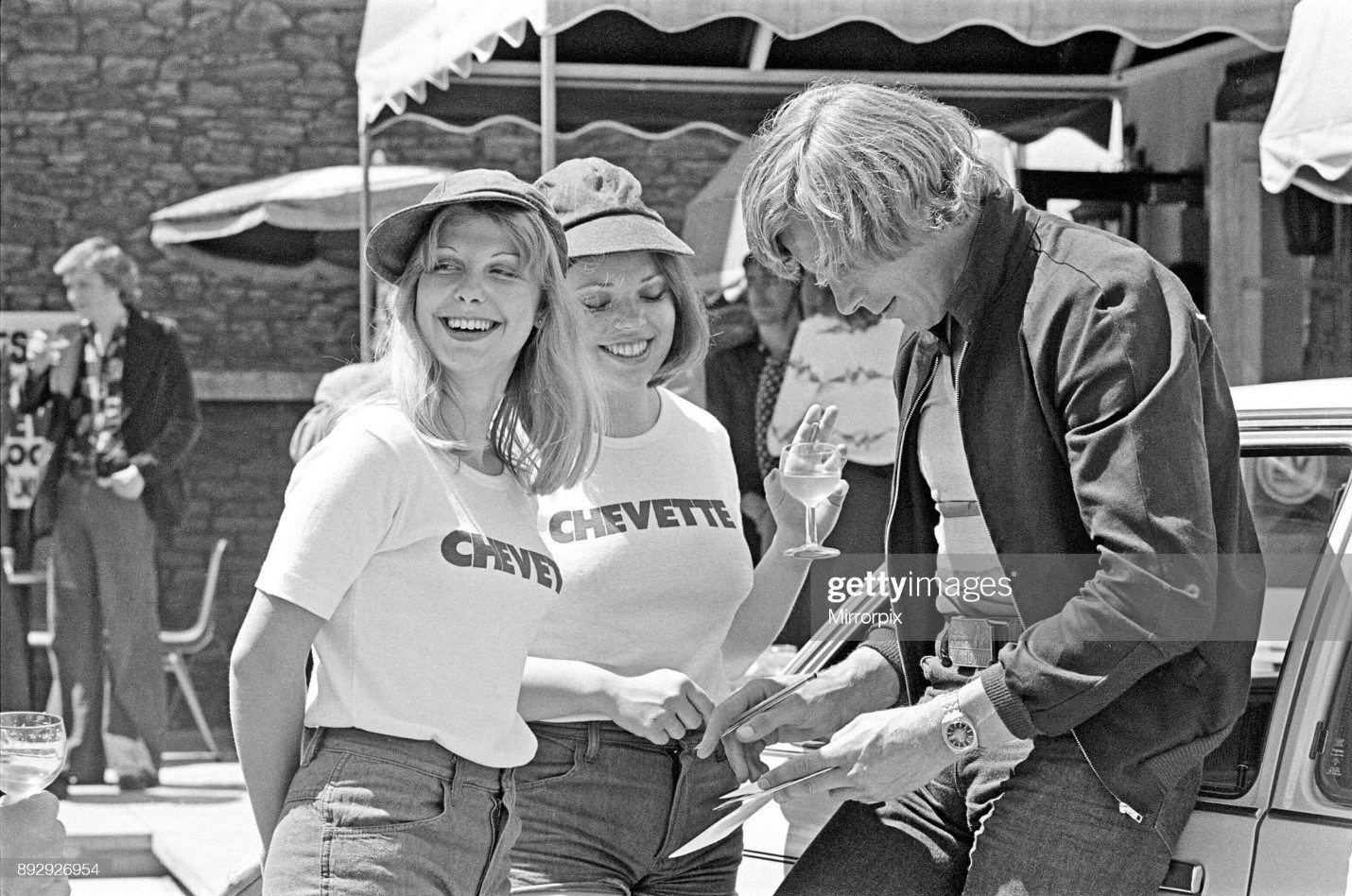
James Hunt signs his autograph for two of his female stewardesses at a Chevette Meet and Greet event. Town and venue unknown. Picture taken circa 1st August 1976. Photo by Reveille / Mirrorpix / Getty Images.
They were the fiercest of opponents but unlikely friends.
And that friendship came to define Formula One’s greatest-ever rivalry.
Playboy Brit James Hunt and his straight-laced Austrian counterpart Niki Lauda captivated the world of motor sports in their Seventies heyday.
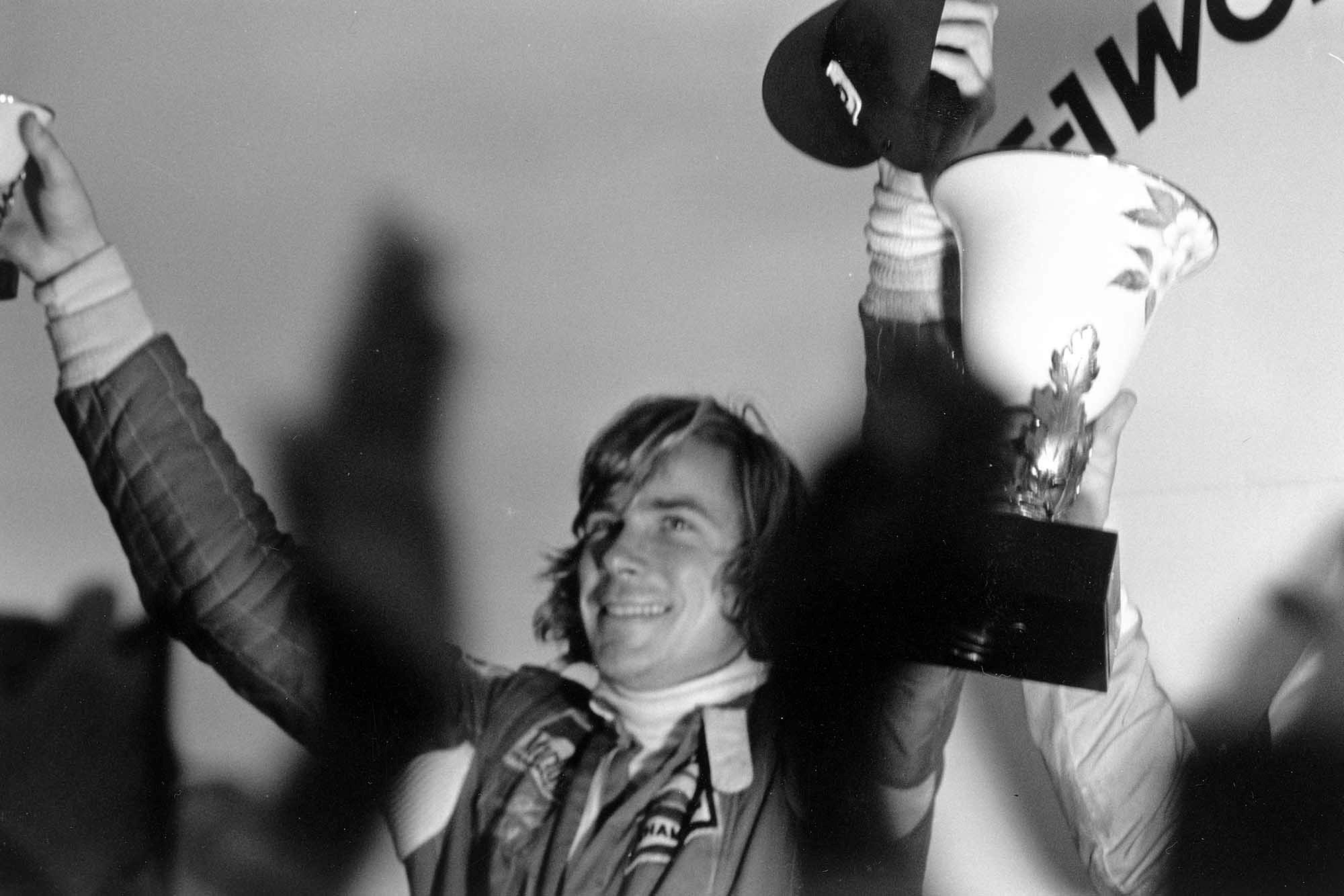
James Hunt celebrates the conquest of the 1976 World Cup.
Hunt, with his long blond locks and chiselled features, was motor racing’s answer to George Best.
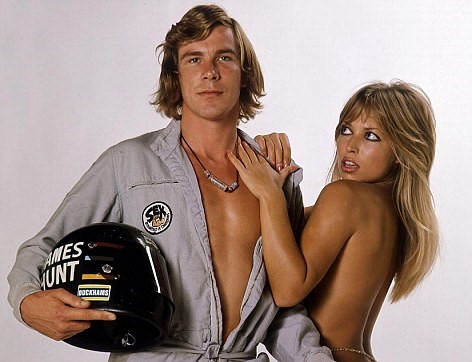
Sporting his famous badge, ‘Sex, the Breakfast of Champions’, James poses with model Susan Shaw in 1976. Photo by Mirrorpix.
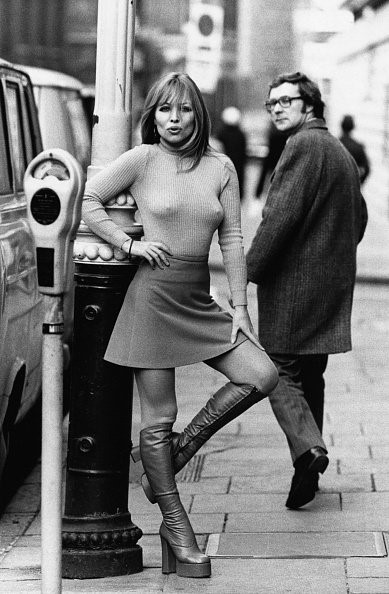
Susan Shaw is most known for her photoshoot with James Hunt and was even fictionalised in the 2013 film Rush, which tells the story of Hunt’s life.
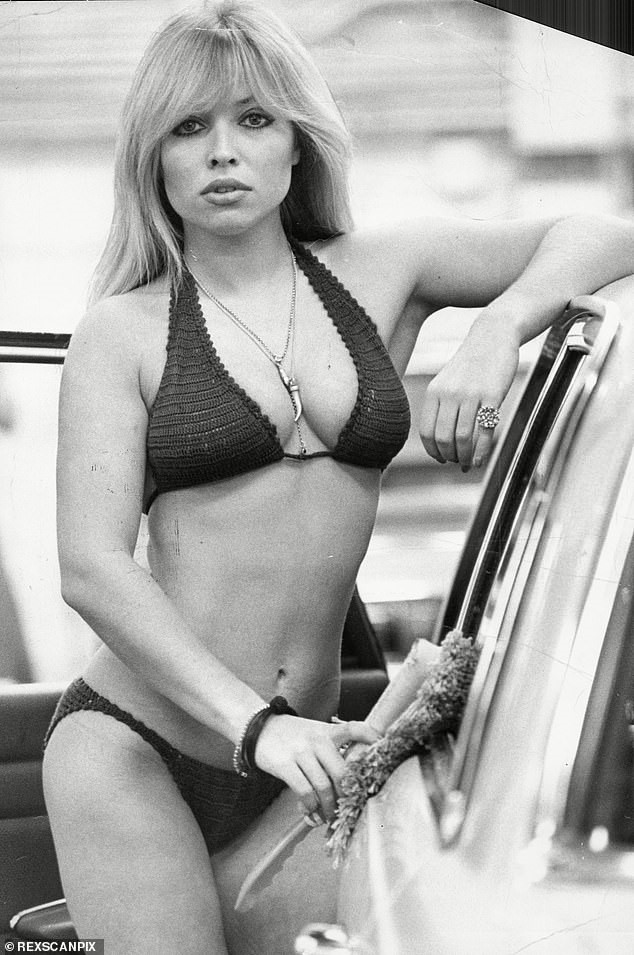
Susan Shaw.
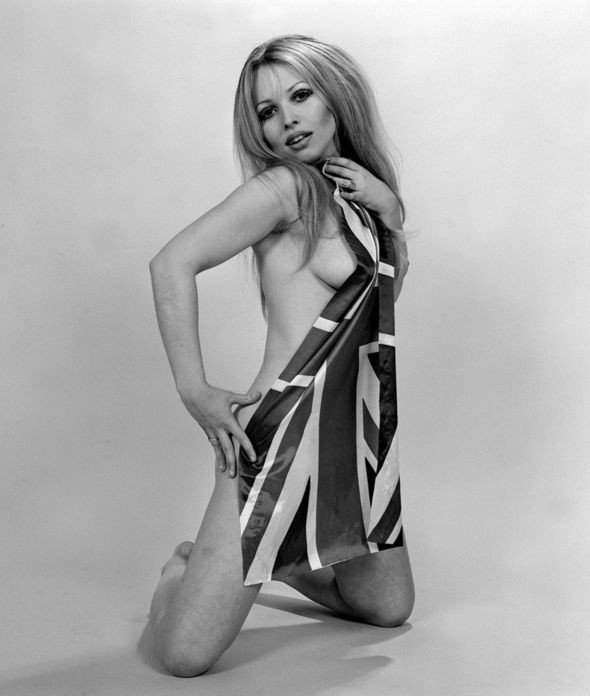
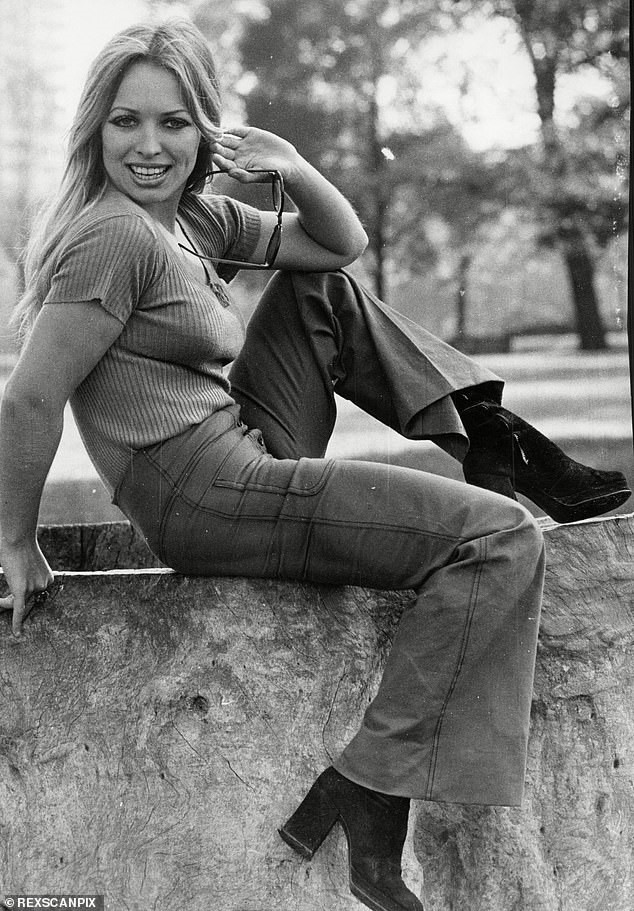
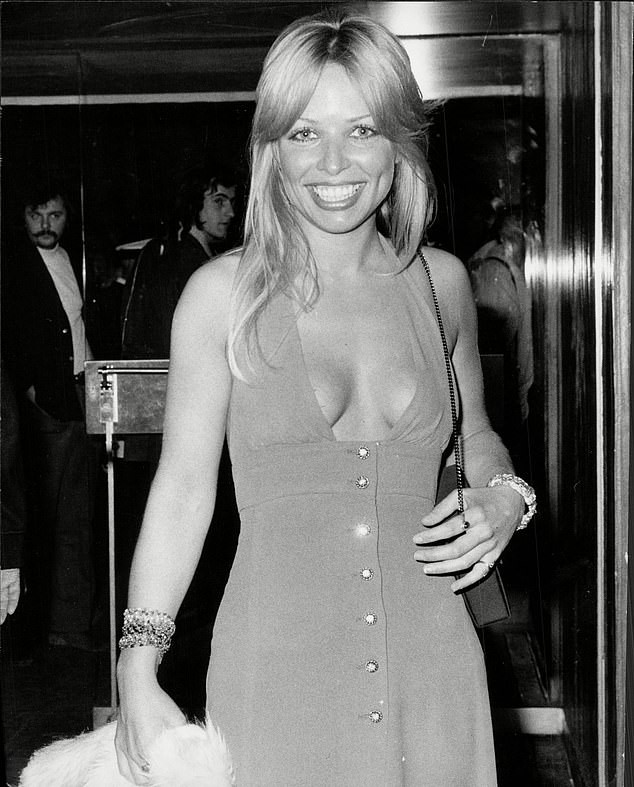
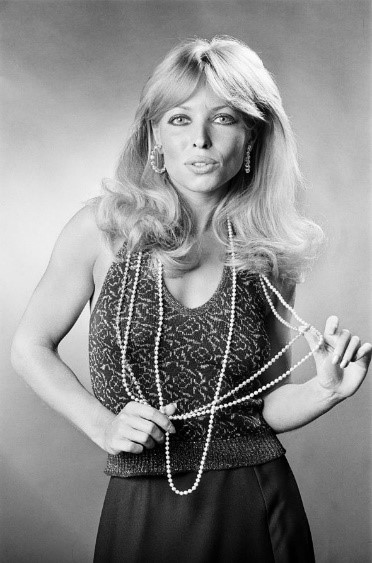
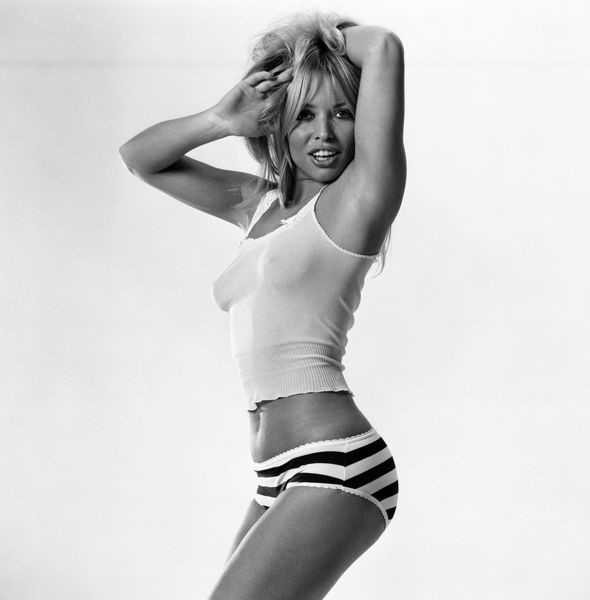
Shaw continued modelling into her 50s before finally stepping away from the industry.
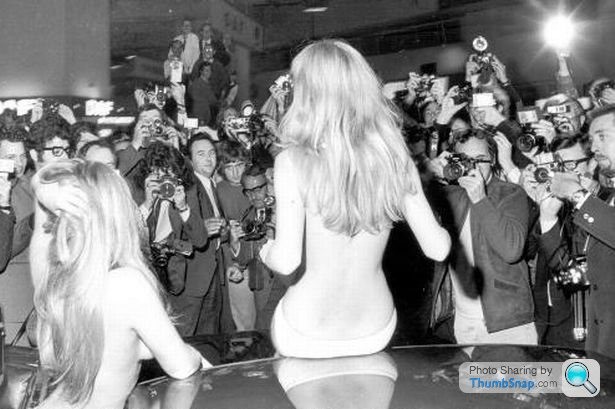
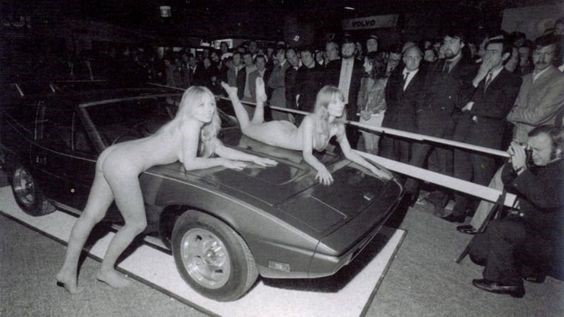
Susan also modelled nude draped over the TVR's at the motor show...
He indulged in everything that goes with life in the fast lane, bedding 5,000 women.
Lauda was softly spoken and eased his Ferrari round corners with mesmerising grace.
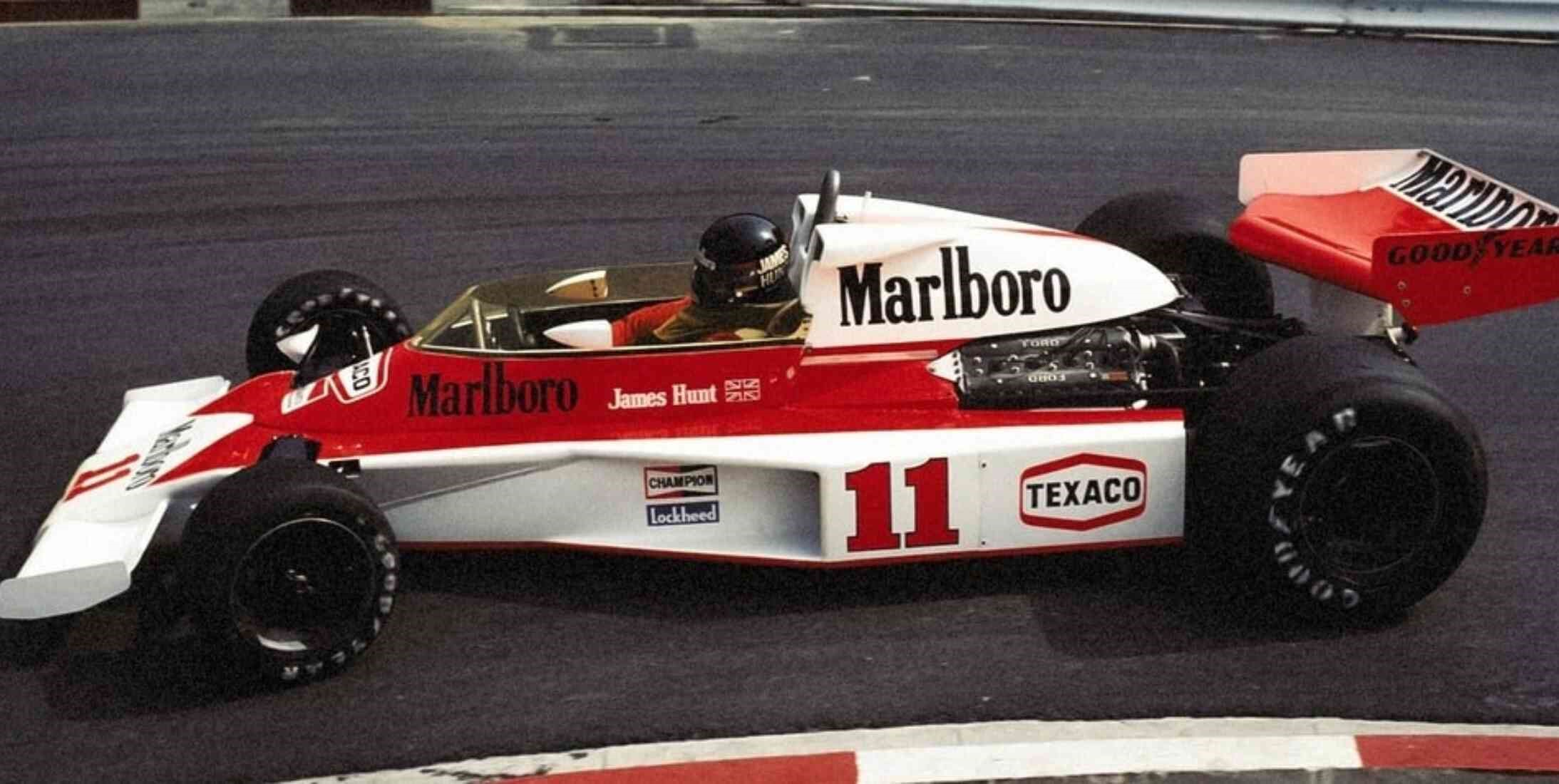
James Hunt, McLaren, in 1976.
When Hunt died of a heart attack it left his old rival as devastated as countless fans.
In an exclusive interview Lauda spoke to the Sun about his incredible career.
He said: “when I first came to London for Formula Three, James introduced me to the city and helped me learn English. He was trying to make it as a racer himself but he still took me everywhere, otherwise I would’ve been completely on my own.
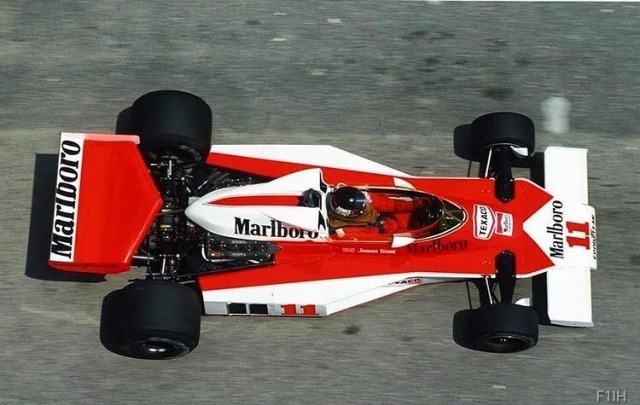
James Hunt, McLaren, in 1976.
“His favourite places, of course, were bars like the old ‘Pit Stop Bar’ on the King’s Road. I barely drank, unlike him. But that’s where I got to know him.
“We’d party together throughout our careers.
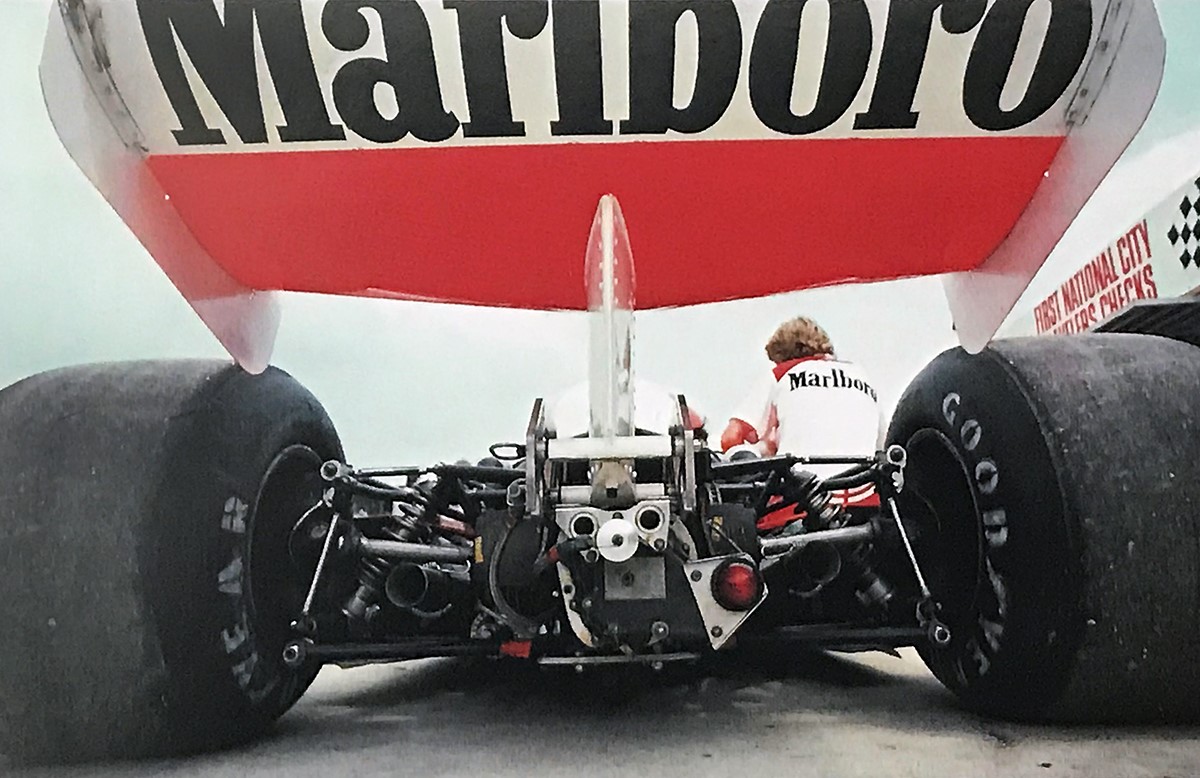
“At least, I’d try to party, but I always knew well before him when it was over. I’d go home early and miss a couple of ‘opportunities’, which he’d take up later.
“He was a Woodstock-type of crazy man but he raced perfectly.
“James was really on his own in terms of his personality. Nobody today is anywhere near his level.
“One time, we were racing in Austria, my home. He went out to eat one night and came back after the circuit was closed. Because he was staying in his trailer at the circuit, he broke in and was arrested. The next day he came to race straight from the police station.”
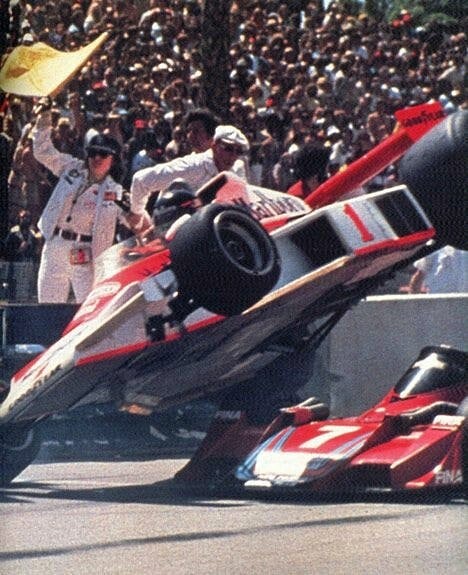
James Hunt, McLaren M23 Ford, locks up and takes off over the front wheel of John Watson’s Brabham BT45B Alfa Romeo in the chain reaction of collisions at Cooks corner on the first lap at the US Grand Prix West in Long Beach on 03 April 1977.
While his furious track style kept “Hunt the Shunt” in the sports pages, his partying and string of glamorous girlfriends put the driving ace on glossy magazine covers.
In one legendary binge, Hunt indulged in alcohol, cocaine and cannabis and, along with fellow pin-up and world motorcycle champ Barry Sheene, had sex with 33 British Airways stewardesses.
That was in the build-up to the biggest race of his career, 1976’s Japanese Grand Prix, where Hunt won his sole drivers’ championship.
He was pals with legendary snooker hellraiser Alex Higgins, their chosen tipple being vodka mixed with kids’ juice drink Five Alive.
Though chalk and cheese in terms of personality, Lauda and Hunt were great friends. When Hunt died, Lauda was grief-stricken.
Years before, he had warned Hunt to settle down for the sake of his health. But Hunt continued to drink heavily after his retirement.
Recalling the last time the pair spoke, Lauda says: “the death was a terrible shock to me.
“I was in contact with him after racing, when he was broke and more or less finished. I met him for lunch in London one day and told him, ‘get your act together or you will not survive’.
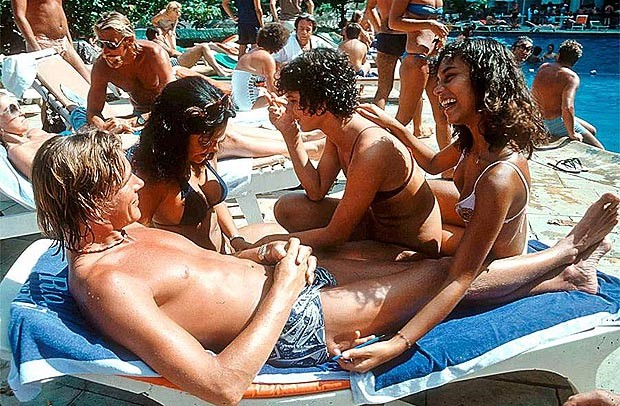
“The sad thing is he did. For three or four years before he died his lifestyle was perfect, not like before. But anyone can have a heart attack.
The pair’s battles in 1976 mixed tragedy, drama and supreme racing. Rush focuses on that season, with Chris Hemsworth playing Hunt and Daniel Bruhl as Lauda.
“My biggest regret is that he’s not sitting here now, talking about this movie with me.”
Hunt clinched the title that year, but only after Lauda was involved in a horror smash at the German Grand Prix that left him in a coma and very badly burned. Lauda lost most of his right ear but refused plastic surgery and has always worn a cap since to cover the scarring.
Incredibly, the Austrian was back racing just SIX WEEKS later, having missed only two races.
Competitors and spectators recoiled in horror at the extent of his injuries.
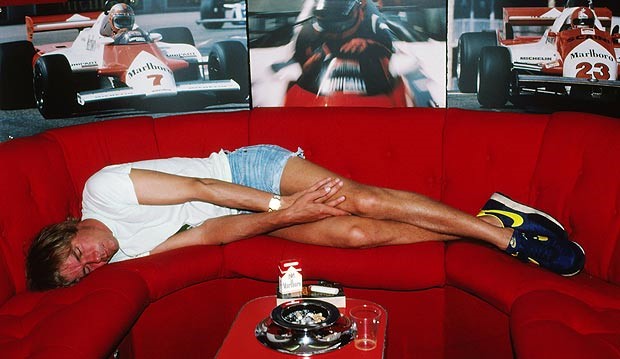
He recalls: “my then-wife fainted when she first saw me, so I knew it was not good.
“As I get older, the scars get lost in the lines and you just get used to it. I only had surgery to improve my eyesight.”
Back then, F1 was very different to the safety-conscious sport of today.
In 1975, US driver Mark Donohue was killed. Two drivers died in 1973 and two more in 1974.
Mercifully, no driver has been killed since the deaths in 1994 of Ayrton Senna and Roland Ratzenberger at the San Marino GP.
Lauda says: “at the time, drivers were fighting for their lives. People racing had to be from a completely different world to cope and stay alive.
“Today they can hit each other or blow four tyres and not worry. If we made the smallest mistake overtaking, one of us would’ve been dead.
“The real fight was to drive to the limit and stay alive. We trusted each other. At dangerous times, there was no issue driving close to Hunt.
“Our rivalry was so special because that season was so unpredictable. I had a huge points advantage. Then the accident happened, he caught up and, in the end, beat me.”
Old footage of the duo racing evokes the same tingles as Best weaving through a defence or Muhammad Ali picking apart an opponent without taking a punch. You know you are witnessing greatness.
Lauda is generous in defeat.
He says: “we were very different in style but our careers were similar.
“When everything was perfect for him, he was unbeatable. But he had his ups and downs because of his lifestyle. If he raced on the wrong day, you could beat him easily.
“If I could have organised for him to go to the bar the night before a race, I would’ve done.”
Hunt’s playboy antics were notorious.
Soon after his 1976 binge in Japan alongside pal and fellow motor sport champion Barry Sheene, Hunt was at it again.
By the time he returned to Britain, 24 hours later, Hunt was so drunk he was almost refused entry to a British Embassy reception in his honour.
The race ace could be stubborn too. His Championship-winning ride for McLaren almost never happened after he refused to sign a clause in his contract demanding he wore suits to functions.
Instead he wore jeans and often went barefoot to sponsors’ glitzy galas.
His female admirers lapped up his bad boy behaviour. In 1977, while defending champion, he was held by South African customs for having porn in his luggage.
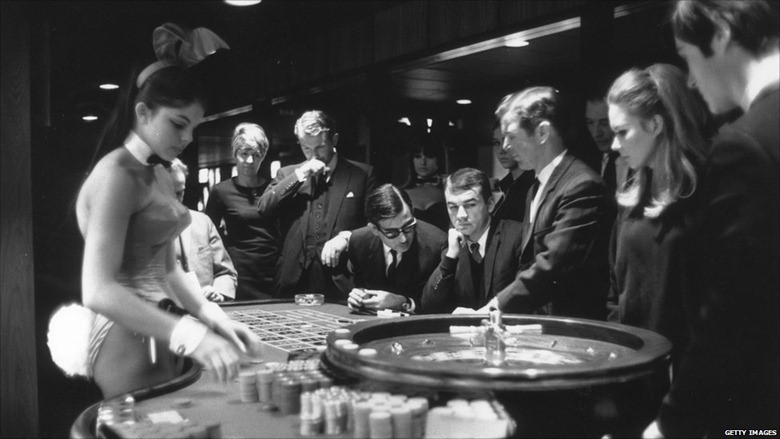
The first Playboy Club in London opened in 1965, following legalization of gambling in the United Kingdom. The club on Park Lane was also the first Playboy Club in Europe.
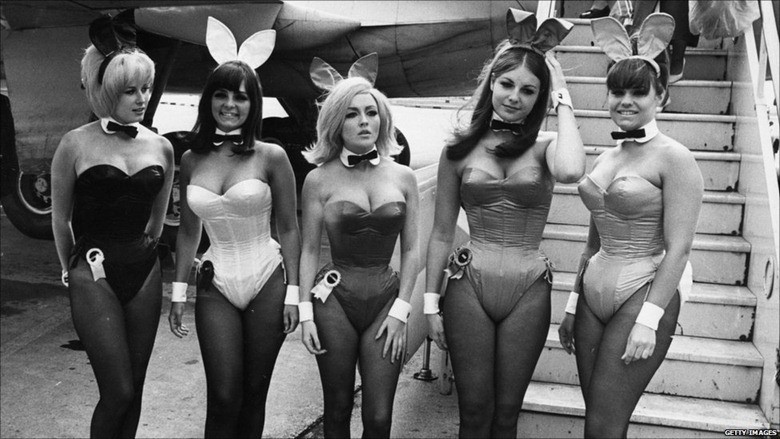
English girls were flown to America to train as Playboy bunnies, waitresses and croupiers, in preparation for the London opening.
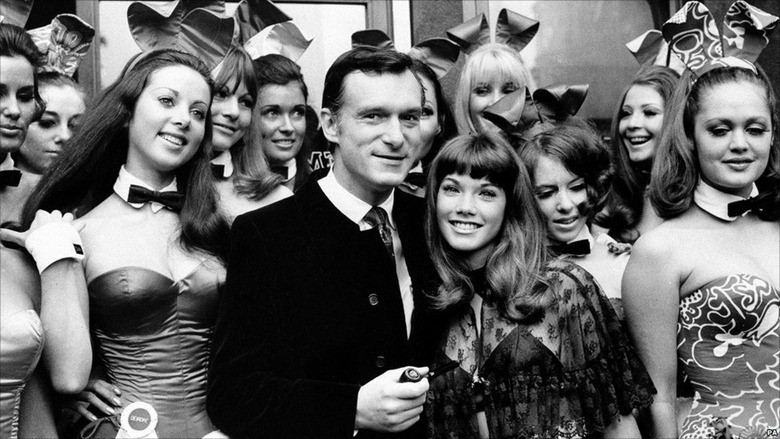
It is believed that Hugh Hefner, the publisher of Playboy, was inspired to open drinking and gambling clubs with women dressed in velvet, after he visited the chain of Gaslight Clubs in Chicago.
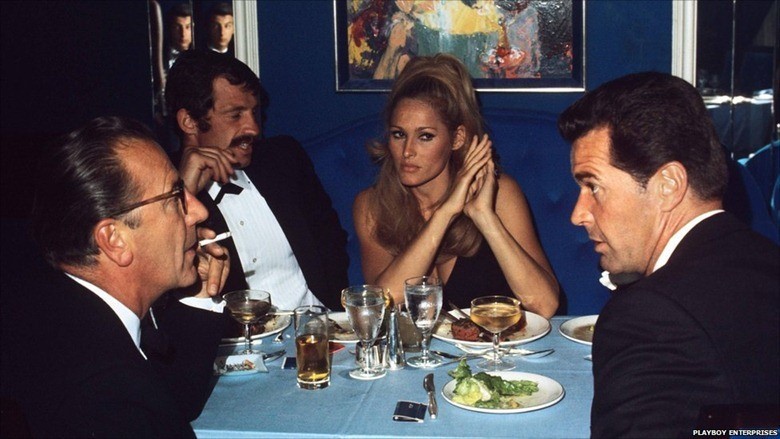
French actor, Jean-Paul Belmondo, Bond girl Ursula Andress and American actor James Garner enjoying a bite to eat at the London Playboy club.
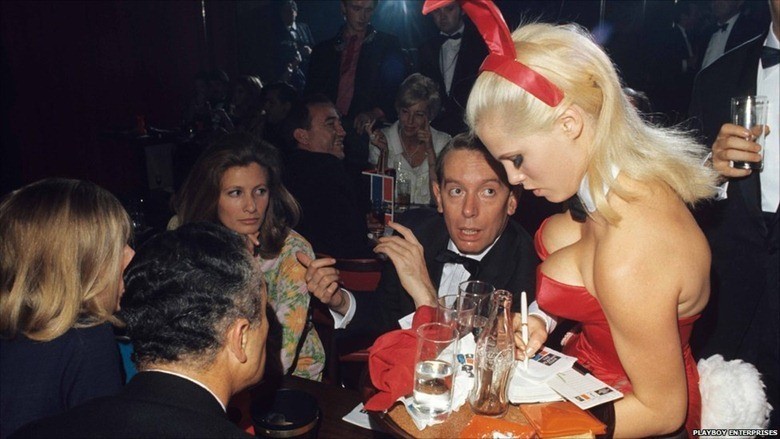
The presence of influential critic and writer, Kenneth Tynan, shows that intellectuals also made themselves at home in the club.
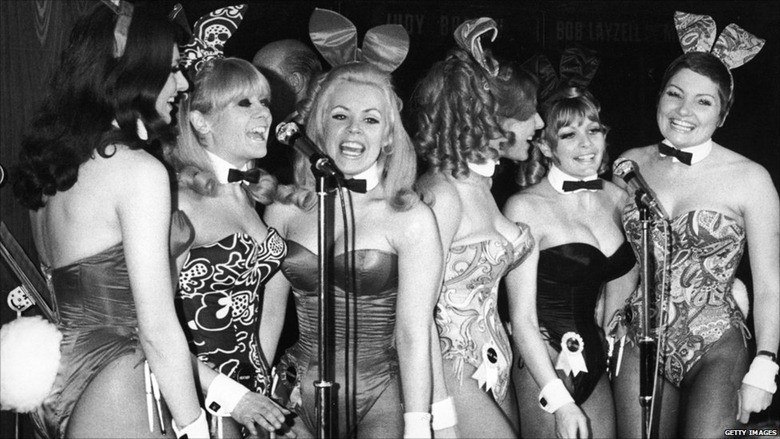
In 1972, some of the Bunny Girl waitresses at the London Playboy Club recorded an album as the 'Singing Bunnies'.
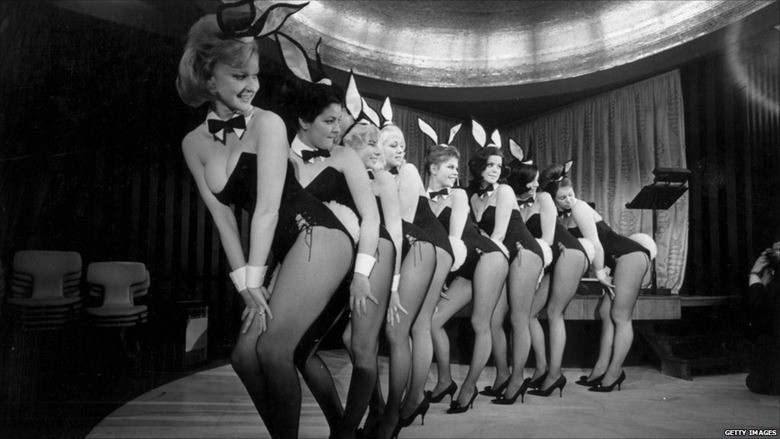
The London Playboy club closed in 1981 after its gambling licence was not renewed.
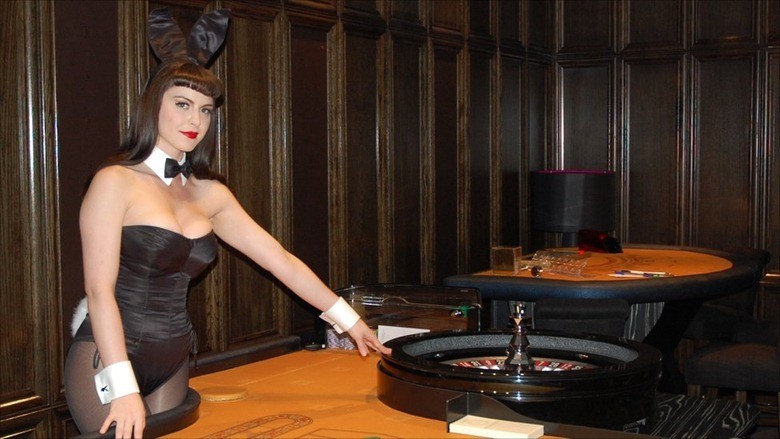
The Playboy Club will return to London on Saturday, 30 years after the original closed. New croupier bunnies all received intensive training over 11 weeks and the bunny outfits, specially fitted for each girl, were given a modern twist by the Marchesa fashion house.
A member of the Playboy Club, Hunt was renowned for throwing outrageous parties. Joan Collins, then at the height of her ‘Dynasty’ TV fame, turned up to Hunt’s 40th birthday party dressed as a peacock.
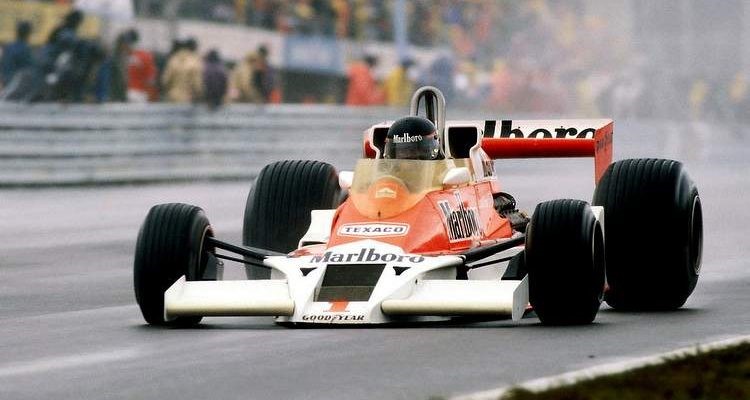
James Hunt, McLaren, in 1977. Photo by Getty Images.
5 reasons James Hunt remains an F1 icon. 15 June 2018. By Greg Stuart.
No single person has ever scorched a trail through Formula 1, both as a driver and a commentator, like James Hunt. 25 years on from his untimely passing, we look at why the 1976 world champion’s light still burns as brightly as ever...
1. He said what he thought
It seems that James Hunt was born without a filter between his brain and his mouth. That meant that he was sometimes crude, often rude, but almost always good value.
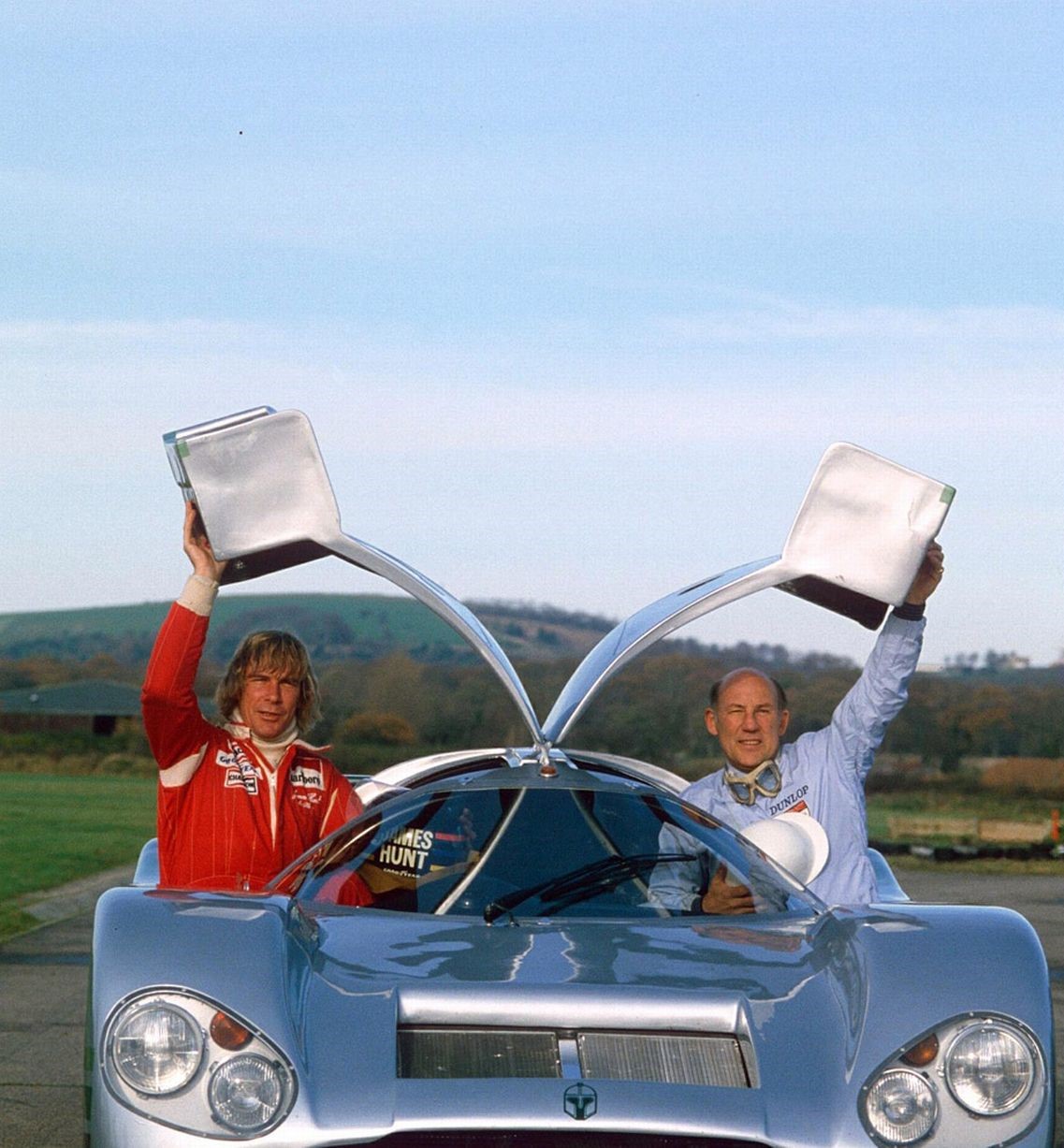
James Hunt and Stirling Moss with the Aston Martin Nimrod in 1980. Photo by Image Rex.
Interviewed by Stirling Moss at one race, Moss earnestly put it to the then-McLaren driver: “James, they’ve changed the regulations concerning the air boxes and the wings and yet you’re still extremely fast. How do you do it?” “Big balls,” Hunt immediately shot back. “Oh forget it,” laughed an exasperated Moss.
Hunt wasn’t afraid to give his fellow drivers a piece of his mind, either. When Patrick Depailler put Hunt in the wall at the 1976 United States Grand Prix West in Long Beach, Hunt spent the following laps standing on the track shaking his fist at the Tyrrell driver every time his car passed the stricken McLaren. Not content with that, Hunt then infiltrated the post-race press conference and gave the third-placed Depailler a dressing down in front of the media, telling the Frenchman: “the first thing you must do is bloody well learn how to drive!”
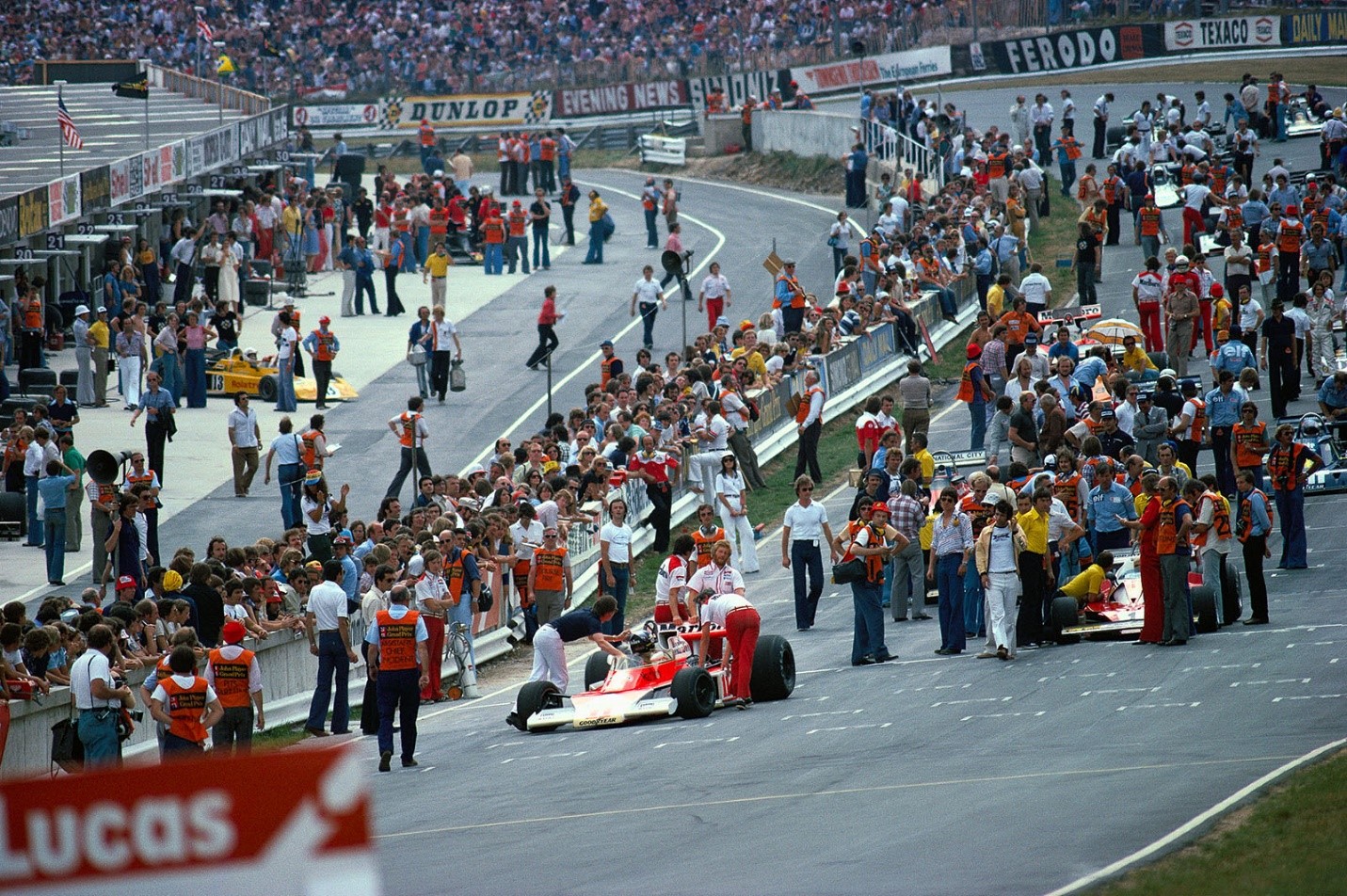
1976 British Grand Prix in Brands Hatch. The cars being prepaired for the restart. The race had to be stopped after a start collision involving Clay Regazzoni of Ferrari, James Hunt of McLaren (n. 11), Niki Lauda (Ferrari) and Jacques Laffite (Ligier). Hunt had a spare car but his team was going to race it and face the consequences later. Photo by Rainer Schlegelmilch.
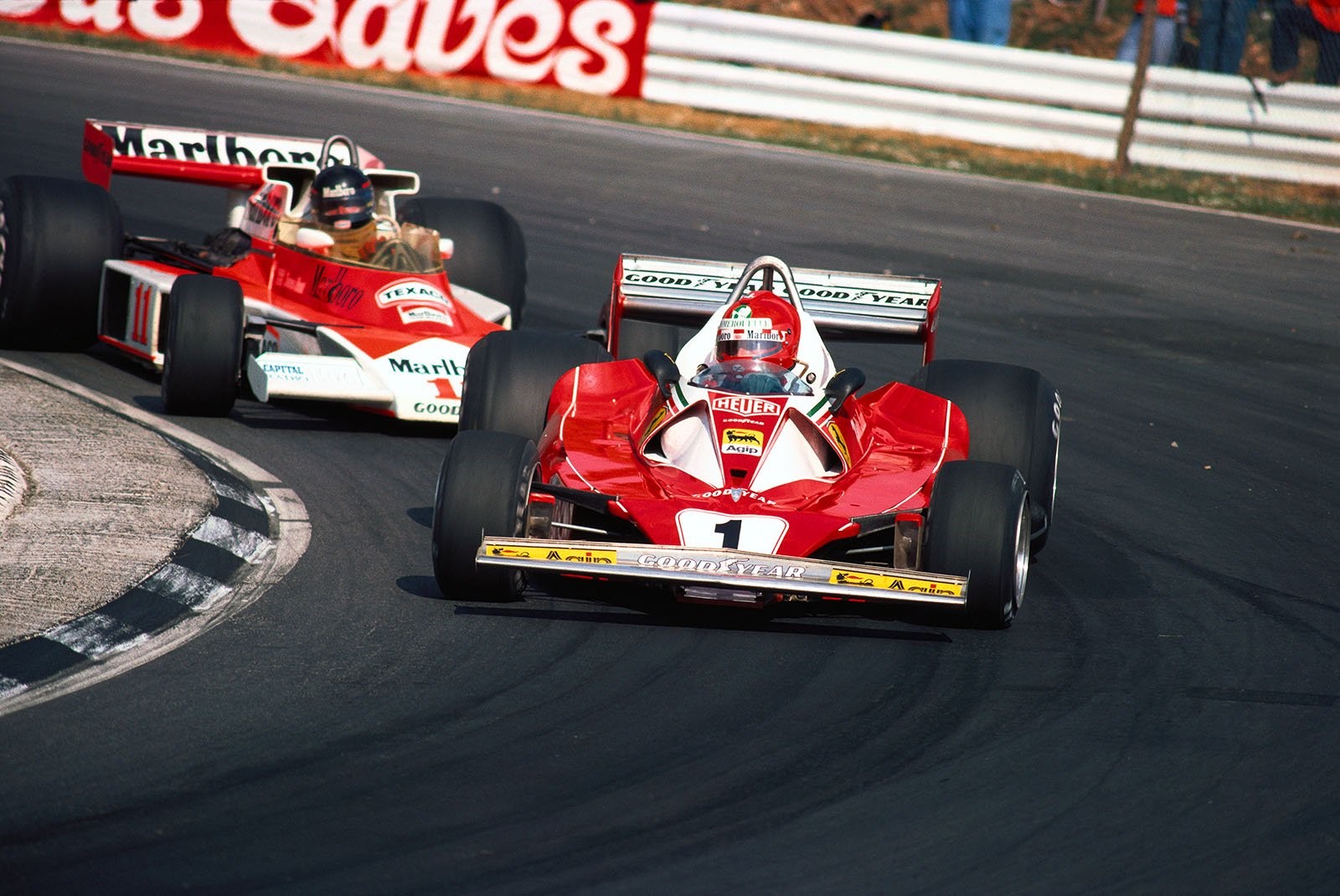
Race leader Niki Lauda, Ferrari, followed closely by James Hunt, McLaren, at the 1976 British Grand Prix in Brands Hatch. Photo by Rainer Schlegelmilch.
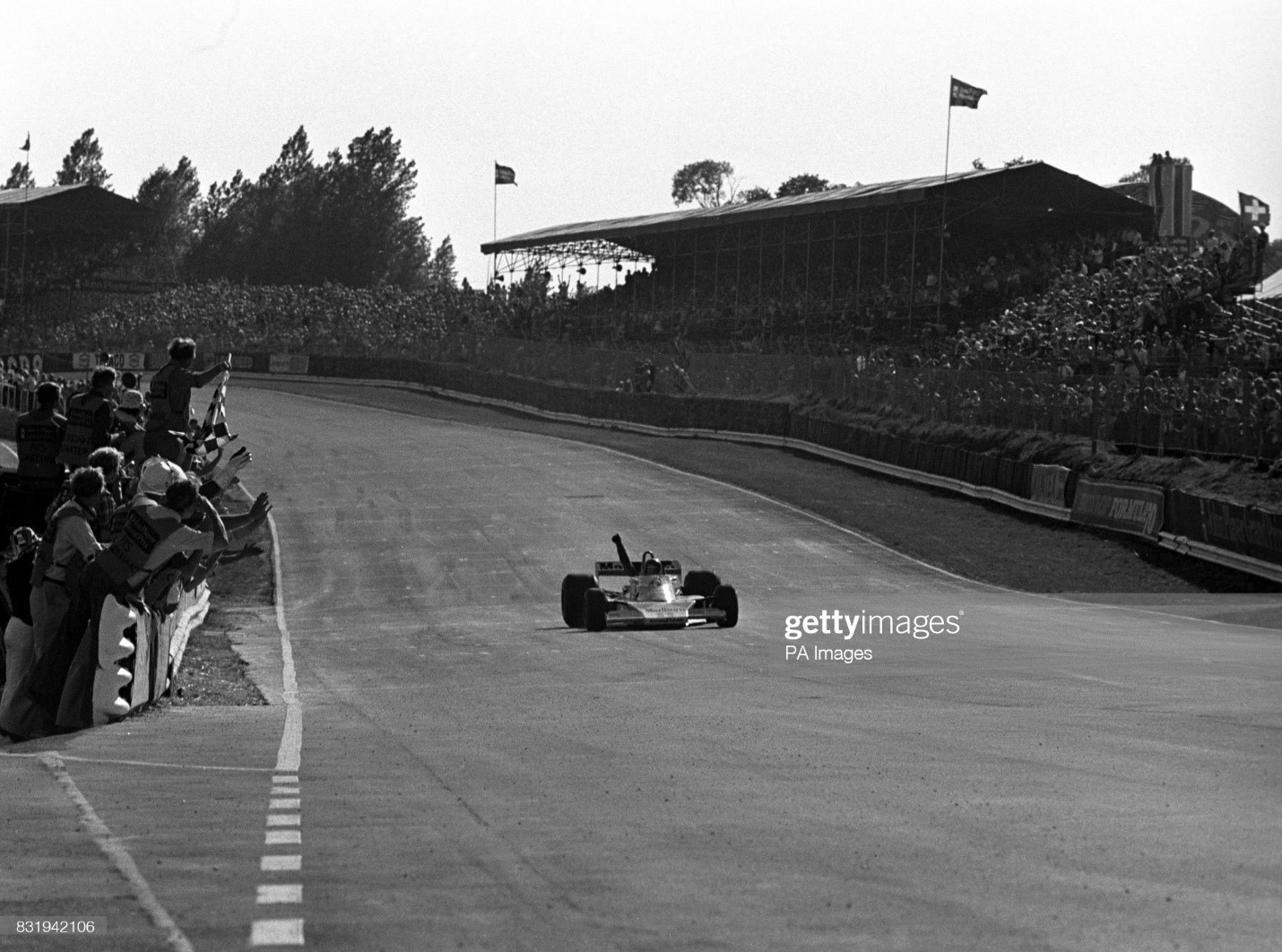
James Hunt crosses the finishing line in his McLaren to win the 1976 British Grand Prix. Photo by PA Images via Getty Images.
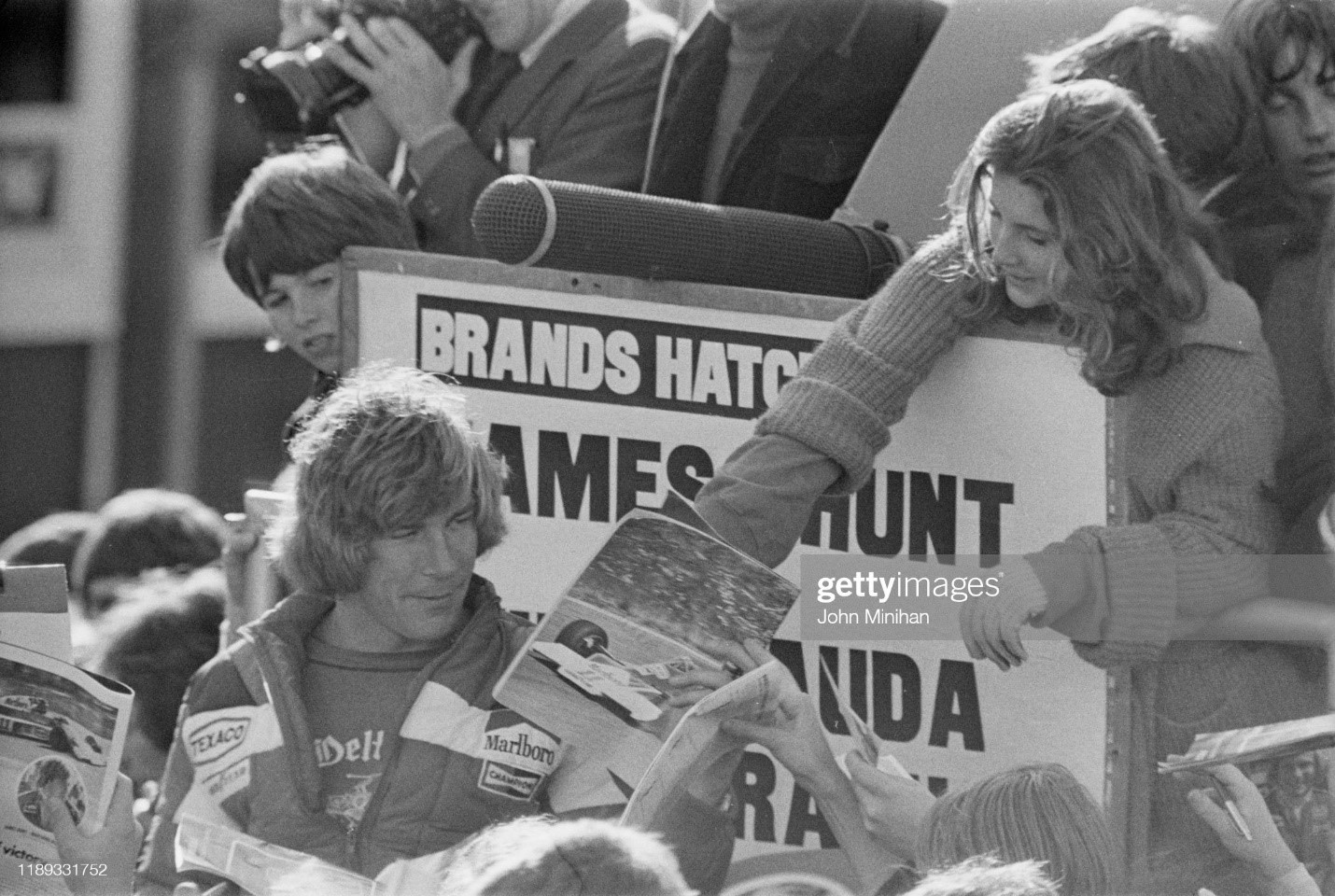
James Hunt signing autographs to fans at Brands Hatch, UK, 07th November 1976. Photo by John Minihan /Evening Standard / Hulton Archive / Getty Images.
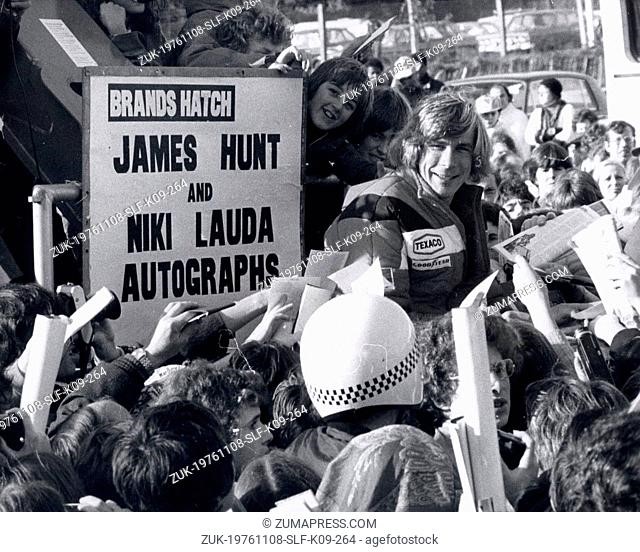
November 08, 1976, Kent, England. James Hunt, the new World Racing Champion, is besieged by thousands of young autograph hunters at Brands Hatch. Photo by Keystone press Agency.
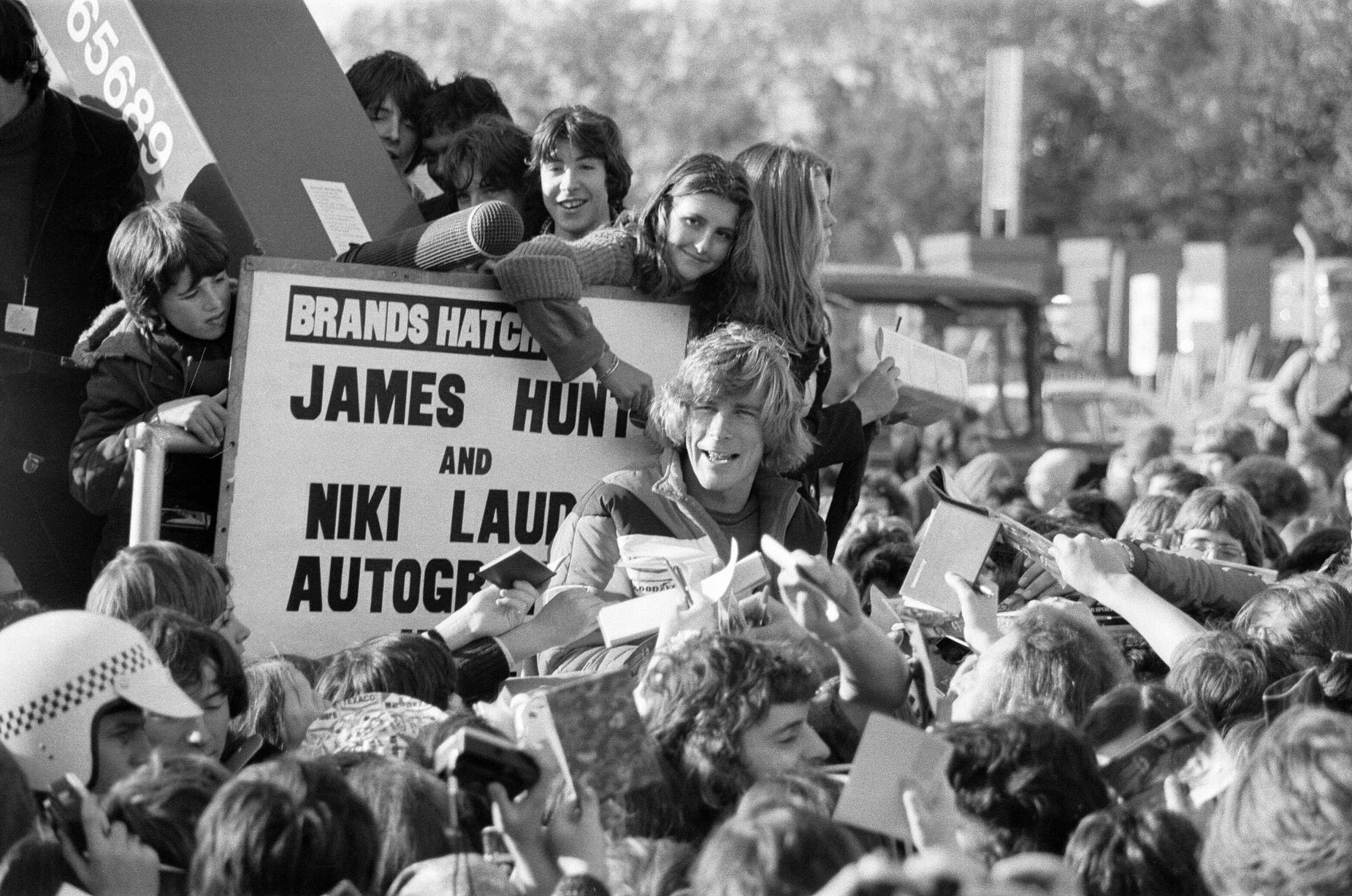
November 08, 1976, Kent, England. James Hunt, the new World Racing Champion, is besieged by thousands of young autograph hunters at Brands Hatch.
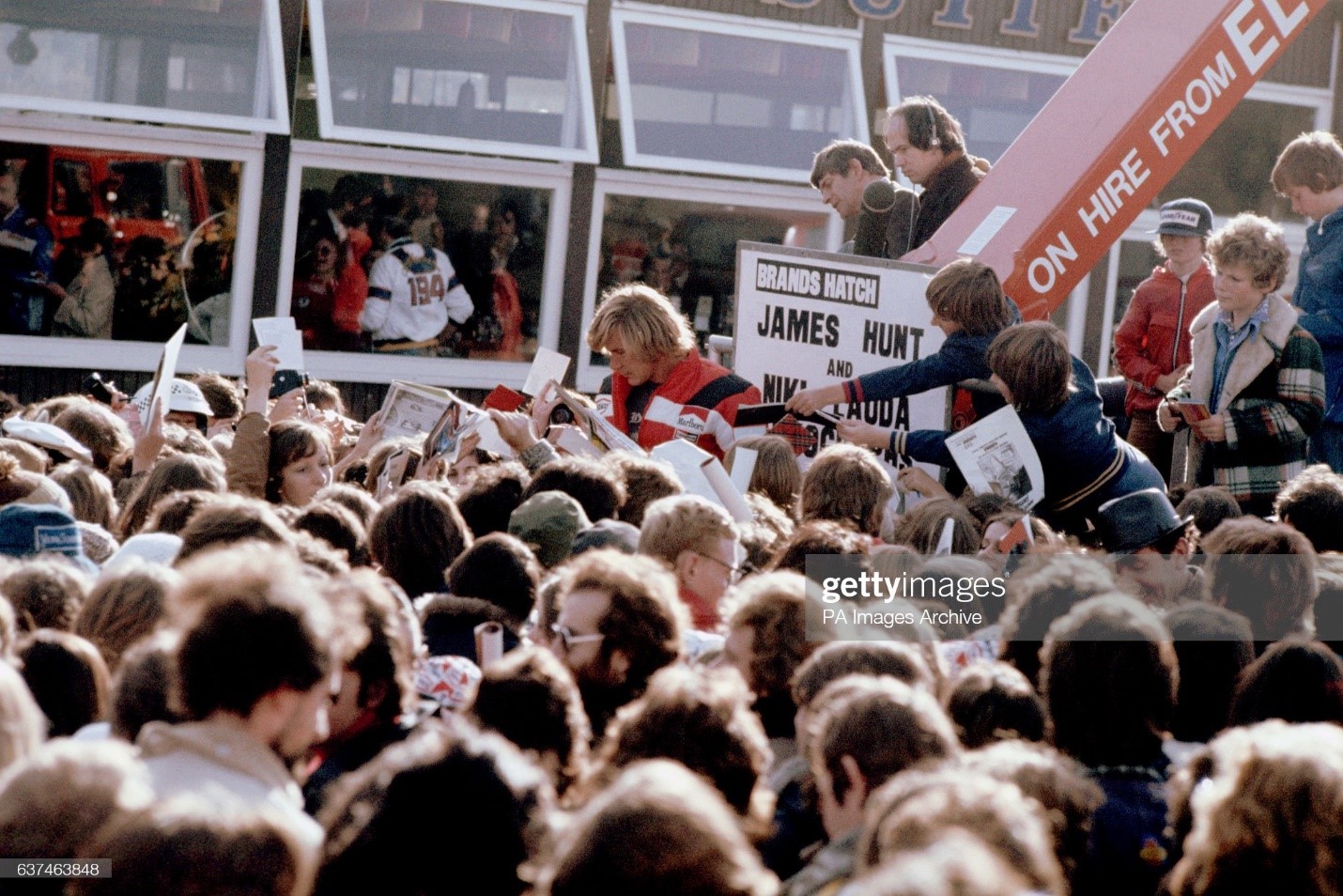
Formula One world champion James Hunt is surrounded by hordes of autograph hunters at Brands Hatch, UK, 07th November 1976. Photo by S&G / PA Images via Getty Images.
It was also Hunt’s brutal honesty with the press that won him legions of fans. Asked what winning the 1976 British Grand Prix at Brands Hatch meant to him, Hunt replied, “nine points, $20,000 and a lot of happiness”, before taking a cigarette off someone in the crowd. Nowadays, we get excited when Kimi Raikkonen eats an ice cream…
2. He was anti-establishment
Already an enfant terrible of the British racing scene, Hunt’s entry into Formula 1 was anarchic from the get-go.
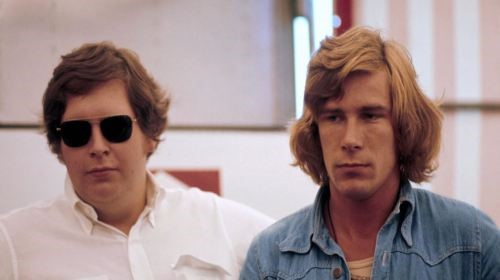
Lord Alexander Hesketh with James Hunt.
He came to the top level of the sport with the privateer Hesketh squad, the plaything of the young Lord Hesketh.
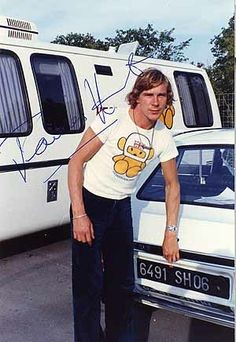
James Hunt at Hesketh racing.
The team’s catering tended to involve lots of champagne, lobster and caviar, while Lord Hesketh himself described F1 at the time as “a flat bottle of champagne in need of a rather good shake”.
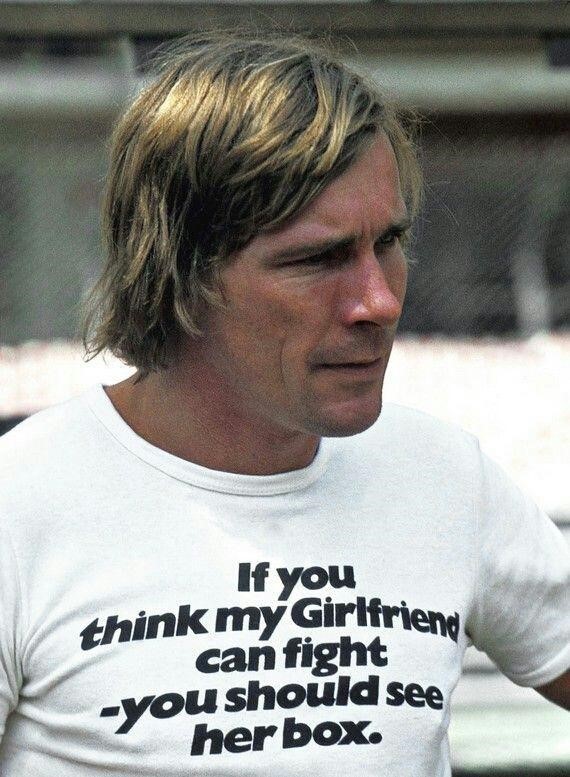
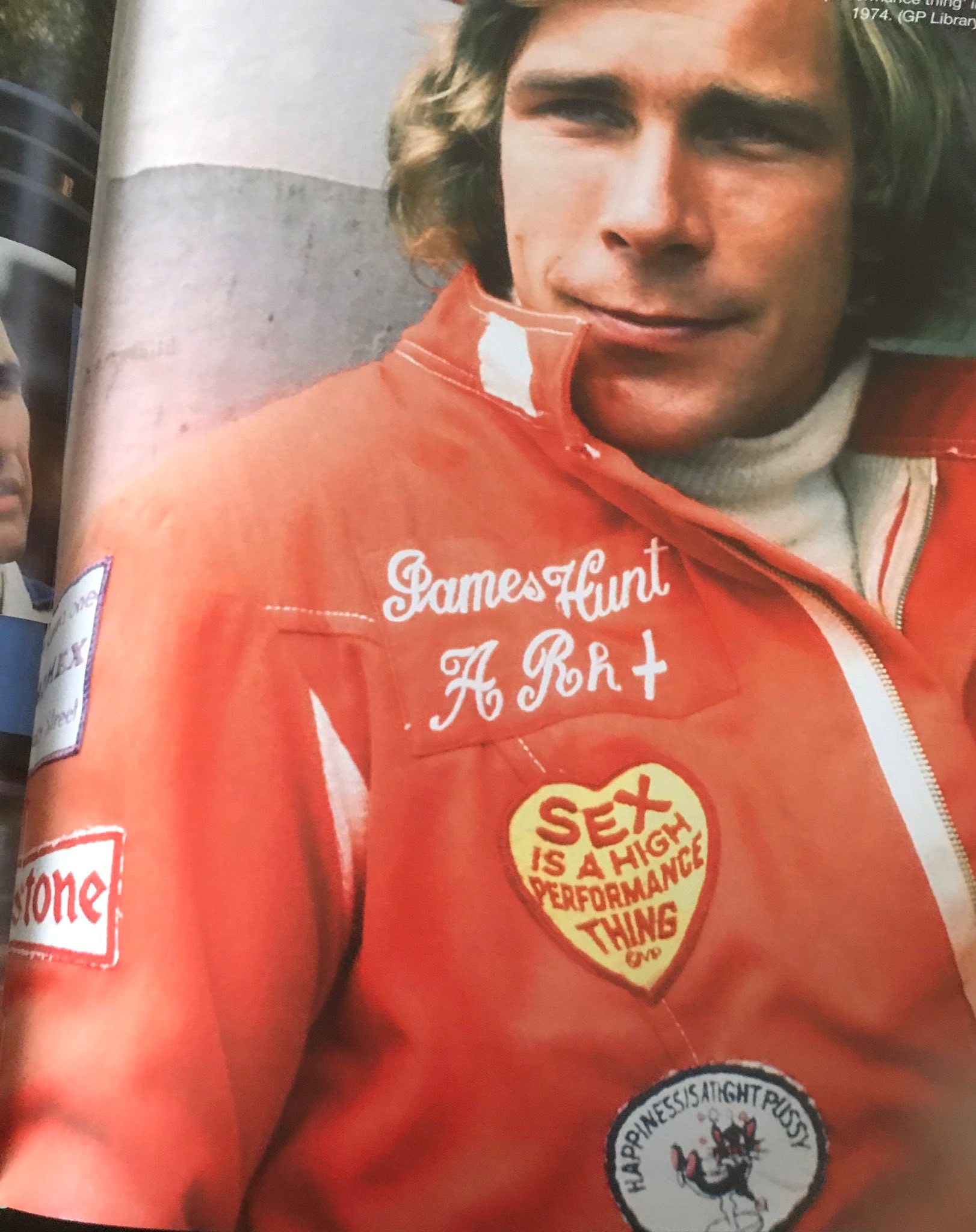
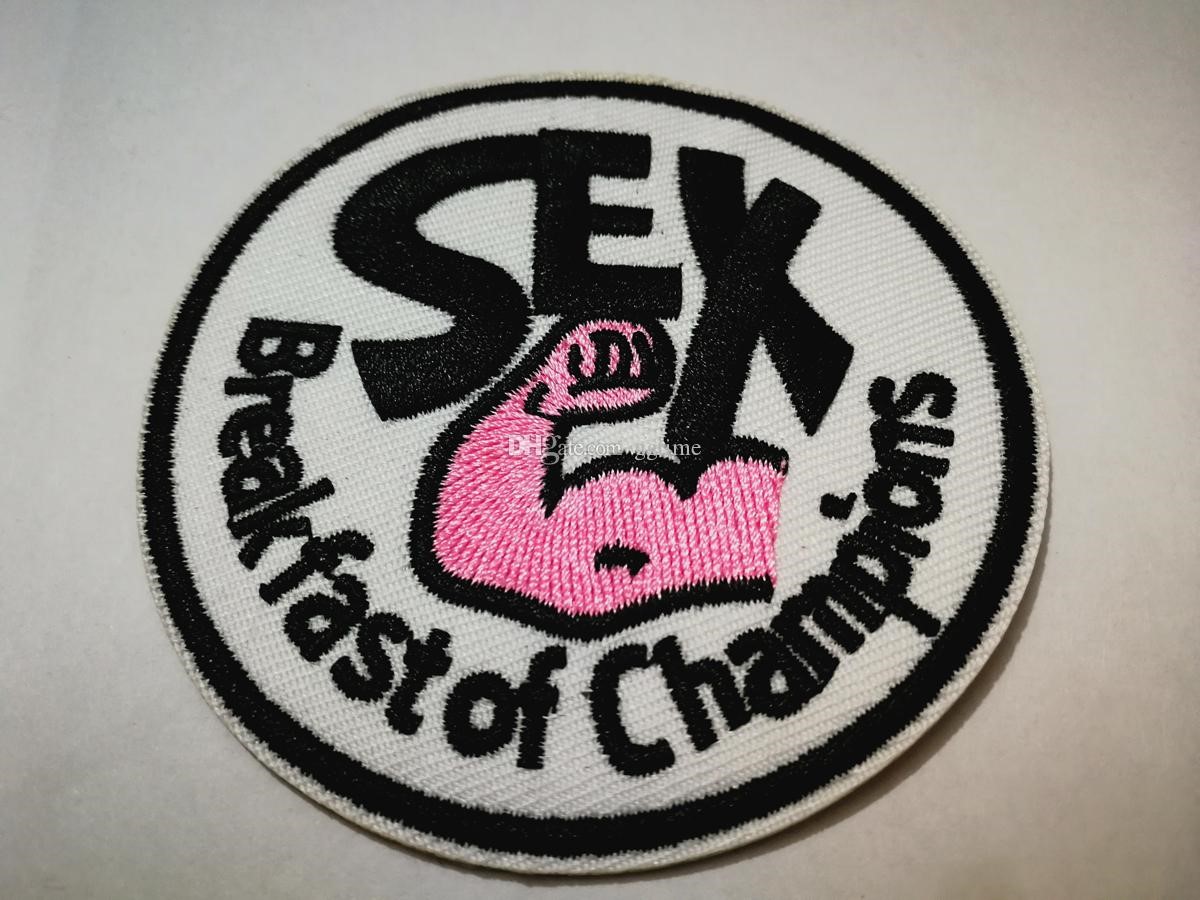
Clearly, then, the team were a natural fit for a driver with a ‘SEX: Breakfast of Champions’ patch stitched onto his overalls…
Hunt’s other motto for life was “to do what I want to do whenever I can. Life is too short to be bound by regulations when it isn’t absolutely essential.” That modus vivendi manifested itself during negotiations for his first McLaren contract, after Hunt baulked at a term which required the team’s Marlboro-sponsored drivers to wear ‘a blazer, shirt and tie and tailored flannel trousers’ at any public functions.
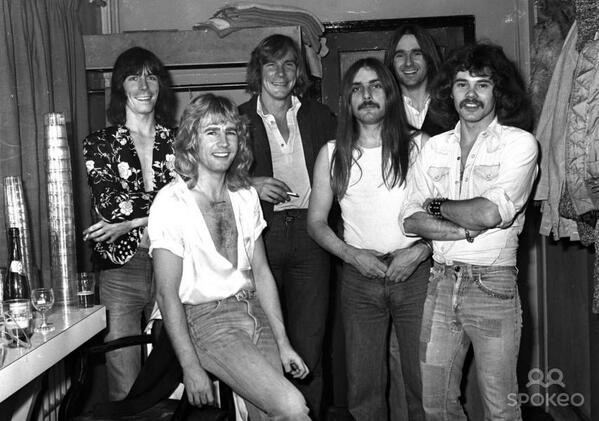
Status Quo at the Hammersmith Odeon with James Hunt during their 1977 world tour in London.
Hunt, who at that time had no drive in place for the 1976 season, refused to go along with the clause so that, according to Philip Morris’ legendary executive John Hogan, “he would turn up at social events, management functions, banquets, cocktail parties and the like wearing jeans and a tattered sweatshirt and sometimes in his bare feet, shaking hands with VIPs and charming them all.”
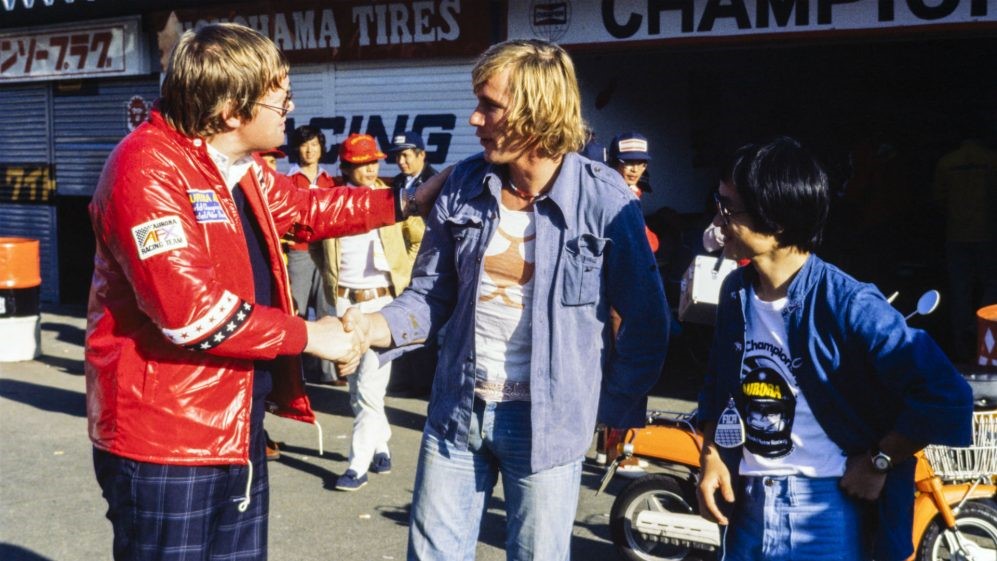
3. He was properly quick
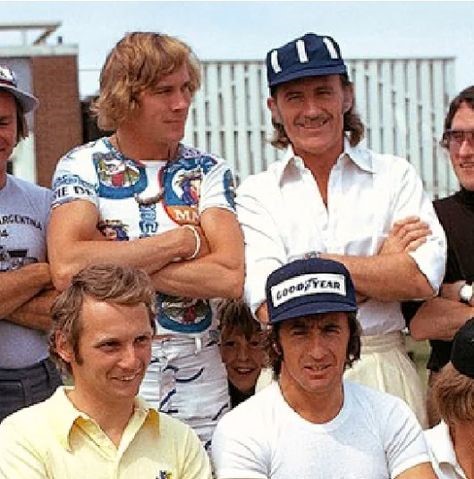
James Hunt with Graham Hill, Niki Lauda and Jackie Stewart.
Unfortunately and slightly unfairly for Hunt, all of his headline grabbing antics occasionally masked the hugely talented racing driver lurking beneath. He was compared to Jim Clark and Sir Jackie Stewart by McLaren top brass Alastair Caldwell and Teddy Mayer respectively, with Mayer going on to say that he rated Hunt more highly than two-time champion Emerson Fittipaldi, who’d won his second title with McLaren in 1974.
But don’t just take their word for it. A 2014 statistical analysis by mathematician Dr Andrew Phillips ranked Hunt as the sixth greatest F1 driver of all time, behind Clark, Stewart, Fernando Alonso, Michael Schumacher and Juan Manuel Fangio, while also ranking Hunt’s rookie 1973 season with Hesketh as the best of all time, even trumping Lewis Hamilton’s 2007 debut year with McLaren. A similar study, by academics Reiner Eichenberger and David Stadelmann, backed up Hunt’s underrated status, placing him as the 14th greatest of all time.
Drives like Hunt’s breakthrough 1975 Dutch Grand Prix victory in a car built in a shed at the back of Lord Hesketh’s mansion, or his title-clinching 1976 Japanese Grand Prix drive, where he sliced through the field in appalling conditions to claim his necessary third place, all had a touch of genius about them.
True, when Hunt lost motivation, as he arguably did towards the end of his racing career, he could sometimes be indifferent in a race. But when he was on song, he could be unstoppable - and he was always fair, as Niki Lauda once noted. “He was never a nasty driver,” said Lauda. “He was very good, correct… but fucking quick. This was the problem.”
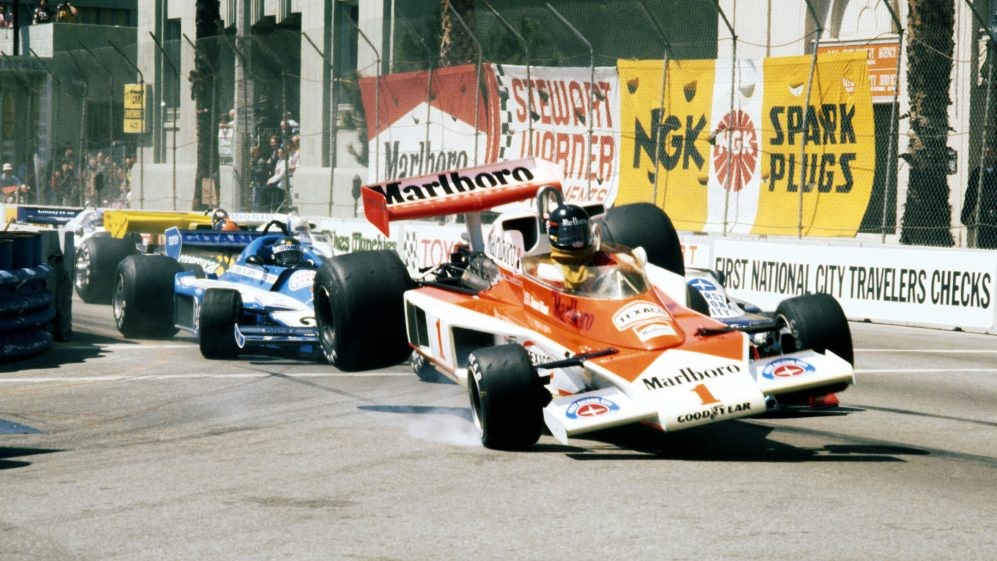
4. He was part of one of F1’s most enduring rivalries
Speaking of Lauda, you can’t really mention Hunt without talking about the great Austrian and the epic rivalry between the pair during the 1976 season.
Every bit as intense as the rivalry between Alain Prost and Ayrton Senna but never plumbing the bitter depths that those two reached, Hunt and Lauda were the very definition of ‘frenemies’. Fierce adversaries on the track, they had an enduring and warm friendship off it, with Lauda even helping him in his battle with alcoholism in the 1980s.
5. He was as good a commentator as he was a driver
“And Prost has yet to take his fellow Frenchman Rene Arnoux, who says ‘the reason I’m going so slow these days is that I’m used to turbo cars and these normally-aspirated engine cars are a very different kettle of fish to drive’.”
“And all I can say to that is ‘bullshit‘.”
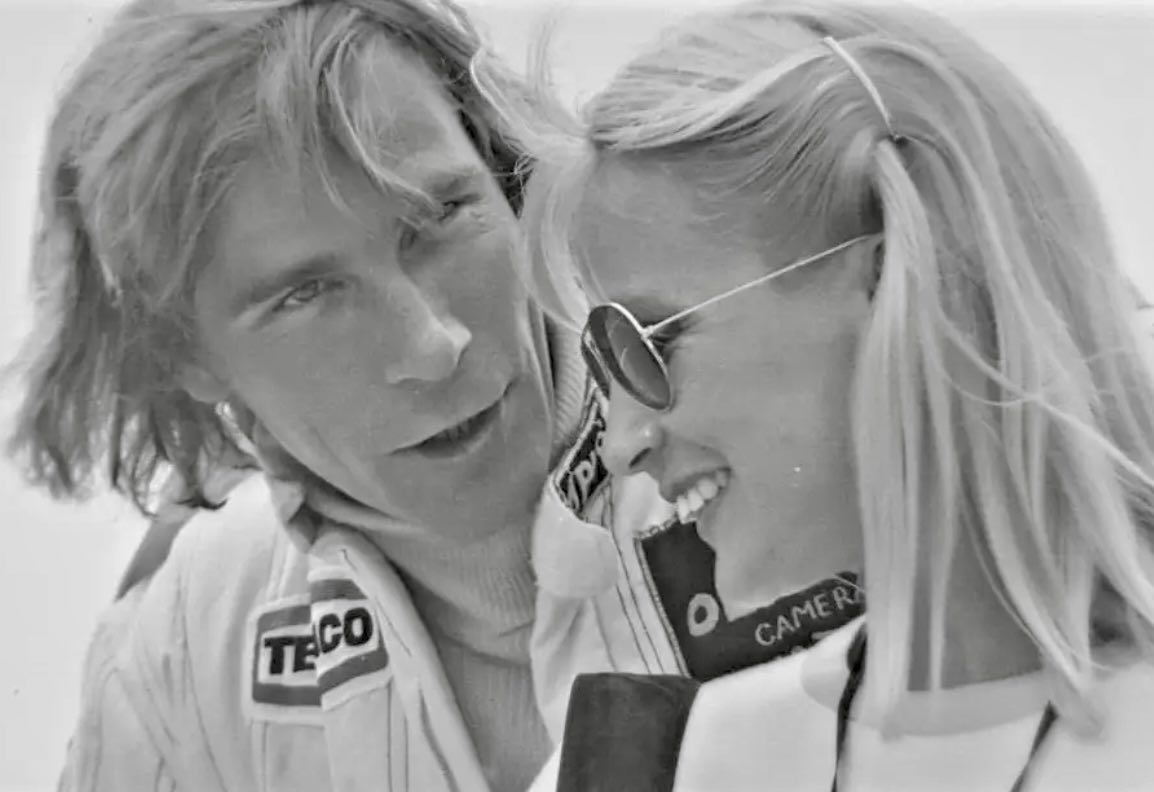
The short and magnetic life of James Hunt can best be described with a gallery of photographs that characterized it.
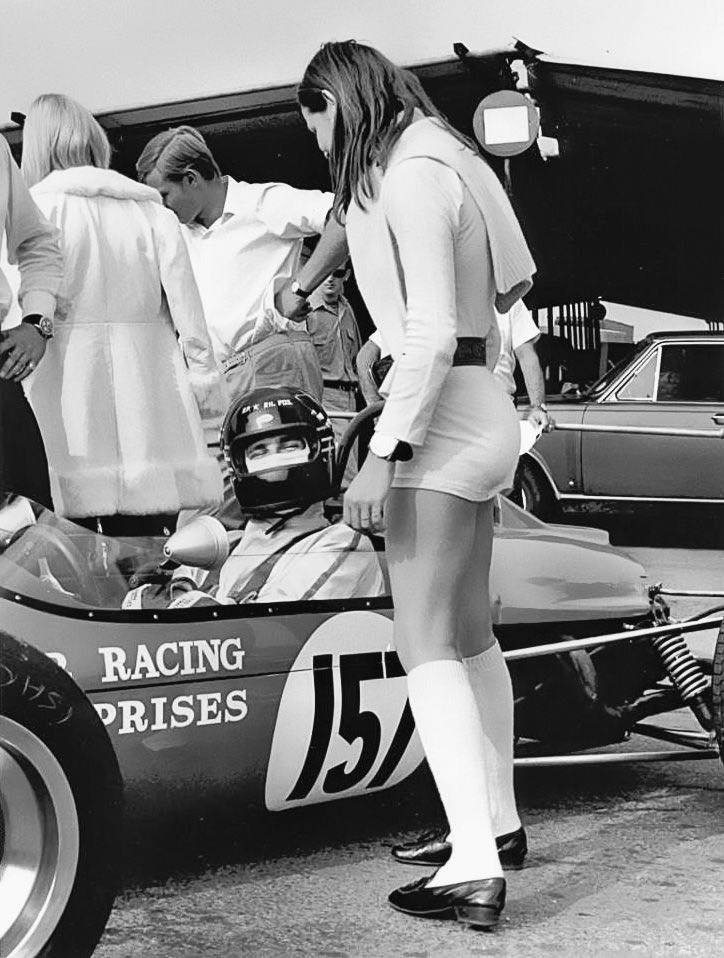
James Hunt, Brabham BT23, in Brands Hatch in August 1969.
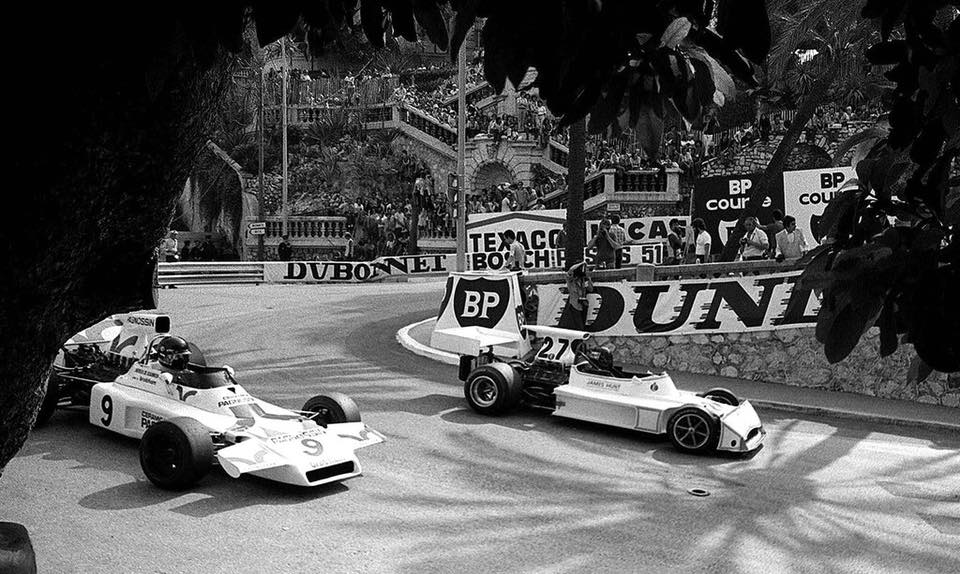
James Hunt, Hesketh Racing March 721G Ford, at the Monaco Grand Prix on 03 June 1973.
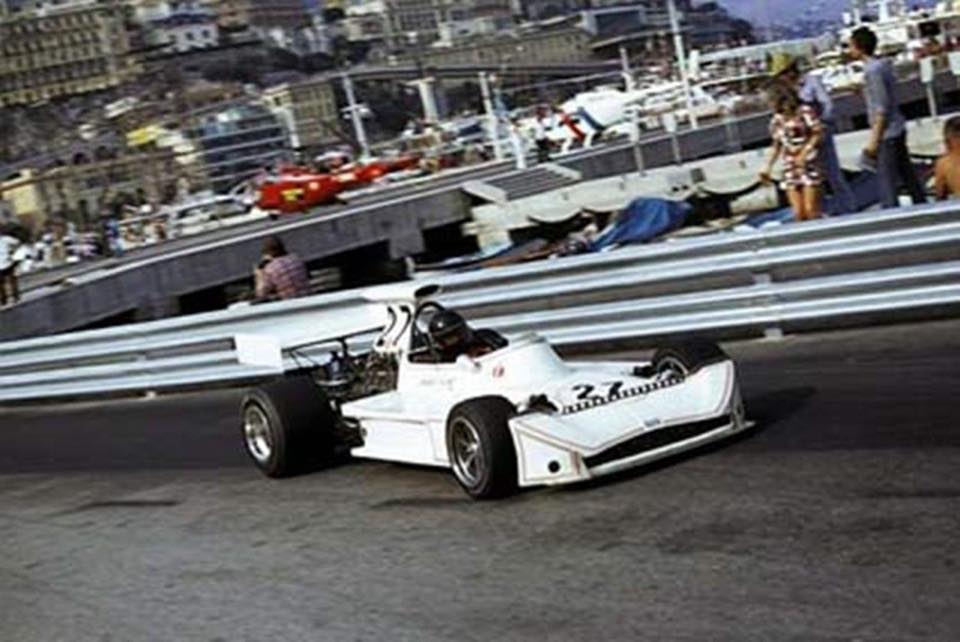
James Hunt on his Hesketh at Monaco in 1973. His first Grand Prix.
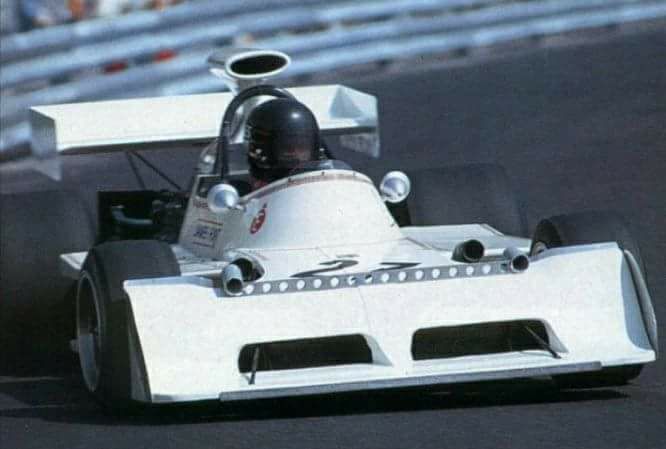
James Hunt, Hesketh Racing March 721G Ford, at the Monaco Grand Prix on 03 June 1973.
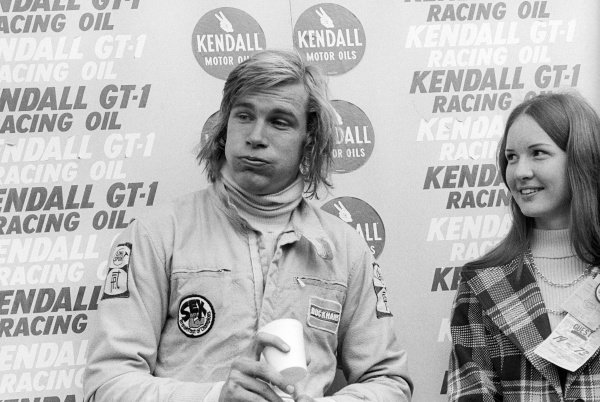
Second placed James Hunt, Hesketh, enjoys a cup of milk on the podium at the US GP in Watkins Glen on 07 October 1973.
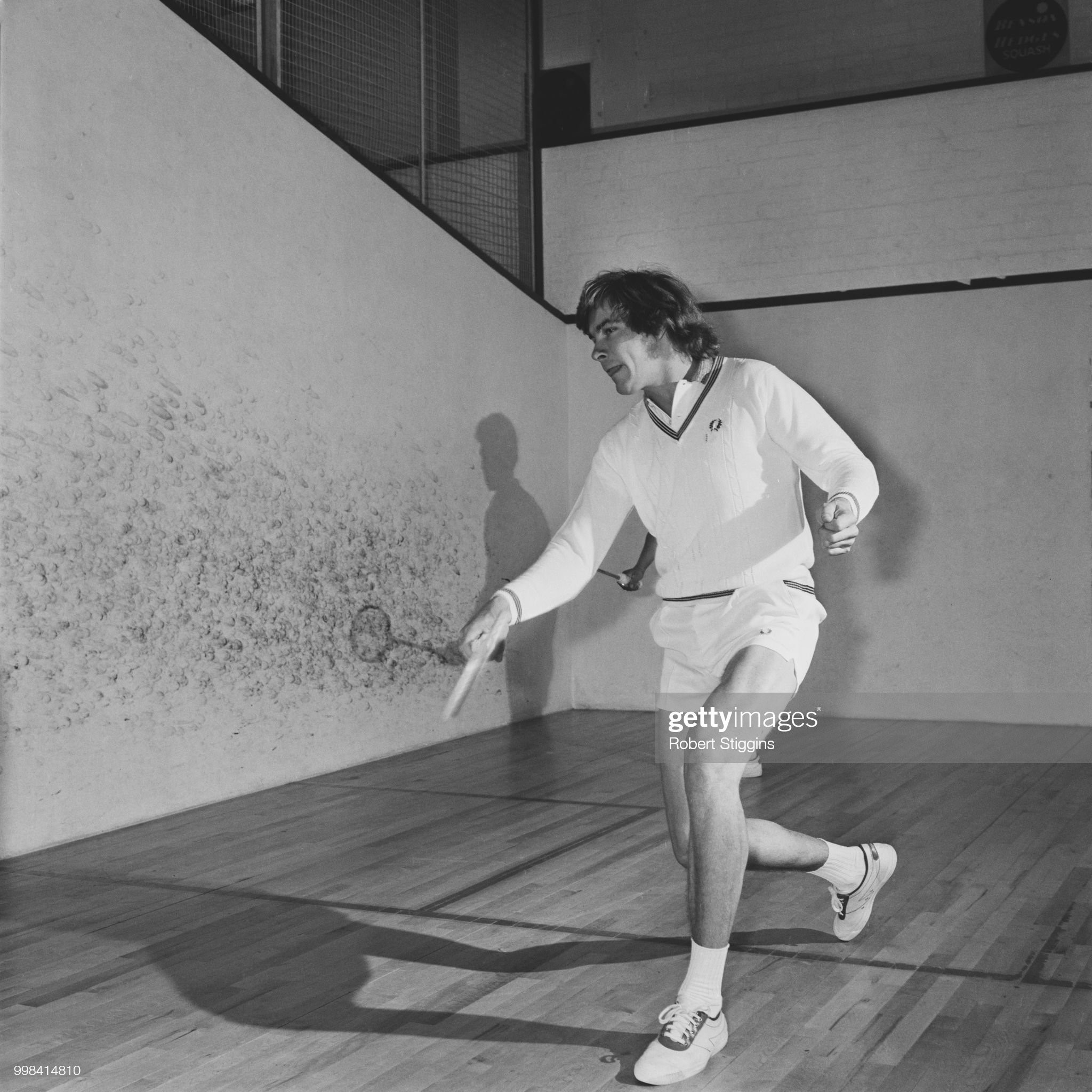
James Hunt pictured playing a game of squash to keep fit on 21st December 1973. Photo by Robert Stiggins / Daily Express / Hulton Archive / Getty Images.
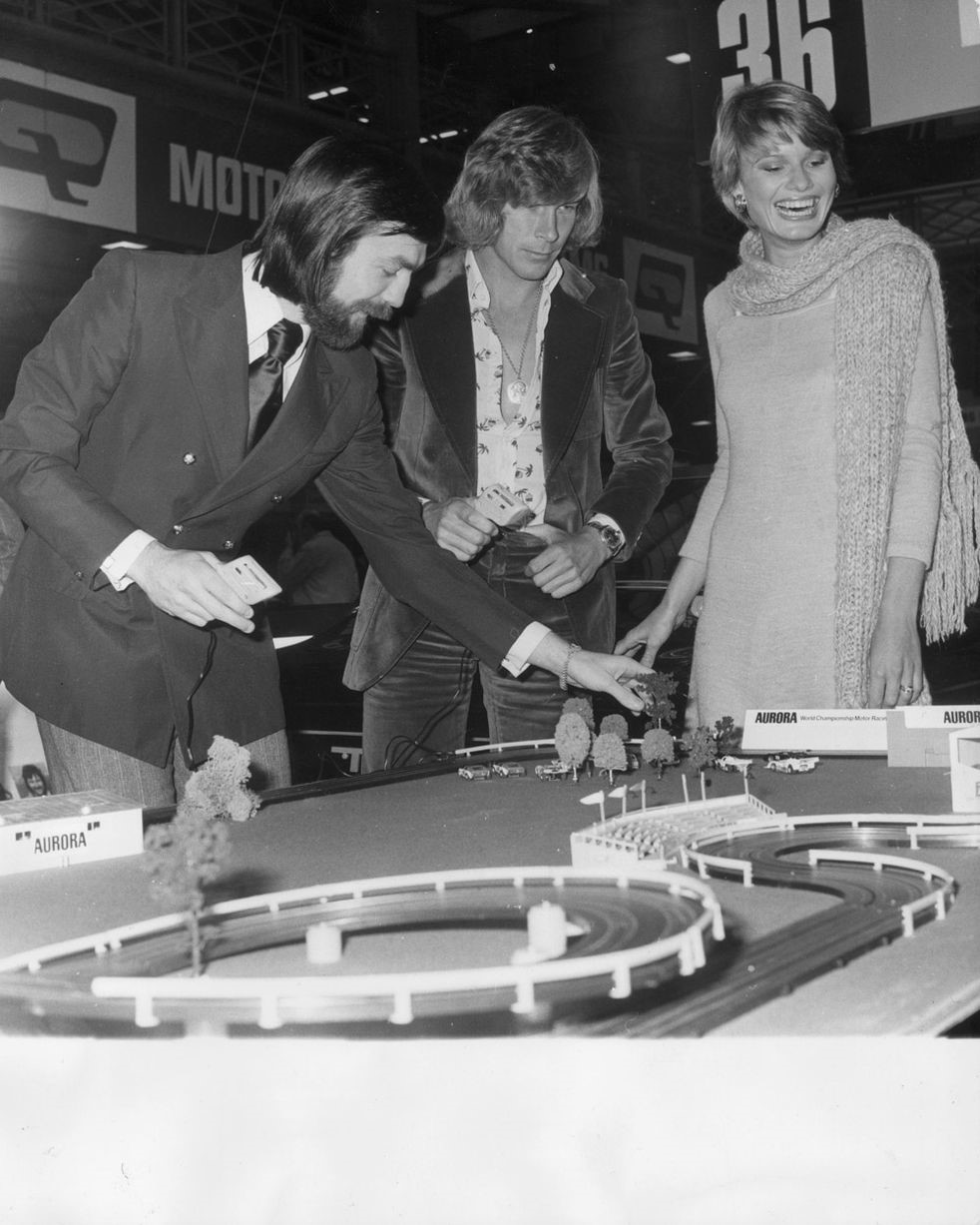
Mike Wilds and James Hunt playing with the Aurora model race track at the 12th International Racing Car Show at Olympia on 02 January 1974. Photo by Getty Images.
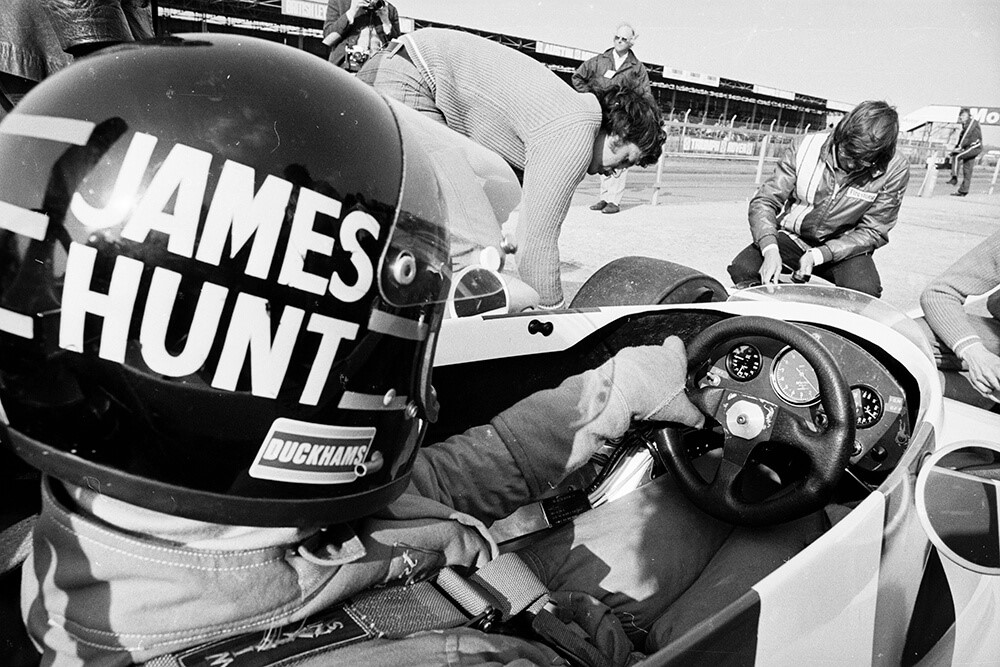
James Hunt at the wheel of his car at Silverstone on 05th April 1974. Photo by Victor Blackman/Express/Getty Images.
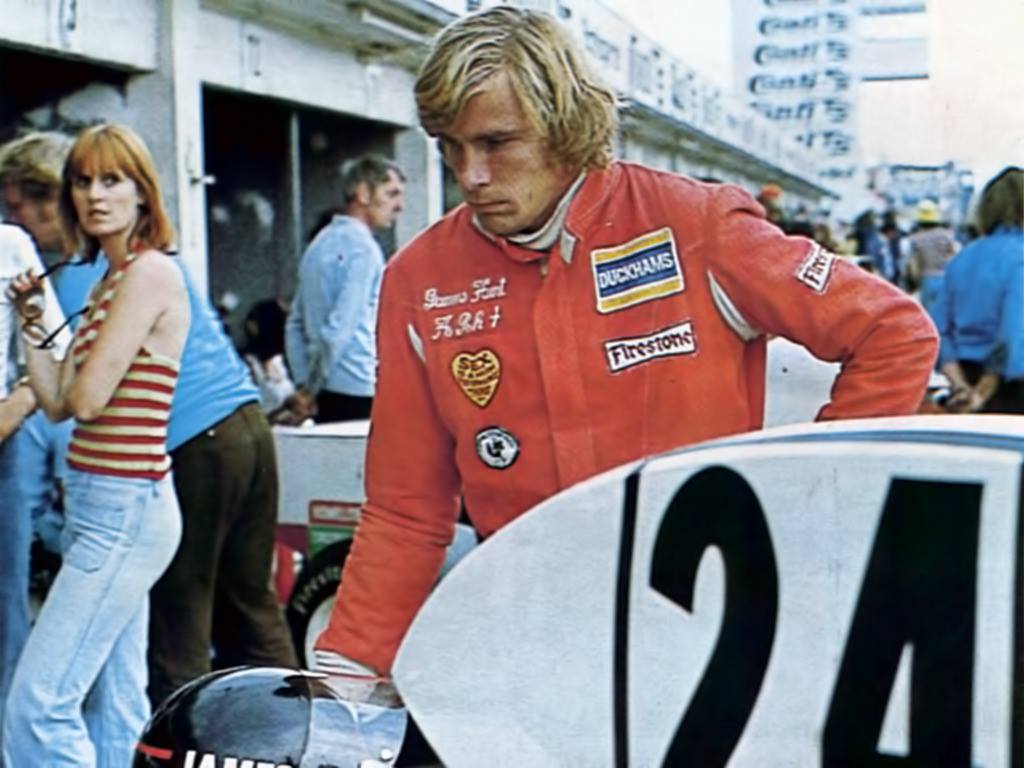
James Hunt, Hesketh 308B Ford, at the German Grand Prix in Nurburgring on 04 August 1974.

Carlos Reutemann celebrates victory on the podium with Carlos Pace, 2nd position and James Hunt, 3rd position at the US Grand Prix in Watkins Glen on 06 October 1974. Photo by Motorsport Images.
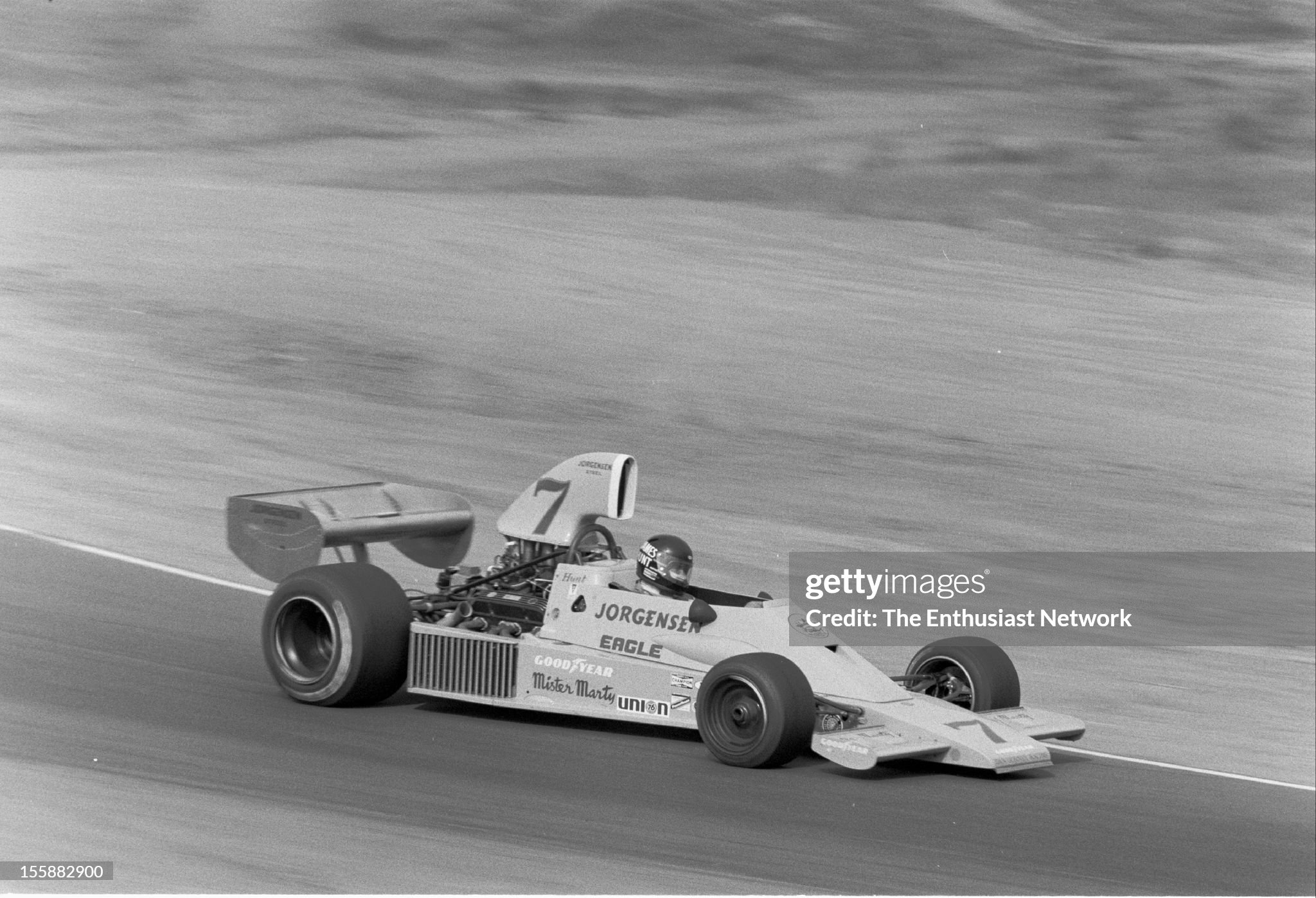
James Hunt drives his Chevrolet powered Eagle 755 at the Riverside Grand Prix Formula 5000 in Riverside International Raceway on 27 October 1974. Photo by John Lamm / The Enthusiast Network via Getty Images.
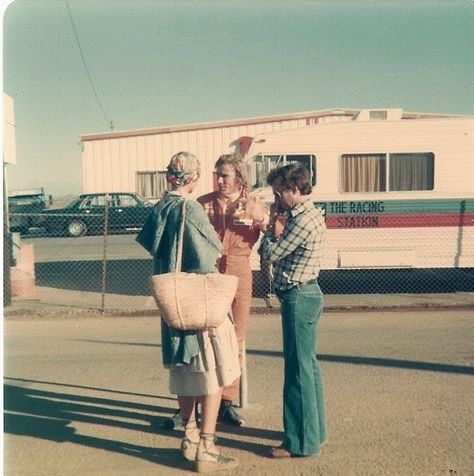
James Hunt at the Riverside Grand Prix in 1974.
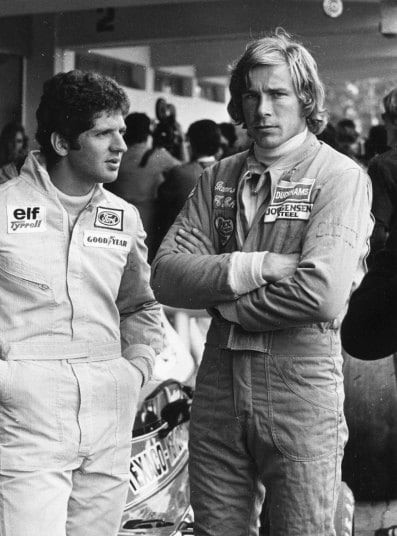
17th January 1975. James Hunt, right, with Jody Scheckter at the Argentine Grand Prix in Buenos Aires. Photo by Roberto Bunge/Keystone/Getty Images.
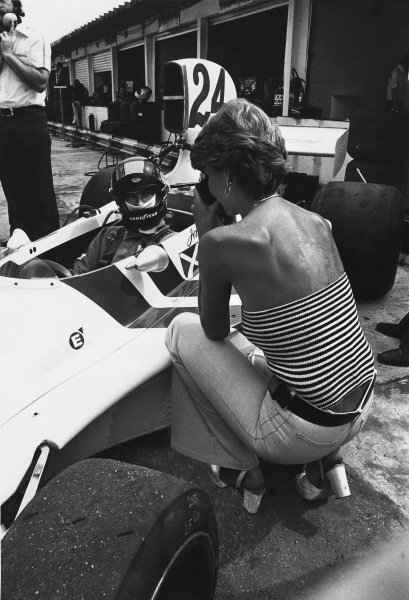
James Hunt at the Brazilian Grand Prix in Interlagos on 26 January 1975.
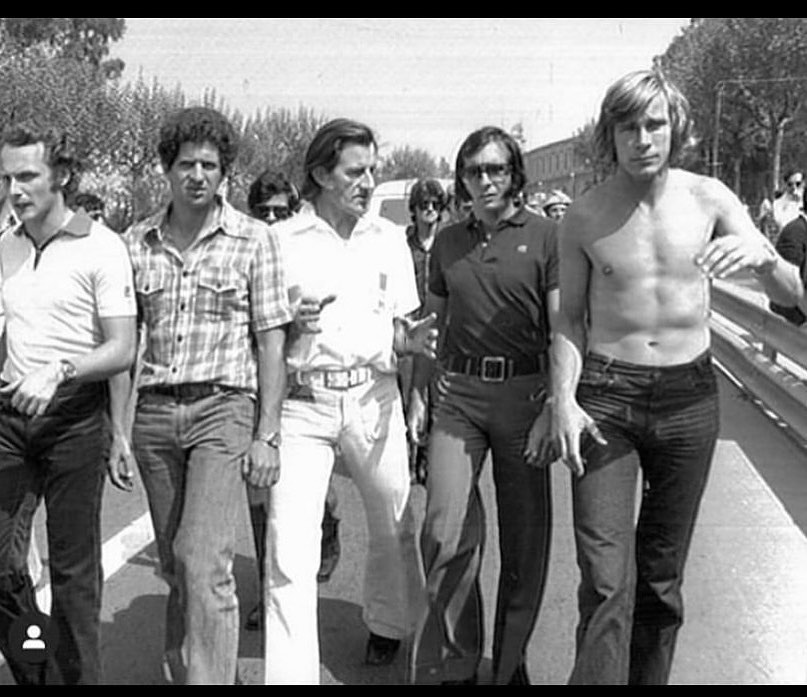
Niki Lauda, Jody Scheckter, Graham Hill, Jackie Stewart and James Hunt before the Spanish Grand Prix on 27 April 1975.
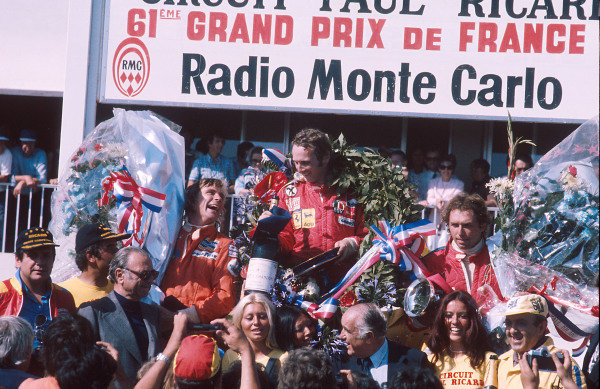
James Hunt, Niki Lauda and Jochen Mass on the podium at the French Grand Prix in Paul Ricard, Le Castellet, France, on 06 July 1975. Photo by Lat Images.
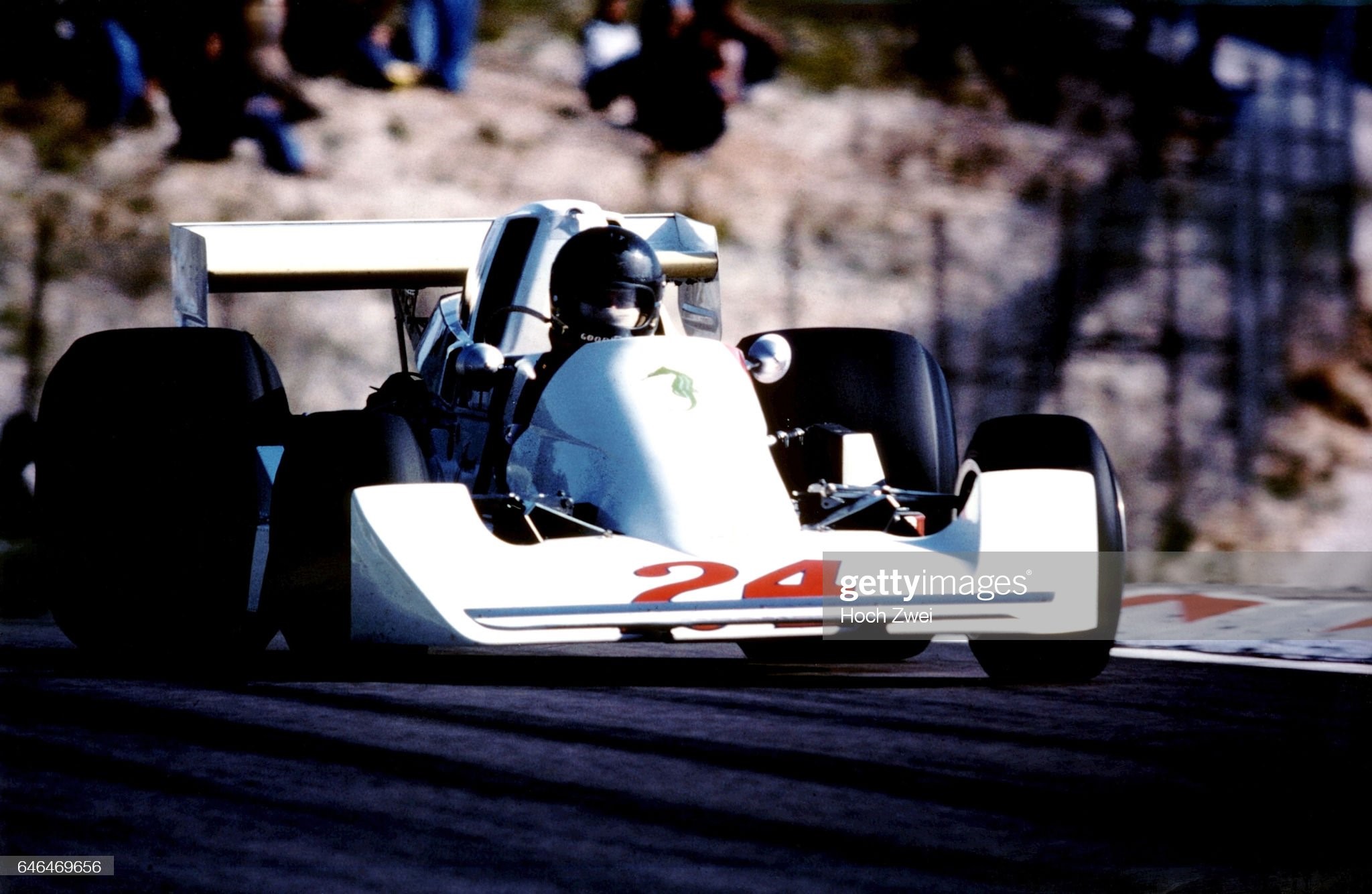
Formula 1 Swiss Grand Prix, Dijon, August 24th, 1975. James Hunt, Hesketh-Ford 308C. Photo by Hoch Zwei/Corbis via Getty Images.
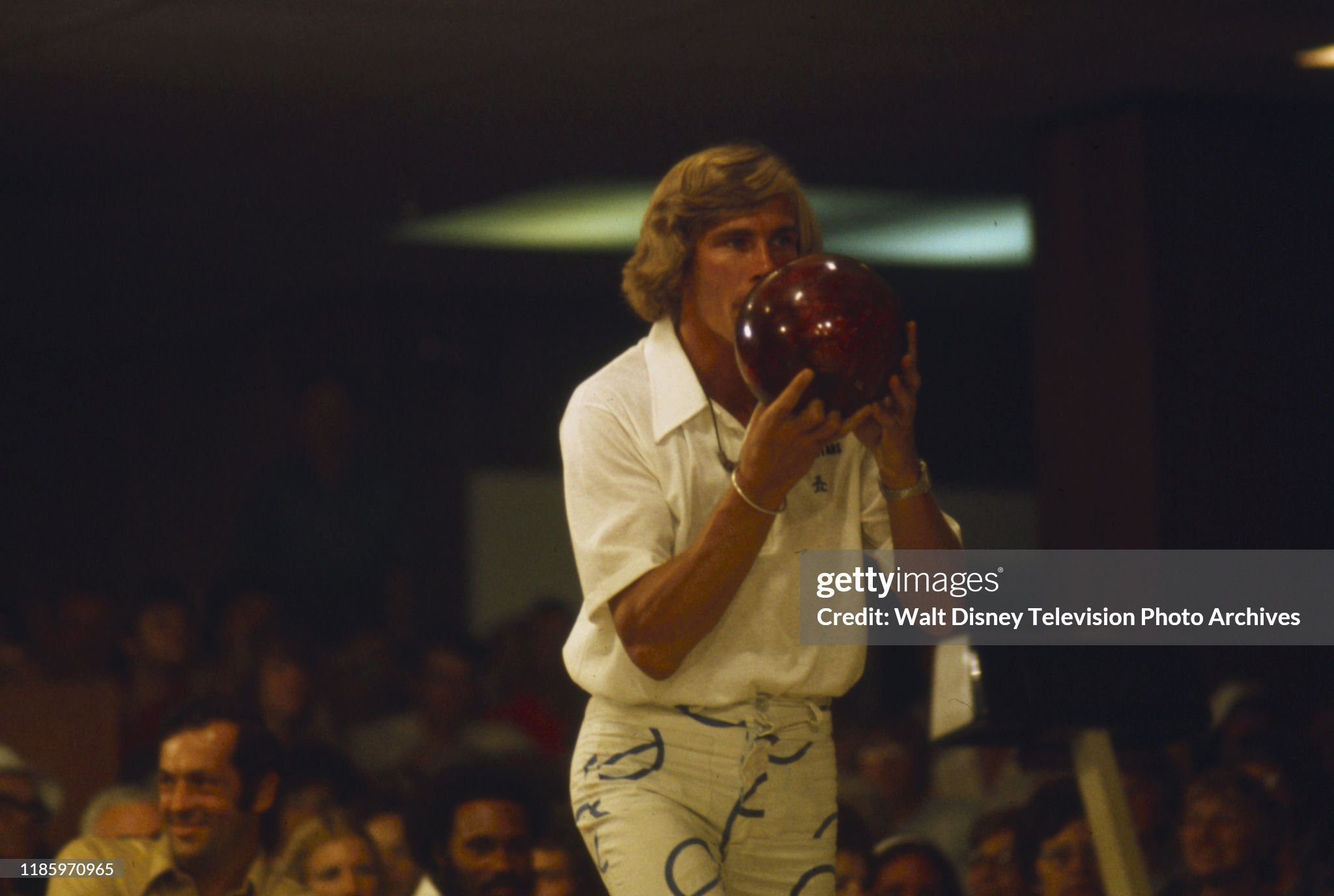
James Hunt competing in bowling competition on the ABC tv series 'Superstars' in 1975. Photo by Disney General Entertainment Content via Getty Images.
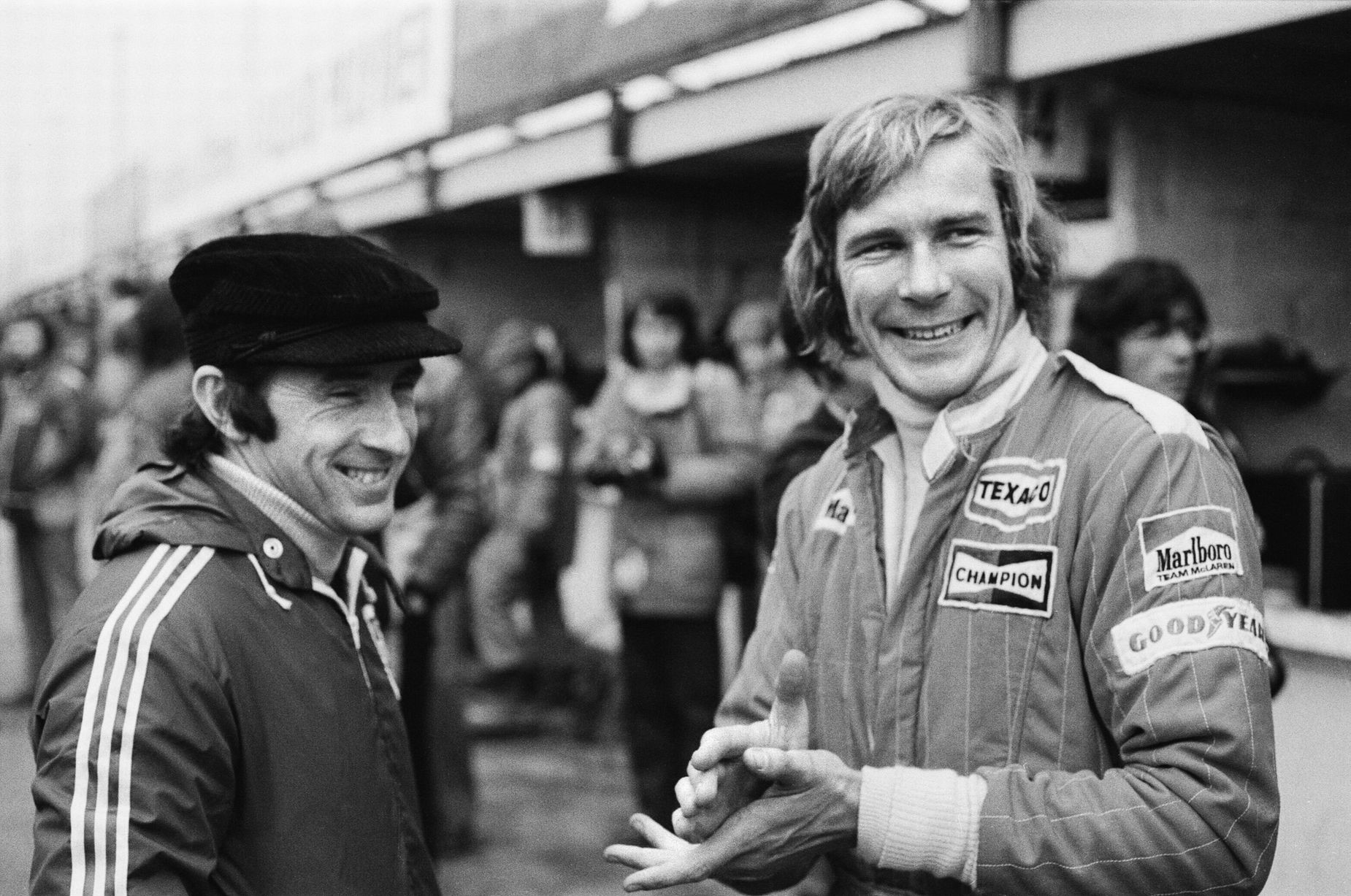
James Hunt and Jackie Stewart together at Brands Hatch on 14th March 1976. James is driving today in practice for the big race tomorrow Sunday.
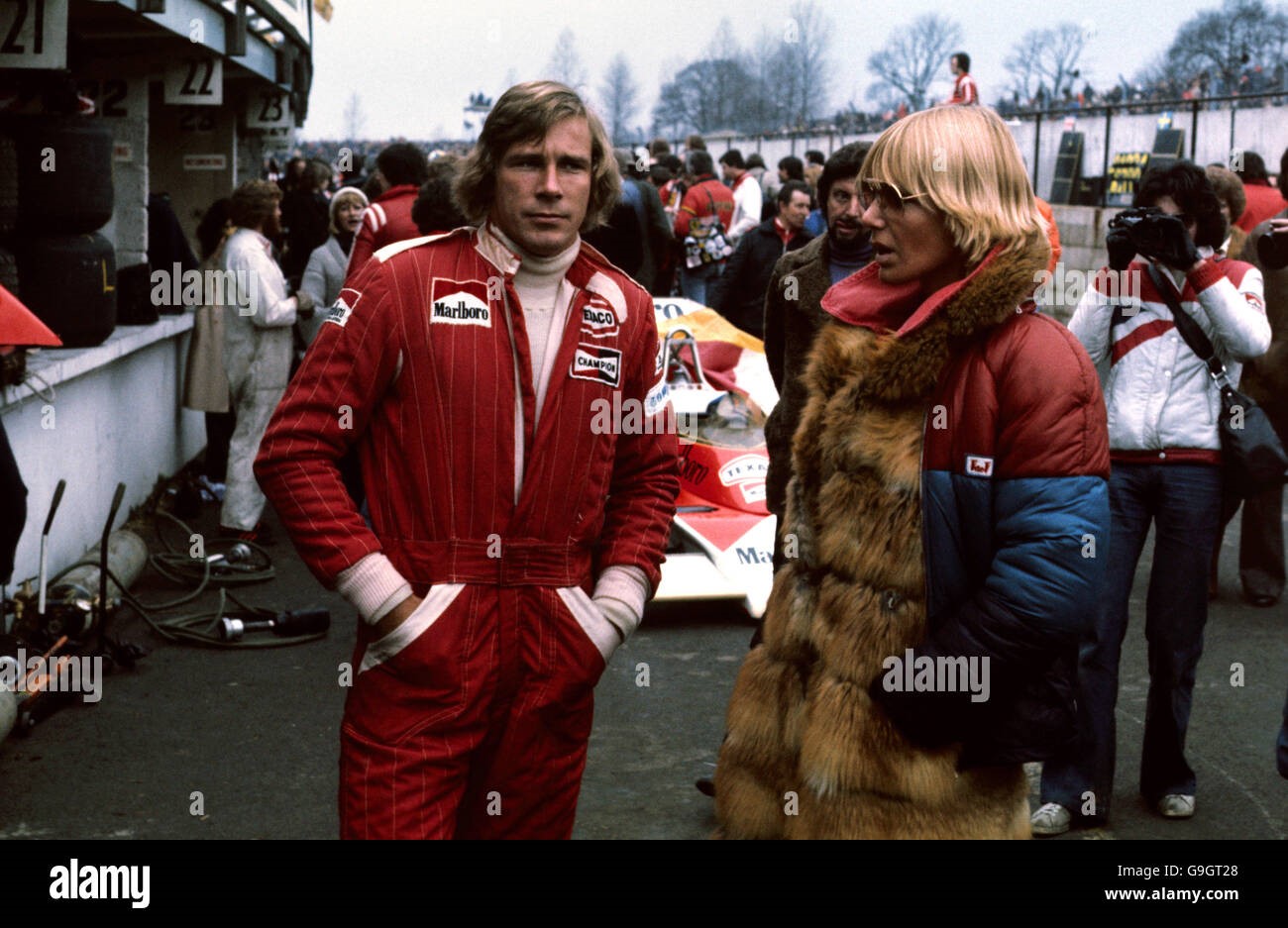
James Hunt talks to Swedish model Venessa Mecklunck in the pits at Brands Hatch on 14 March 1976.
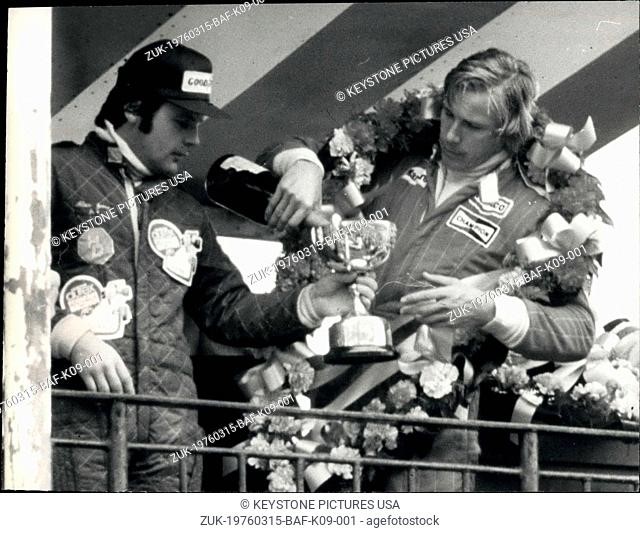
James Hunt, McLaren, scored a popular win in the Race of Champions at Brands Hatch on 15 March 1976. Photo by Keystone USA via Zumapress.com,.
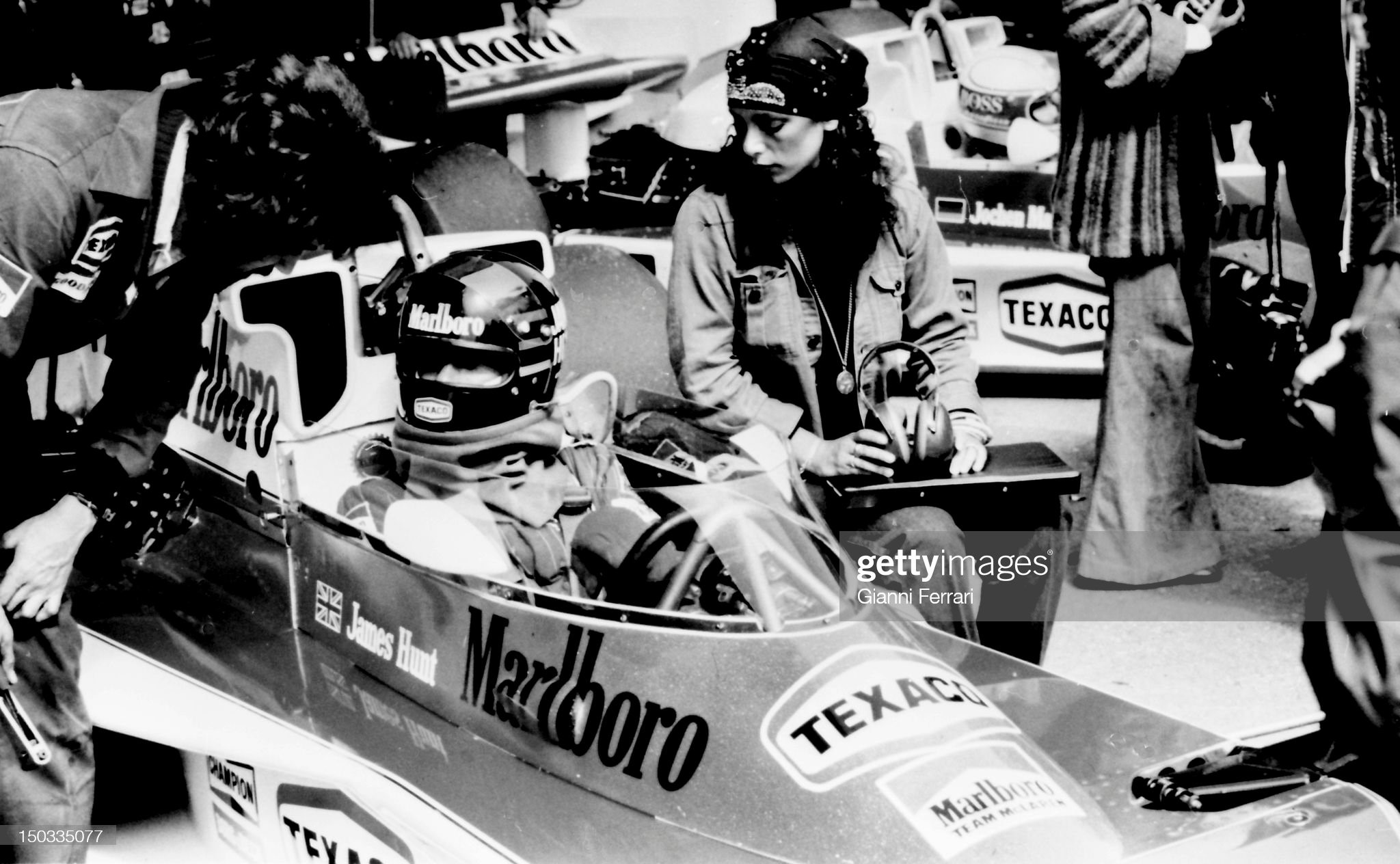
James Hunt on the circuit of Jarama, Madrid, Spain, probably on 02 May 1976. Photo by Gianni Ferrari / Cover / Getty Images.
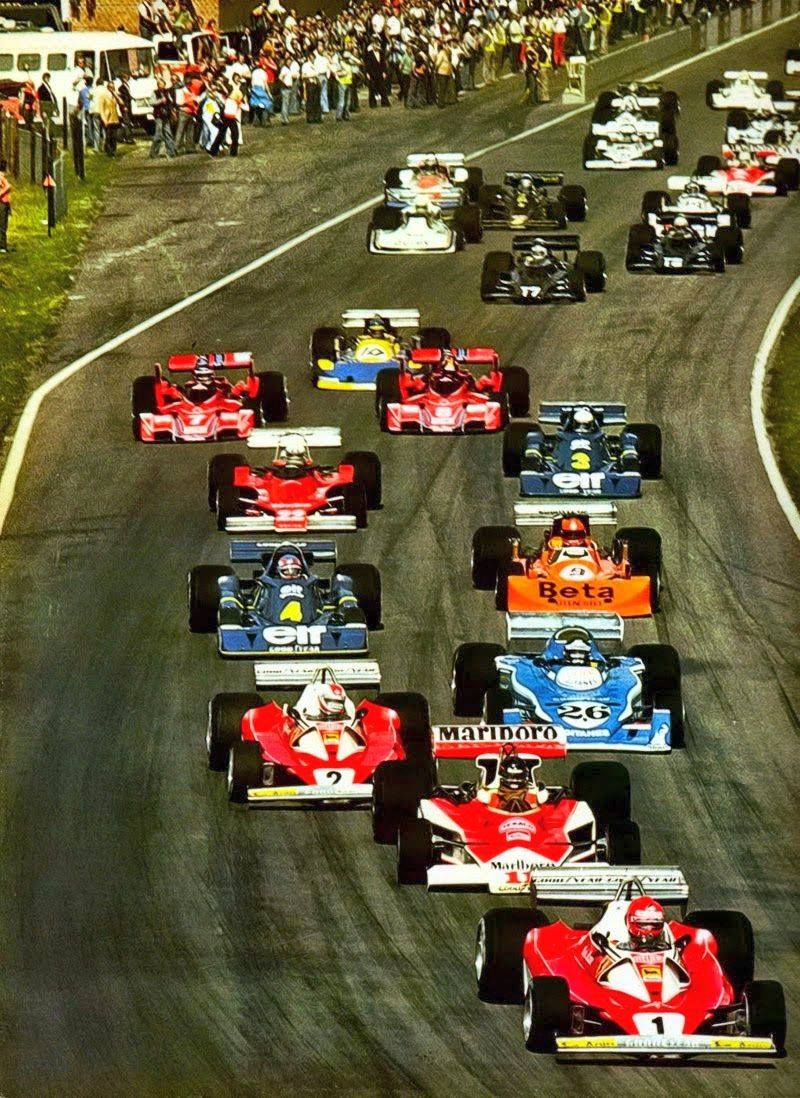
The start of the Belgian Grand Prix at Zolder on 16 May 1976. Photo by Racing Art.
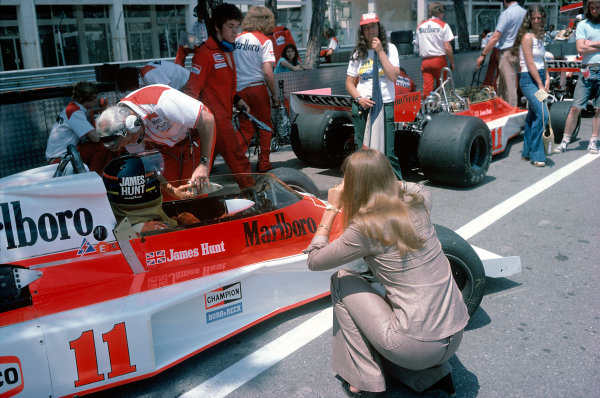
James Hunt, Teddy Mayer and a female photographer in the pits at the Monaco Grand Prix on 30 May 1976. Photo by Lat Photographic.
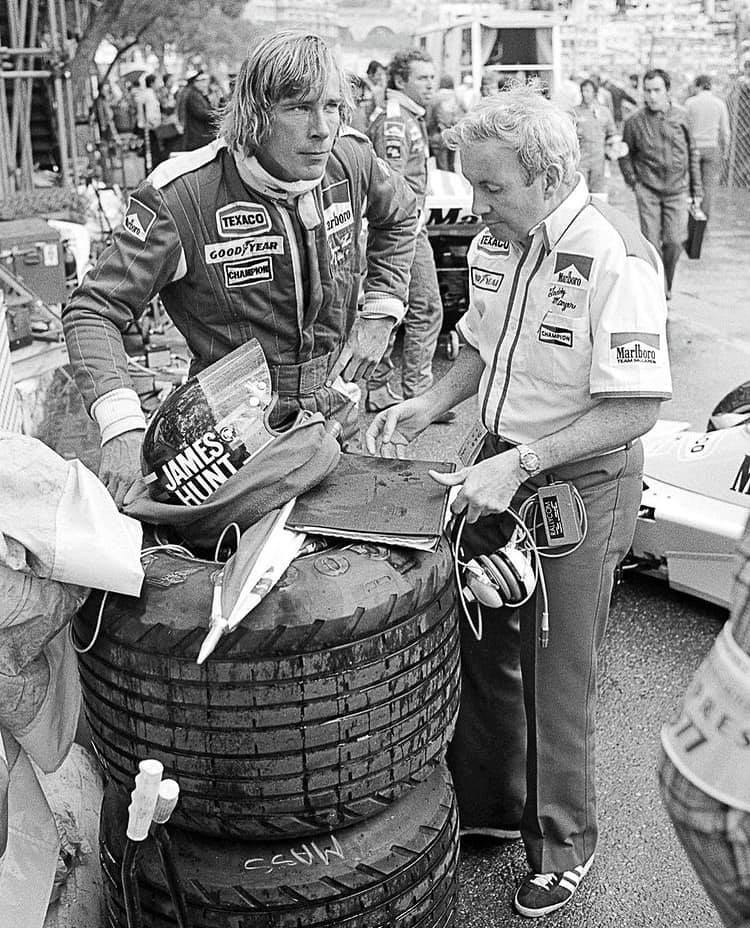
James Hunt and Teddy Mayer in the pits at the Monaco Grand Prix on 30 May 1976.
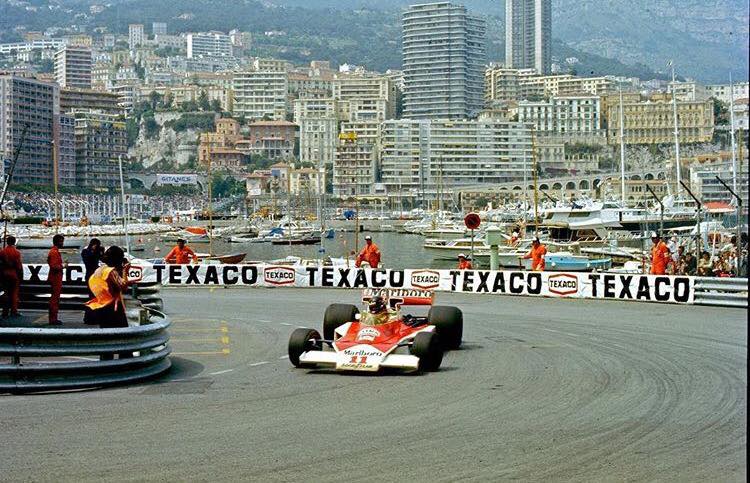
James Hunt, McLaren, at the Monaco Grand Prix on 30 May 1976.
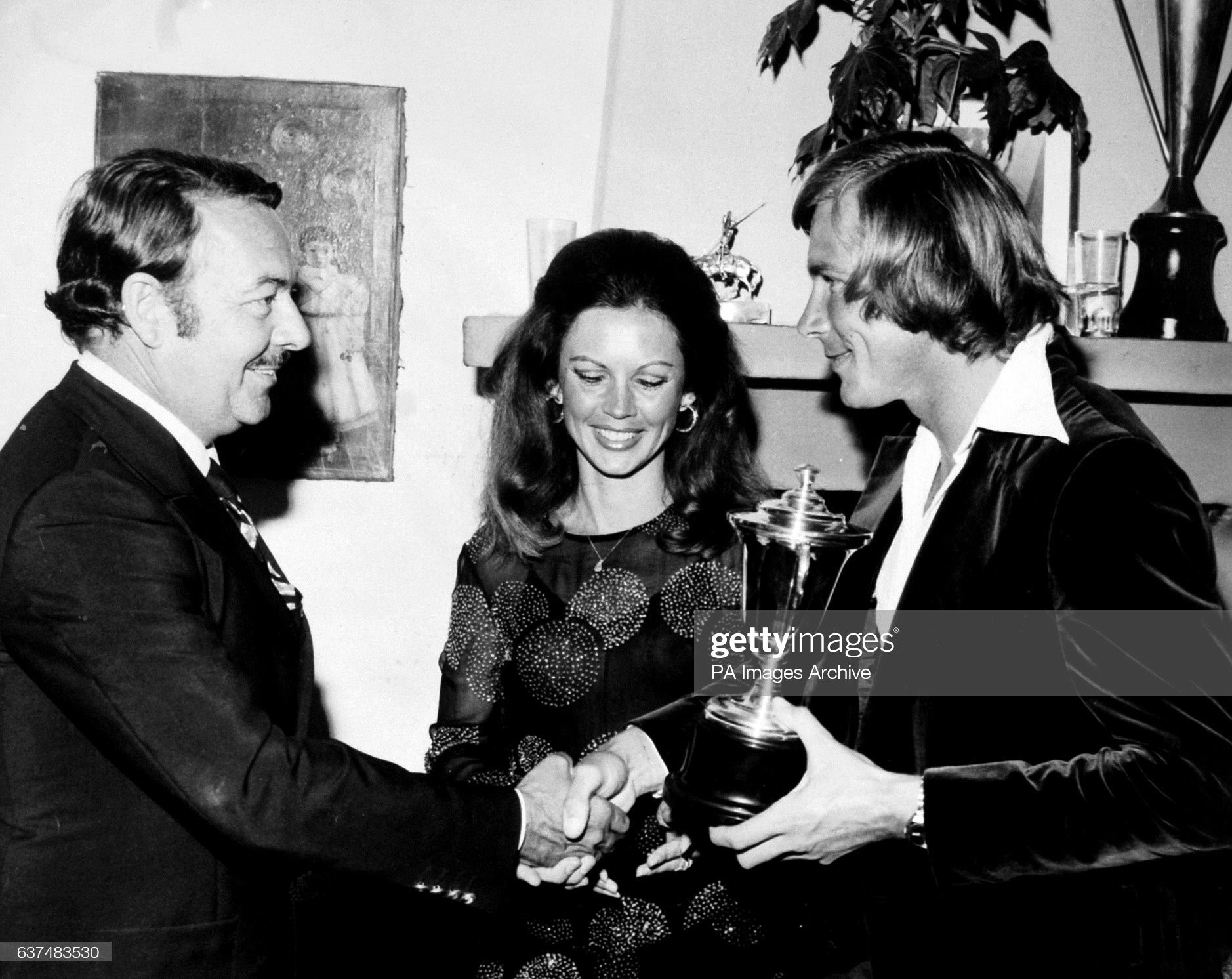
James Hunt at cocktail party at the Marbella Club being presented with a cup by Alfonso and Jackie de Hohenlohe on July 01, 1976. Photo by S&G/PA. Images via Getty Images. Whether it was Diana Dors or Sean Connery, Ava Gardner or Audrey Hepburn, James Hunt or Rod Stewart, none would have come to Marbella without the influence of Prince Alfonso de Hohenlohe. For the German aristocrat was the svengali with the necessary capital to turn the dusty village into a highfalutin milionaires playground to rival the likes of Cannes and Deauville, in France. It was in 1947 that the charismatic playboy had been sent to the coast by his father Prince Maximilian to purchase some land. The well connected prince soon embarked on a European-wide campaign to convince all his high-flying friends that Marbella was the only place to be. A string of celebrities followed suit, with actresses including Elizabeth Taylor and Sophia Loren, photographer Patrick Lichfield, footballer George Best, model Brigitte Bardot and Rolling Stone Bryan Jones joining the in-crowd. “I have lived in castles, in Venetian palaces and the world’s finest hotels. I have watched the sun rise over the beaches of five continents and I have looked into the eyes of the most beautiful women of the universe,” Prince Alfonso famously remarked.
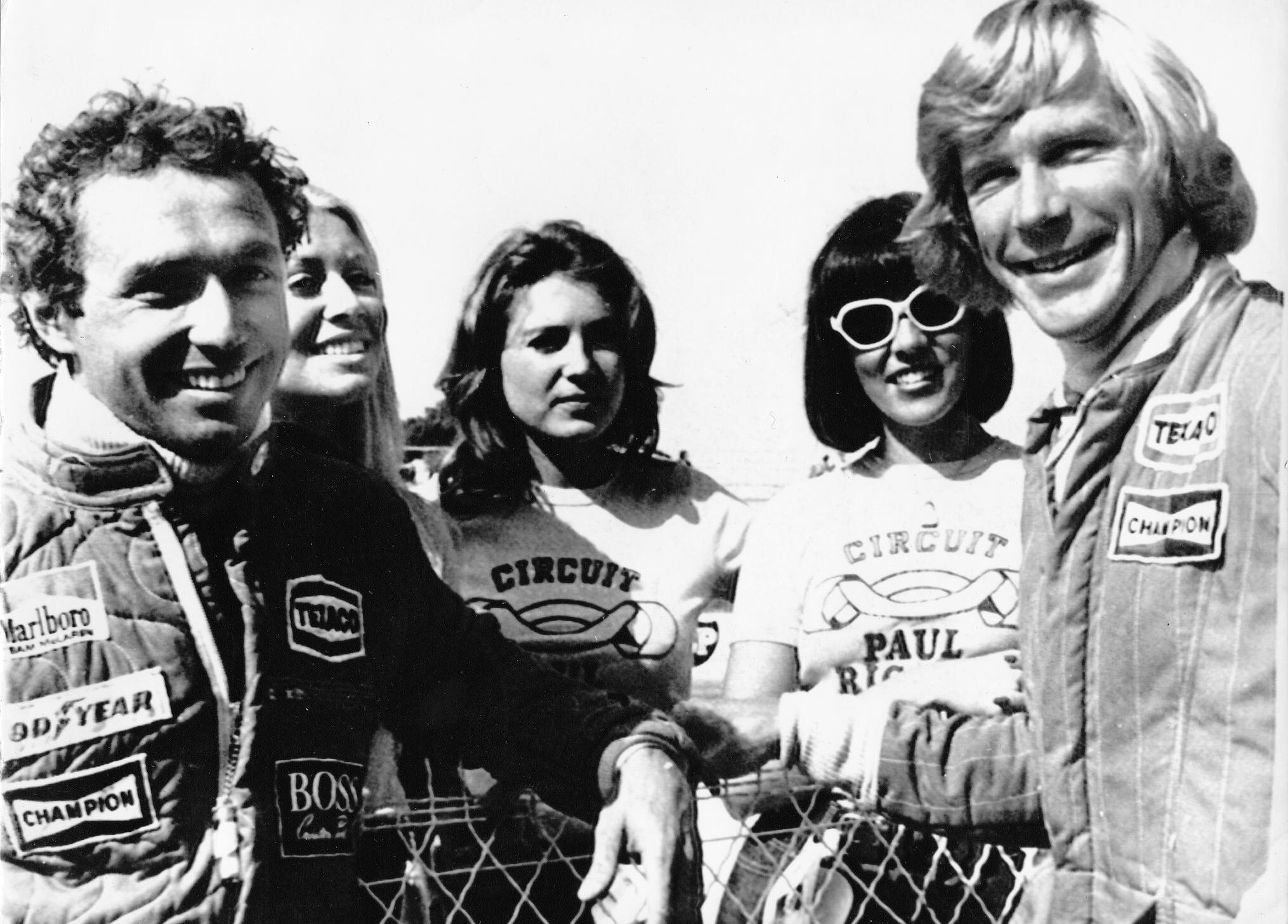
Jochen Mass, James Hunt and three girls at the French Grand Prix in Paul Ricard on 04 July 1976.
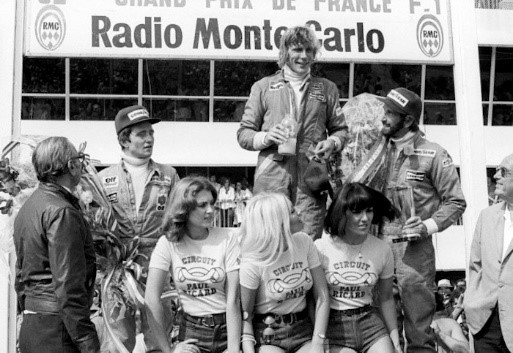
James Hunt, Patrick Depailler and John Watson on the podium at the Grand Prix of France, Circuit Paul Ricard, on 04 July 1976. Photo by Bernard Cahier / Getty Images.
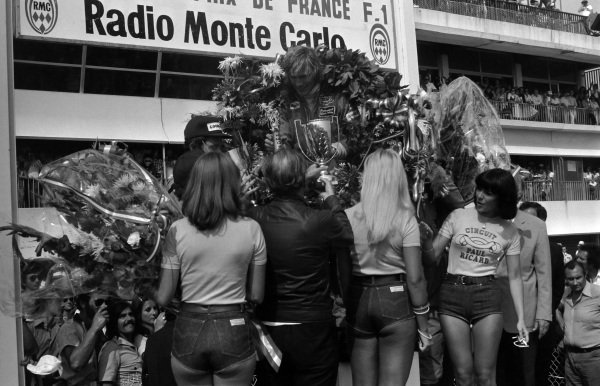
James Hunt, Patrick Depailler and John Watson on the podium at the Grand Prix of France, Circuit Paul Ricard, on 04 July 1976.
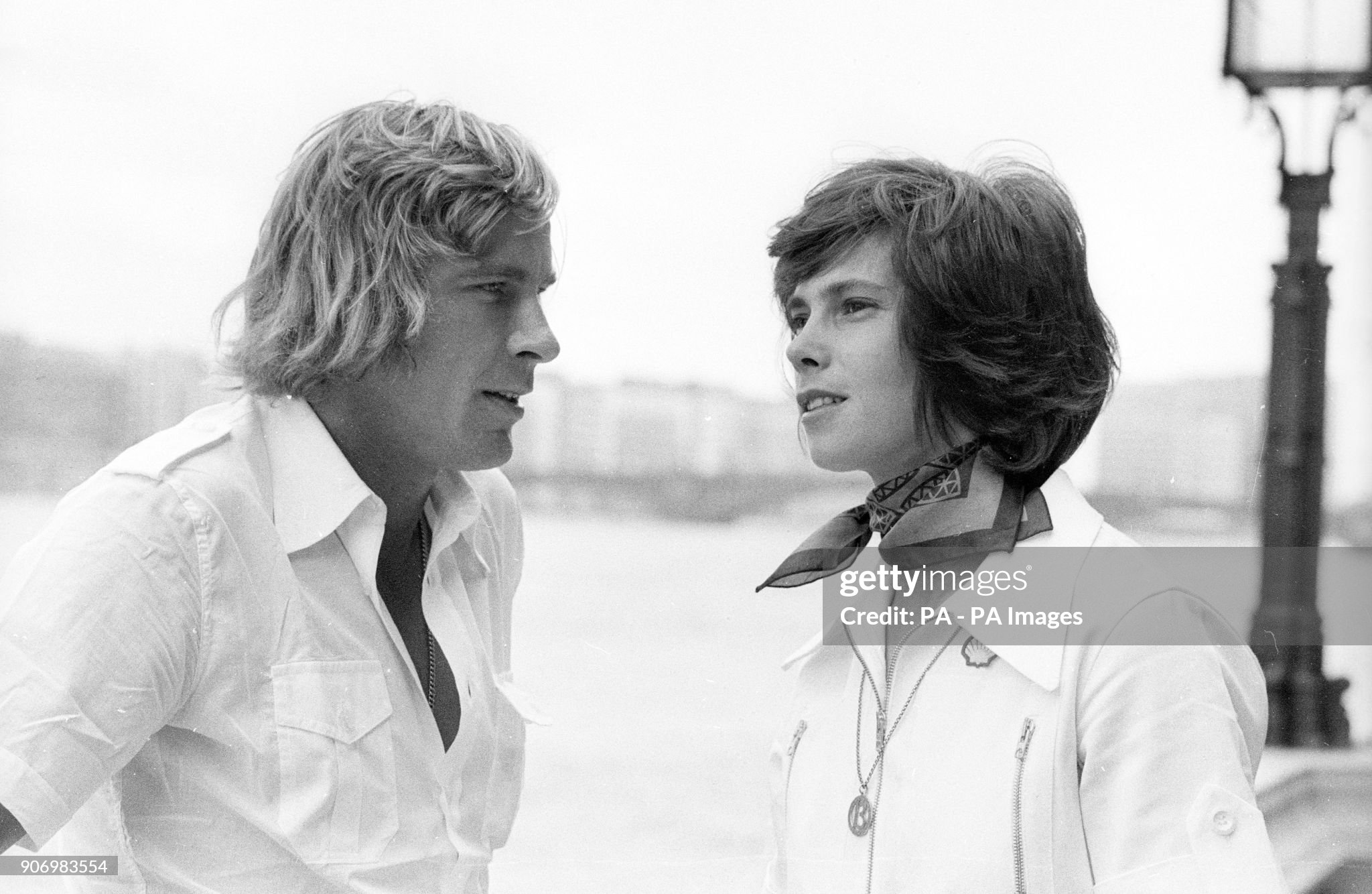
James Hunt and Davina Galica before the ‘House of Commons Motoring Club’ reception with Margaret Thatcher on 13 July 1976. Photo by Papa Images via Getty Images.
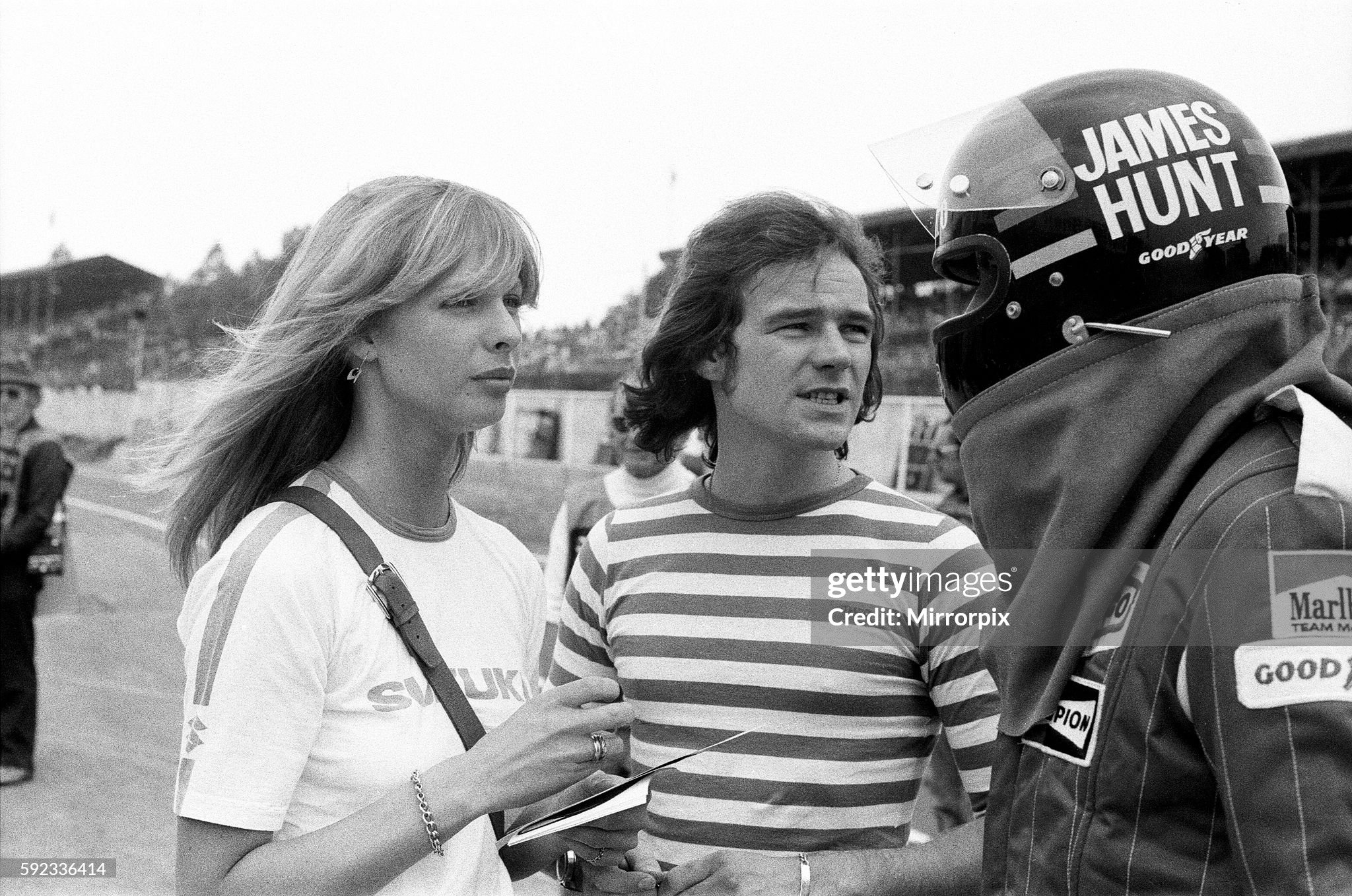
Barry Sheene and his girlfriend Stephanie McLean talking to James Hunt at a practice day for the British Grand Prix held at Brands Hatch, Kent, on 17th July 1976. Photo by Sunday Mirror / Mirrorpix via Getty Images.
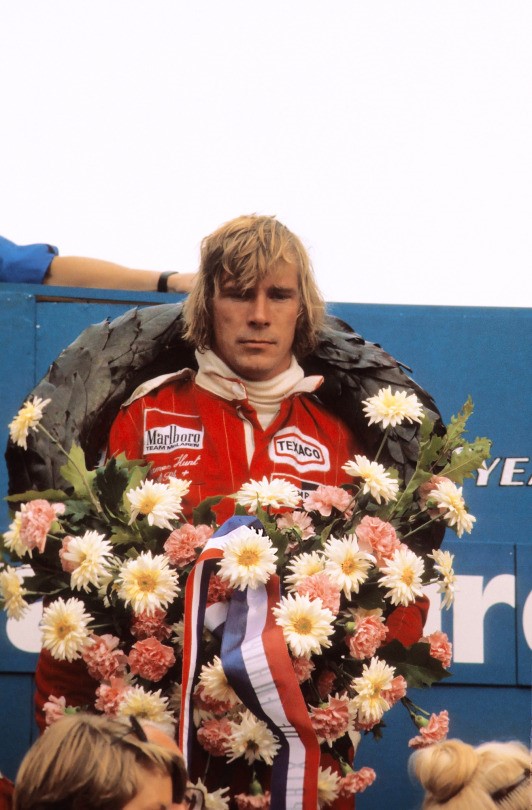
Netherlands, 29 August 1976. A victorious James Hunt with his floral wreath after winning the race on his 29th birthday. Photo by Tony Triolo/Sports Illustrated via Getty Images.
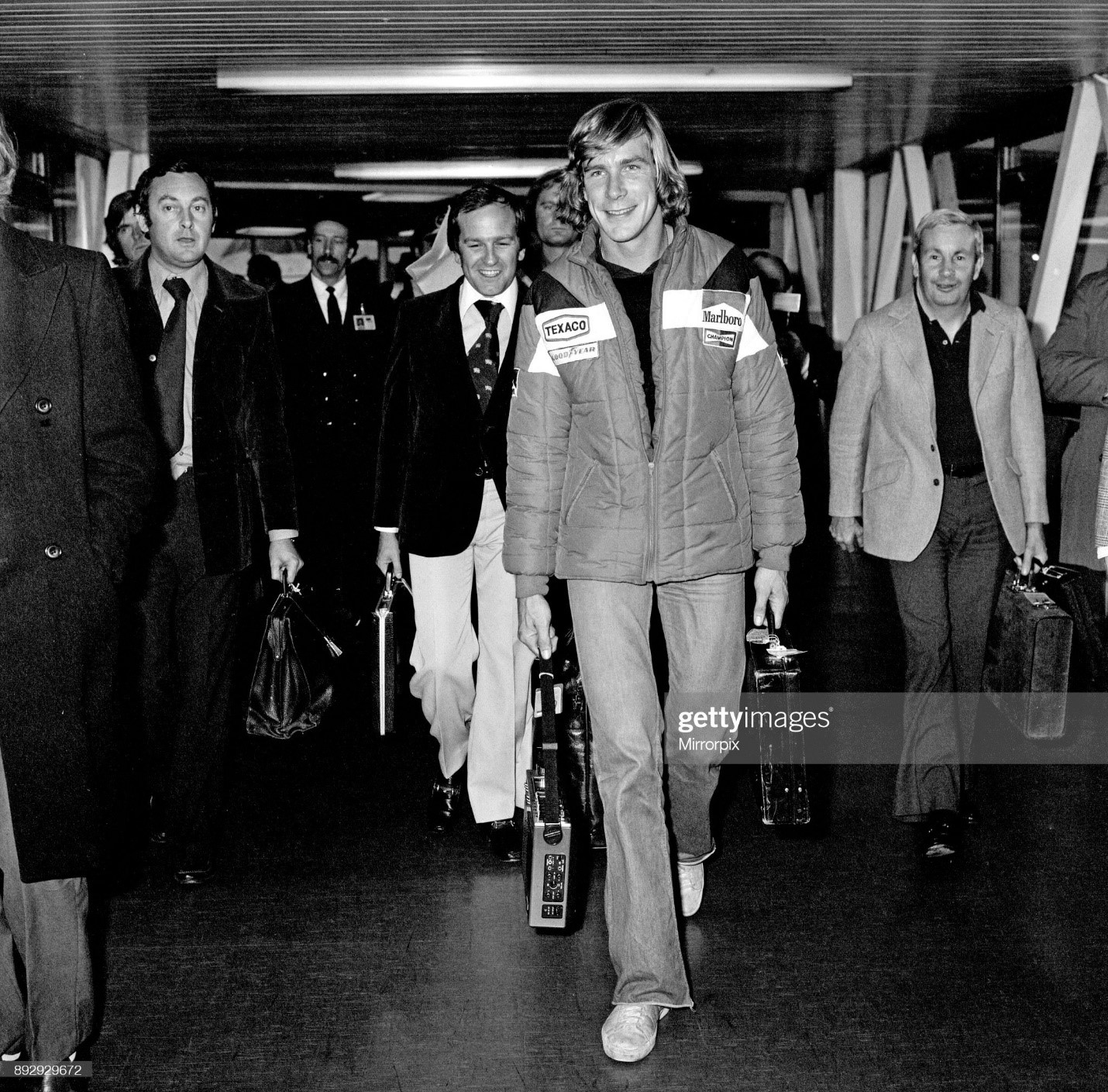
James Hunt, the new World Motor Racing Champion, received a hero's welcome when he flew into Heathrow Airport this morning from Japan. The 29-year-old McLaren Formula One driver was greeted by most of his family and girlfriend Jane Birbeck. Picture, taken 26th October1976, shows James Hunt walking through to the arrival lounge and press conference.
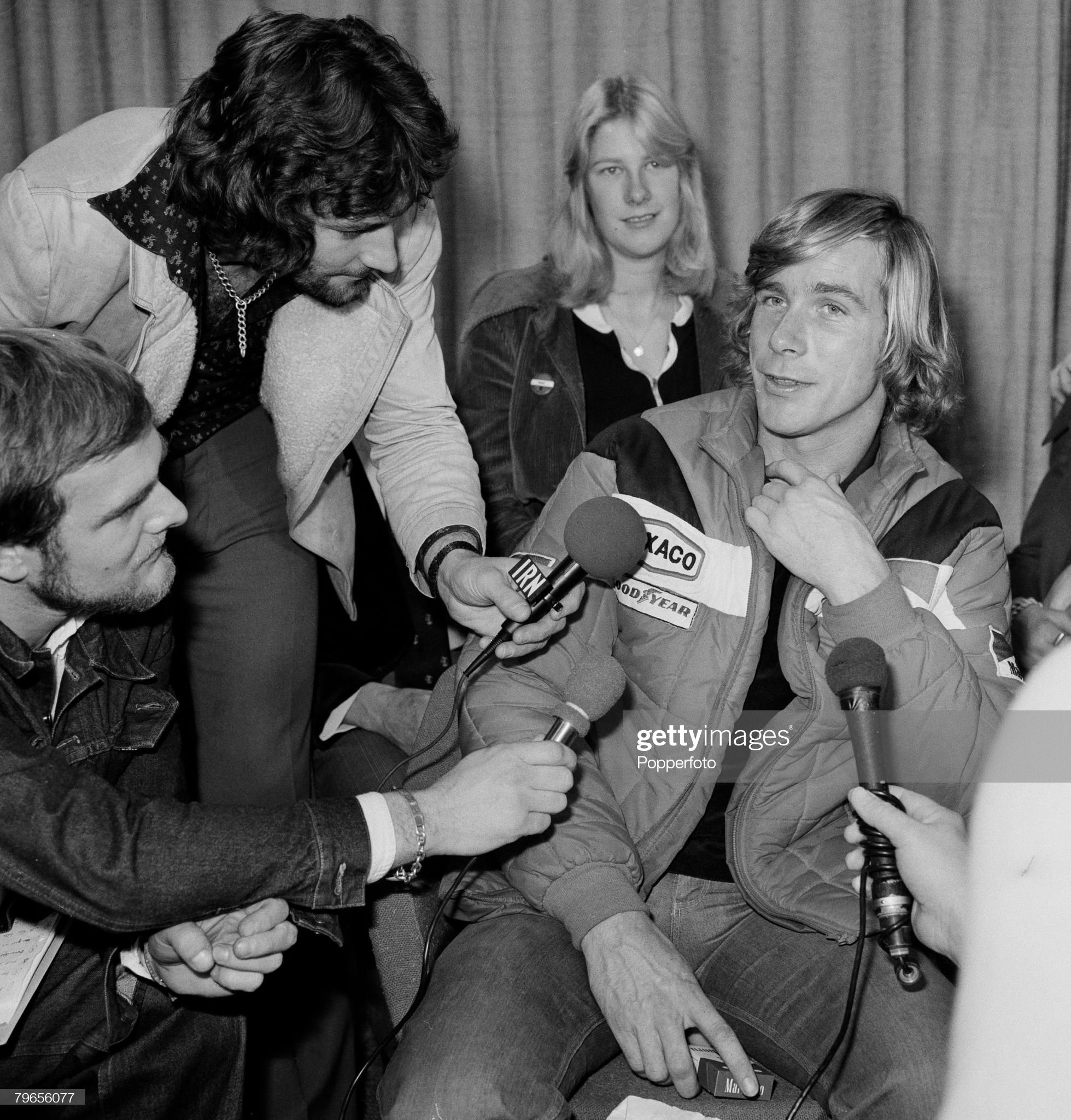
Sport, Motor Racing, London, England, 26th October 1976, Britain's new World Champion James Hunt being interviewed by the press at Heathrow airport after arriving from Tokyo where he won the Formula One World Championship title. Photo by Popperfoto via Getty Images/Getty Images.
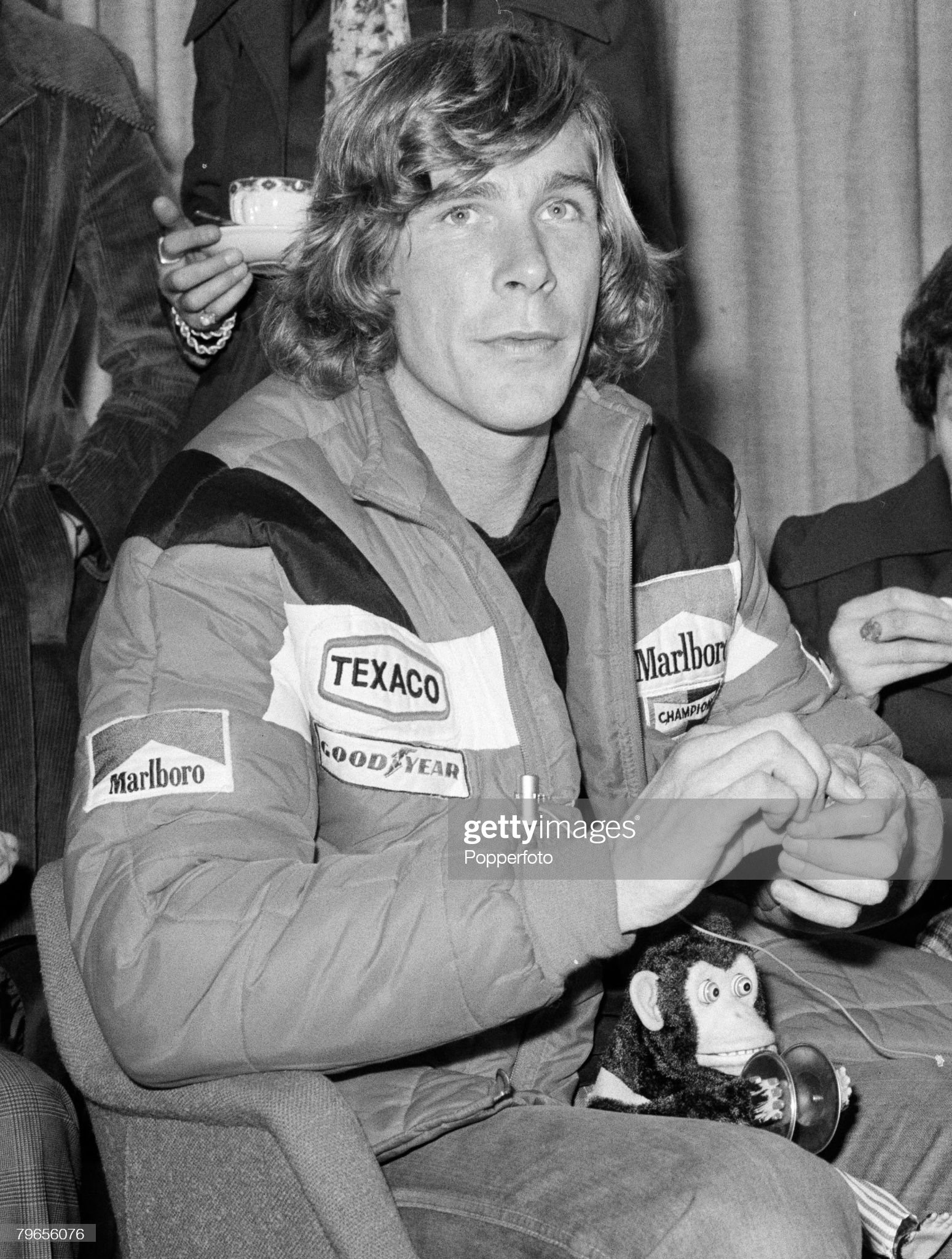
Sport, Motor Racing, London, England, 26th October 1976, Britain's new World Champion James Hunt at Heathrow airport after arriving from Tokyo where he won the Formula One World Championship title. Photo by Popperfoto via Getty Images/Getty Images.
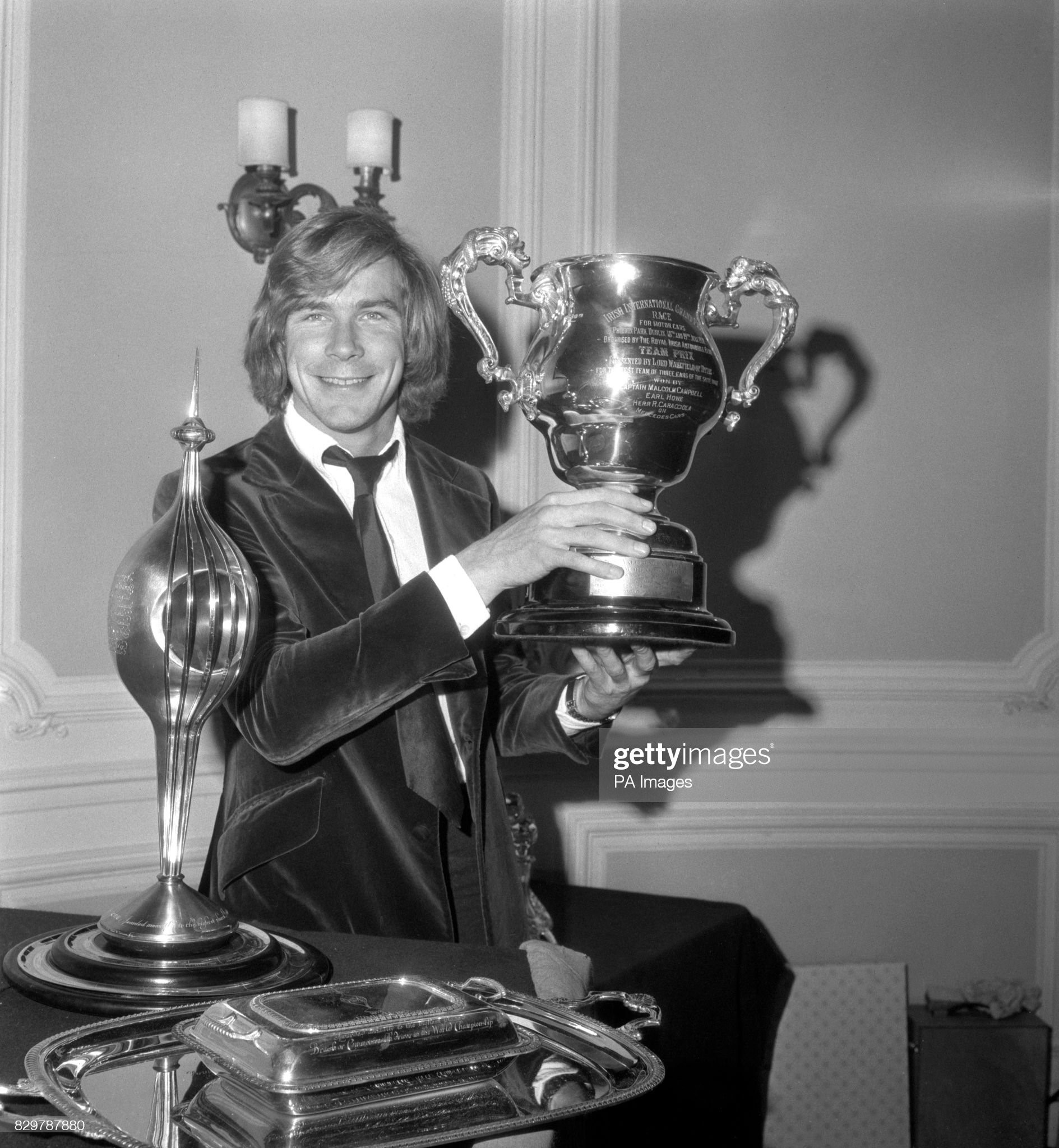
World Champion James Hunt on 03 December 1976 with trophies presented to him at the RAC headquarters in Pall Mall, where he also received a specially struck Rac gold medal as the first English driver to win the World title since Graham Hill in 1968. Photo by PA Images via Getty Images.
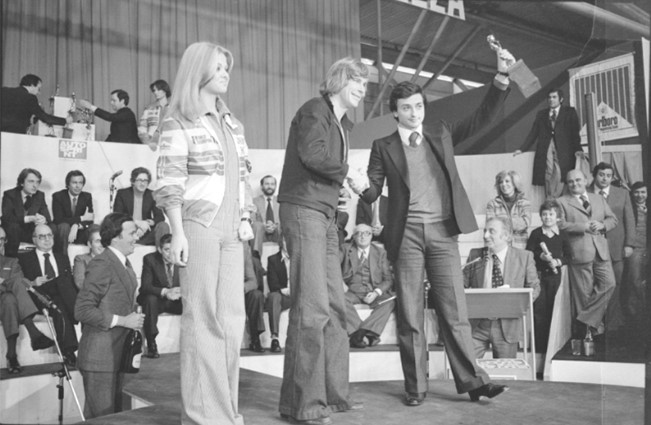
Riccardo Patrese receiving the Caschi d'Oro award from 1976 World Champion James Hunt in December 1976. Photo by Giorgio Nada.
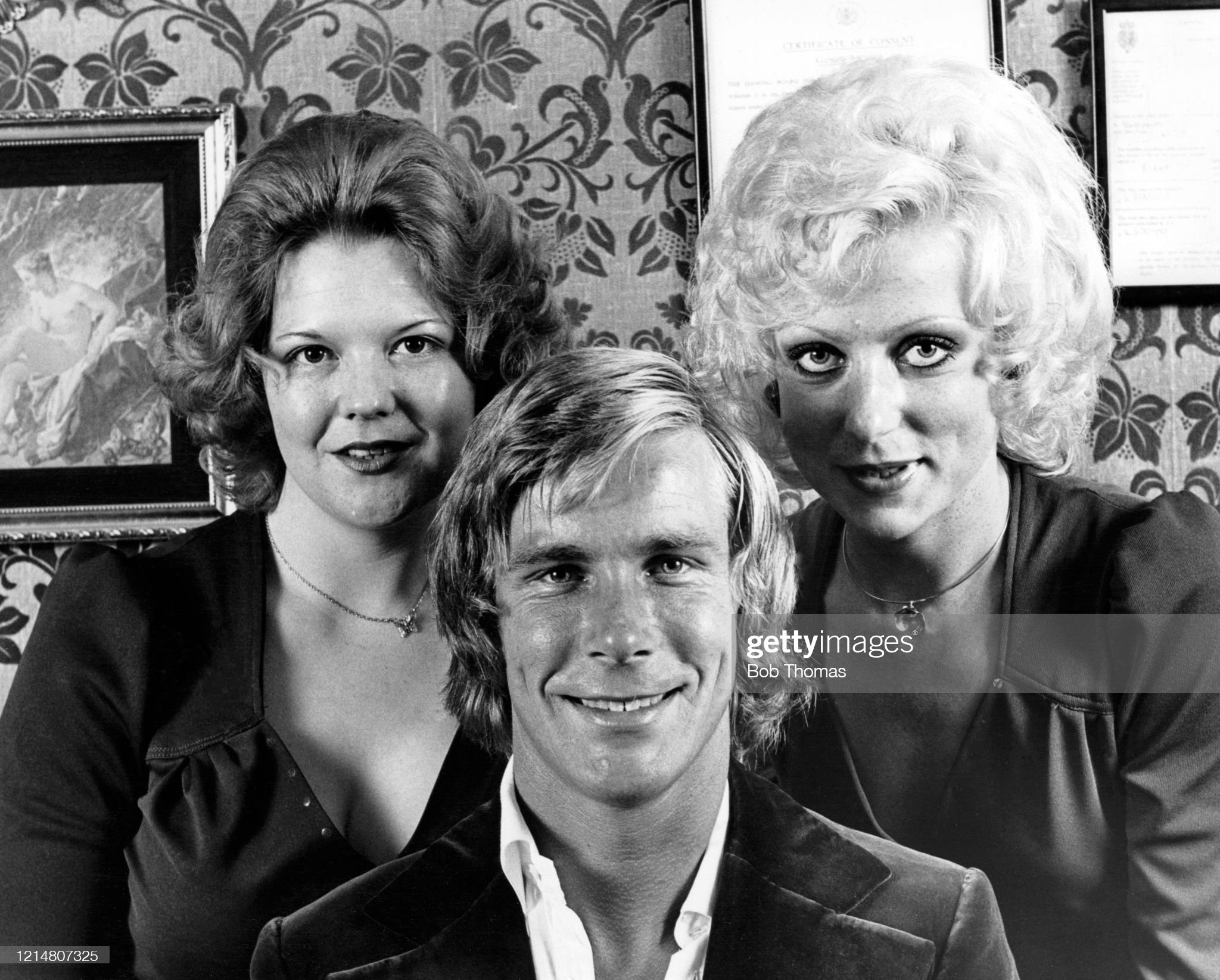
James Hunt at the opening of the Rubicon Casino and Sporting Club in Northampton in 1975 or 1976. Photo by Bob Thomas via Getty Images.
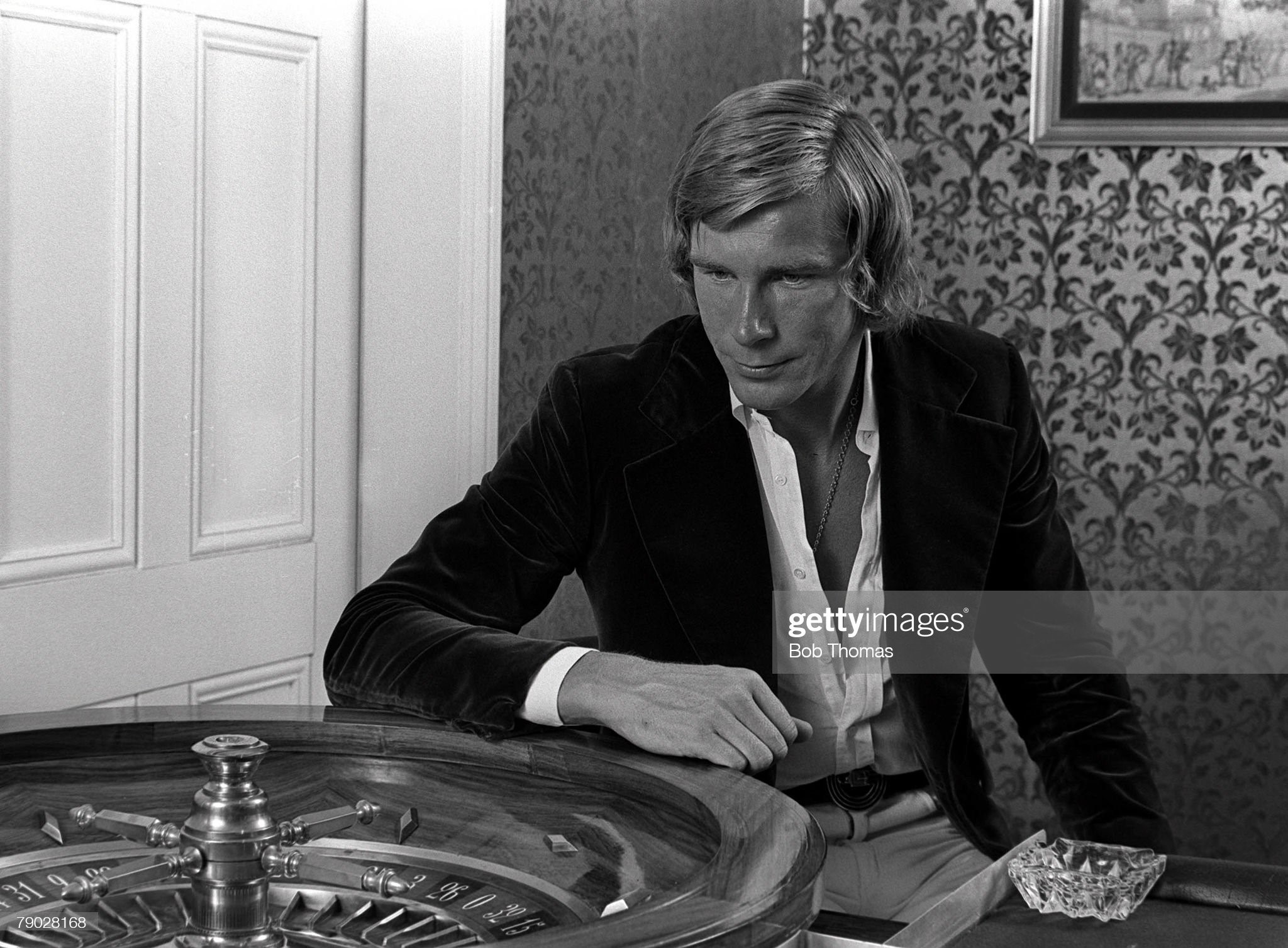
James Hunt pictured beside a roulette wheel at the Rubicon Sporting Club in Northampton, England, in 1975 or 1976. Photo by Bob Thomas Sports Photography via Getty Images.
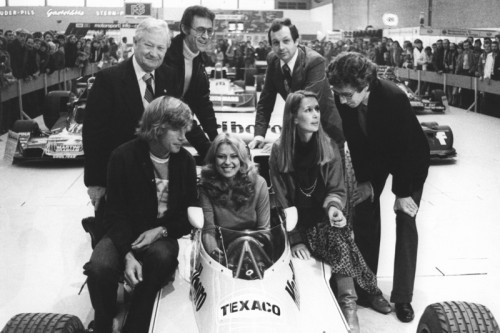
Interesting scene from 1976. James Hunt and Nina Rindt pose for pictures with the McLaren, accompanied by Rolf Stommelen (far left).
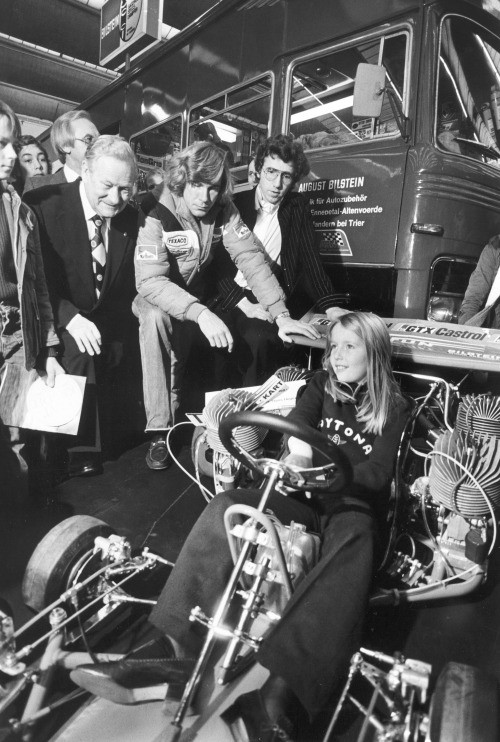
James Hunt in his familiar casual self. Rolf Stommelen is wearing a tie. The girl in the kart, wearing her mum’s shoes, is Natascha Rindt, daughter of Jochen and Nina.
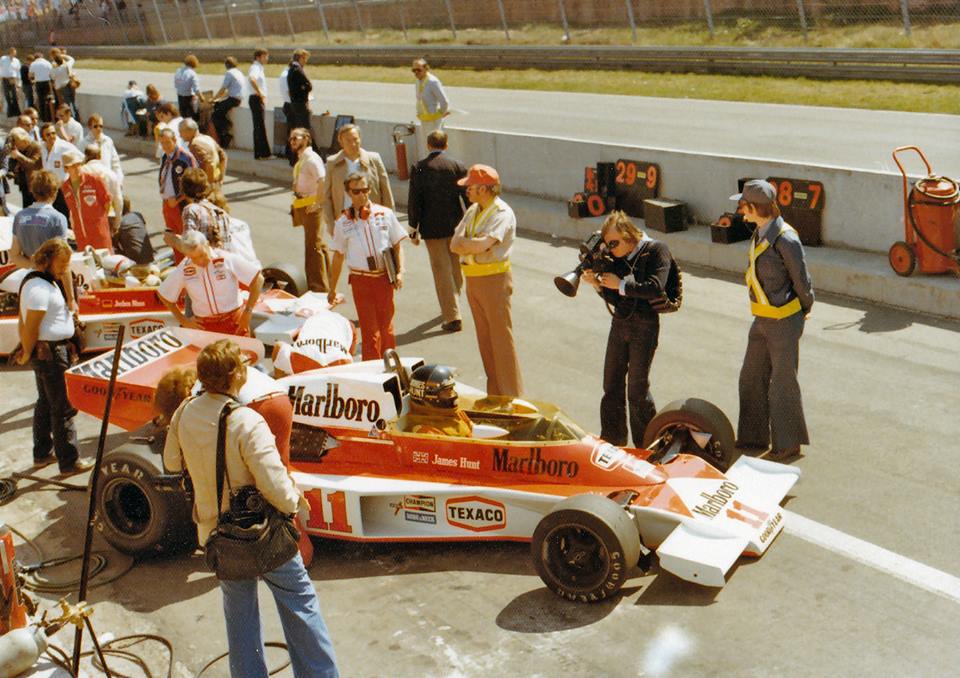
James Hunt, McLaren, in 1976.
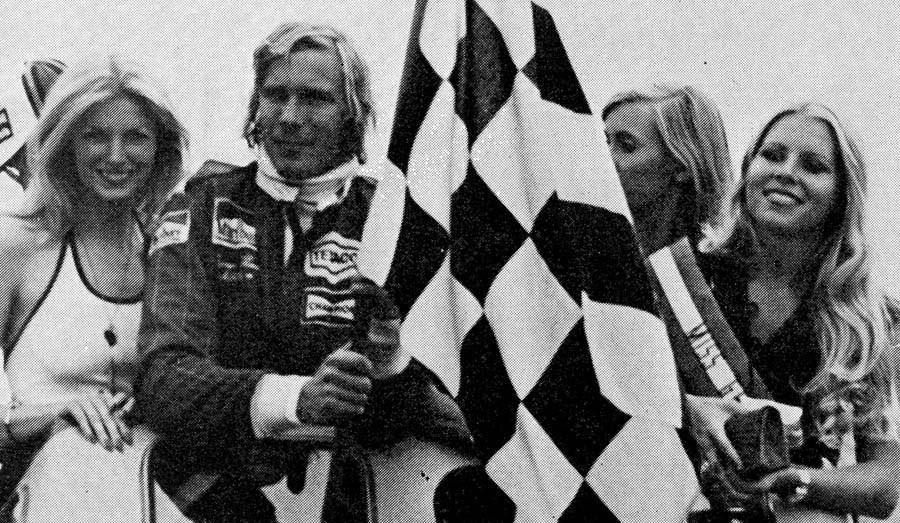
James Hunt and Grid Girls in 1976.
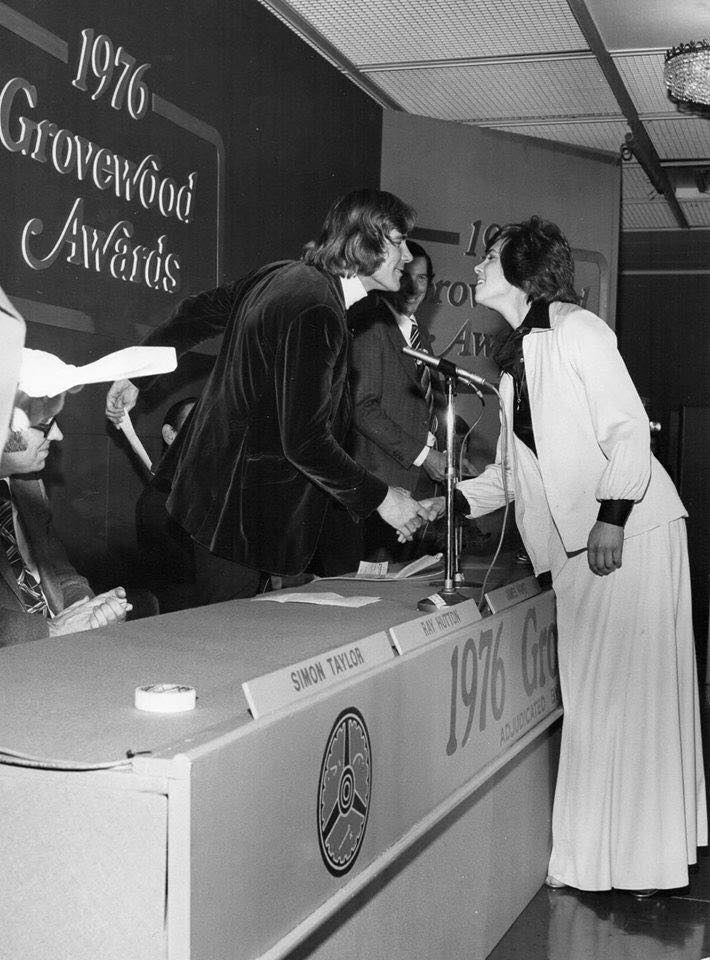
James and Davina Galica at Grovewood Awards in 1976.
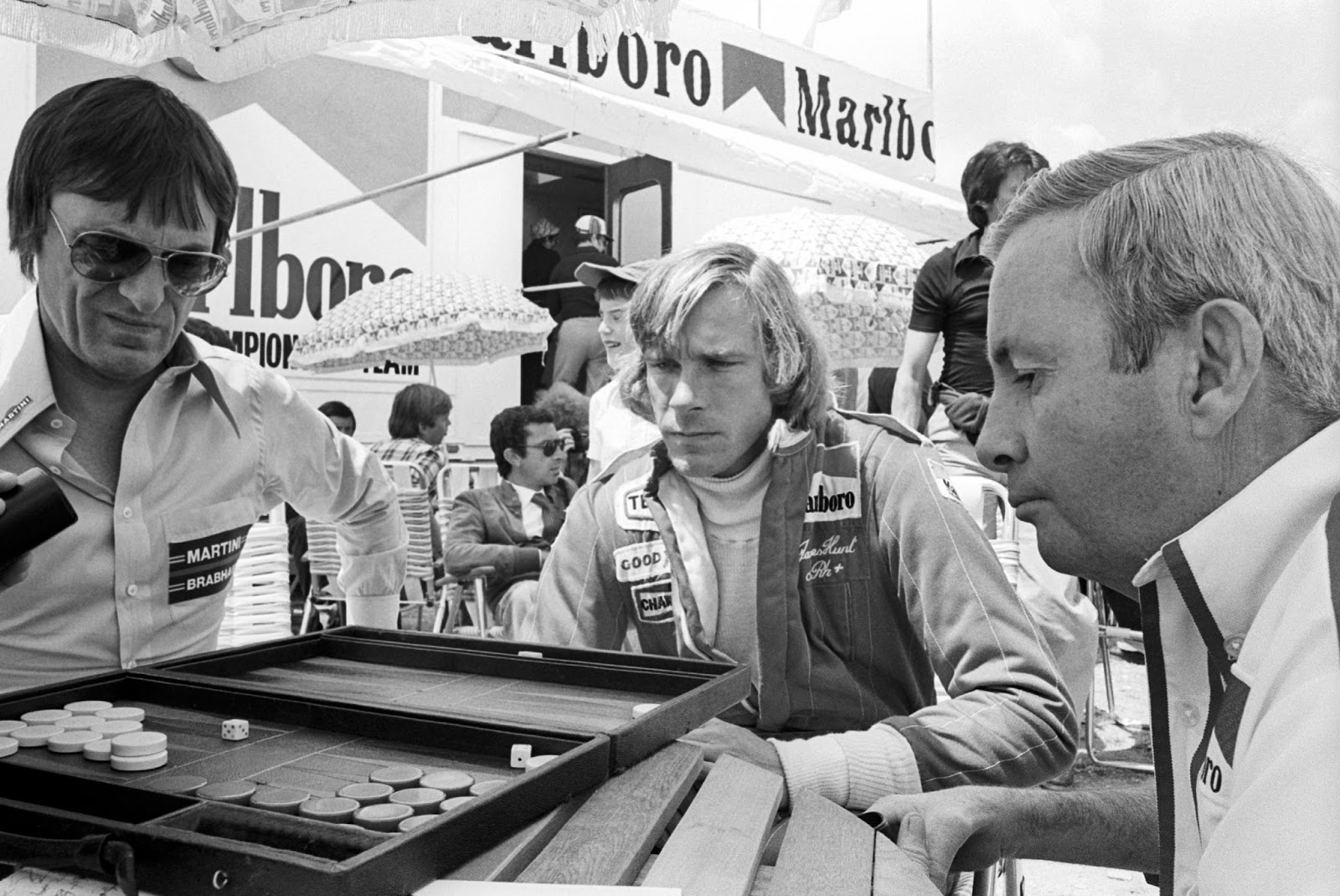
Bernie Ecclestone, Brabham and Teddy Mayer, McLaren, playing backgammon in 1976, James Hunt watching the game.
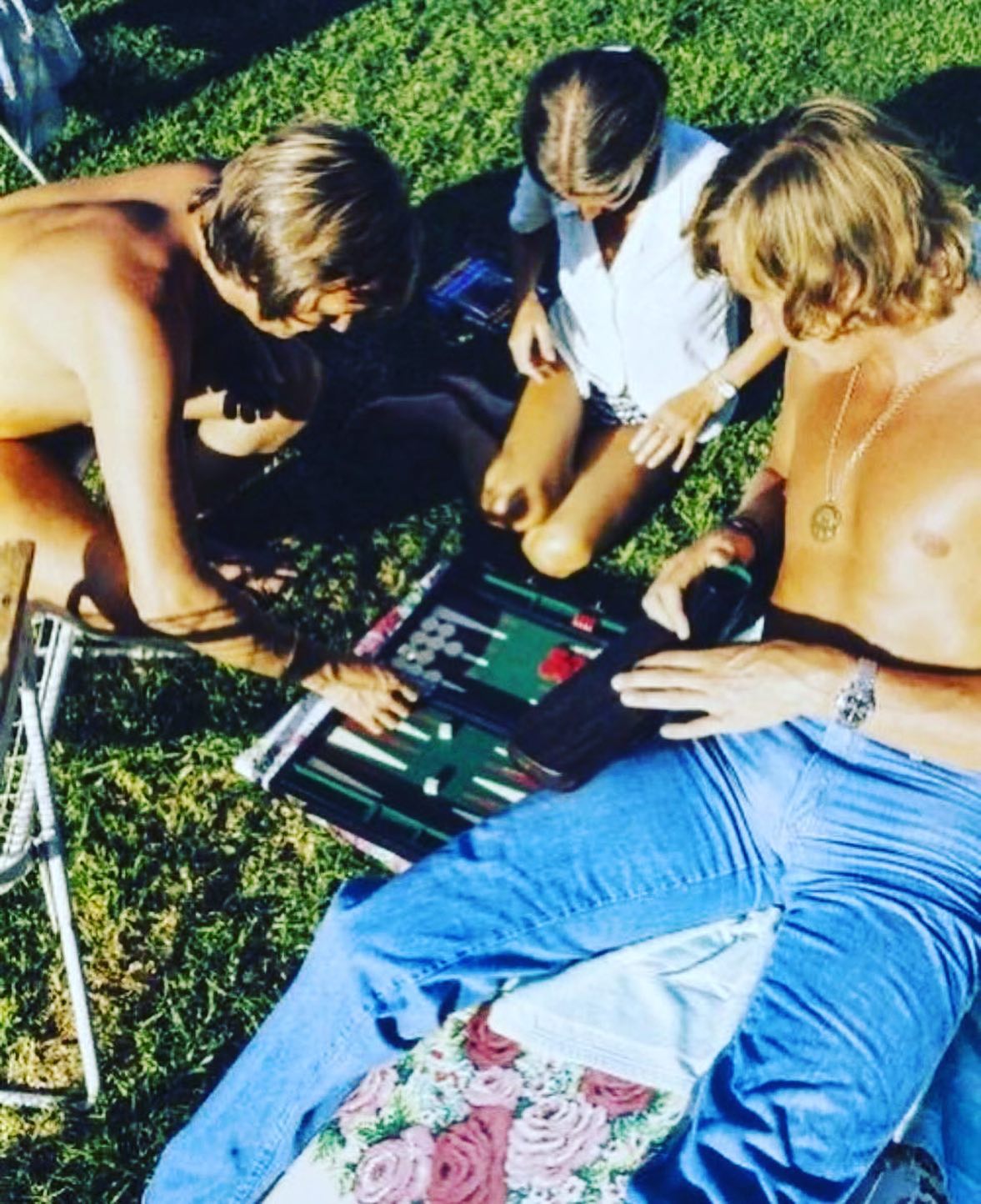
Did you know James Hunt claimed he made more money during the 1976 season playing backgammon at the tracks with the other drivers and teams than he did from his McLaren salary. Probably true considering Teddy Mayer said: “James was the cheapest World Champion we had ever employed”. I’m sure he wasn’t so cheap in ‘77!
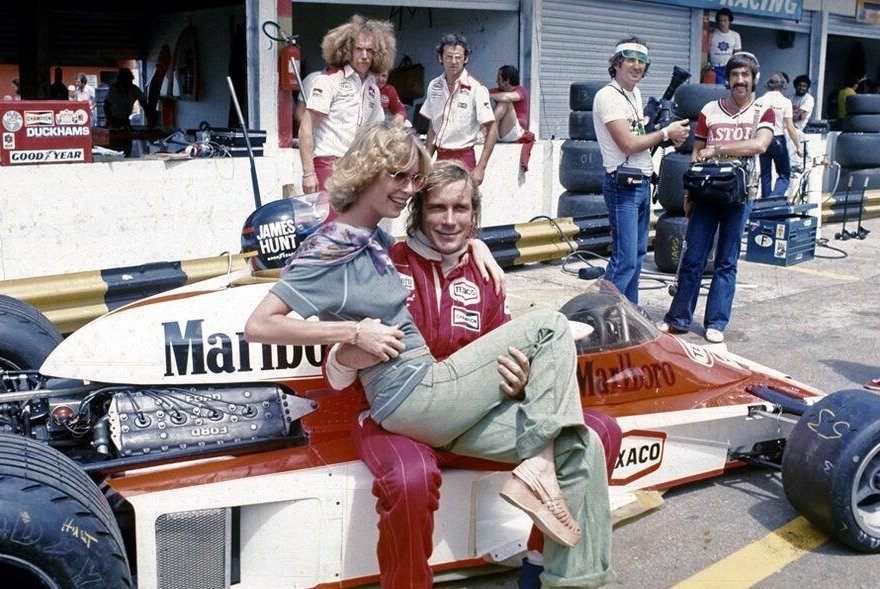
McLaren-Ford driver James Hunt with a local girlfriend before the Argentine Grand Prix in Buenos Aires on 09 January 1977. Photo by Grand Prix Photo.
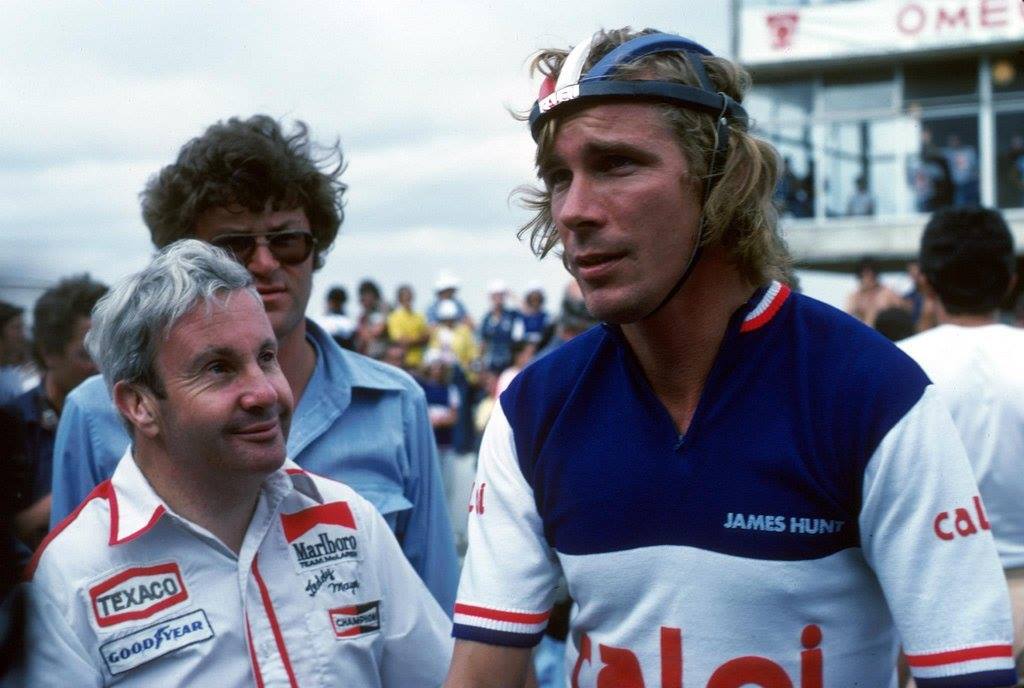
Teddy Mayer and James Hunt, McLaren, at the Brazilian Grand Prix in Interlagos on 23 January 1977. Photo by Hoch Zwei / Corbis via Getty Images.
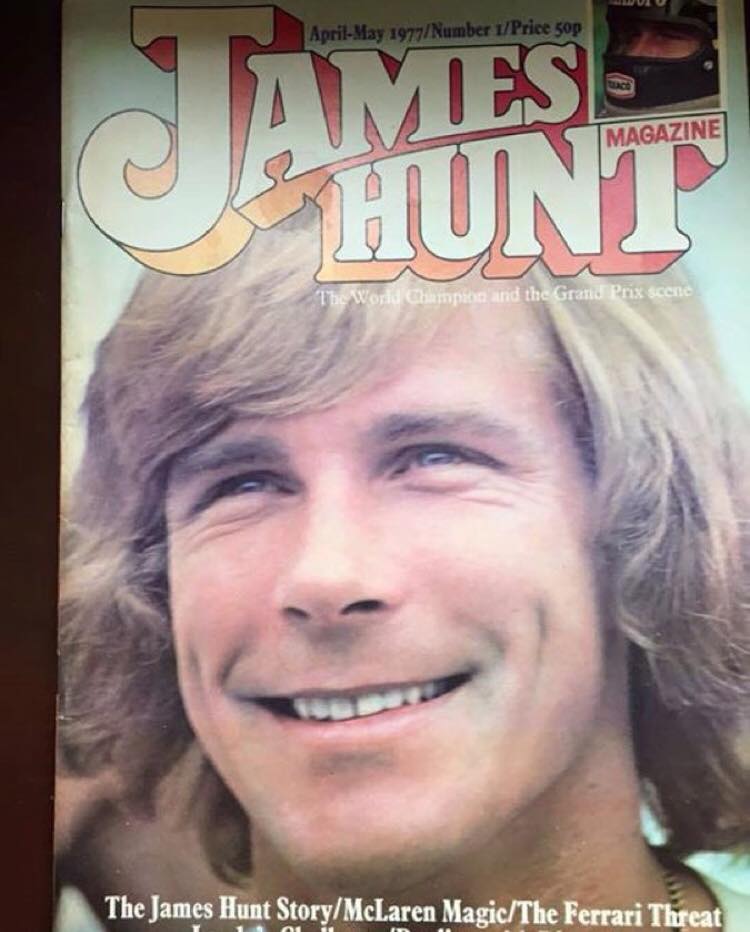
A 1977 magazine with James Hunt.
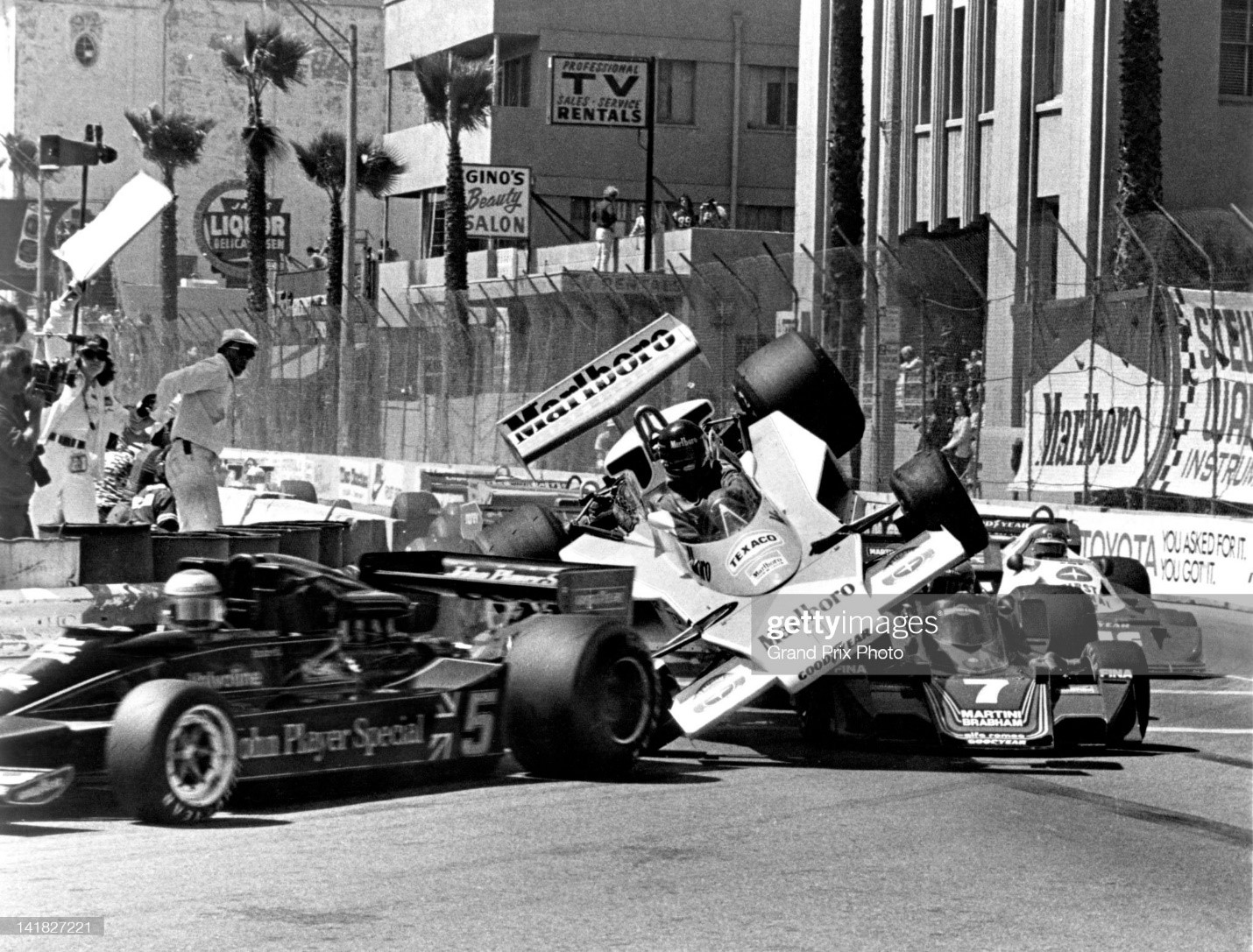
James Hunt, driver of the n.1 Marlboro Team McLaren M23 Ford V8, is launched into the air after hitting the rear wheel on the Martini Racing Brabham BT45 Alfa Romeo flat-12 of John Watson during the United States Grand Prix West on 03rd April 1977 at the Long Beach street circuit in Long Beach, California, United States. Photo by Grand Prix Photo/Getty Images.
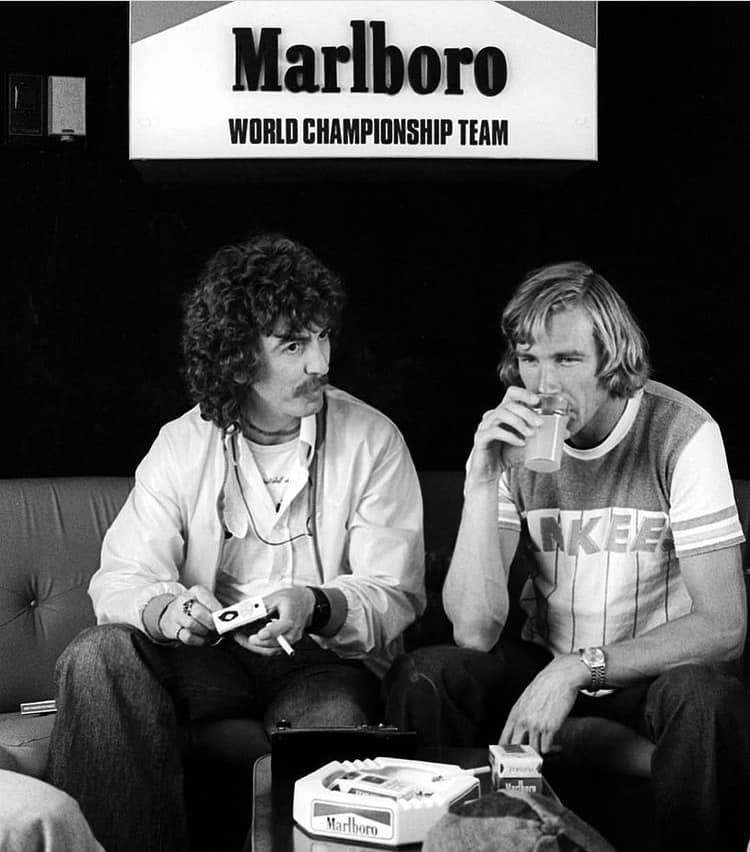
George Harrison visits James Hunt in the Marlboro motorhome at the Spanish Grand Prix in Jarama, Spain, on 08 May 1977.
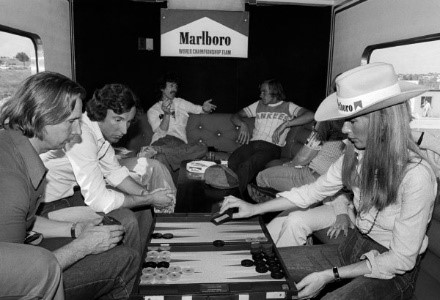
George Harrison, Beatle guitarist and F1 fan, enjoys a cigarette and a chat with race retiree James Hunt, McLaren, in the Marlboro motorhome as Jane Birbeck (right), girlfriend of Hunt, plays backgammon.
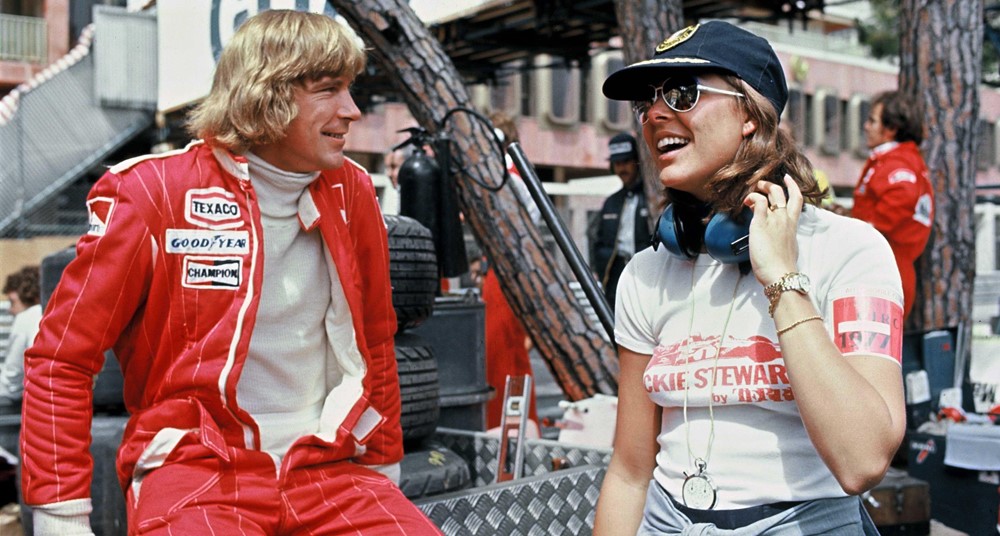
Relaxing in the pit lane during practice for the Monaco Grand Prix on 21 May 1977, James Hunt shares a joke with a young Princess Caroline of Monaco, who is sporting a Jackie Stewart T-shirt that we’re sure would have drawn a typically droll comment from the British World Champion…
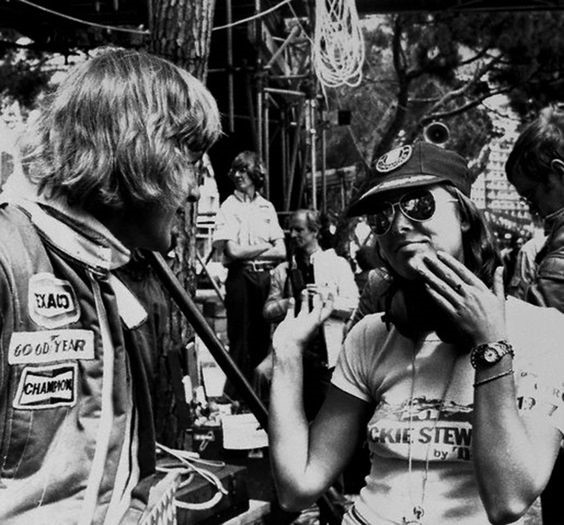
James Hunt and Princess Caroline at the Monaco Grand Prix on 21 May 1977. Notice the Jackie Stewart t-shirt Caroline is wearing, he was the F1 God at the time with James Hunt the new bad boy on the block.
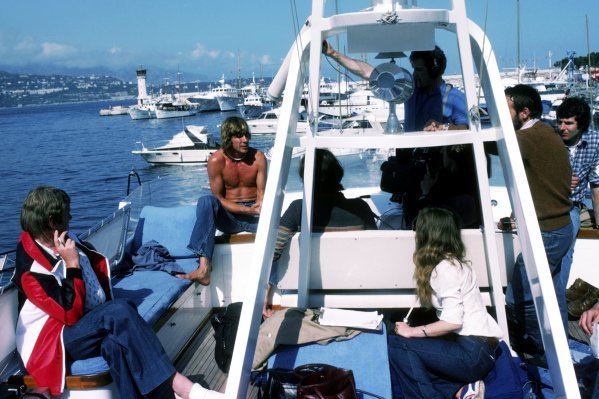
Reigning World Champion James Hunt, McLaren, entertains guests on a boat at Monaco on 22 May 1977.
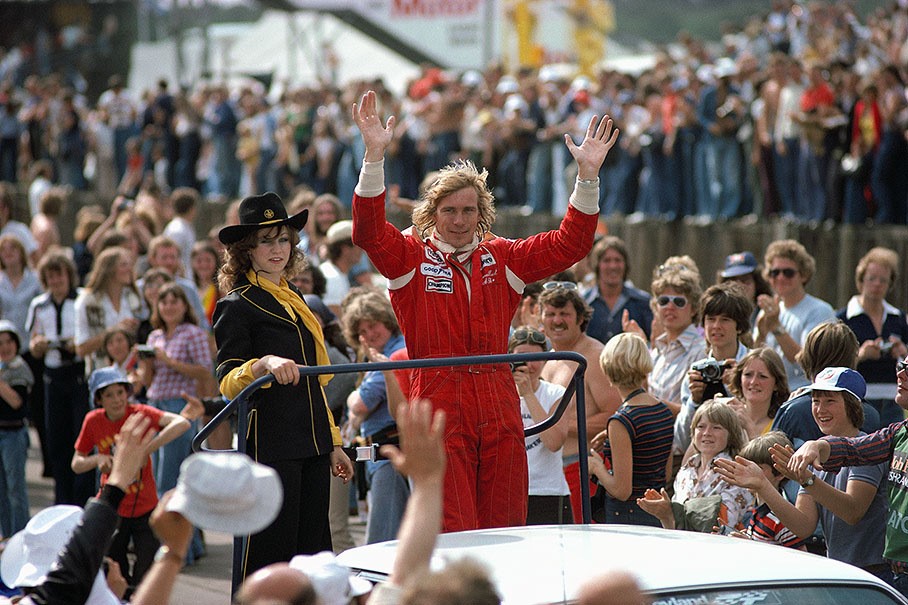
The British fans celebrate their beloved victorious local hero James Hunt at the British Grand Prix in Silverstone on 16 July 1977. Photo by Rainer Schlegelmilch.
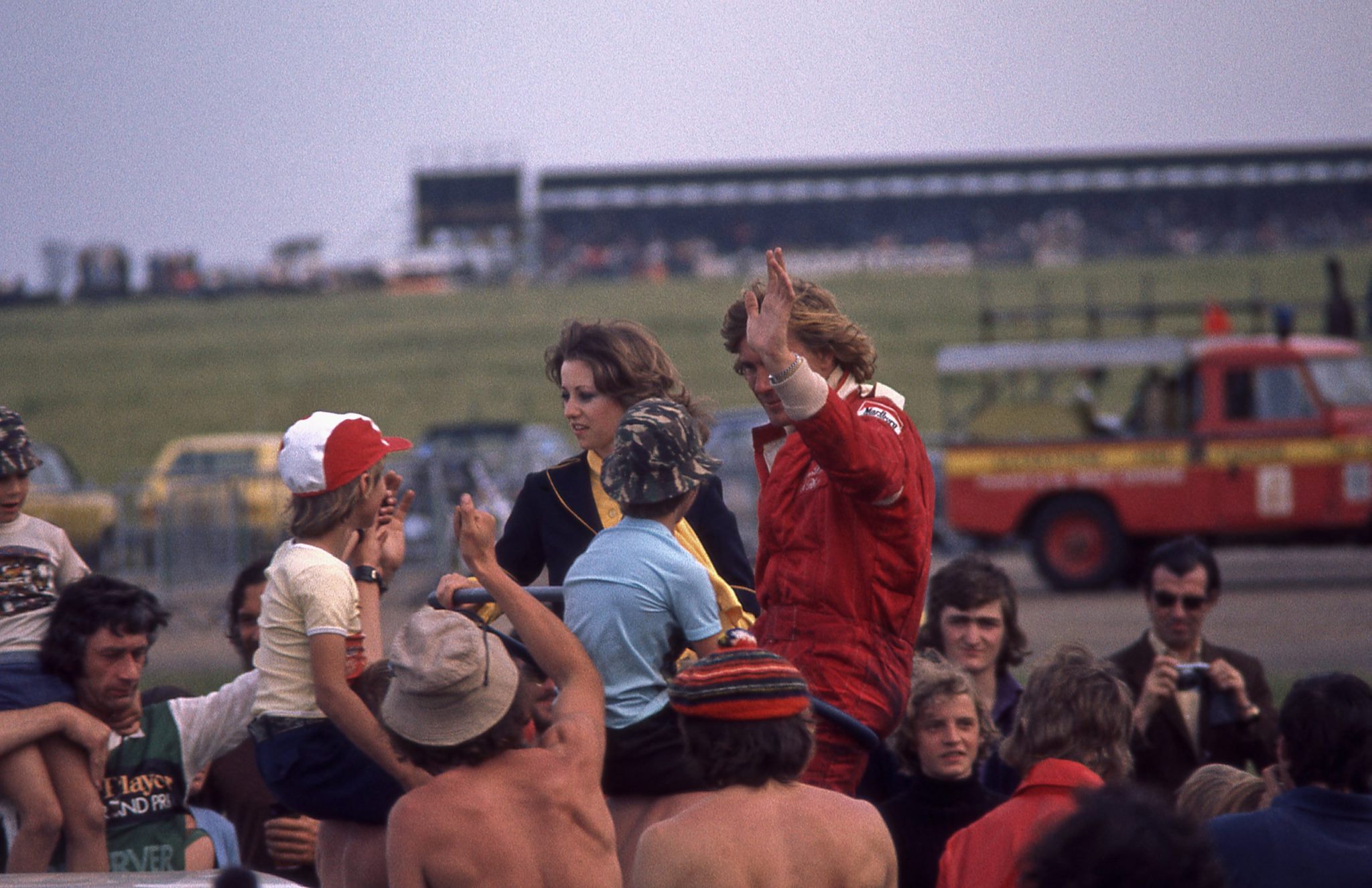
James Hunt waves to the crowd after driving the McLaren M26 Ford V8 to win the 1977 British Grand Prix at Silverstone.
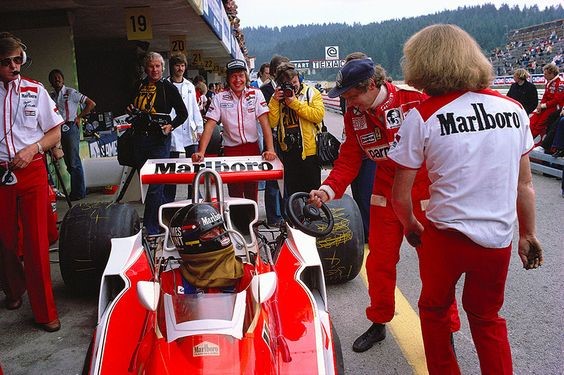
James Hunt and Niki Lauda, Austria, on 14 August 1977.
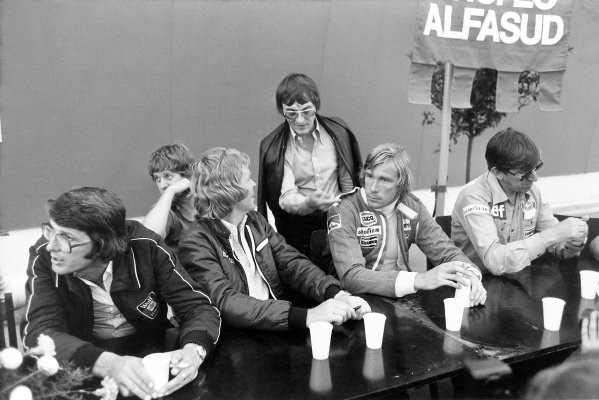
1977 Austrian Grand Prix at Osterreichring, Austria, 14 August 1977. Left-to-right: Peter Warr (Lotus team manager), Ian Scheckter (partly hidden), Max Mosley, Bernie Ecclestone, James Hunt and Ken Tyrrell. Photo by LAT Photographic.
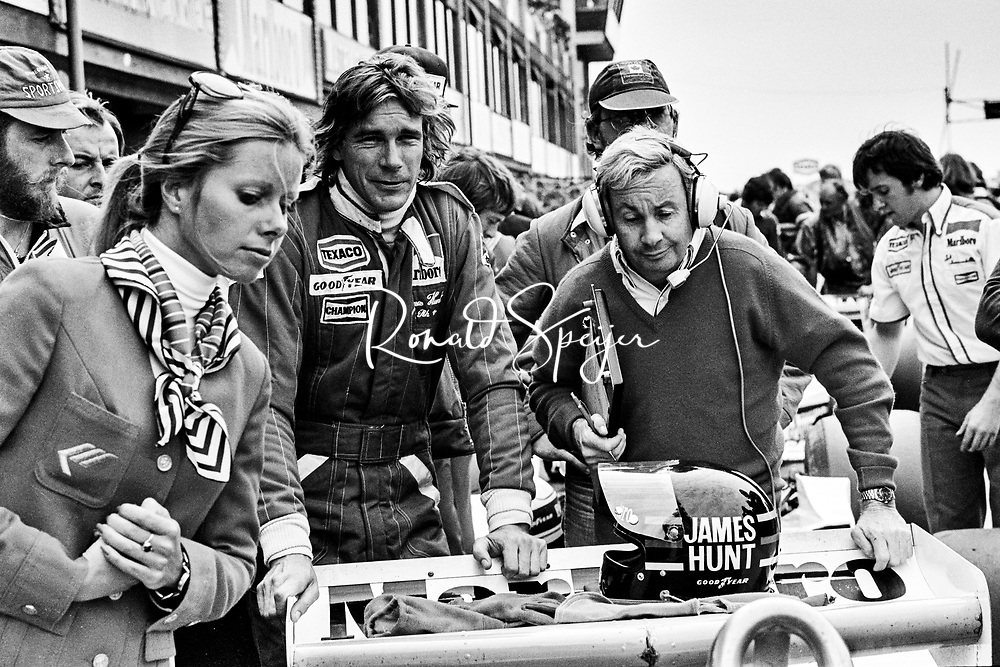
James Hunt, Teddy Mayer and a girl at the Dutch Grand Prix in Zandvoort on 28 August 1977. Photo by Ronald Speij.
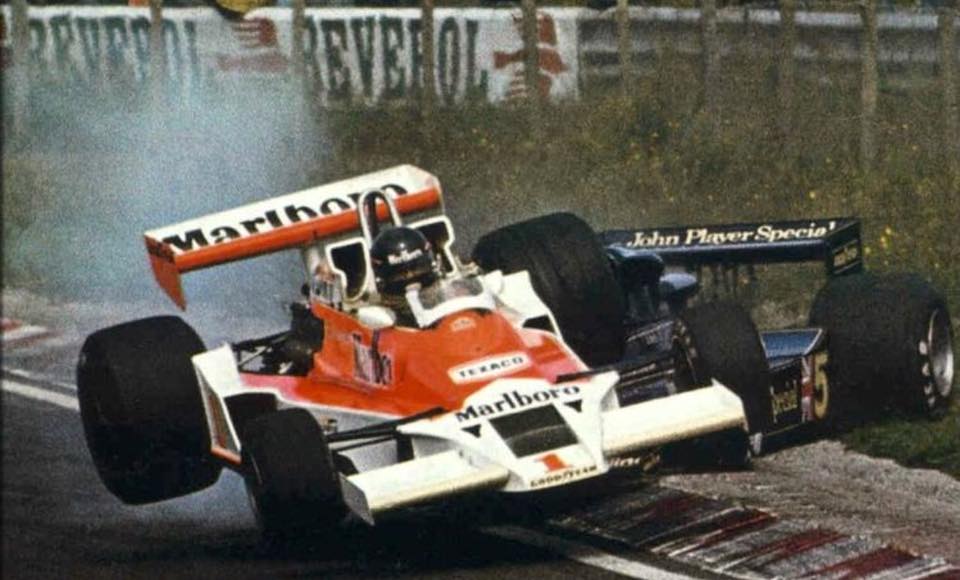
The accident between James Hunt, McLaren and Mario Andretti, Lotus, at the Dutch Grand Prix in Zandvoort on 28 August 1977.
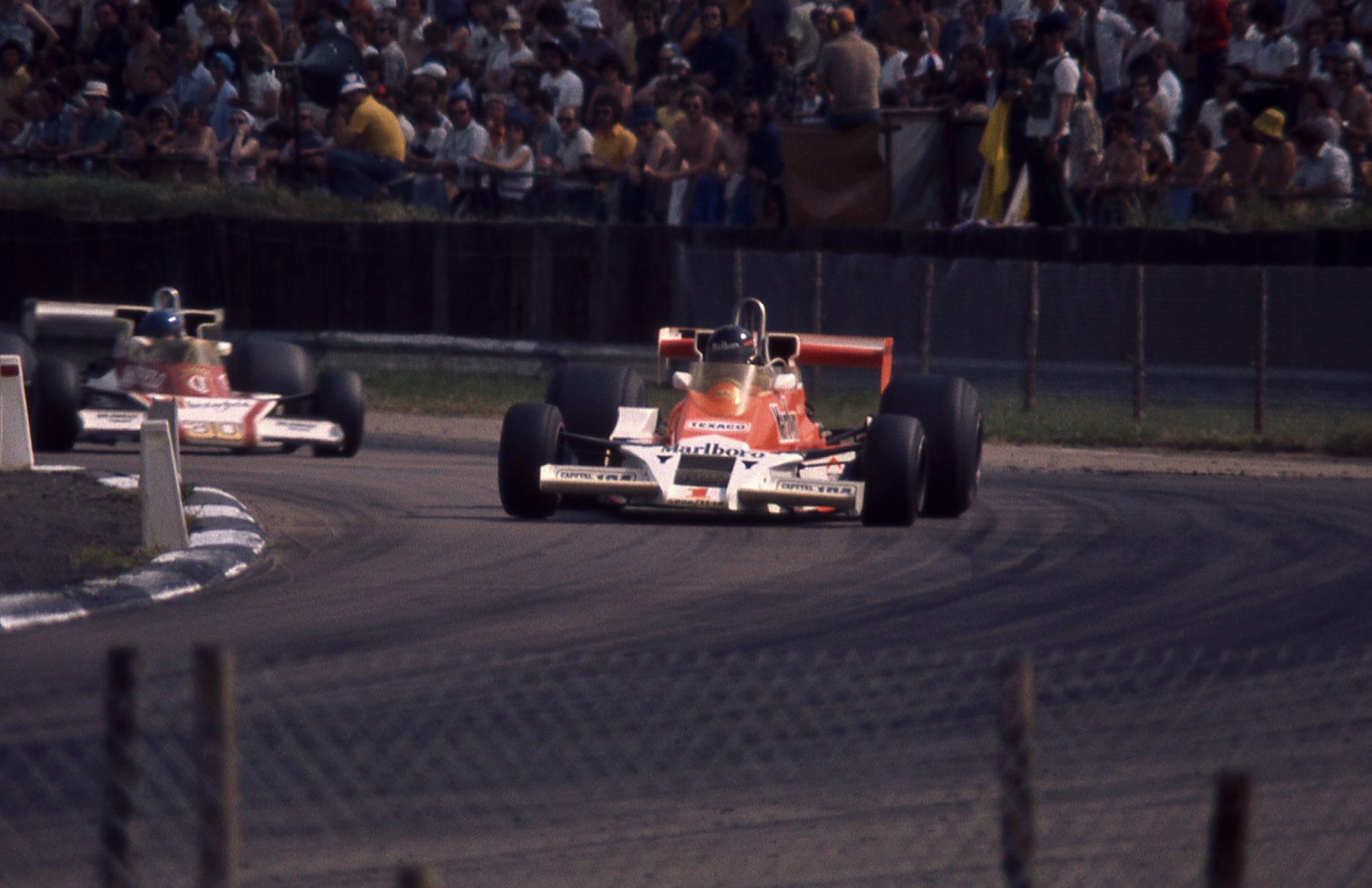
James Hunt, McLaren, in 1977.
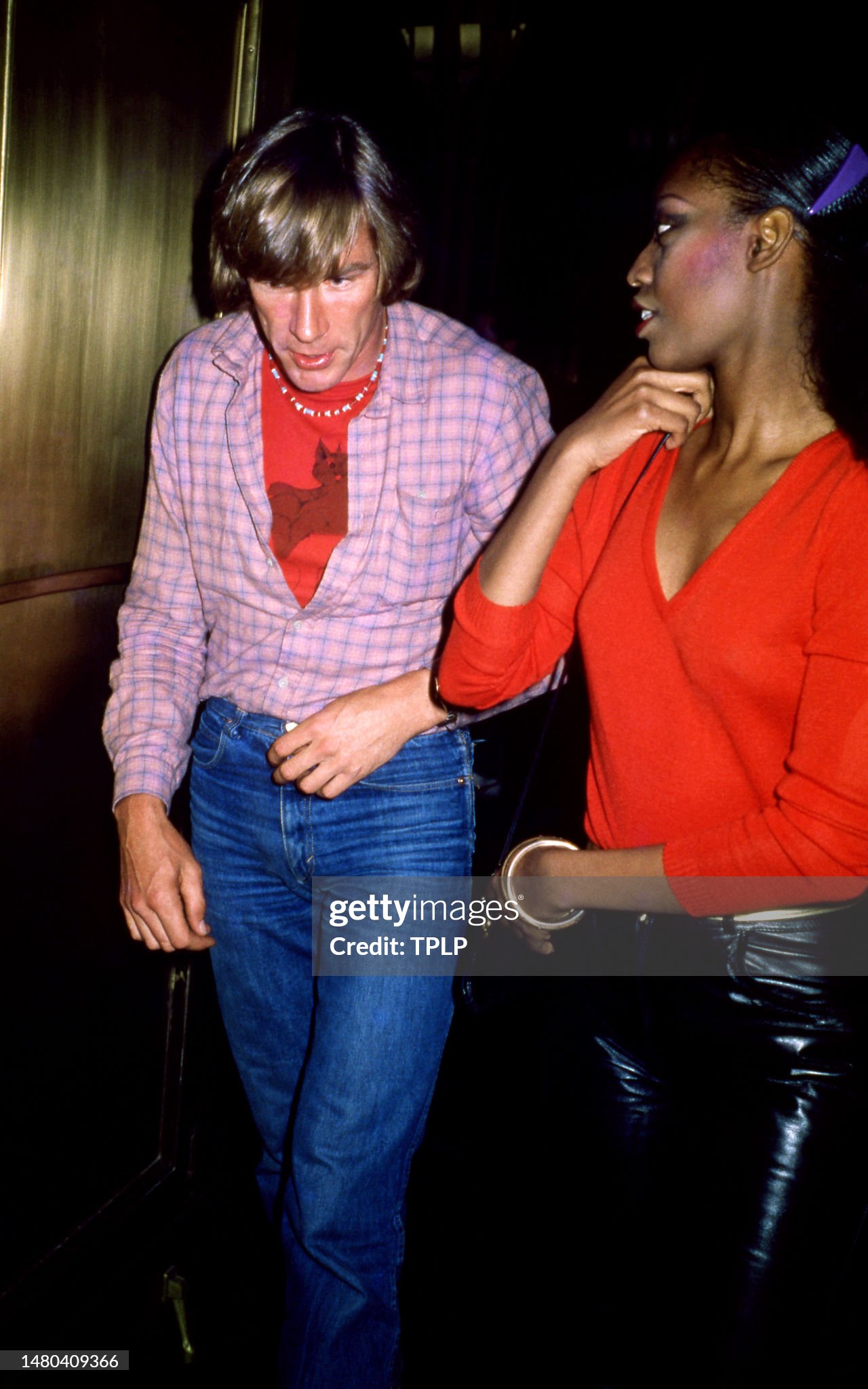
James Hunt talks to unidentified woman at the nightclub ‘Studio 54’ in New York, circa 1977. Photo by Oscar Abolafia / TPLP / Getty Images.
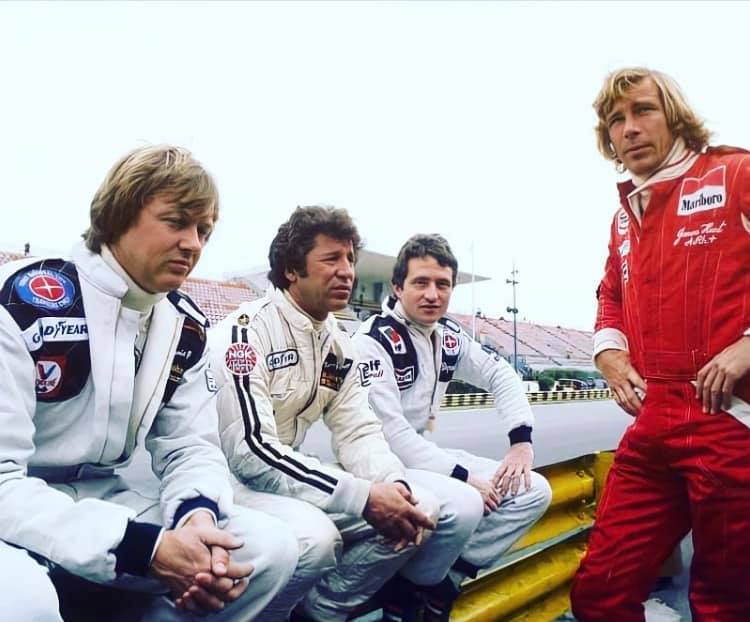
James Hunt with Ronnie Peterson, Mario Andretti and Patrick Depailler at the Agentinean Grand Prix in Buenos Aires on 15 January 1978.
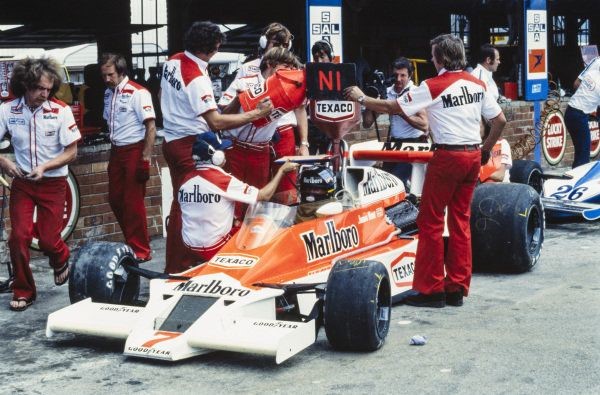
James Hunt waits as his McLaren M26 Ford is refuelled at Kyalami, South Africa, on March 04, 1978.
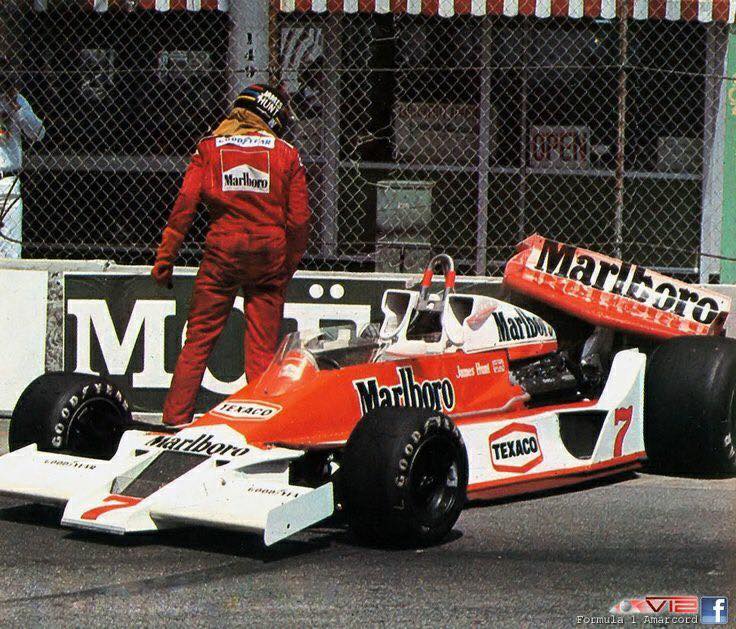
James Hunt, McLaren, after an accident at the US Grand Prix West in Long Beach on 02 April 1978.
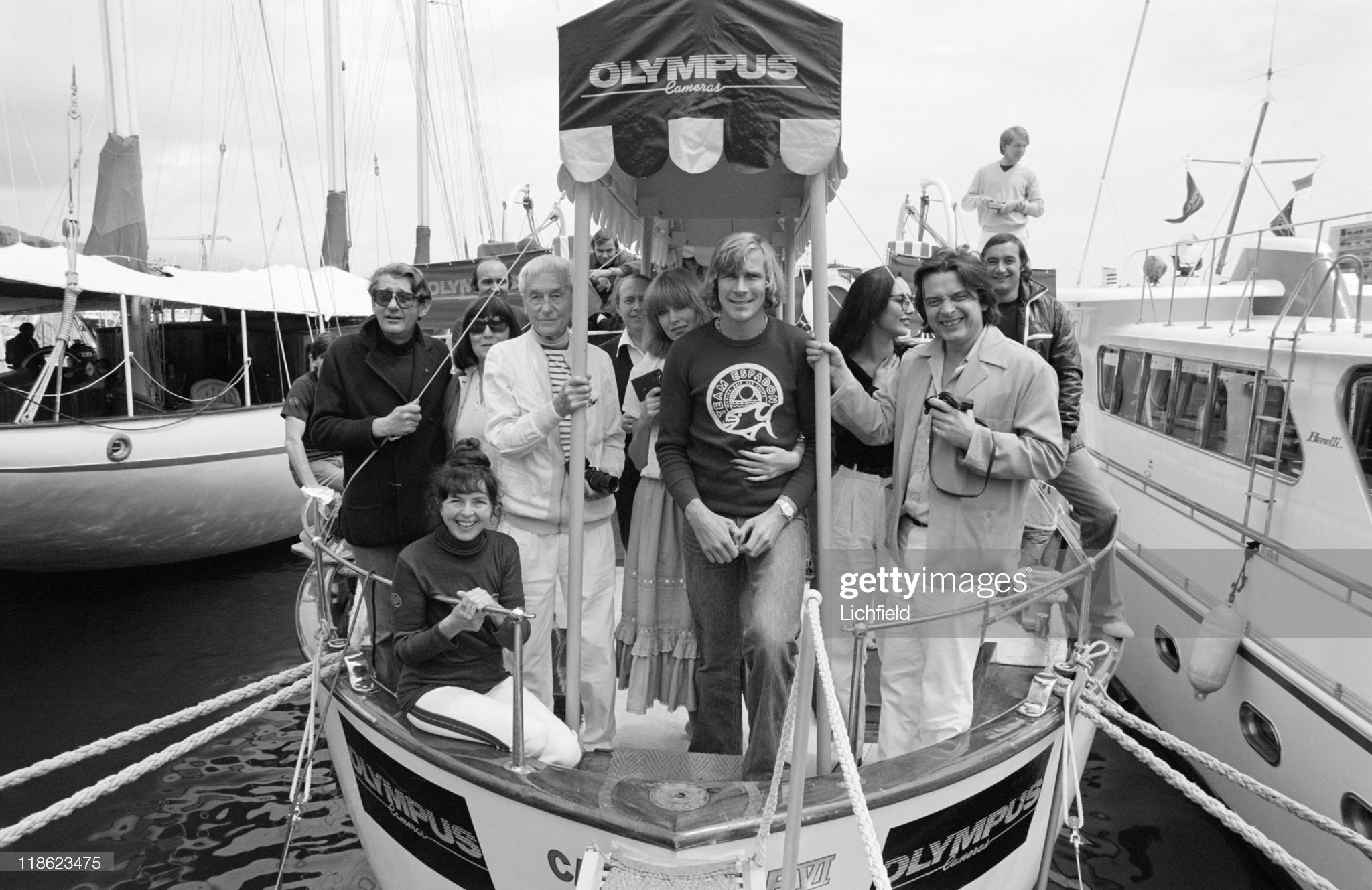
German-Australian fashion photographer Helmut Newton, James Hunt, David Bailey and Jacques-Henri Lartigue, (centre row left to right) at Monte Carlo, Monaco, 04th May 1978. Photo by Lichfield Archive via Getty Images.
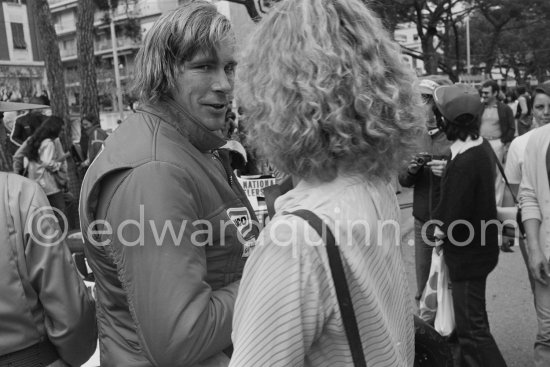
James Hunt, as well as being a favourite with the race fans, is also a great favourite of the girls. Monaco Grand Prix on 07 May 1978. Photo by Edward Quinn.
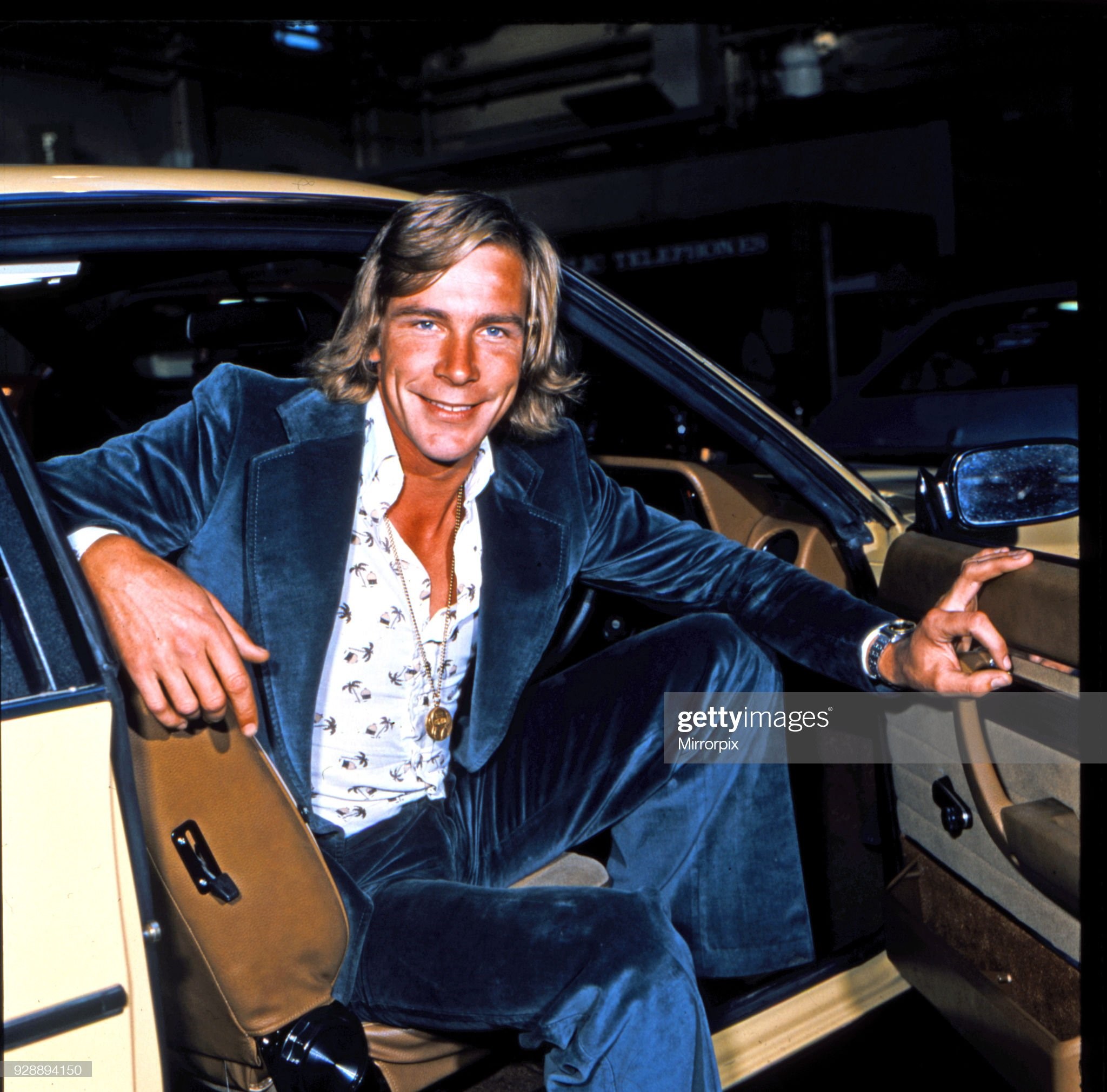
James Hunt, smiles to camera, whilst sitting in the front seat of his car in May 1978. James is wearing a medallion, white patterned shirt and blue velvet suit.
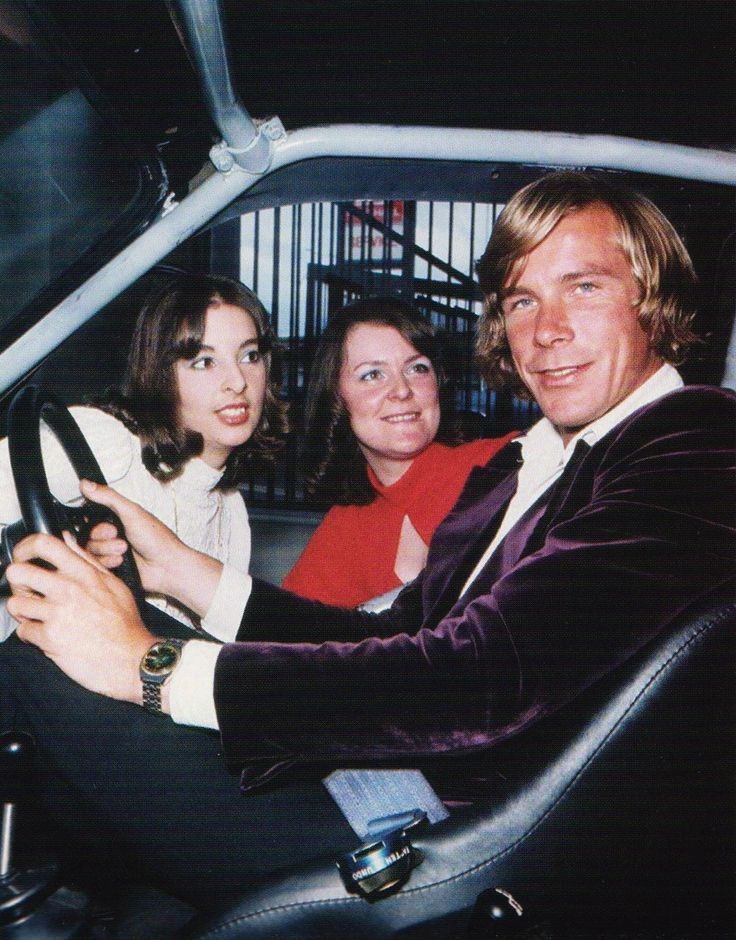
James Hunt and friends.
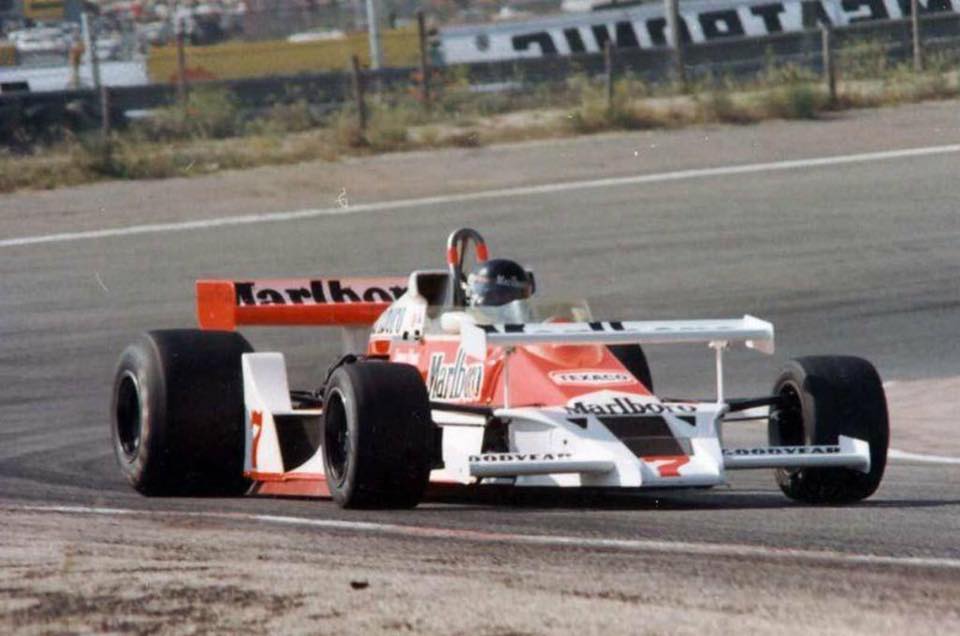
James Hunt, McLaren M26 Ford, tries a new extra front wing on his McLaren during practice for the Spanish Grand Prix in Jarama on 04 June 1978.
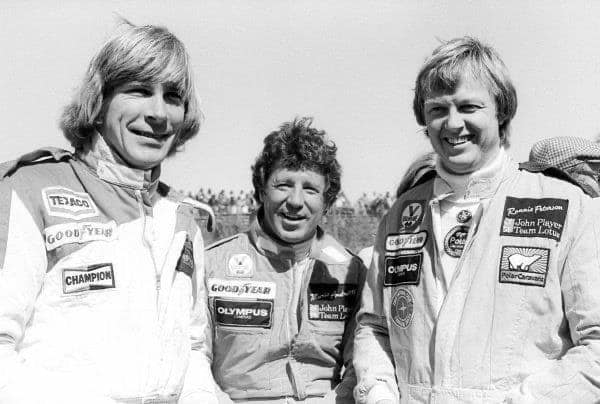
James Hunt, Mario Andretti and Ronnie Peterson at the Swedish Grand Prix in Anderstorp, Scandinavian Raceway, on 17 June 1978. Photo by UK racing history.
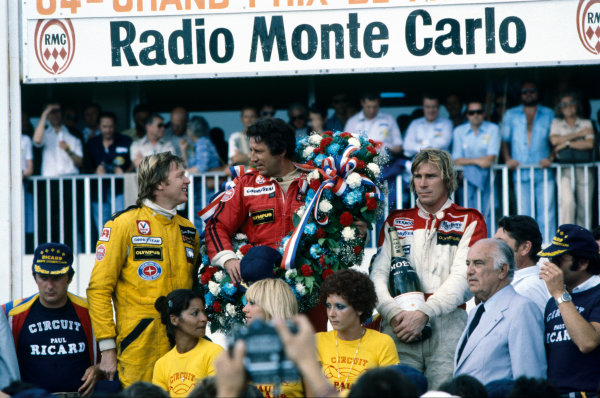
Ronnie Peterson, Mario Andretti and James Hunt on the podium at the French Grand Prix in Paul Ricard, Le Castellet, on 02 July 1978. Photo by Lat Images.
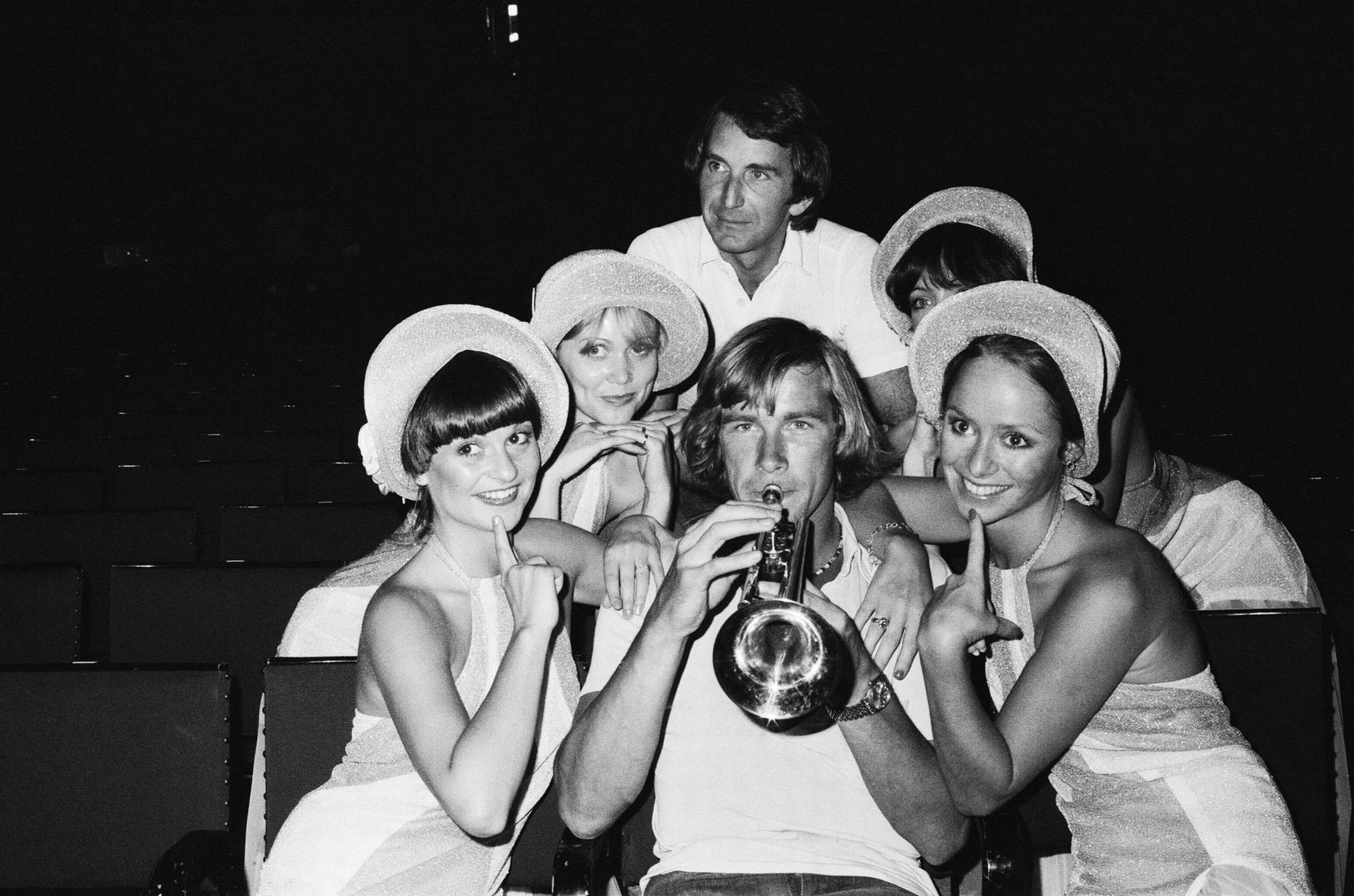
10th July 1978: John Watson, James Hunt and Lulu in a rehearsal scene for "Grand Prix Night of the Stars". Photo by Mirrorpix.
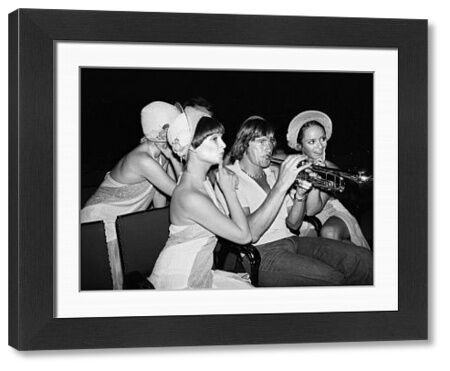
John Watson, James Hunt and Lulu in a rehearsal scene for "Grand Prix Night of the Stars", an event at The Albert Hall in aid of the Lord Taverners. The following Sunday, it will be the Grand Prix at Brands Hatch. Picture taken 10th July 1978.
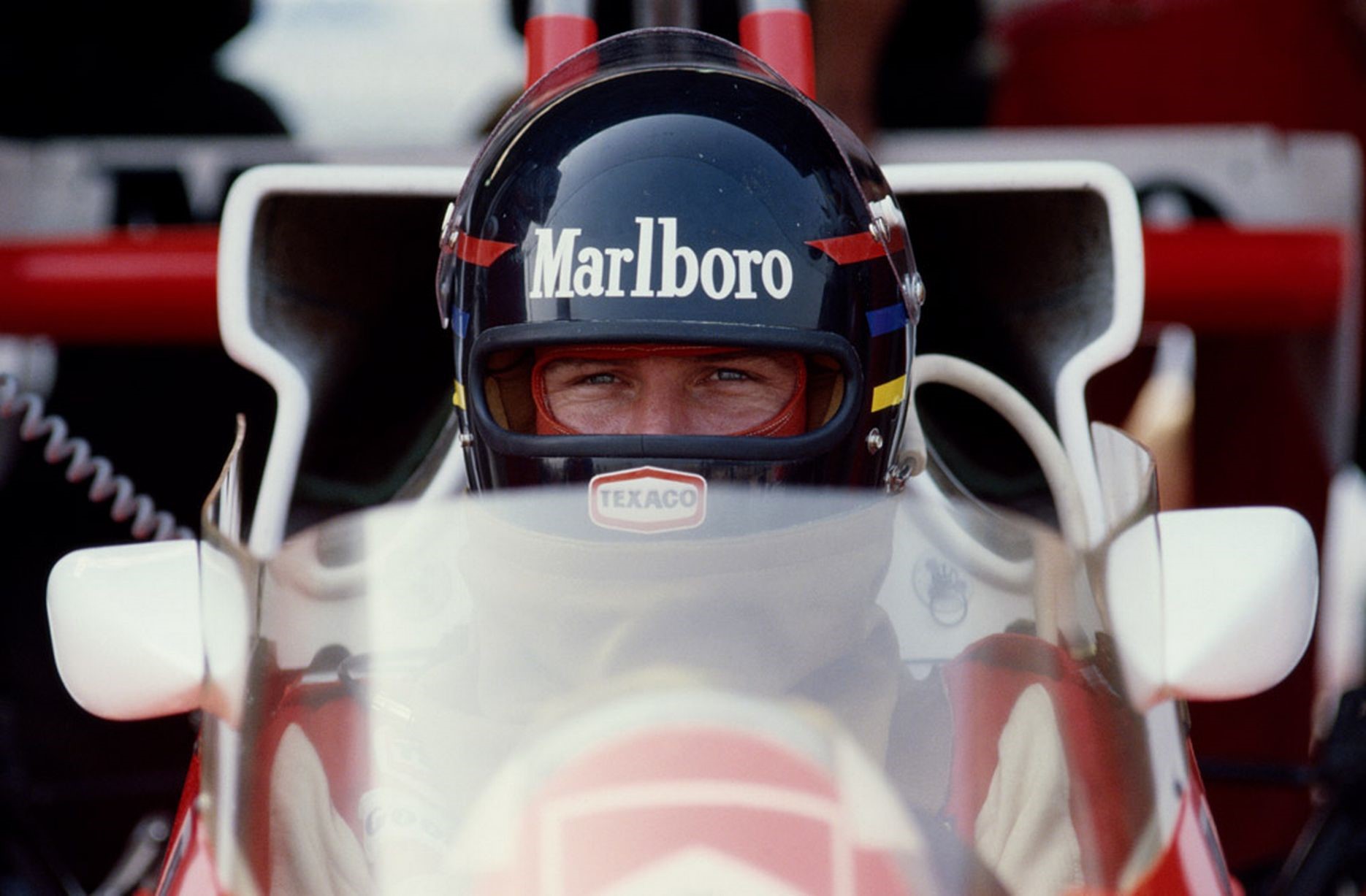
James Hunt sits aboard Marlboro Team McLaren M26 Ford during the British Grand Prix on 16 July 1978. Photo by Getty Images.
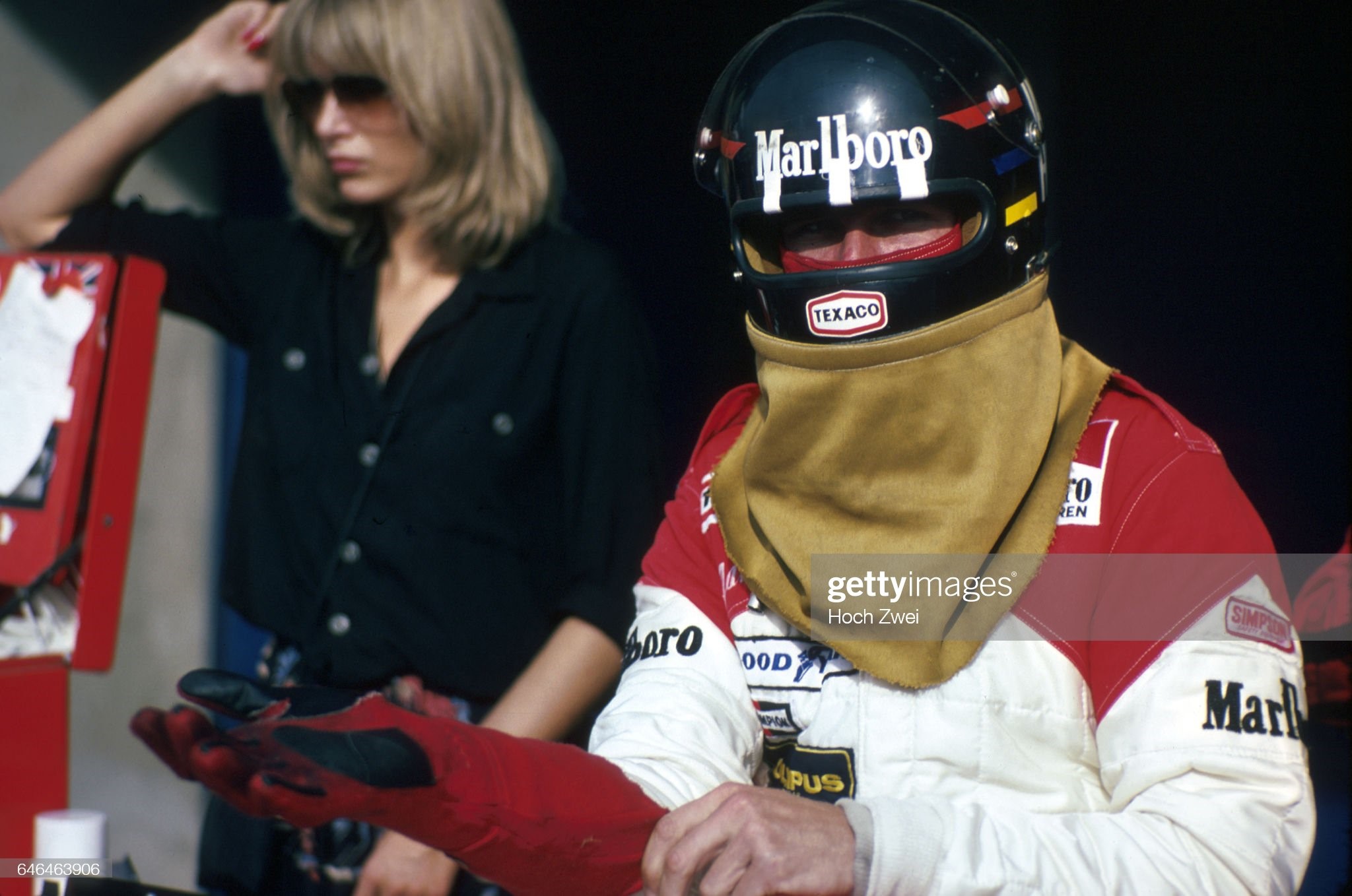
James Hunt in the McLaren pit at the Italian Grand Prix in Monza on 10 September 1978. Photo by Hoch Zwei / Corbis via Getty Images.
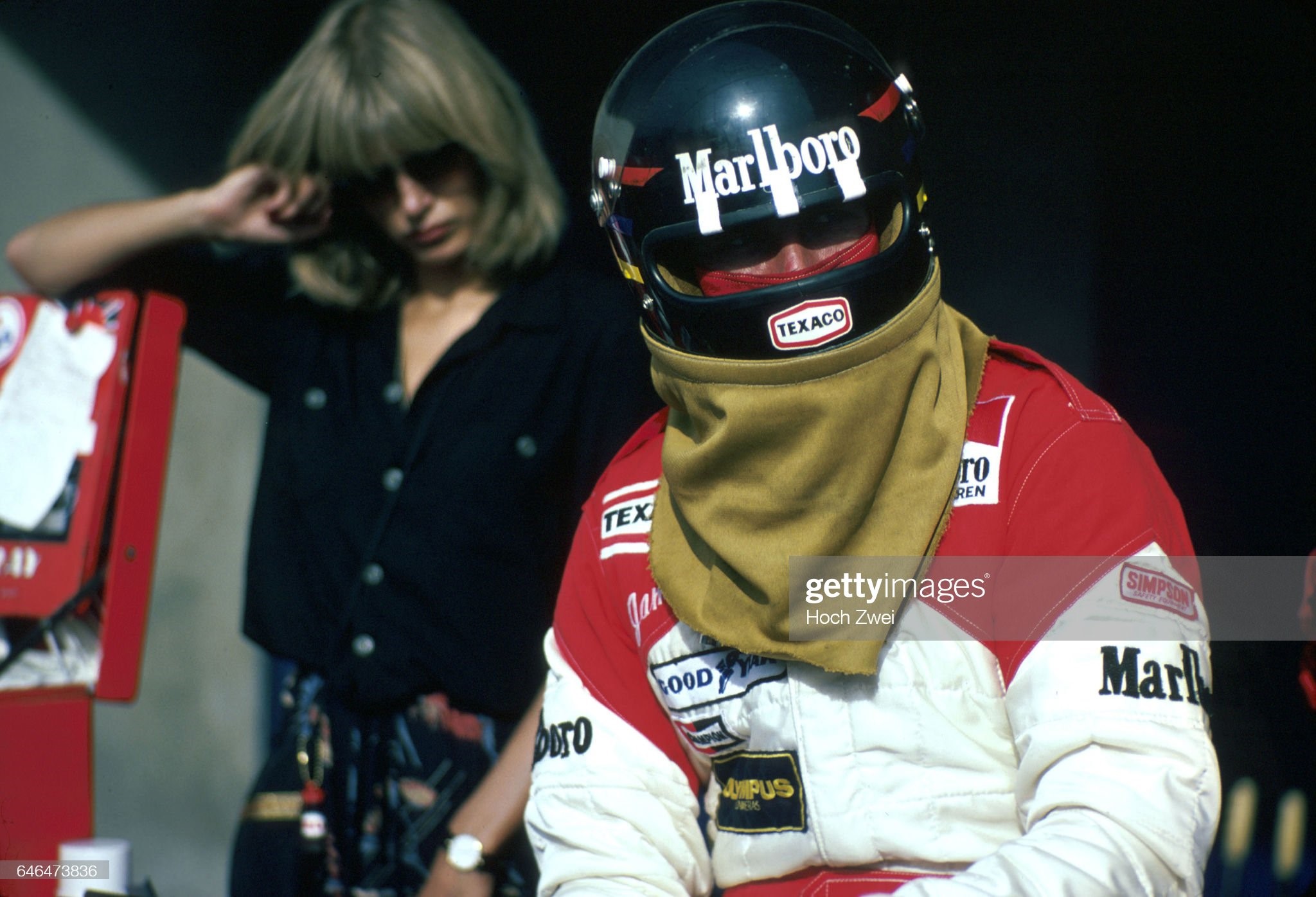
James Hunt in the McLaren pit at the 1978 Italian Grand Prix in Monza. Photo by Hoch Zwei/Corbis via Getty Images.
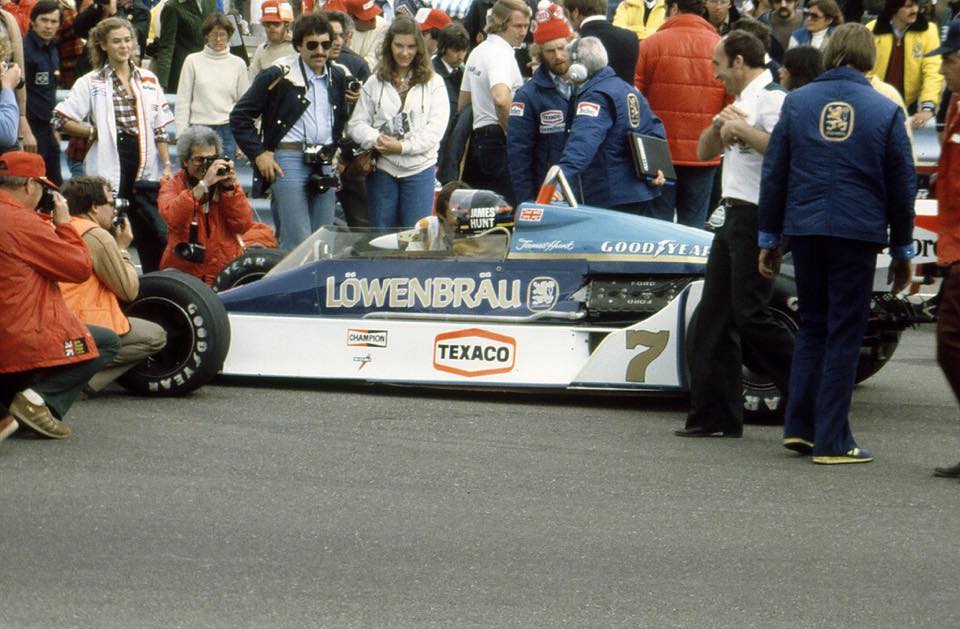
James Hunt, McLaren M26 Ford V8, finished 7th at the US Grand Prix in Watkins Glen on 01 October 1978. Notice the Löwenbräu livery.
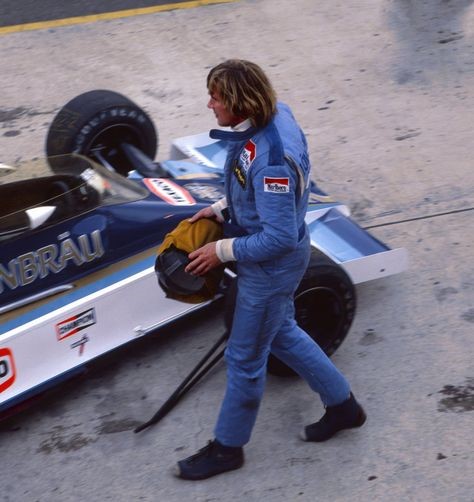
James Hunt, McLaren M26 Ford V8, finished 7th at the US Grand Prix in Watkins Glen on 01 October 1978. Notice the Löwenbräu livery. Photo by Philinflash.
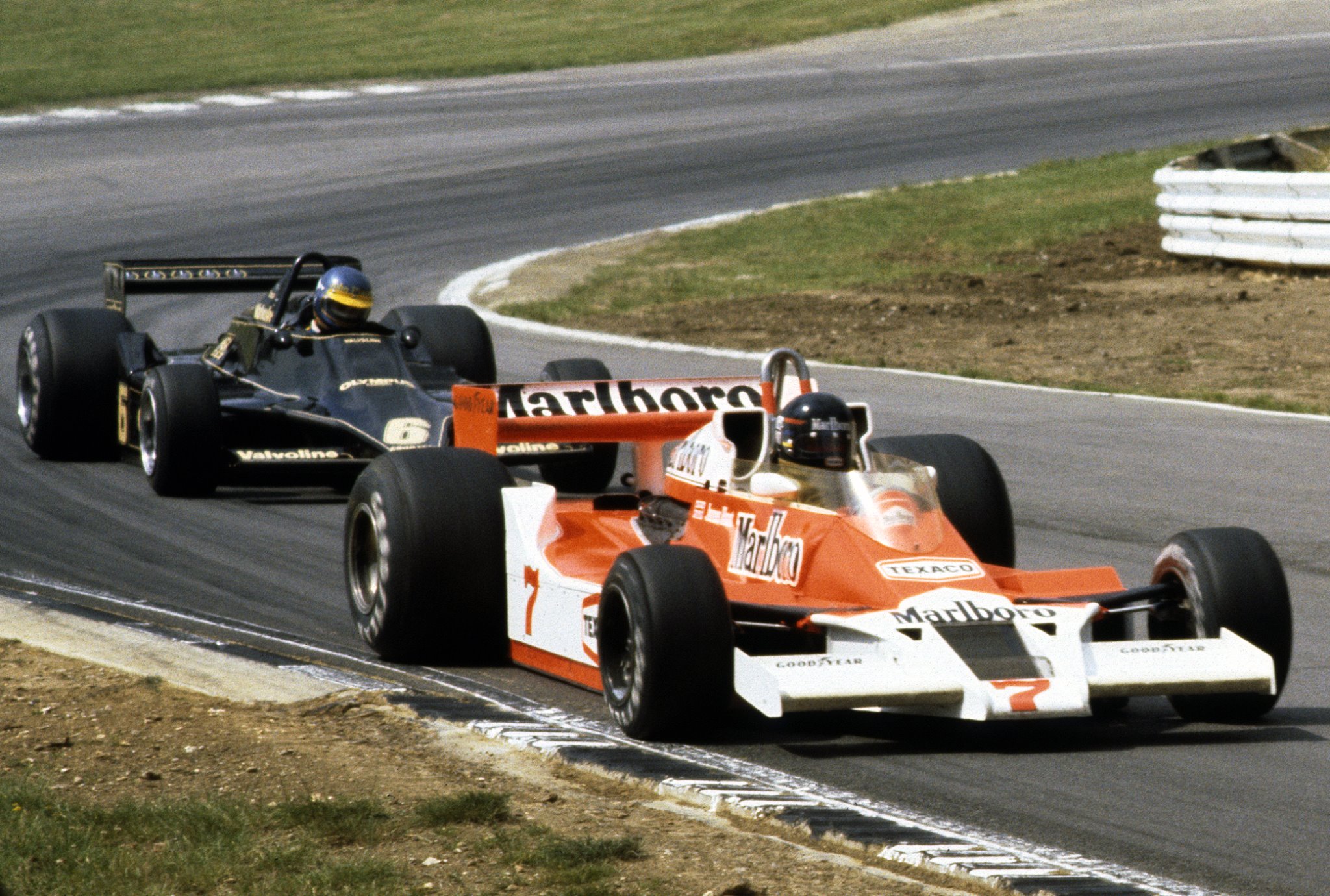
James Hunt, McLaren, in 1978.
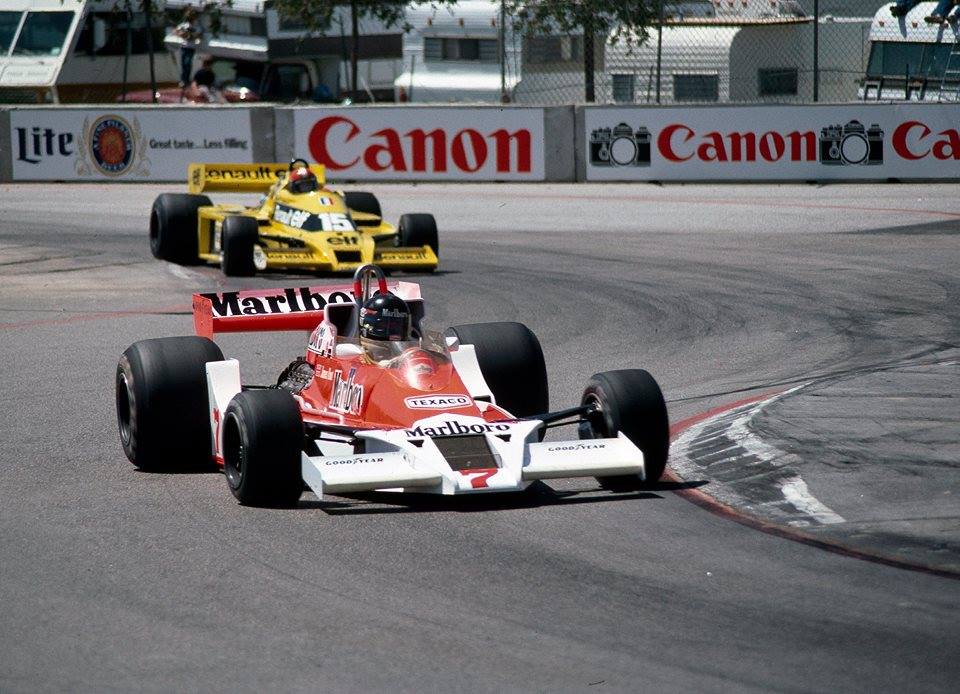
James Hunt, McLaren, in 1978.
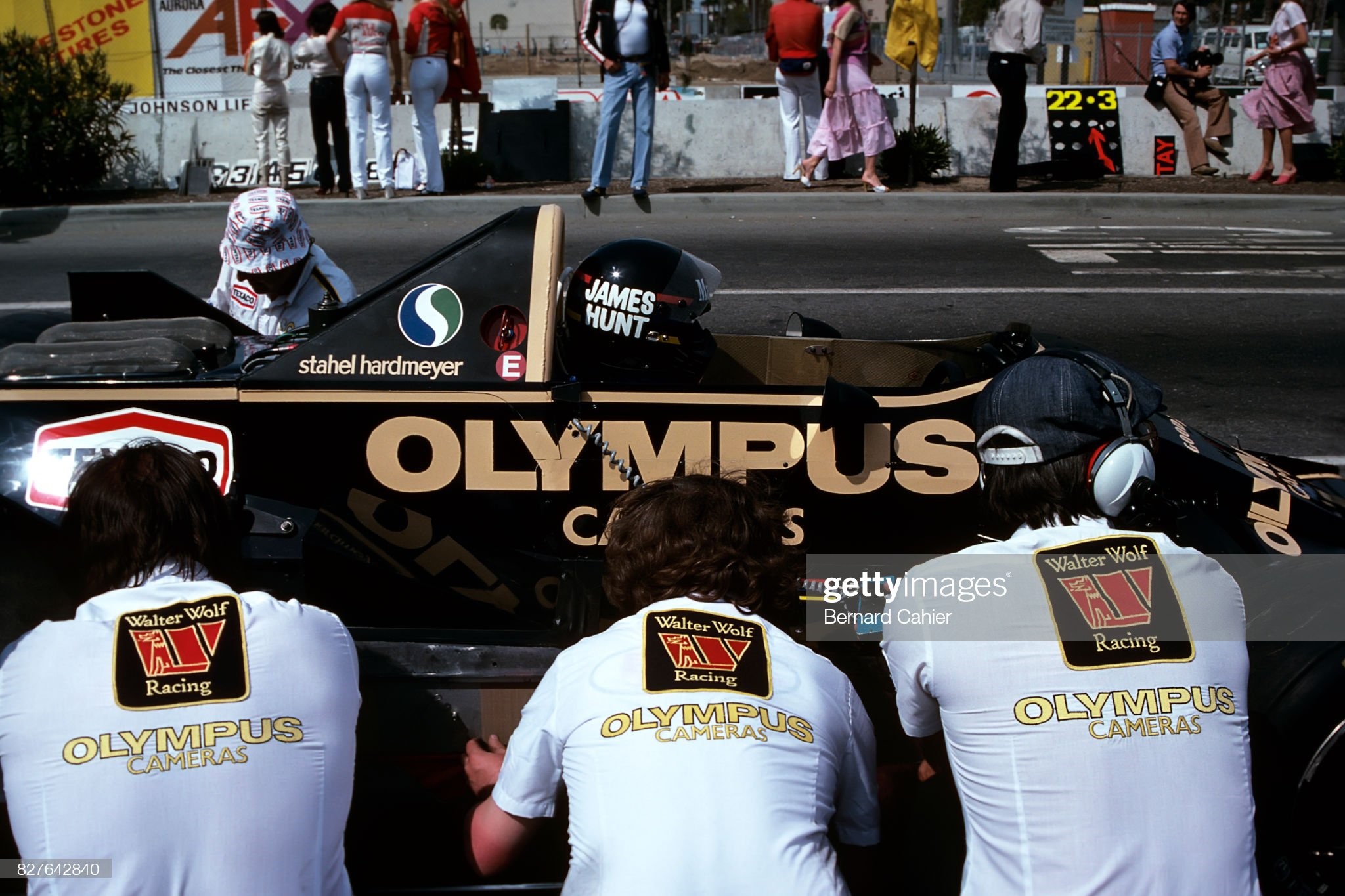
James Hunt, Wolf-Ford WR7, Grand Prix of United States West, Long Beach, 08 April 1979. Photo by Bernard Cahier / Getty Images.
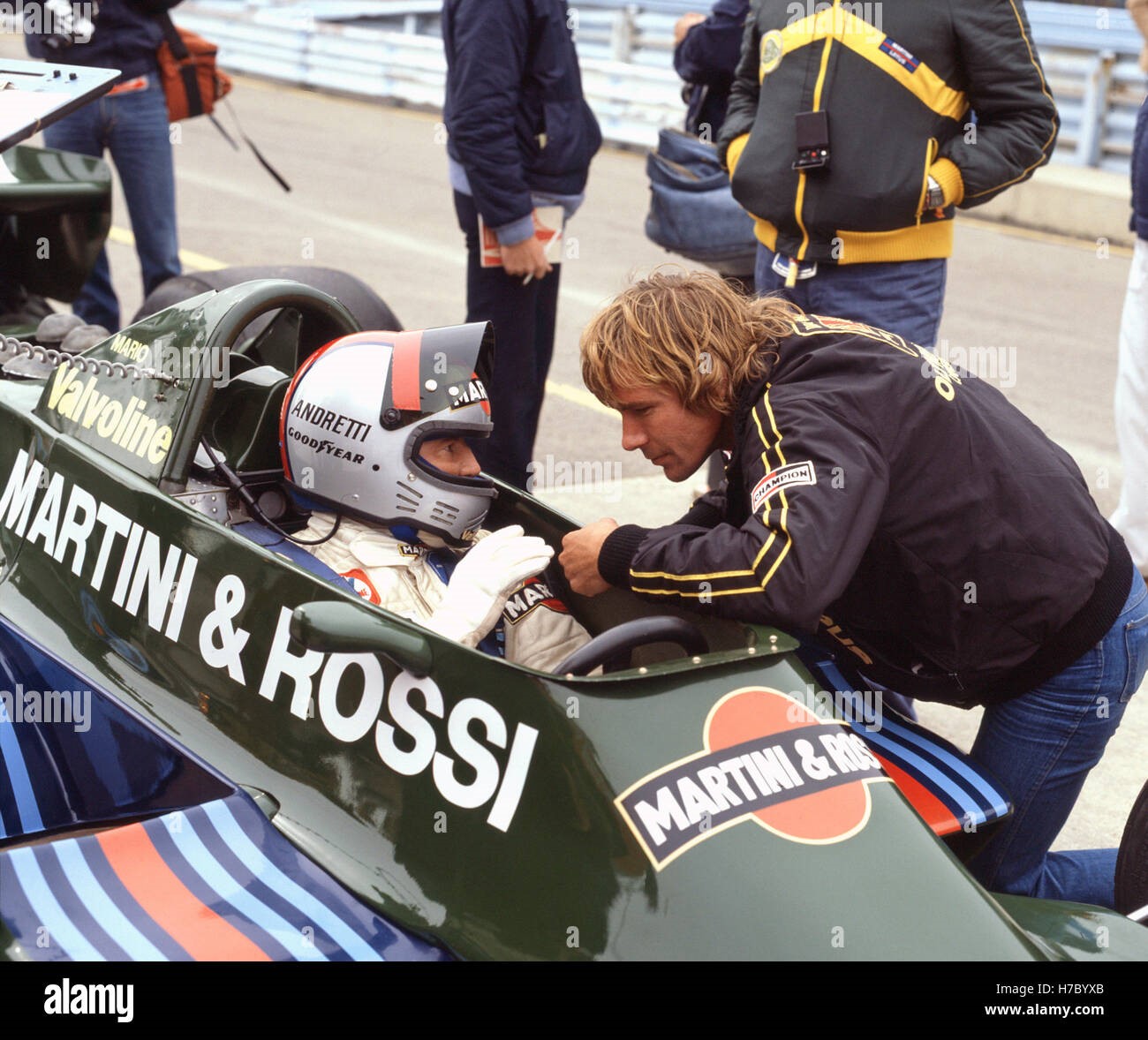
James Hunt and Mario Andretti at the US Grand Prix East in Watkins Glen on 07 October 1979.
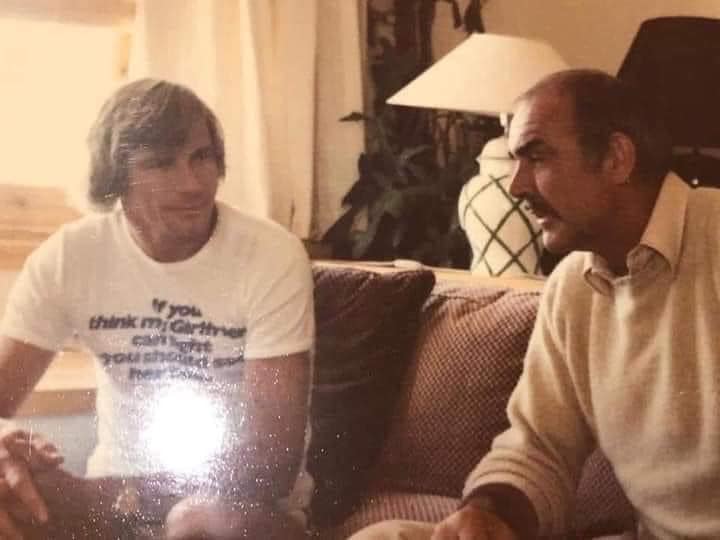
James Hunt and Sean Connery at Marbella, Spain, in 1979.
Oh yes – Murray Walker and James Hunt made quite the commentary team.
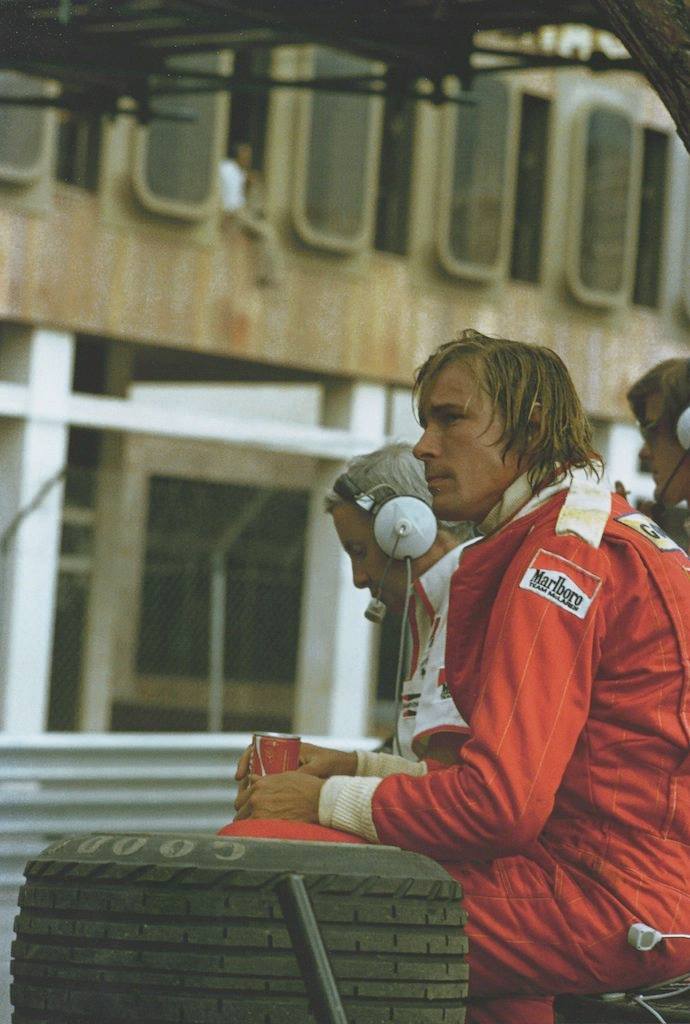
The partnership got off to a bad start, with Hunt and Walker first officially paired together for the BBC at the Monaco Grand Prix on 18 May 1980.
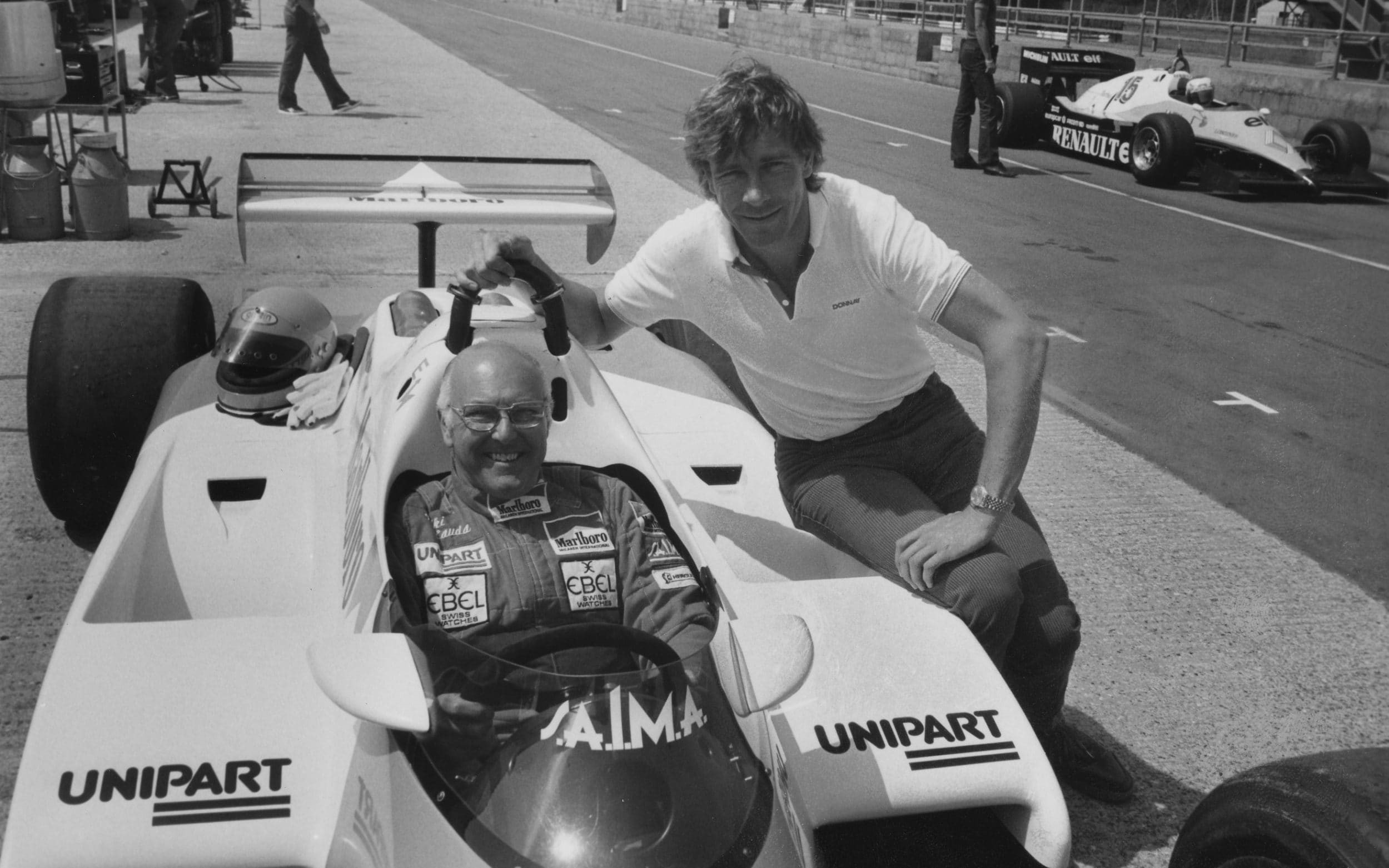
Murray Walker and James Hunt were the perfect odd-couple commentary tandem.
As Murray Walker remembered: “James appears in his cut-down tattered jeans with a scruffy T-shirt, no shoes and his right leg in a plaster cast from the ankle to the crutch … He sits down in his folding chair, puts his plaster cast in my lap – and I haven’t mentioned that he also had a bottle of rose in his hand which had been half consumed – and off we went. And, to my horror, when his bottle of rose ran out, a BBC bloke appeared and gives him another one.”
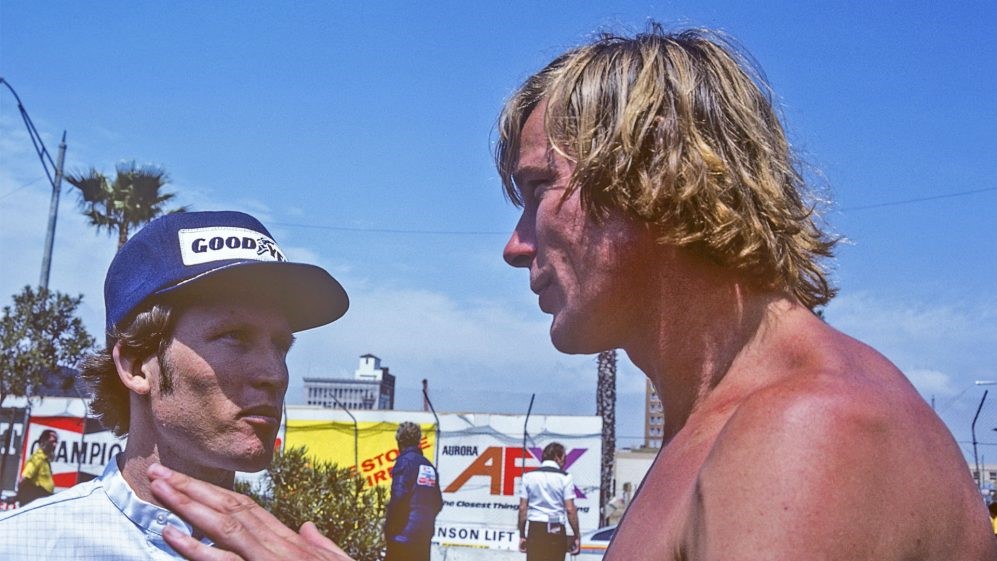
Untraditional as a commentator, Hunt certainly was. But amid all the barbs at other drivers - Jean-Pierre Jarier and Andrea de Cesaris were both perennial “idiots” in Hunt’s eyes, while he once praised Philippe Alliot’s retirement, saying that at least the Frenchman wouldn’t take anyone else off – Hunt was also extremely talented at seeing how races were unfolding.
“He was able to read a race to perfection,” said Walker of his old sparring partner in the commentary booth, “and then communicate the tactics, the politics and the action, calmly and authoritatively in that marvellous voice of his, like no-one else I have ever met.”
It was Hunt who, after Ayrton Senna finished second at Monaco in 1984, famously said that Senna “will undoubtedly be world champion in the future” and BBC audiences got used to Hunt’s commanding, cut-glass English accent pouring out expert punditry alongside the excitable Walker on Sunday afternoons.
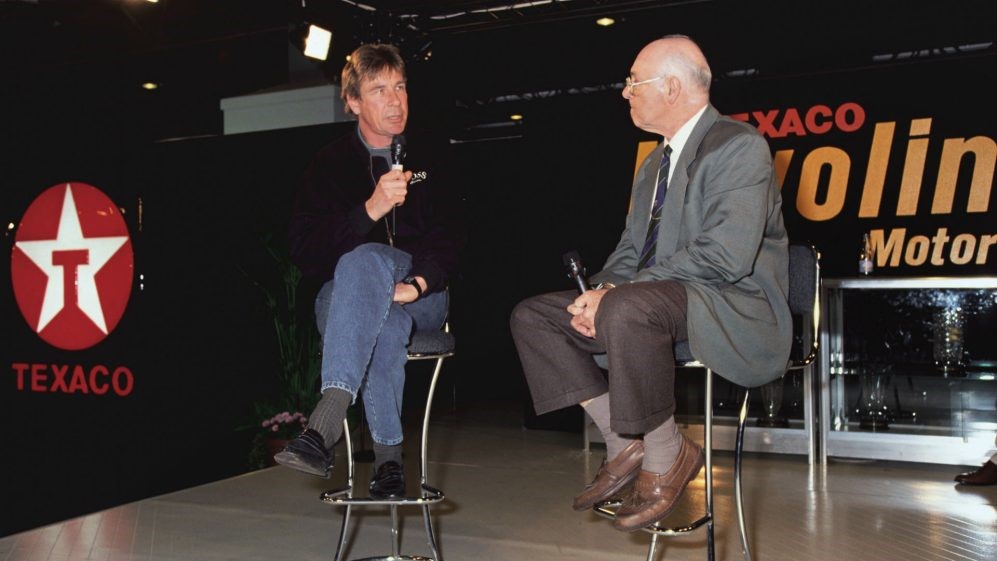
James Hunt and Murray Walker.
To give the last word to the iconic commentator: “James and I were about as different as it’s possible for two people to be. He could be very arrogant, he could be extremely objectionable. But I wouldn’t be saying all these less attractive things about James if also James had not been immensely charismatic, enormous fun when he wanted to be and an altogether really decent chap.”
We won’t see many of Hunt’s kind again, which should only make us appreciate all the more what we are missing. Godspeed James.
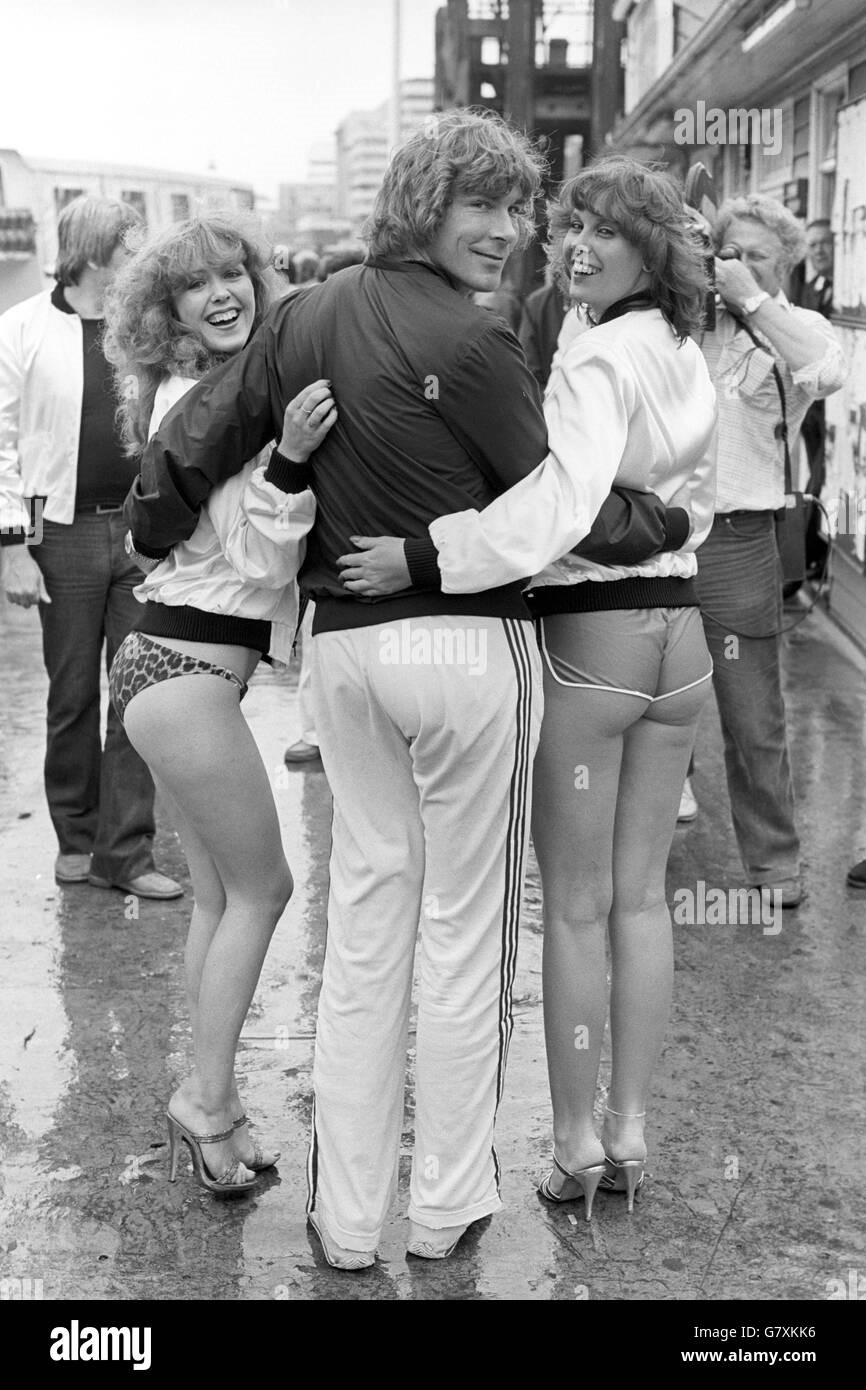
James Hunt with models Gloria Brittain (left) and Linzi Drew in London on 17 August 1980. They were helping to launch the Photographer Club, a new group for amateurs and the first outing was a boat trip up and down the Thames.
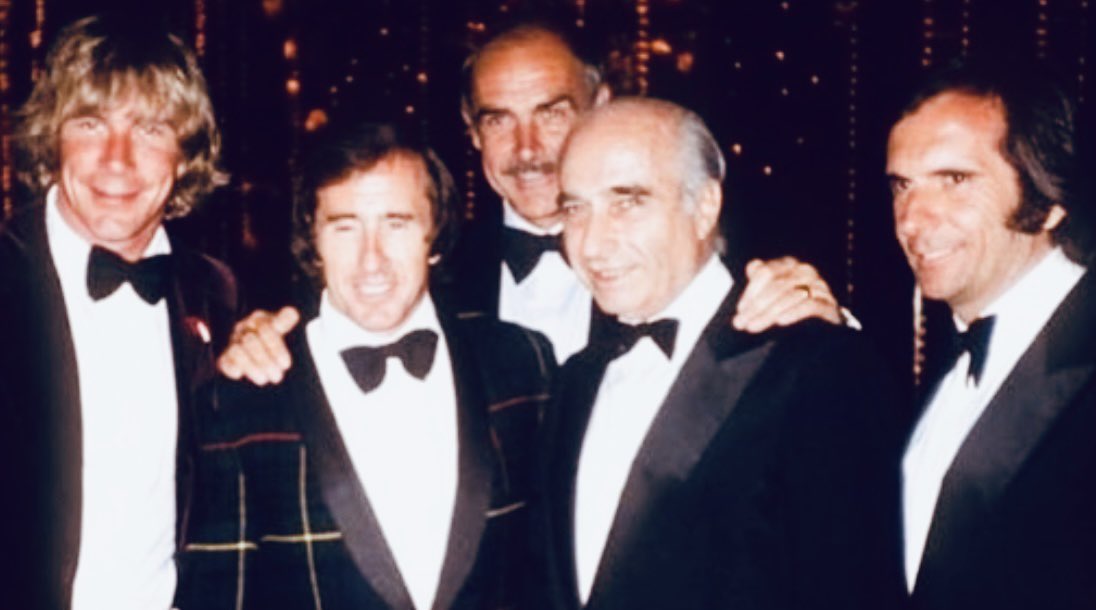
James Hunt, Jackie Stewart, Sean Connery, Juan Manuel Fangio and Emerson Fittipaldi at Monaco in 1981. Photo by Ercole Colombo.
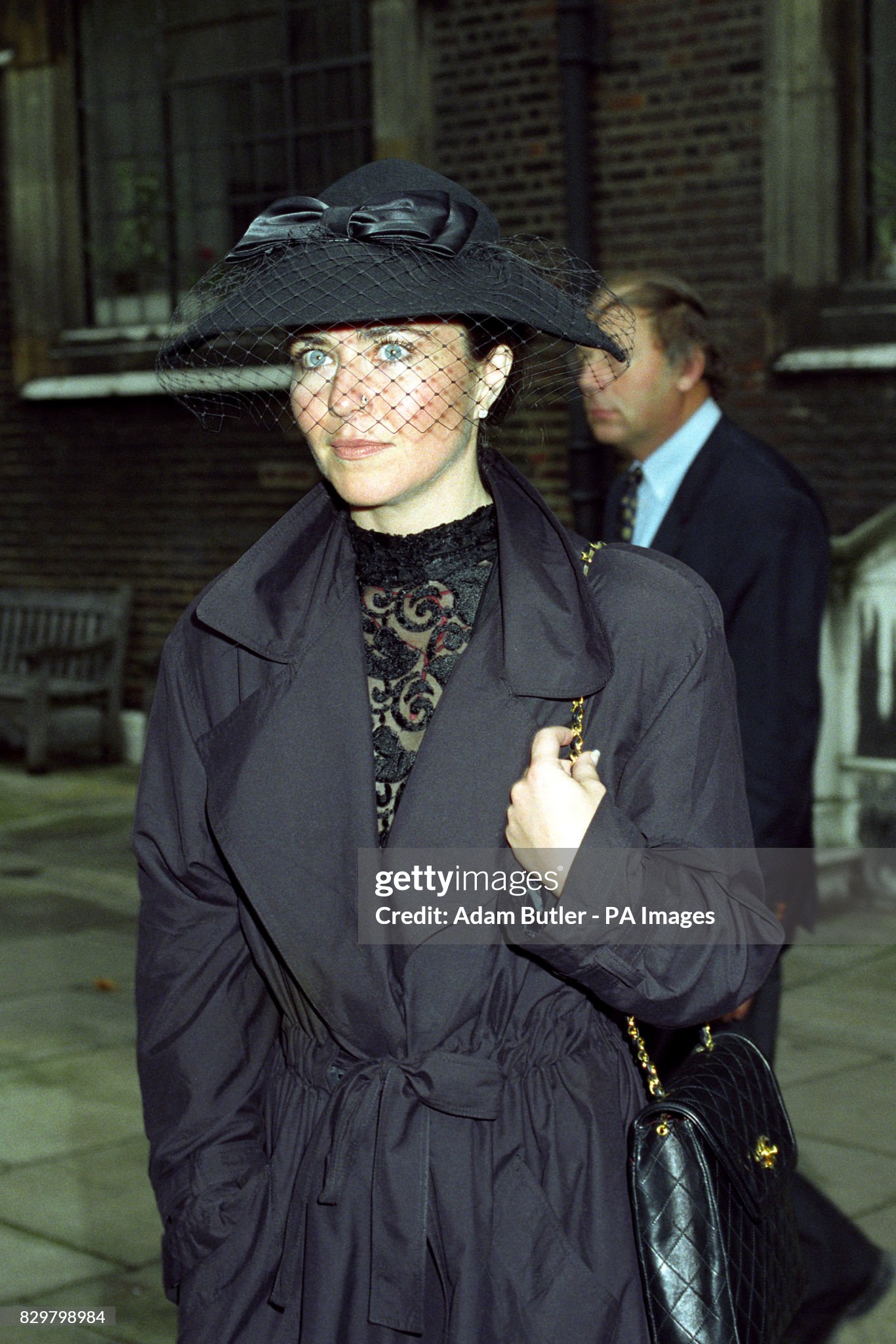
Actress photographer Koo Stark leaving St James’ Church, Piccadilly, following a memorial service for former Formula 1 World Champion James Hunt on 29 September 1993. Photo by Getty Images.
James Hunt’s McLaren M26 to be auctioned in Abu Dhabi. 02 October 2013.
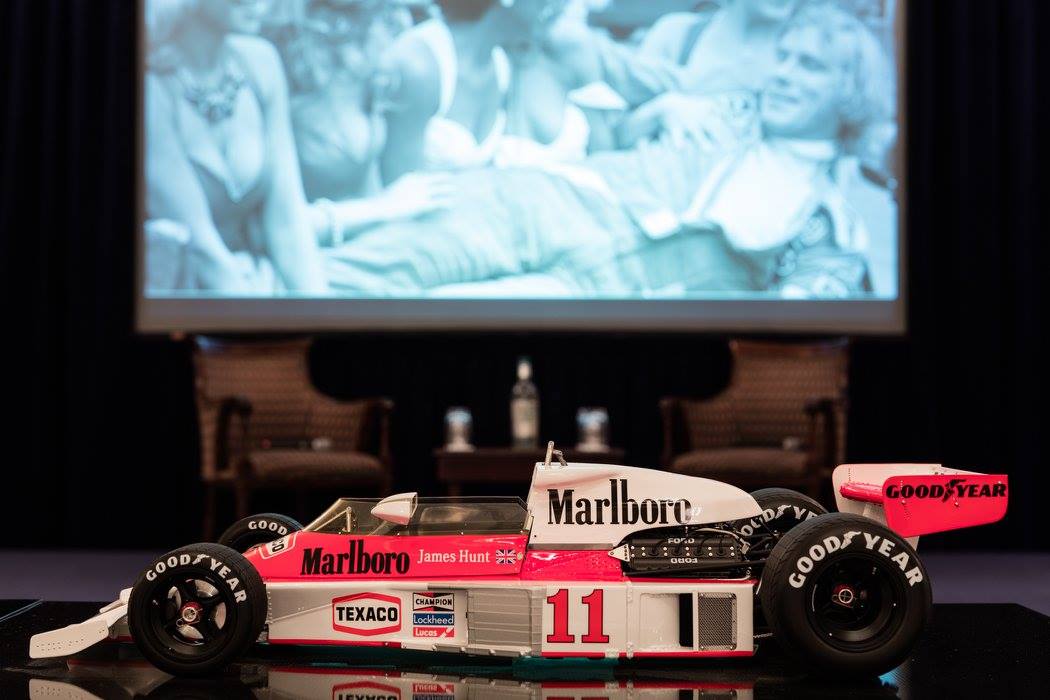
RK Motors Collector Car Auctions (RKMCCA) announced it will host a real-time, simulcast-linked four-hour auction event in the United States and the United Arab Emirates on 2 November, as part of its October 31 to November 3 collector car auction weekend at the Charlotte Convention Center.
This debut event, a four-hour speciality auction, takes place at the Emirates Palace Hotel, adjacent to the yas Marina Circuit, on the evening preceding the 2013 Abu Dhabi Grand Prix.
Starring the iconic McLaren M26 that brought James Hunt his last F1 victory, along with 40 other high-profile race and classic collector cars, bidders and buyers from both continents will participate in a sale powered by the latest technology.
Held on the eve of the 2013 Formula 1 Abu Dhabi Grand Prix, the auction is also expected to host F1 competitors, members of their race teams and Formula 1 officials.
Both Charlotte and Abu Dhabi participants will get a first-hand look at a piece of true F1 history as James Hunt’s iconic 1977 McLaren M26 (Lot #3032) is available exclusively during the four-hour sale.
Driven to Hunt’s last-ever Formula 1 win at the Japanese Grand Prix in 1977, the M26, chassis number 3, is powered by a Ford Cosworth DFV 90º V8 that pumps out an incredible 525 horsepower at 10.600 RPM. The M26 has been beautifully preserved and is race-ready and capable of a top speed of 195 mph.
Taking place October 31 to November 3, the RKMCCA auction will be headquartered at the Charlotte Convention Center and will feature hundreds of investment-grade muscle, race and rare European collector cars.
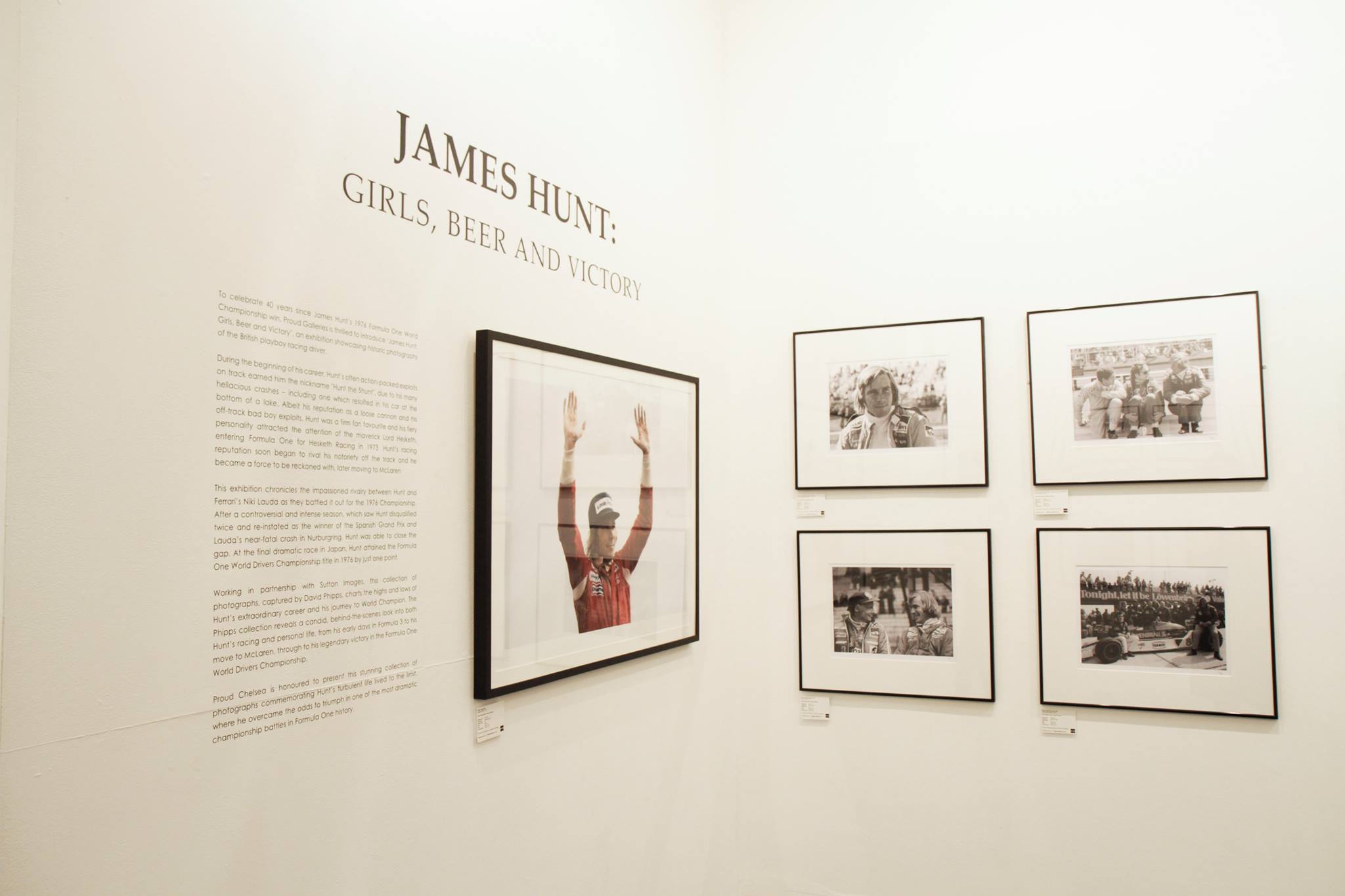
‘James Hunt: girls, beer and victory' runs from 11 February to 03 April 2016 at the Proud Gallery in Chelsea and features some of the most iconic photos of Hunt on and off the track.
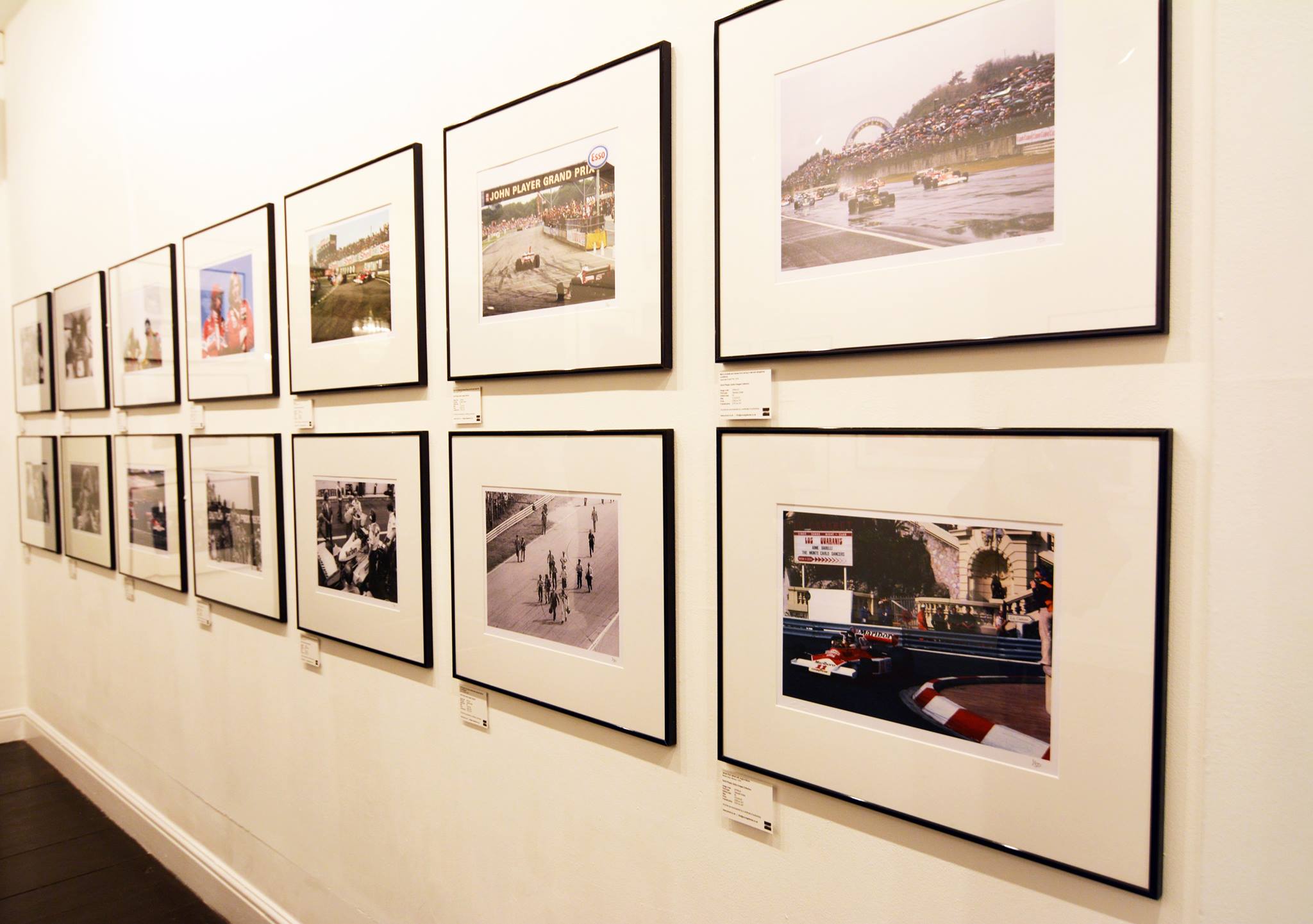
‘James Hunt: girls, beer and victory' runs from 11 February to 03 April 2016 at the Proud Gallery in Chelsea and features some of the most iconic photos of Hunt on and off the track.
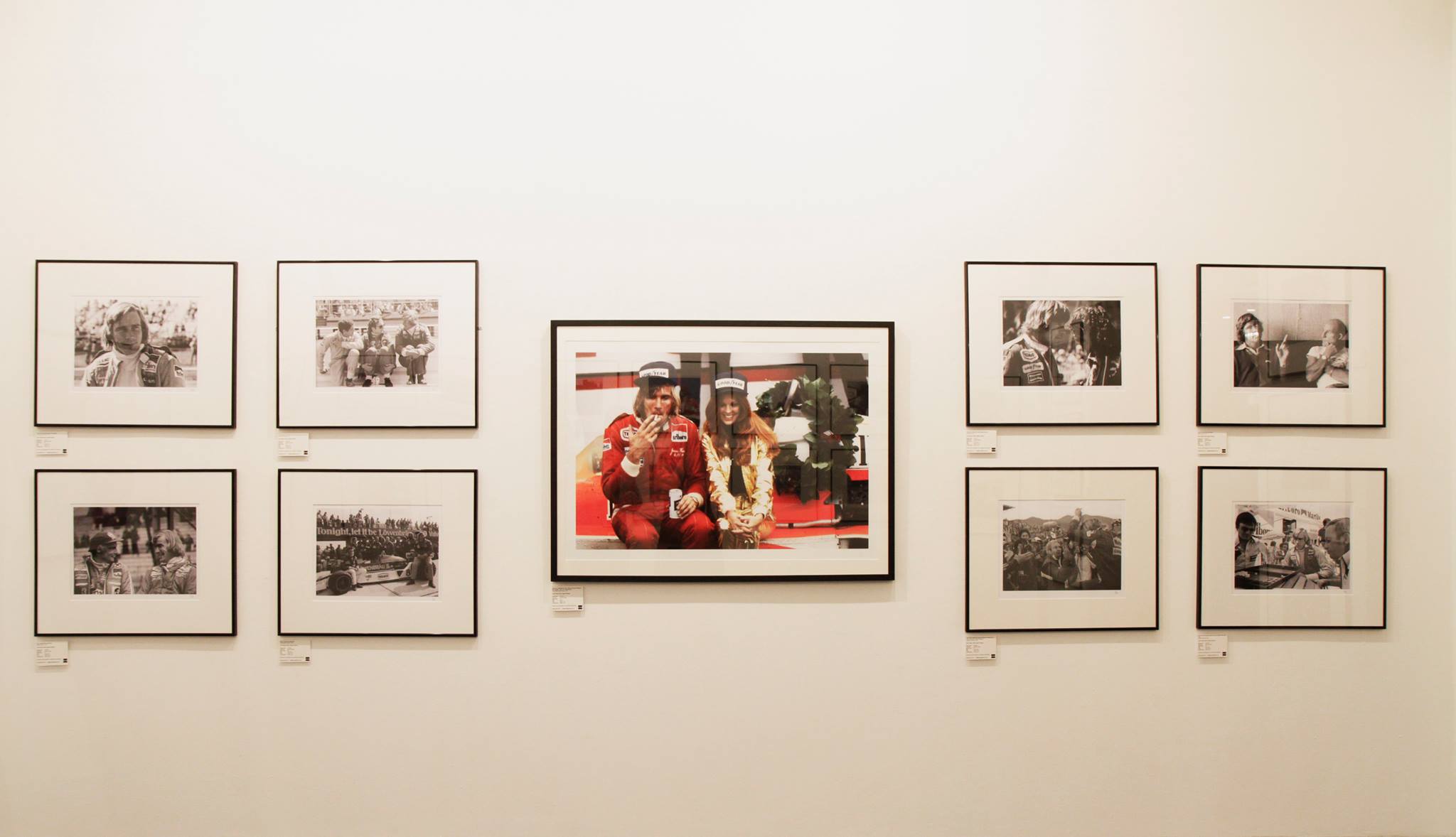
‘James Hunt: girls, beer and victory' runs from 11 February to 03 April 2016 at the Proud Gallery in Chelsea and features some of the most iconic photos of Hunt on and off the track.
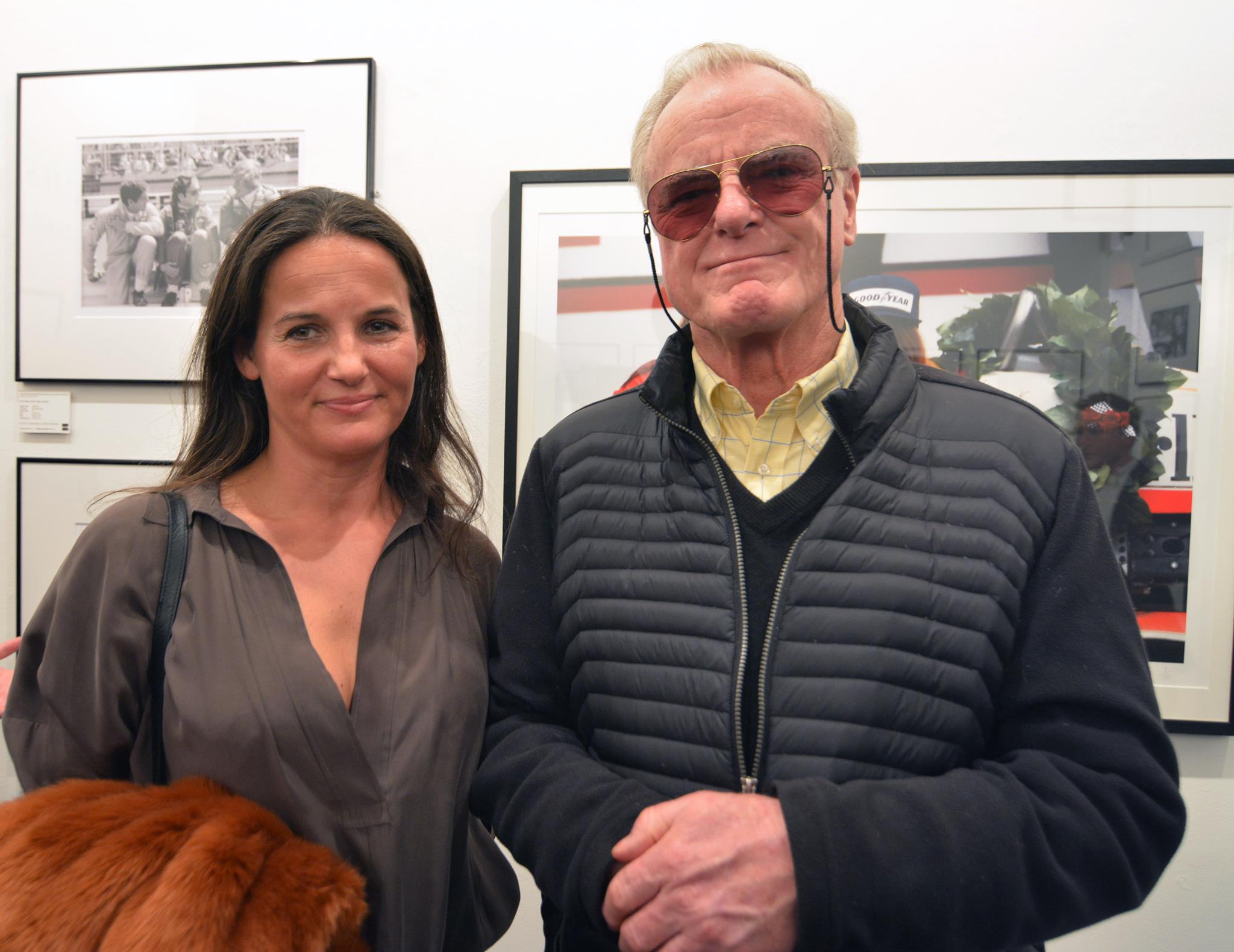
Alastair Caldwell, the McLaren F1 racing team manager from 1974 to 1978, participating in the exhibition ‘James Hunt: girls, beer and victory' in April 2016.
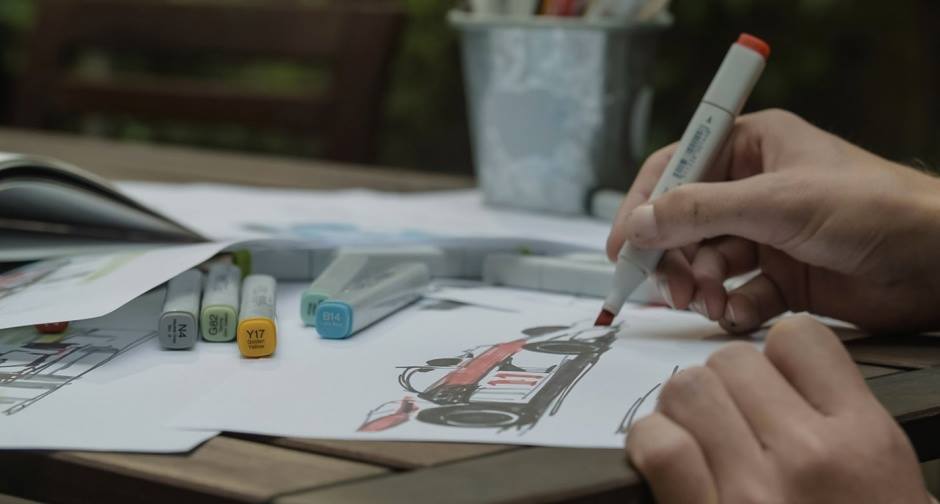
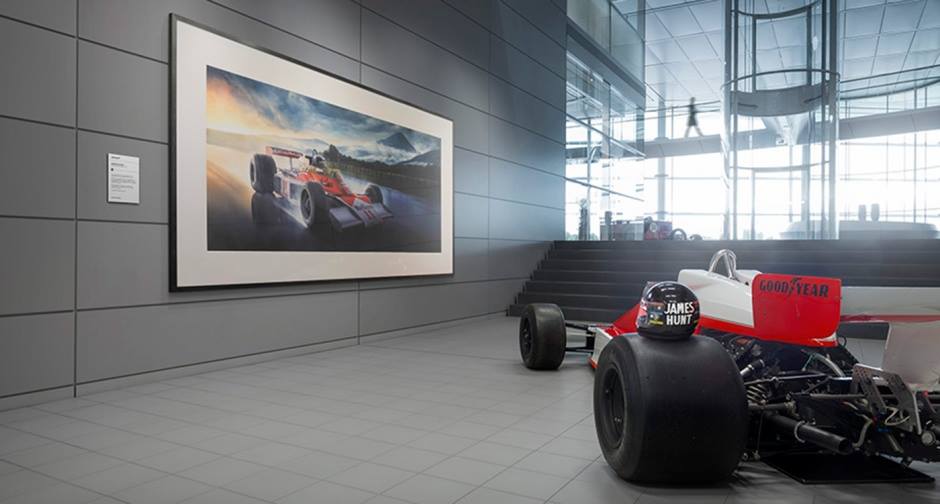
James Hunt’s McLaren at McLaren Technology Centre in Woking, Surrey, England.
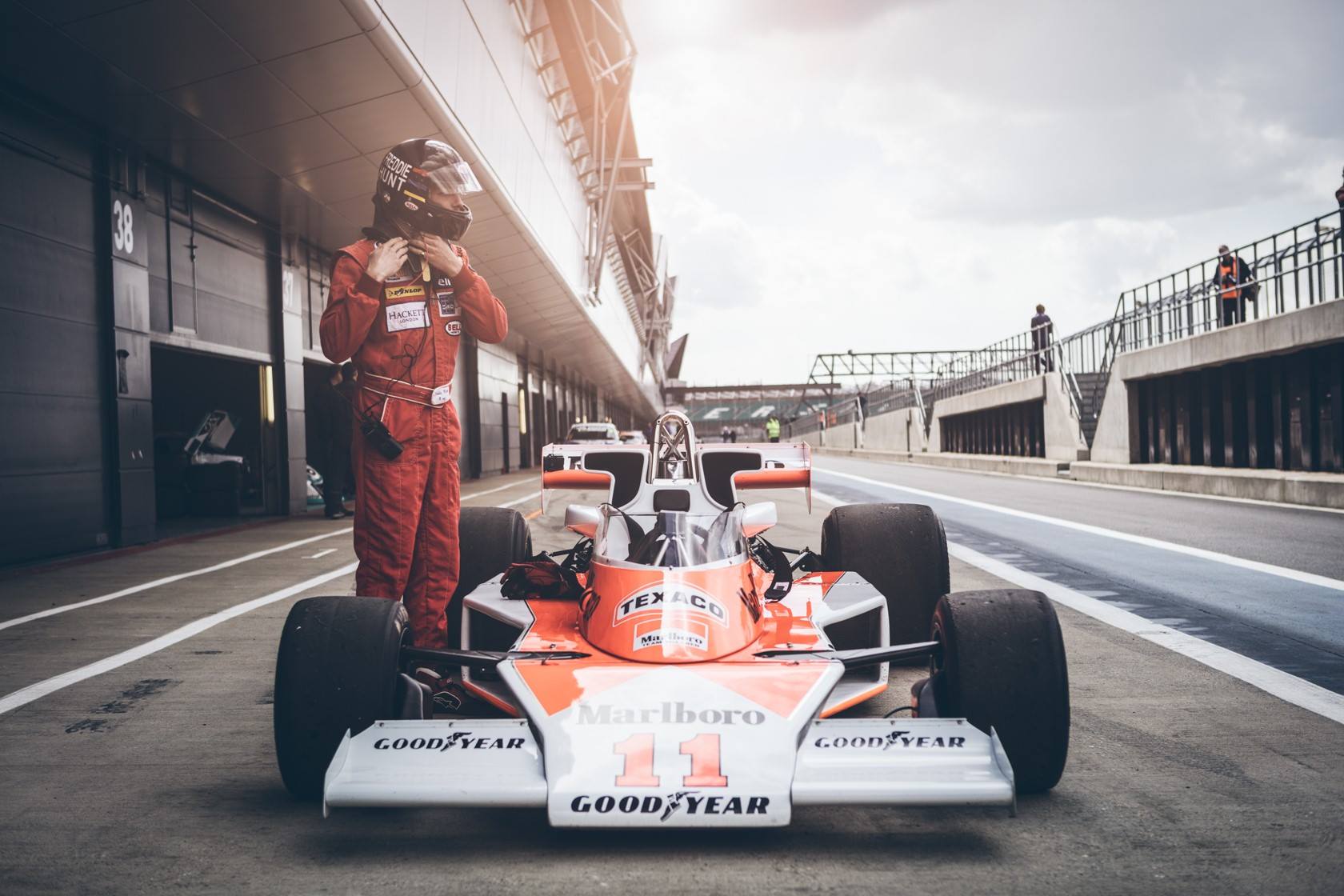
The McLaren M23 driven by Freddie Hunt at Silverstone in April 2016 and with McLaren Team Manager Alastair Caldwell overlooking.
Videos
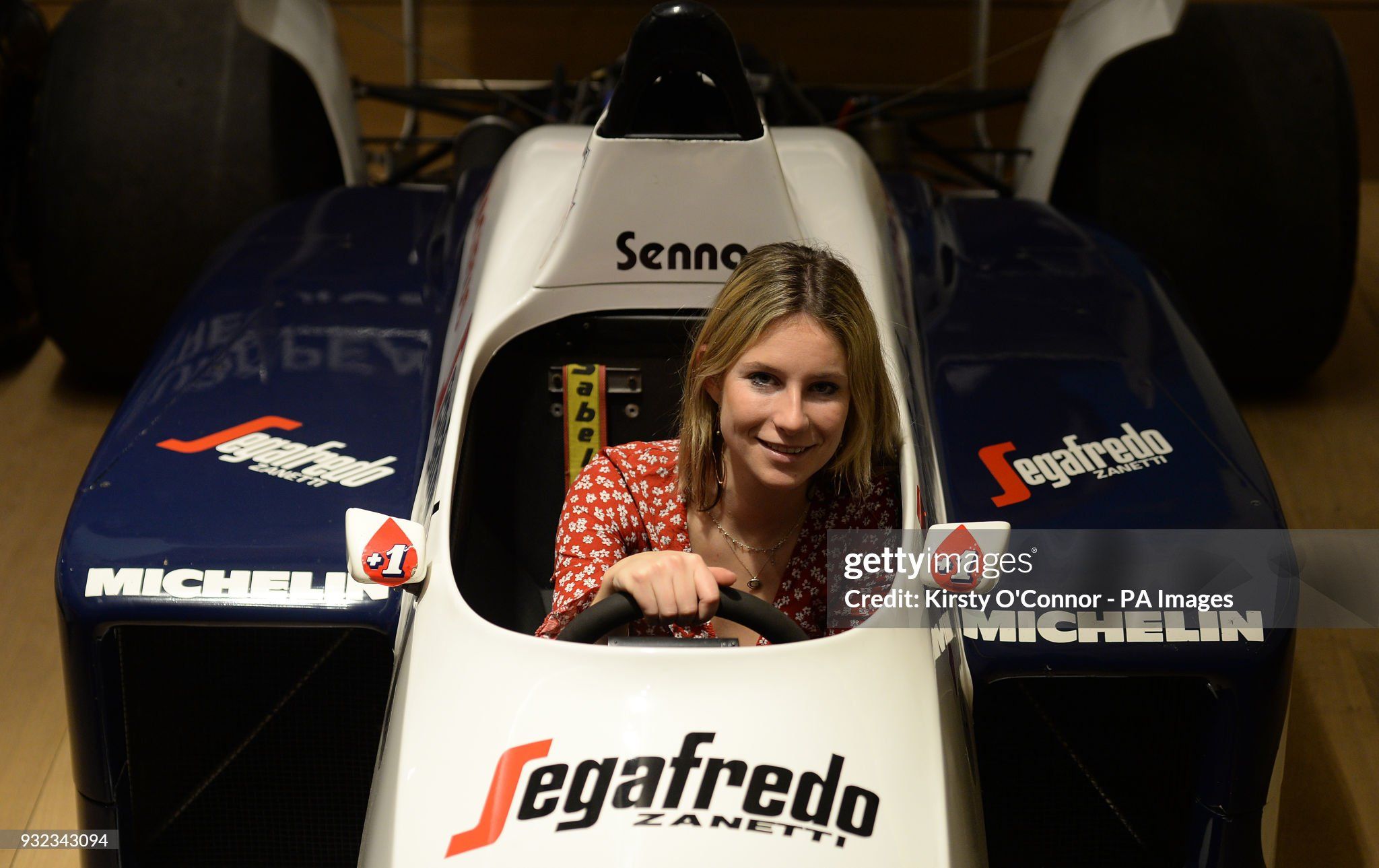

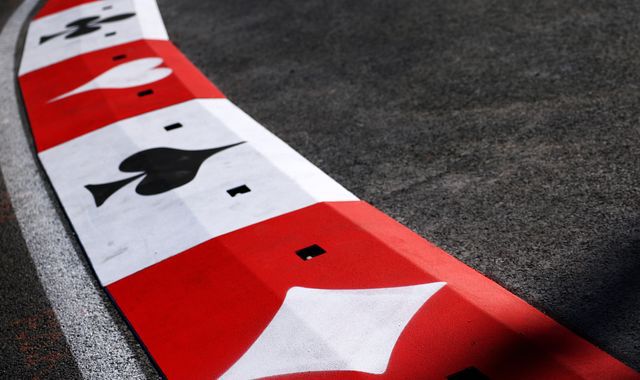
Comments
Authorize to comment